Last Updated on: 26th January 2023, 08:02 am
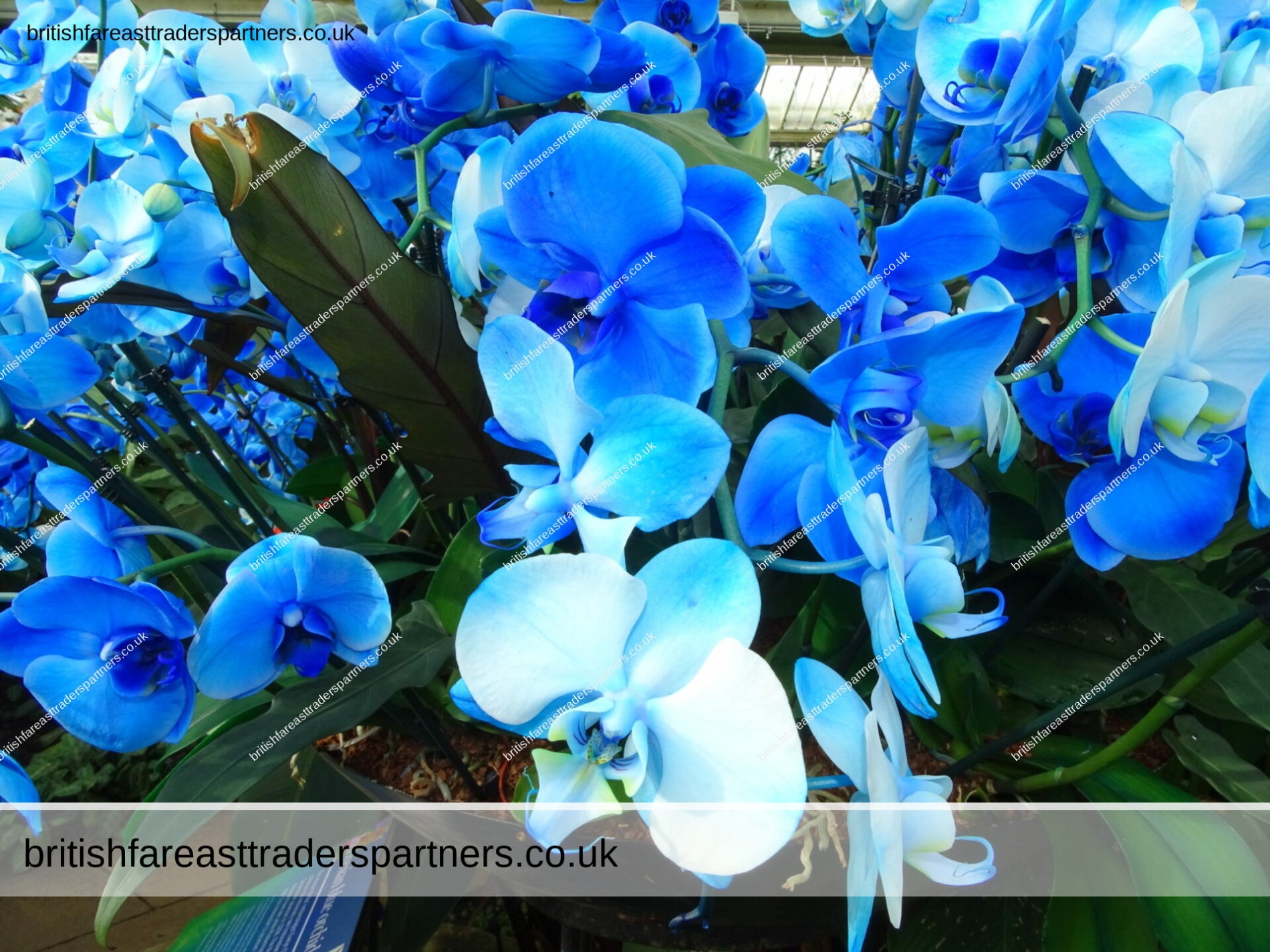
LONDON BLOG | KEW GARDENS LONDON | TROPICAL ZONE: FESTIVAL OF THE VIBRANT ORCHIDS OF INDONESIA
KEW ROYAL BOTANIC GARDENS
Welcome to the Royal Botanic Gardens, Kew.
Get swept up in the wonder of nature
as you explore the largest and most diverse collection of living plants in the world.
Let our stunning landscapes, iconic buildings, and glasshouses,
and inspirational art galleries take you on a journey
from our royal past to our global future.
Source: Royal Botanic Gardens Kew Winter brochure
Website: kew.org
DISCOVER INDONESIA’S NATURAL BEAUTY
ORCHID FESTIVAL 2020
8 February- 8 March
Join us for the 25th orchid festival which, this year,
celebrates the remarkable biodiversity and beauty of Indonesia.
Admire the breathtaking displays of orchids
that represent some of Indonesia’s most remarkable environments and animals.
Included with entry to the Gardens.
Book your timeslot when you buy your tickets online.
A limited number of timeslots will be available
from the Princess of Wales Conservatory during the festival.
Source: Royal Botanic Gardens Kew Winter brochure
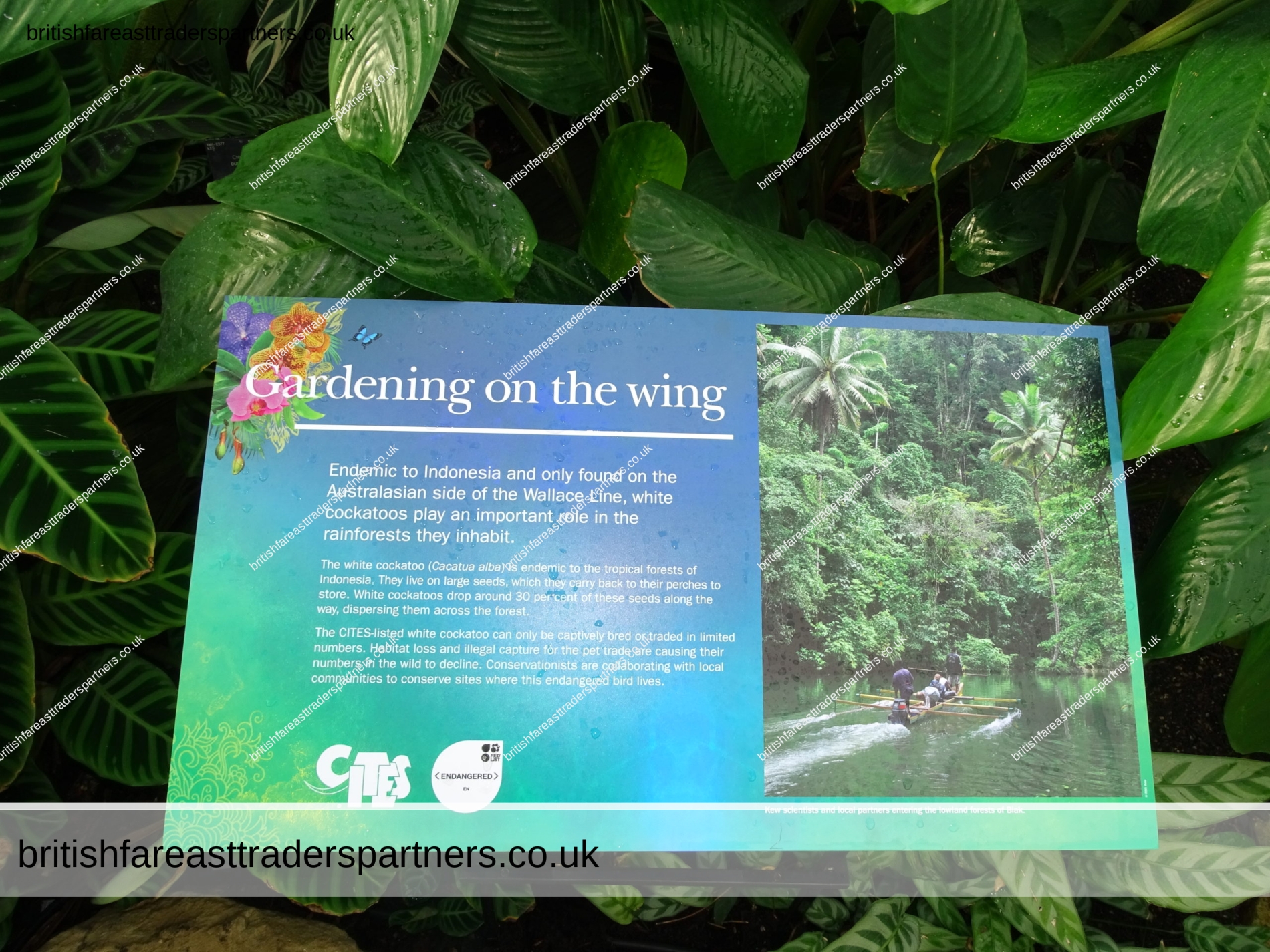
Gardening on the wing
Endemic to Indonesia and only found
on the Australasian side of the Wallace Line,
white cockatoos play an important role
in the rainforests they inhabit.
The white cockatoo (Cacatua alba)
endemic to the tropical forests of Indonesia.
They live on large seeds,
which they carry back to their perches to store.
White cockatoos drop around 30 percent of these seeds along the way,
dispersing them across the forest.
The CITES-listed white cockatoo
can only be captively bred or traded in limited numbers.
Habitat loss and illegal capture for the pet trade
are causing their numbers in the wild to decline.
Conservationists are collaborating with local communities
to conserve sites where this endangered bird lives.
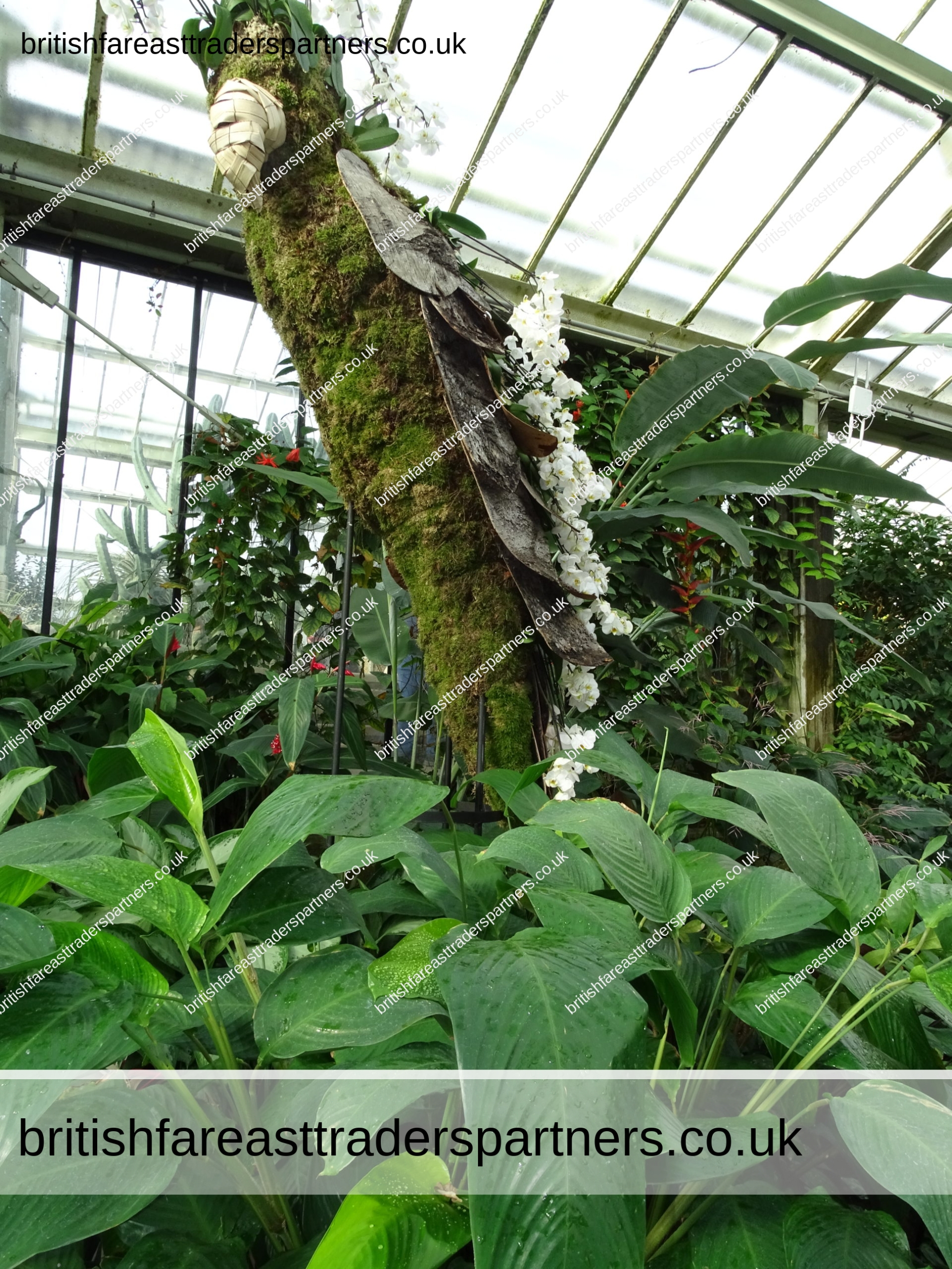
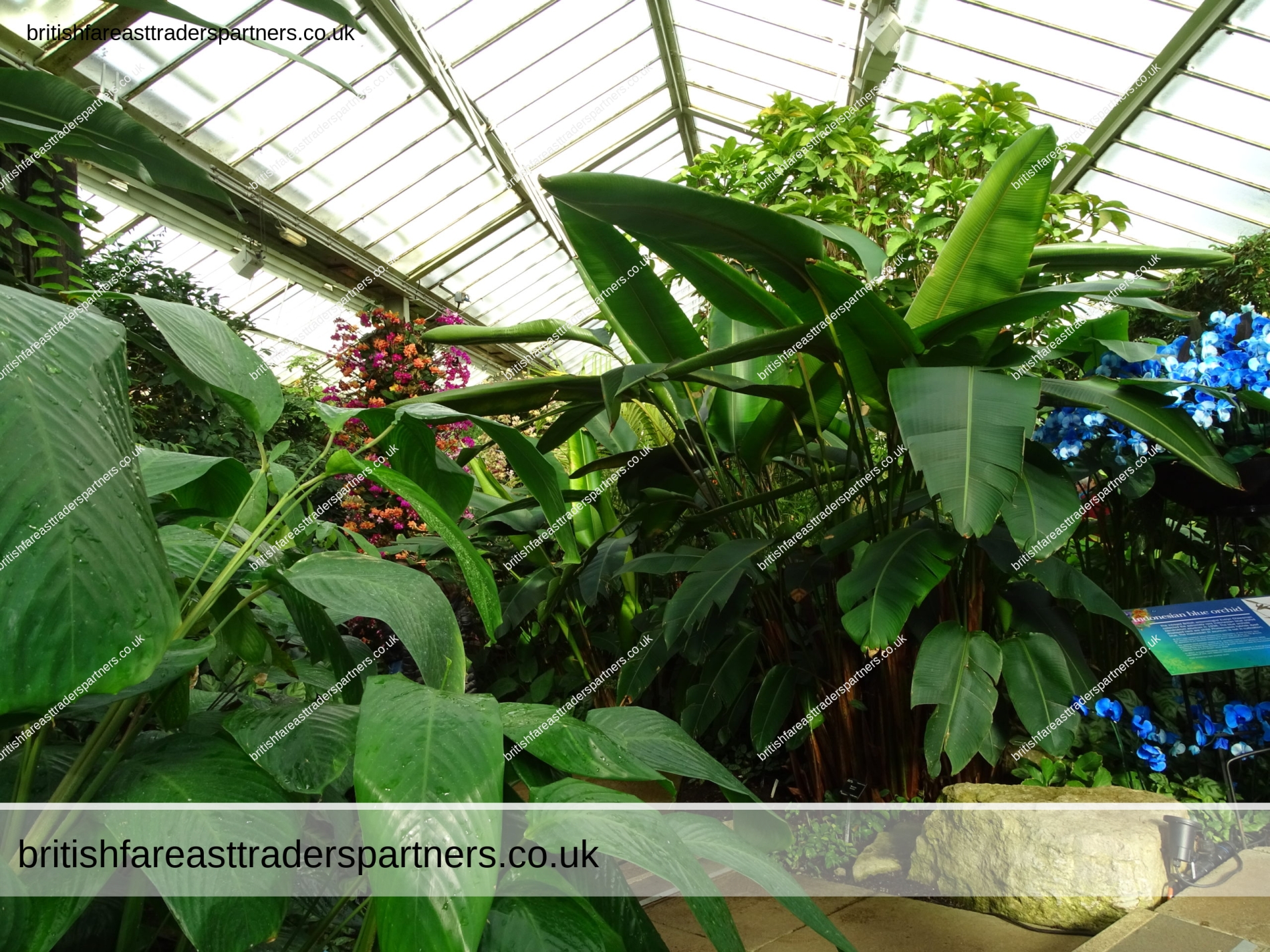

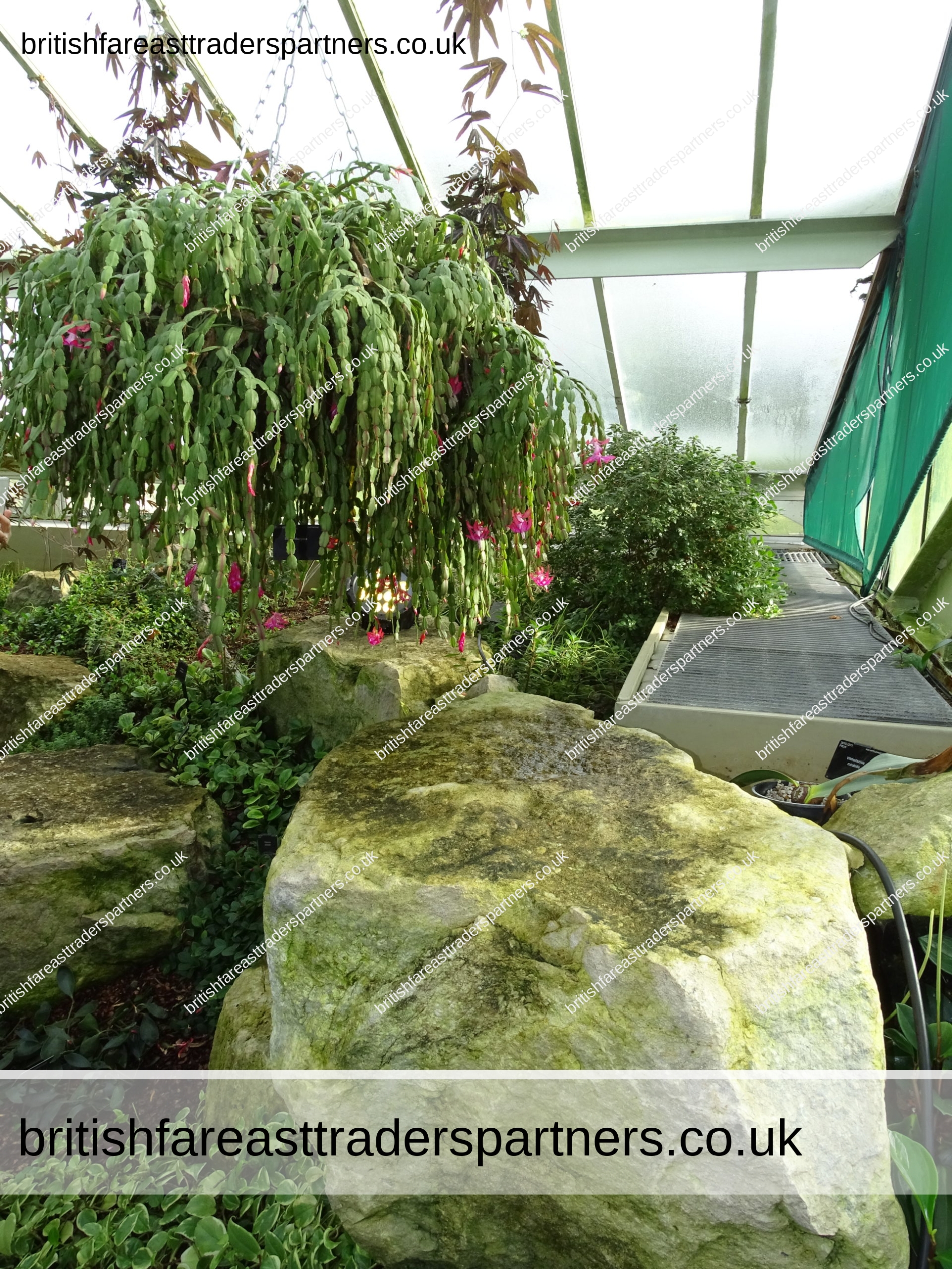
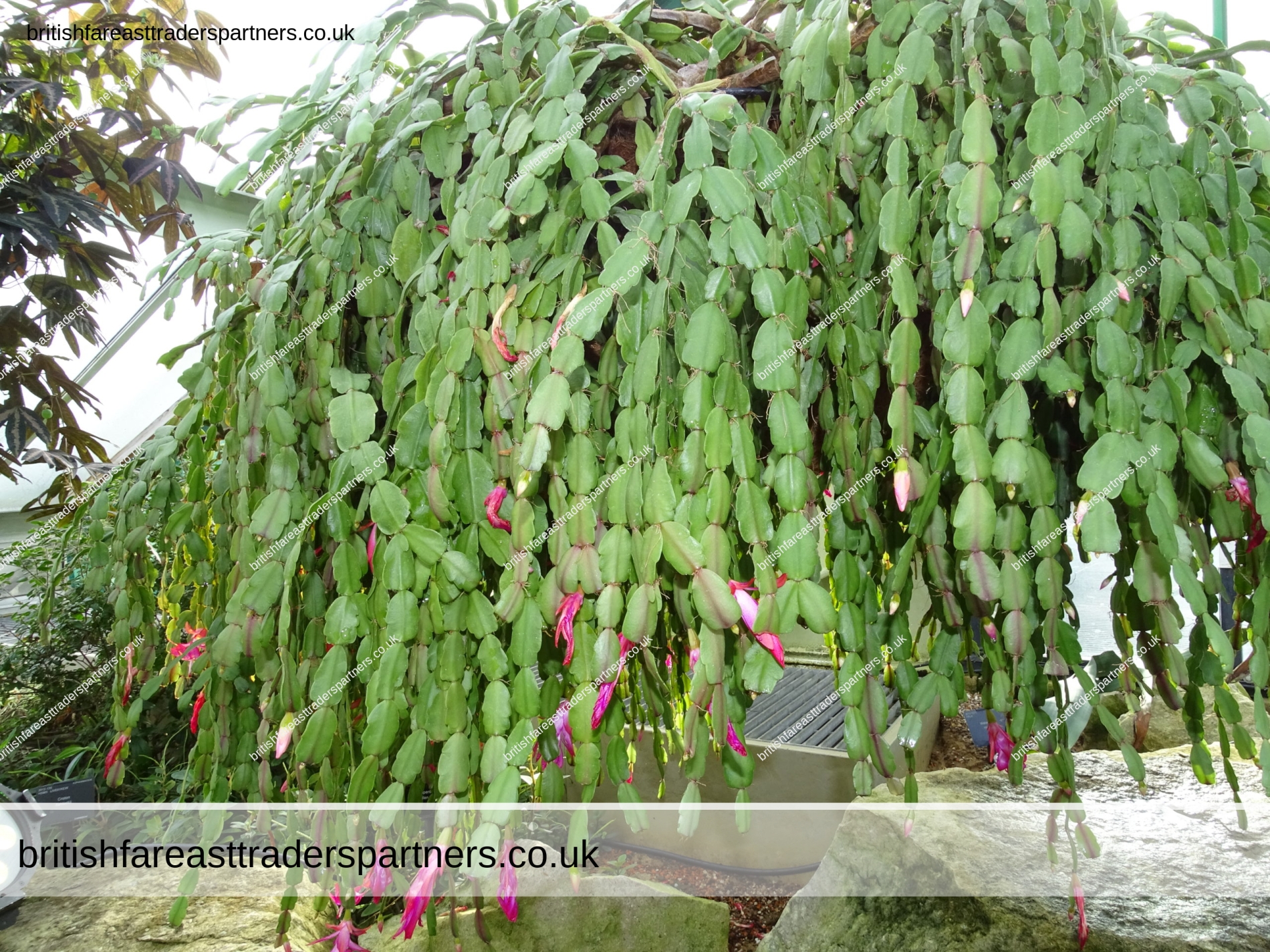

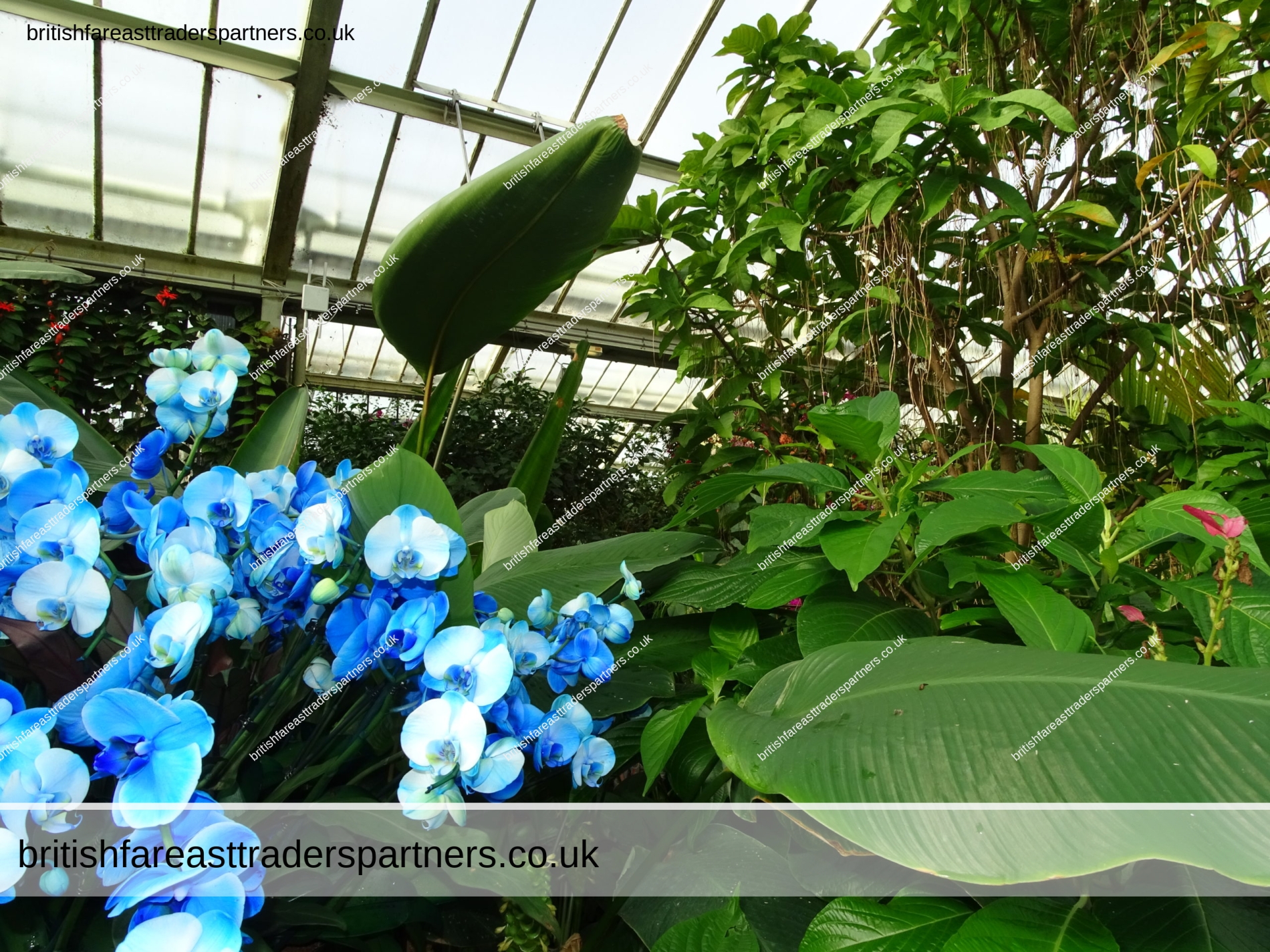
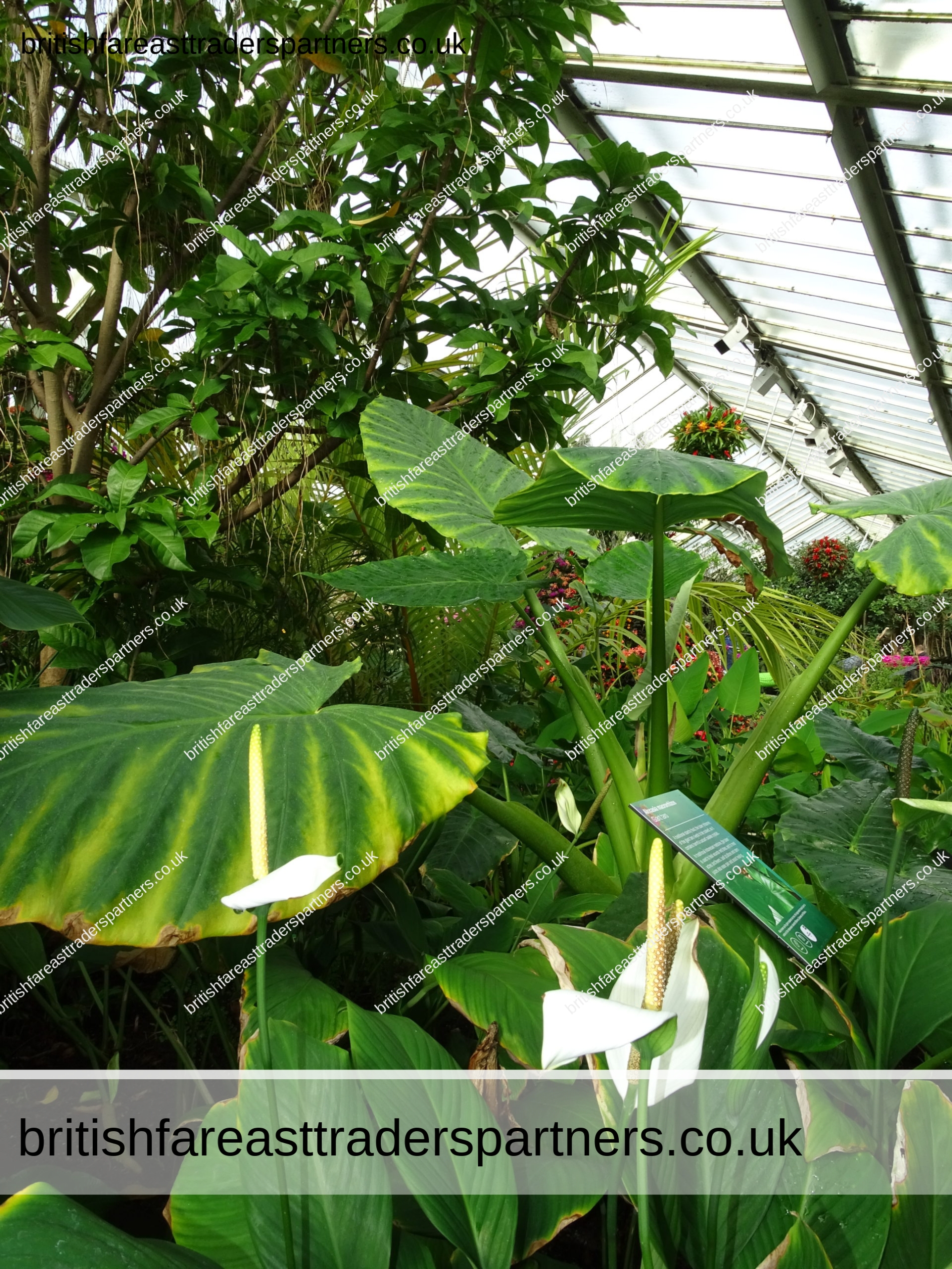
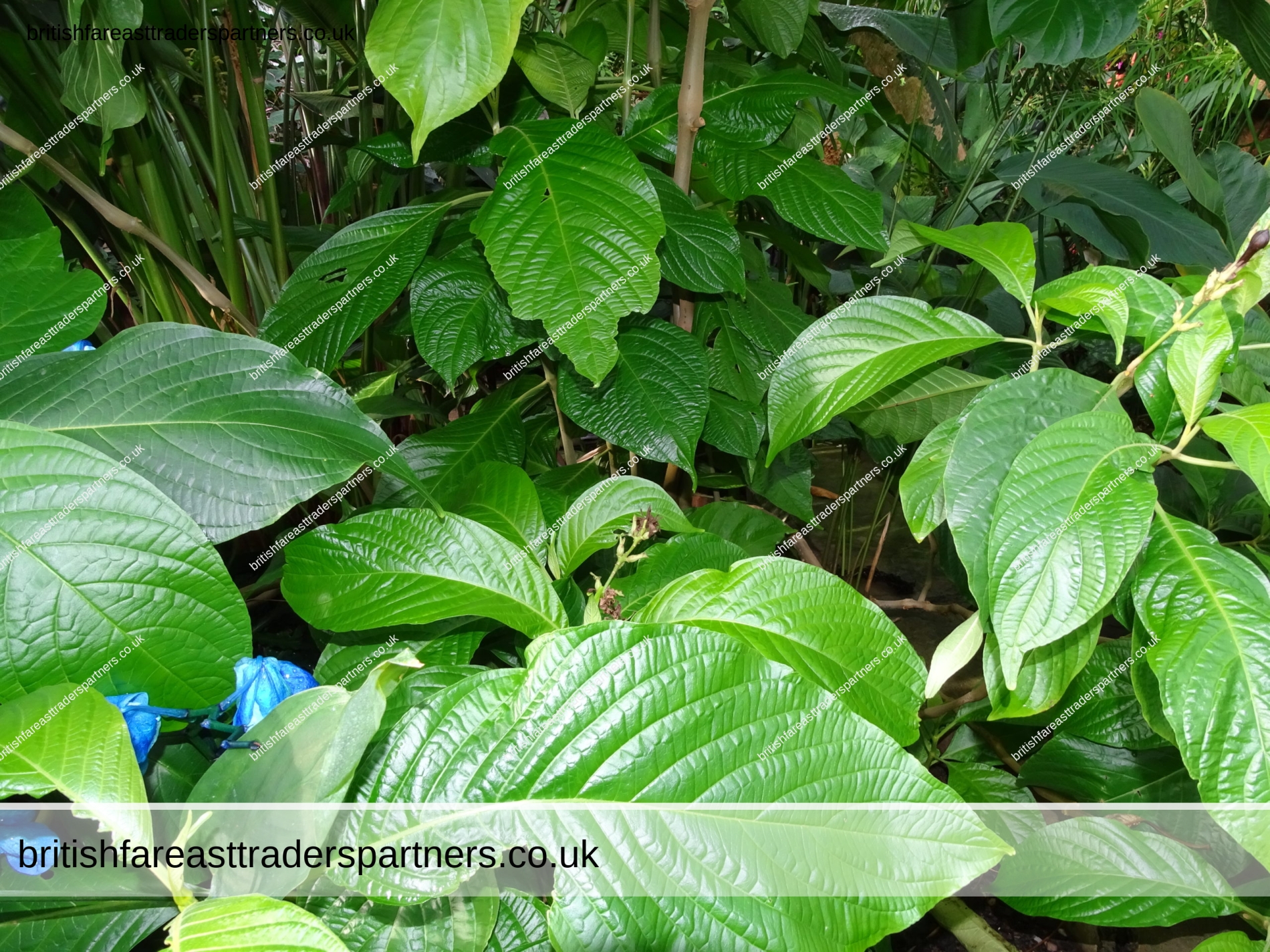
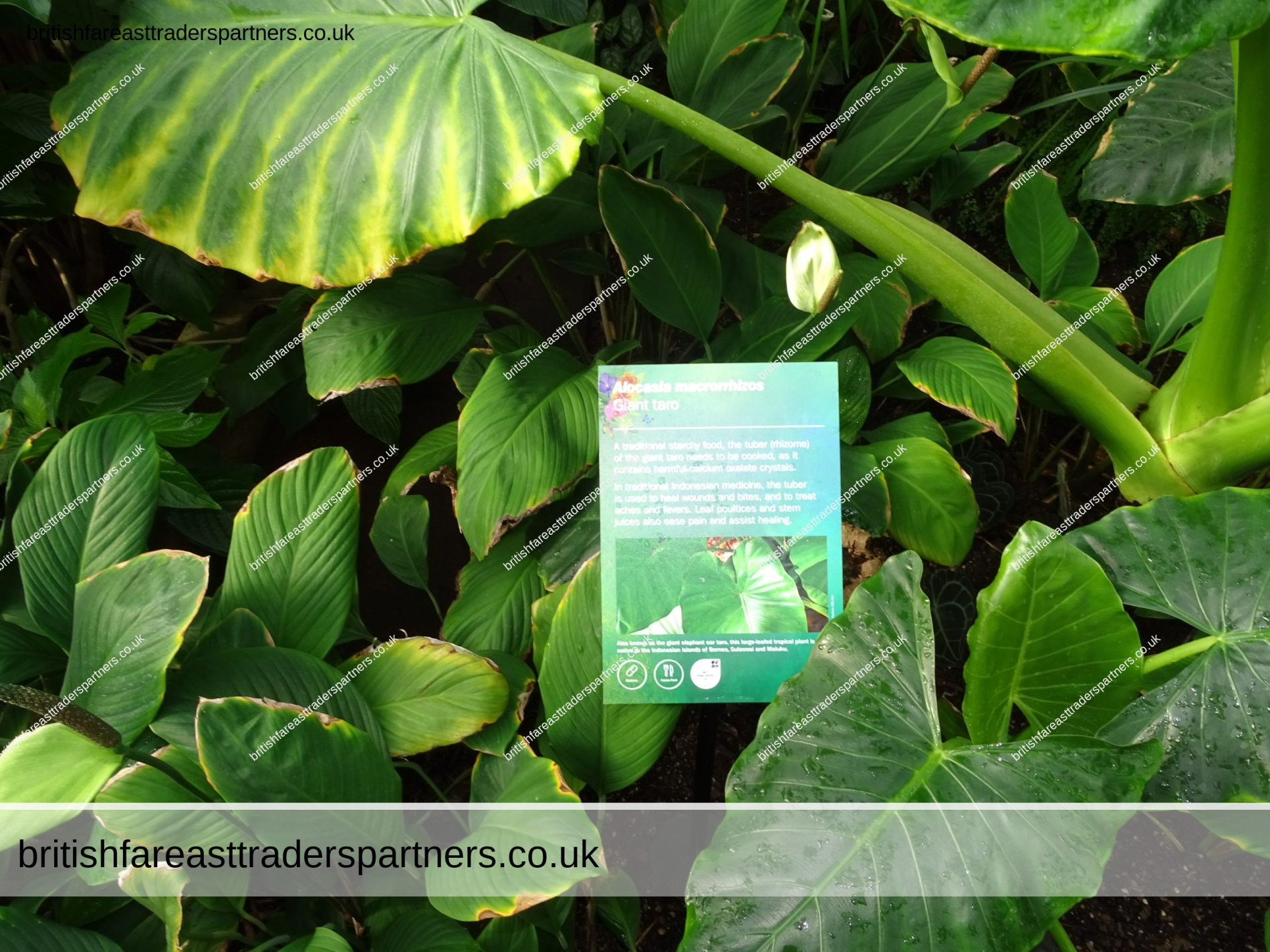
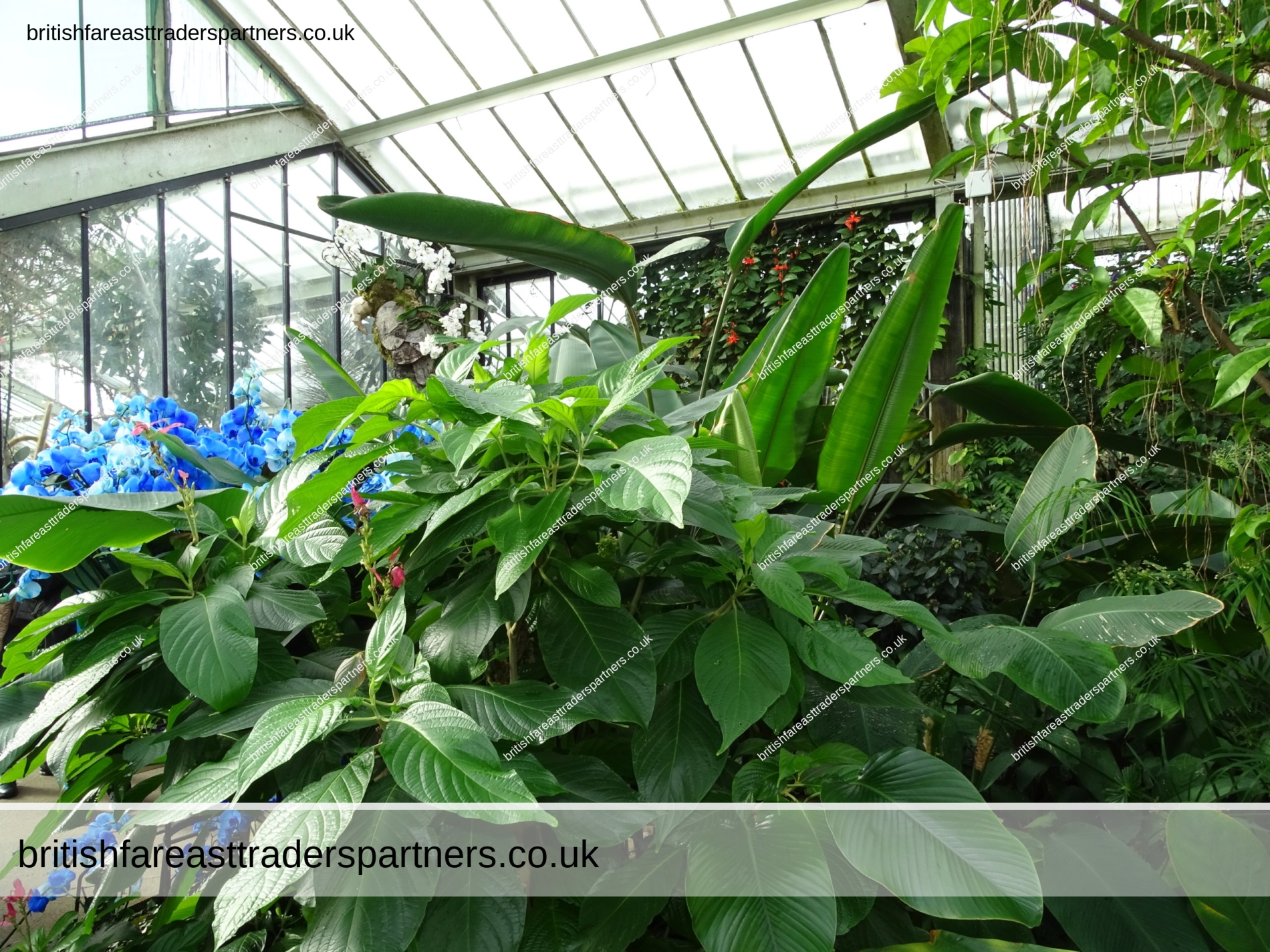
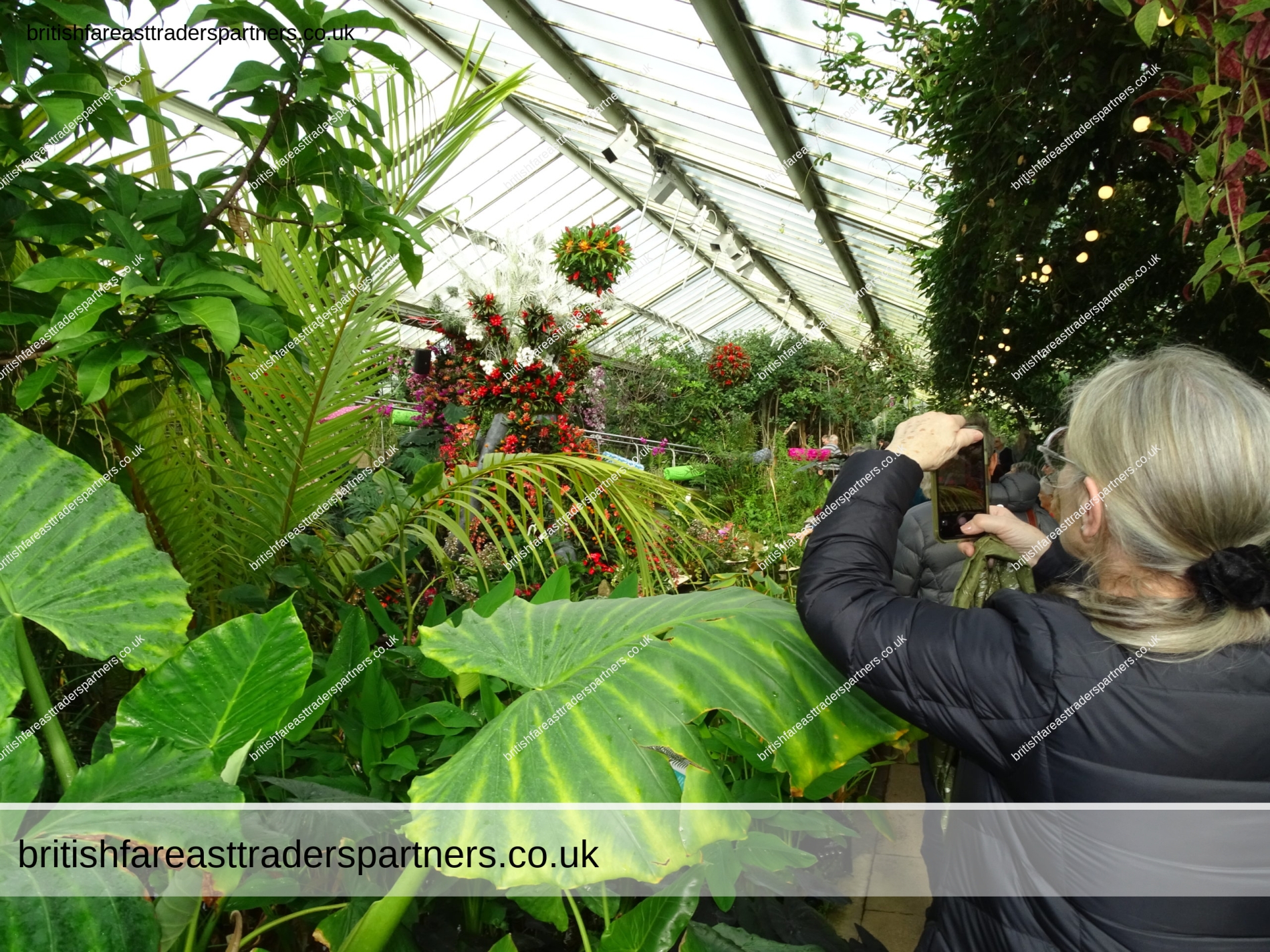

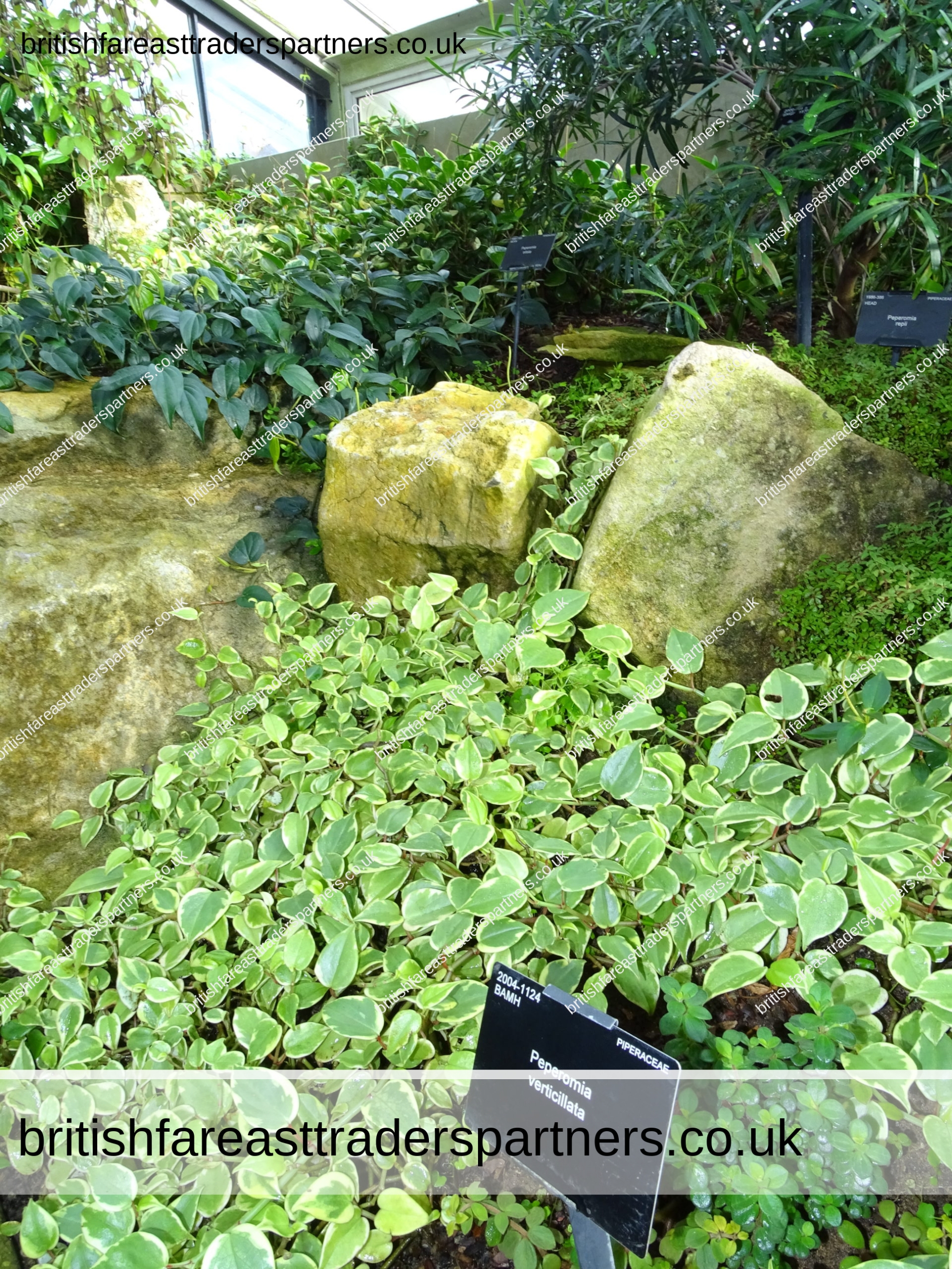
PEPEROMIA VERTICILLATA
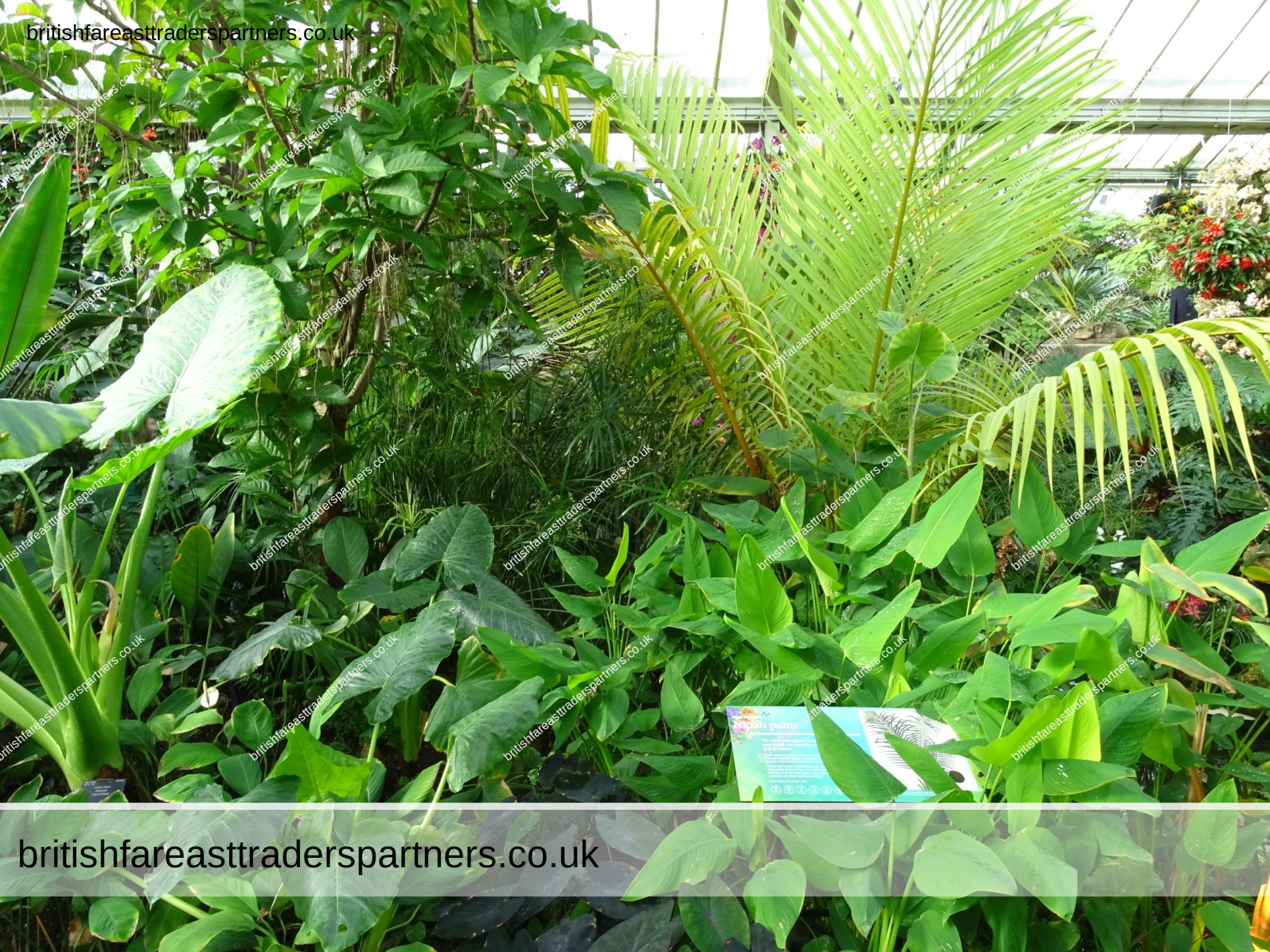
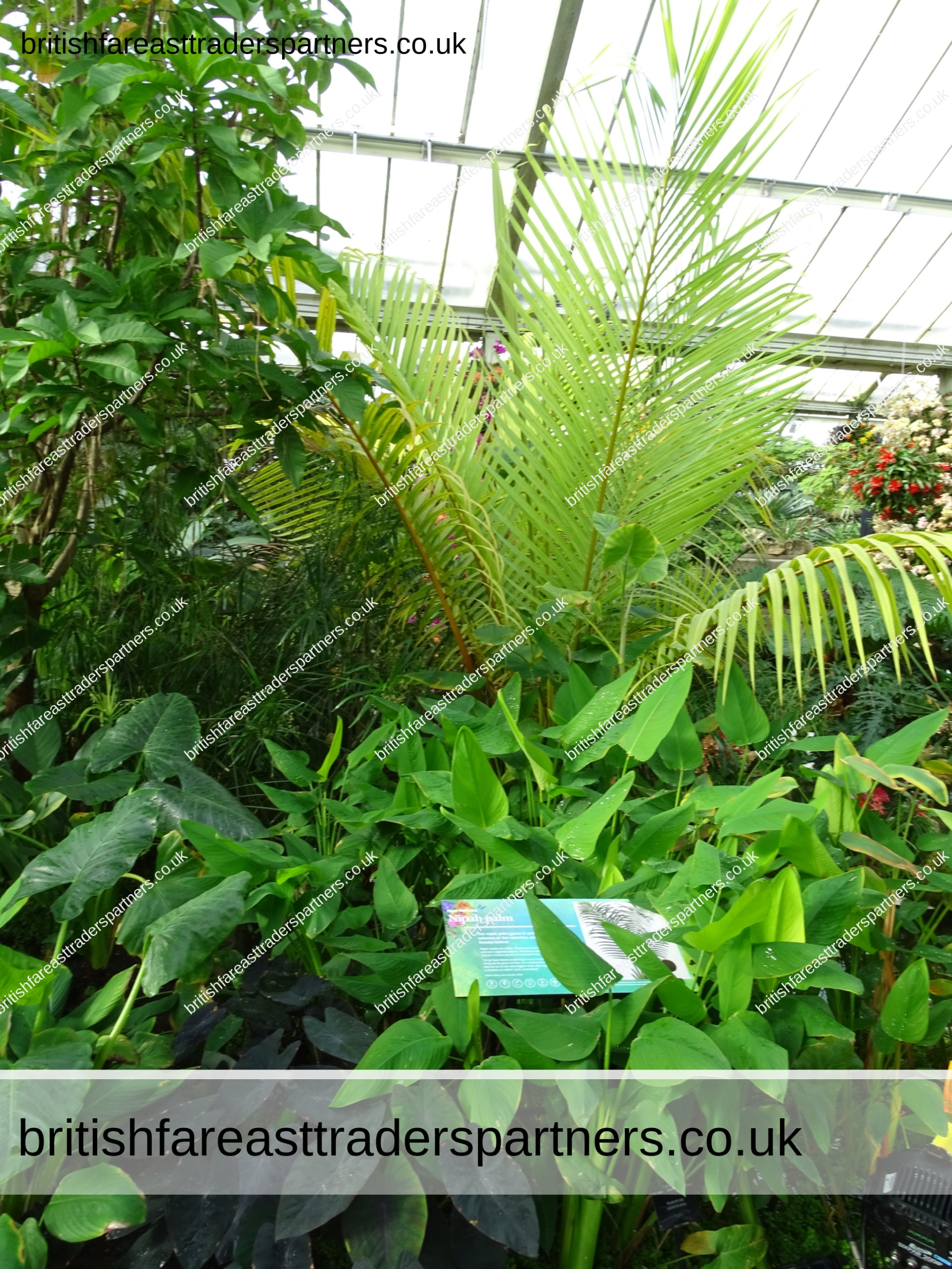

The nipah palm grows in swamps in enormous colonies at the waterline,
protecting the forests behind.

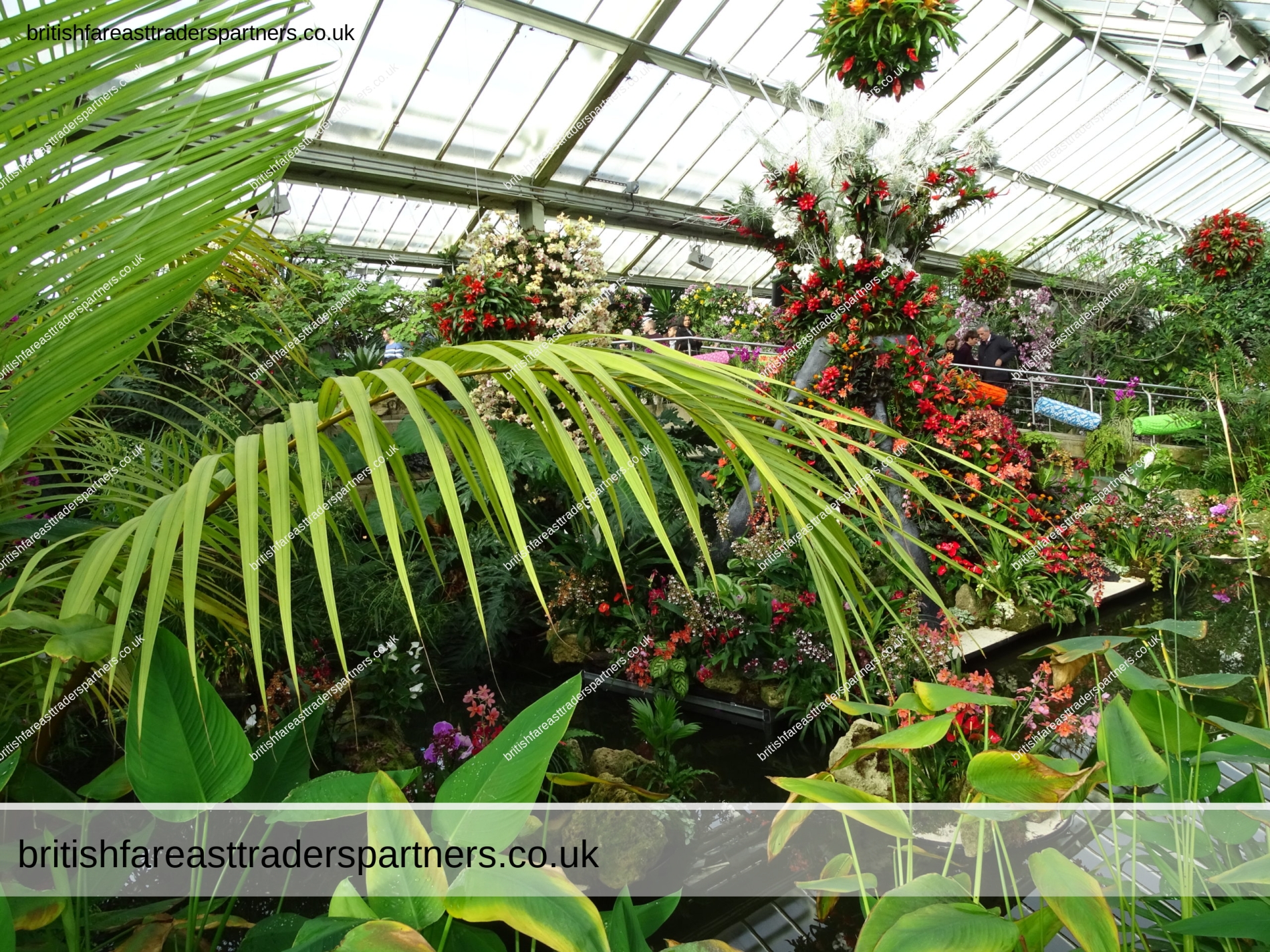
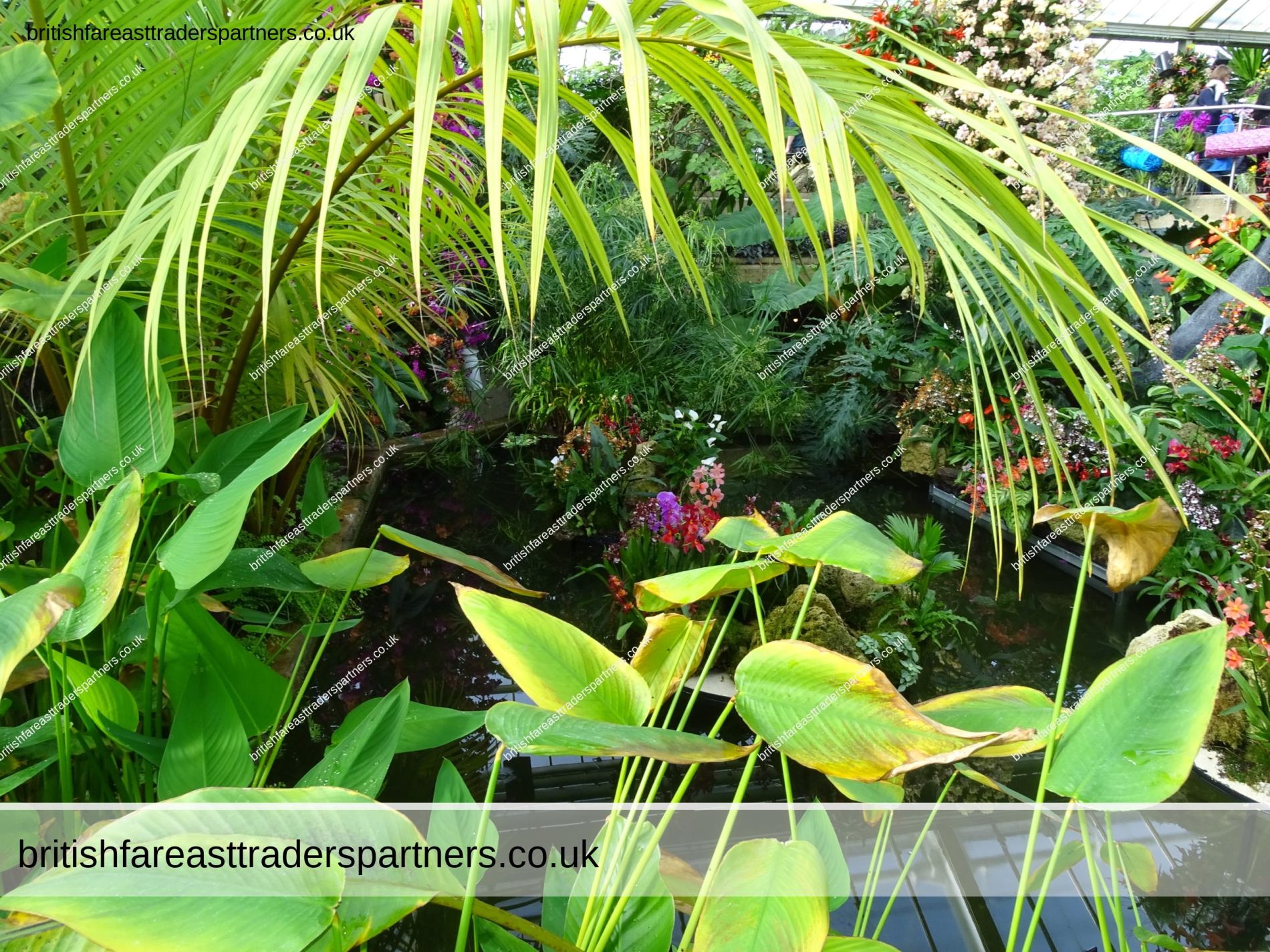
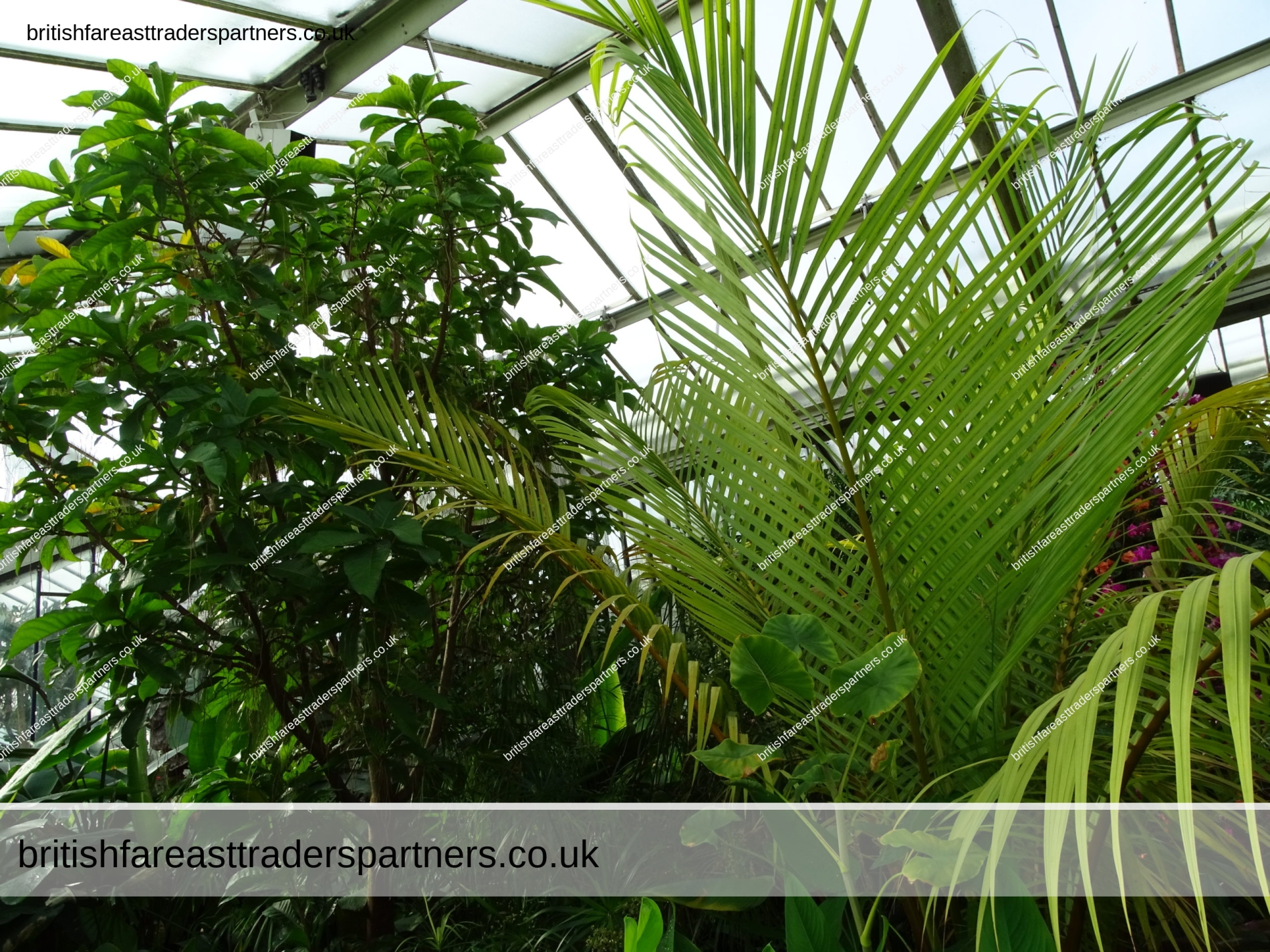
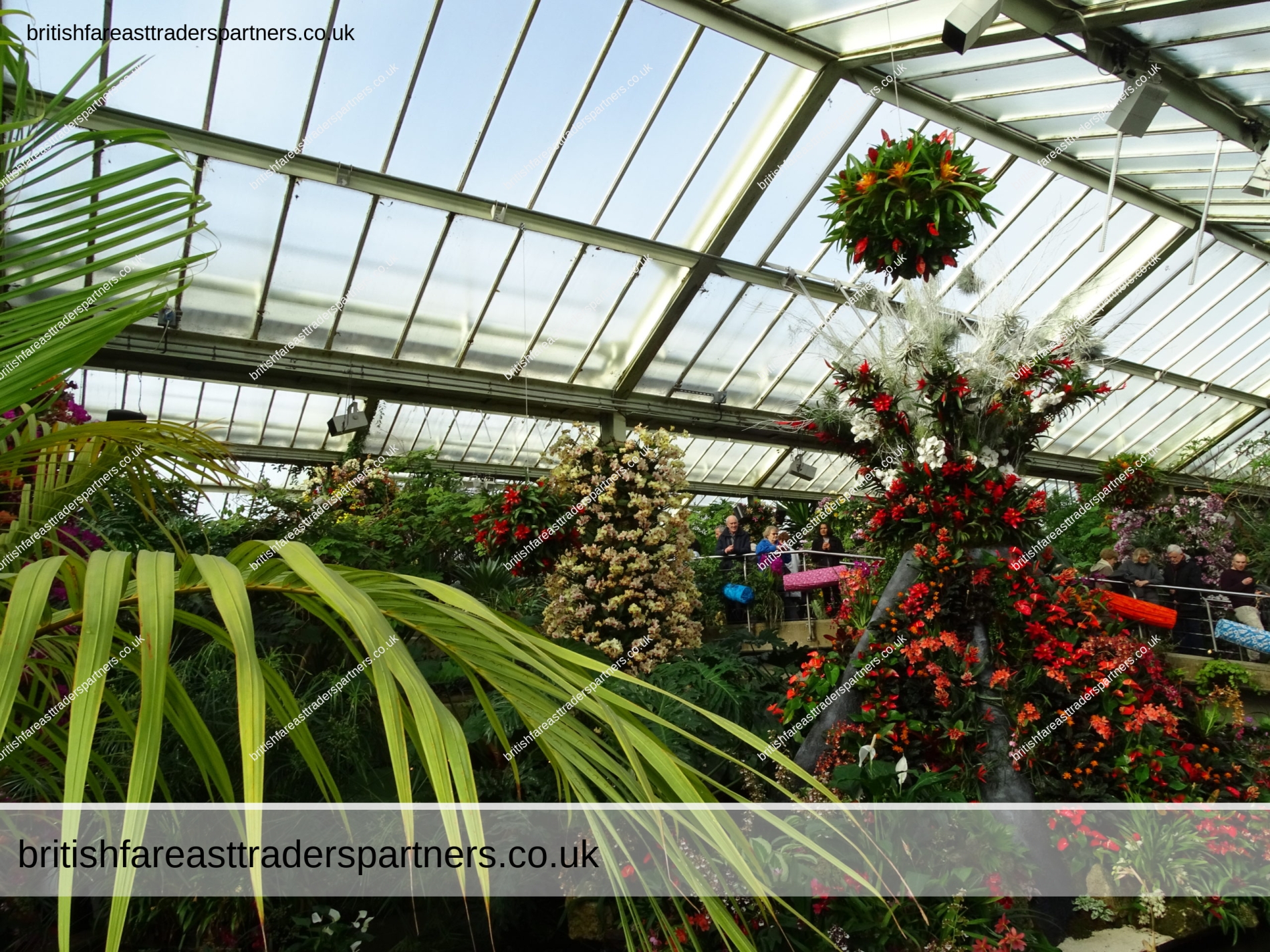
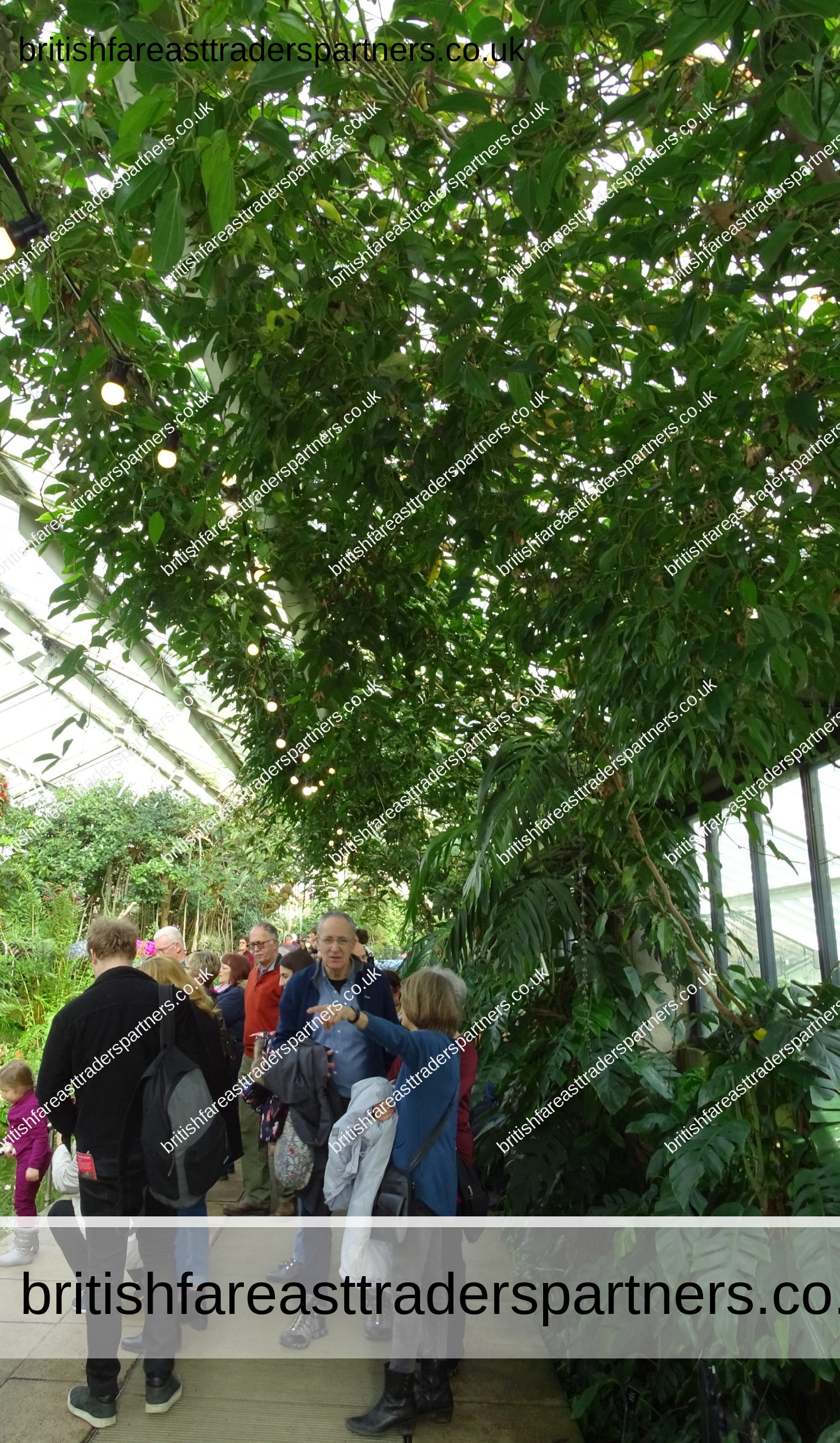
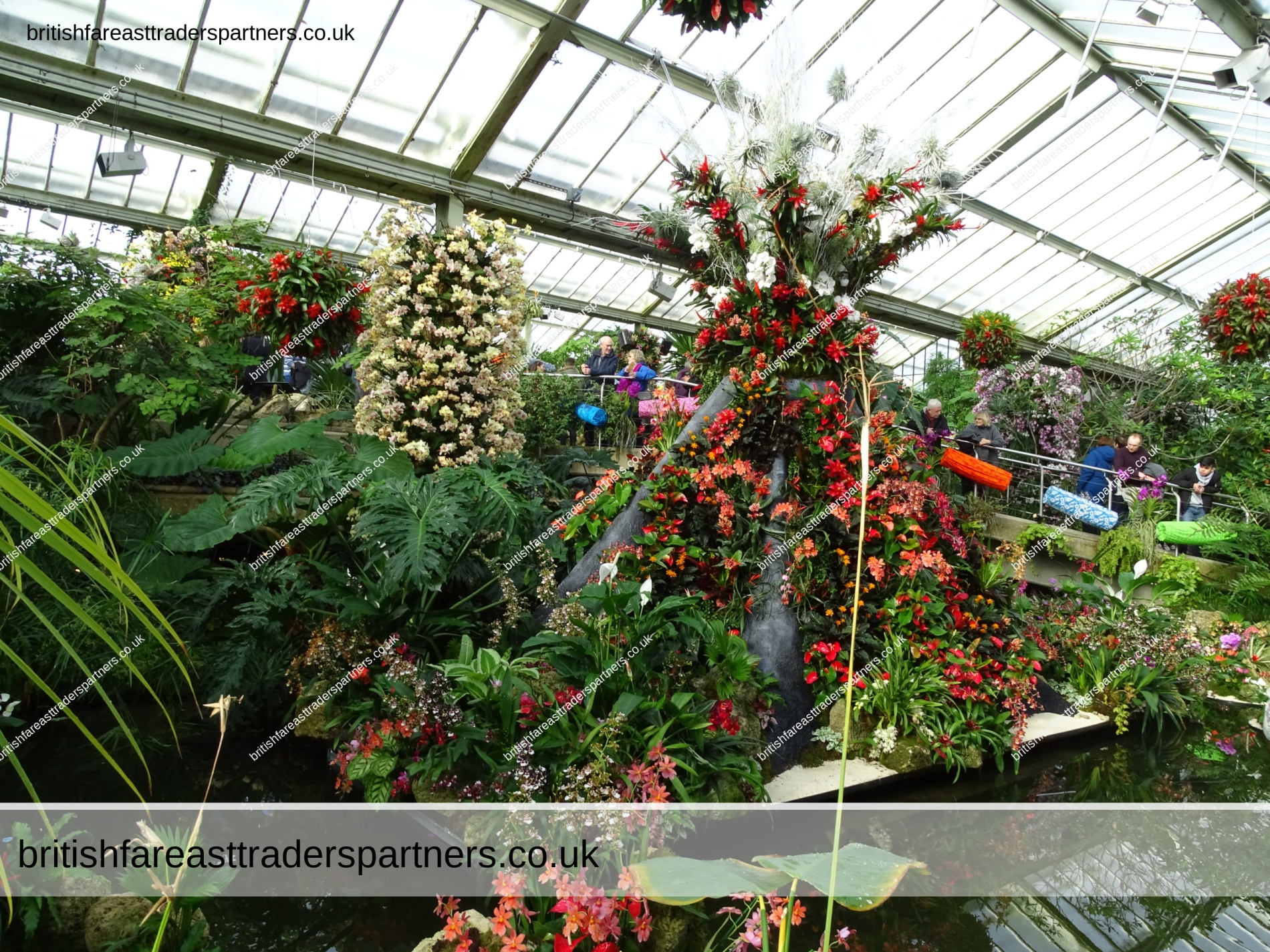
CARNIVOROUS PLANTS
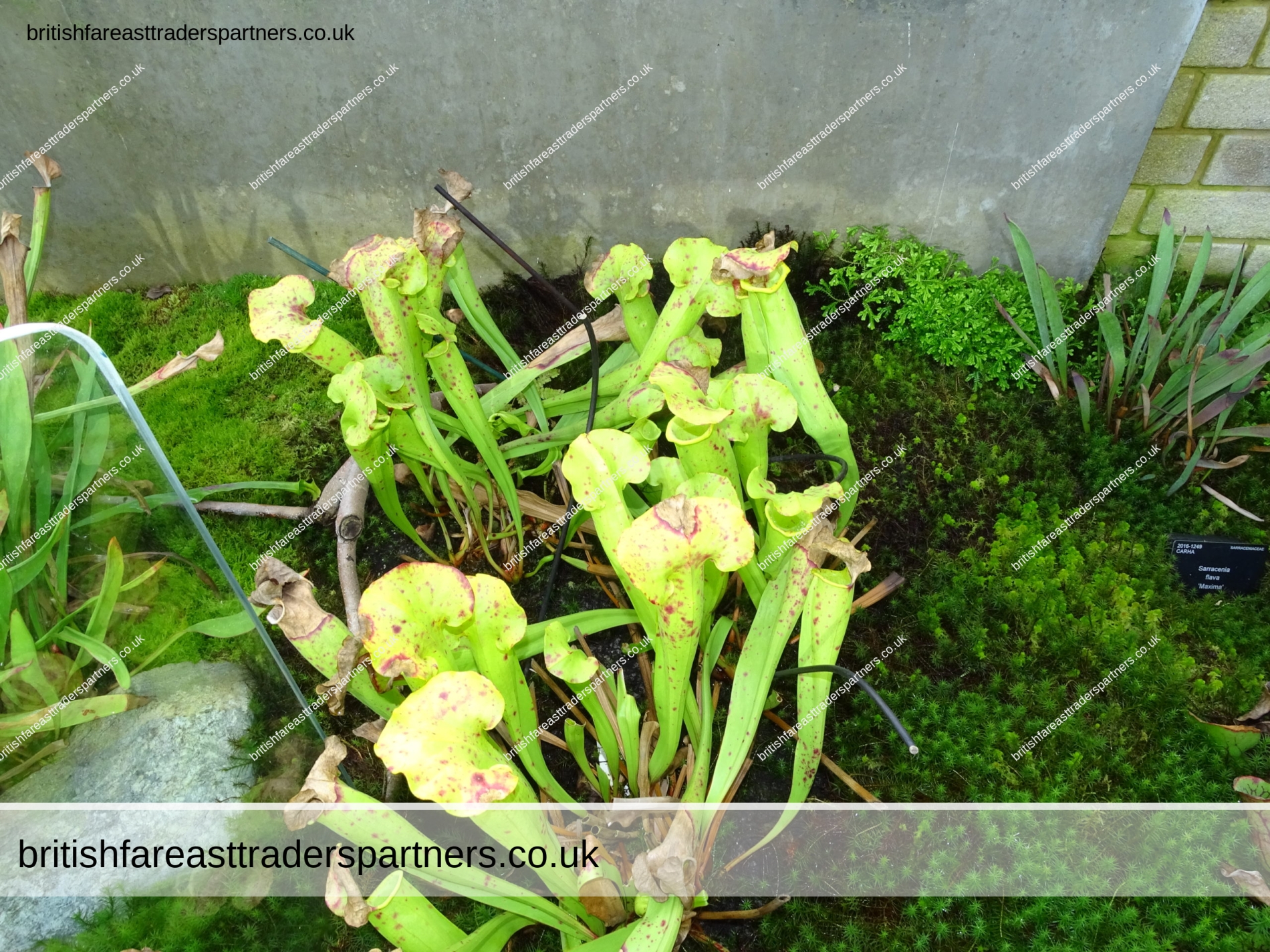
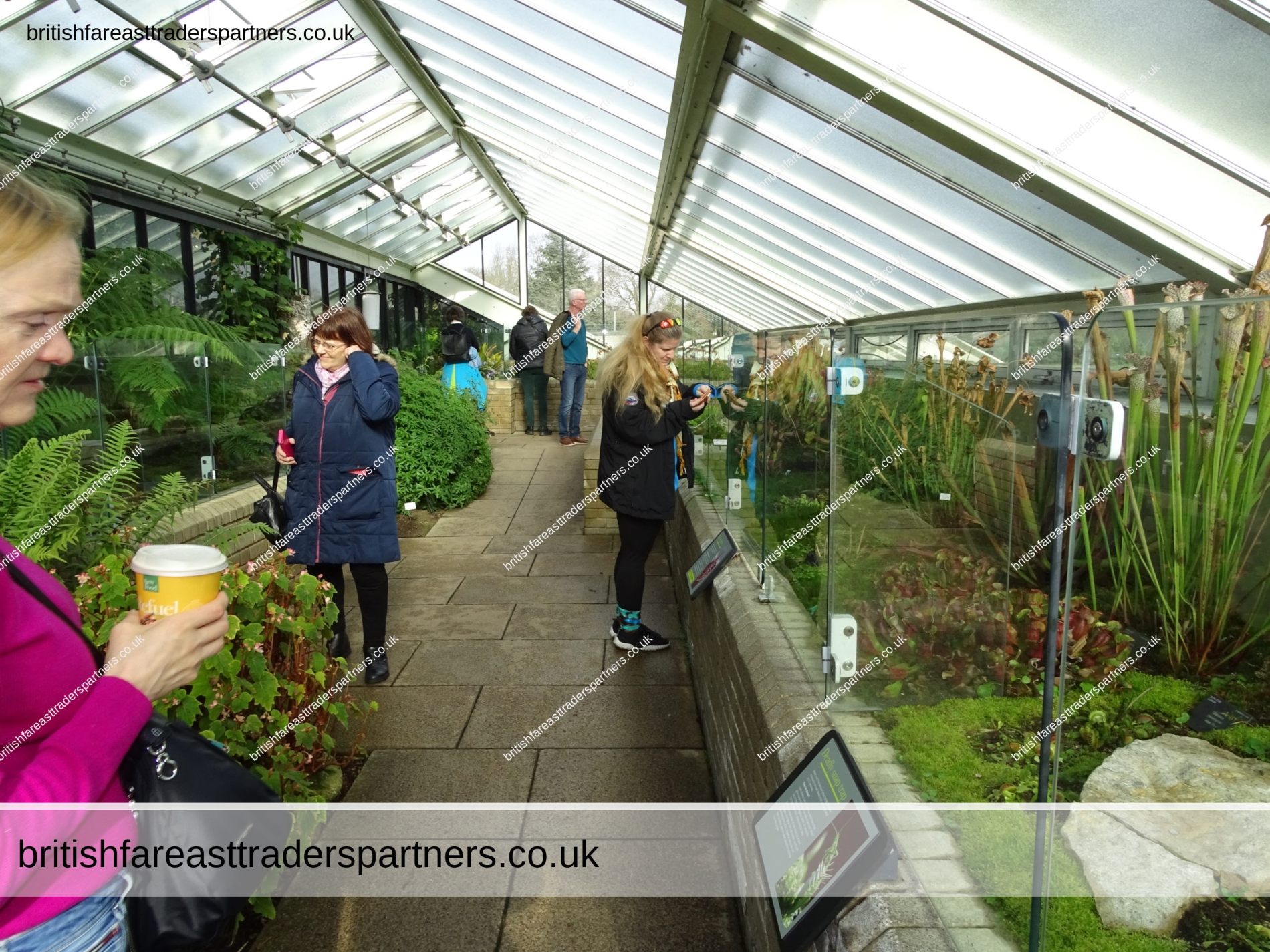
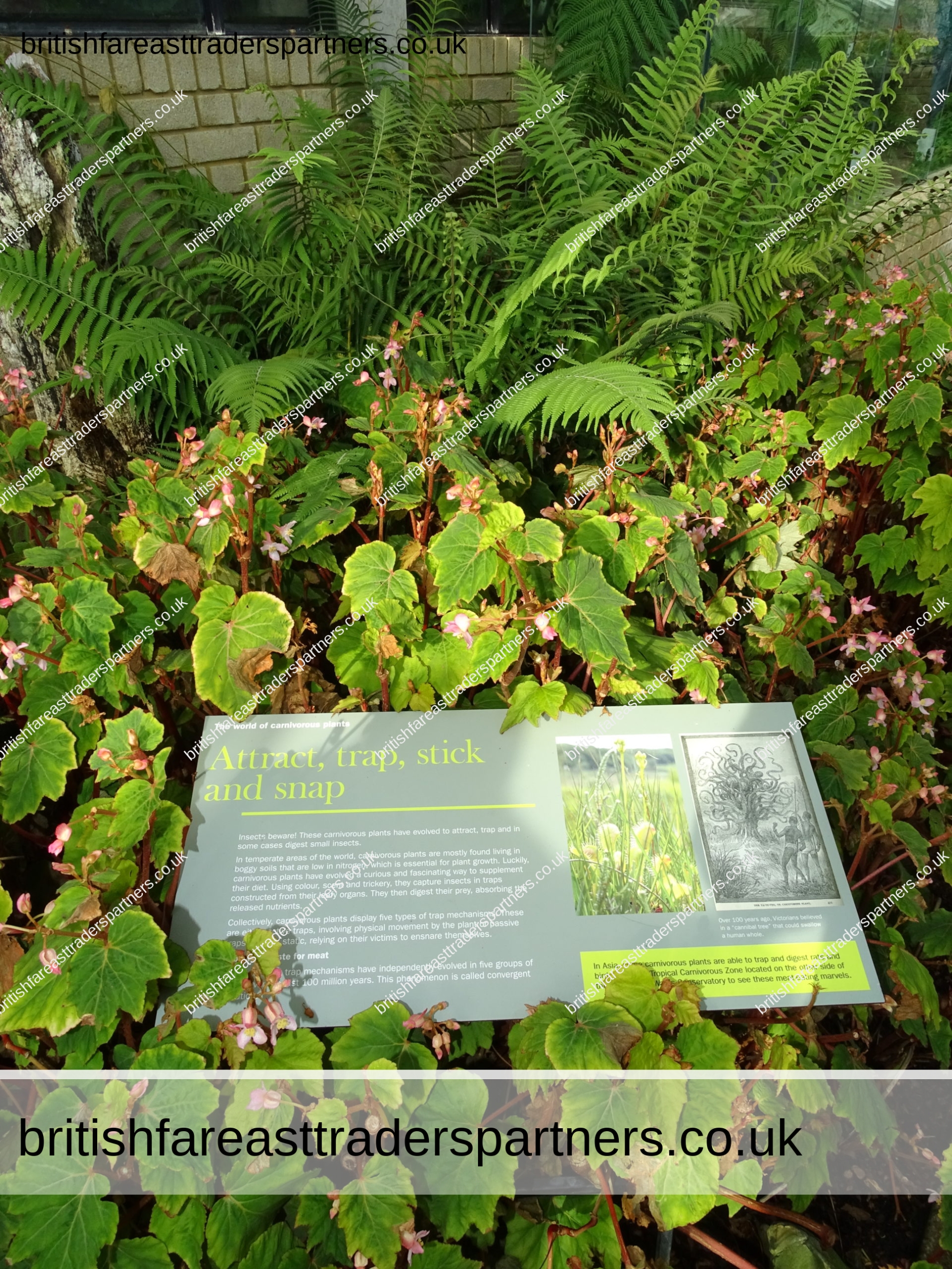
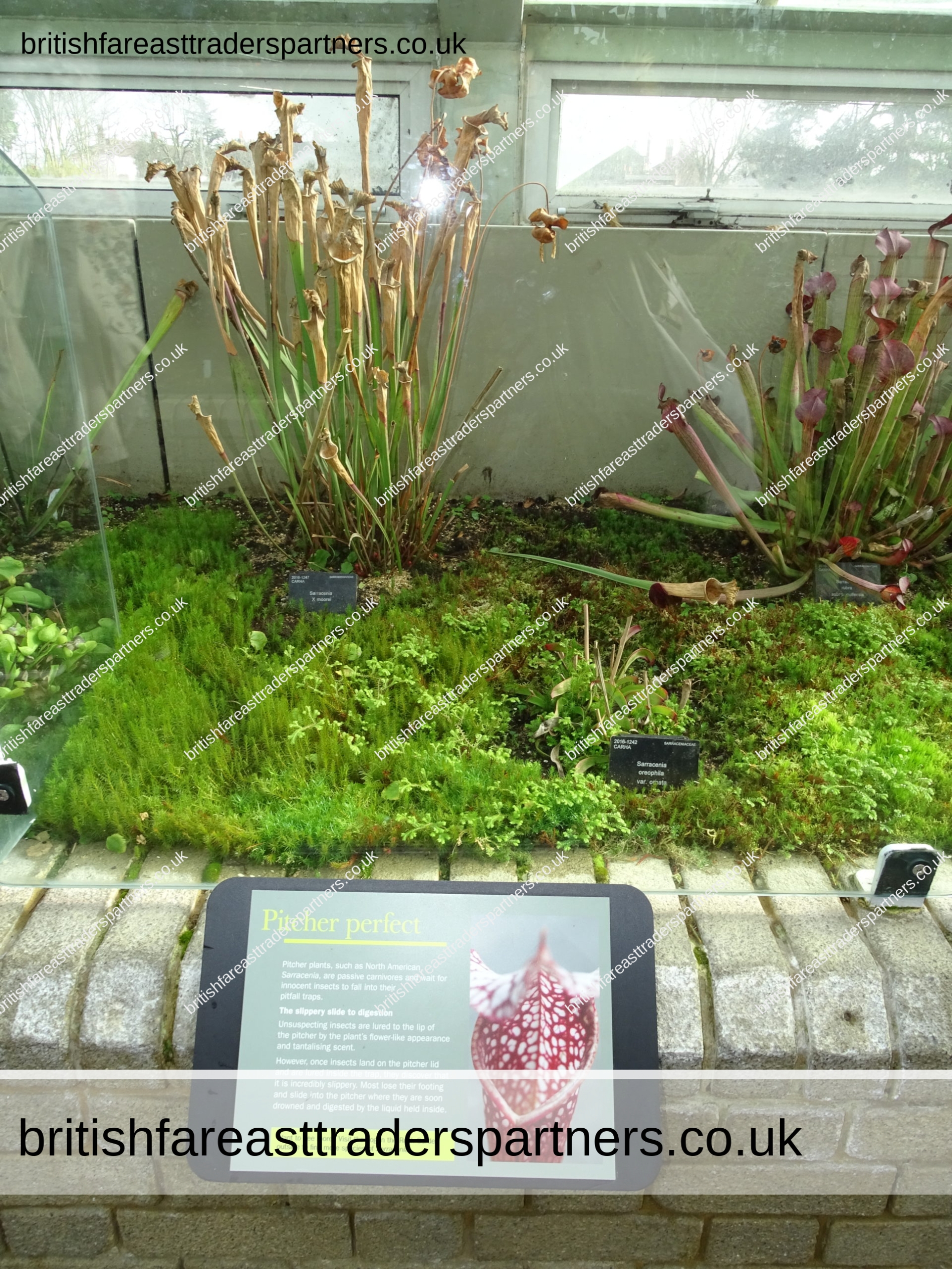
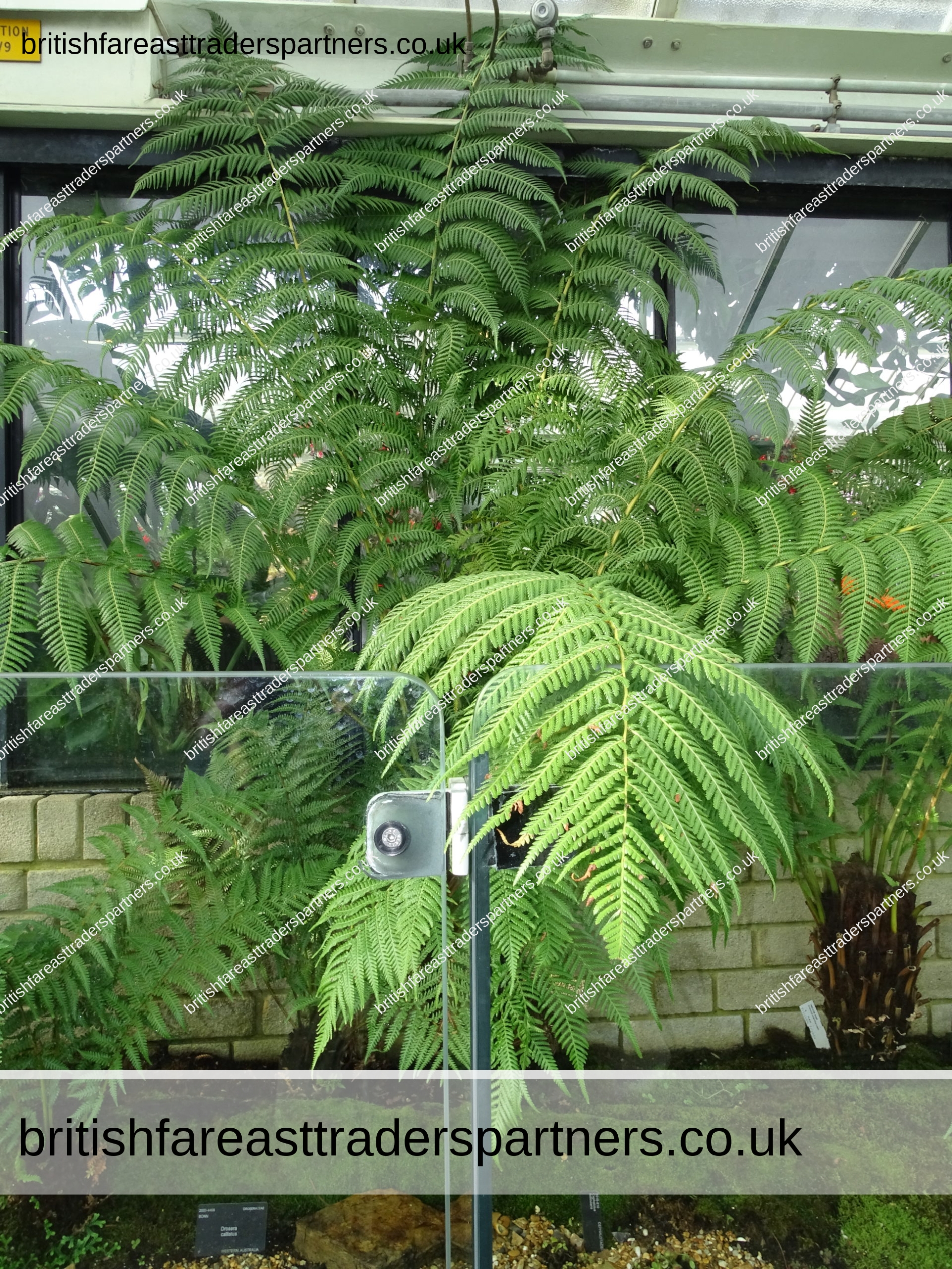
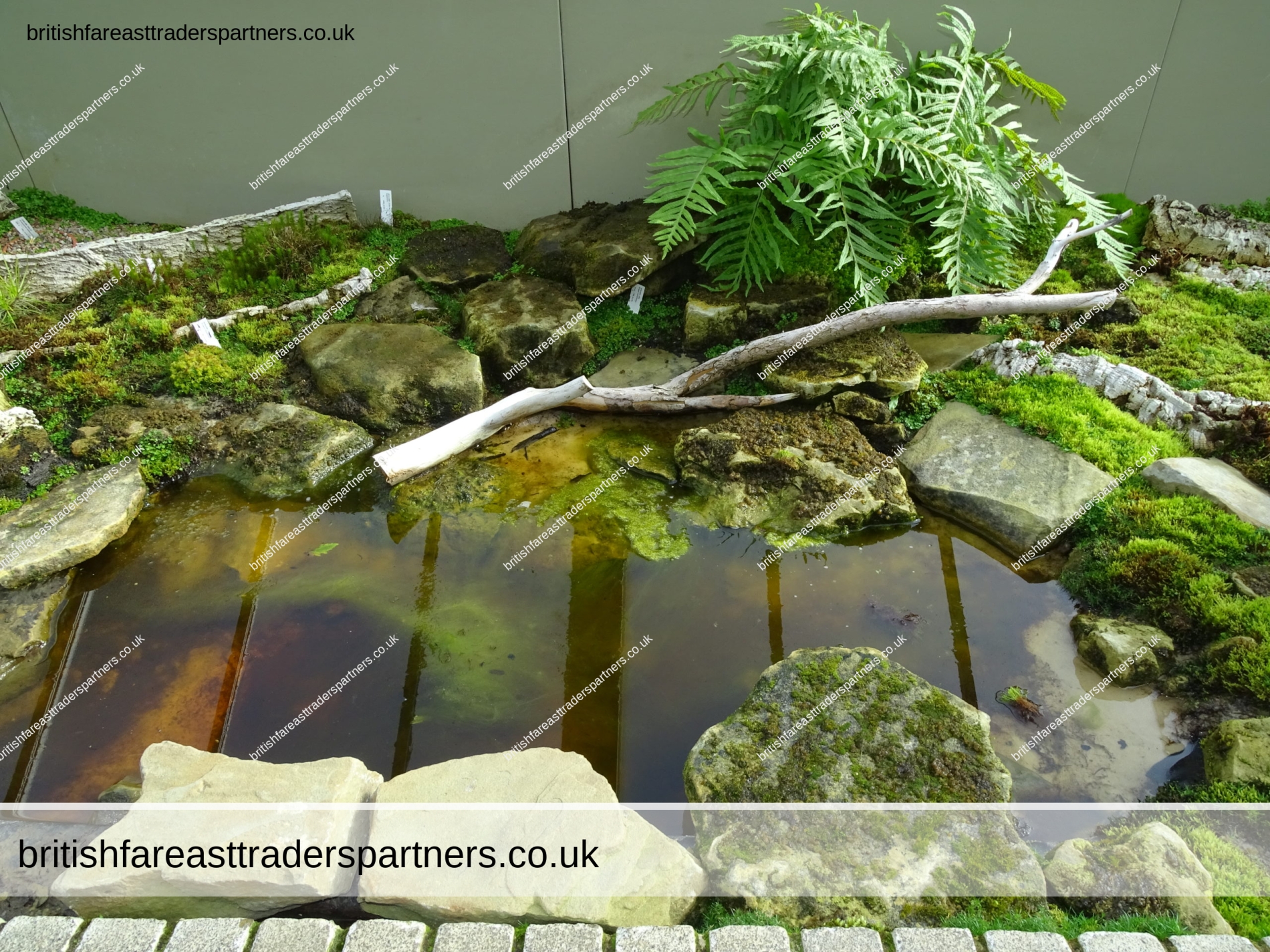
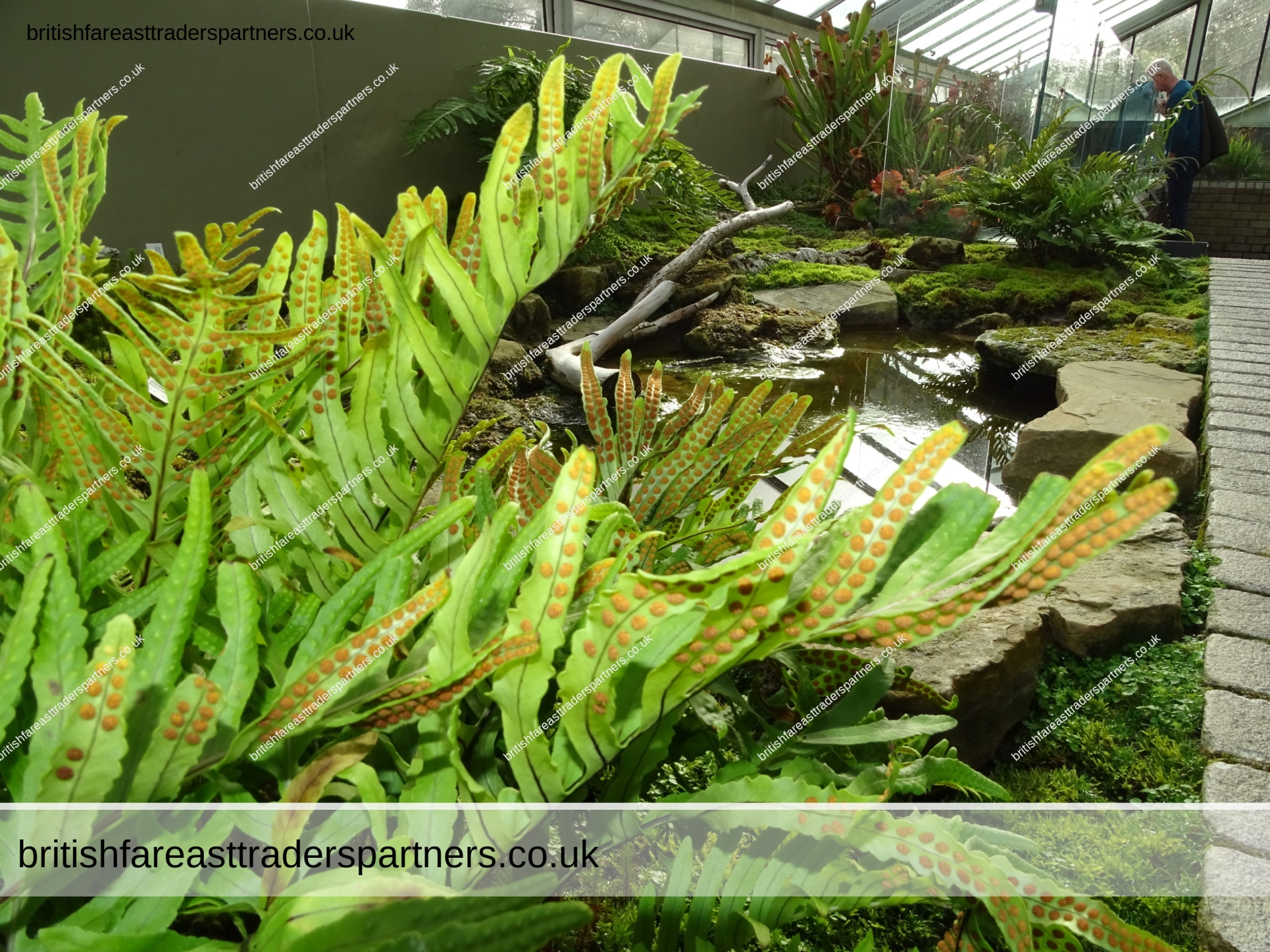
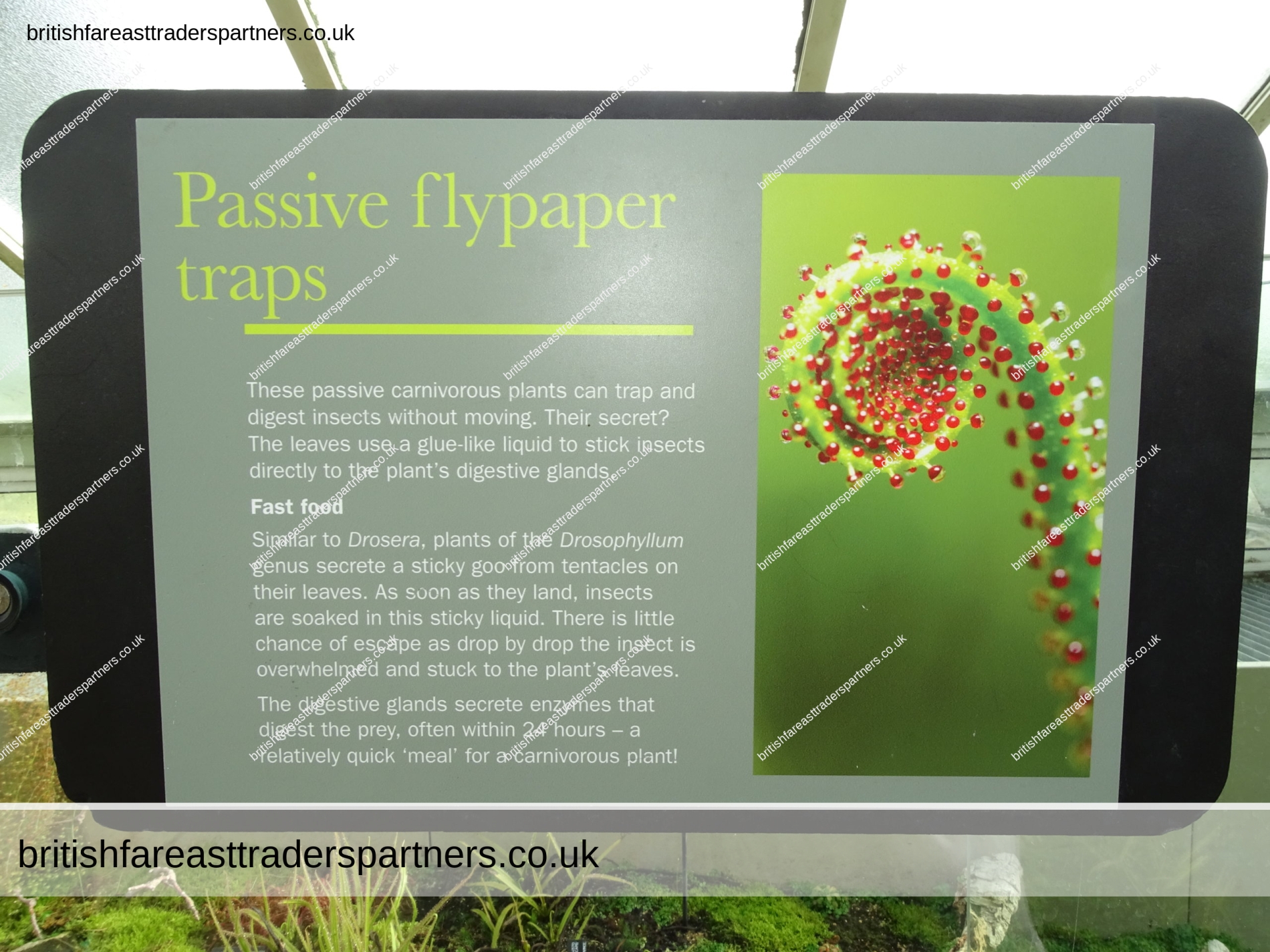
Passive flypaper traps
These passive carnivorous plants
can trap and digest insects without moving.
Their secret?
The leaves use a glue-like liquid
to stick insects directly to the plant’s digestive glands.
Fast food
Similar to Drosera, plants of the Drosophyllum genus
secrete a sticky goo from tentacles on their leaves.
As soon as they land,
insects are soaked in this sticky liquid.
There is little chance of escape as drop by drop
the insect is overwhelmed and stuck to the plant’s leaves.
The digestive glands secrete enzymes that digest the prey,
often within 24 hours – a relatively quick ‘meal’ for a carnivorous plant!
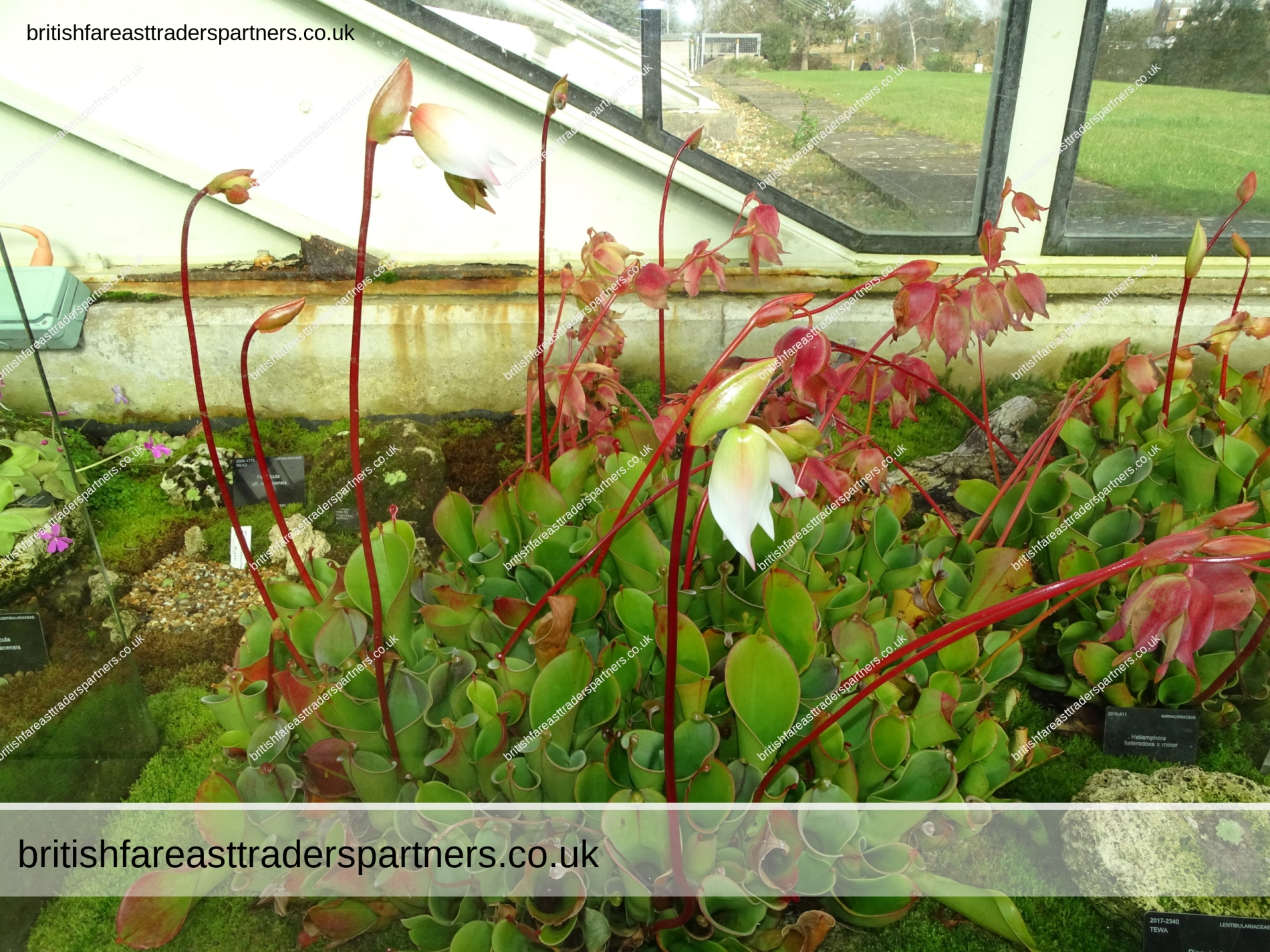
BACK TO TROPICAL PARADISE
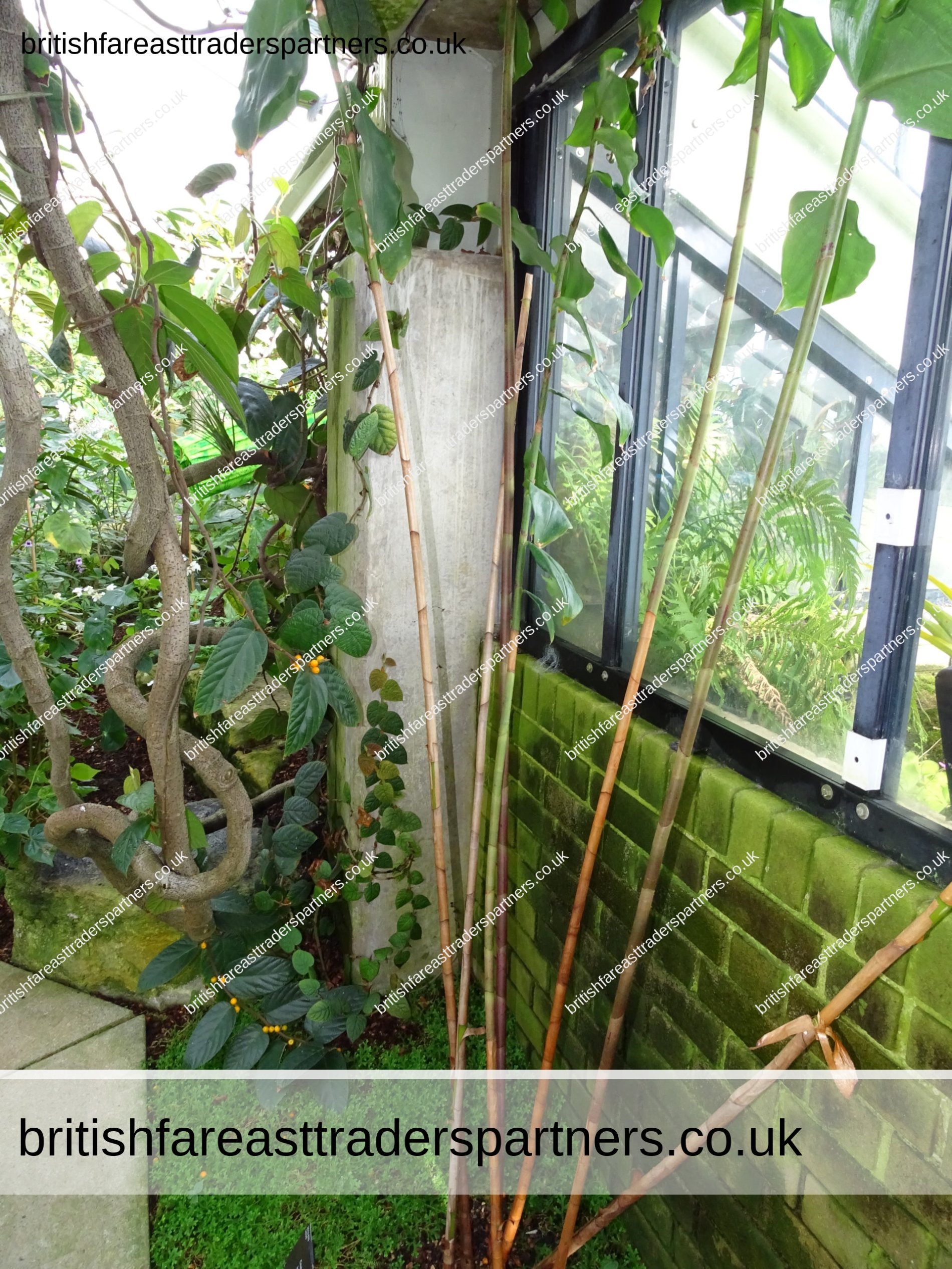
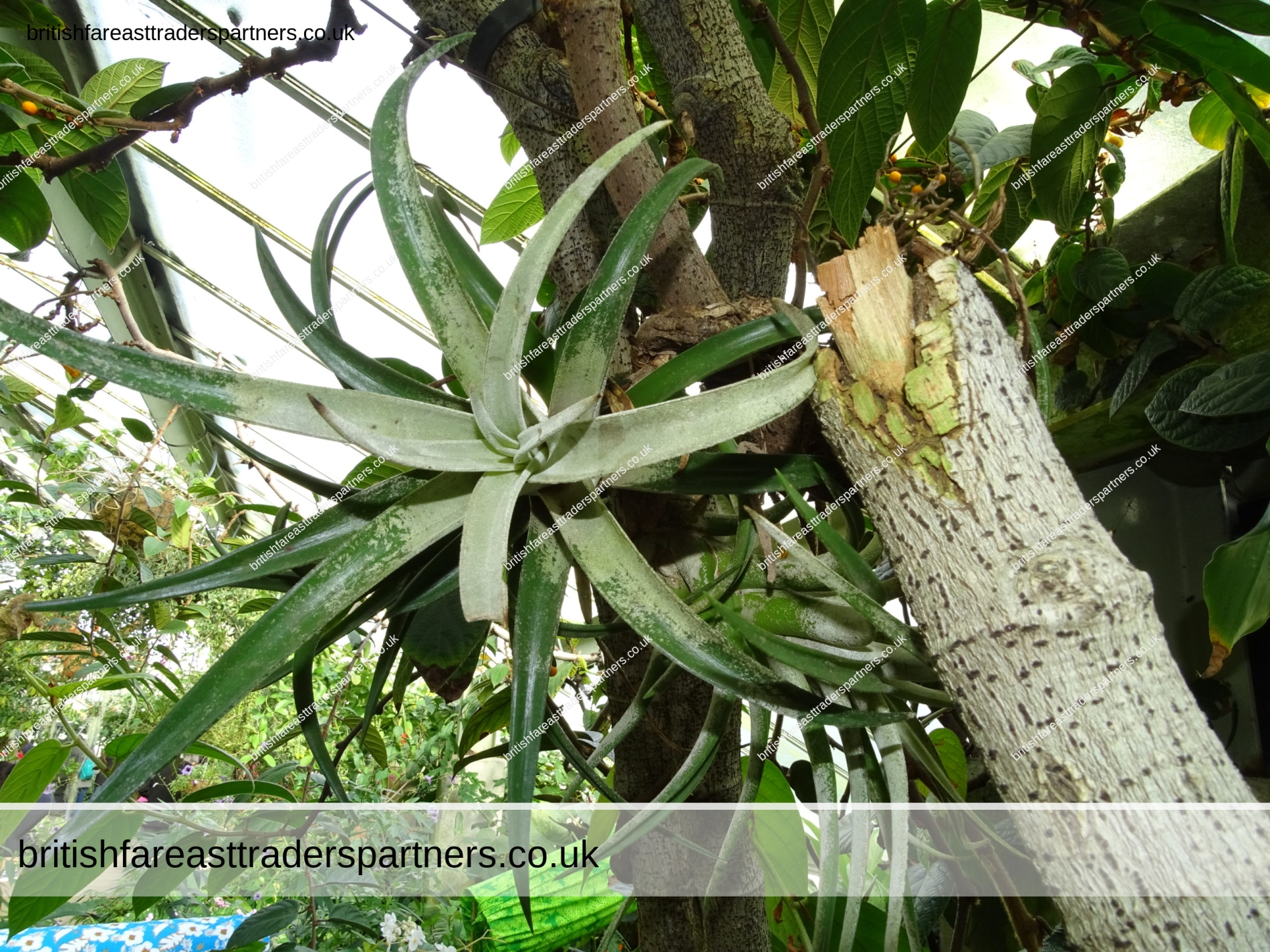
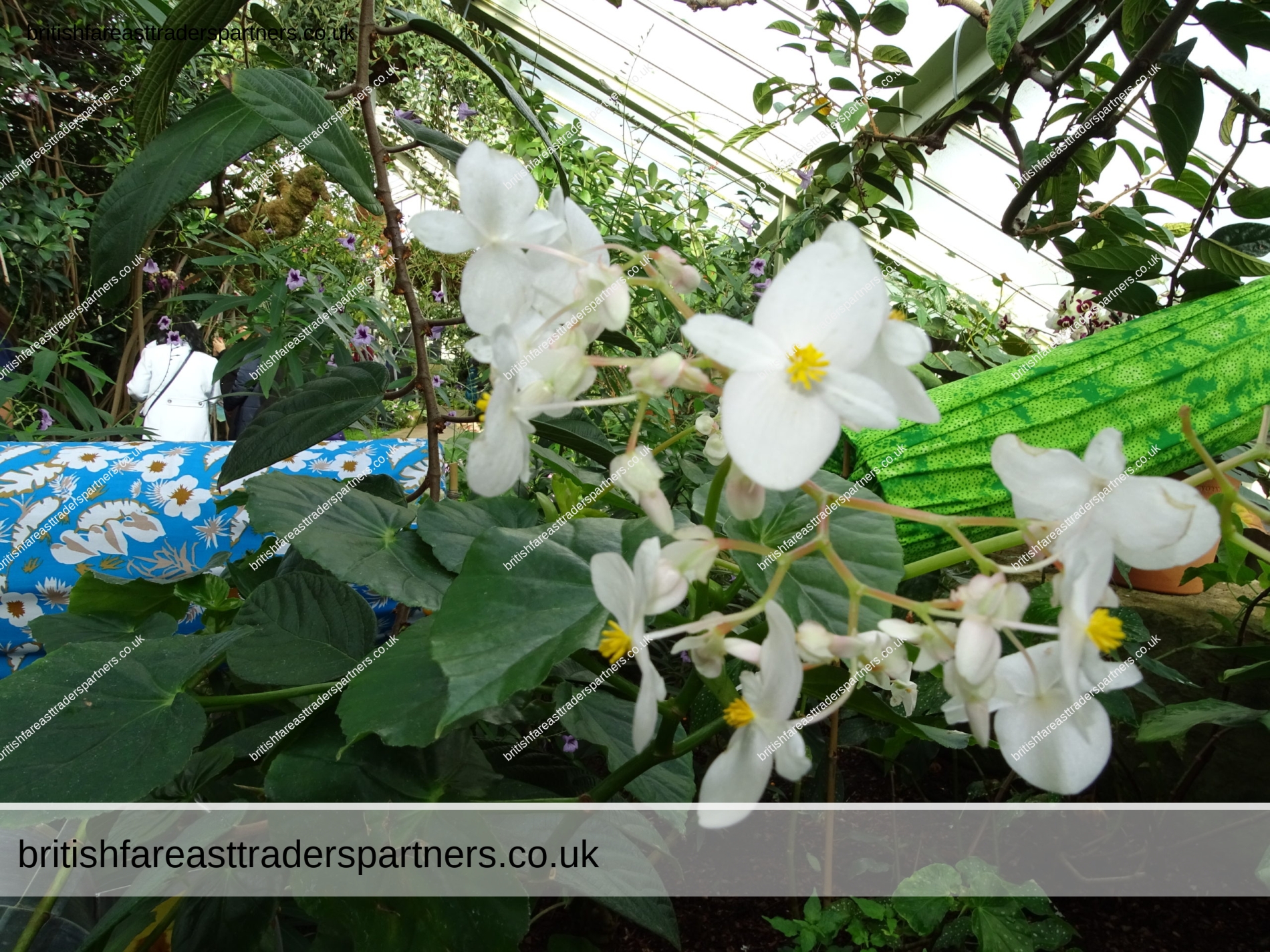
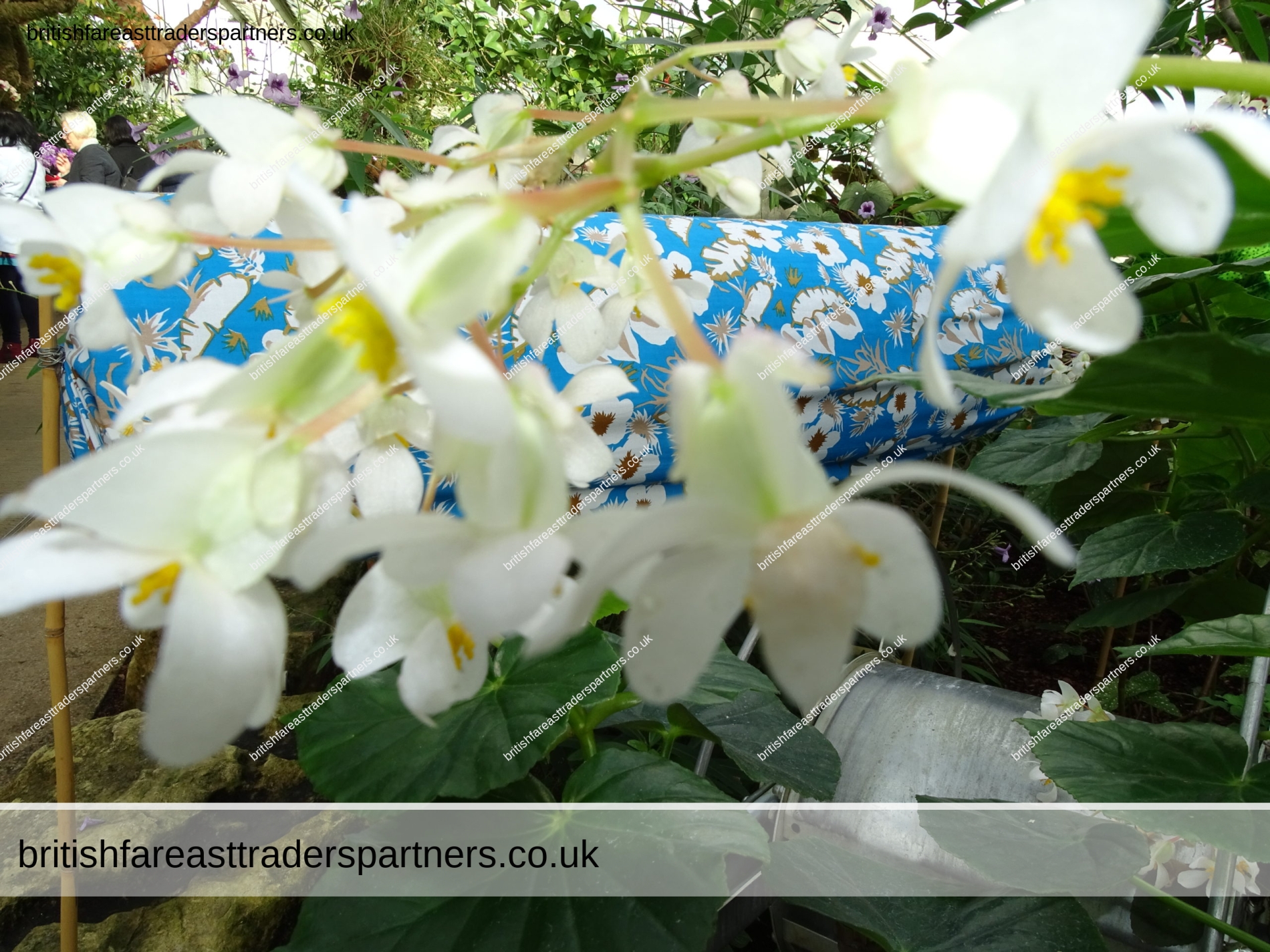
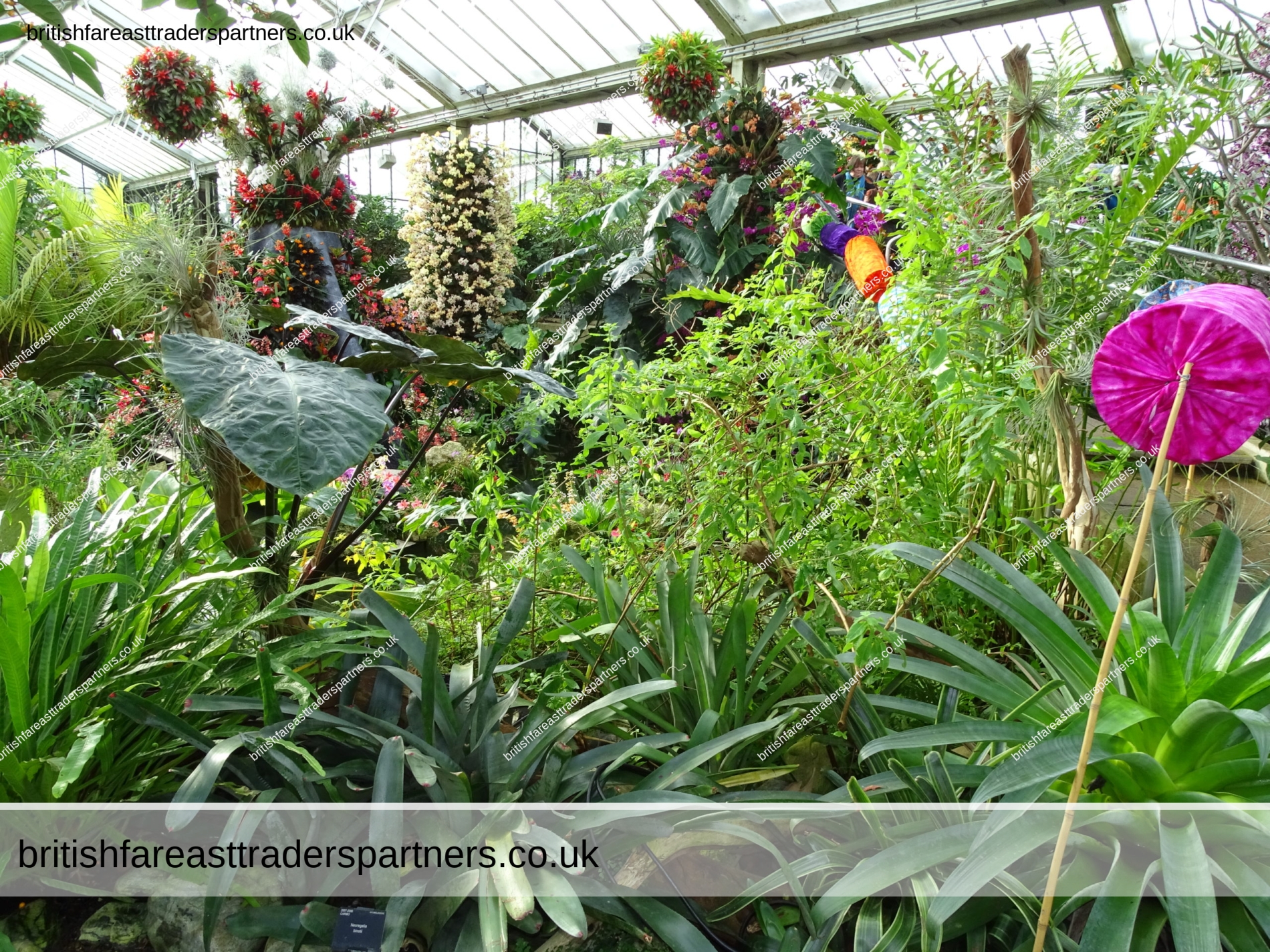
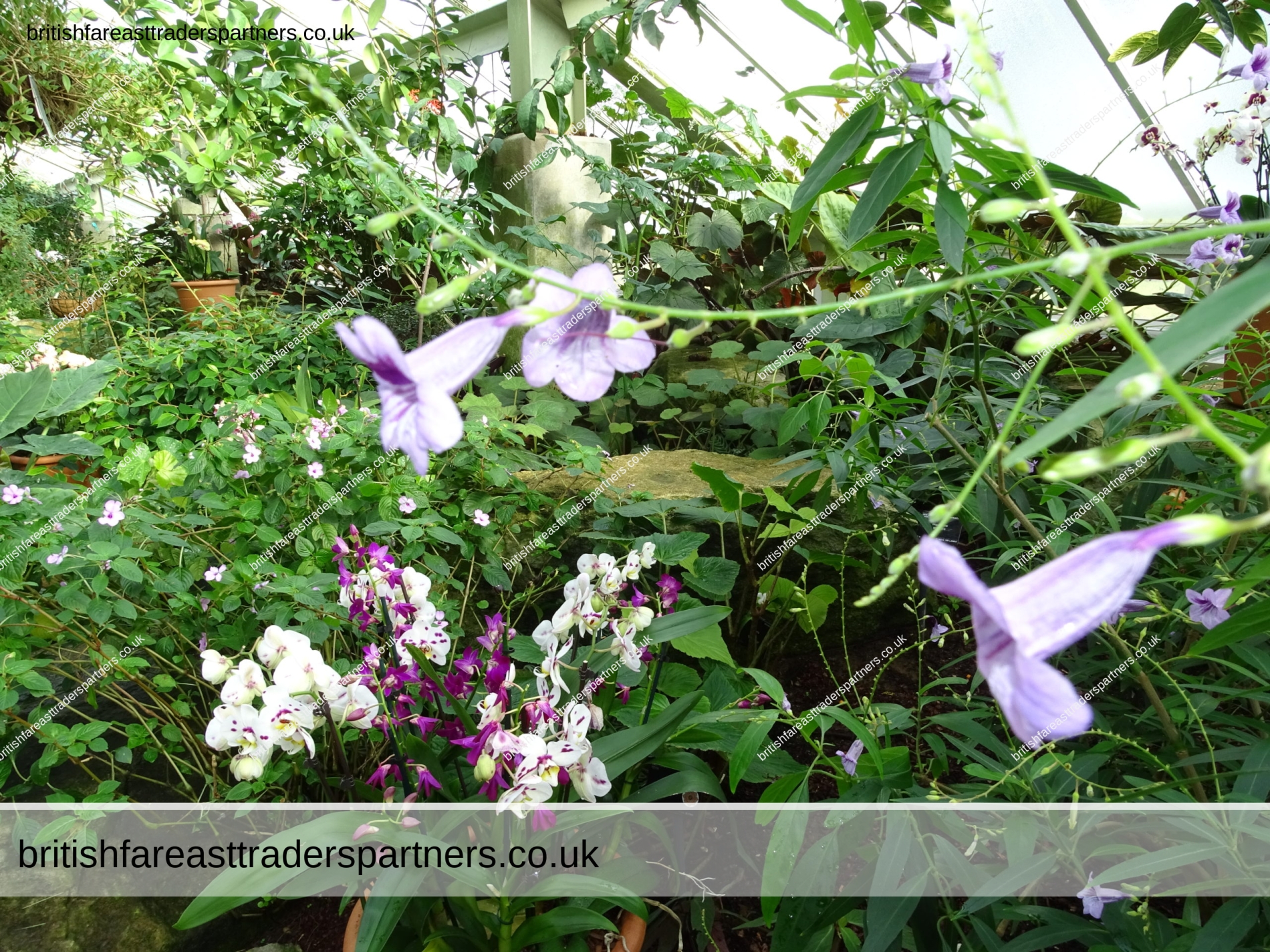
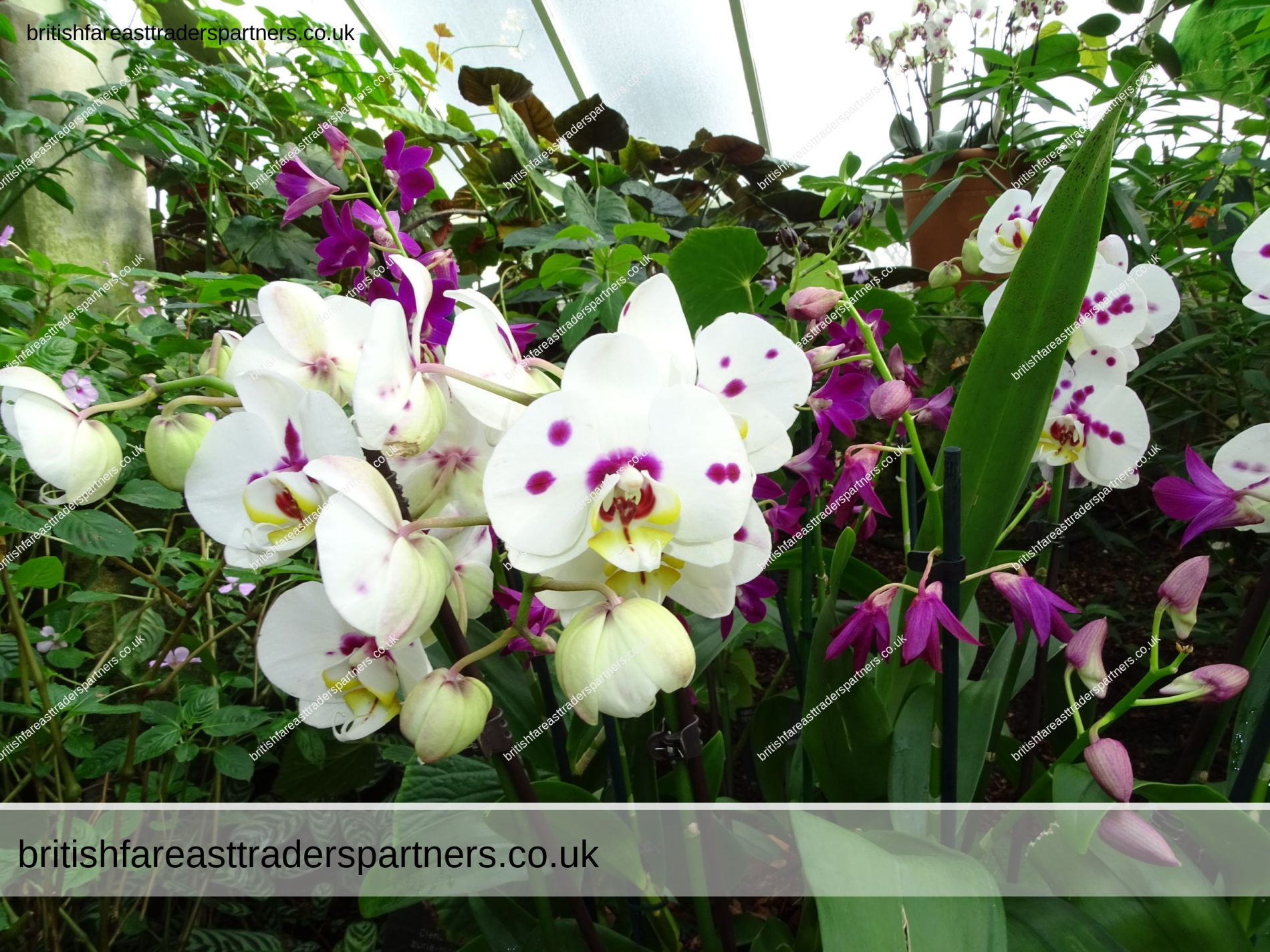
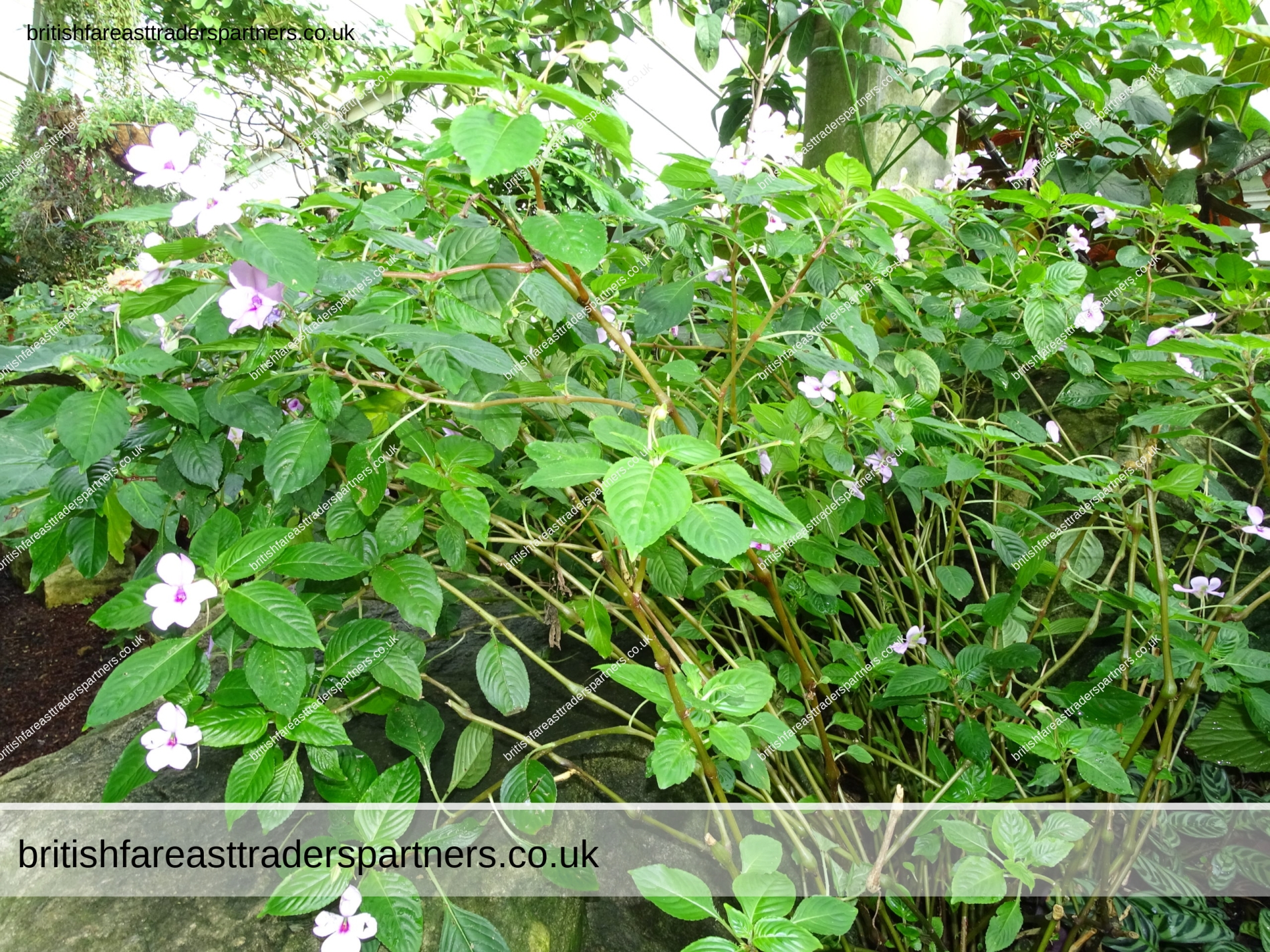
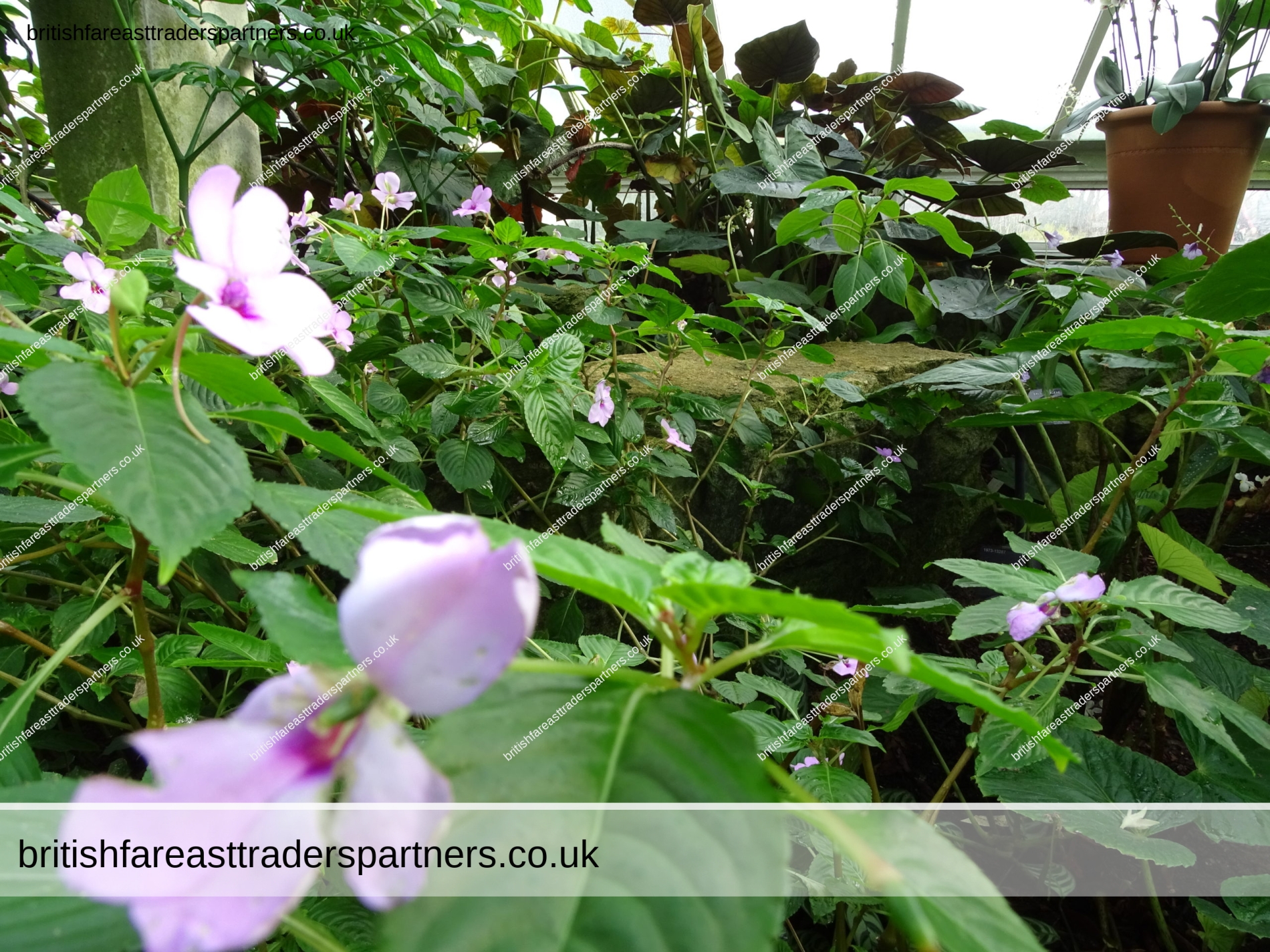
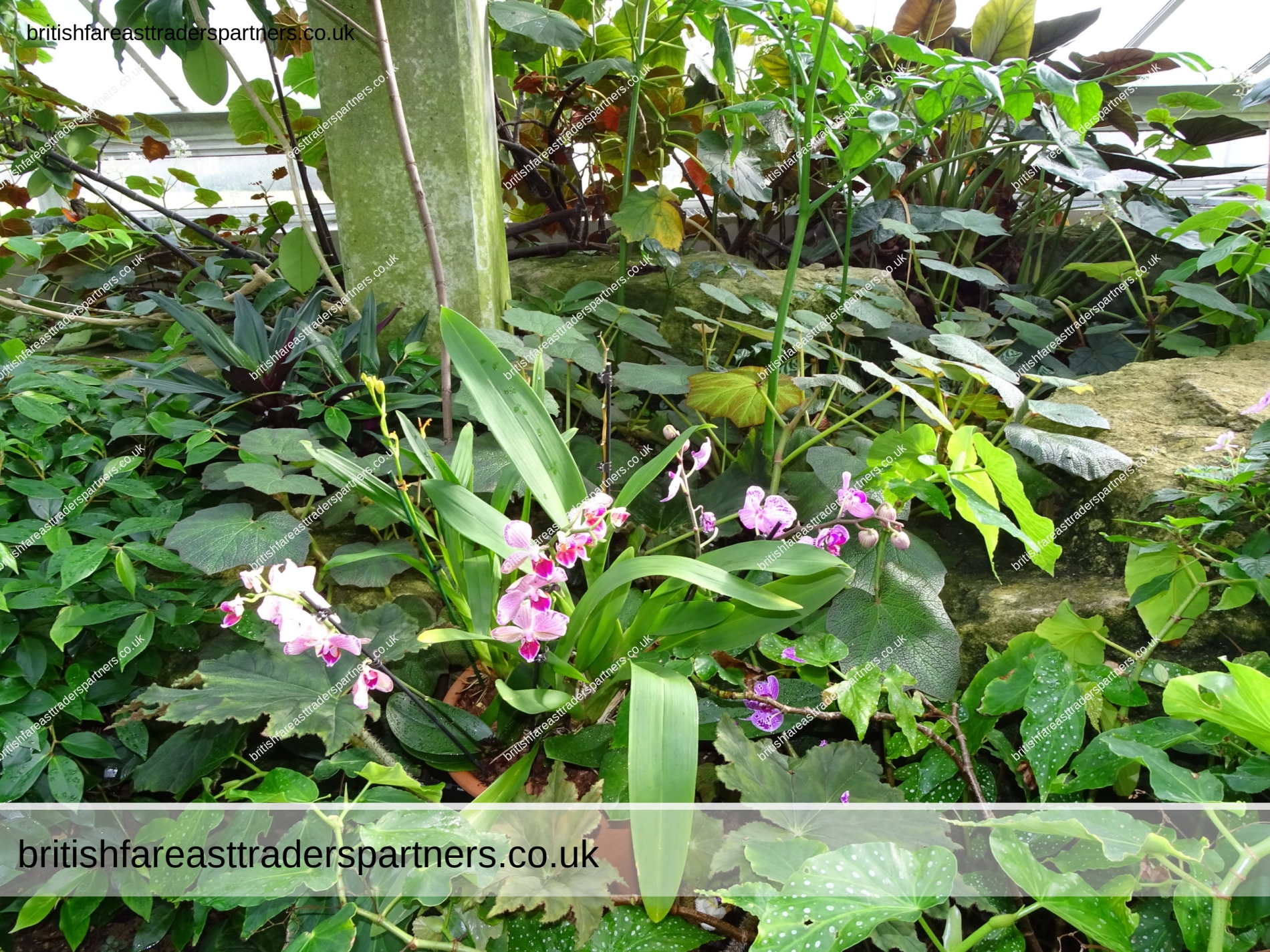

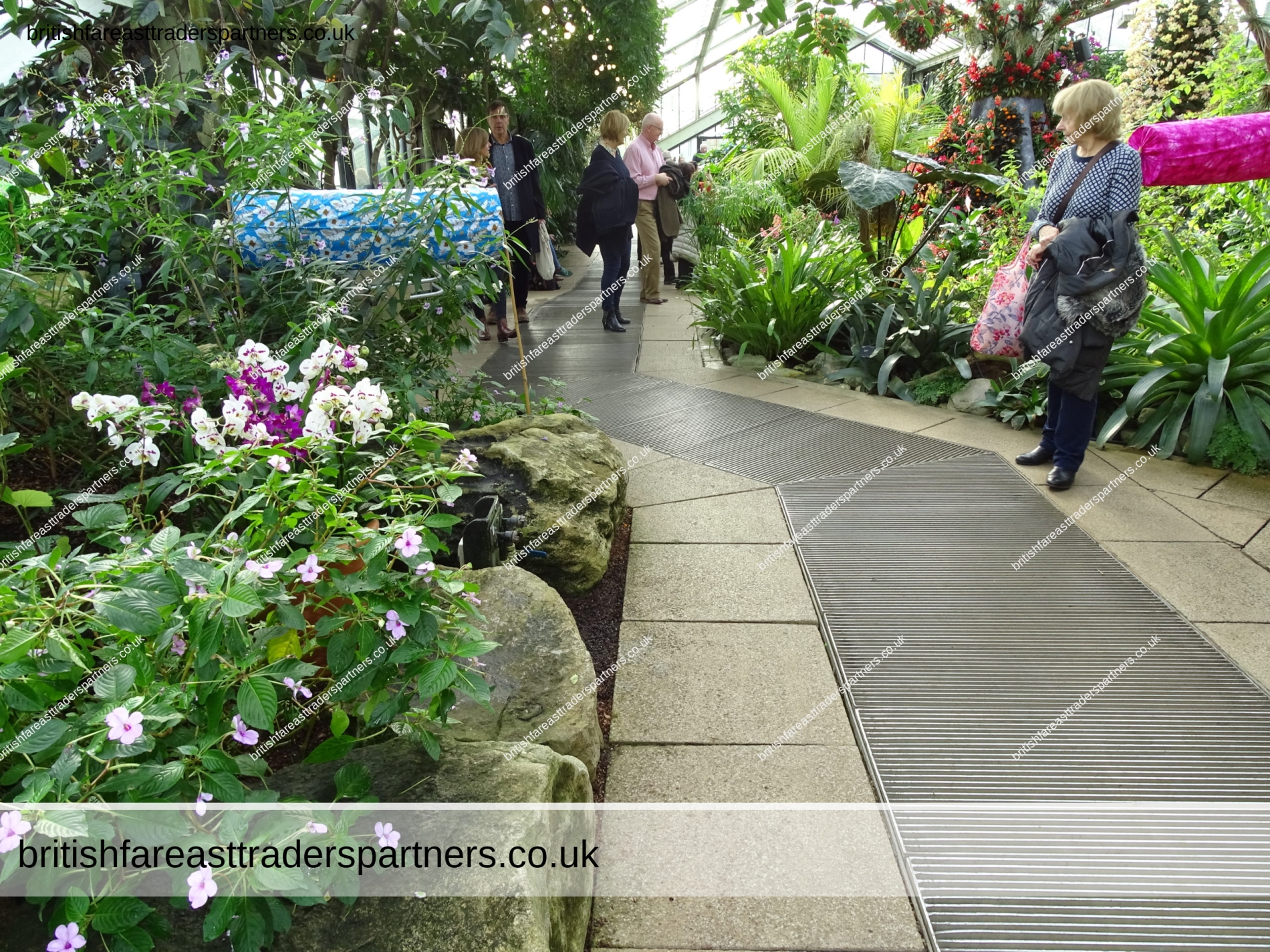
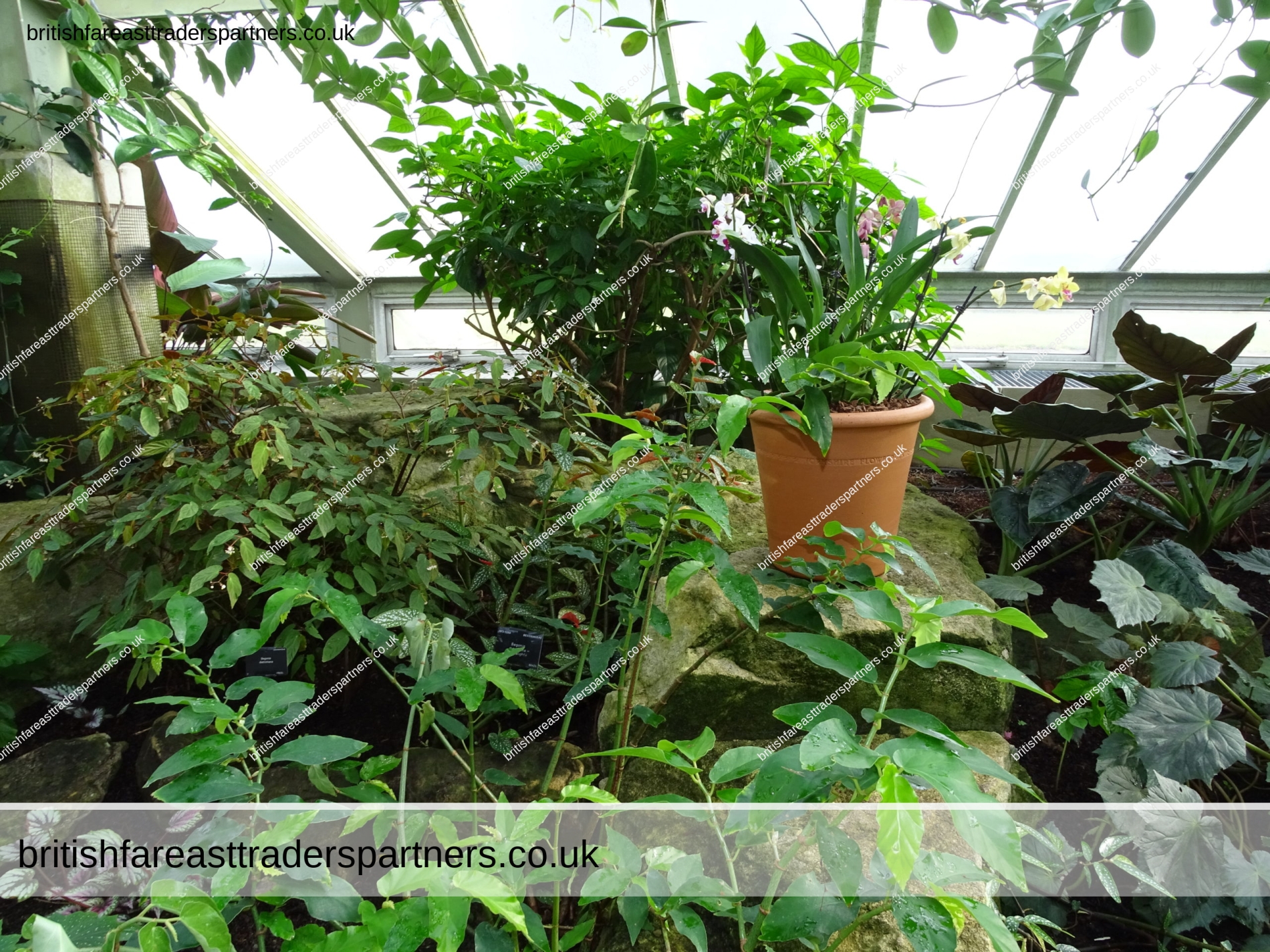
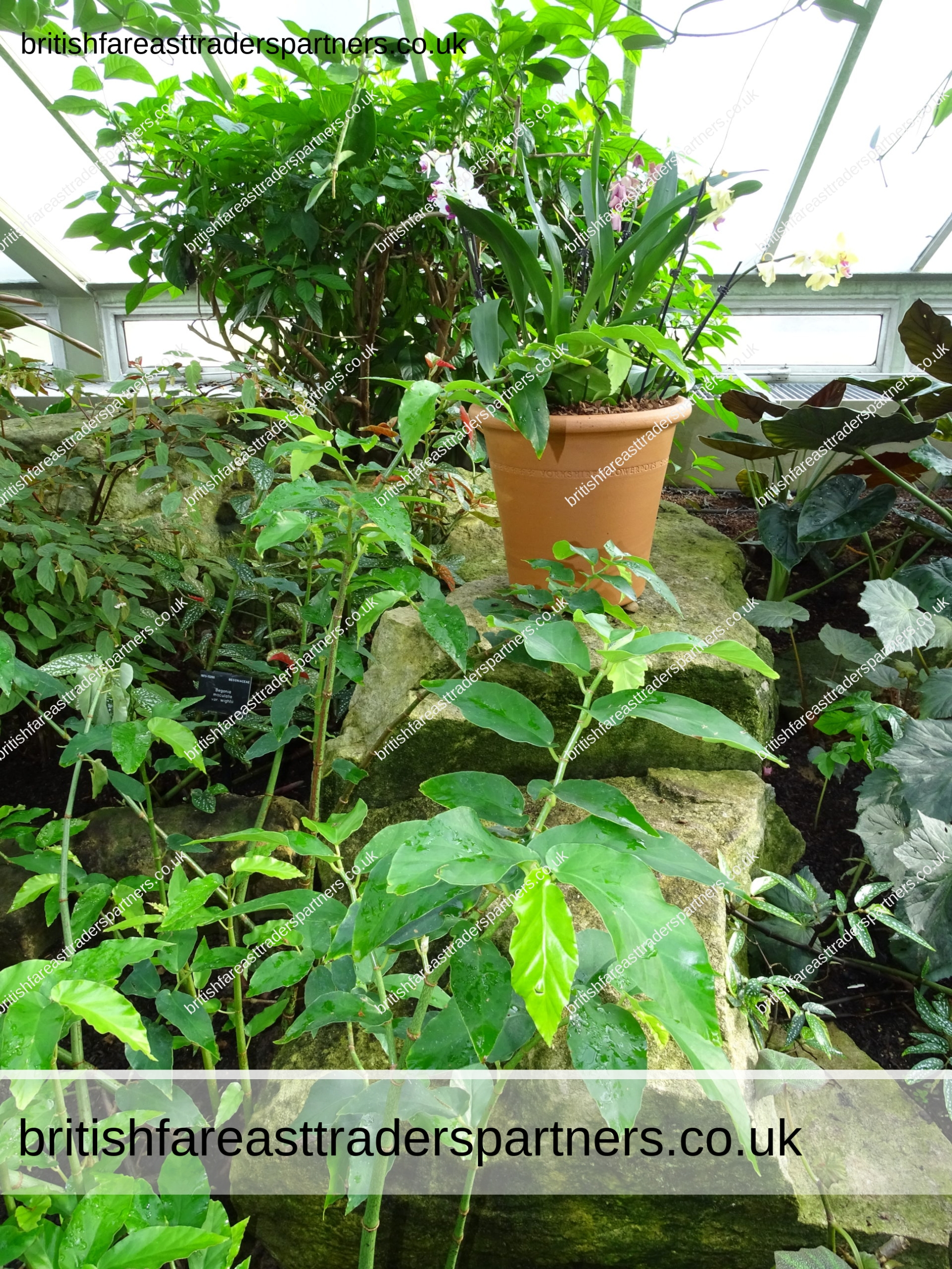
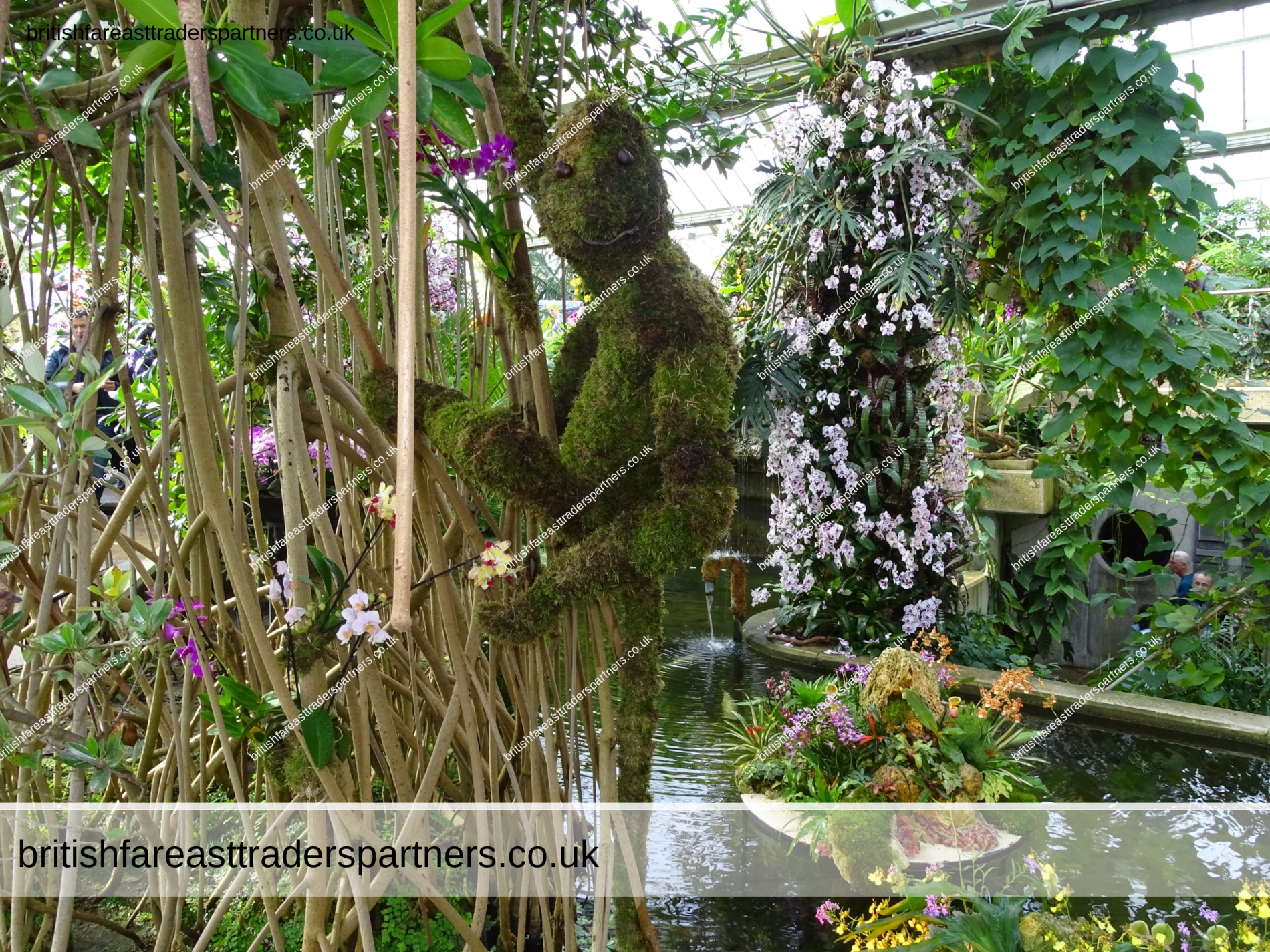
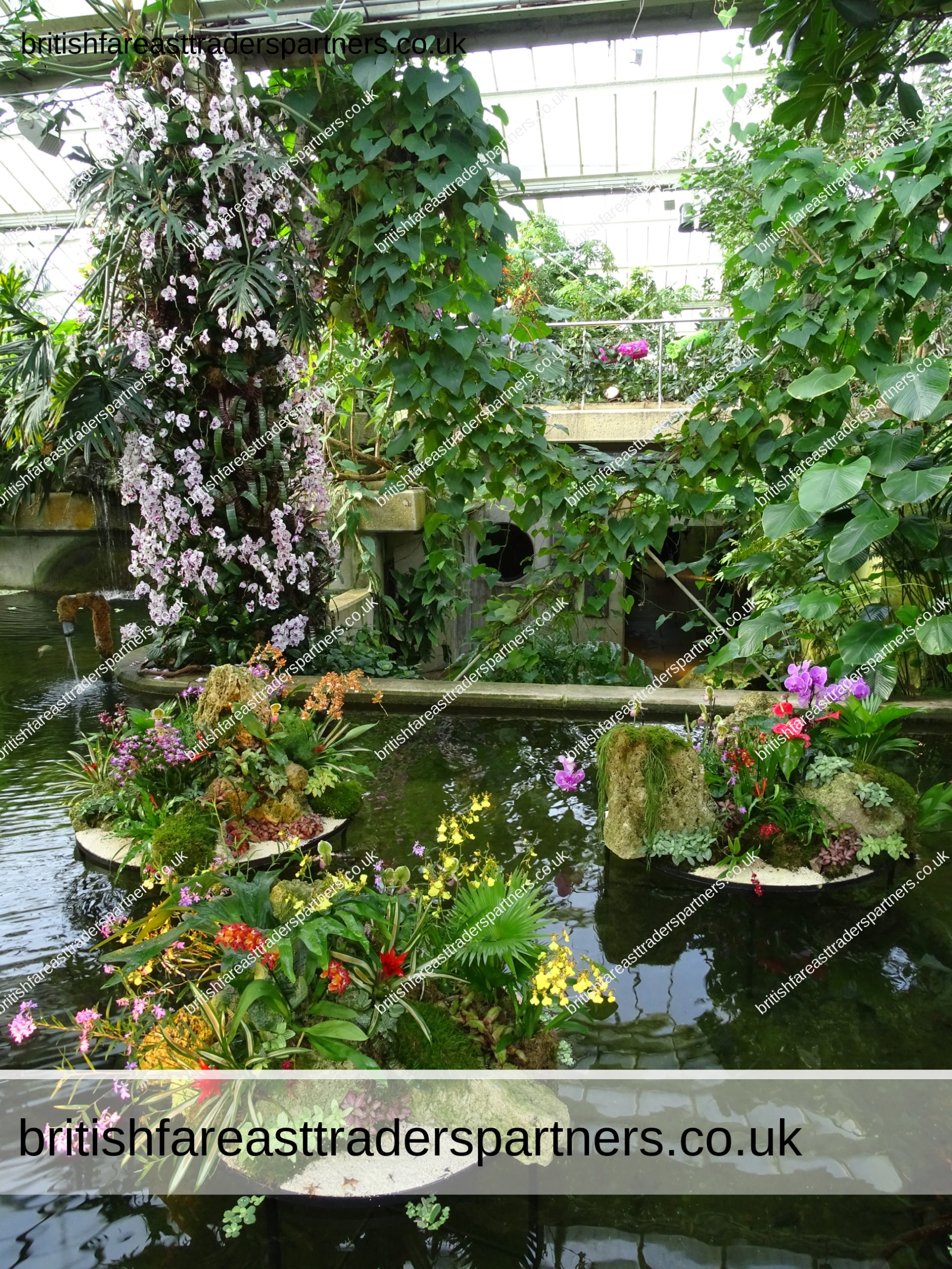
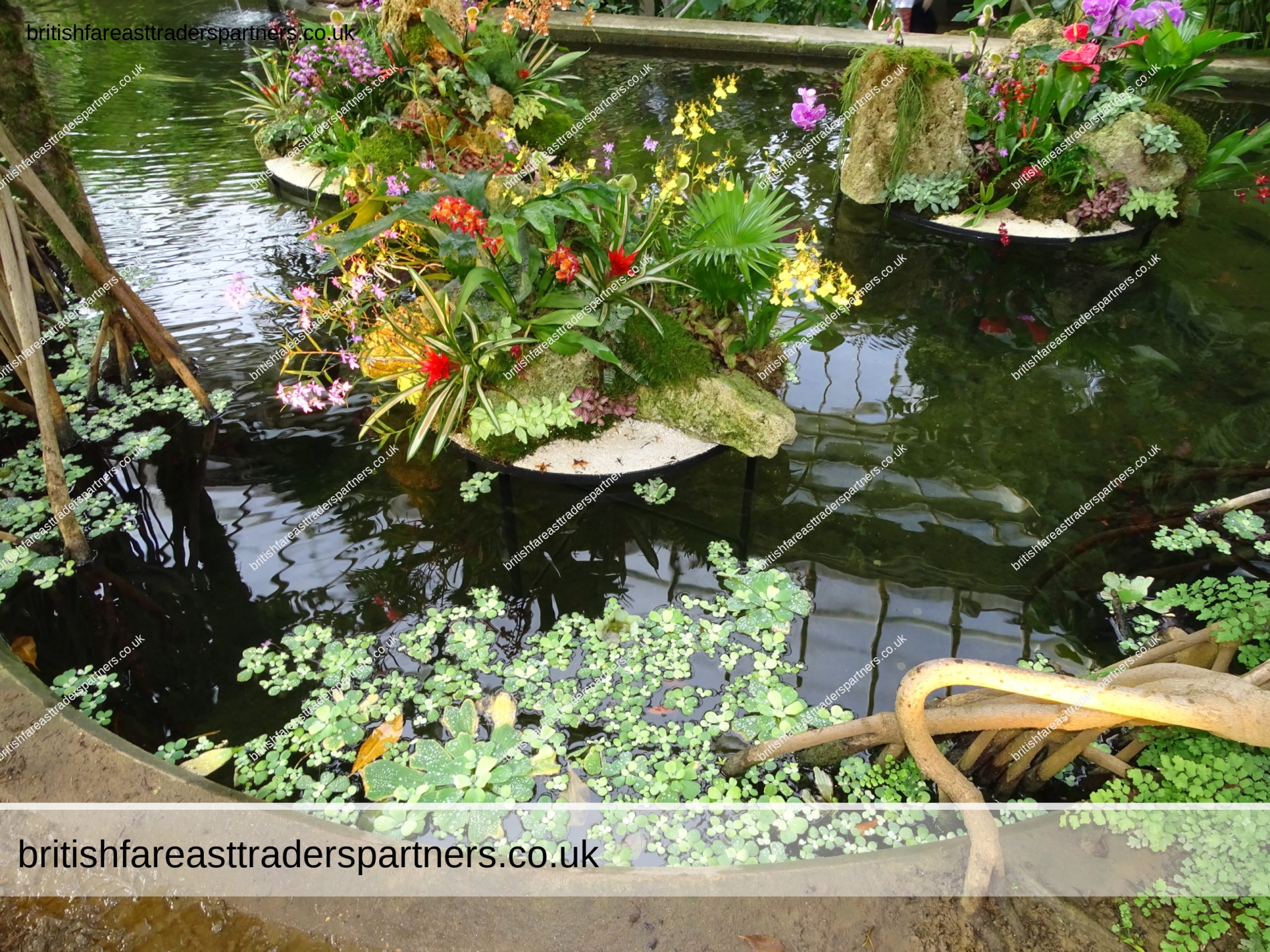
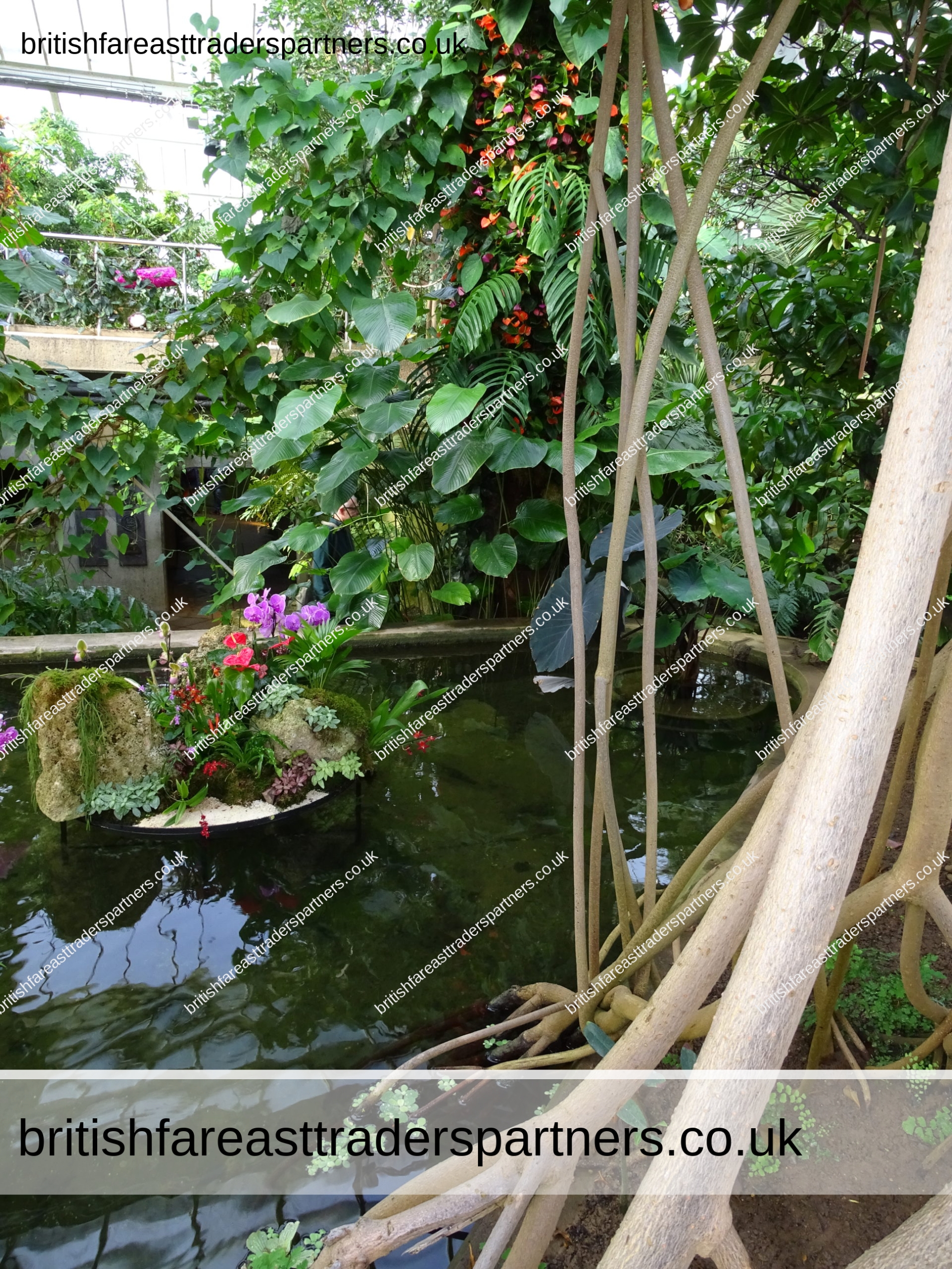
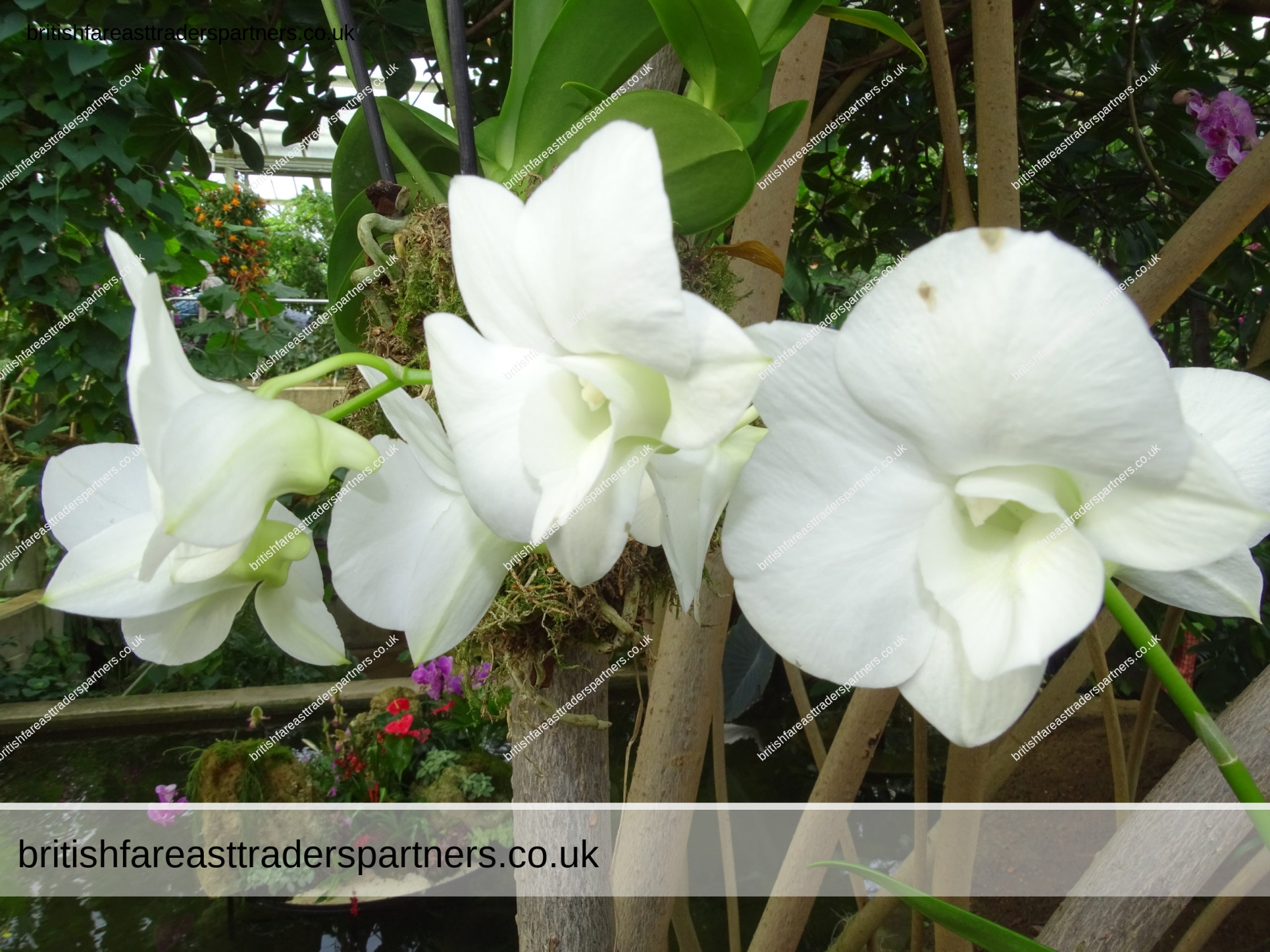
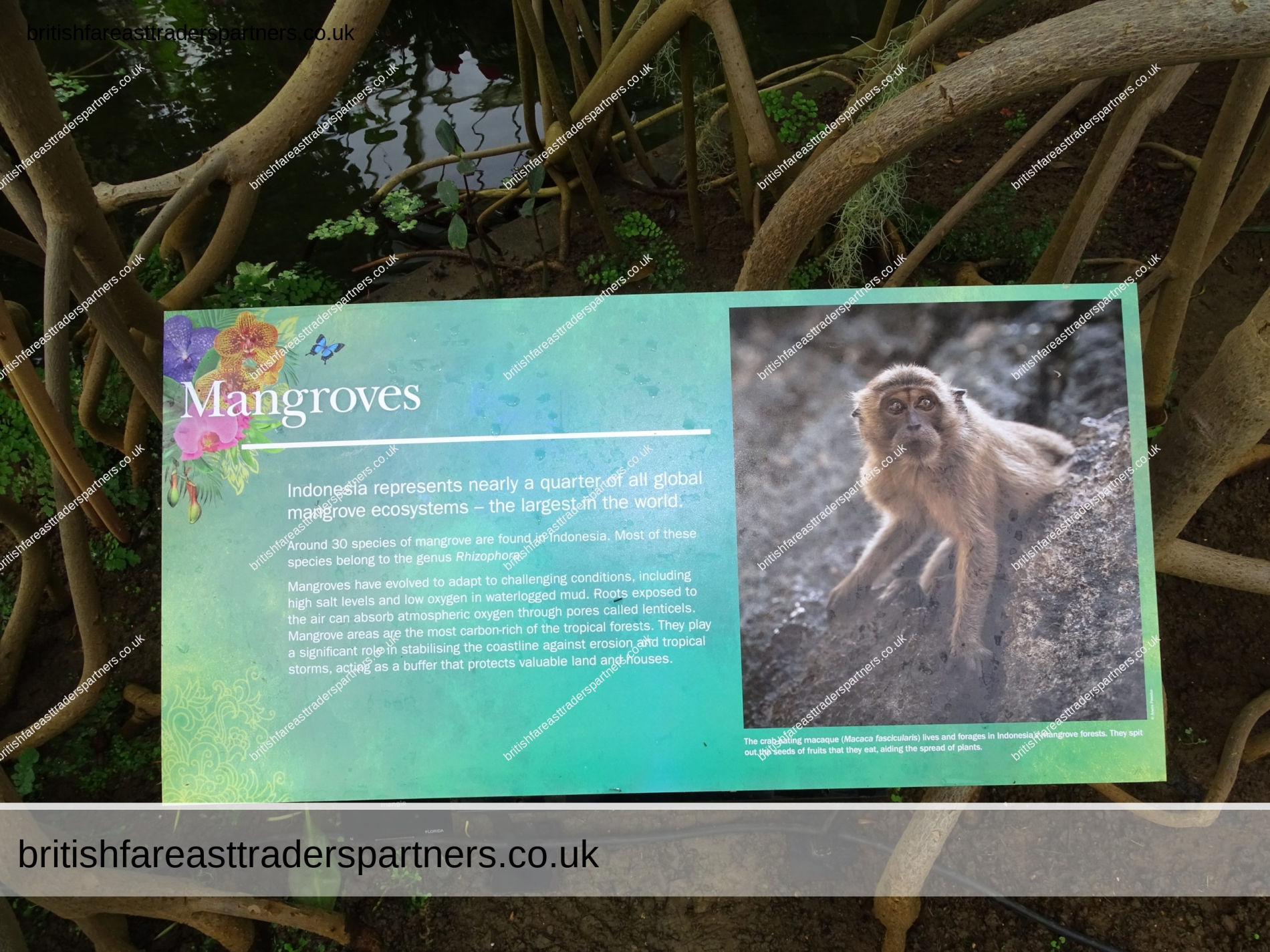
Mangroves
INDONESIA represents nearly a quarter
of all global ecosystems – the largest in the world.
Around 30 species of mangrove are found in Indonesia.
Most of these species belong to the genus Rhizophora.
Mangroves have evolved to adapt to challenging conditions,
including high salt levels and low oxygen in waterlogged mud.
Roots exposed to the air can absorb atmospheric oxygen
through pores called lenticels.
Mangrove areas are the most carbon-rich of the tropical forests.
They play a significant role in stabilising the coastline against erosion
and tropical storms,
acting as a buffer that protects valuable land and houses.
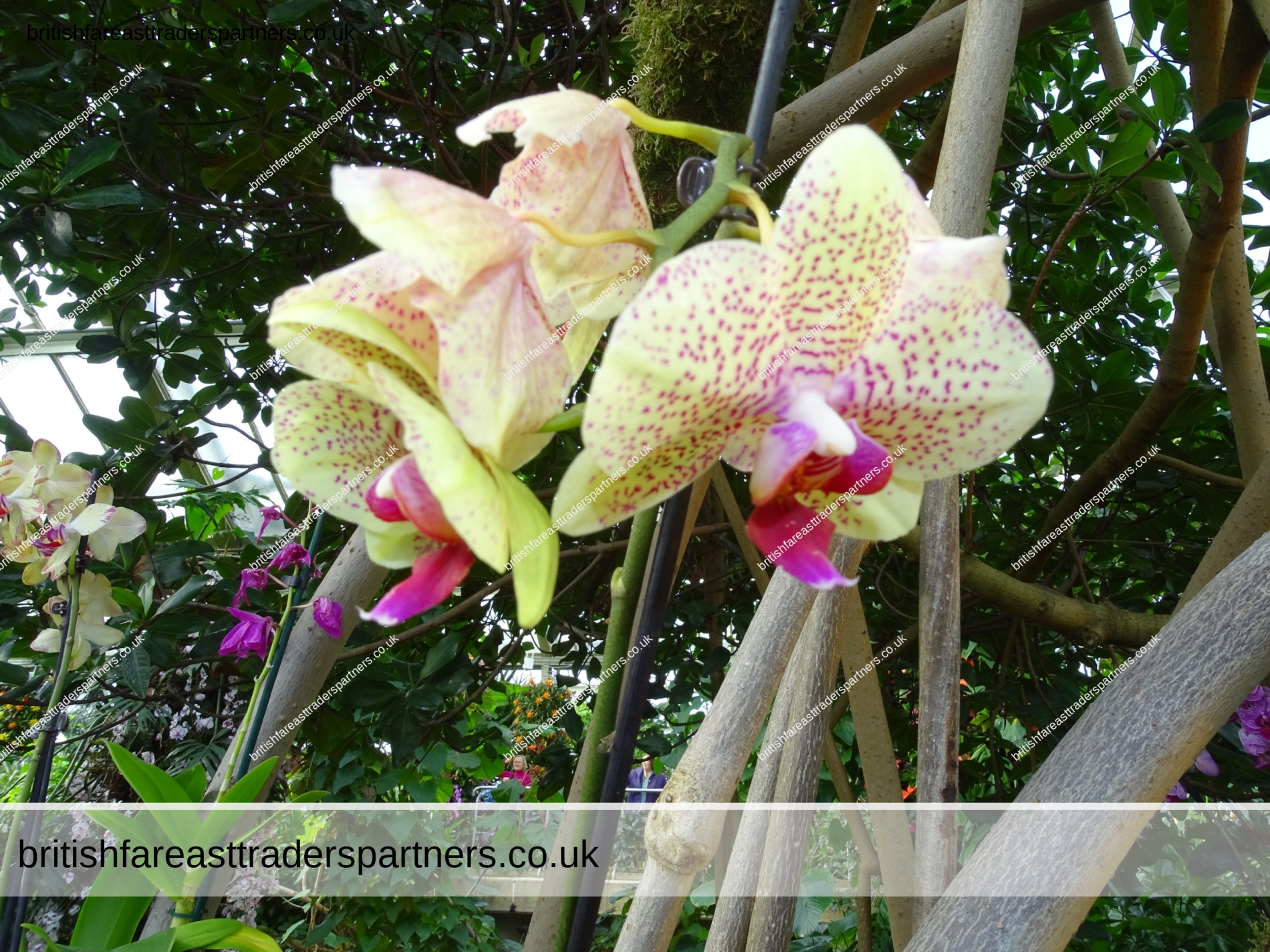
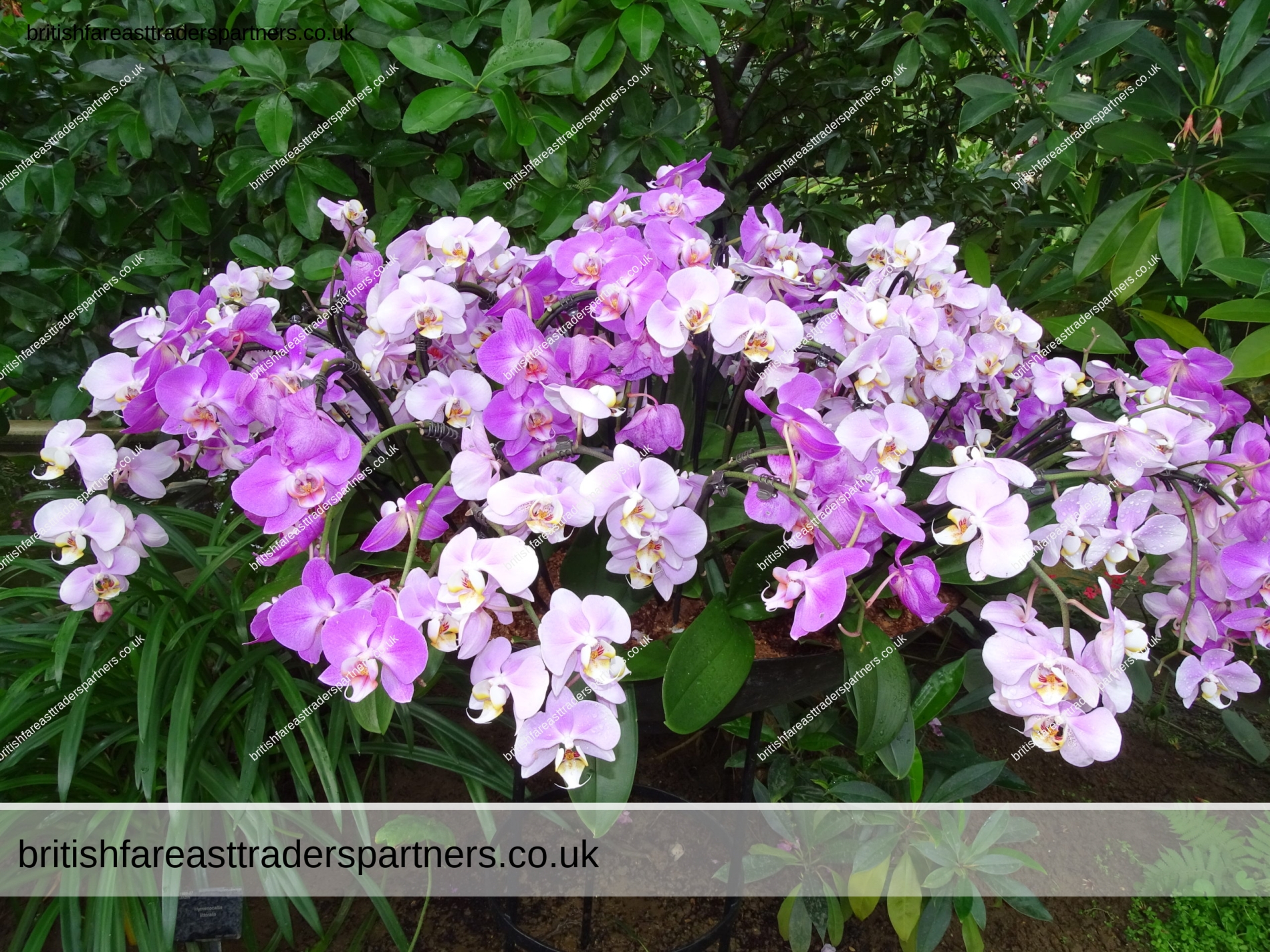
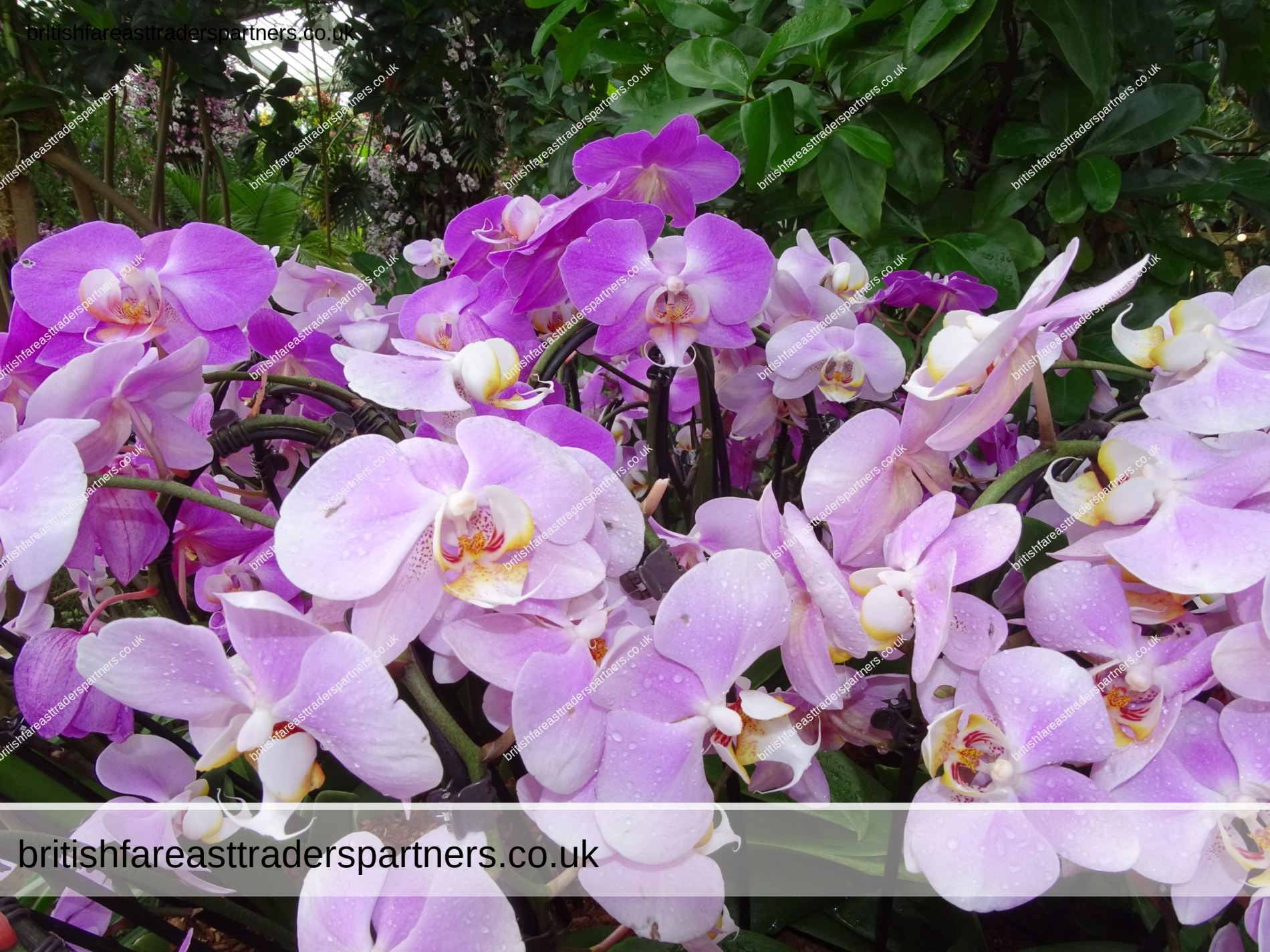
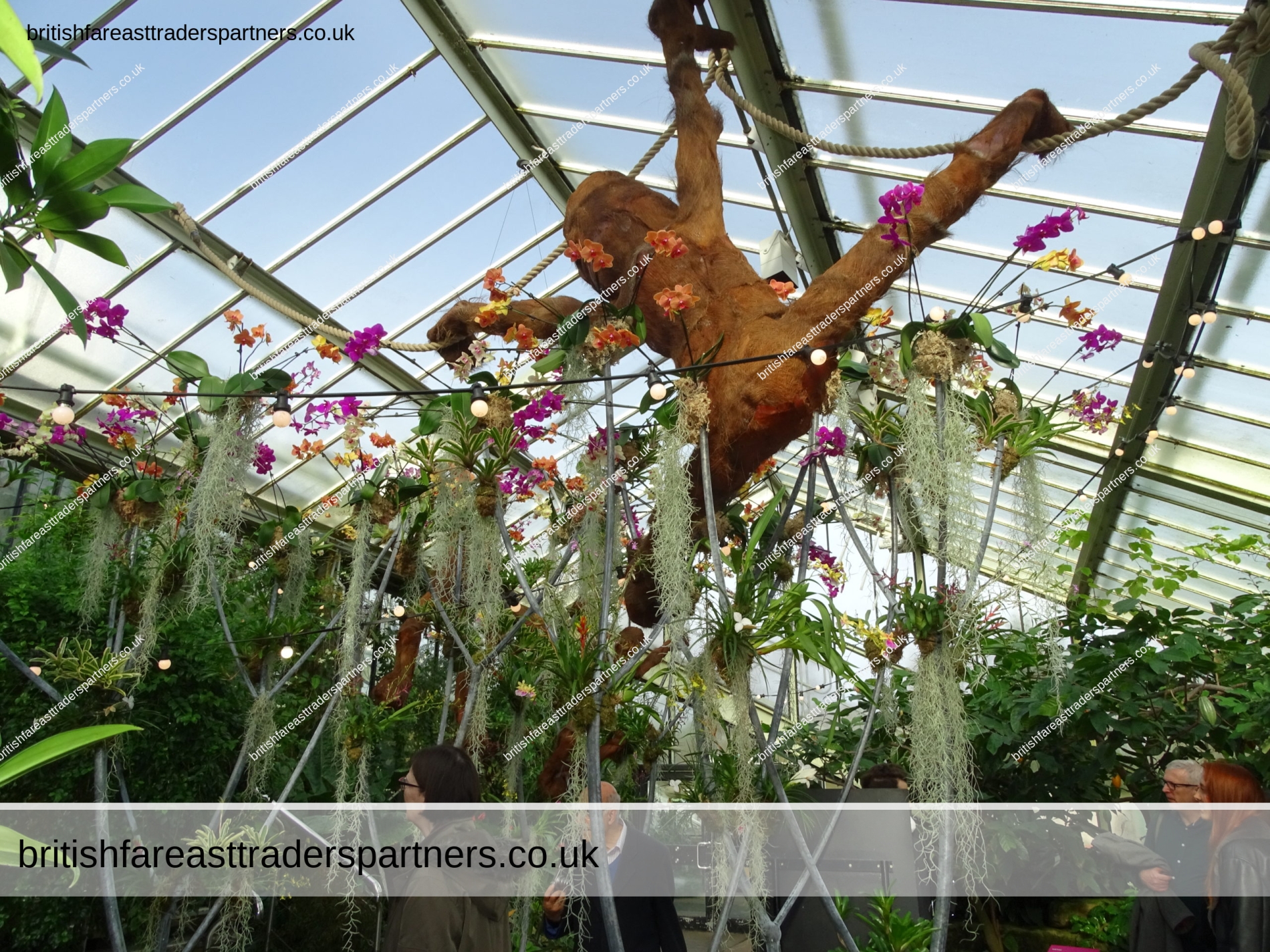
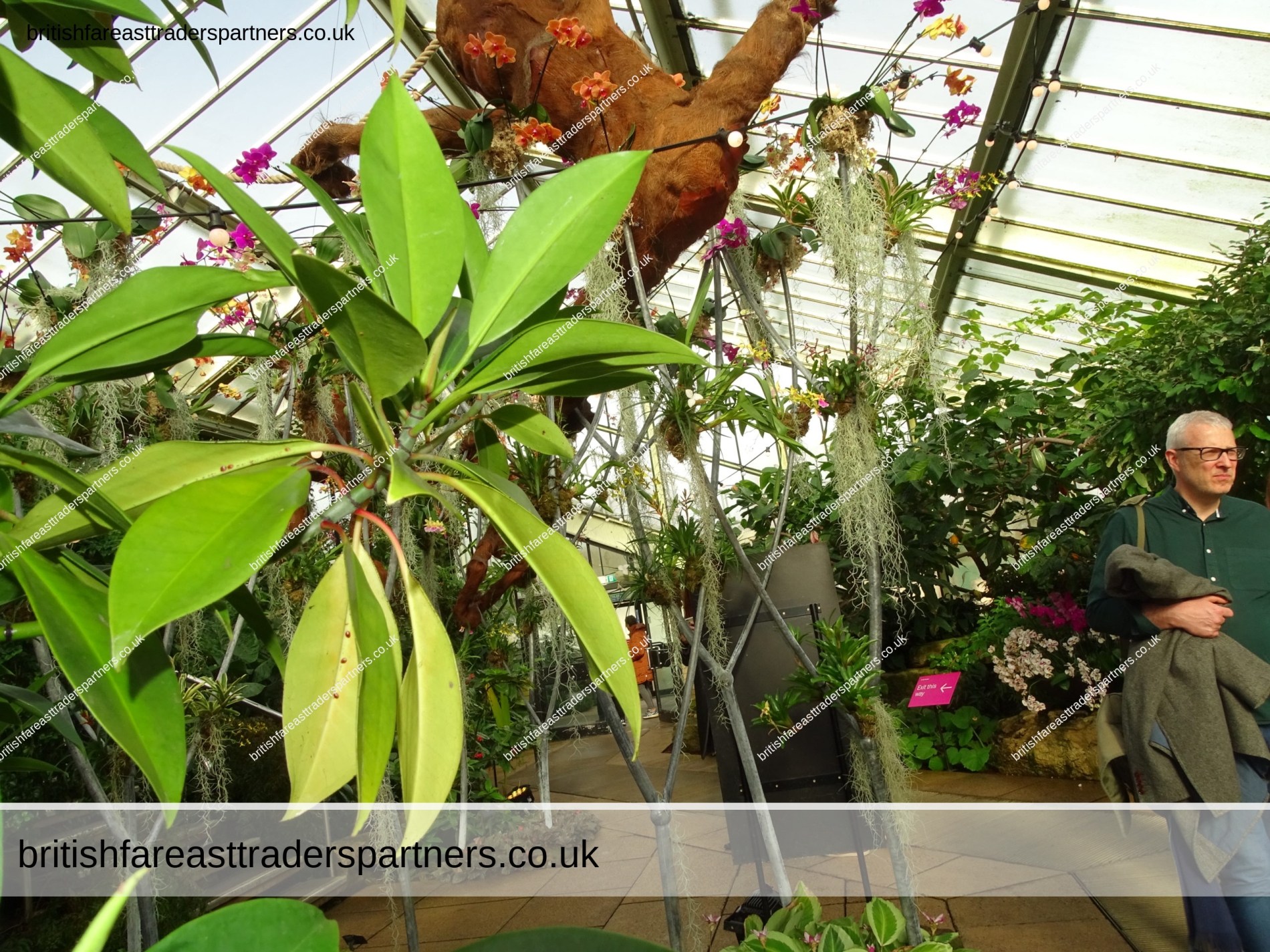
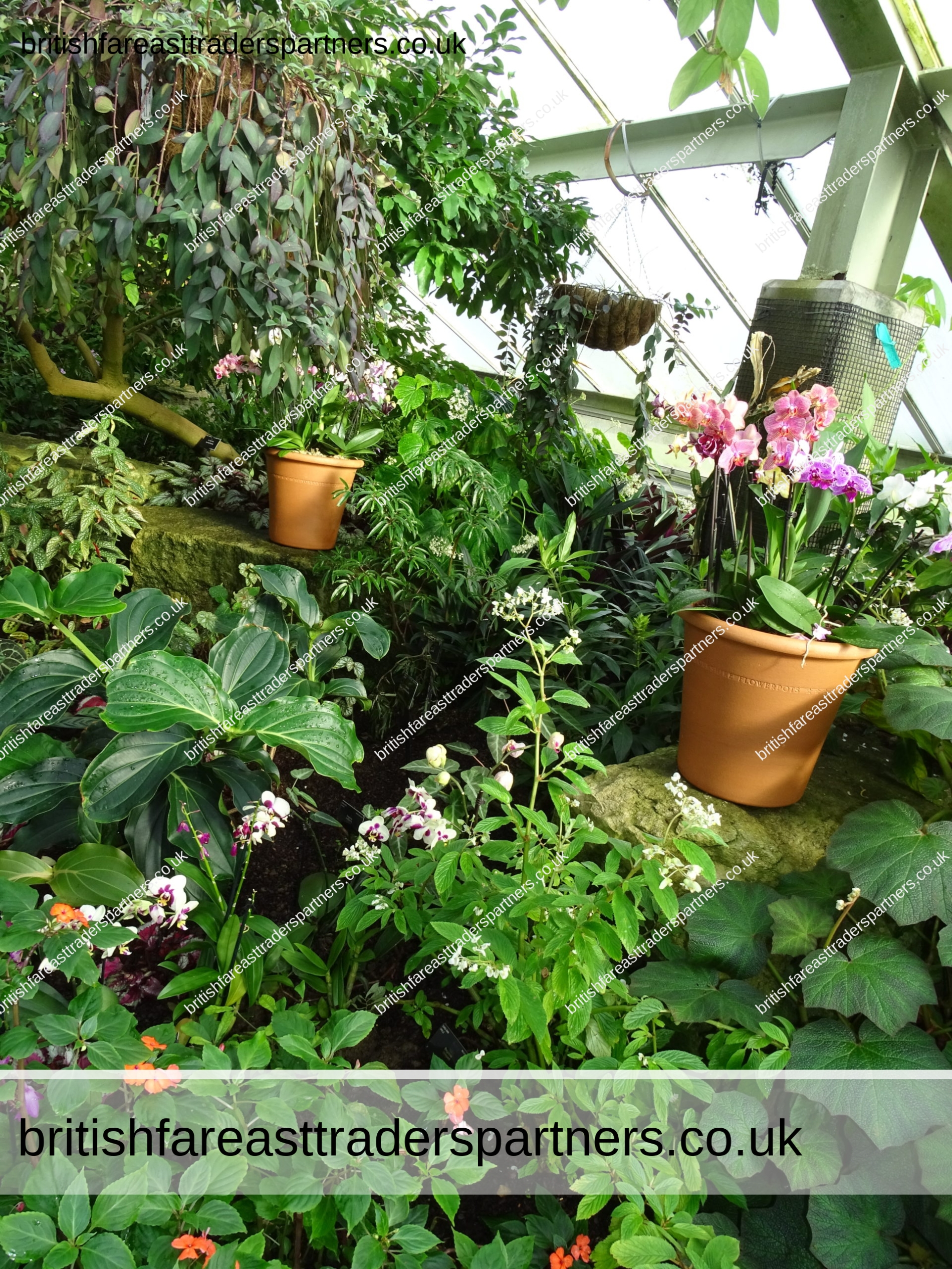
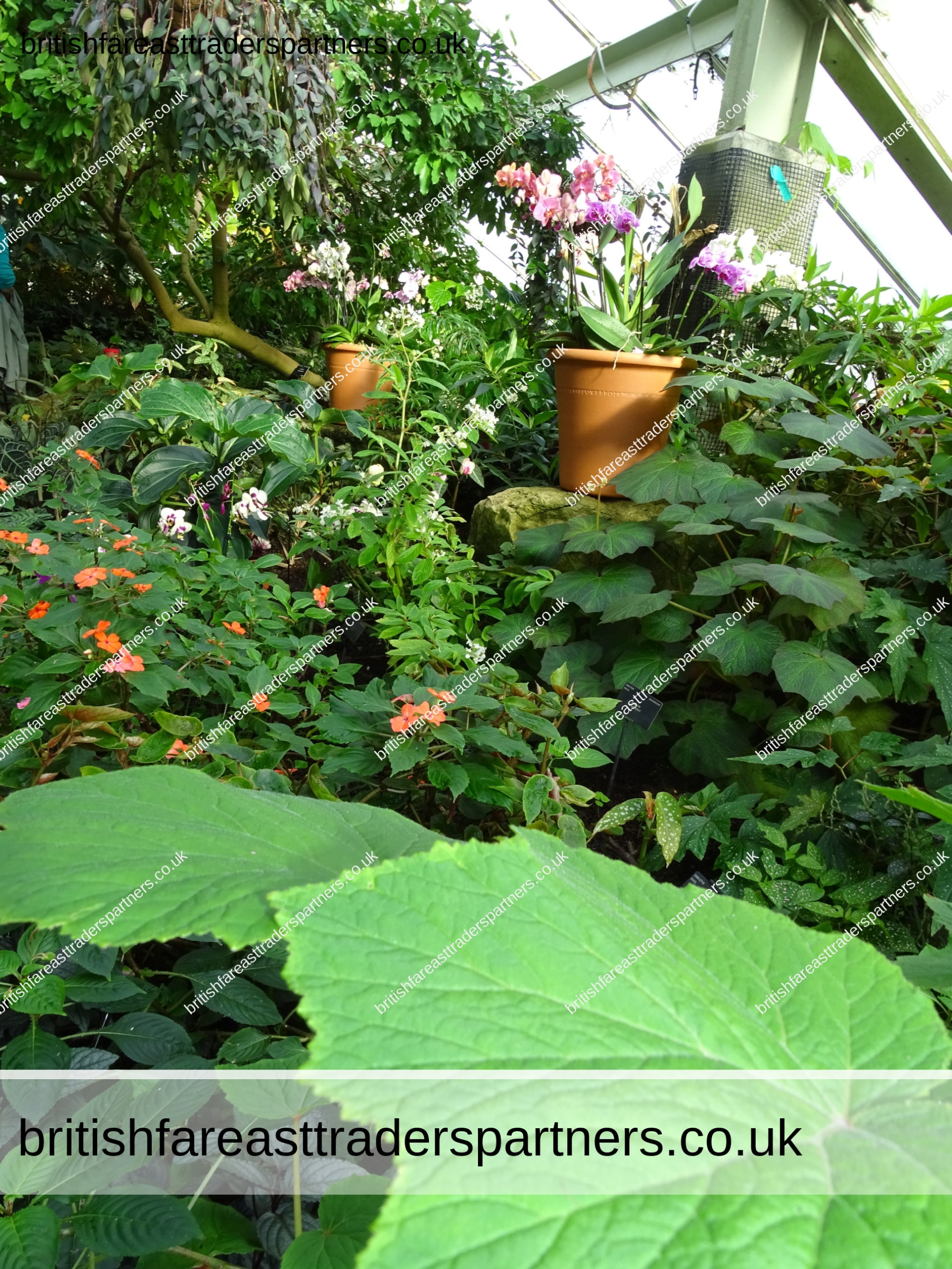
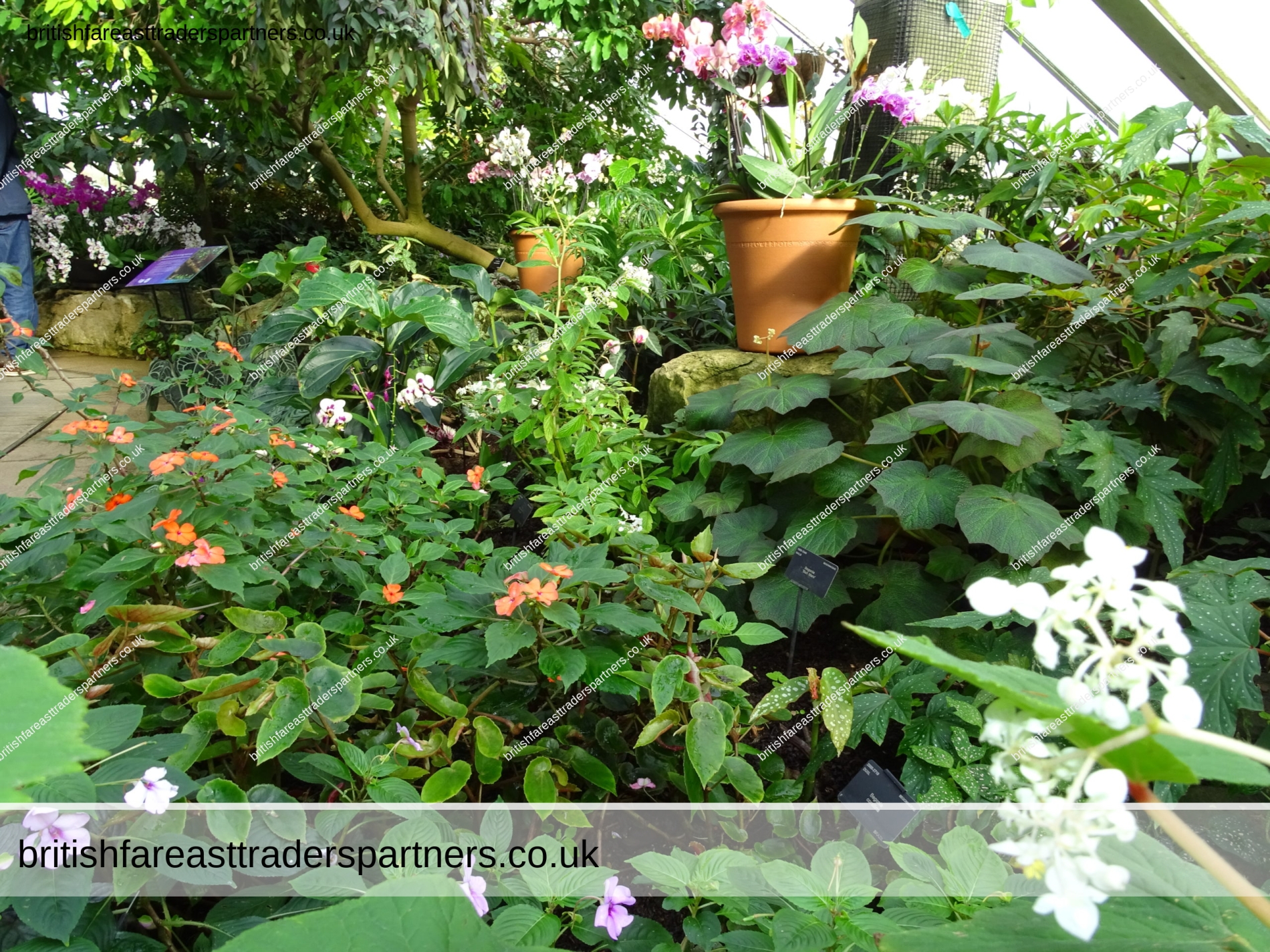
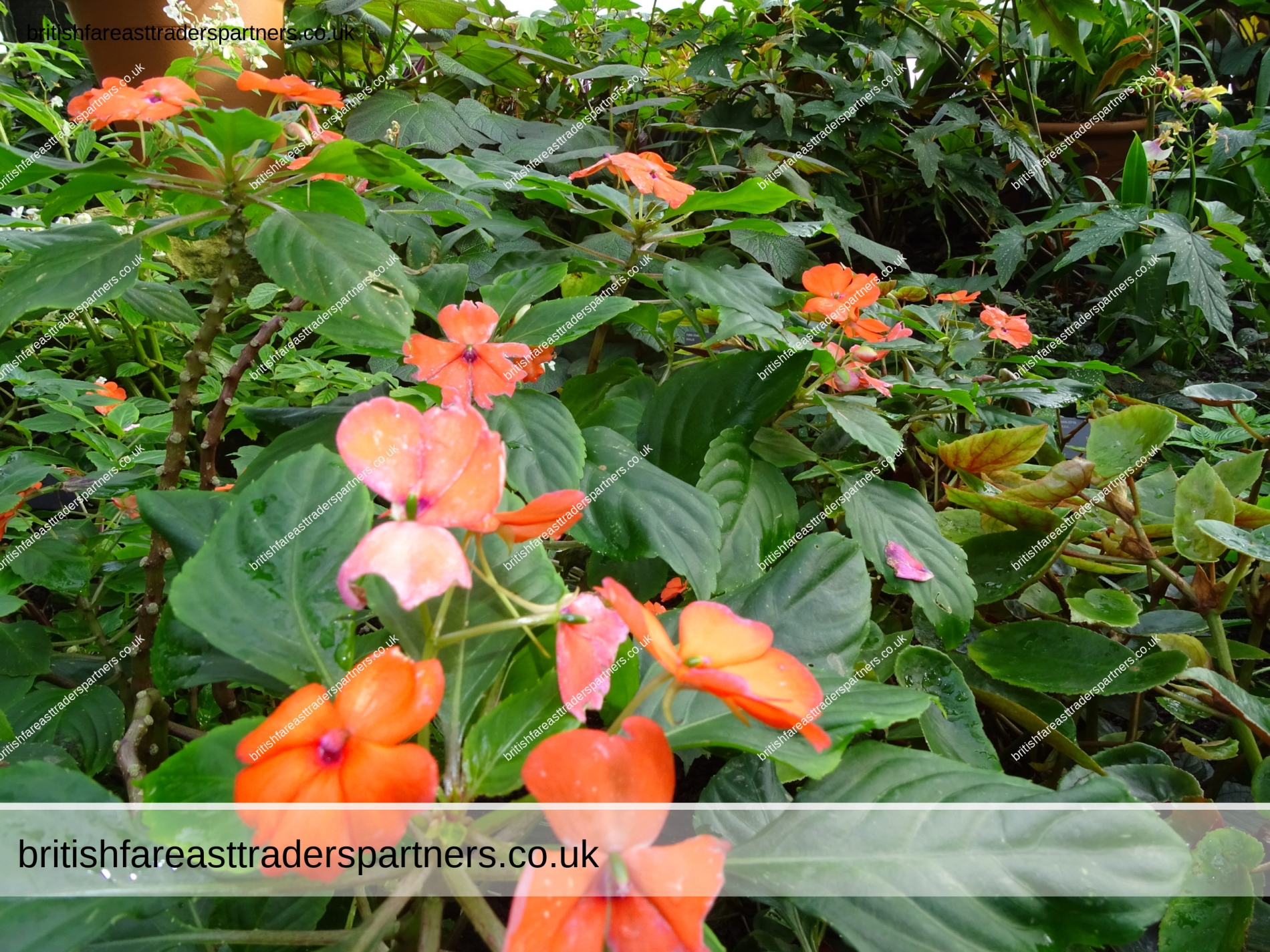
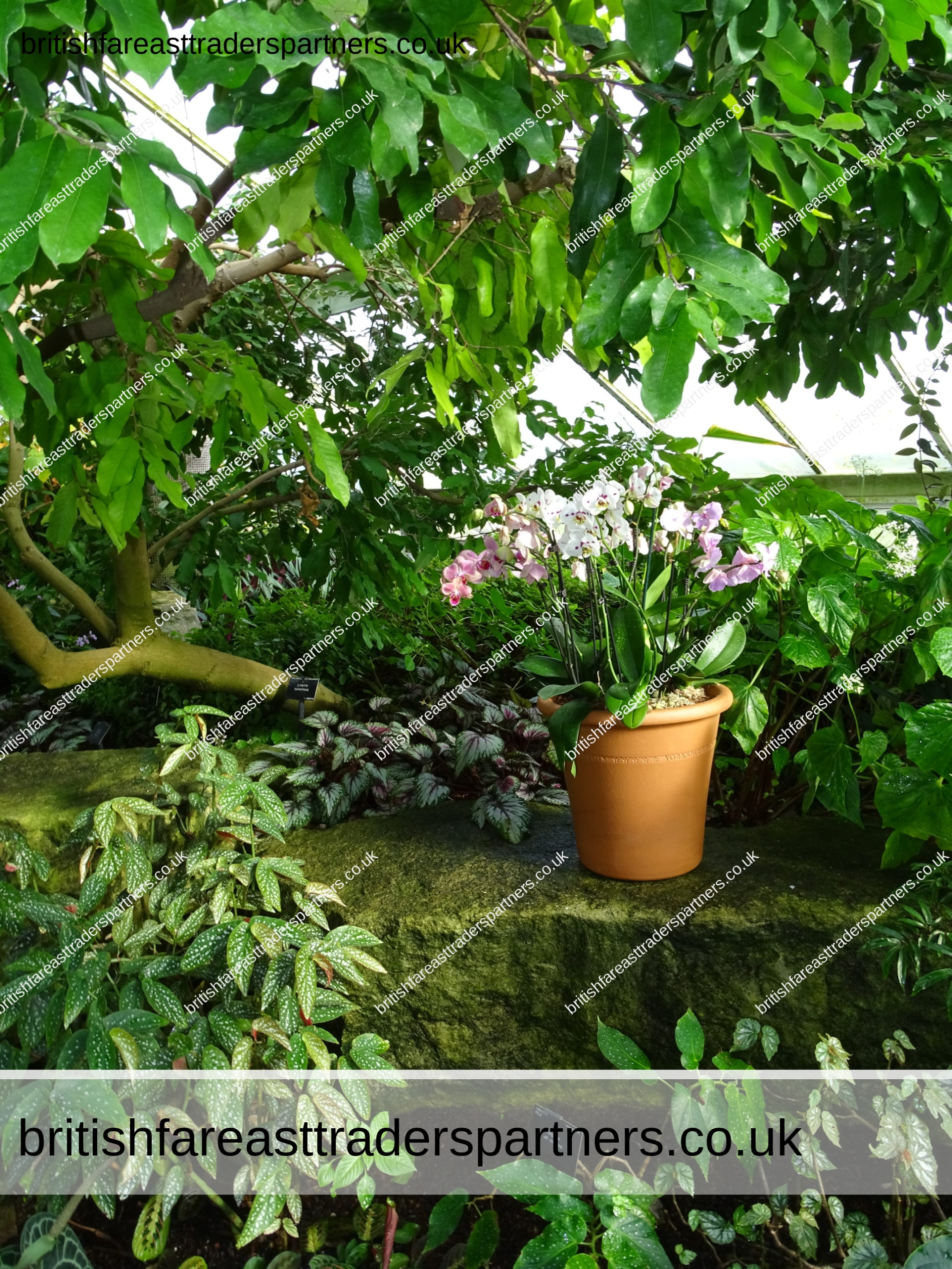
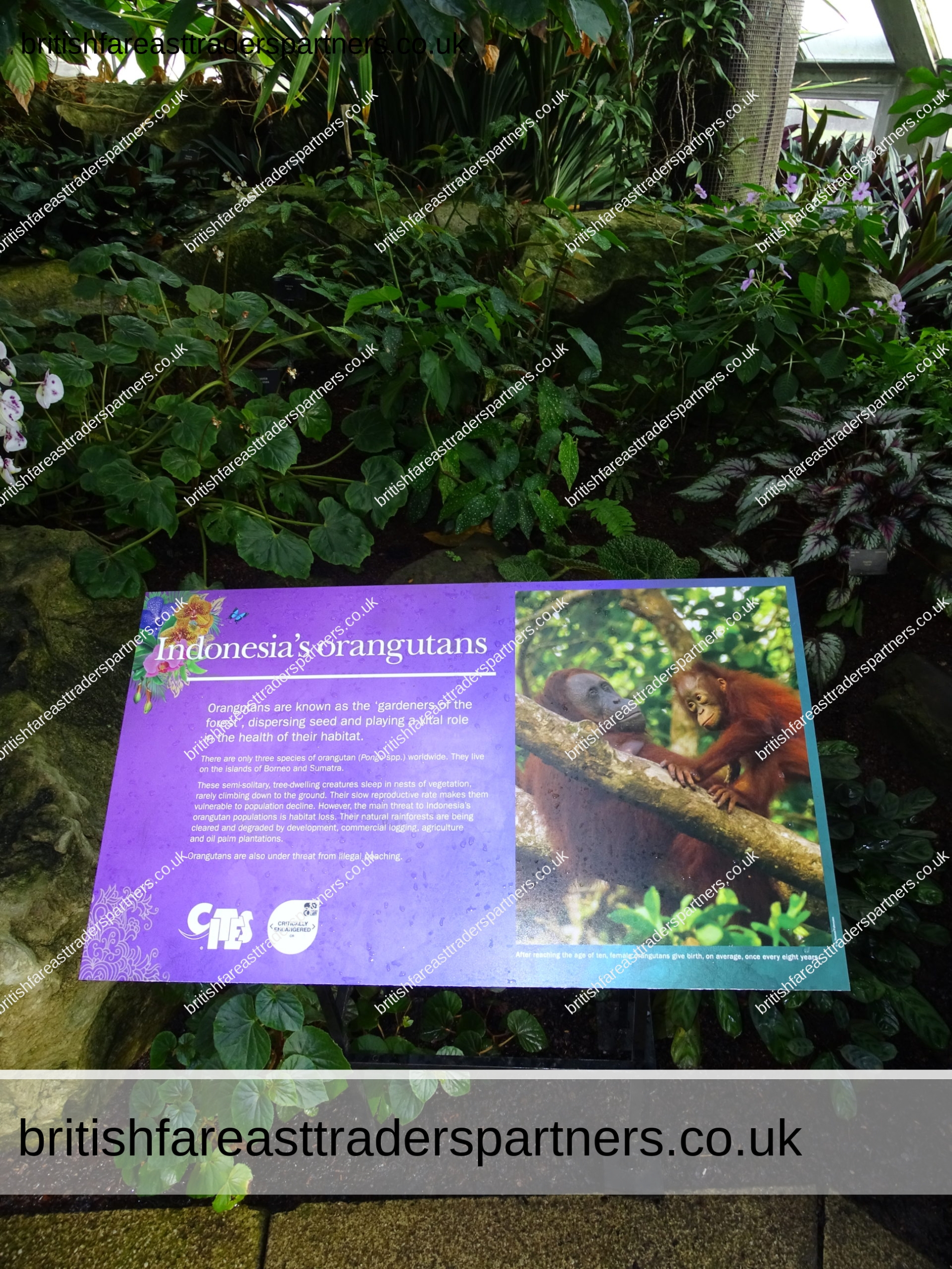
INDONESIA’S ORANGUTANS
Orange Orangutans are known as the ‘gardeners of the forest’, dispersing seed and playing a vital role in the health of their habitat.
There are only three species of Orangutan (Pongo spp.) worldwide.
They live on the Islands of Borneo and Sumatra.
These semi-solitary, tree dwelling creatures sleep in nests of vegetation,
rarely climbing down to the ground.
Their slow reproductive rate makes them vulnerable to population decline.
However, the main threat to Indonesia’s orangutan population is habitat loss.
Their natural rainforests are being cleared and degraded by development,
commercial logging, agriculture and oil palm plantations.
Orangutans are also under threat from illegal poaching.
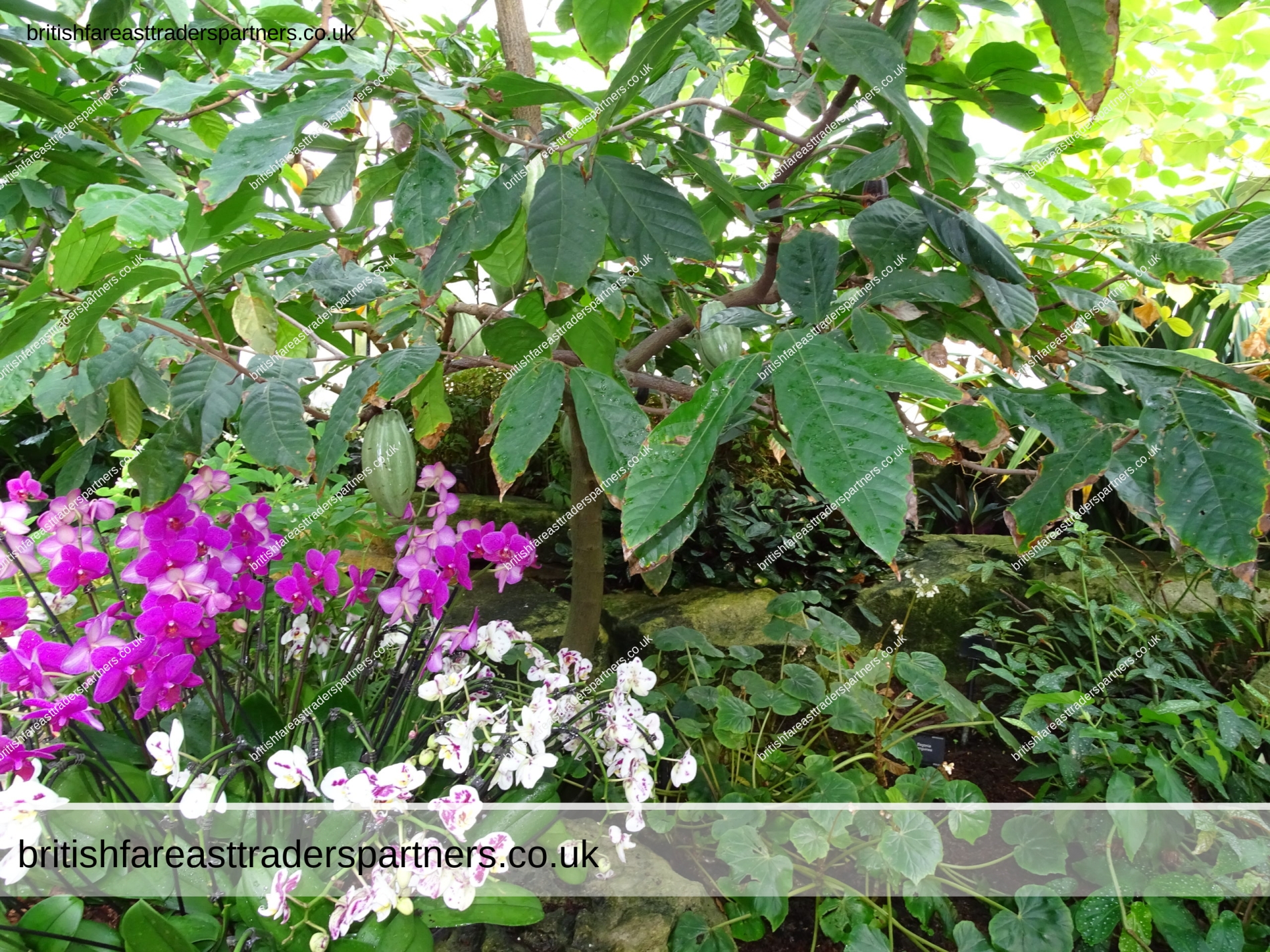
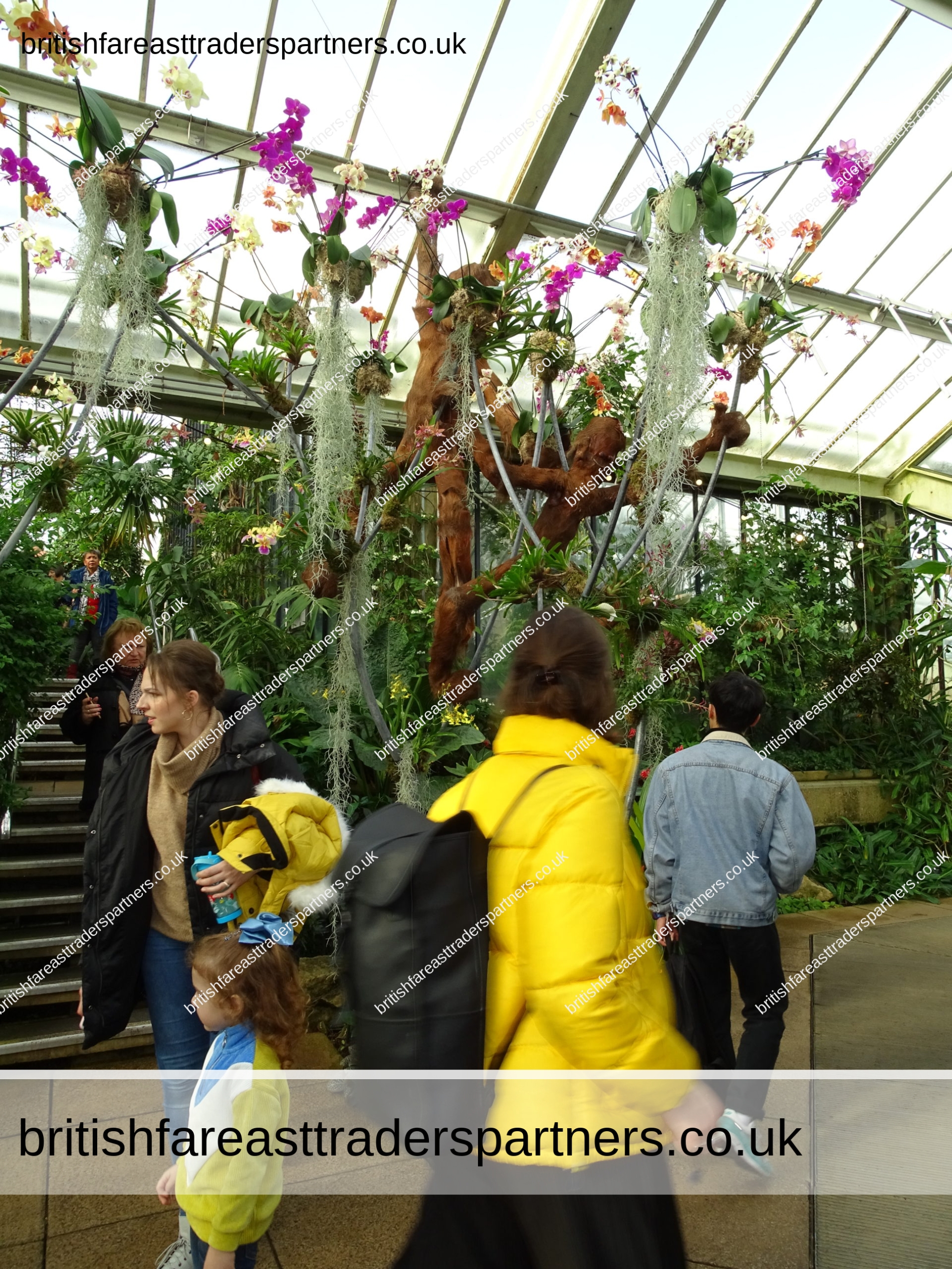
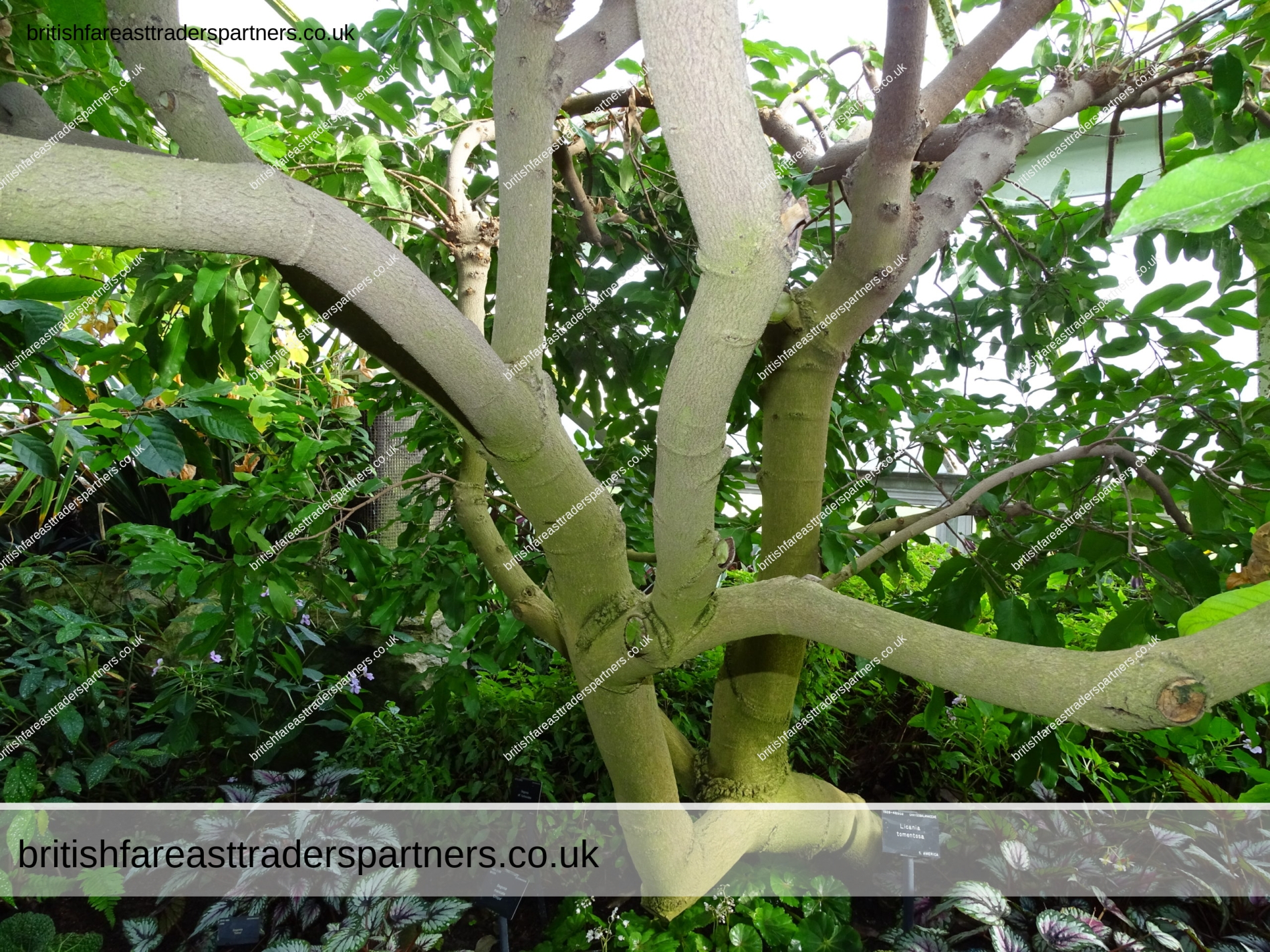
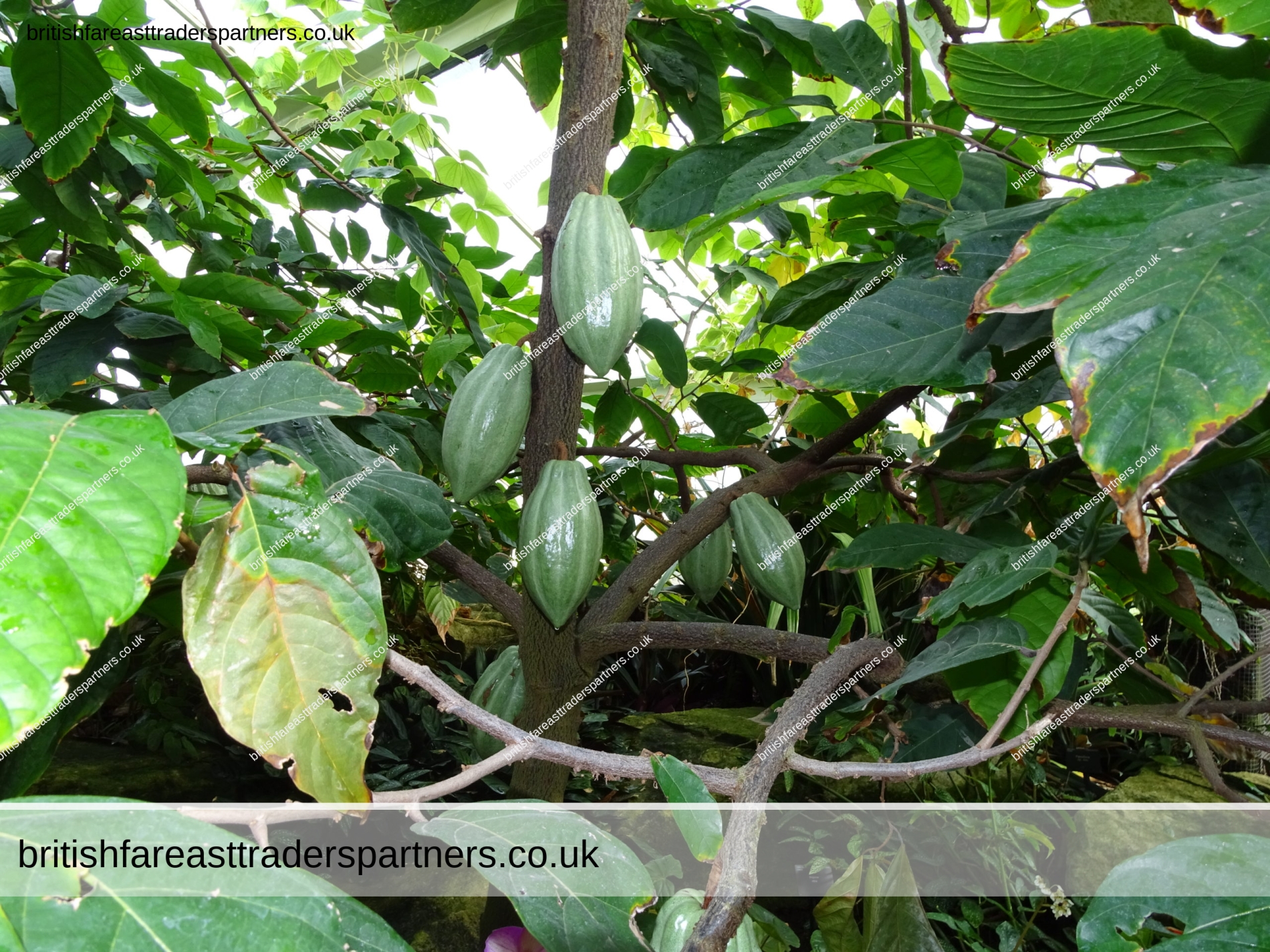
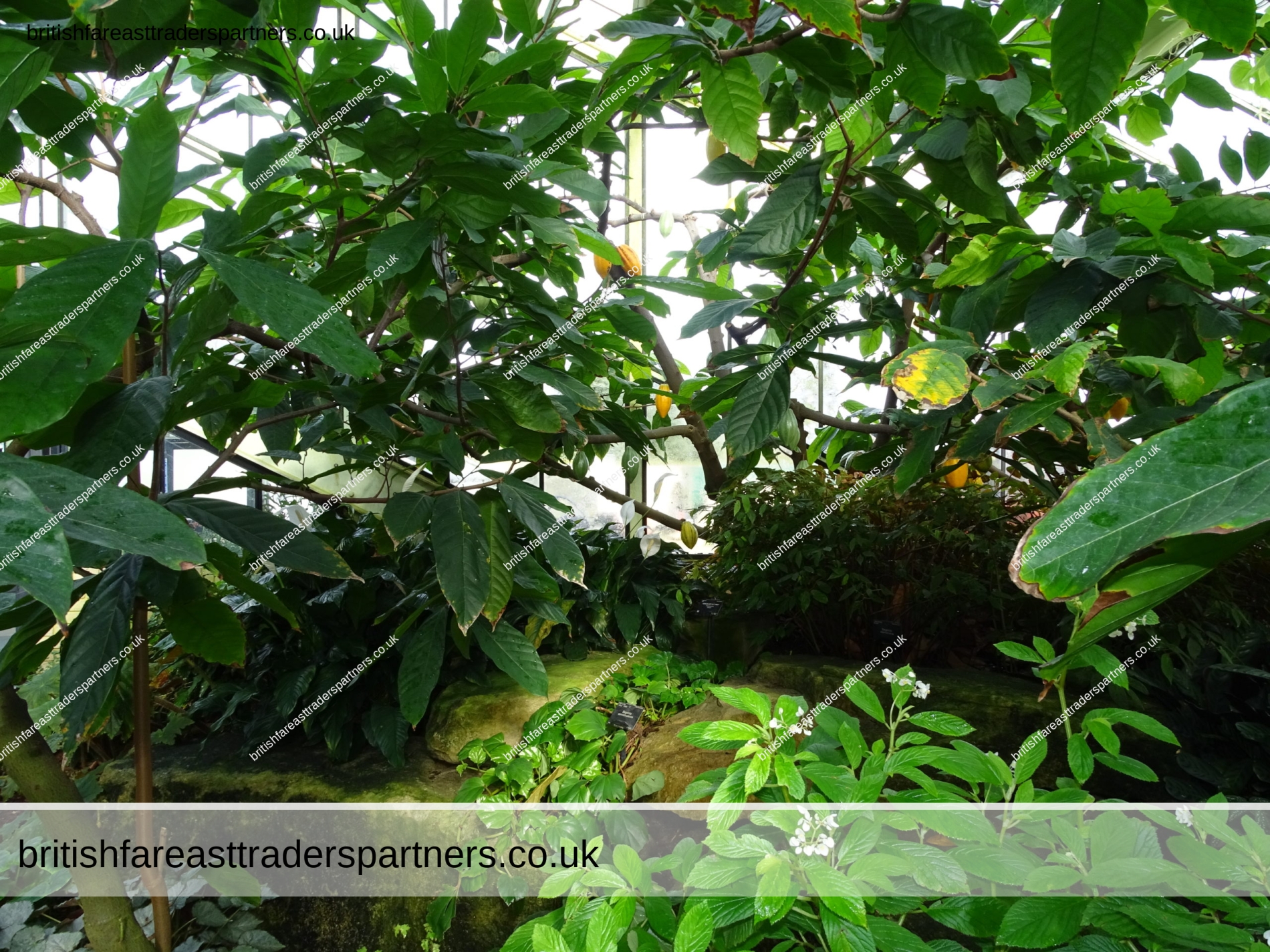
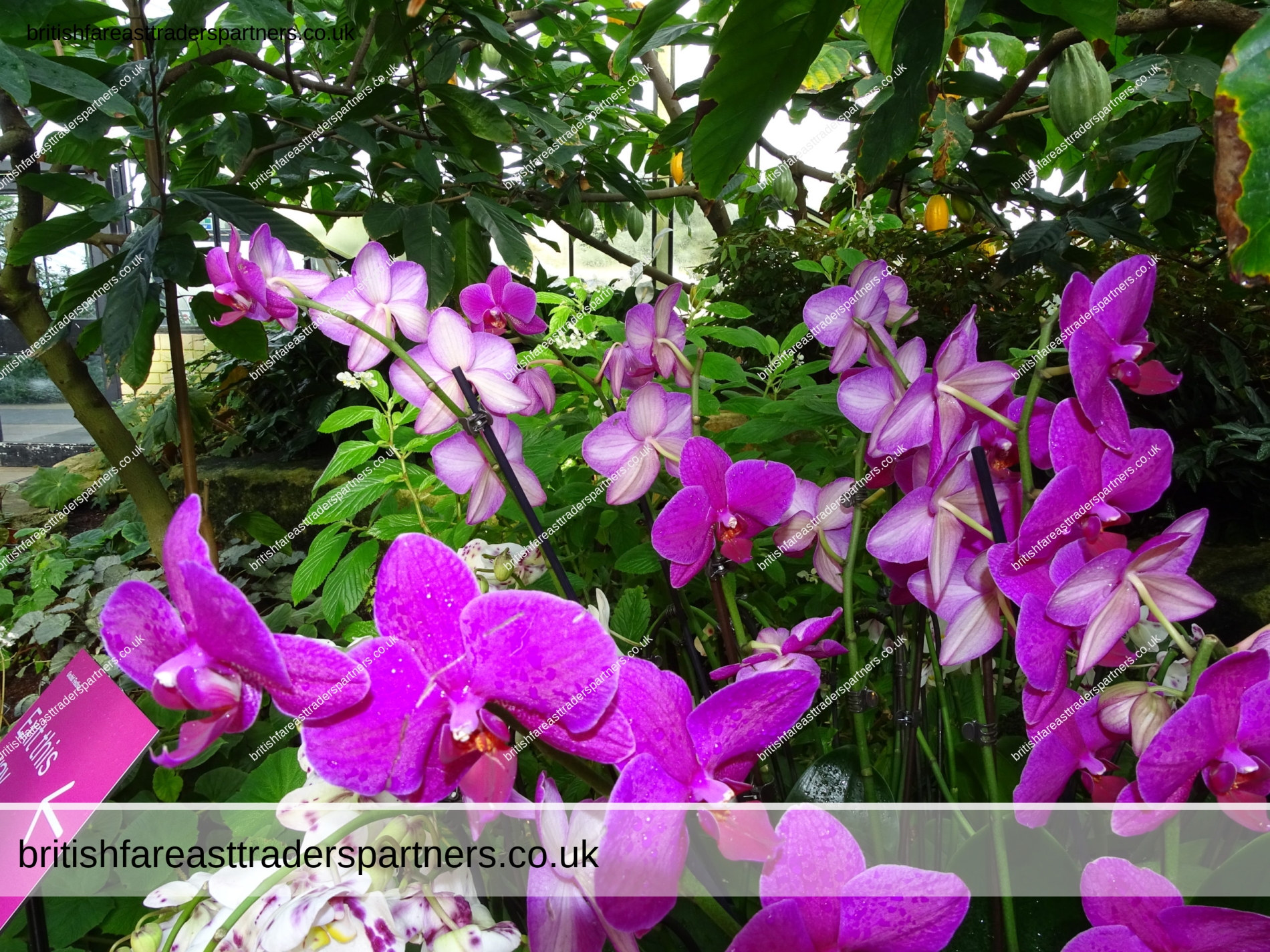
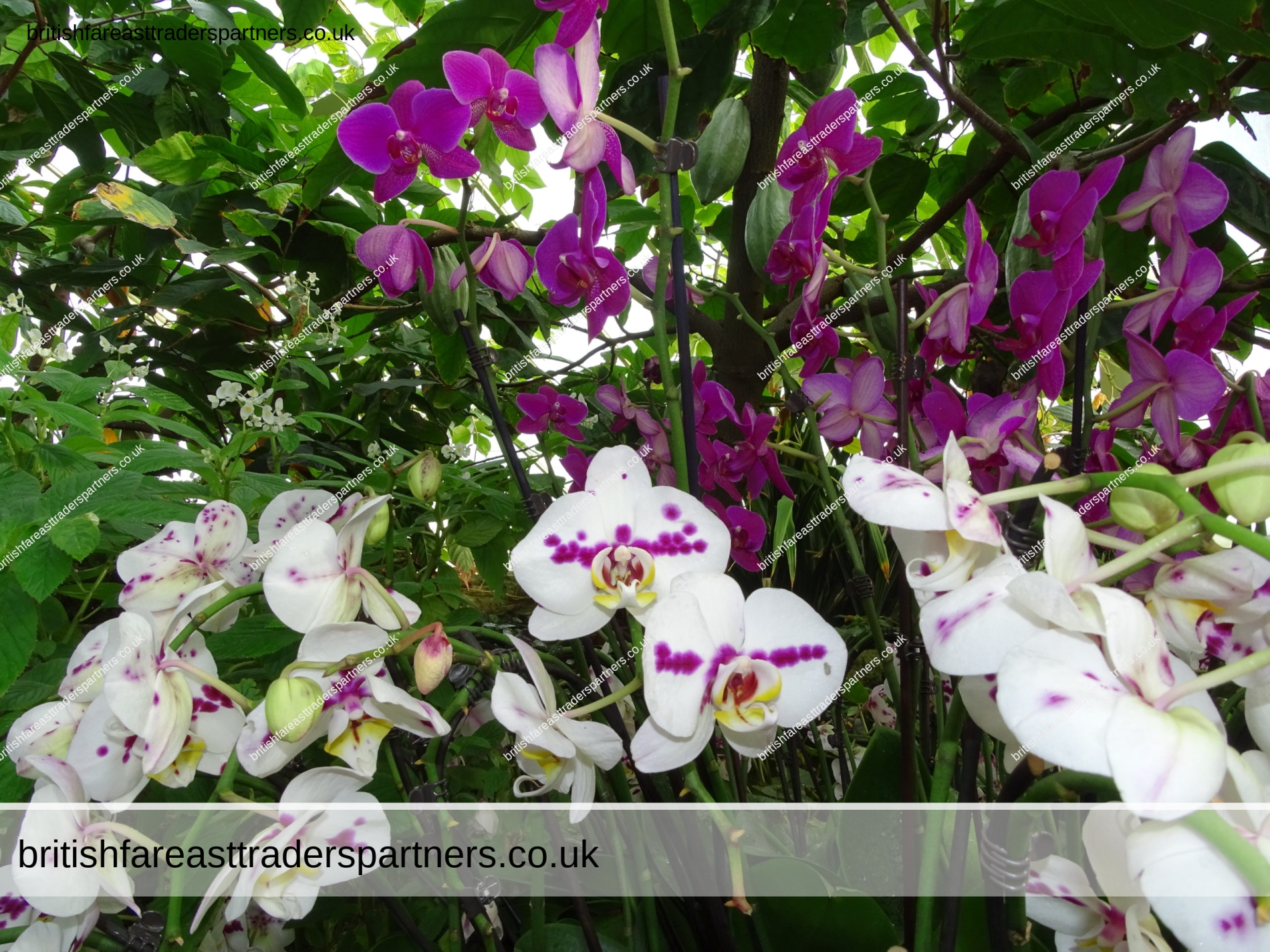
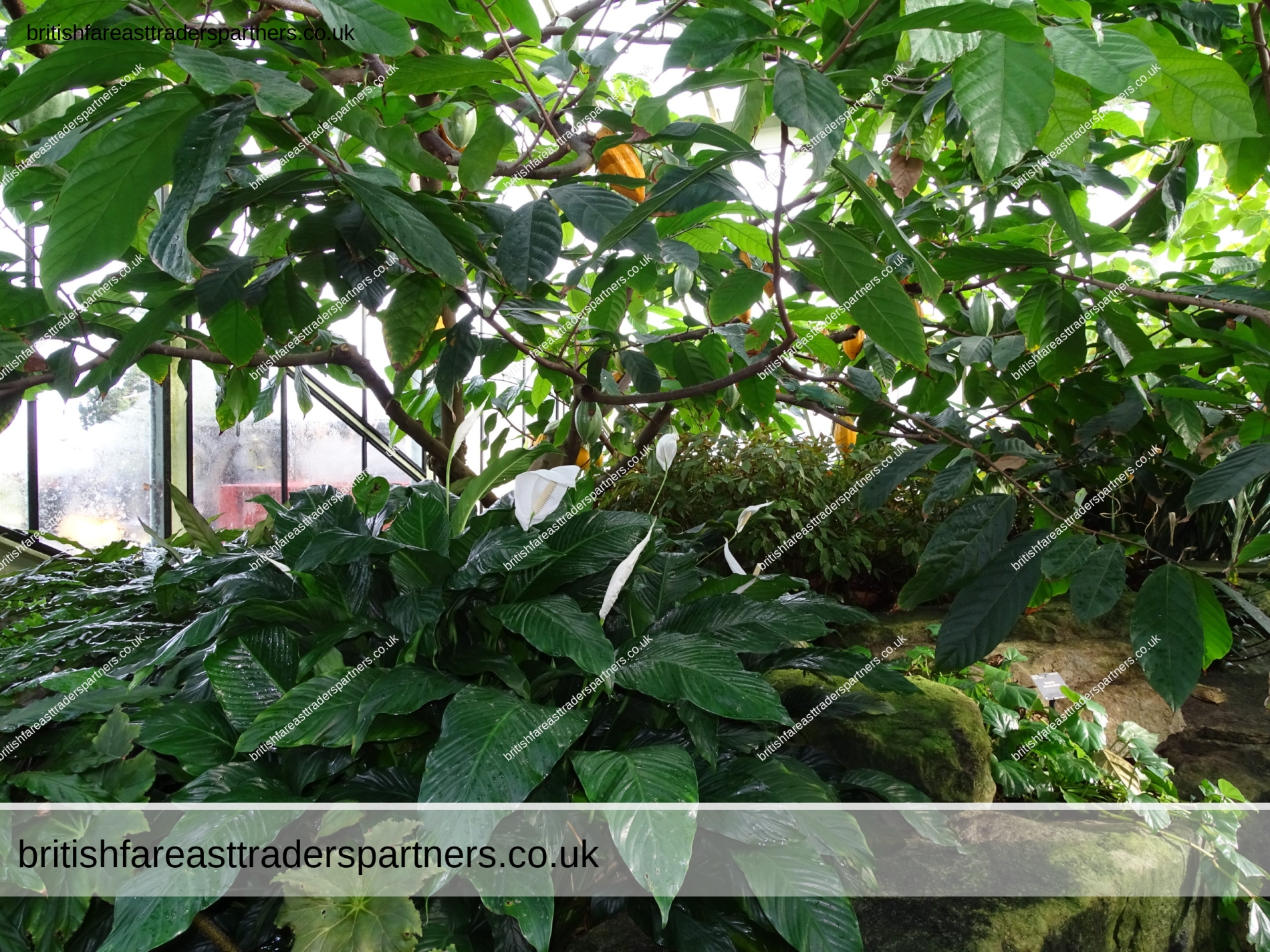
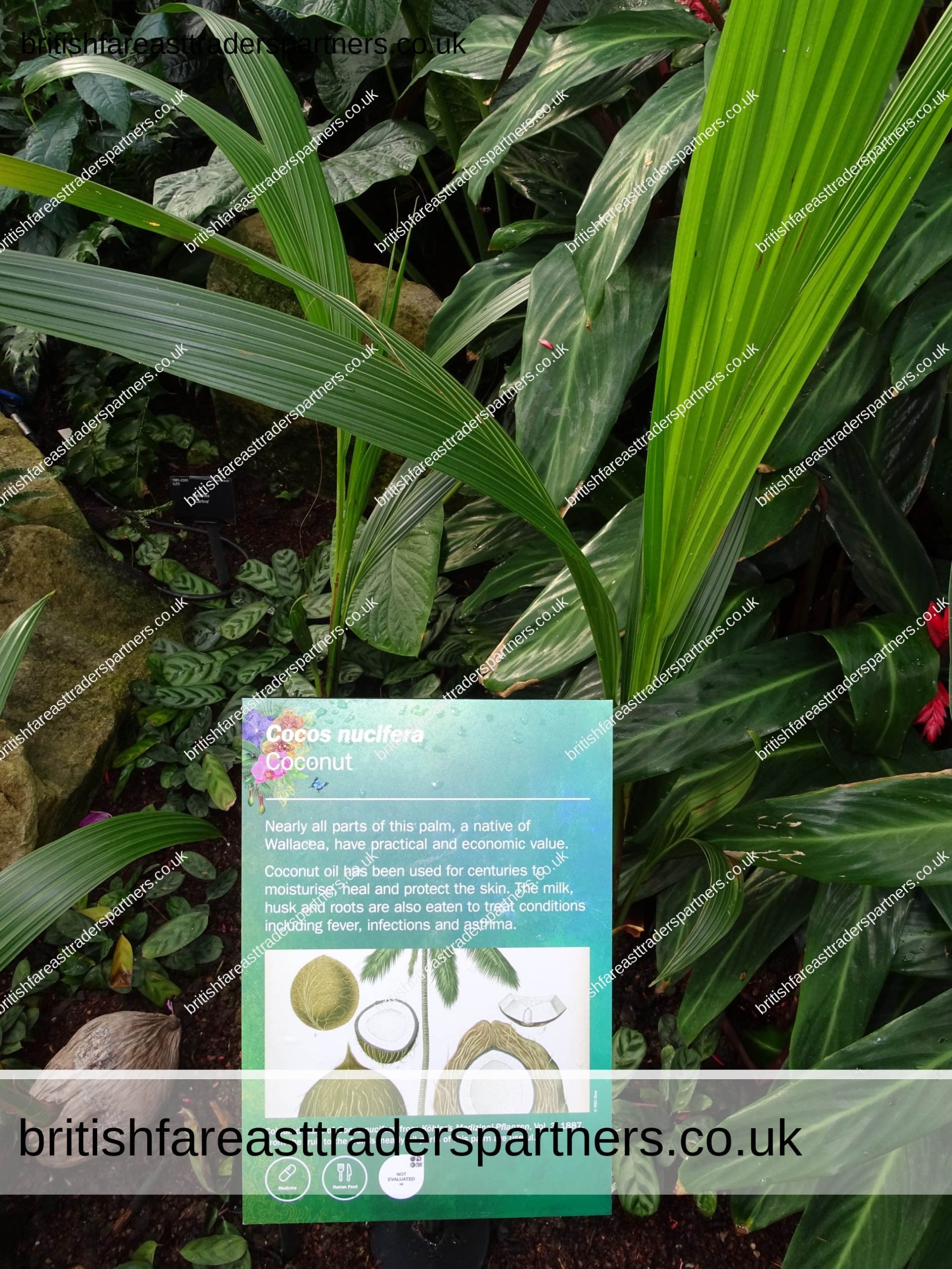
Cocos nucifera Coconut
Nearly all parts of this palm, a native of Wallacea, have practical and economic value.
Coconut oil has been used for centuries to moisturise, heal and protect the skin.
The milk, husk and roots are also eaten
to treat conditions including fever, infections and asthma.
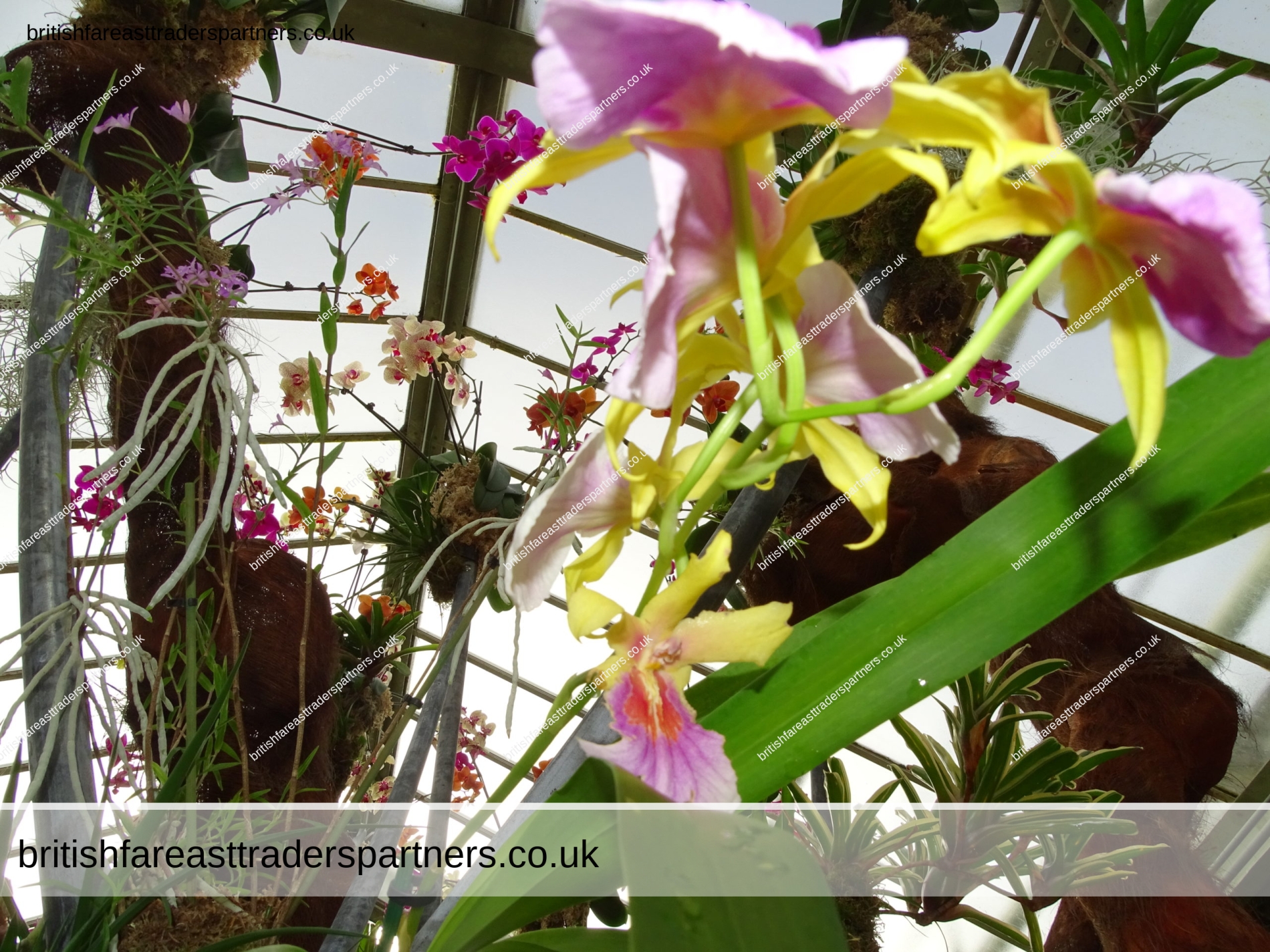
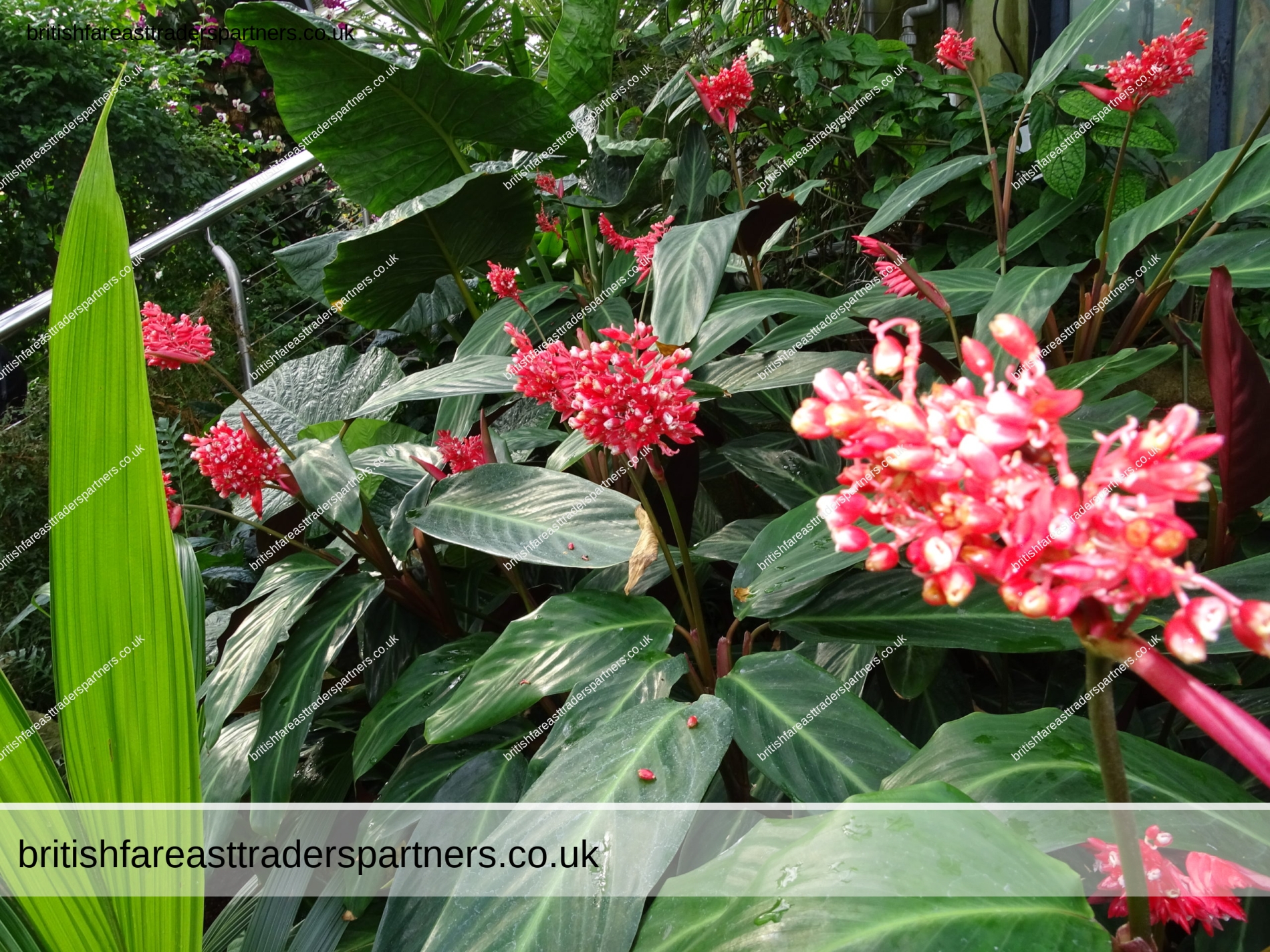
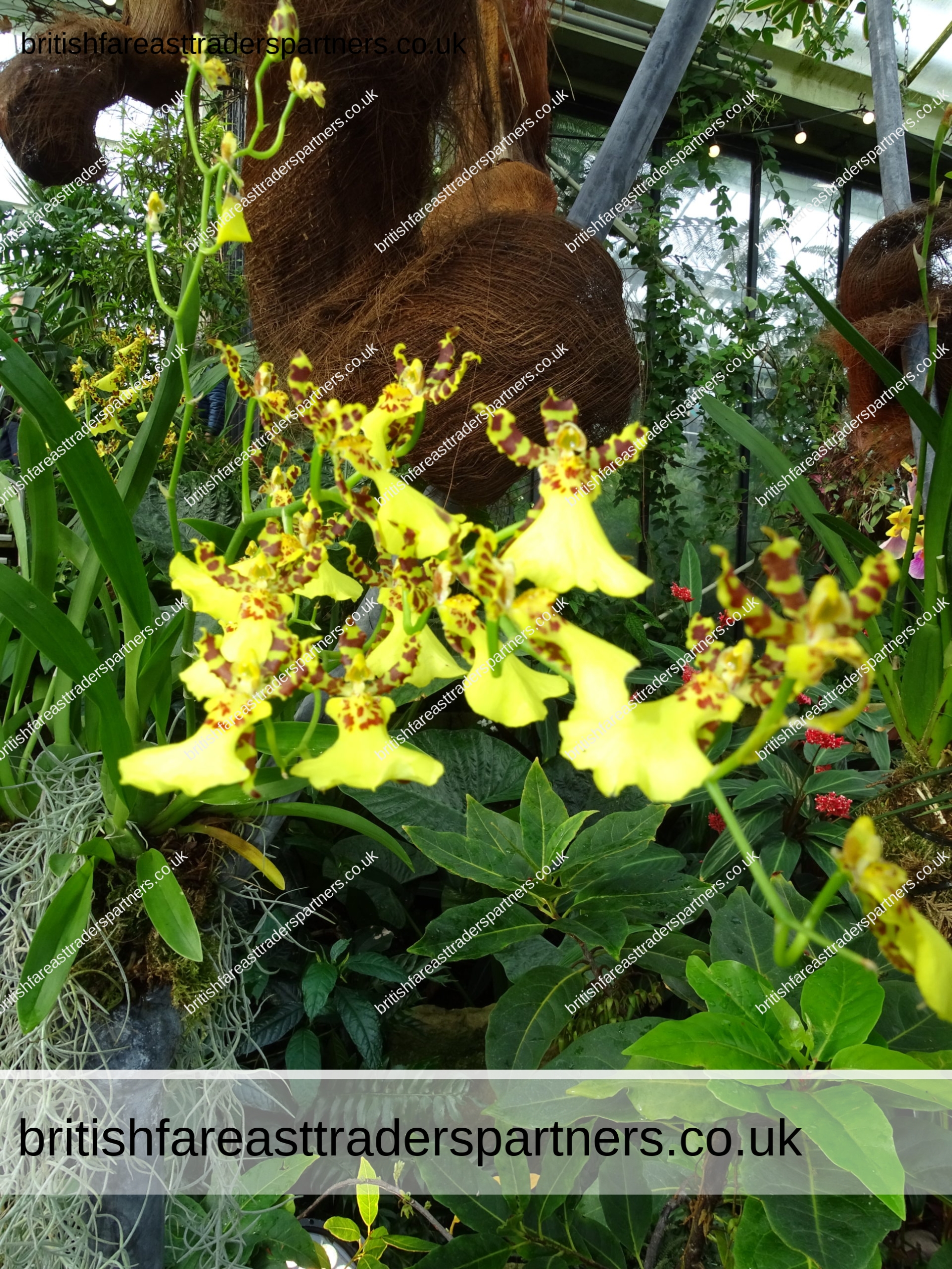
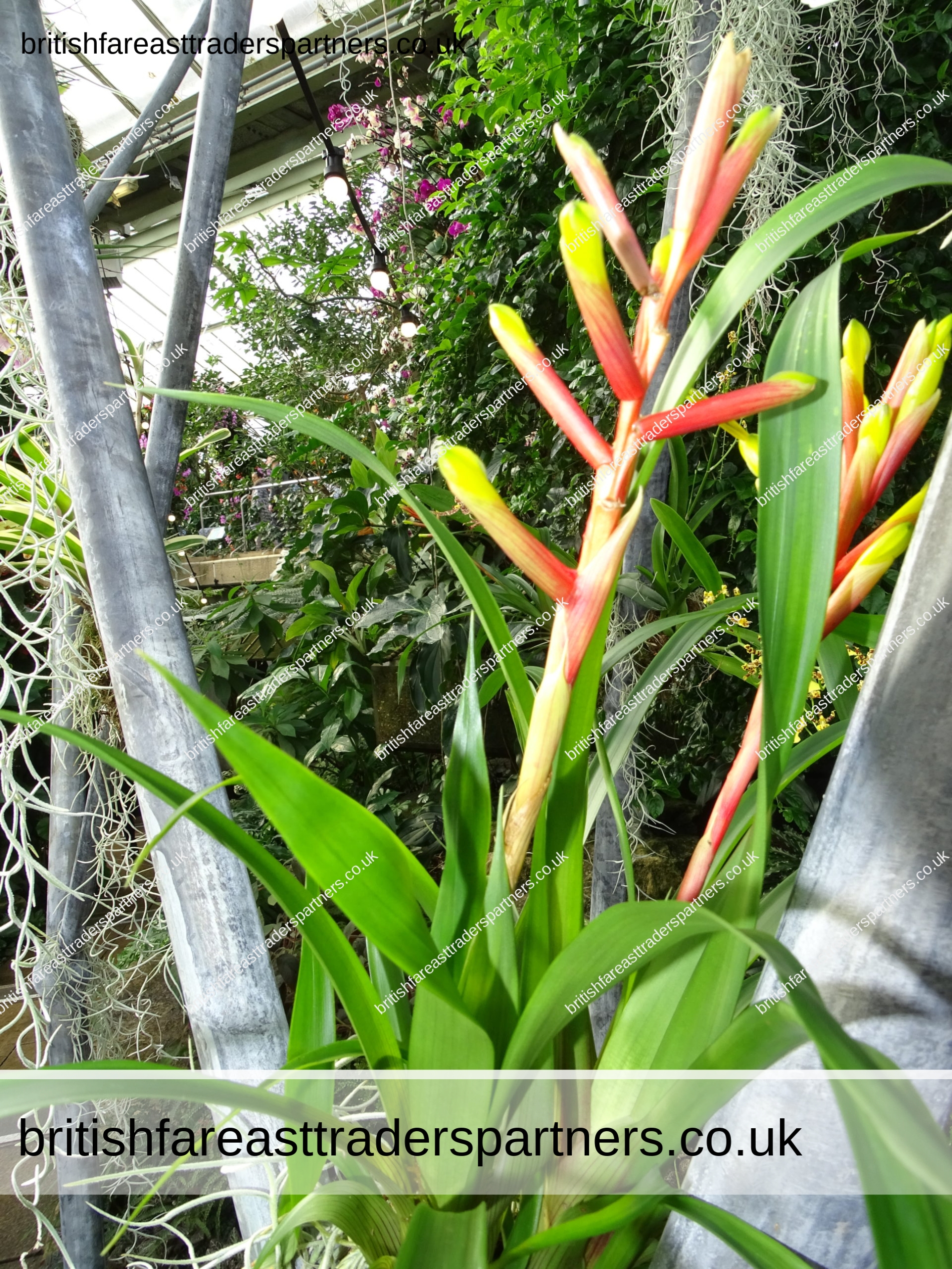
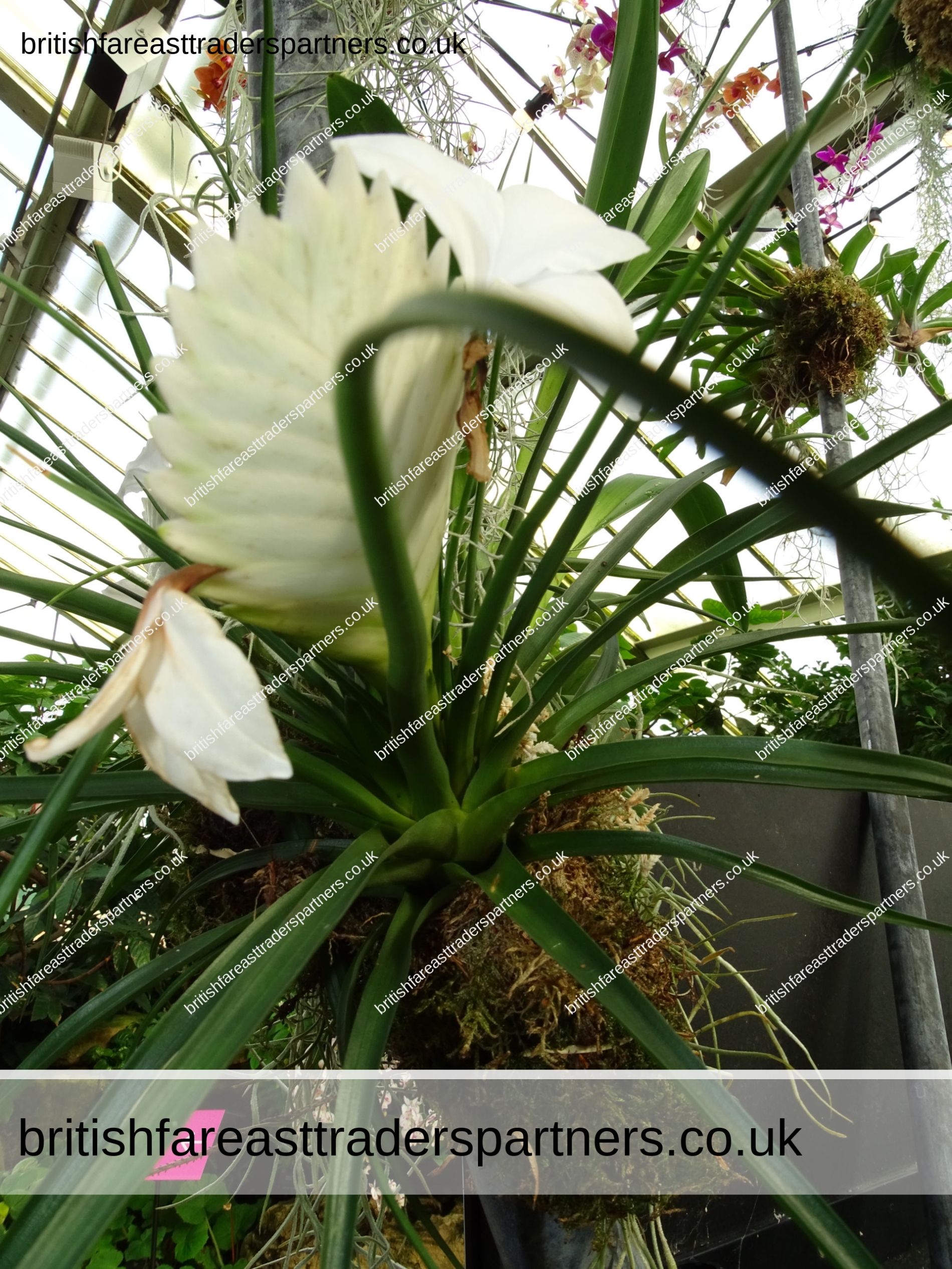
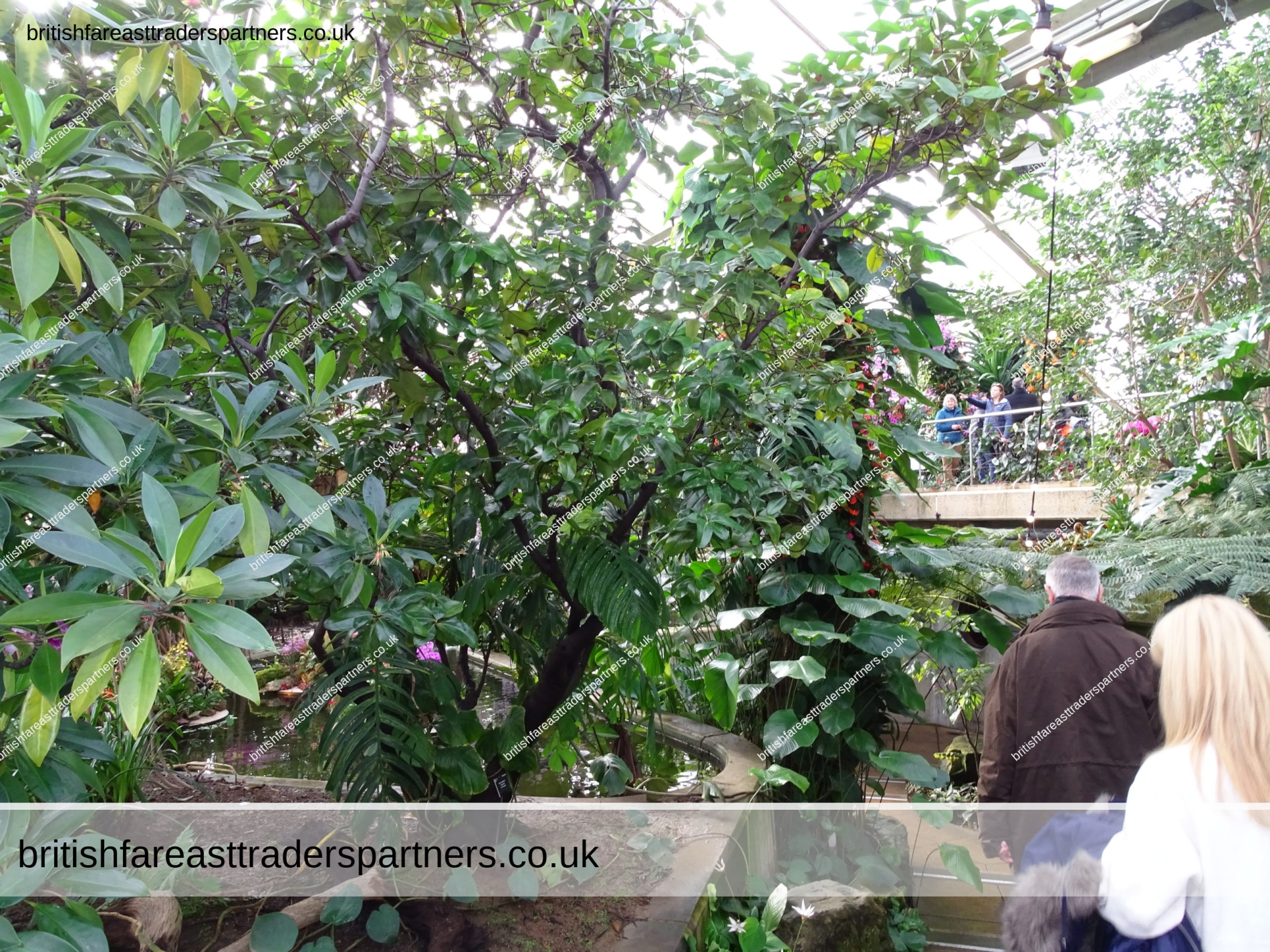
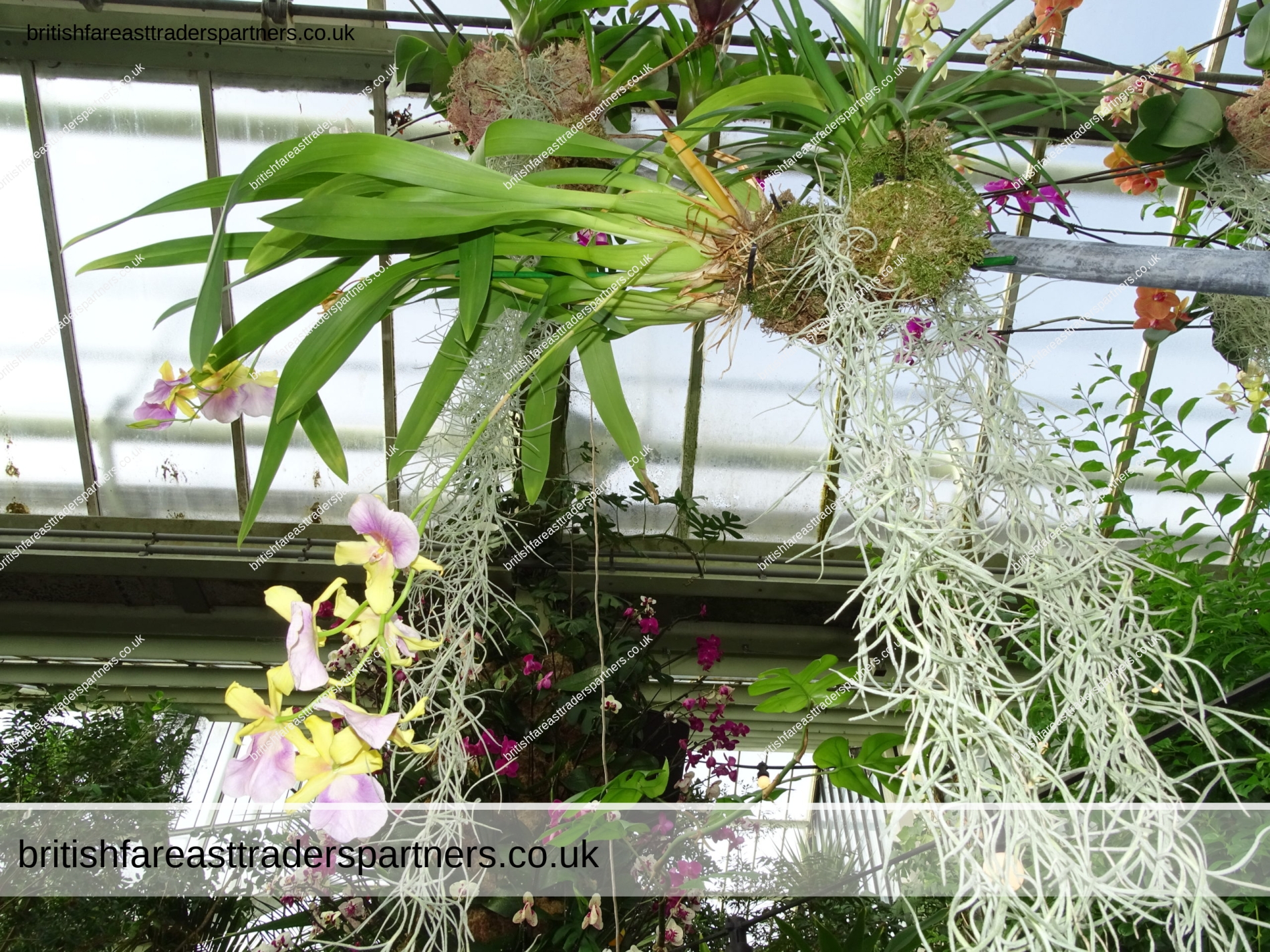
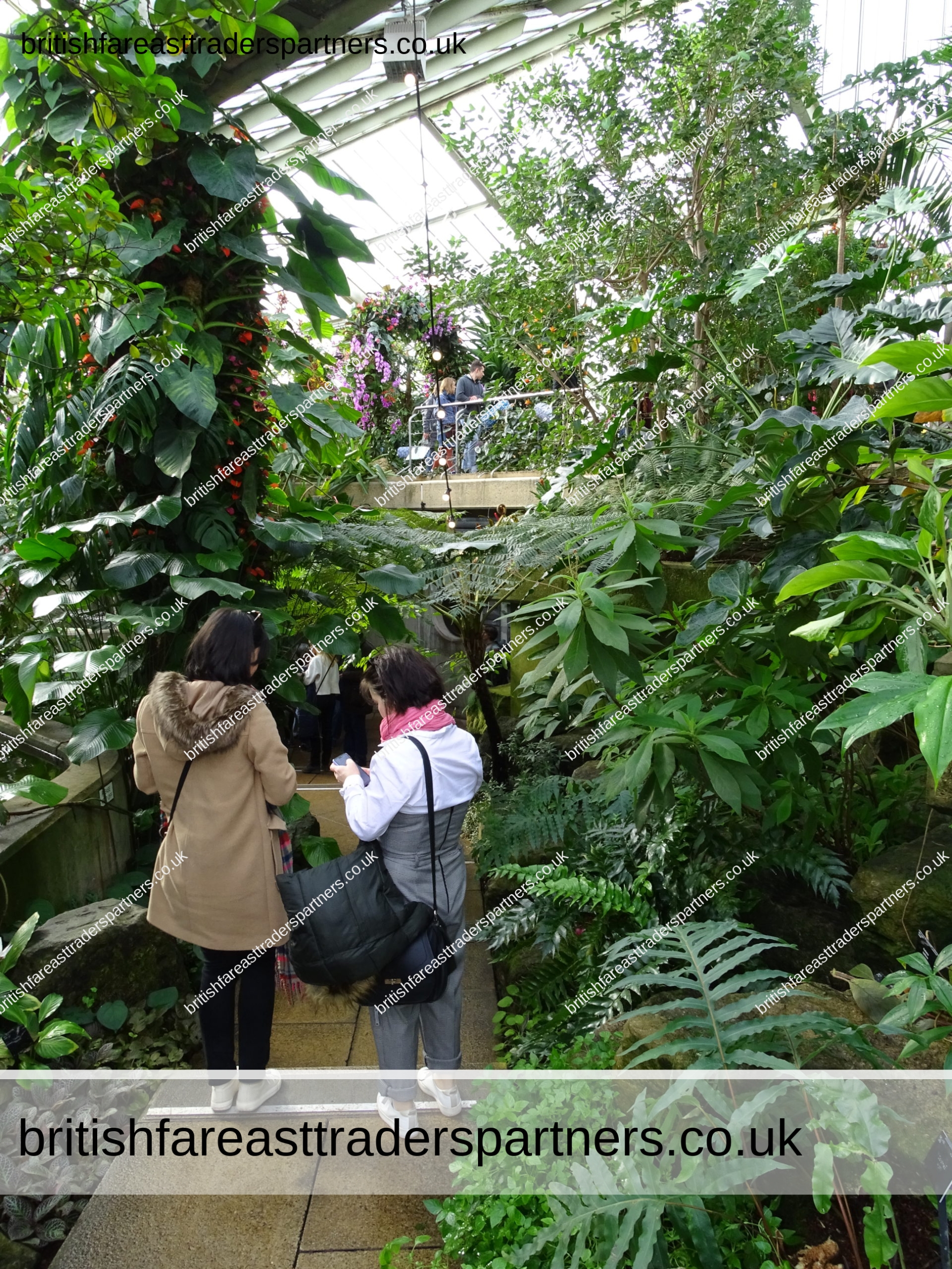
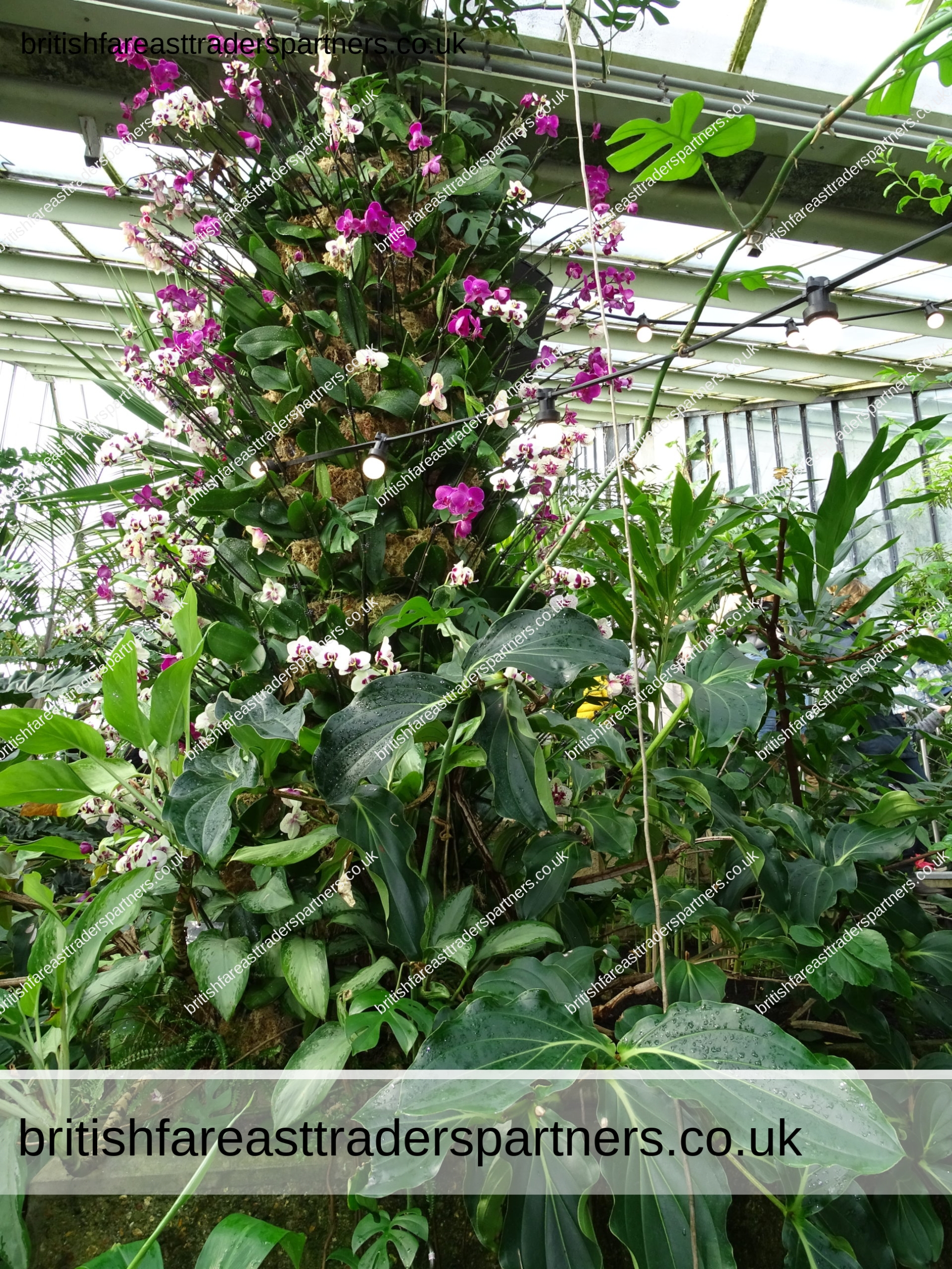
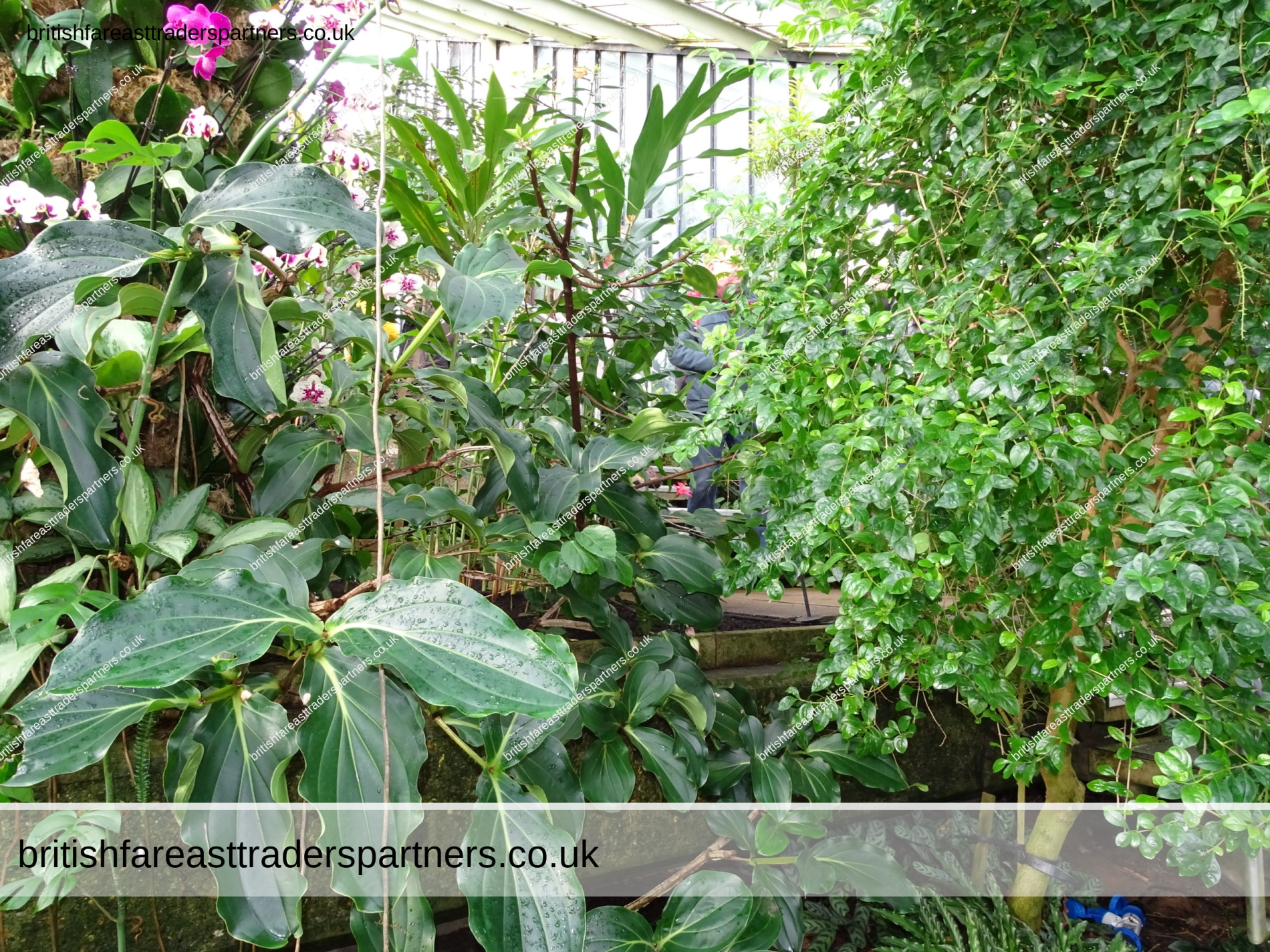
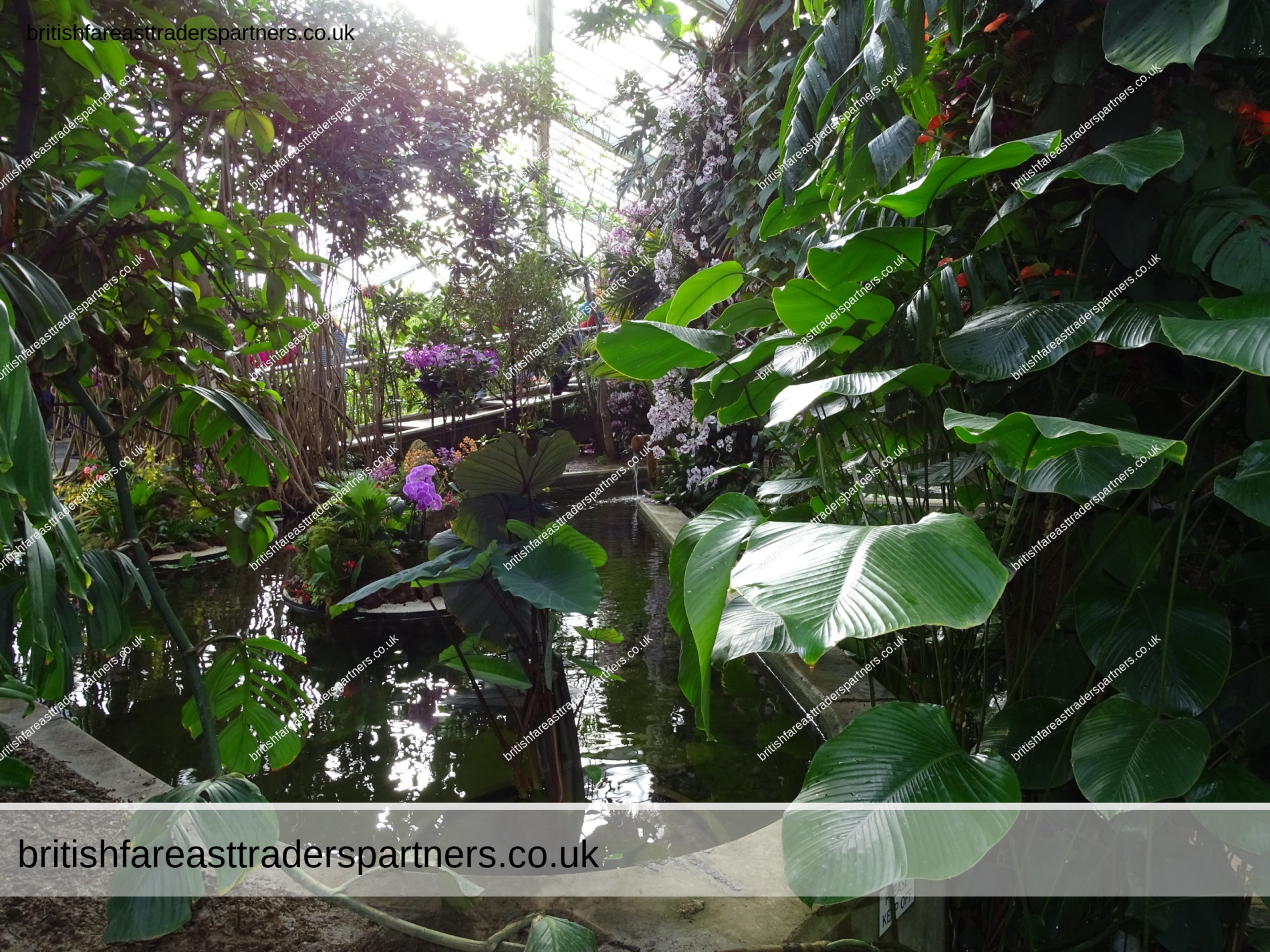
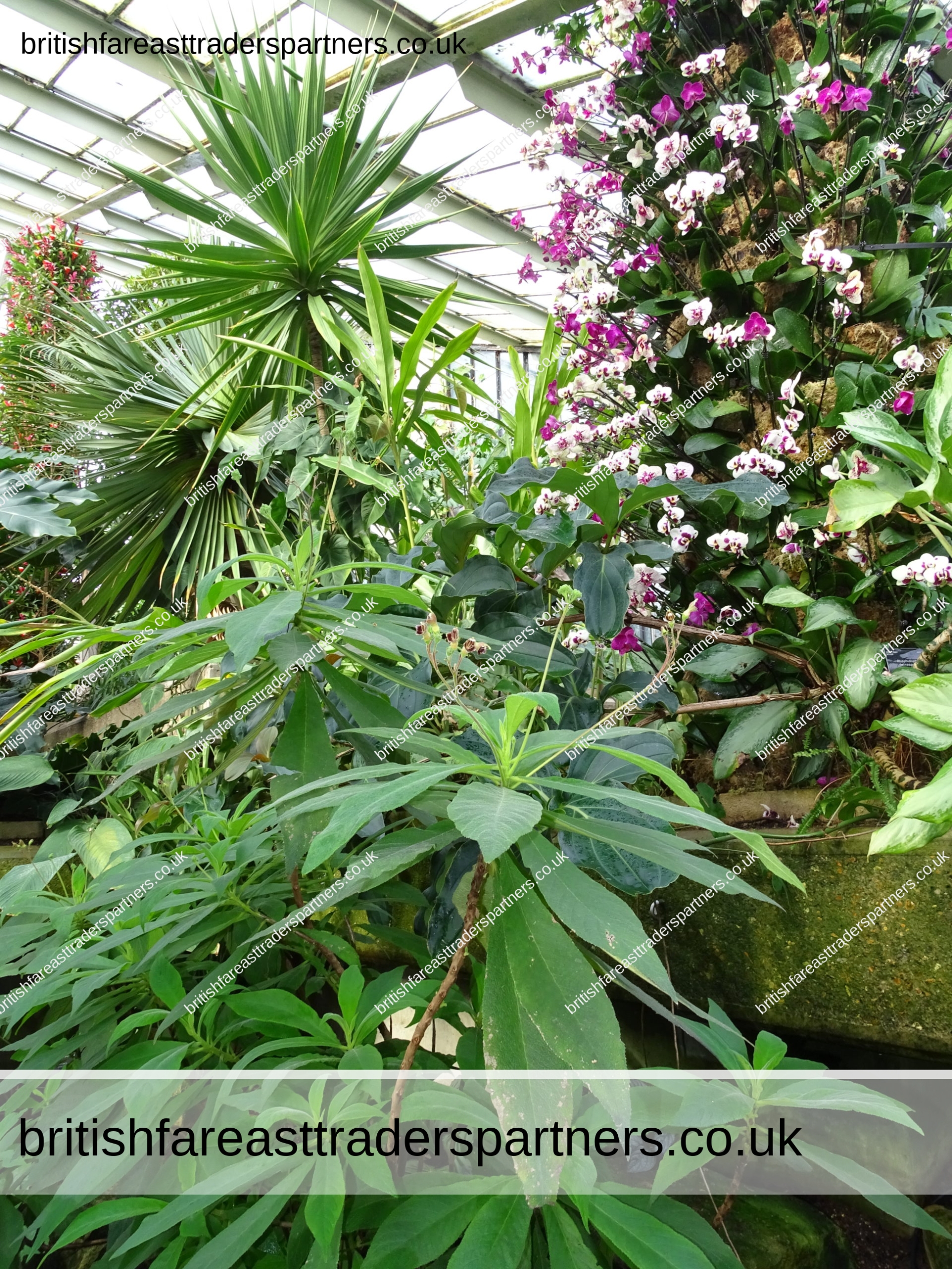
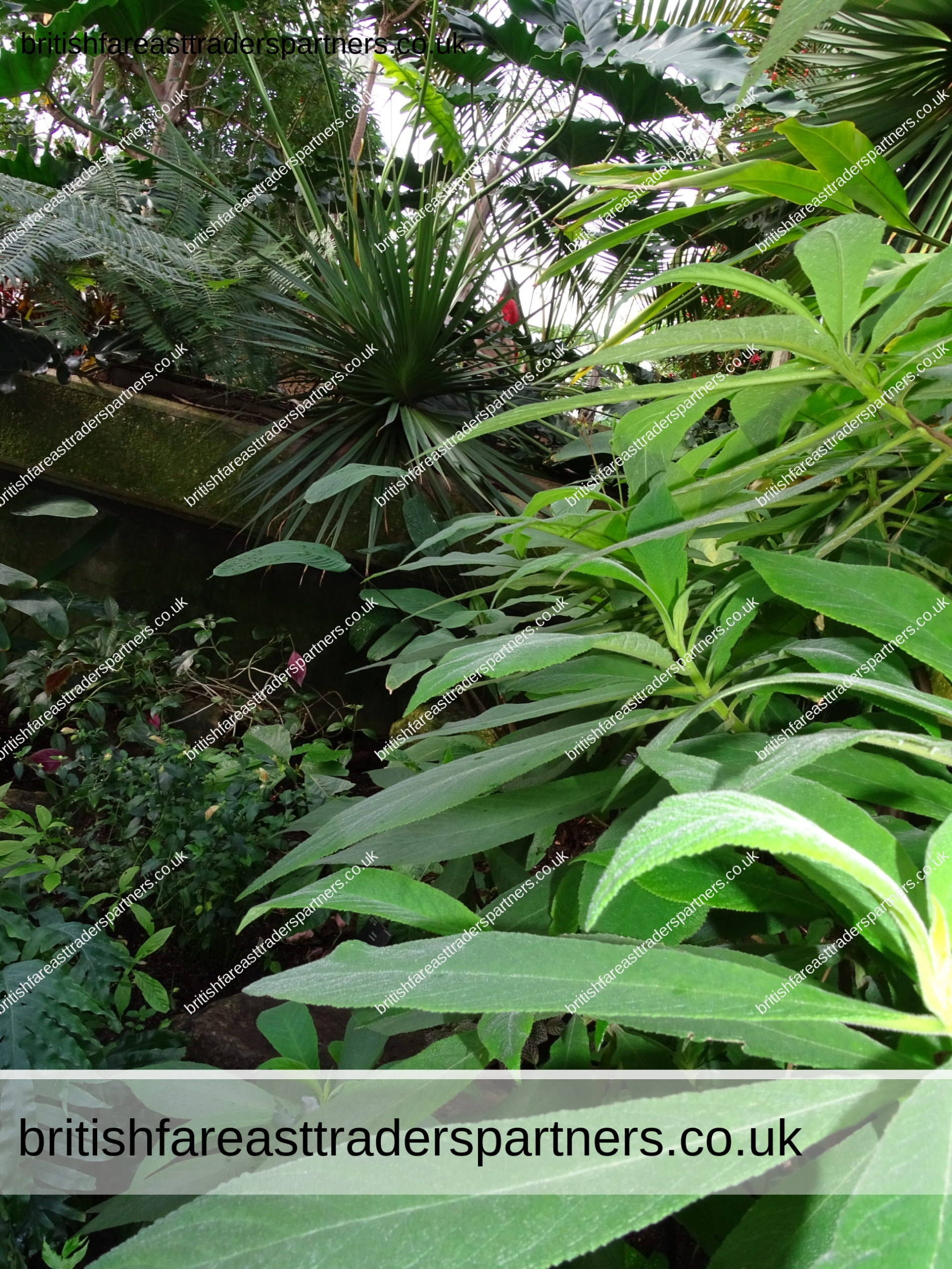
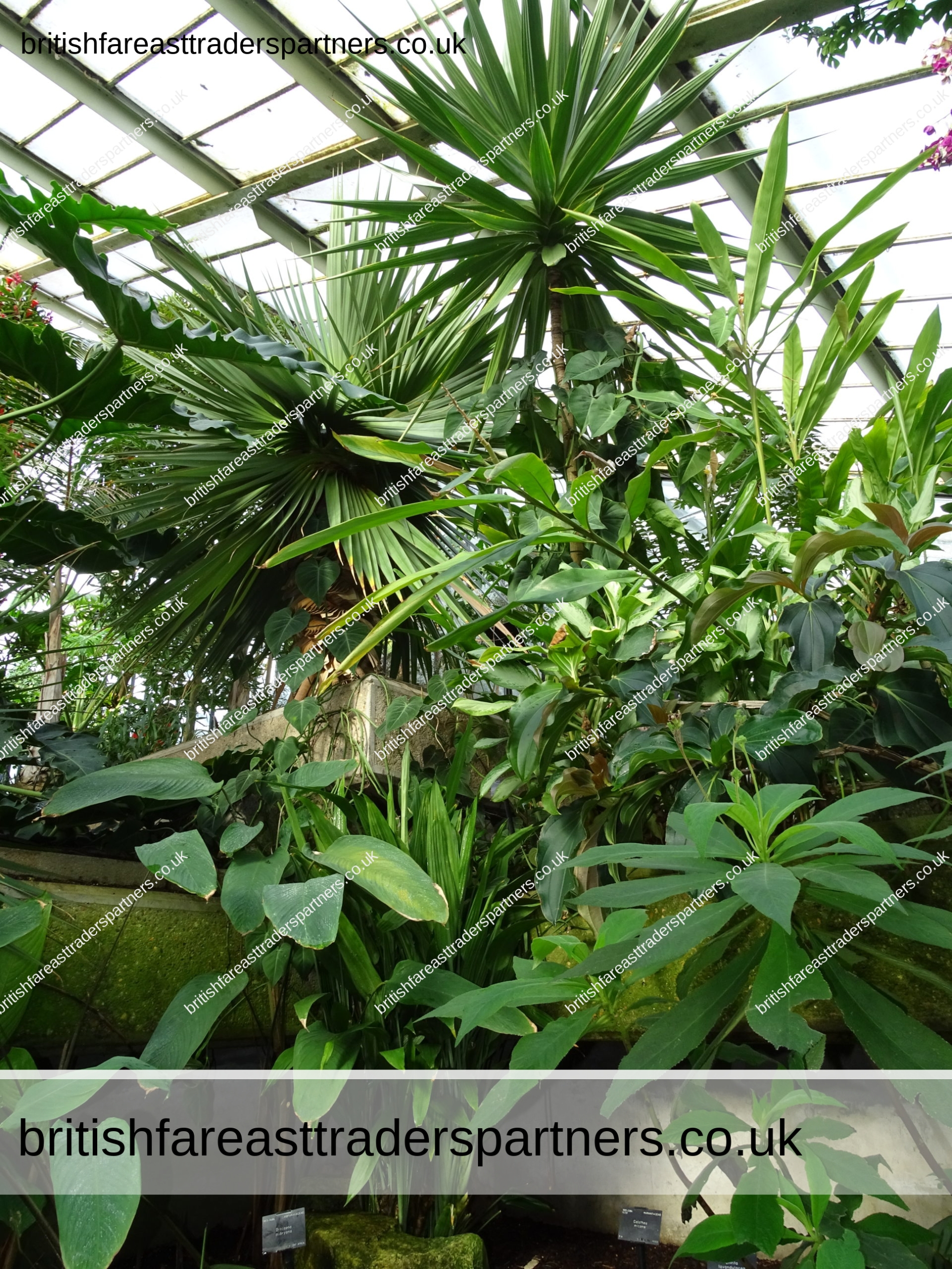
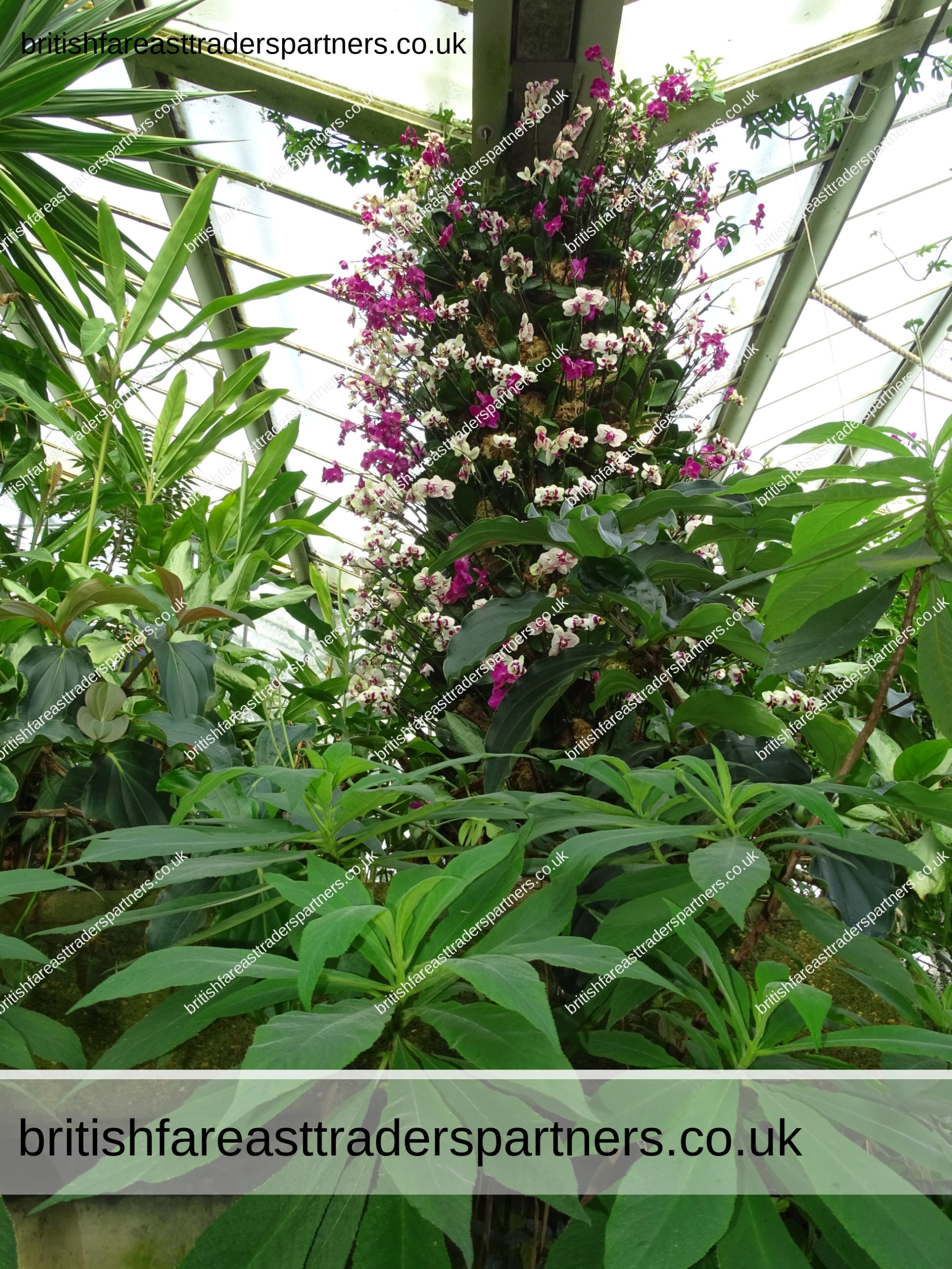
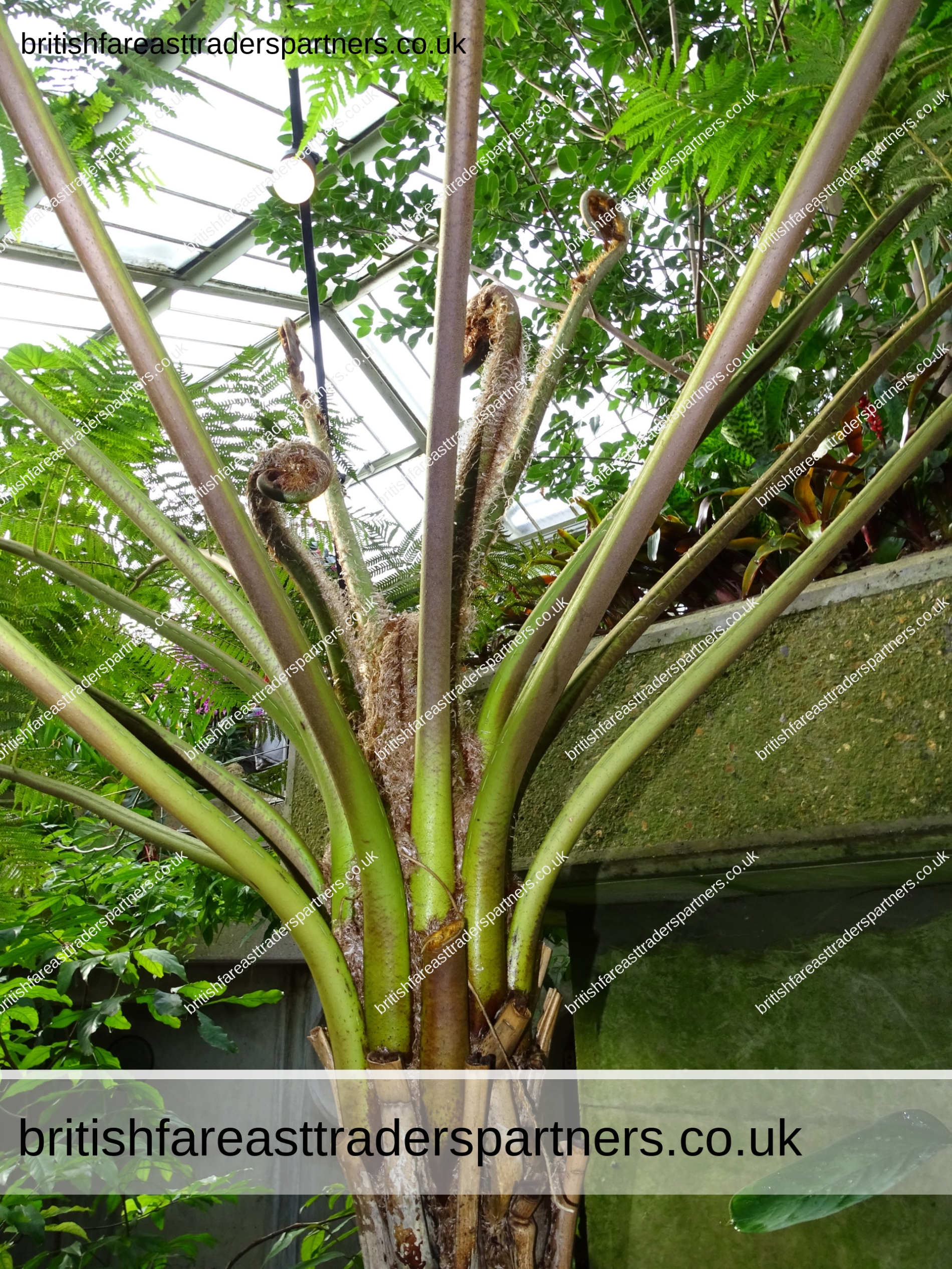
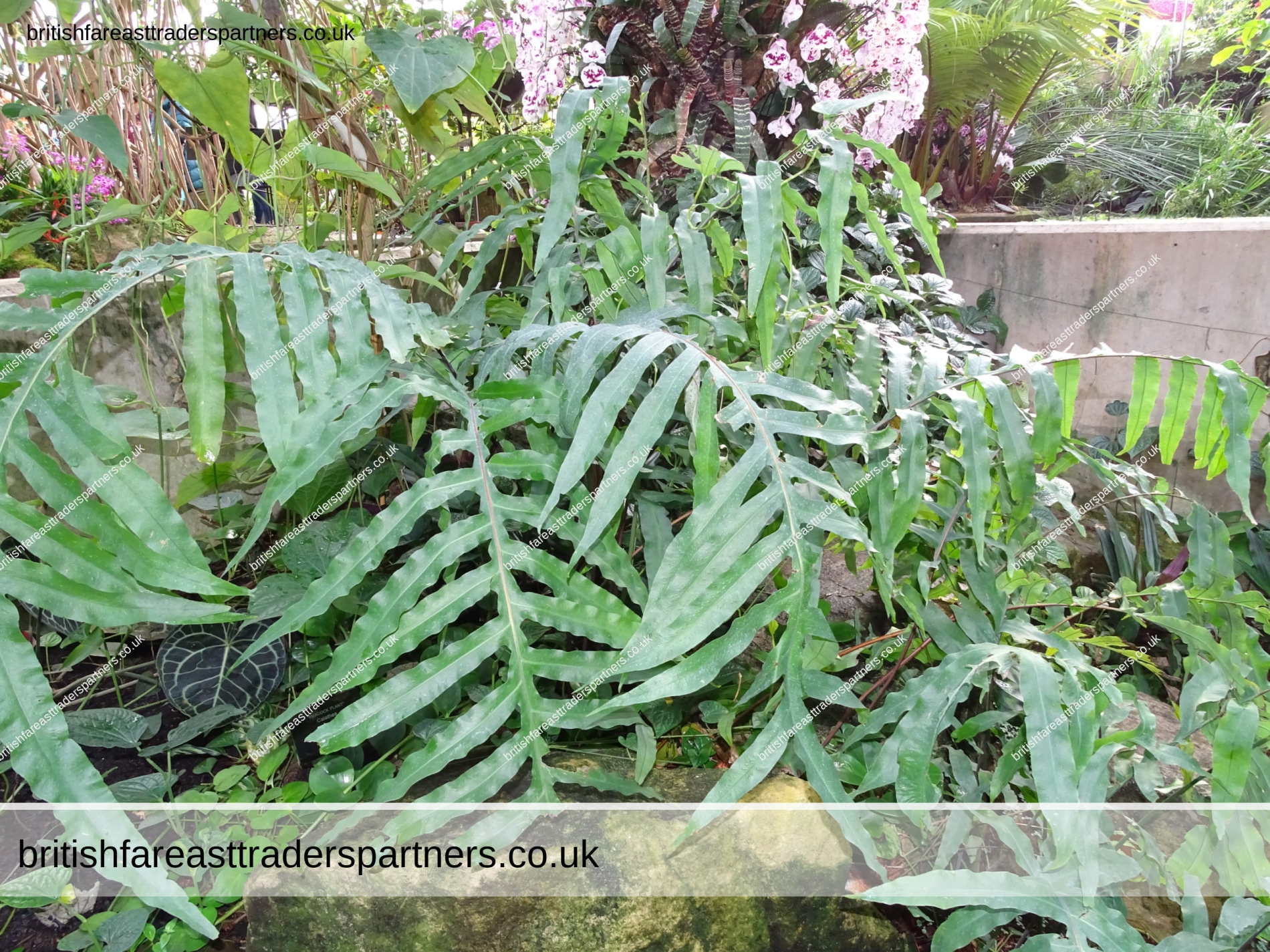
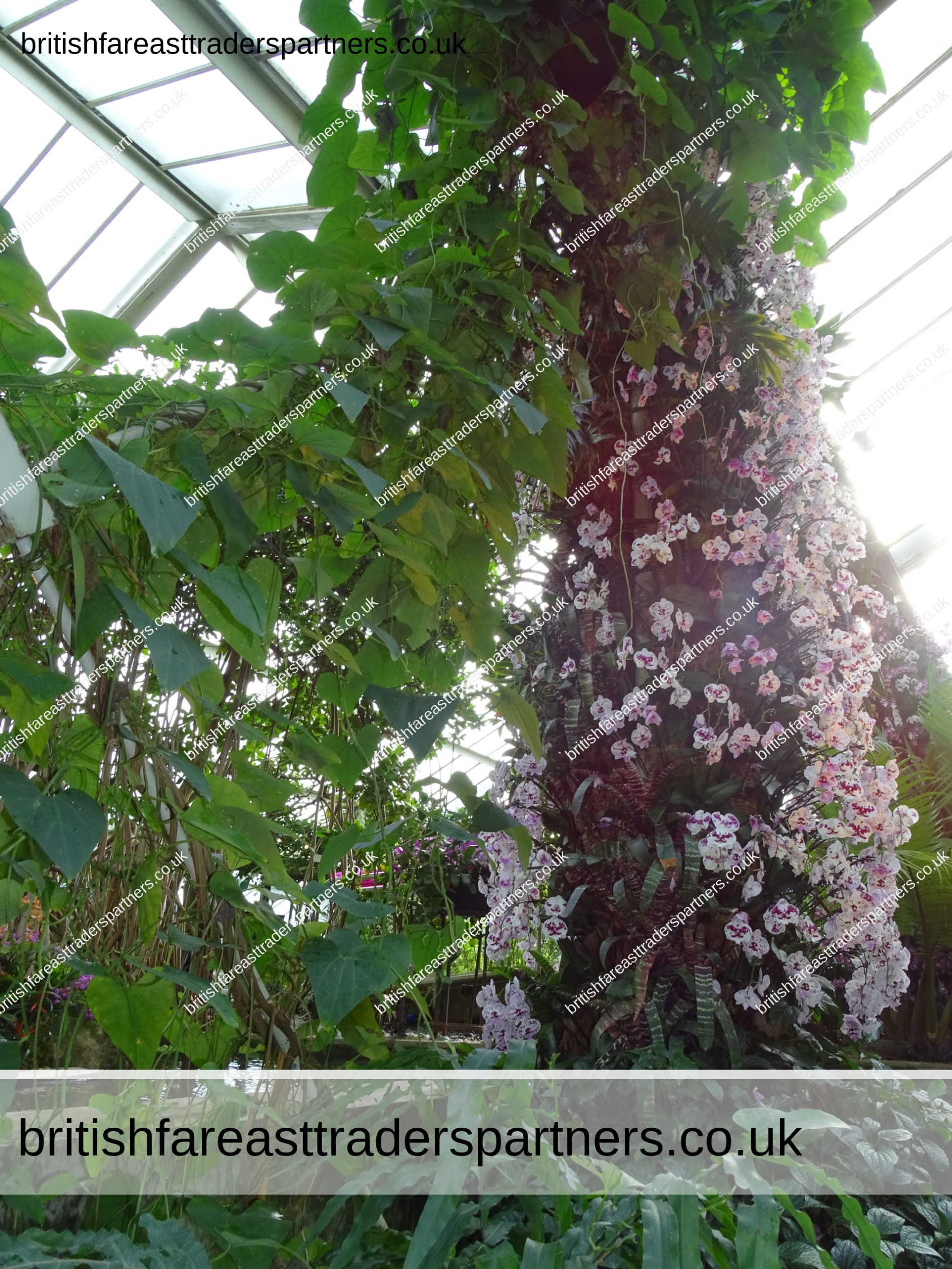



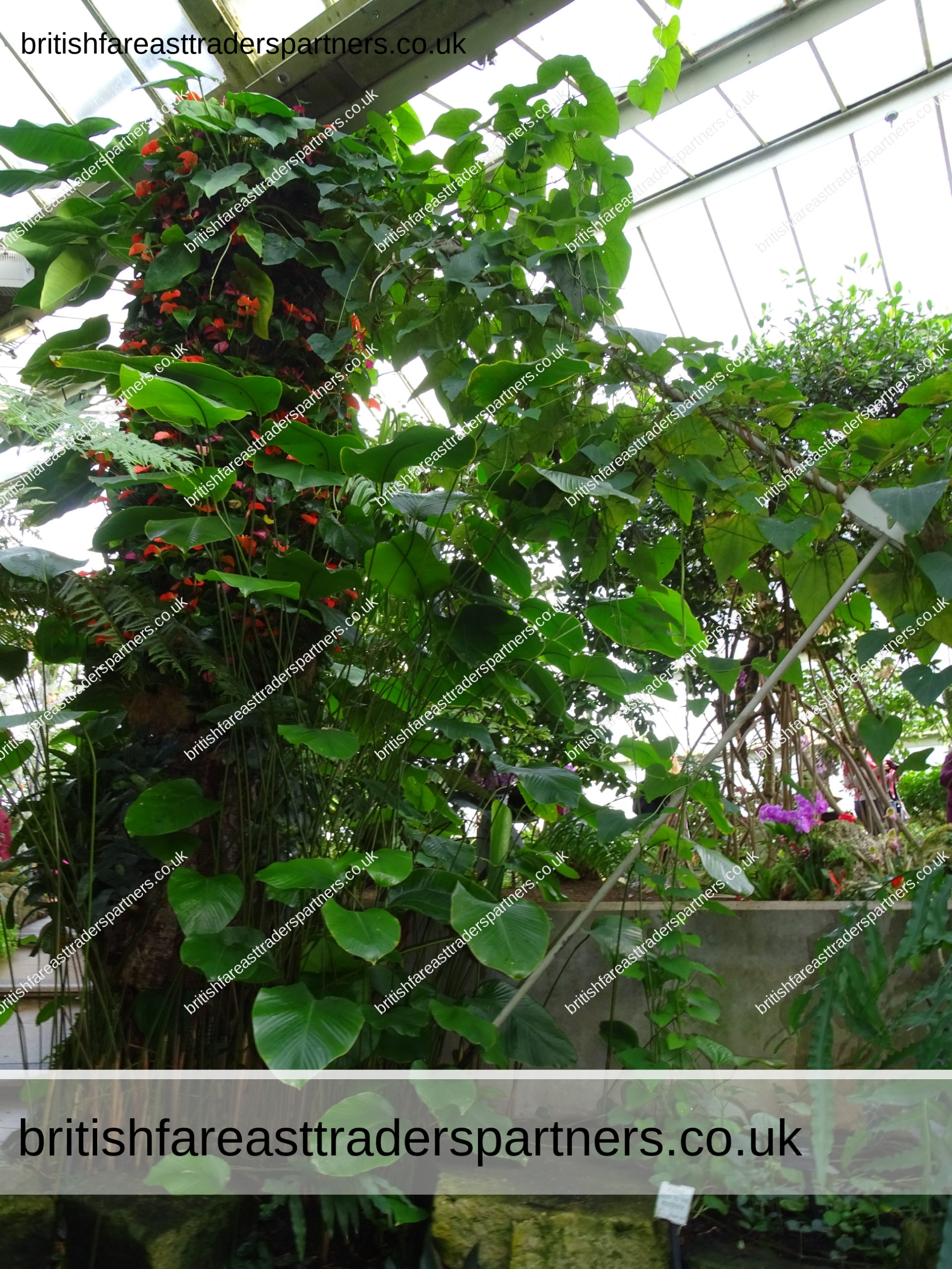
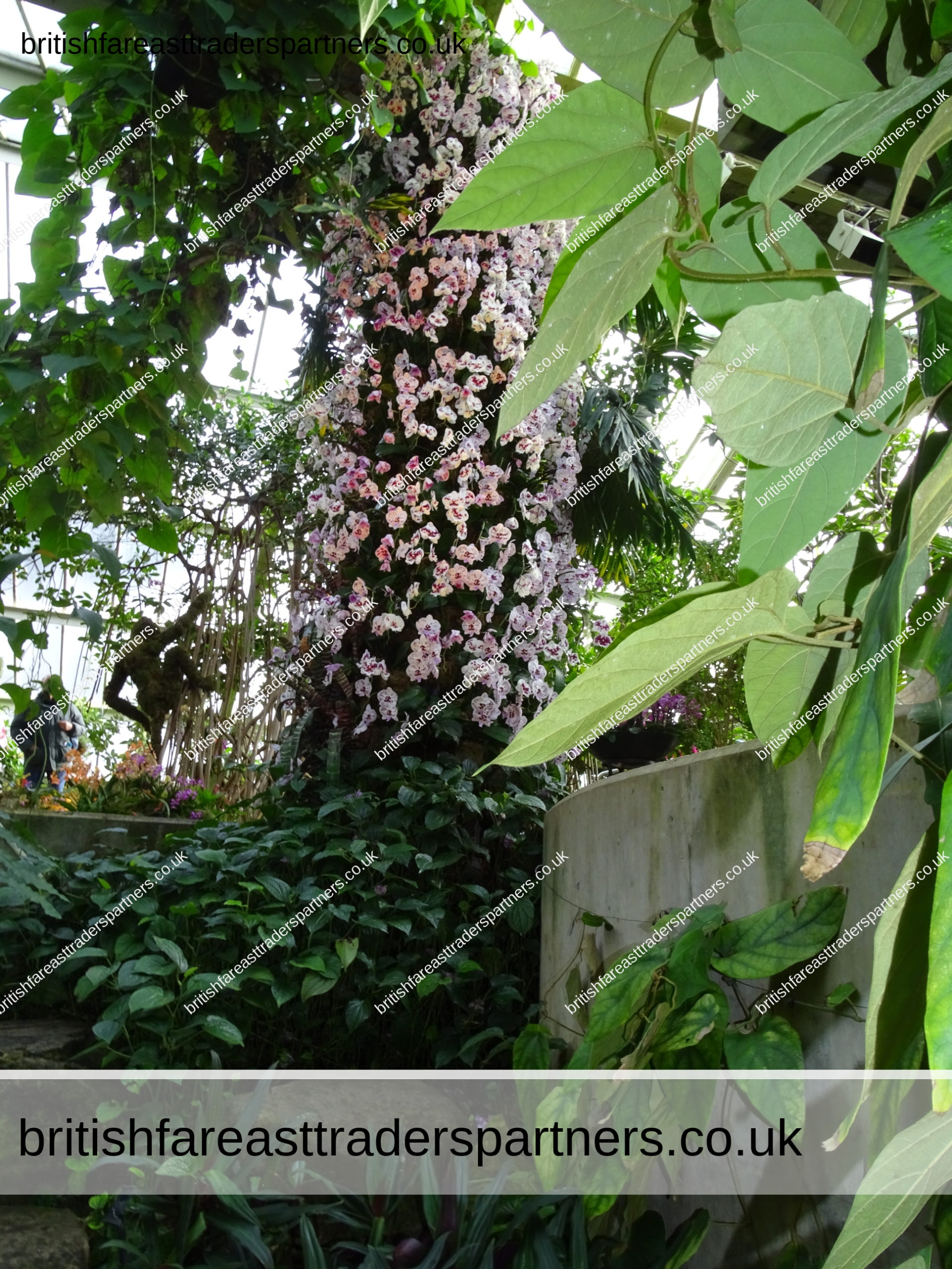


COME TO BRITAIN
SPECIAL AWARD FOR OUTSTANDING TOURIST ENTERPRISE IN 1987
PRESENTED TO THE PRINCESS OF WALES CONSERVATORY

Institution of Mechanical Engineers
Engineering Heritage Hallmark
PRINCESS OF WALES CONSERVATORY
Designed by PSA Projects and opened on 28 July 1987
as the world’s most advanced energy efficient conservatory.
It incorporates 10 different climactic zones,
created and maintained by a fully integrated computer controlled system.

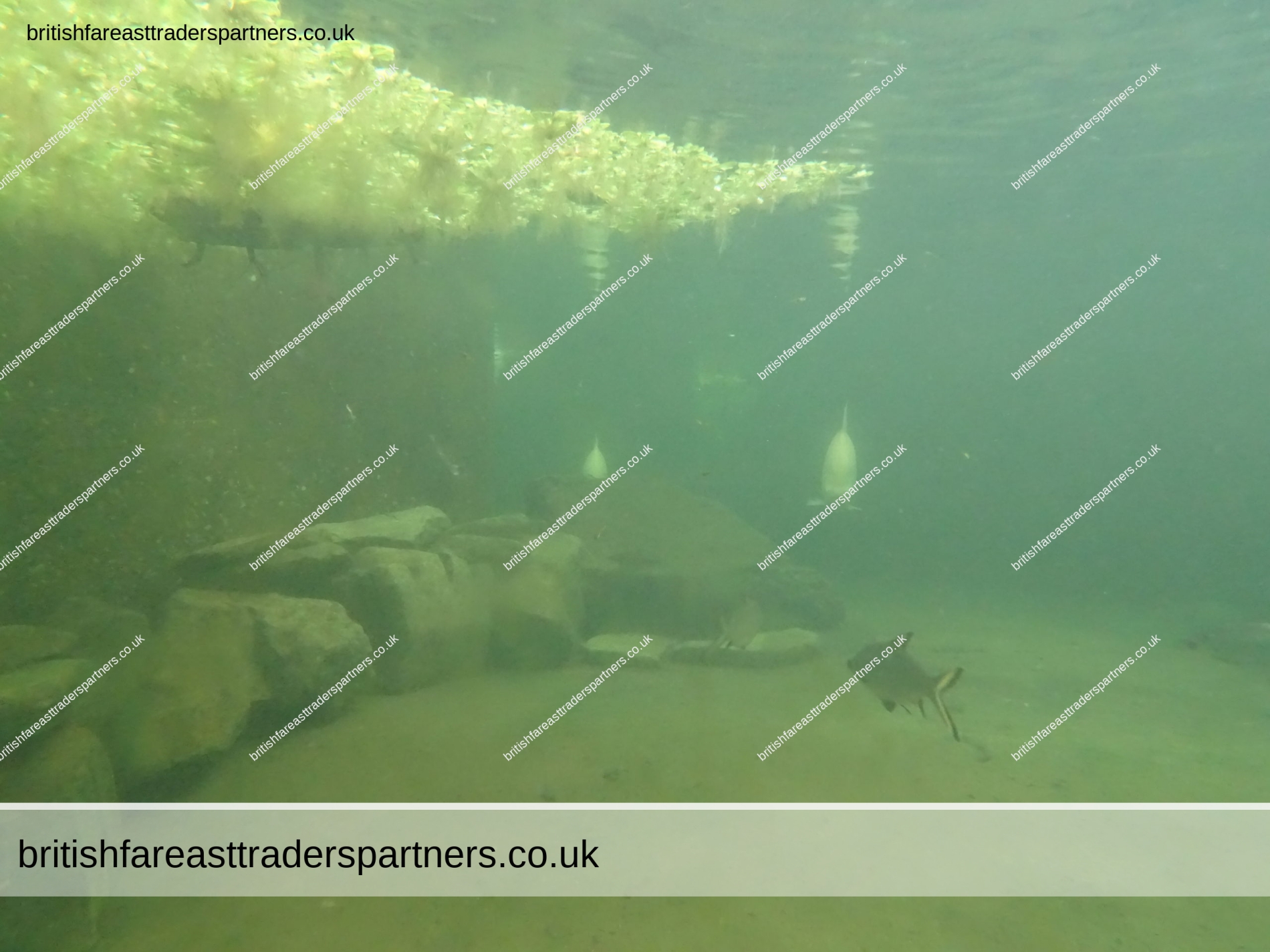

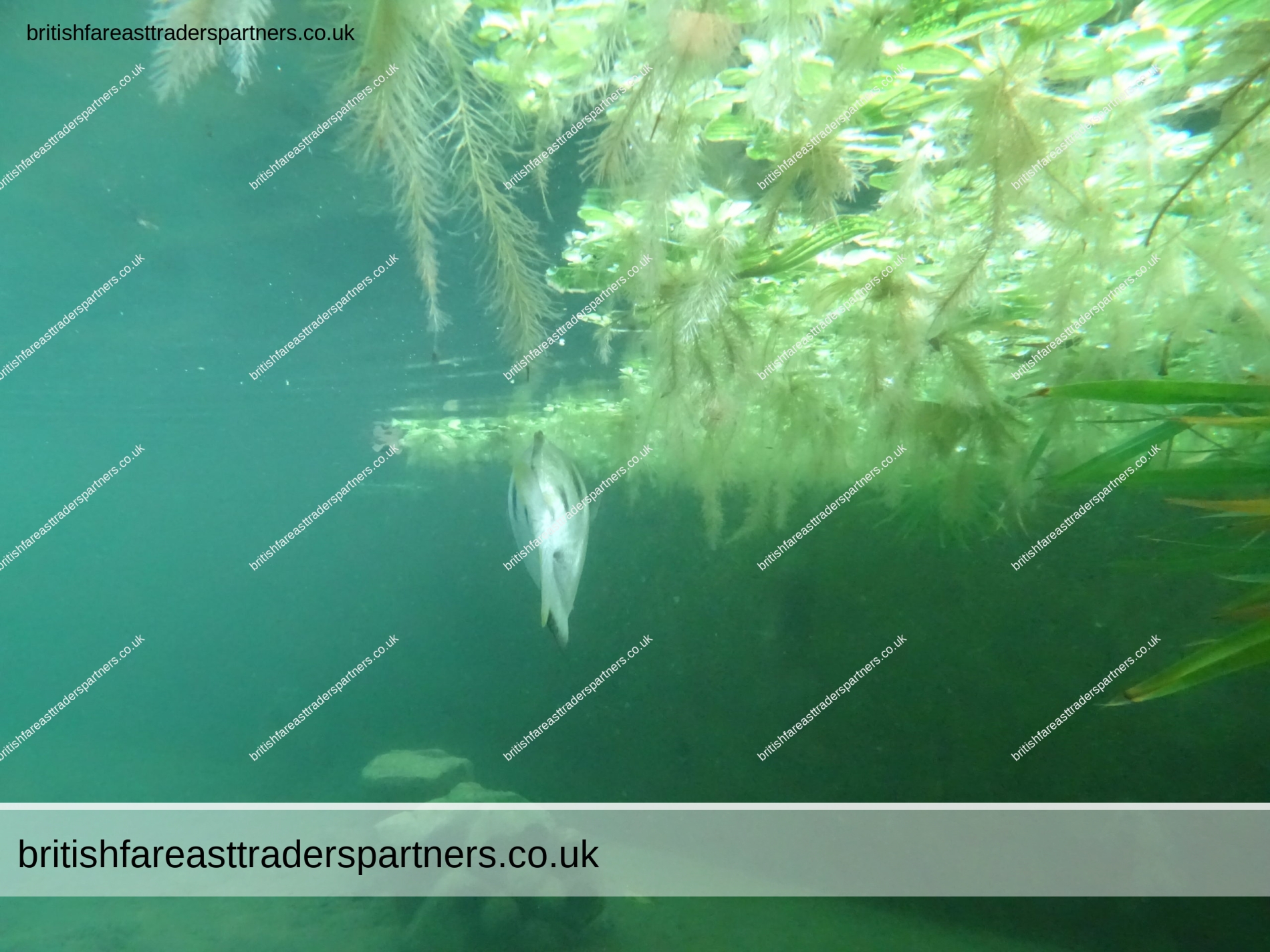
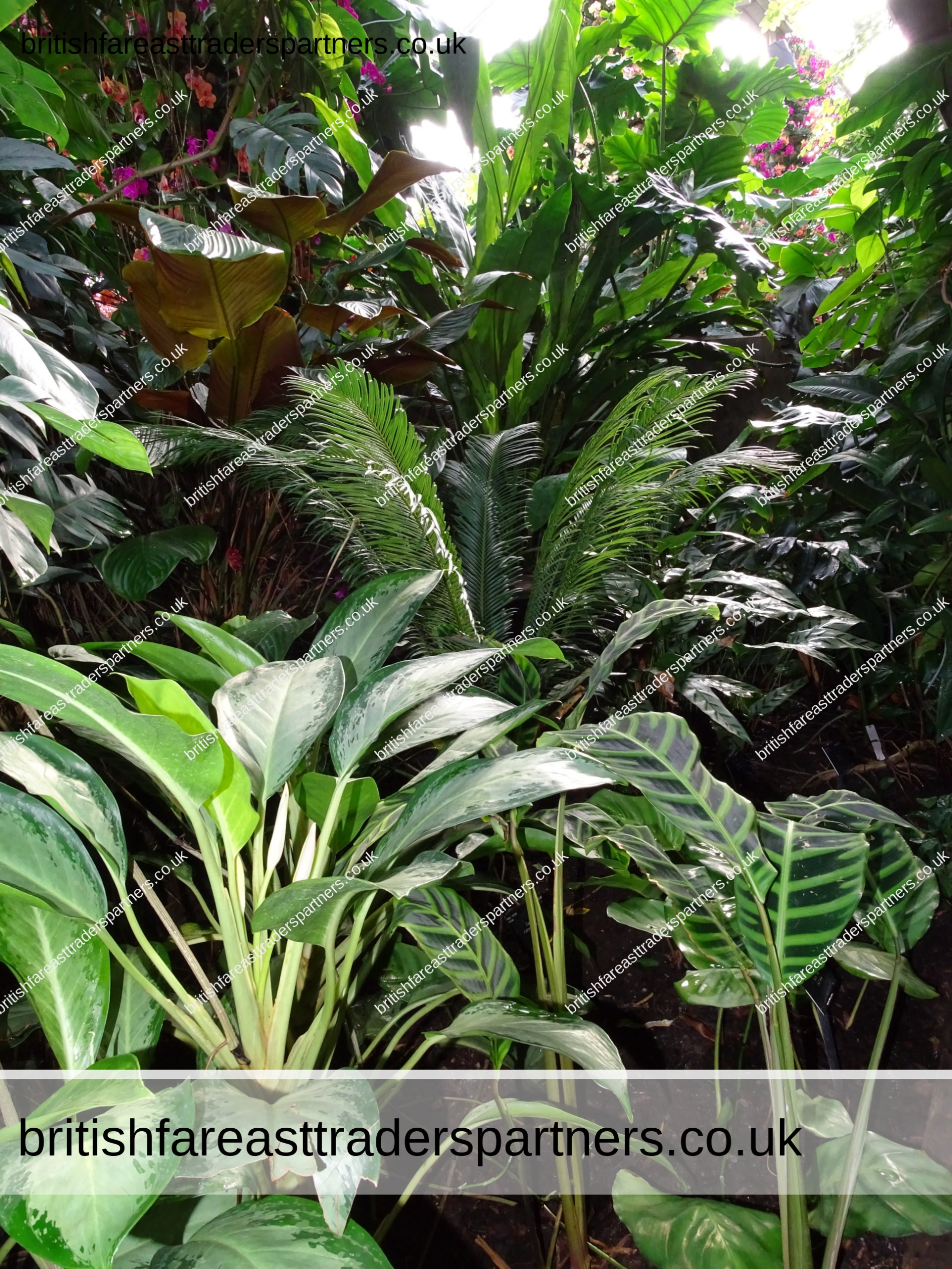
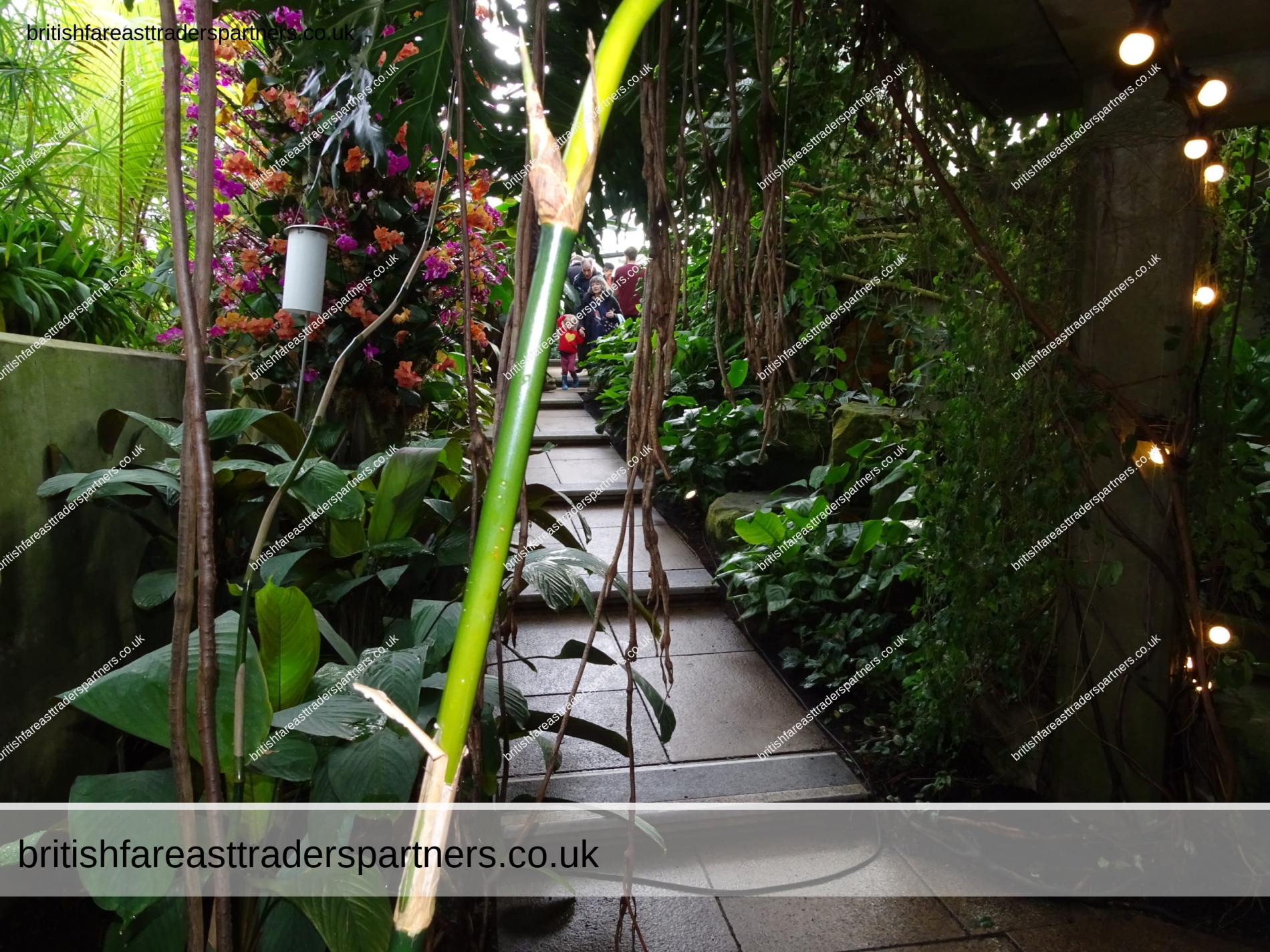
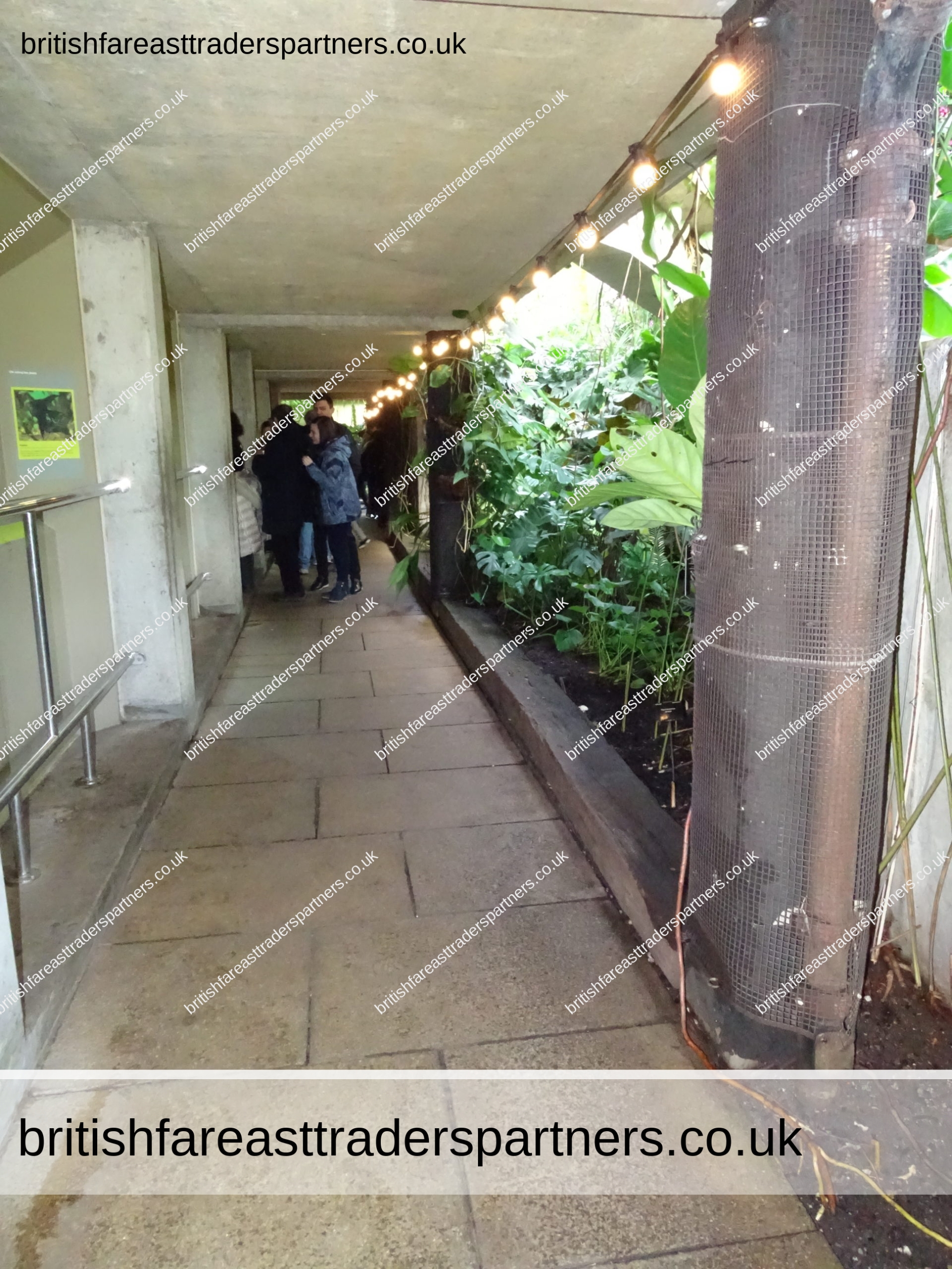
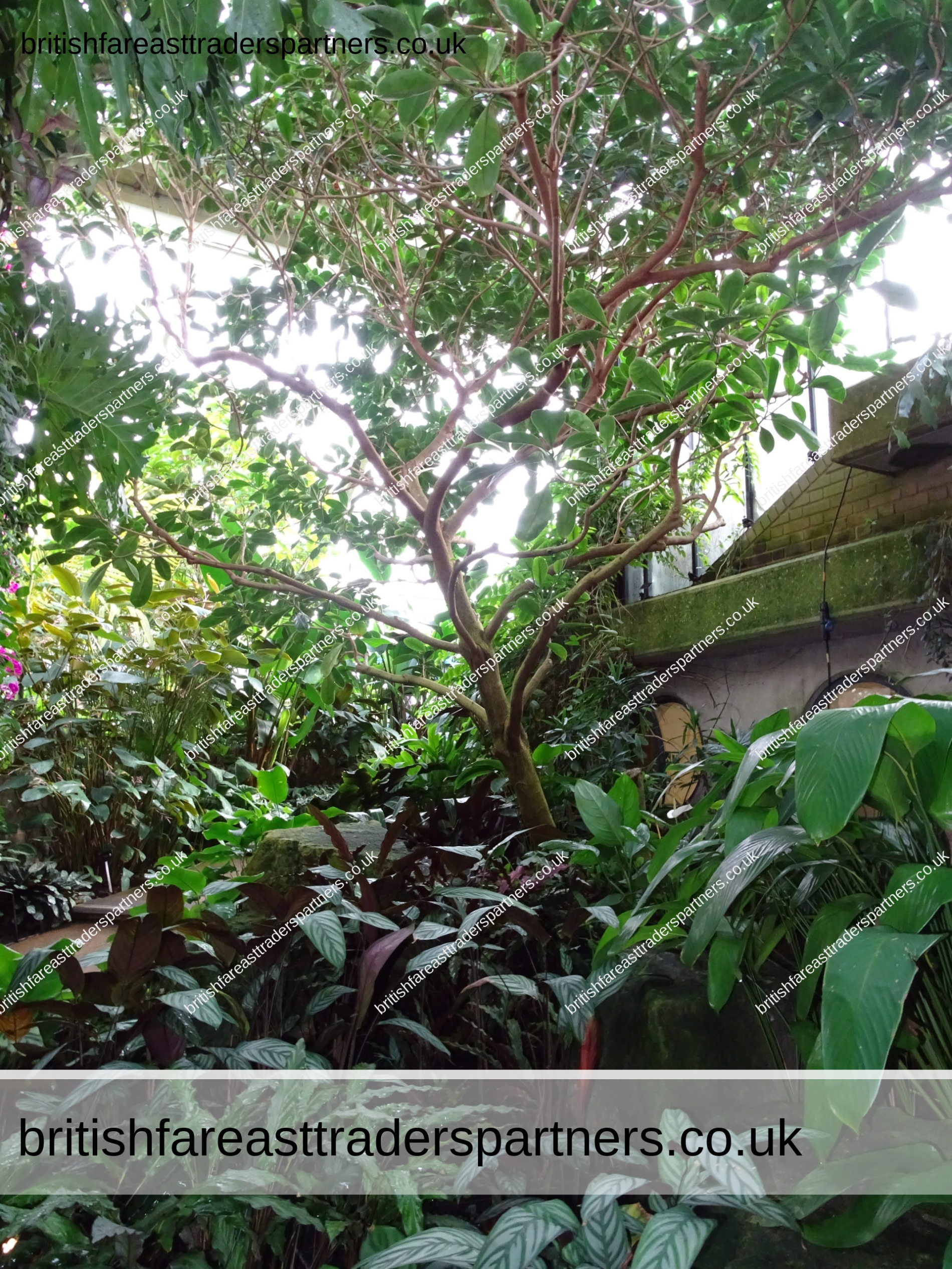
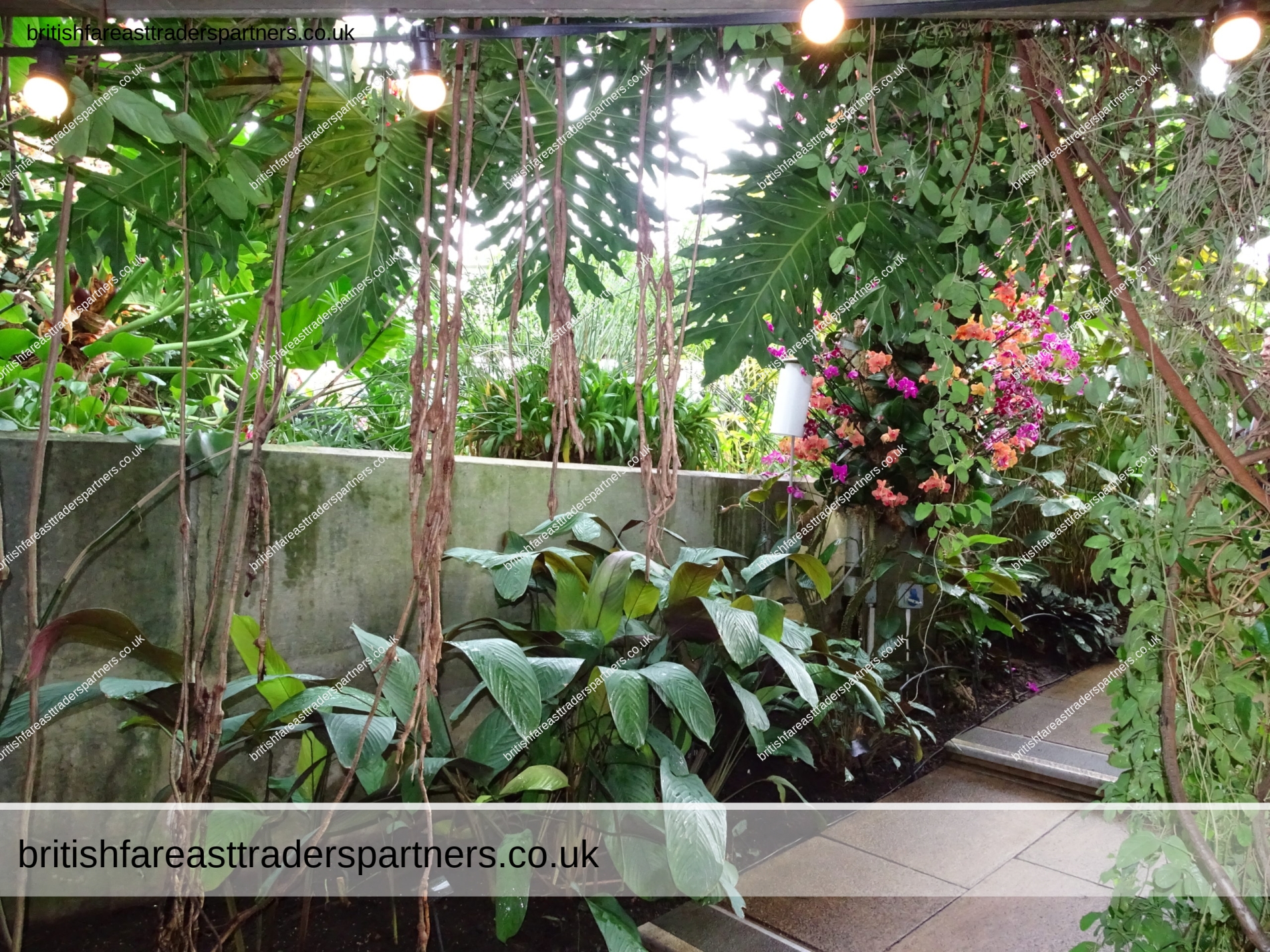
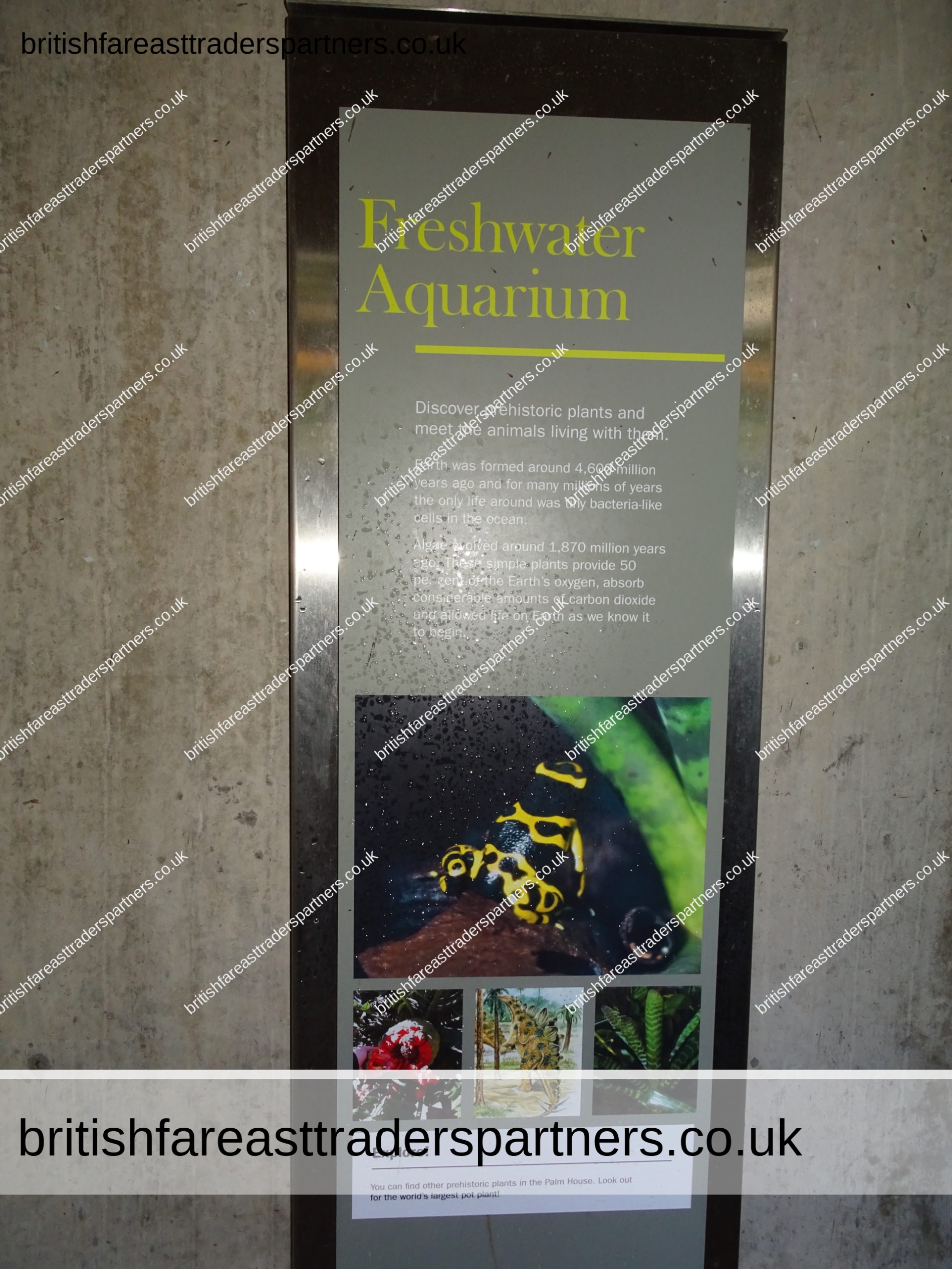
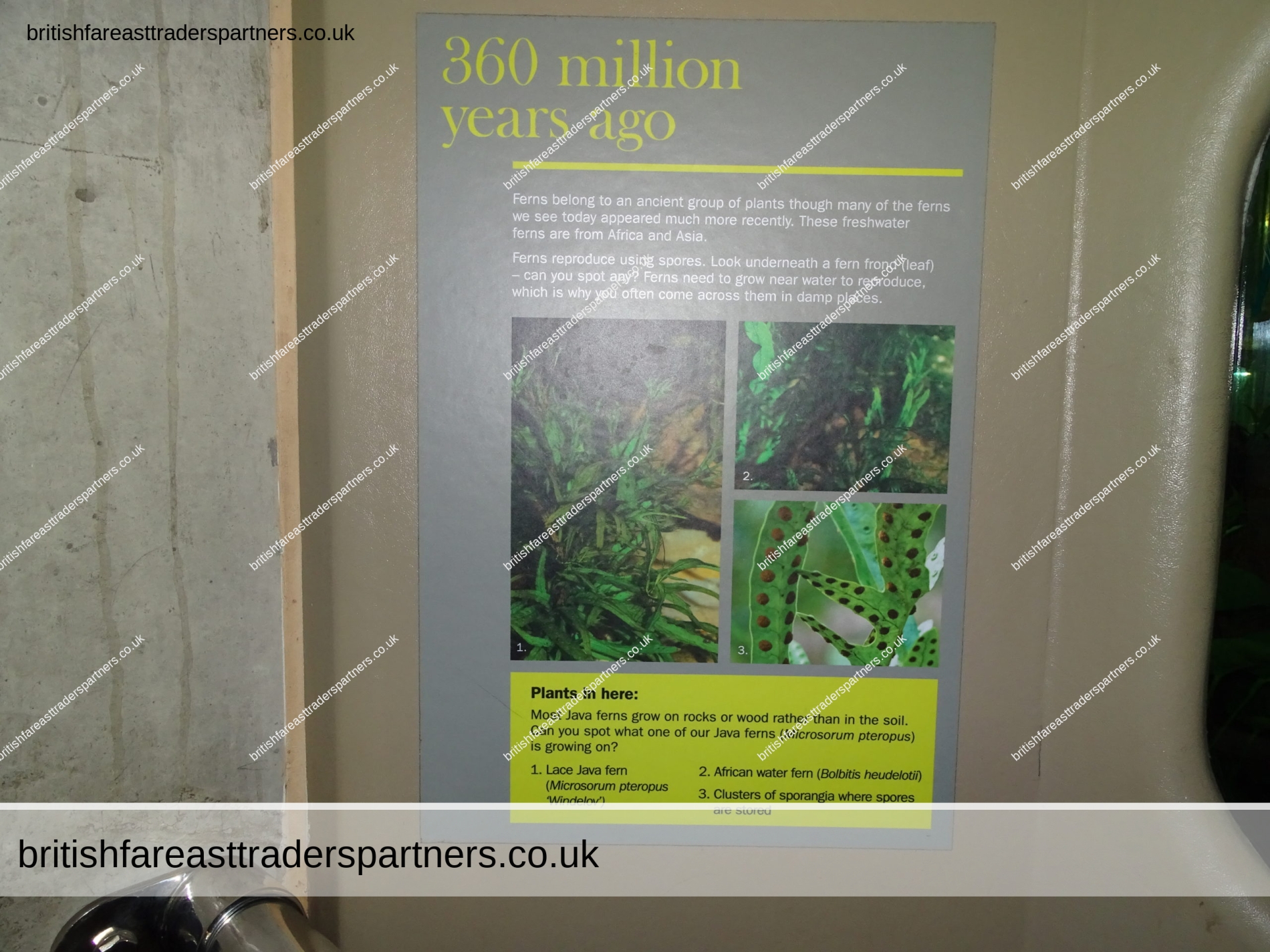
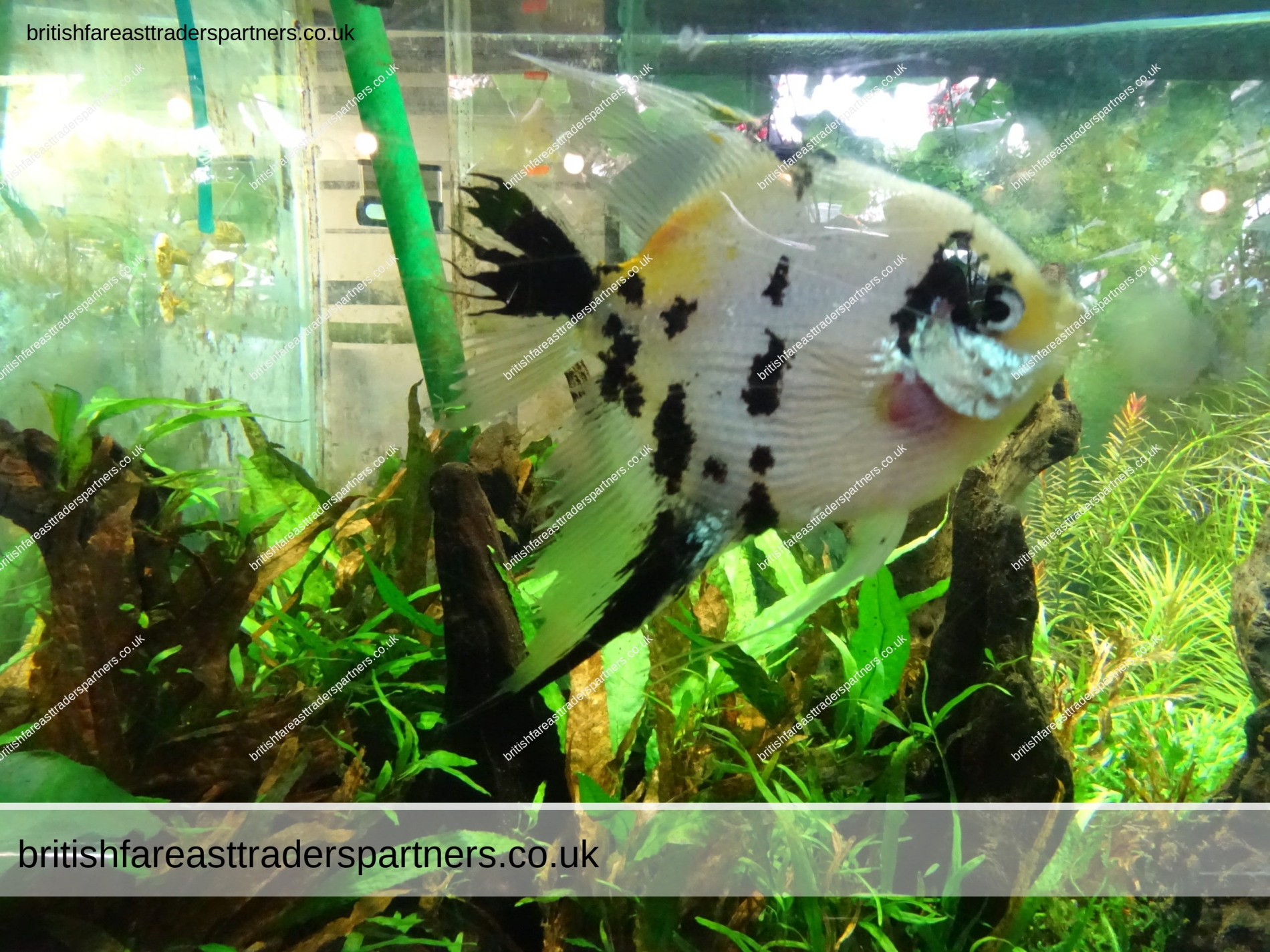
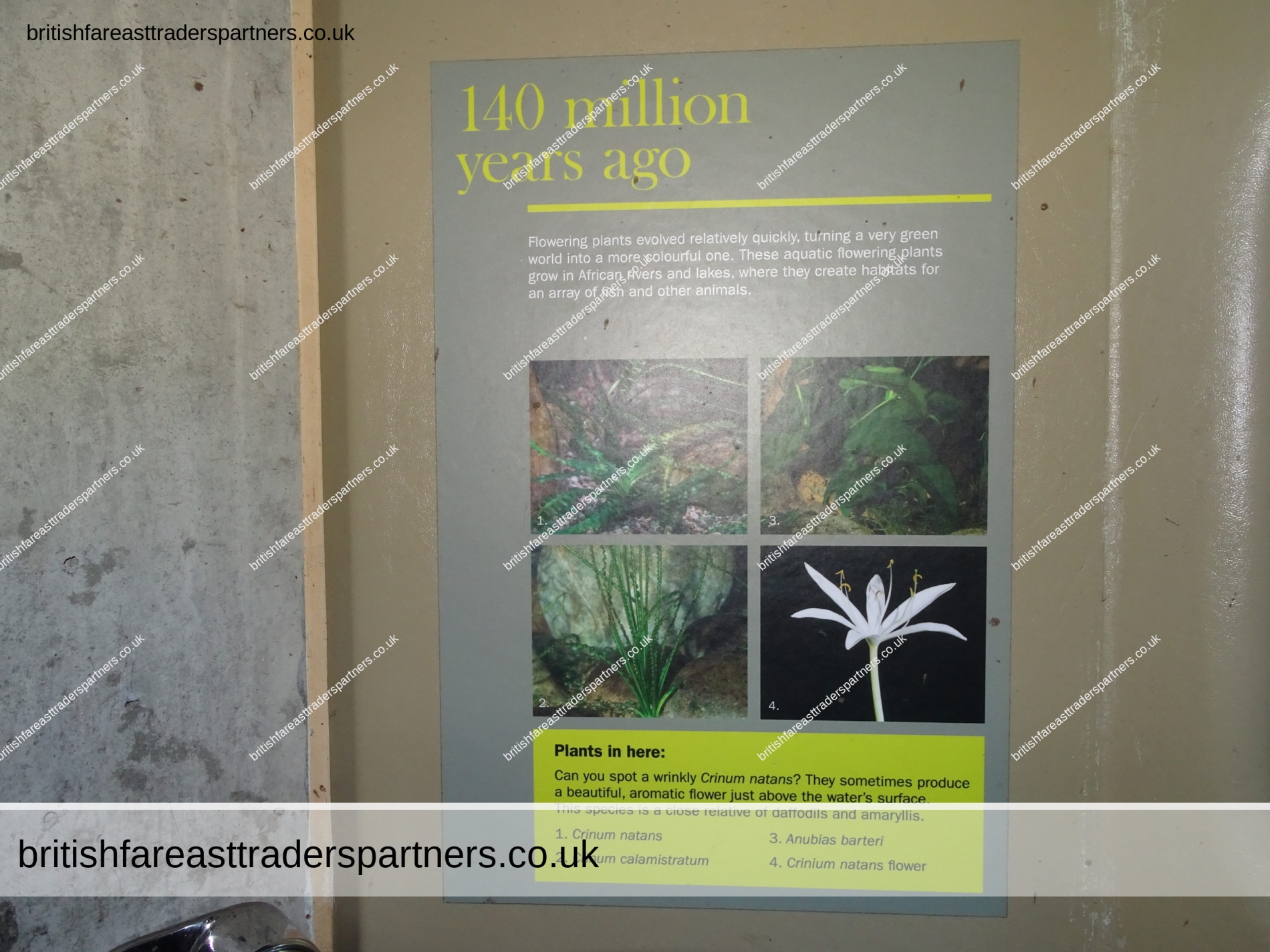
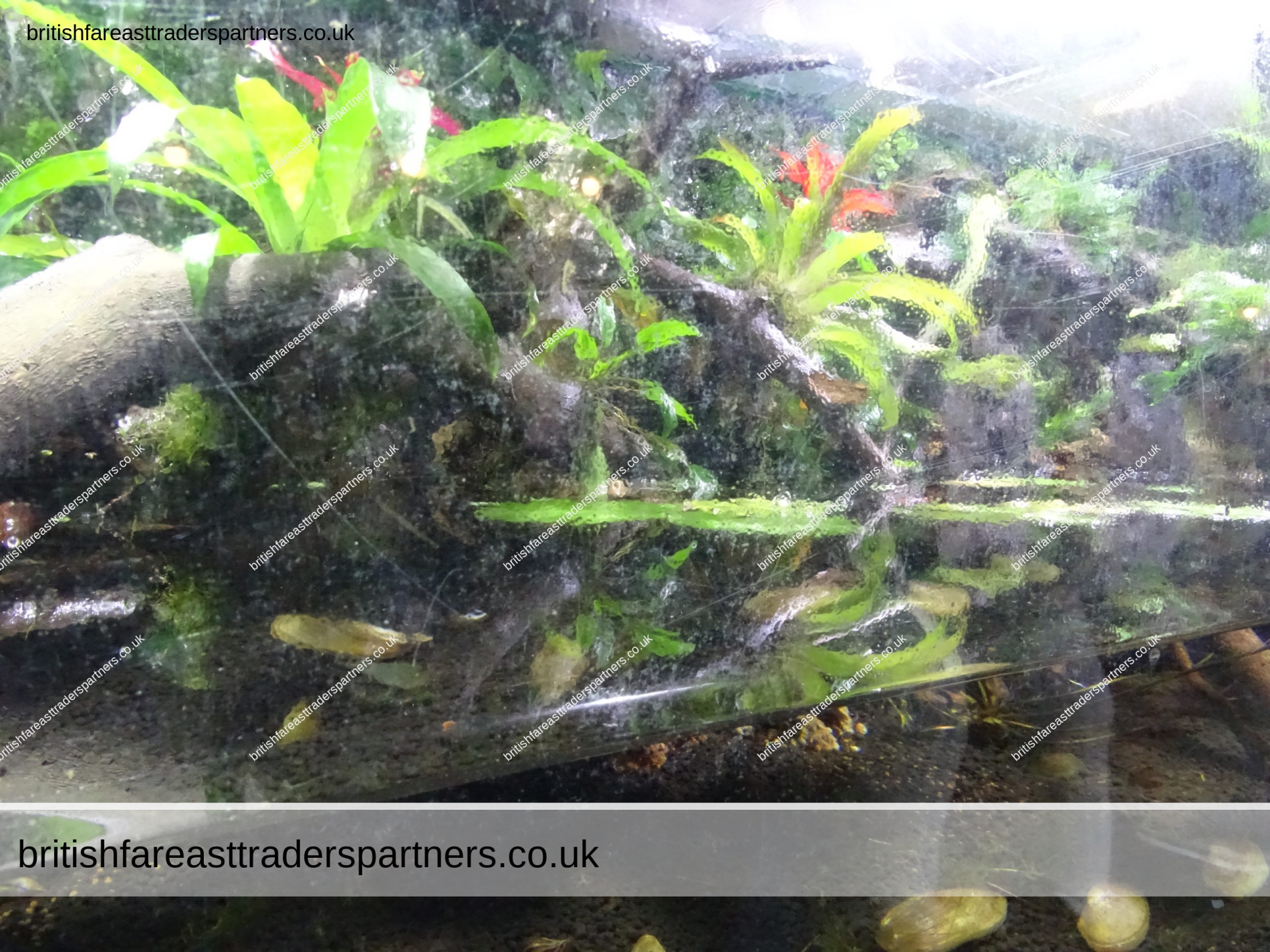
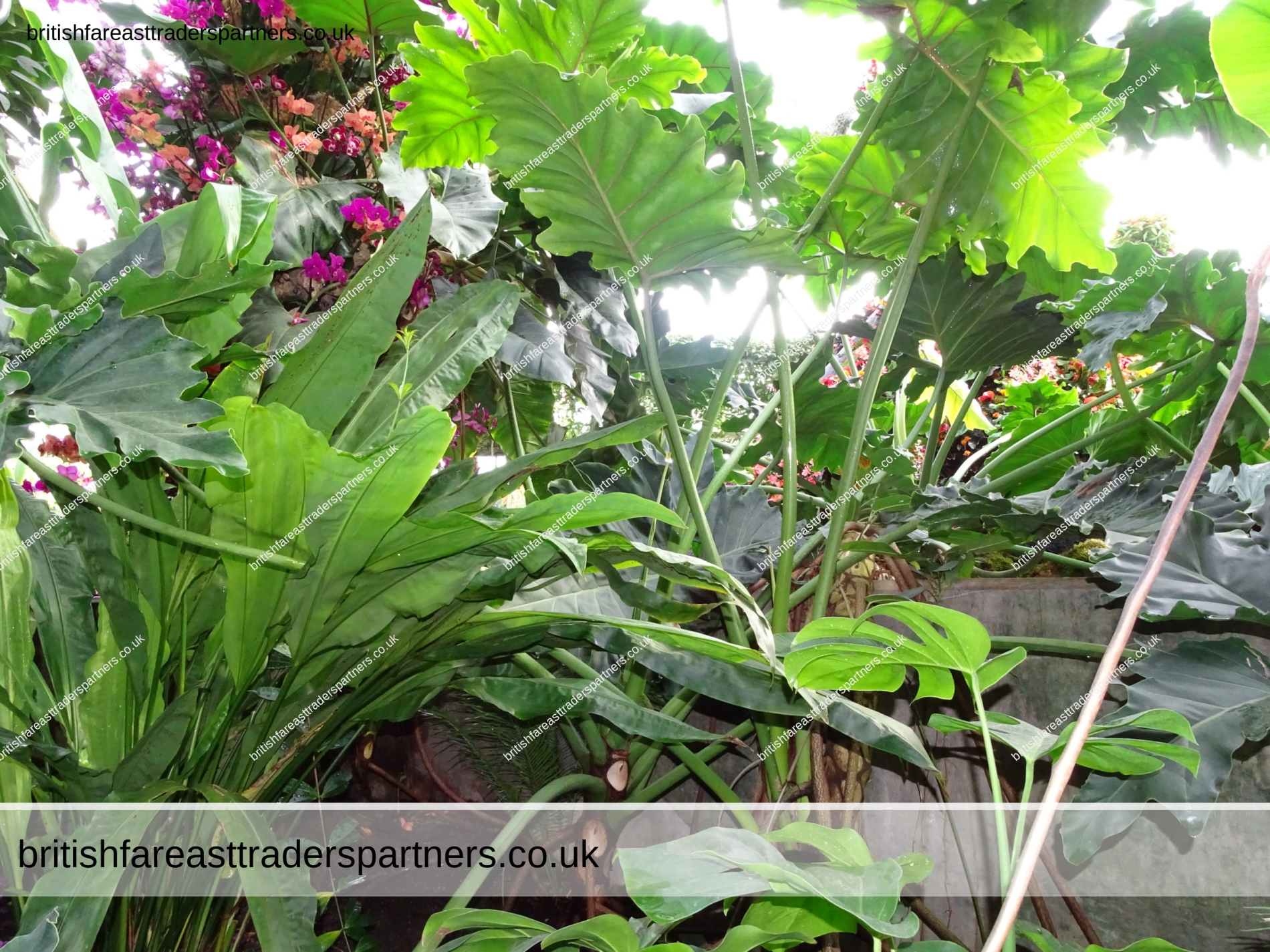
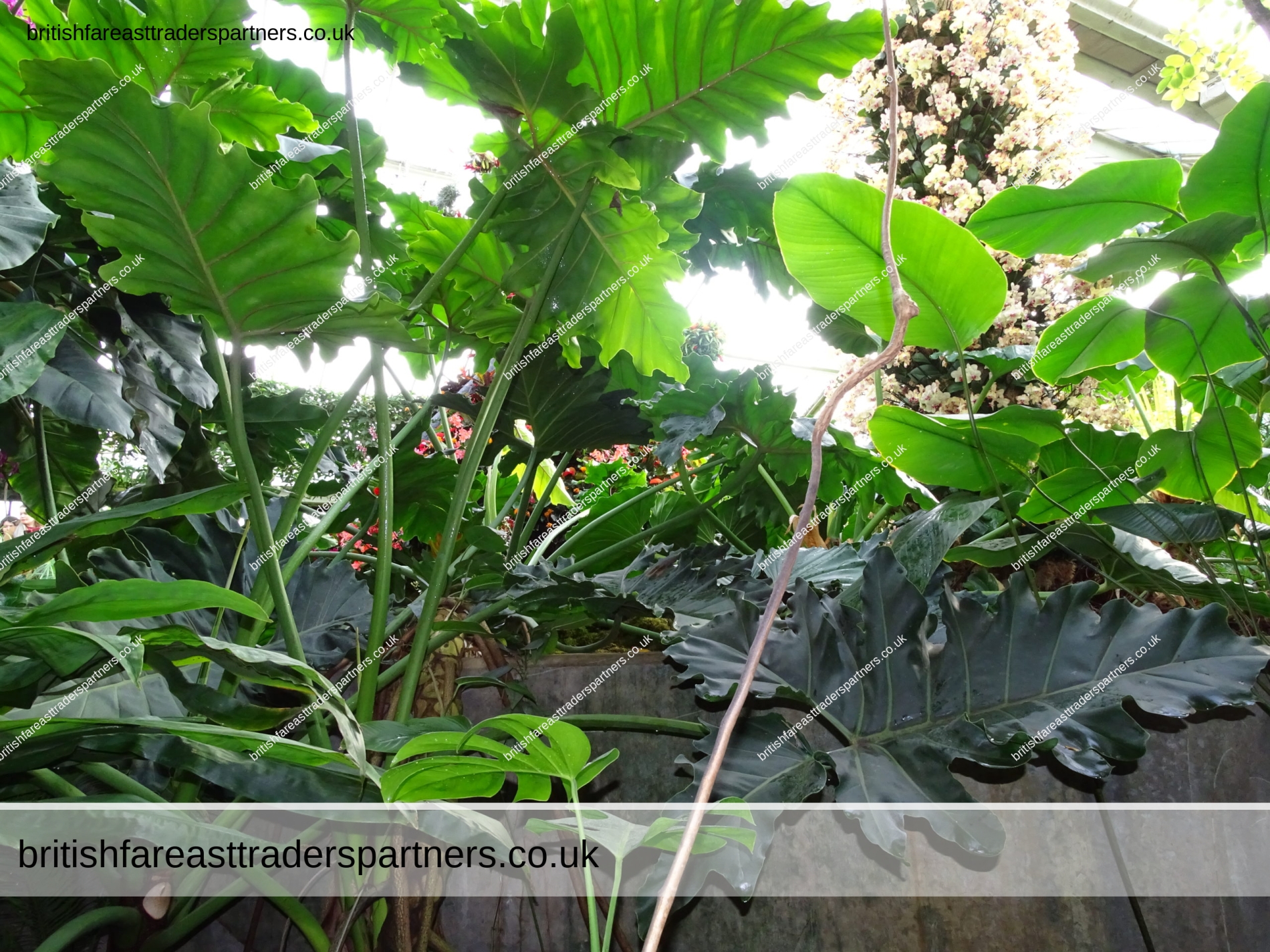
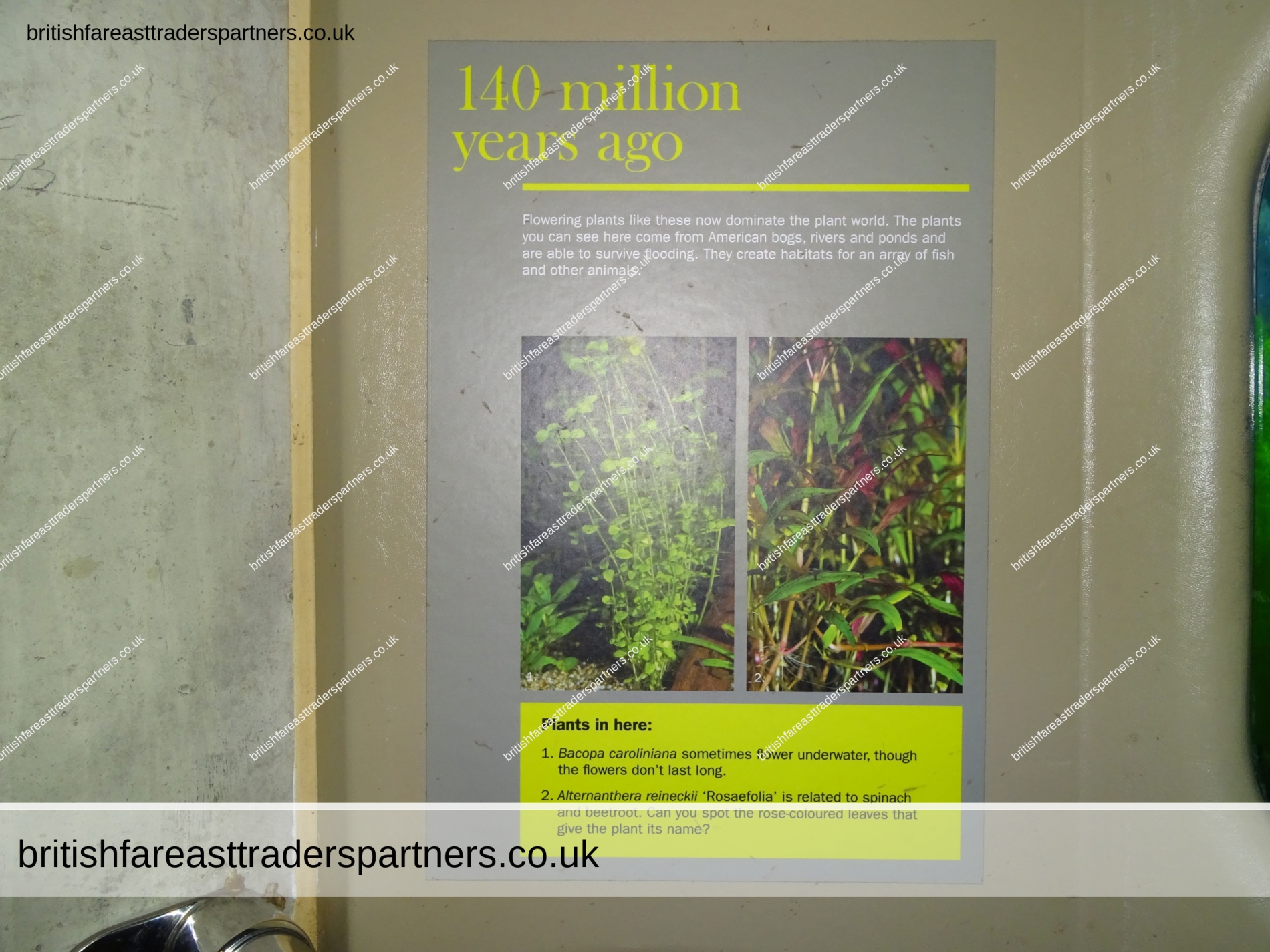
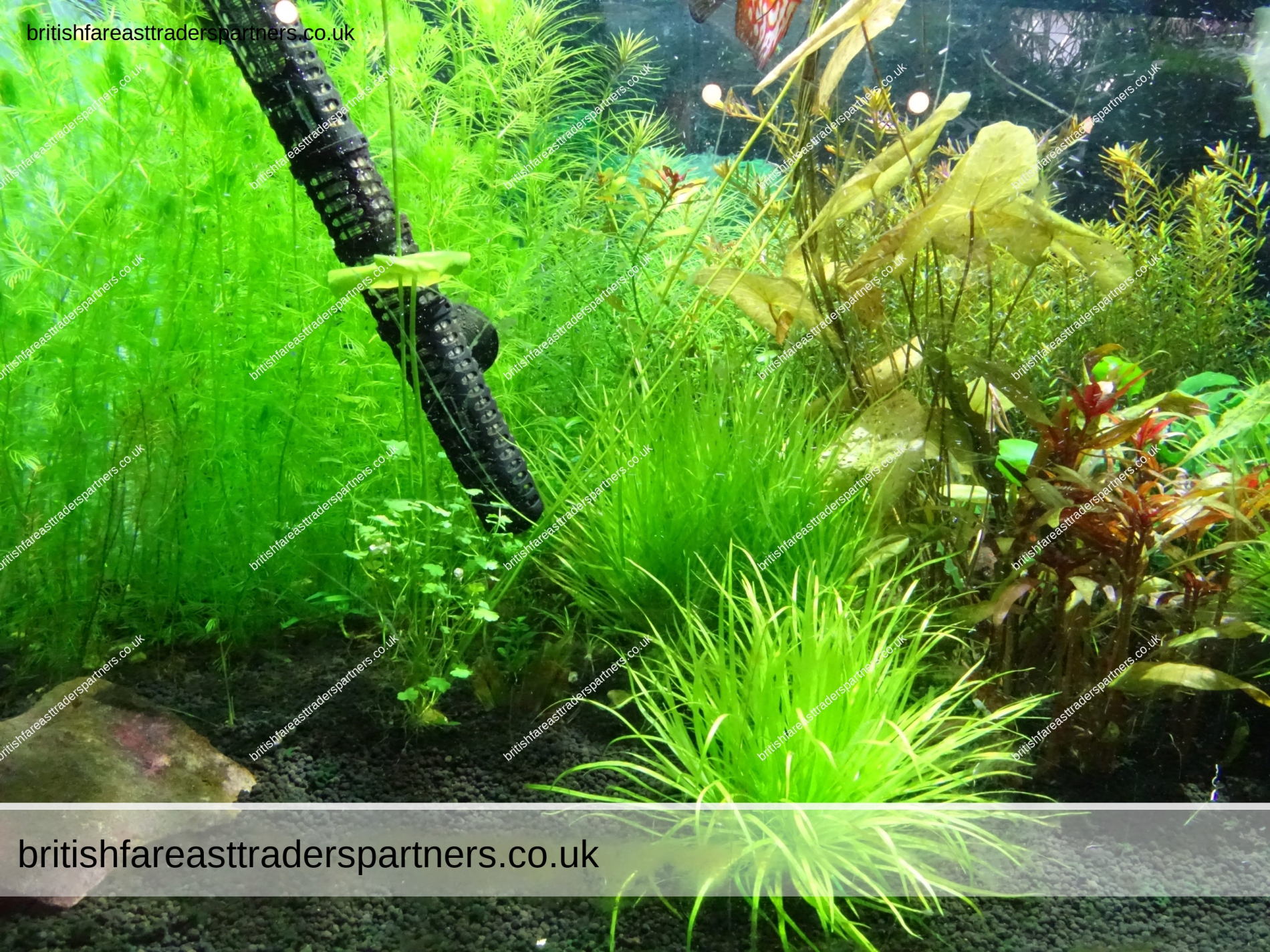
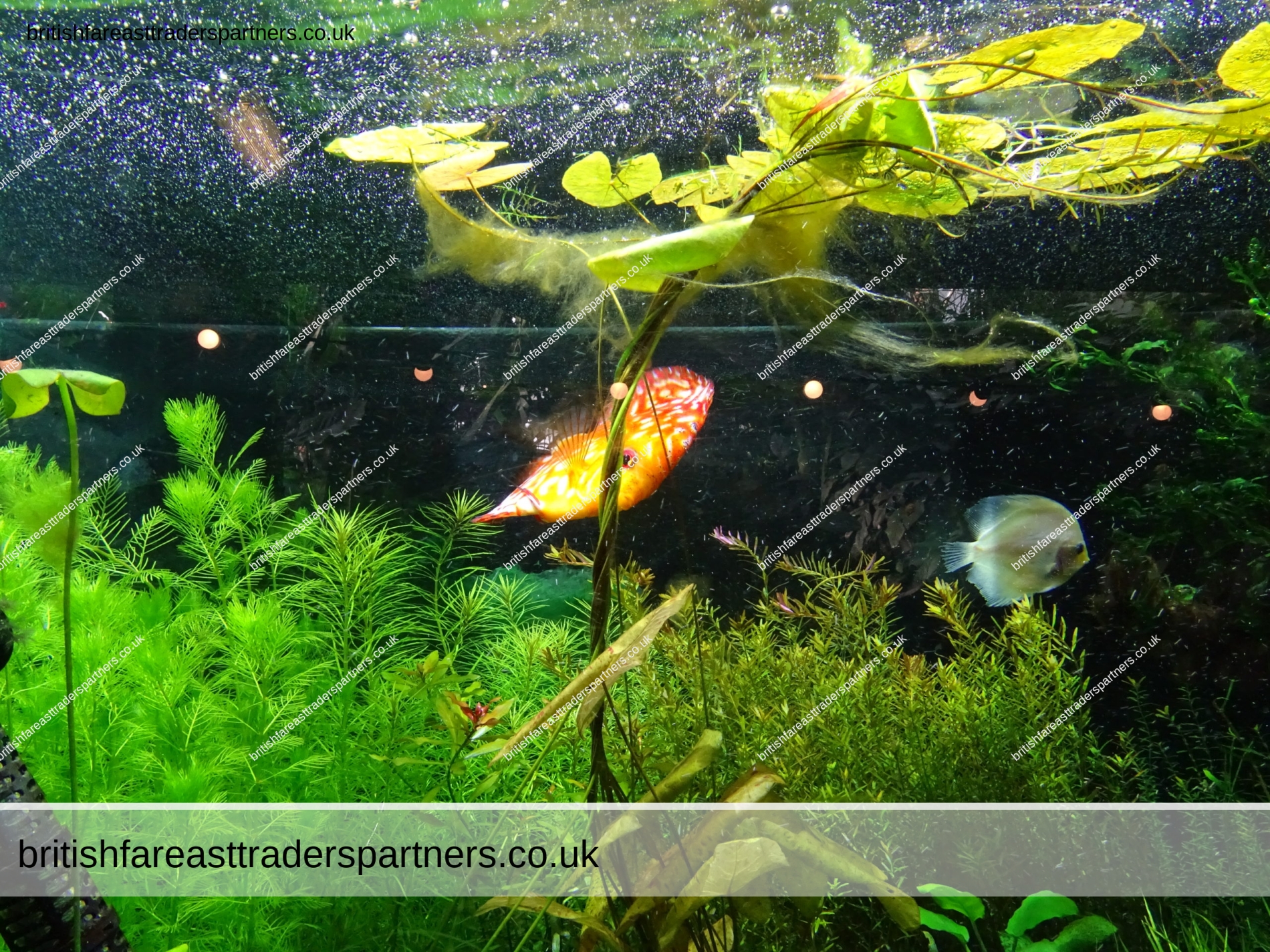
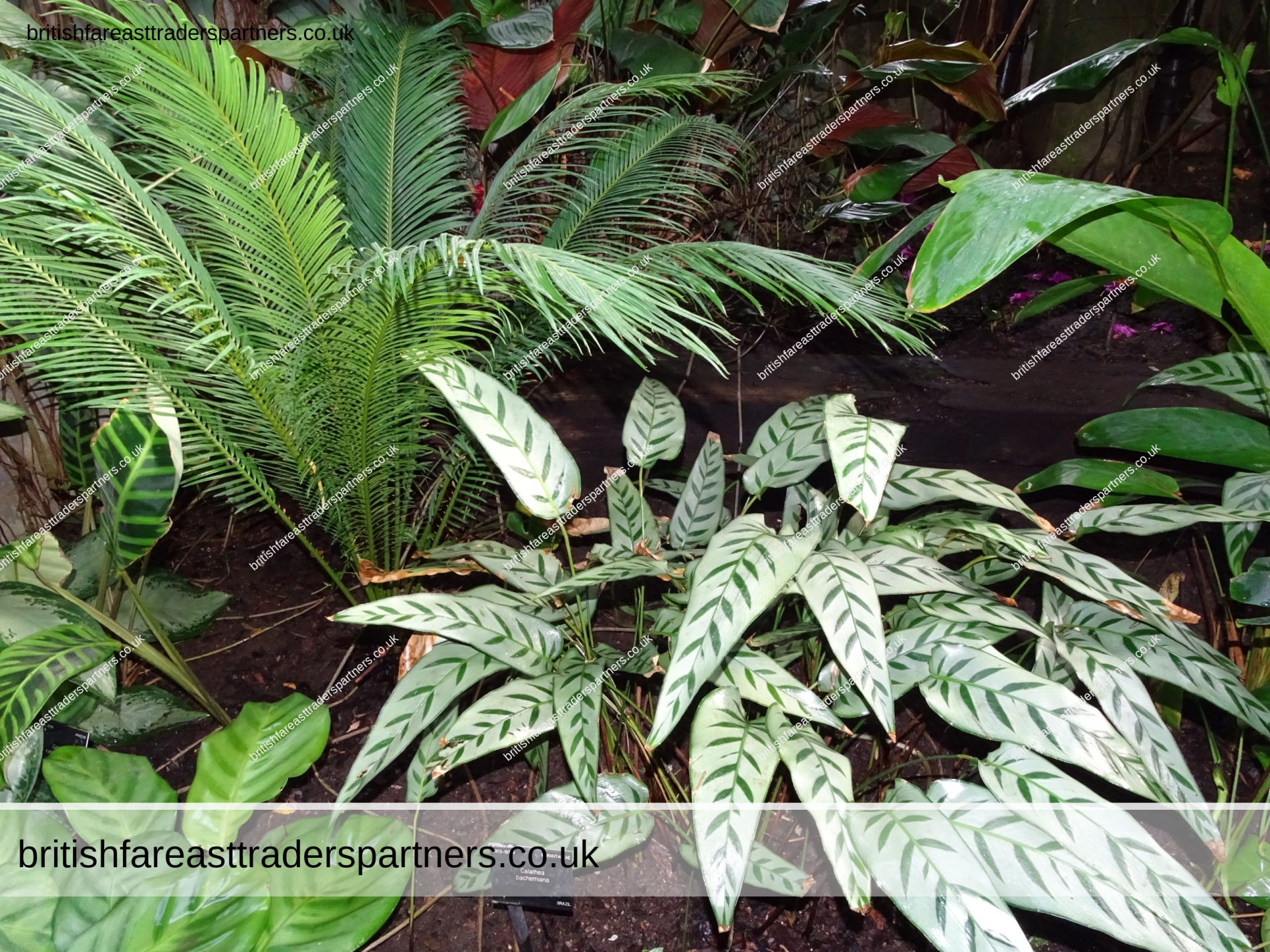
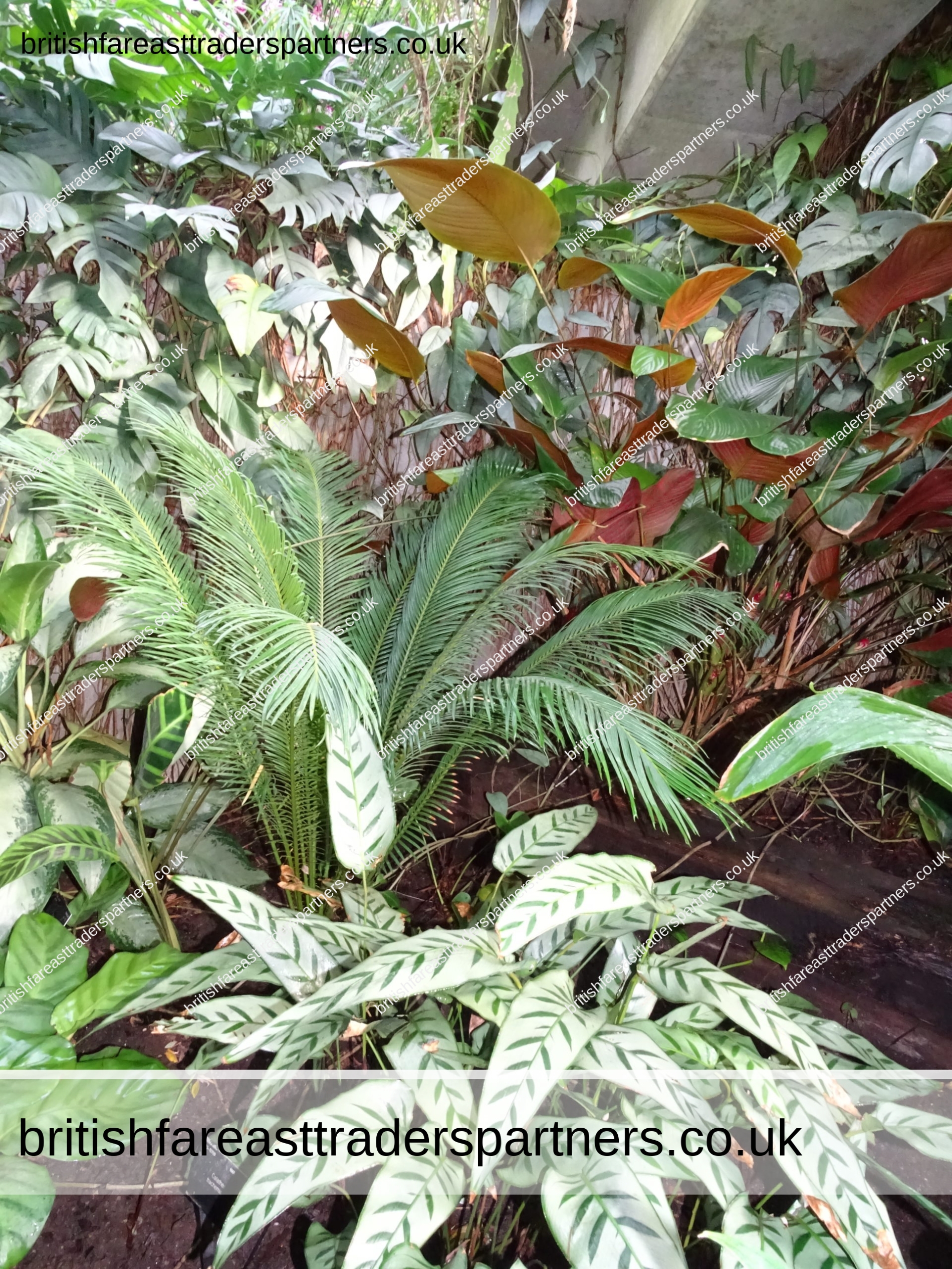
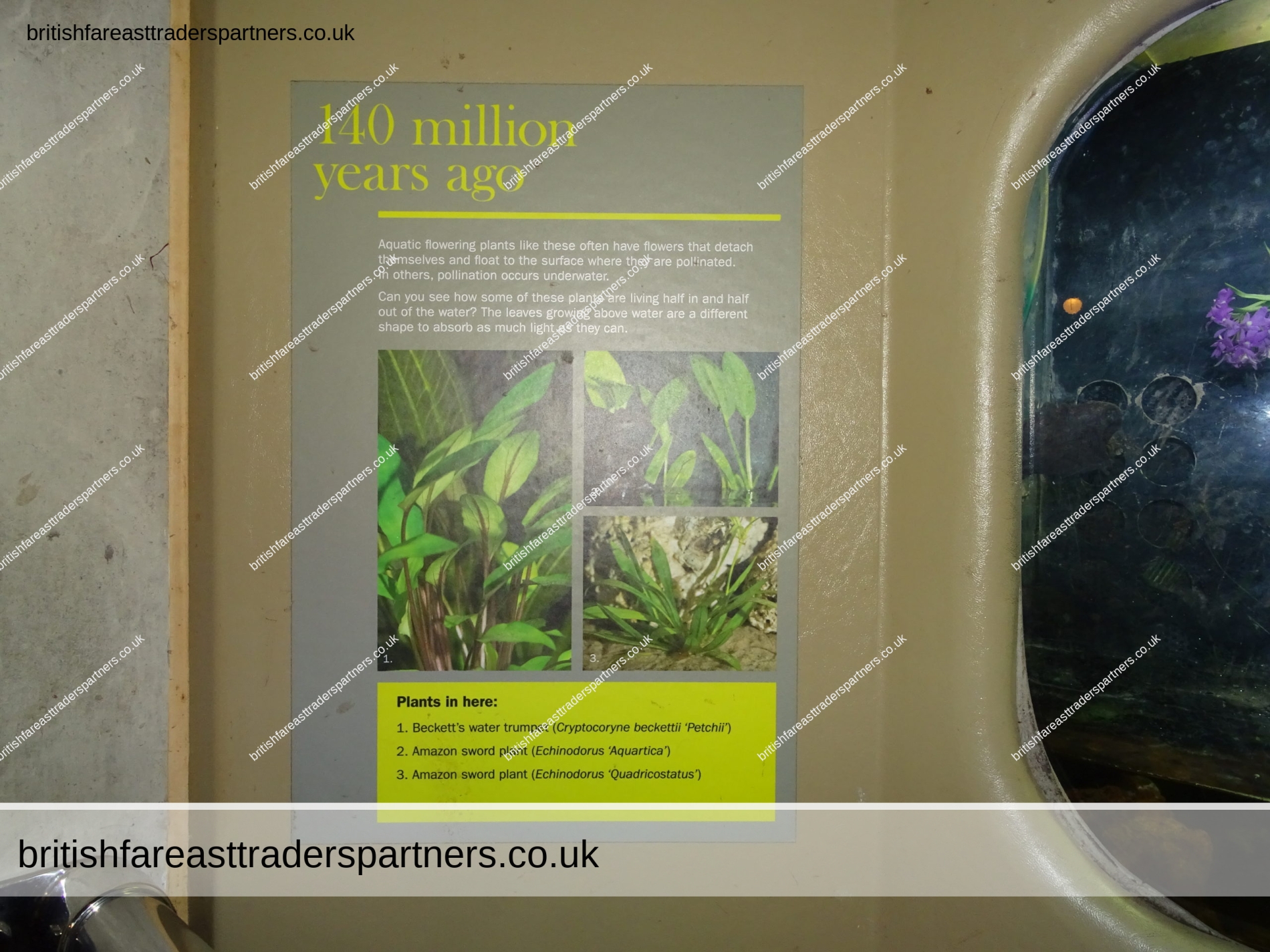
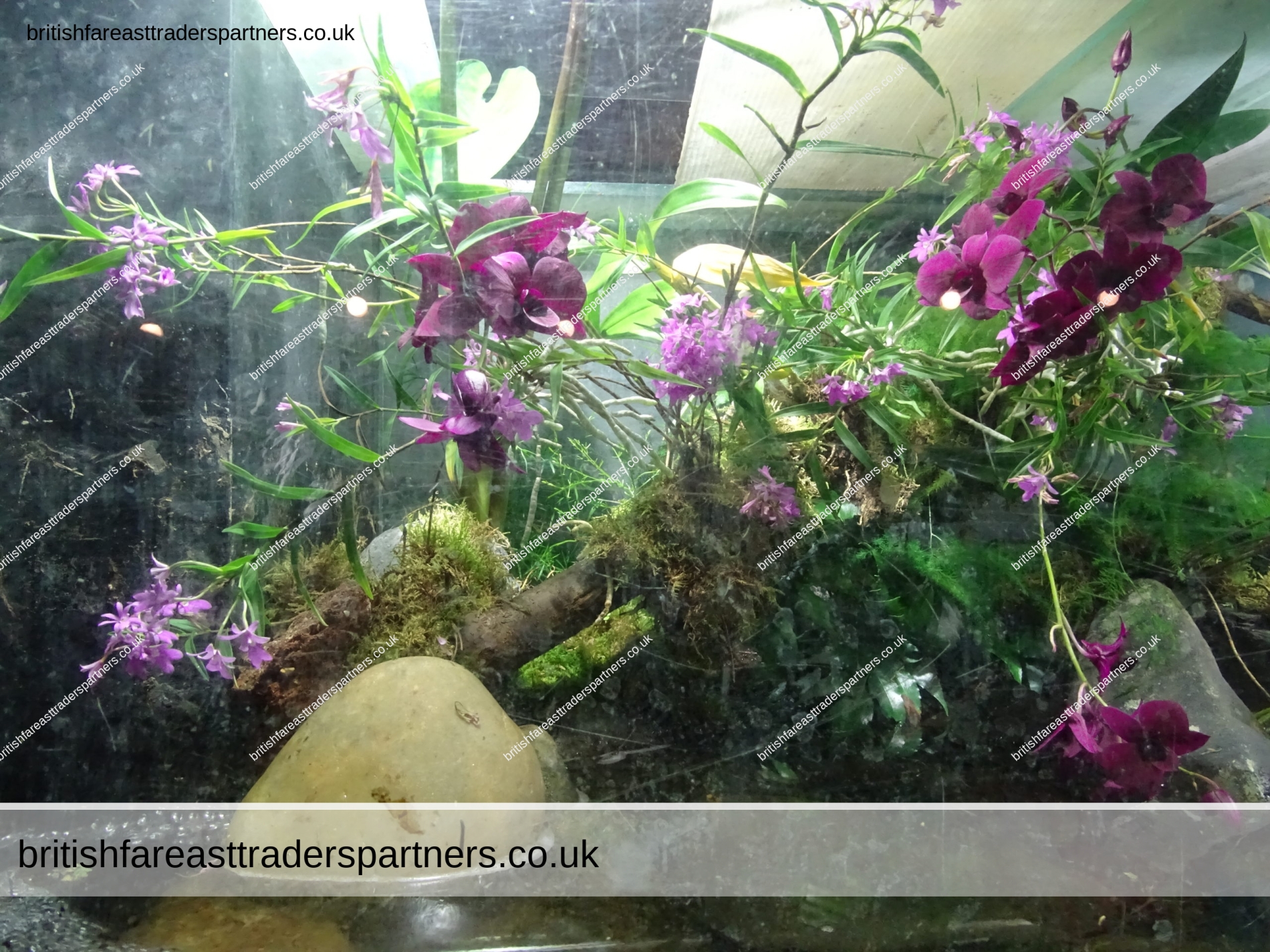
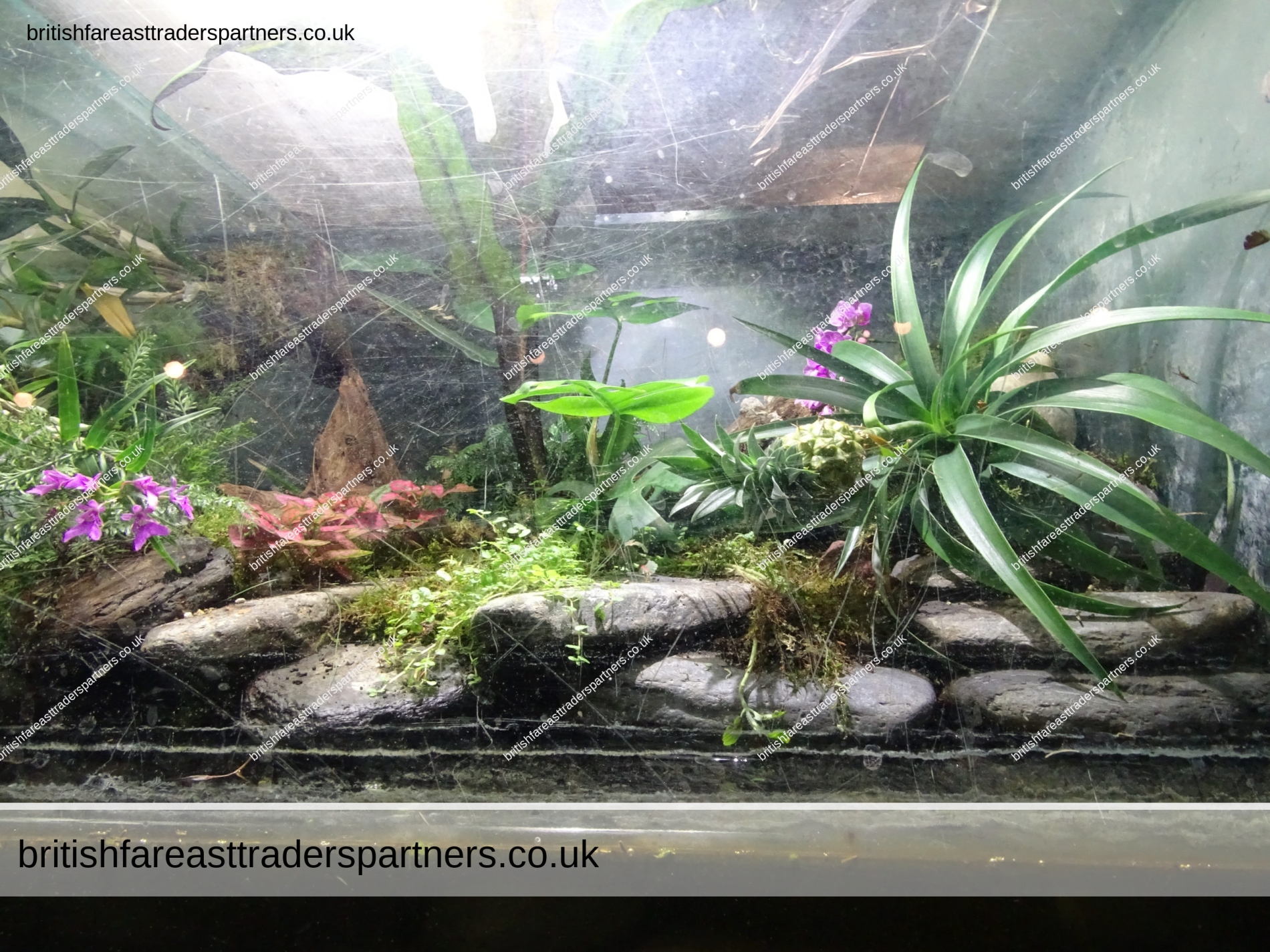
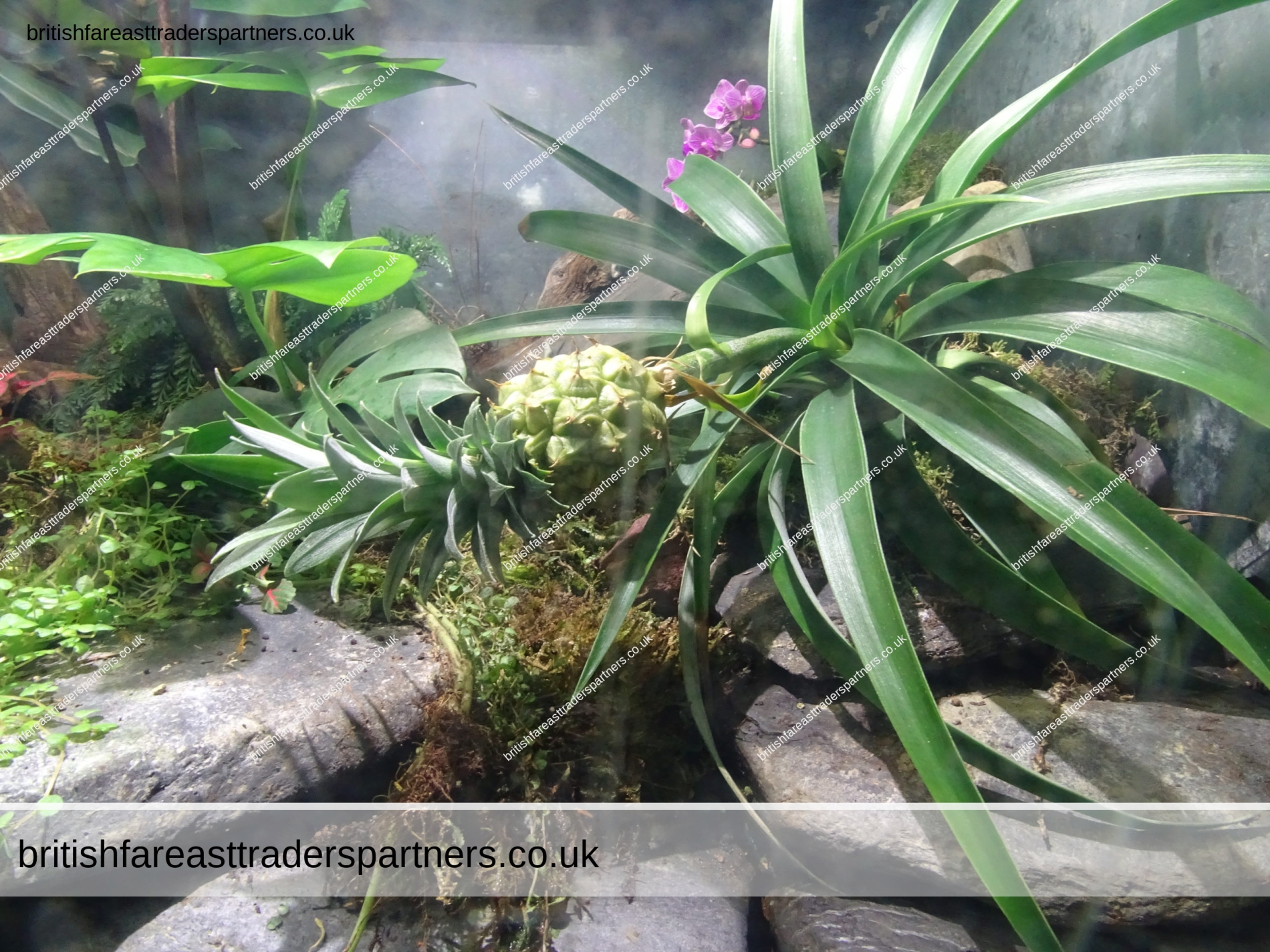
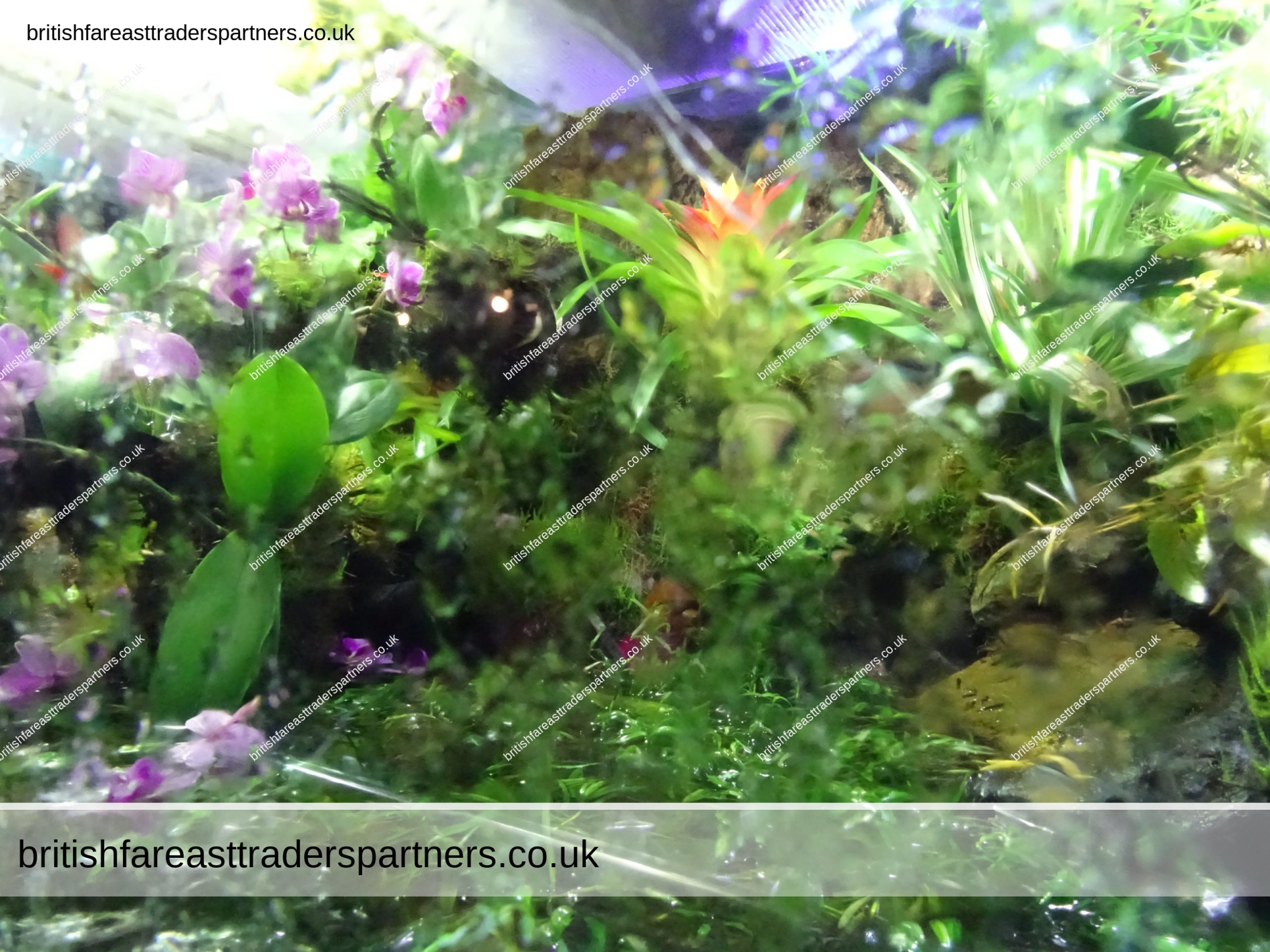
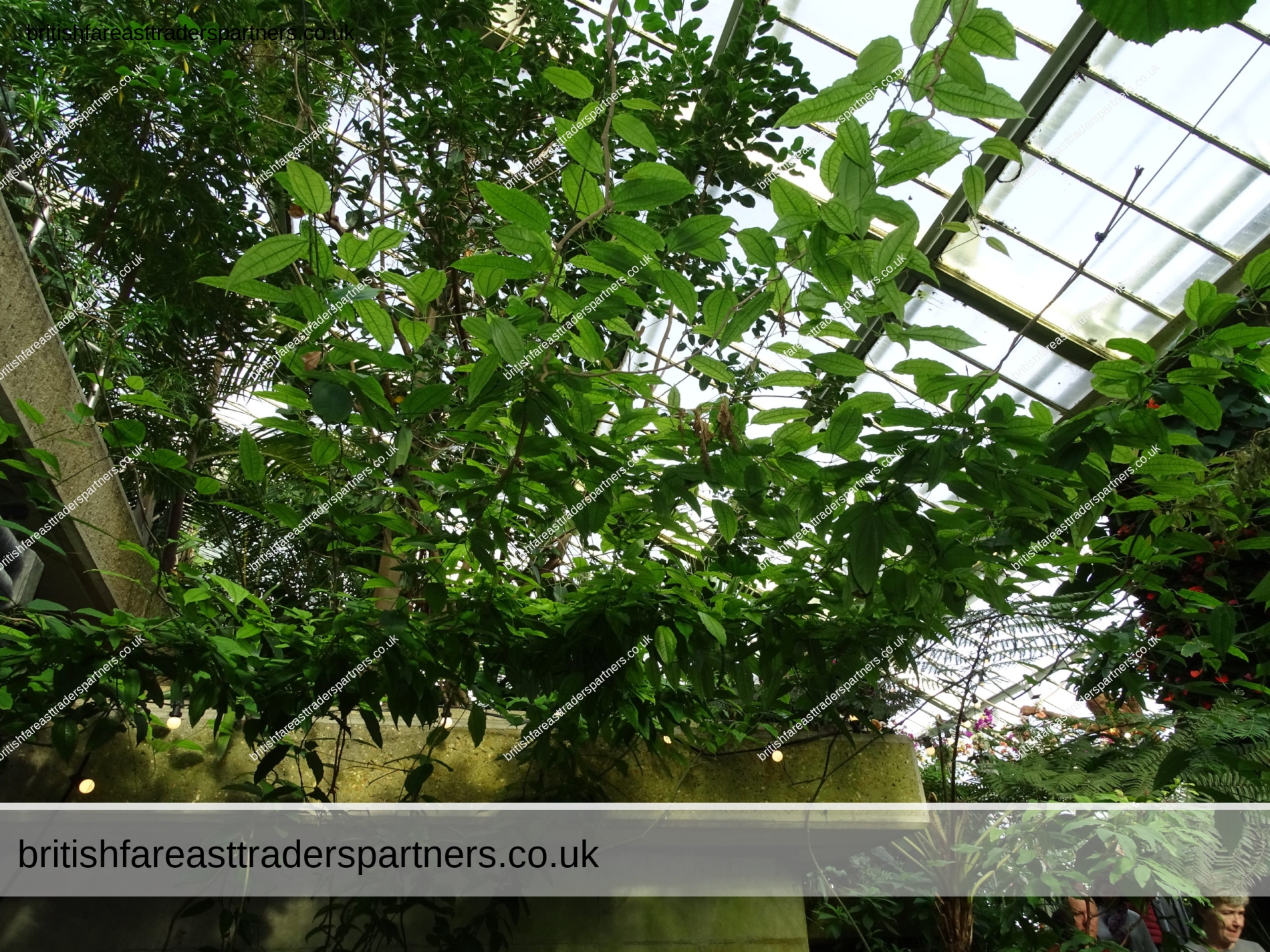
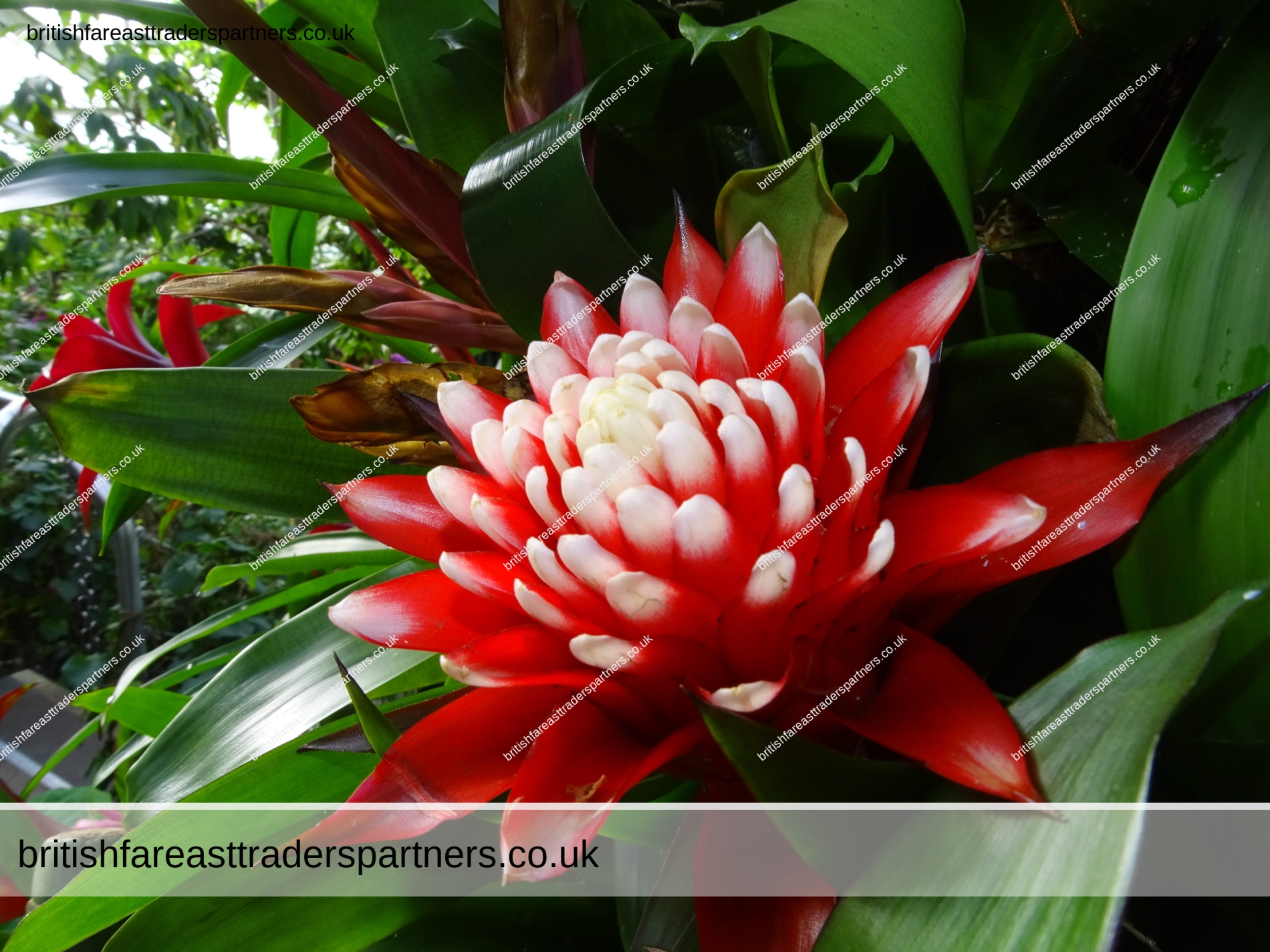
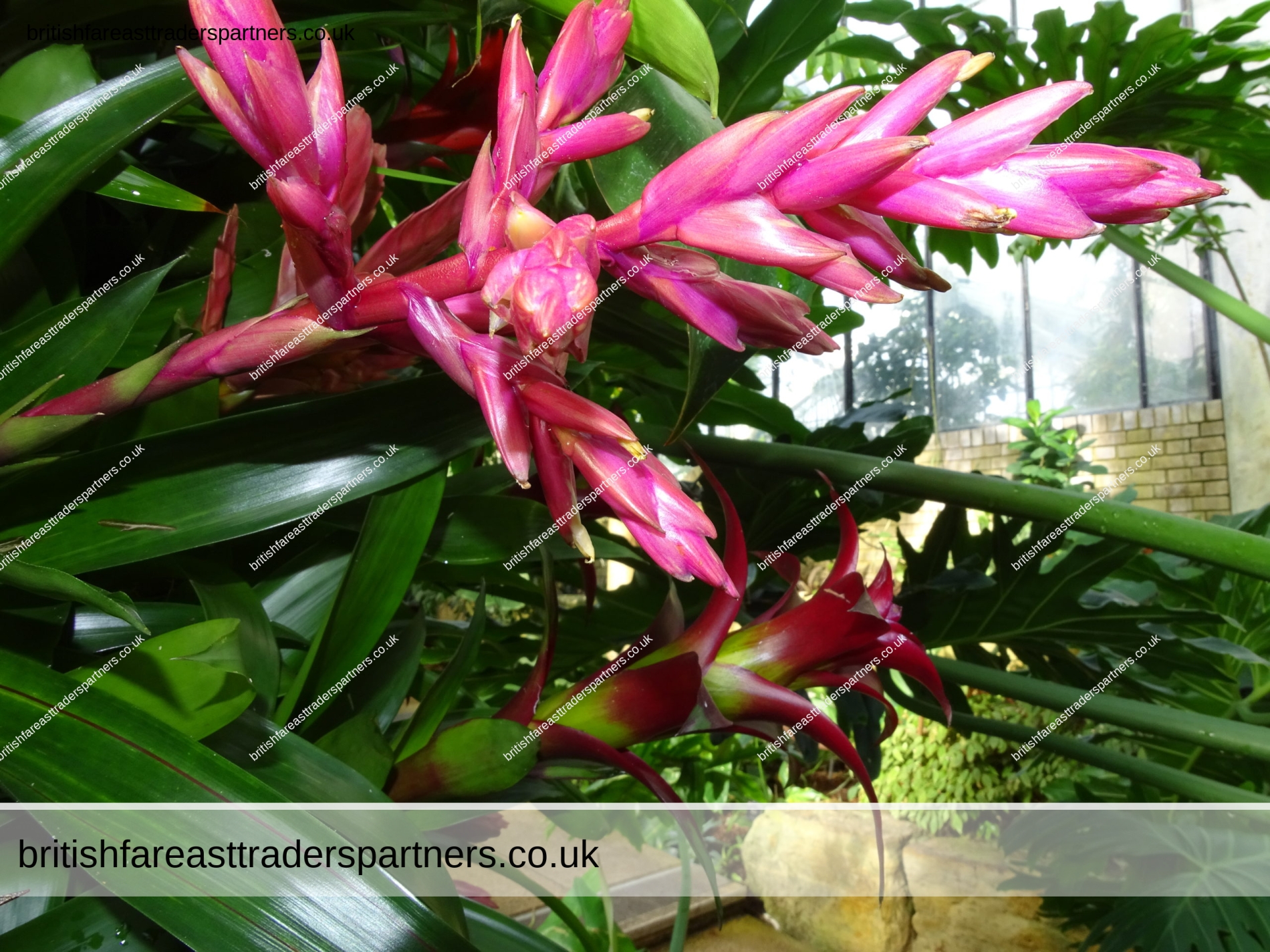
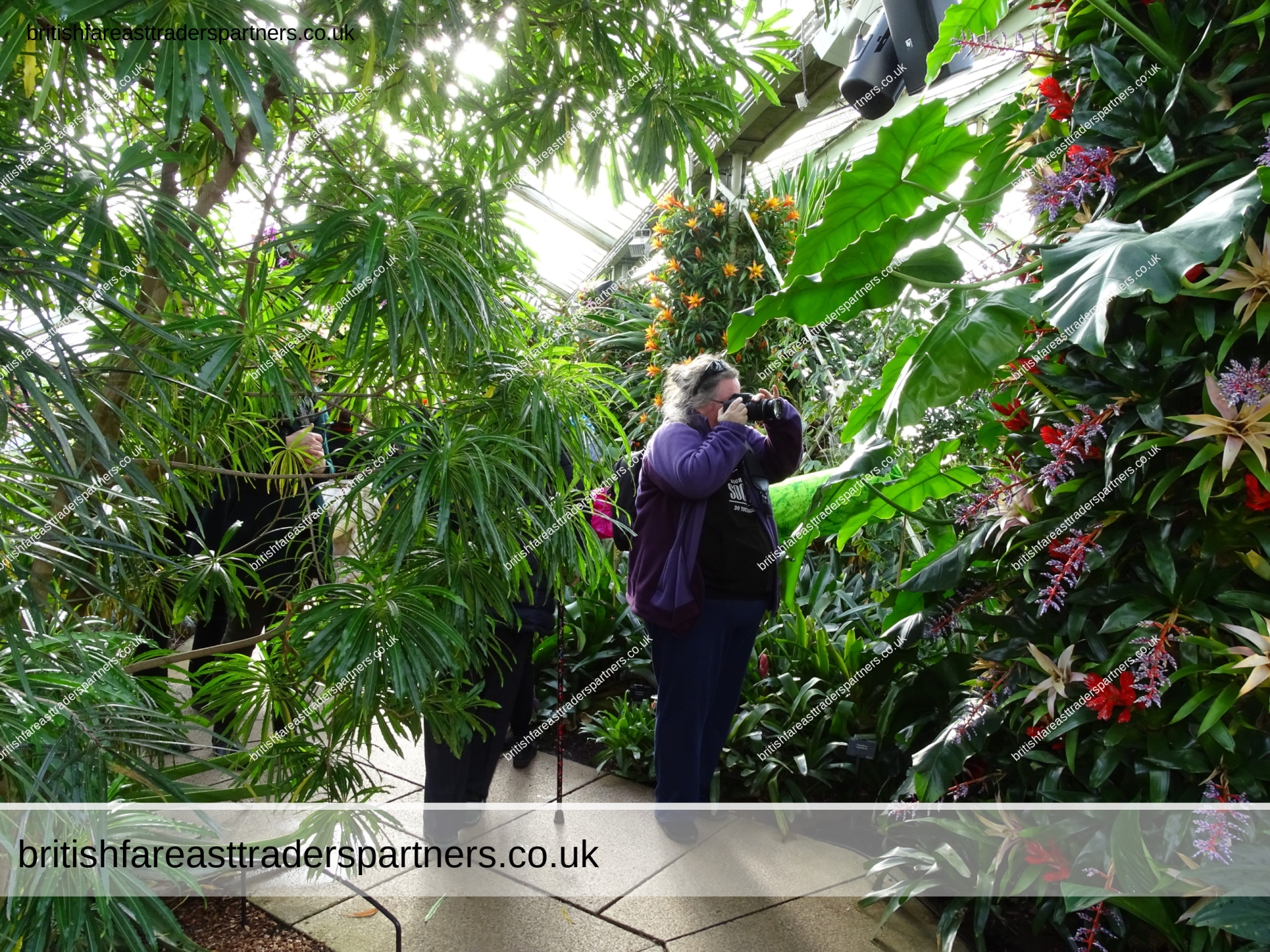
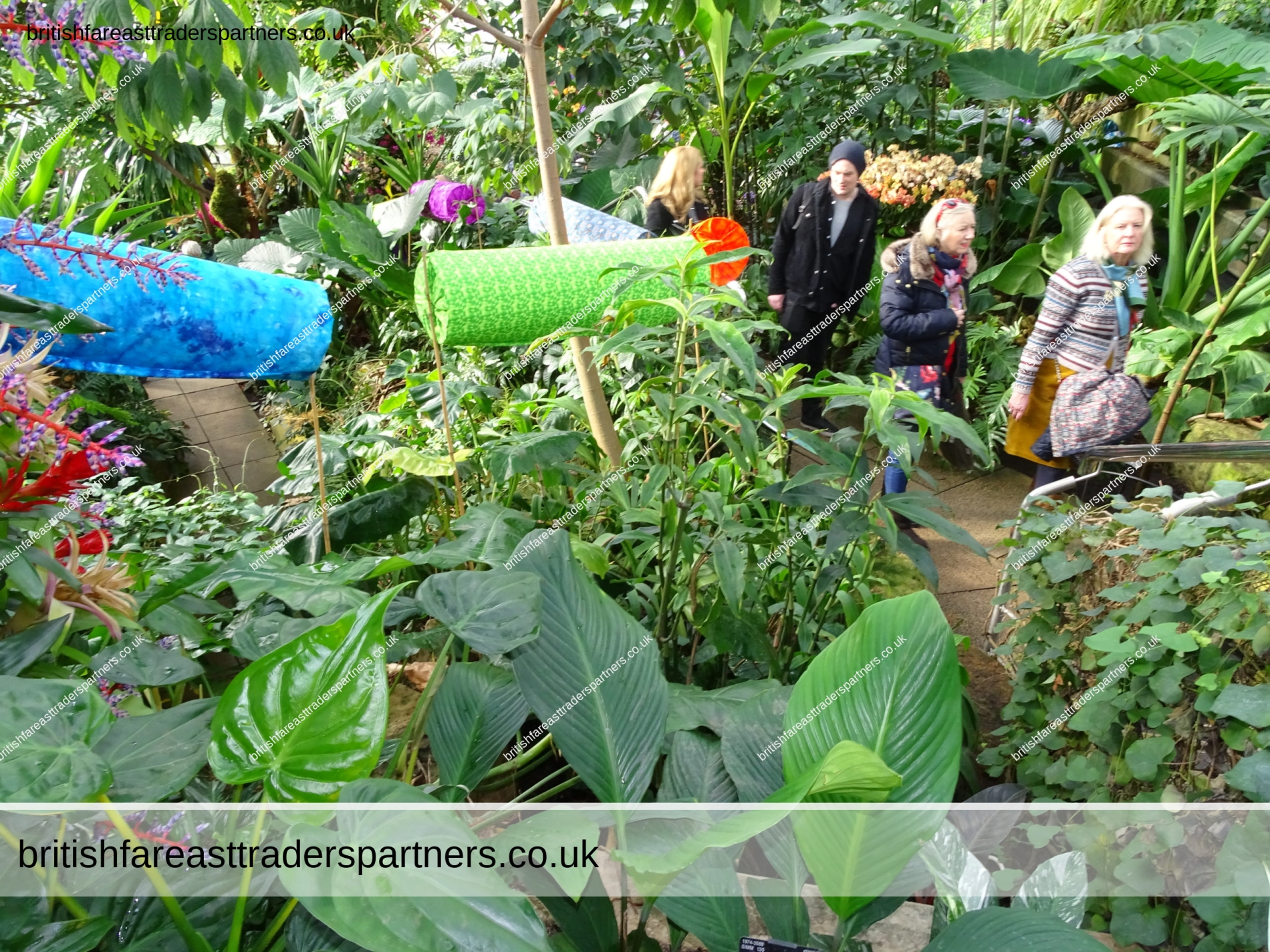
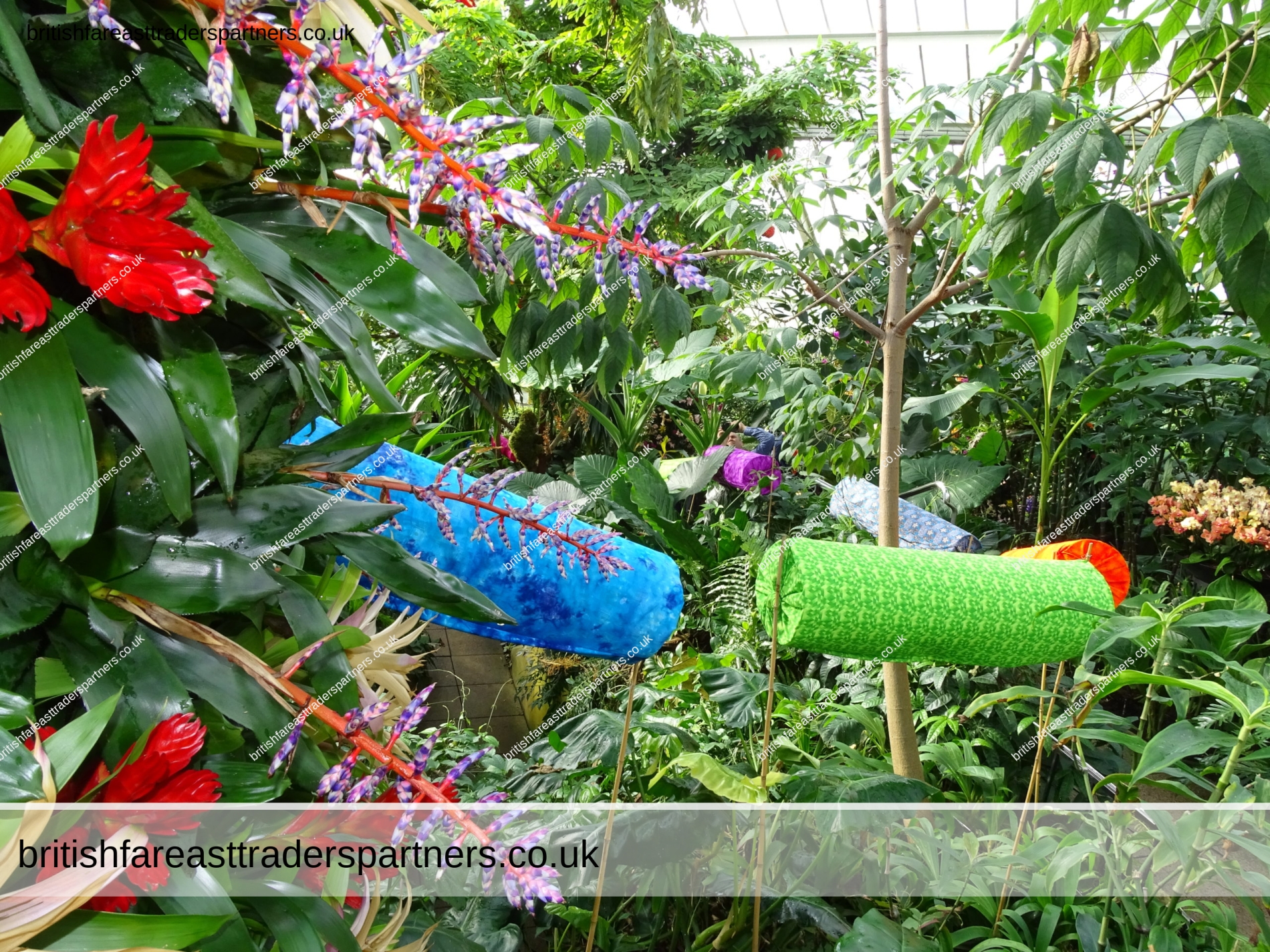
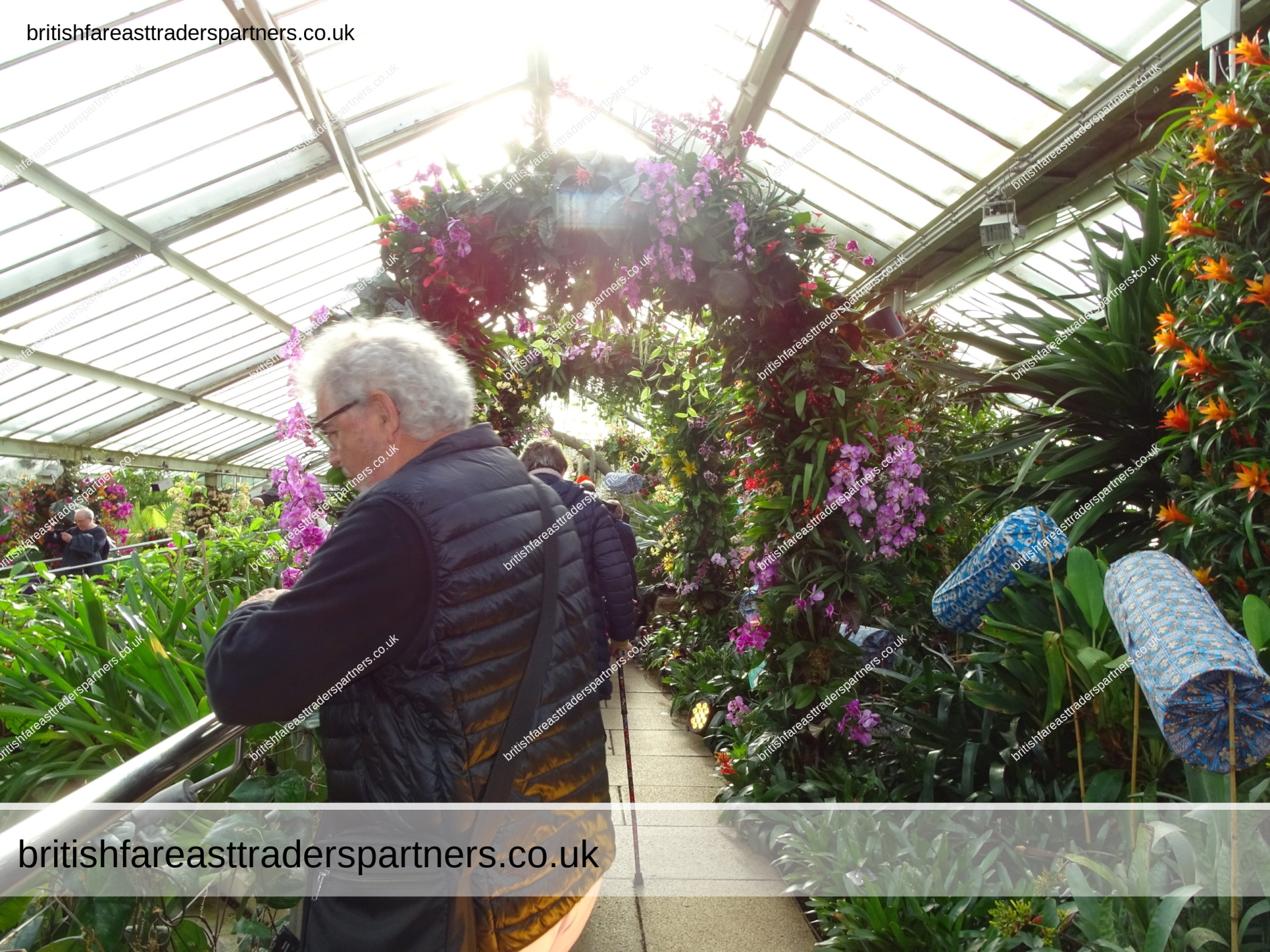
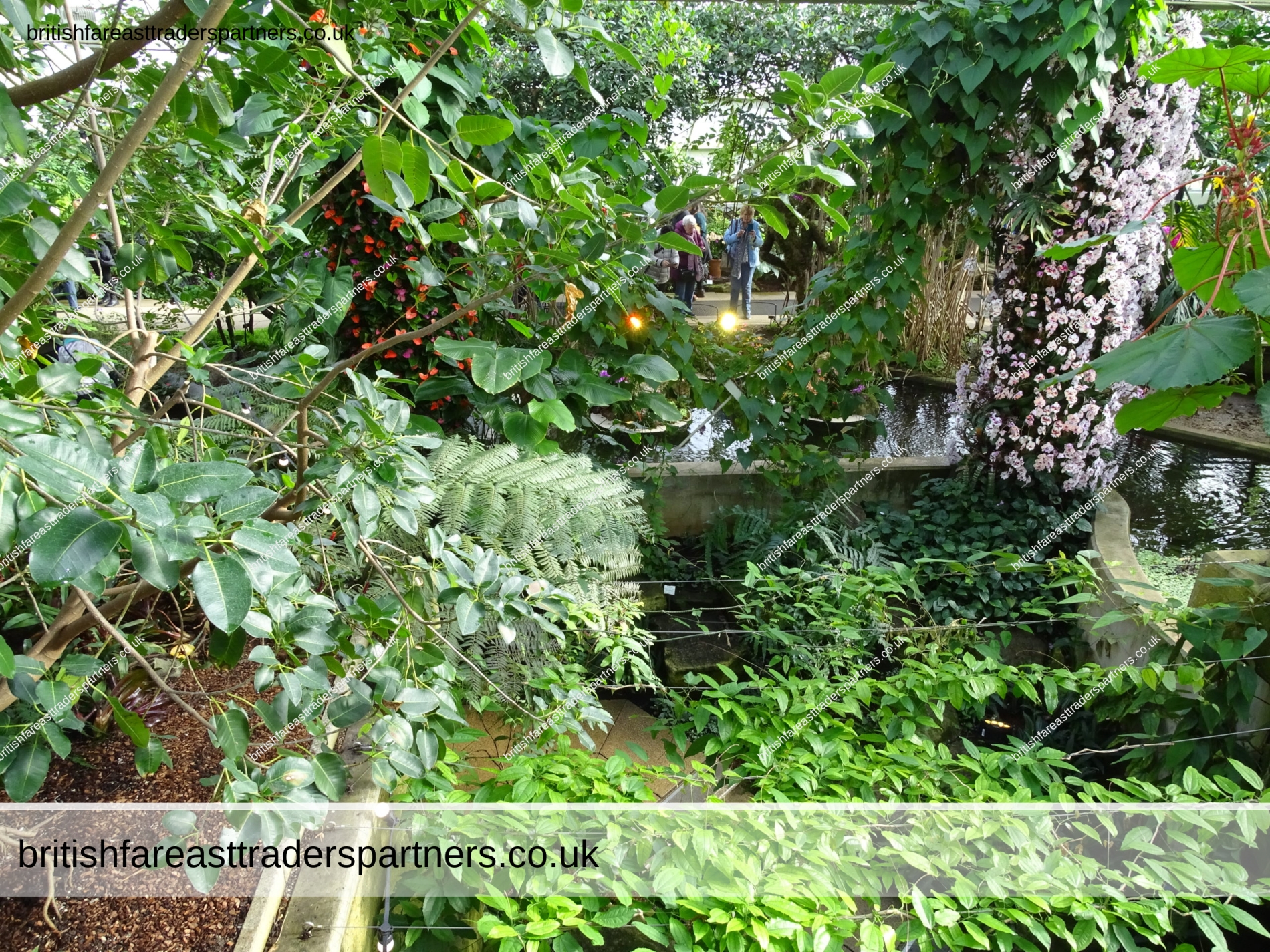
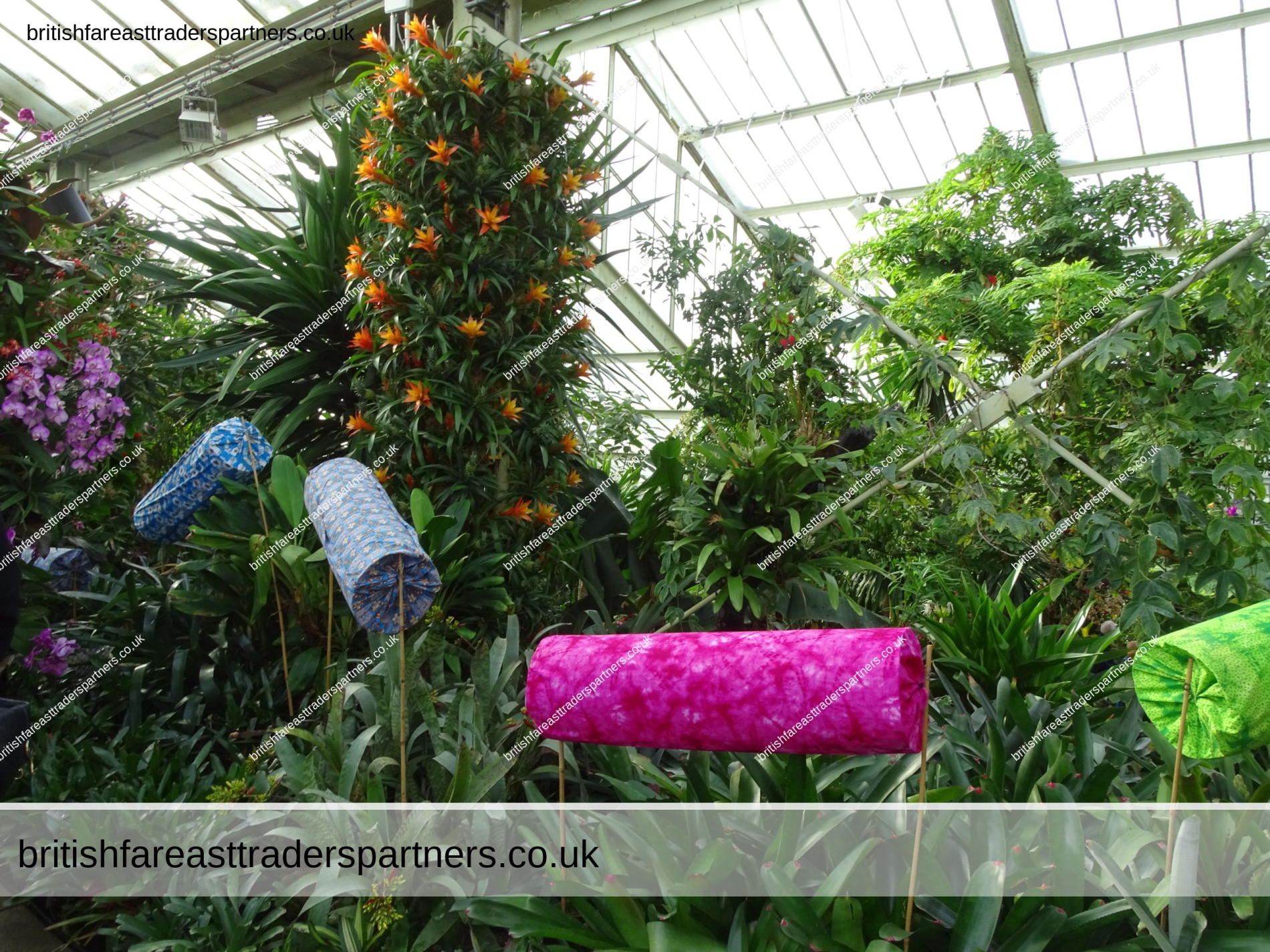
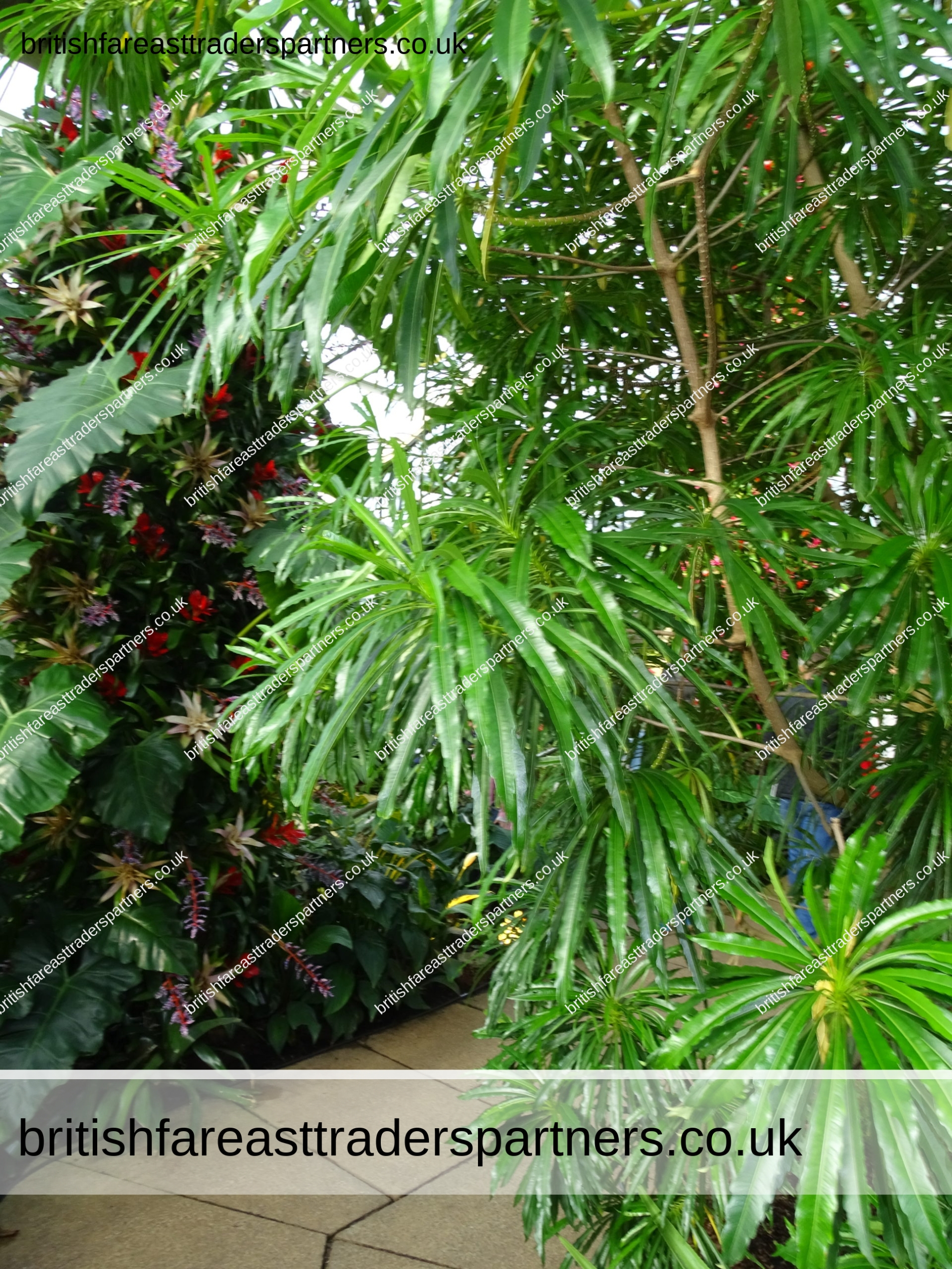
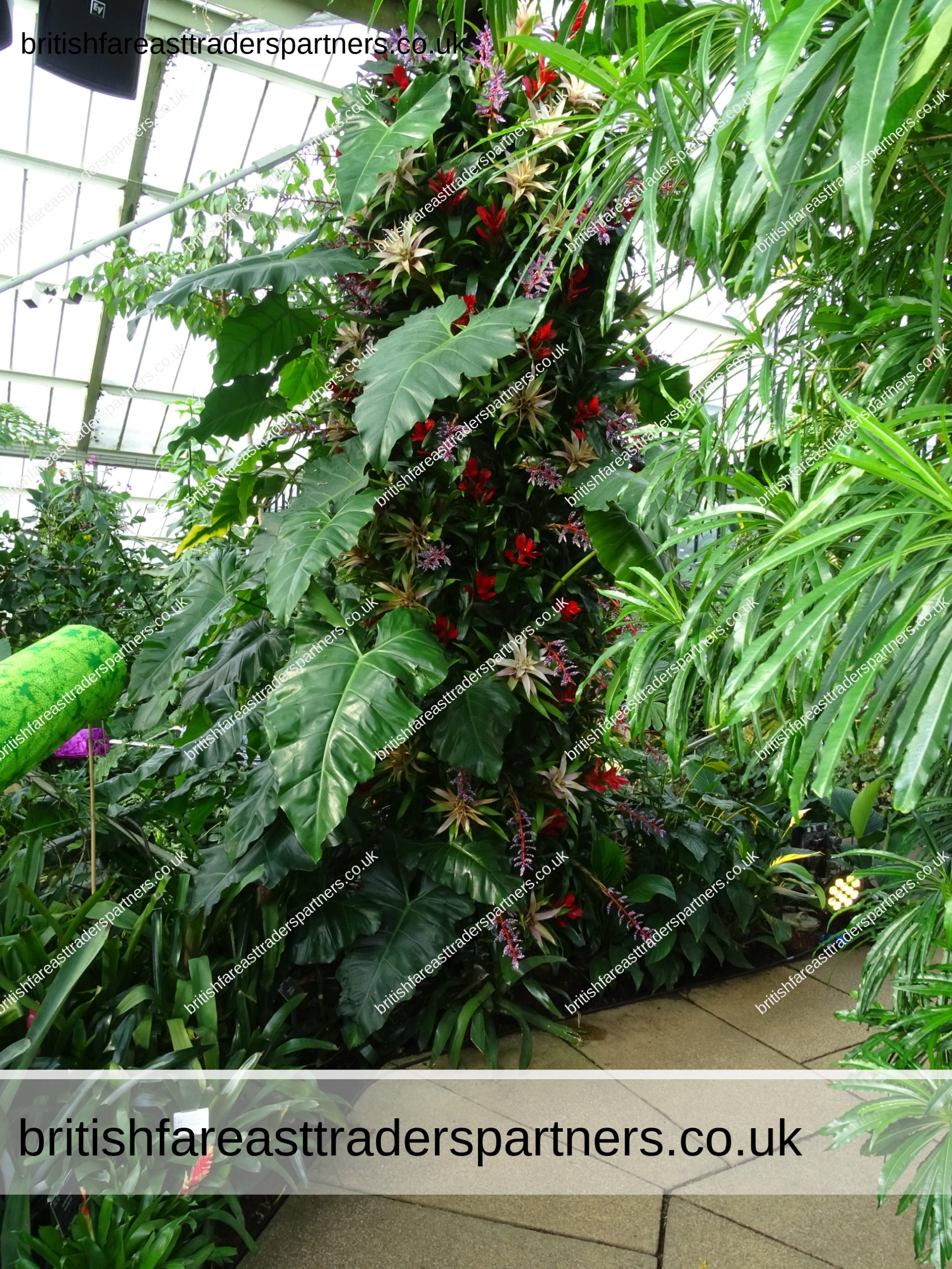
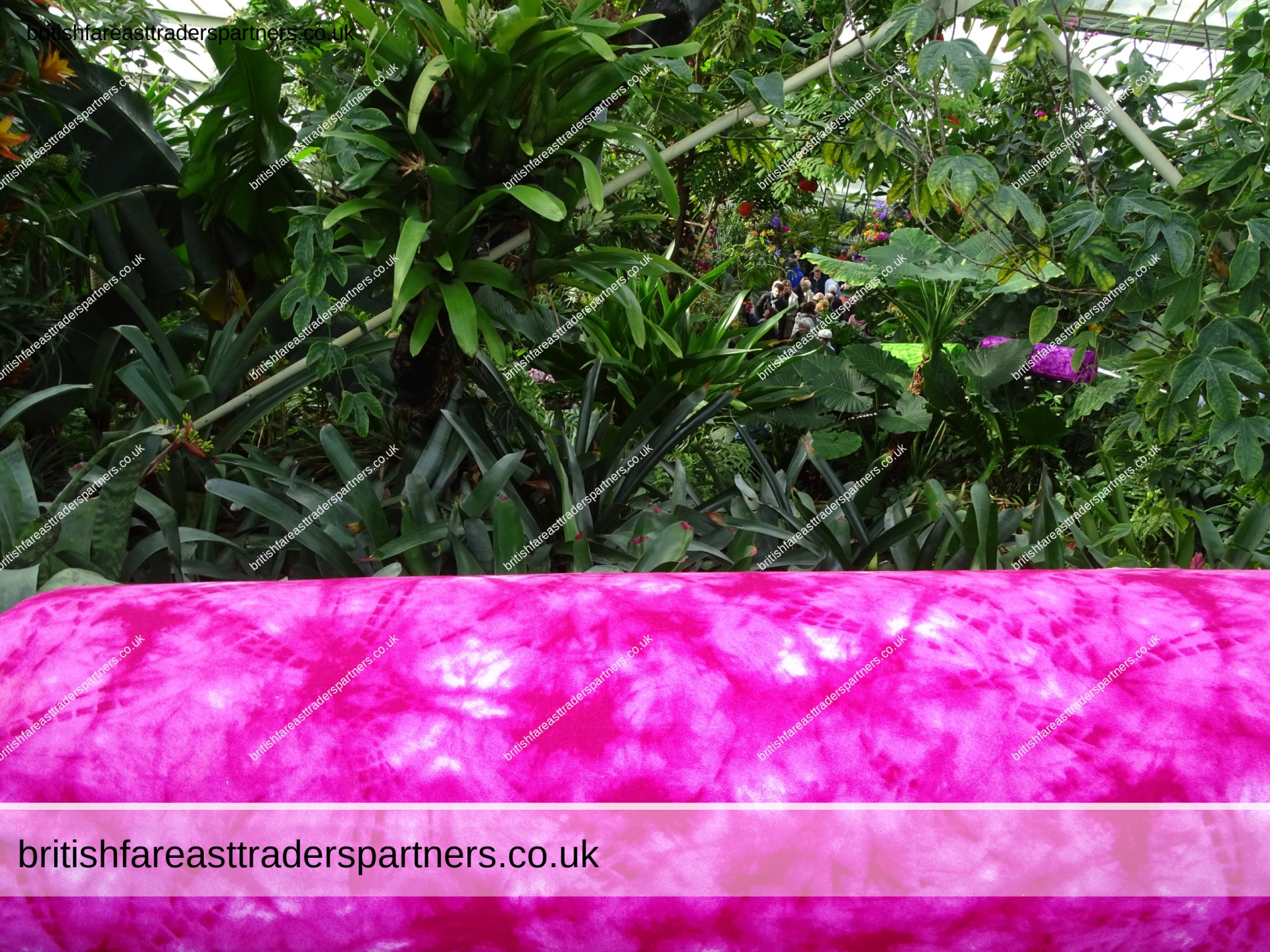
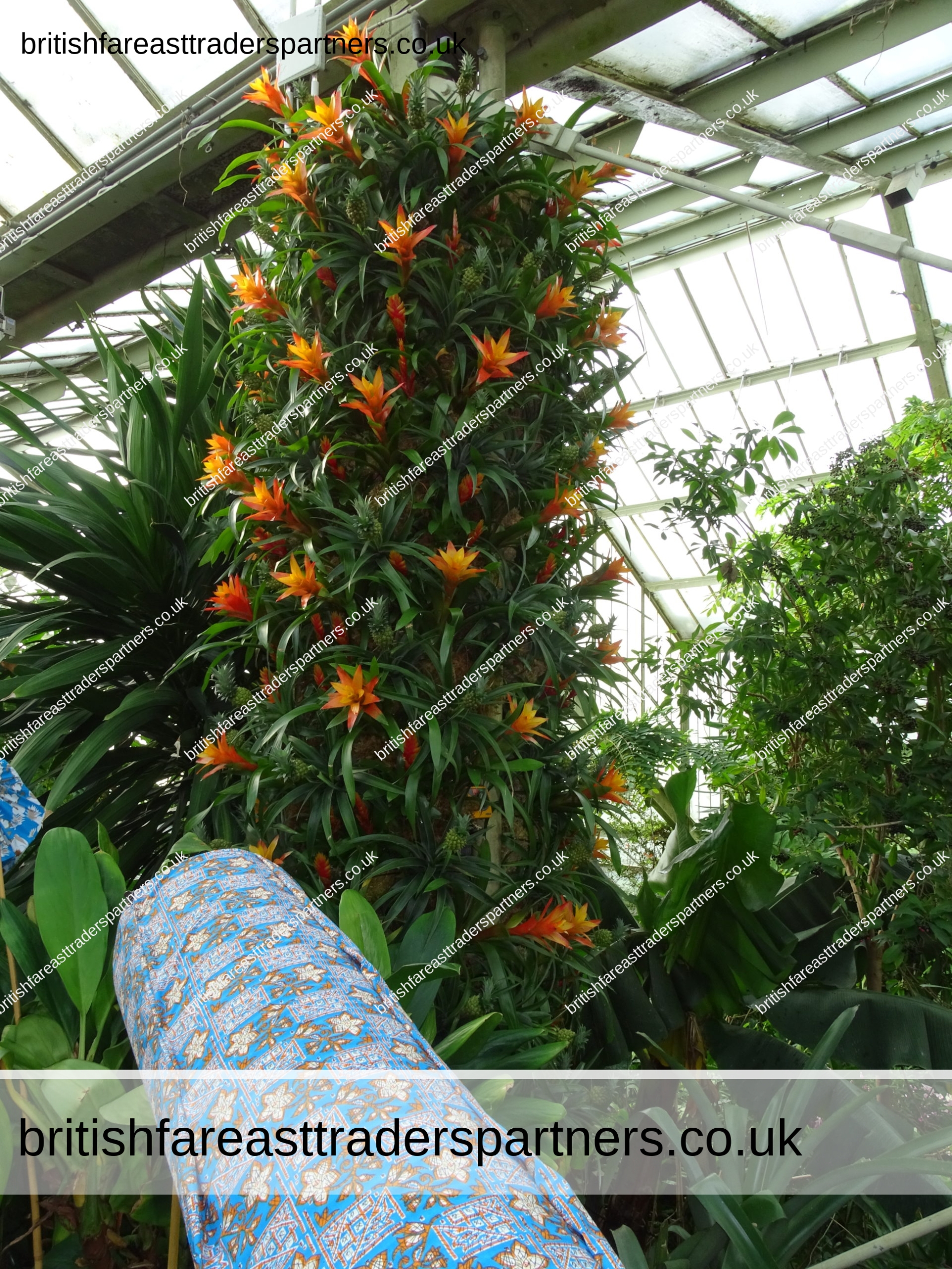
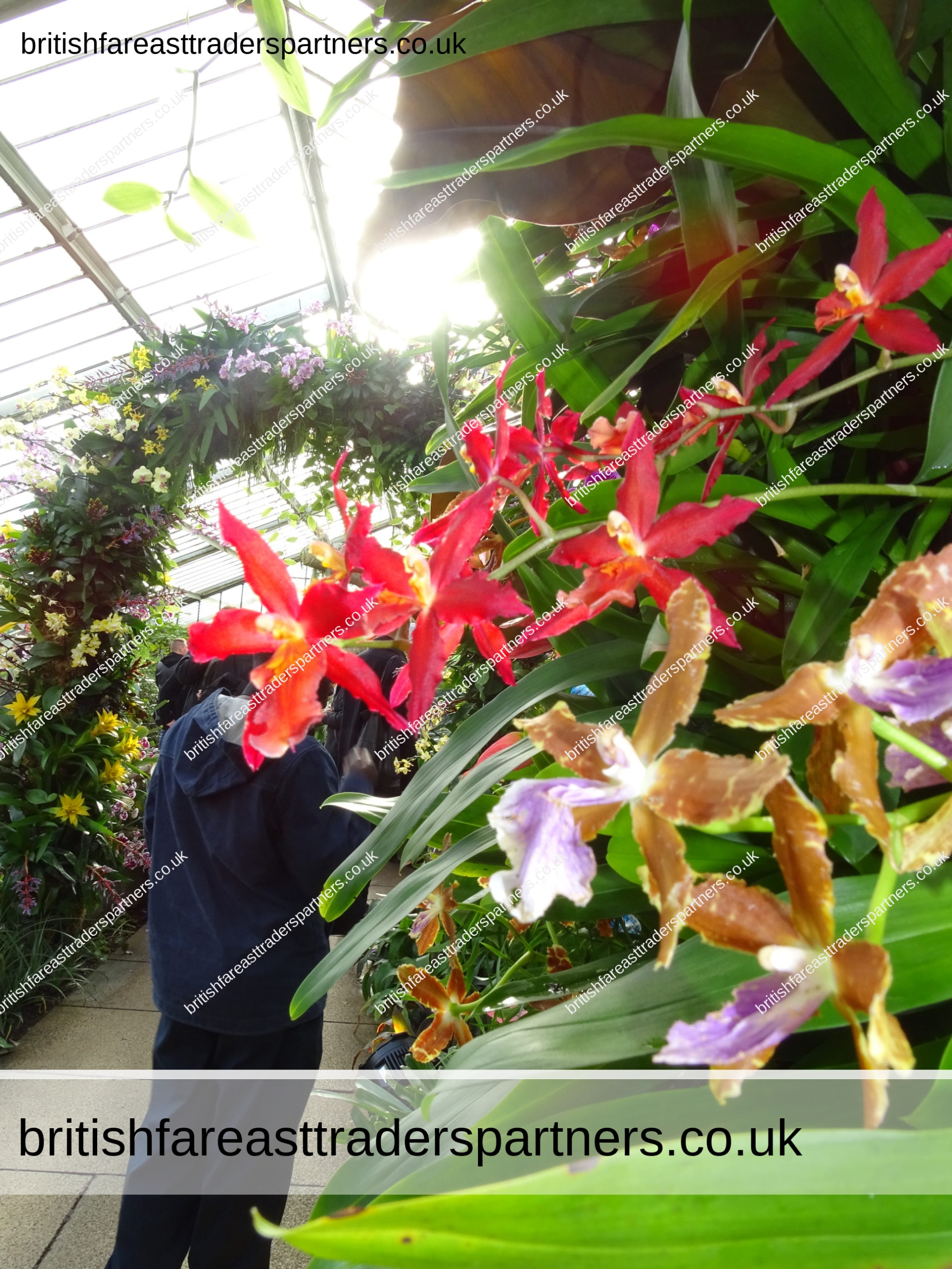
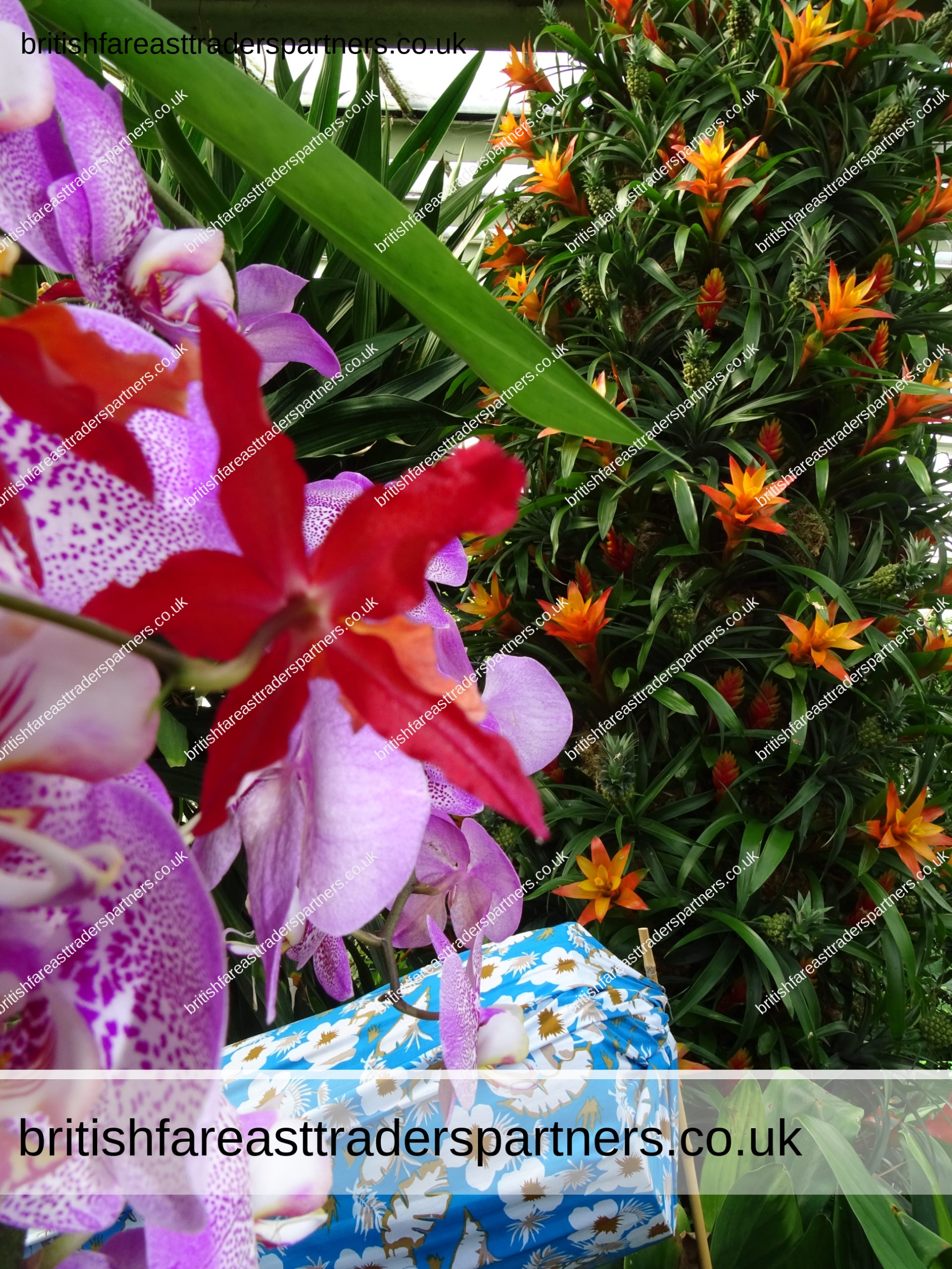
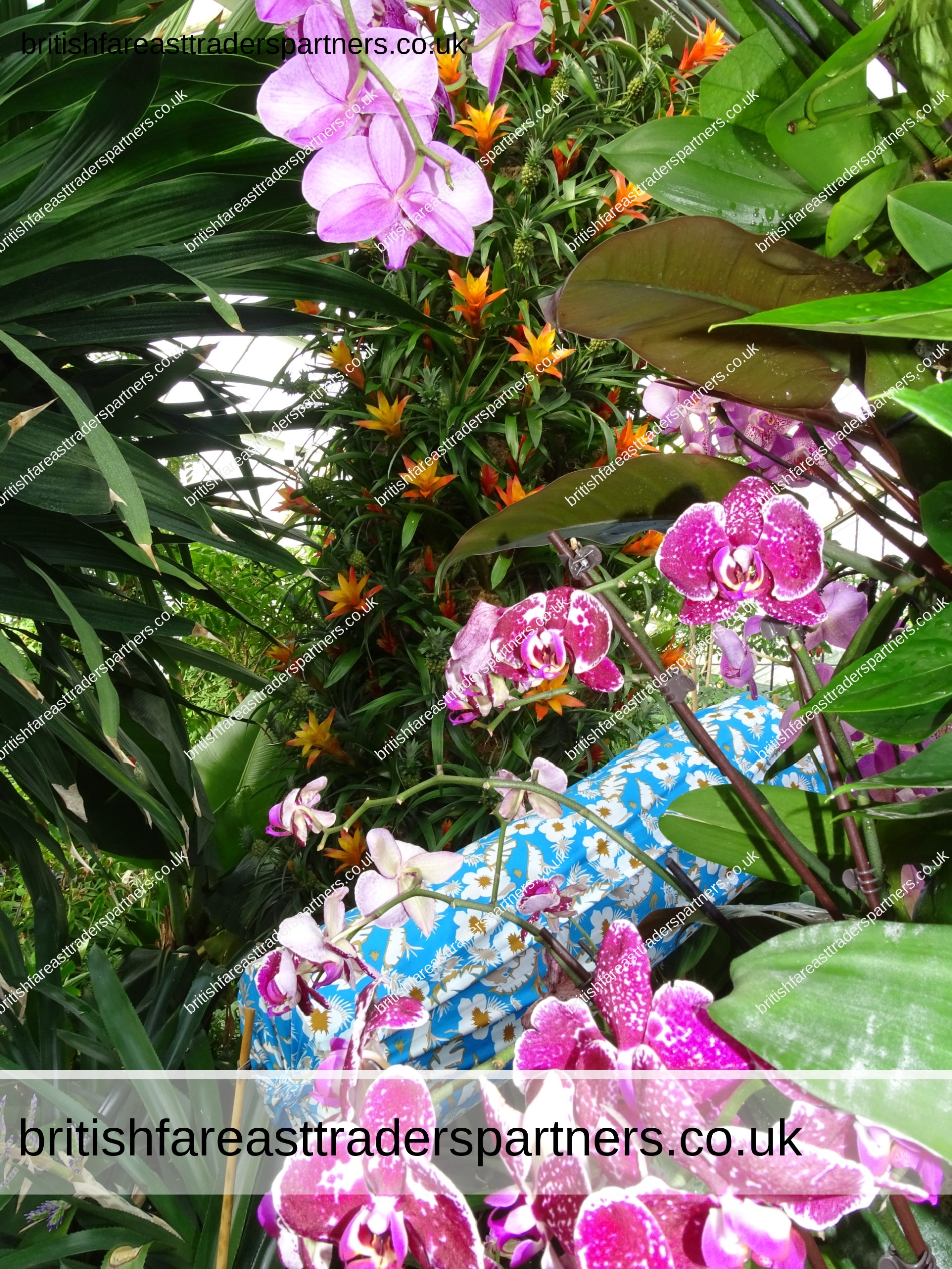
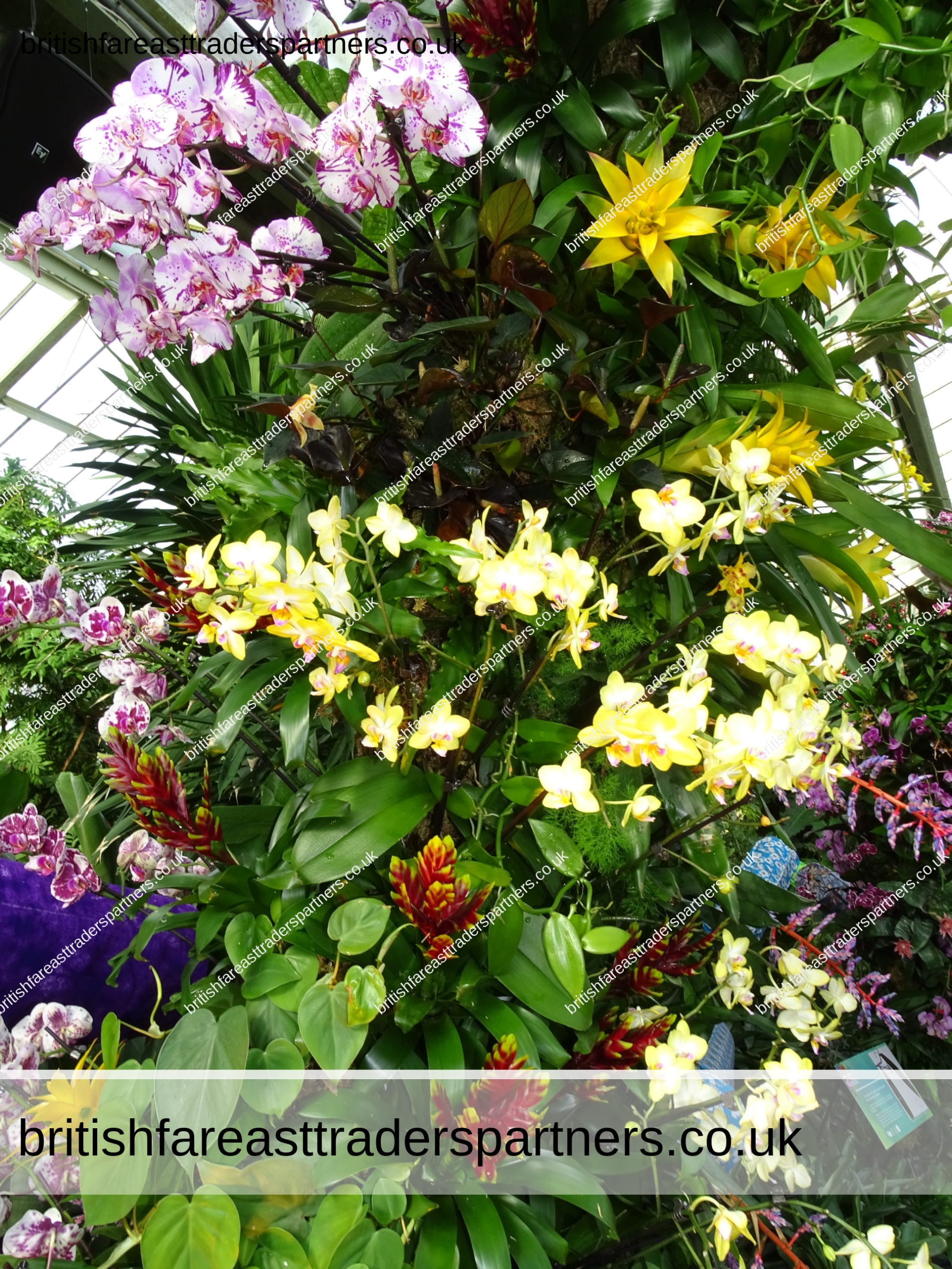
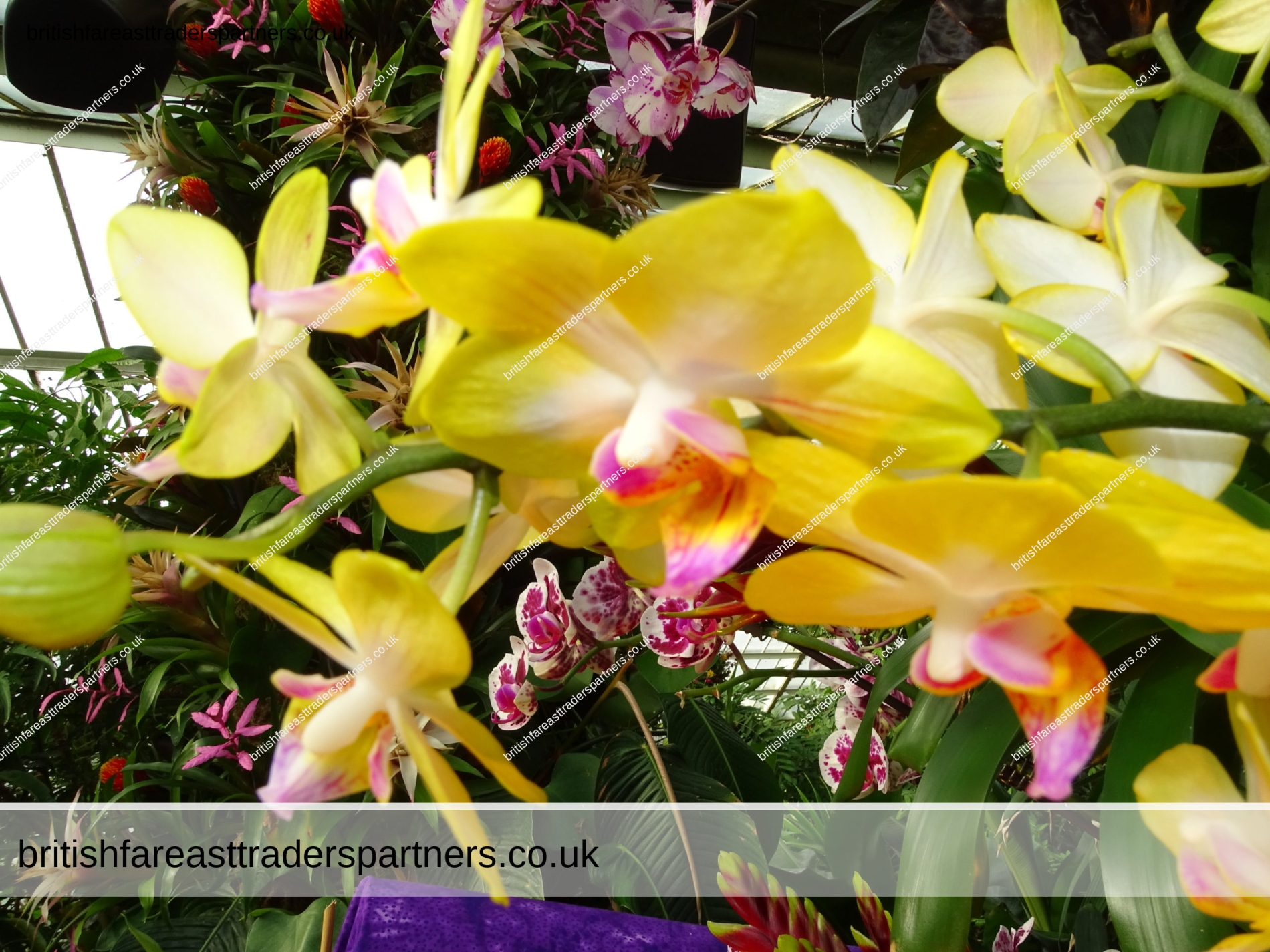
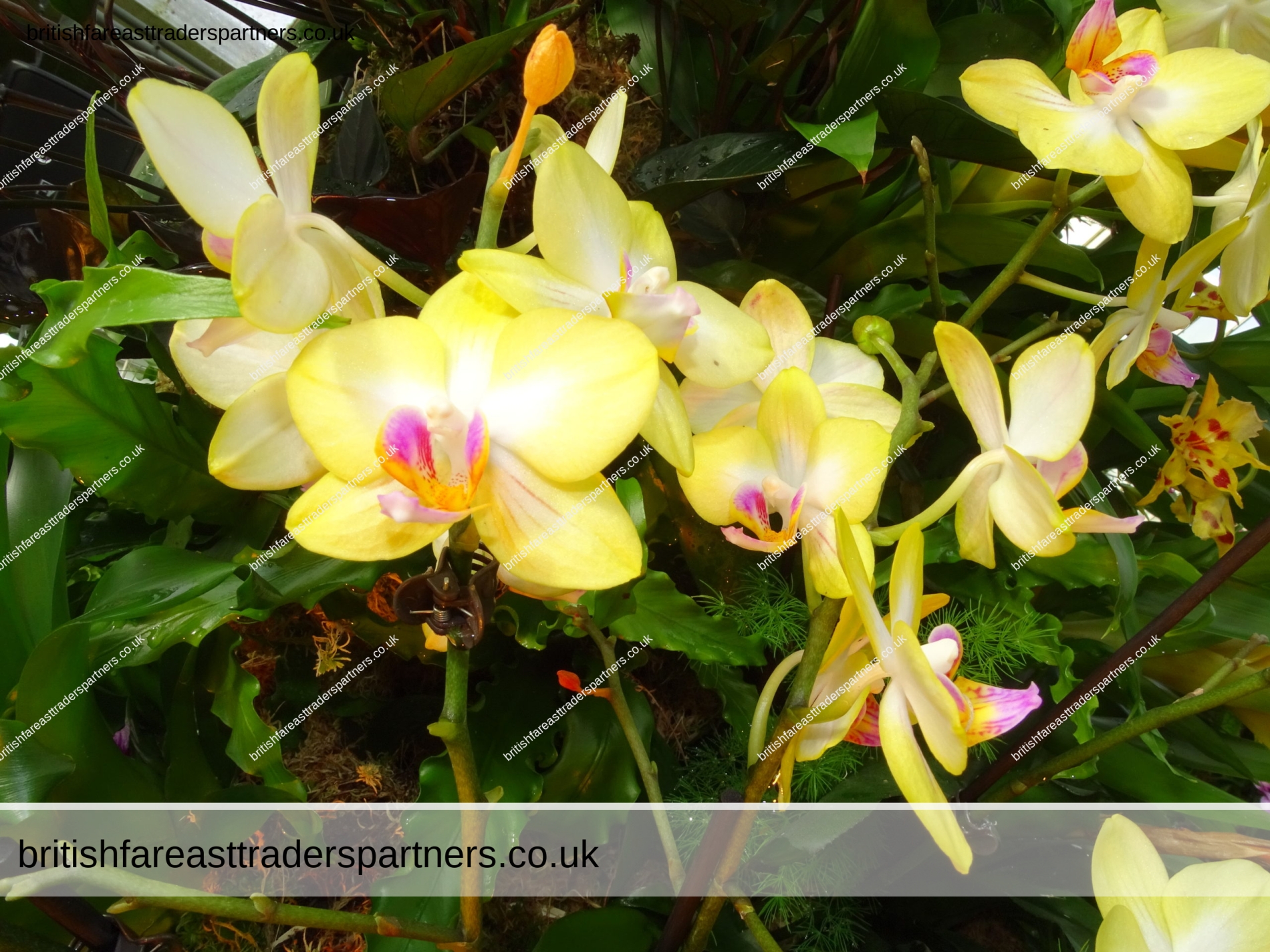
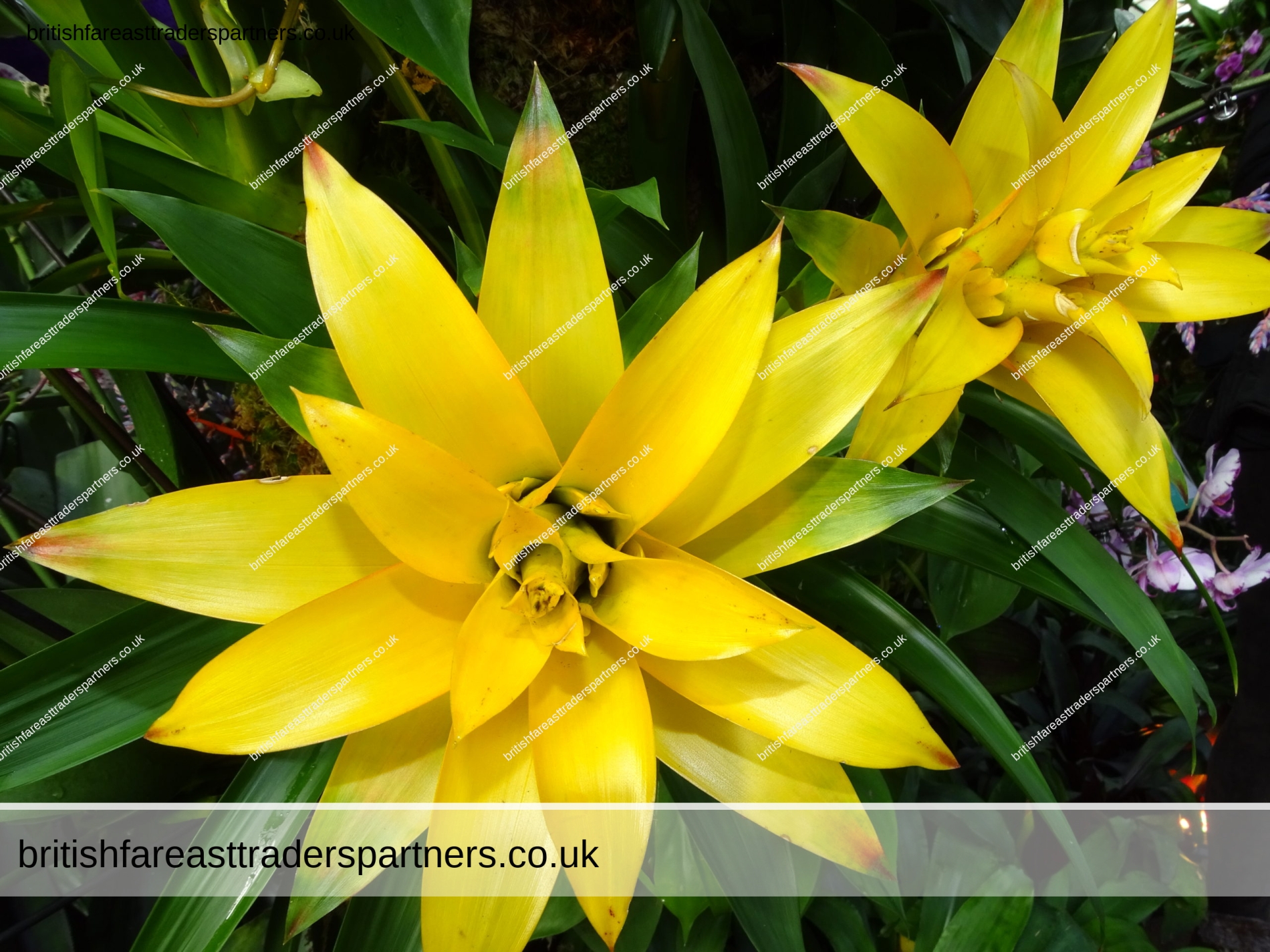
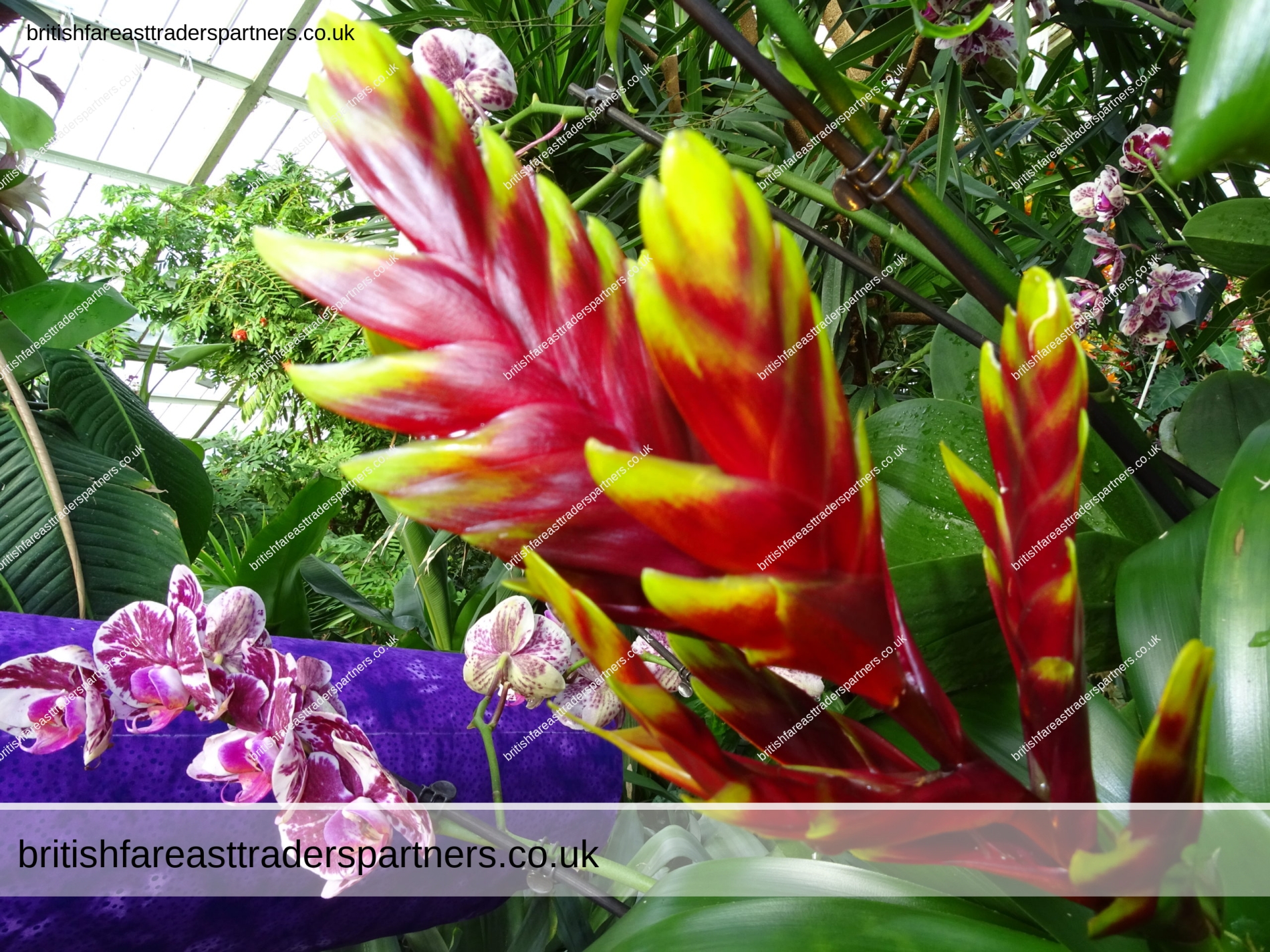
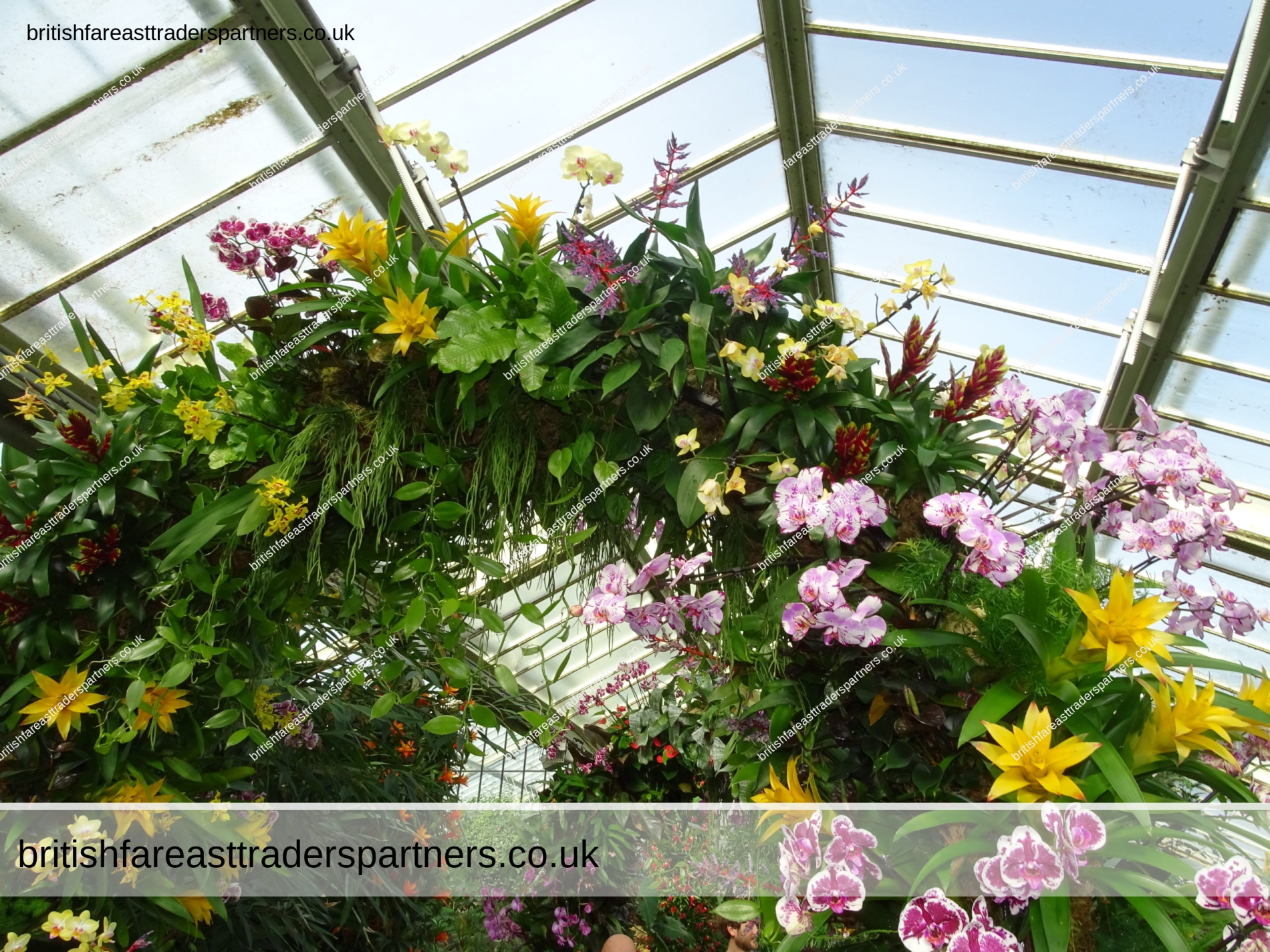
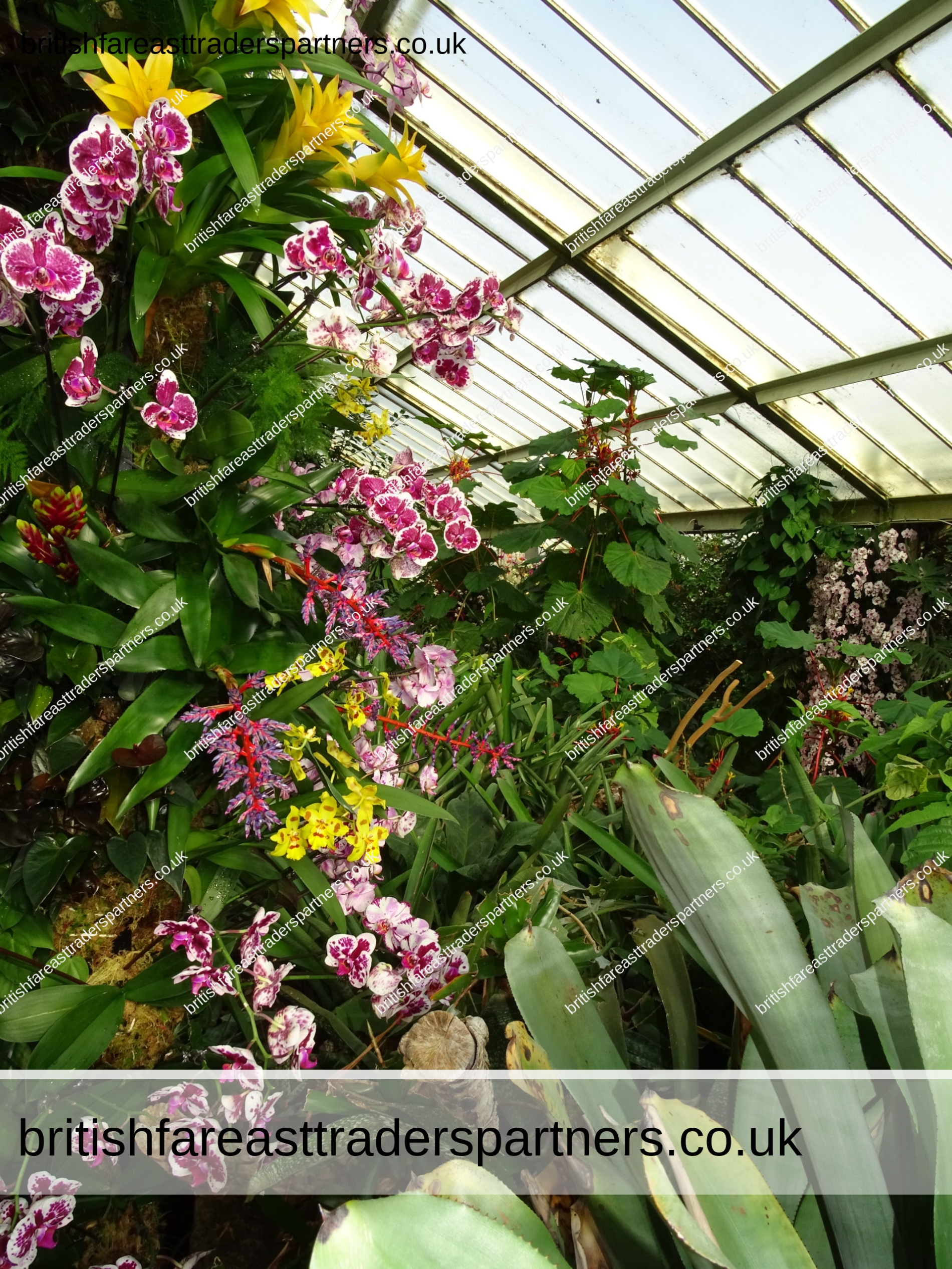
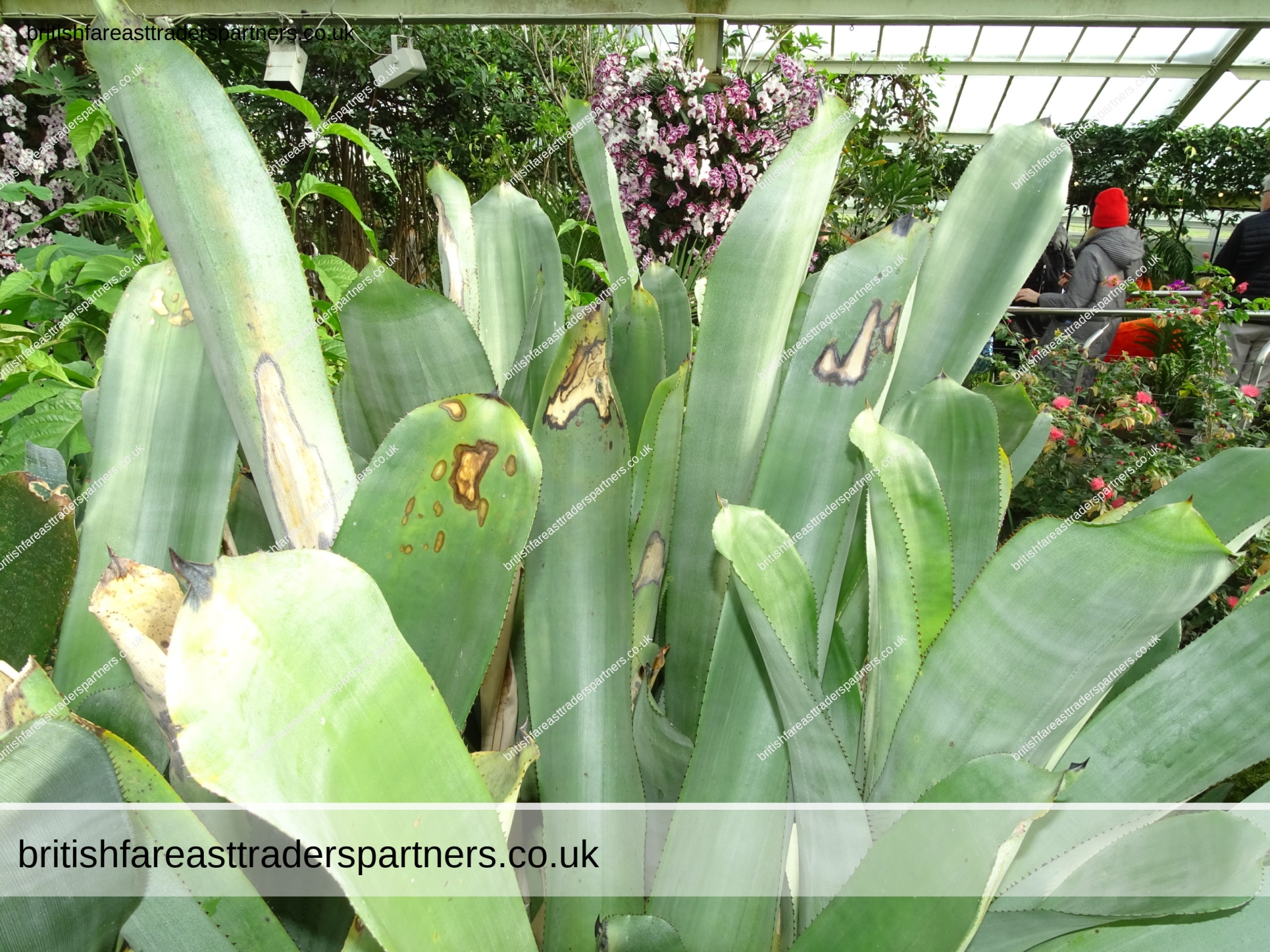
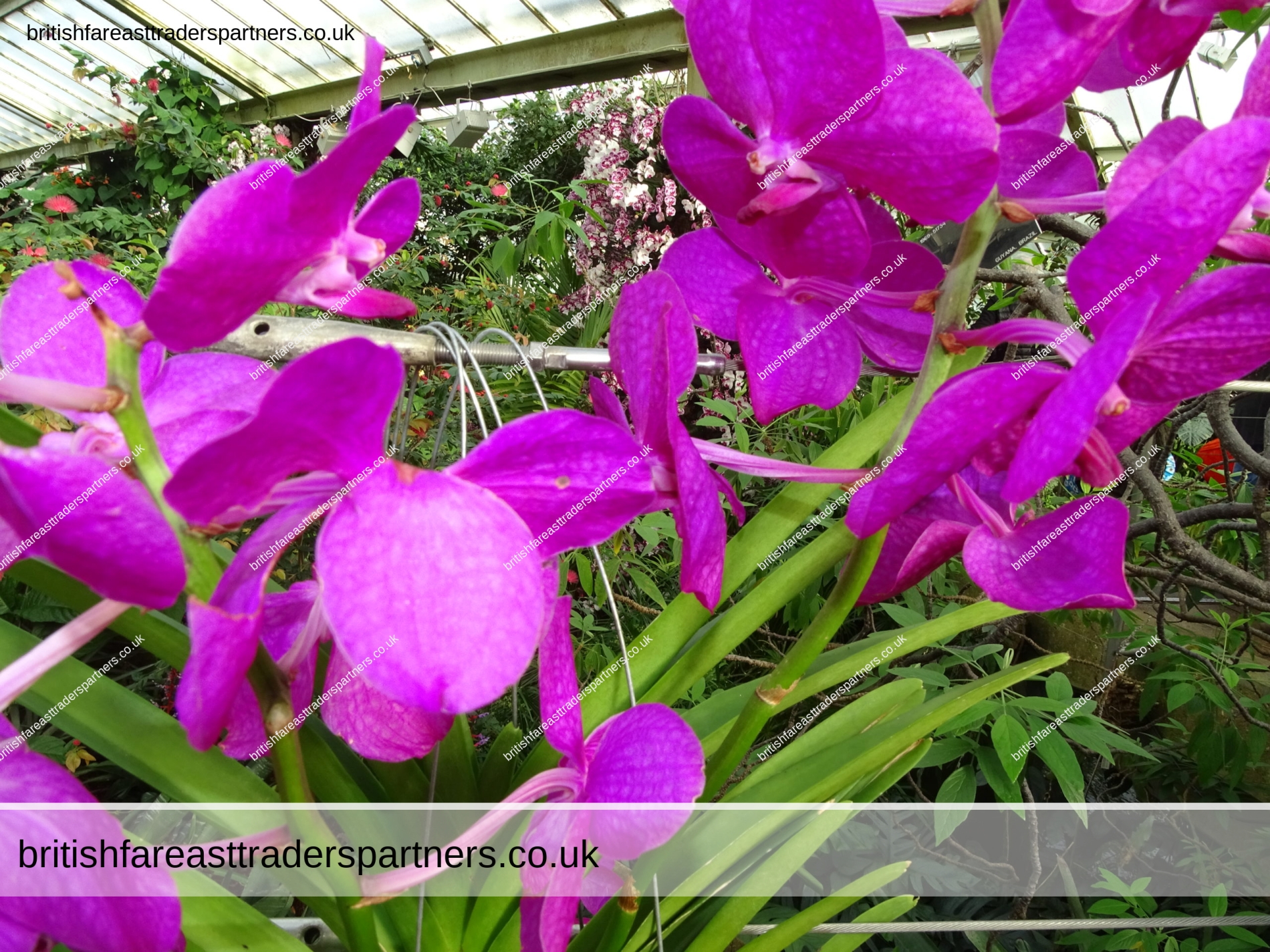
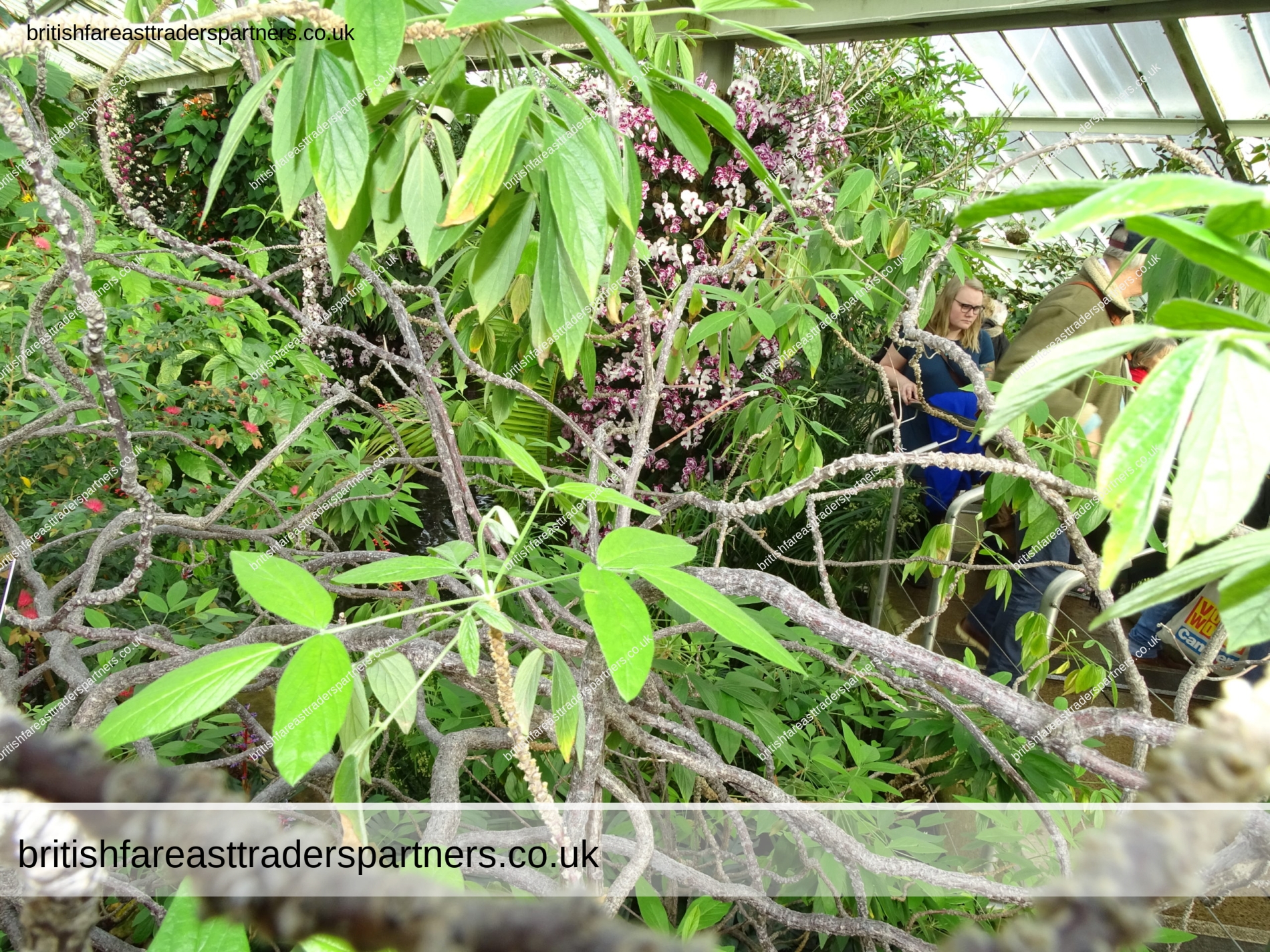
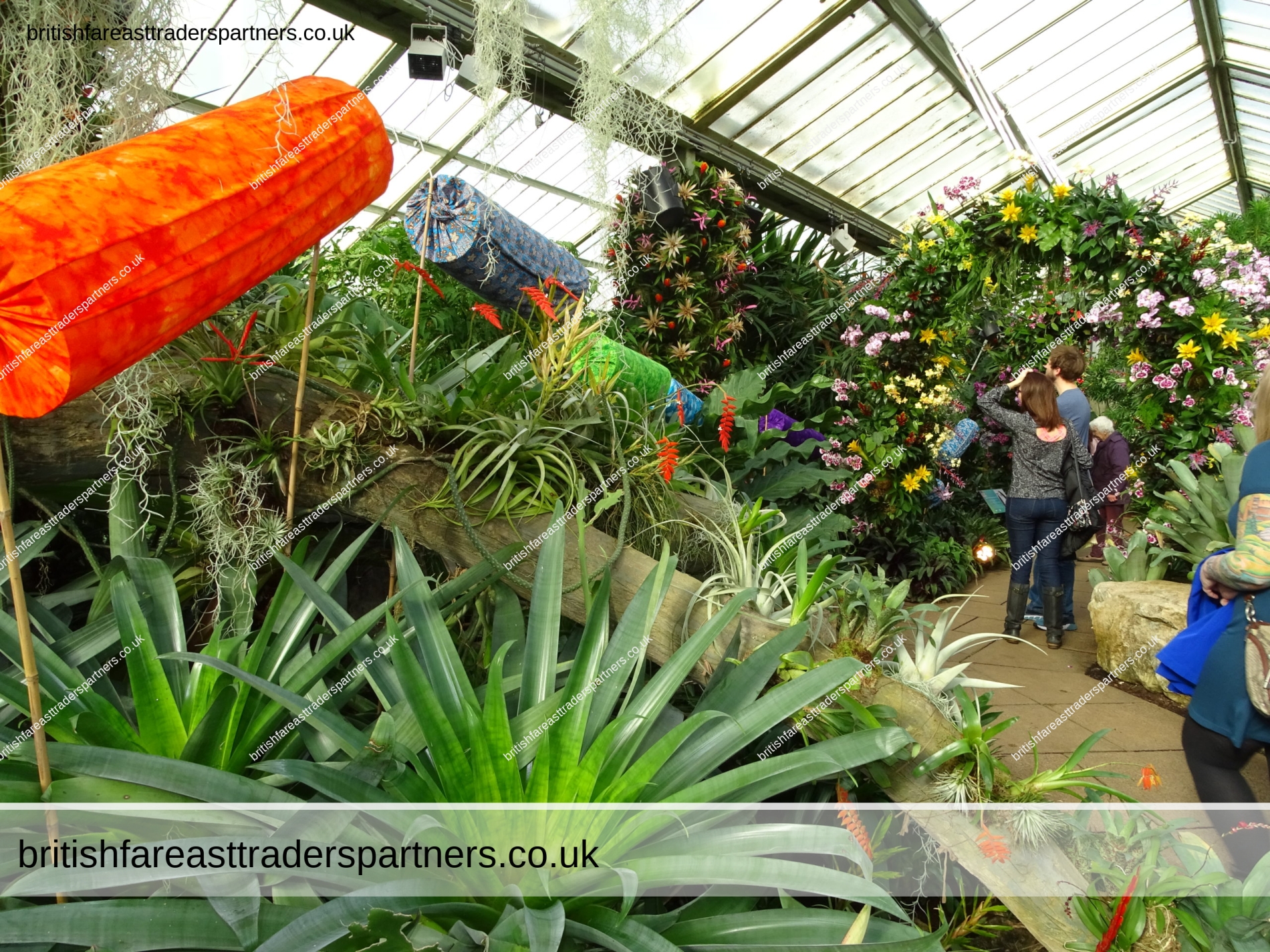
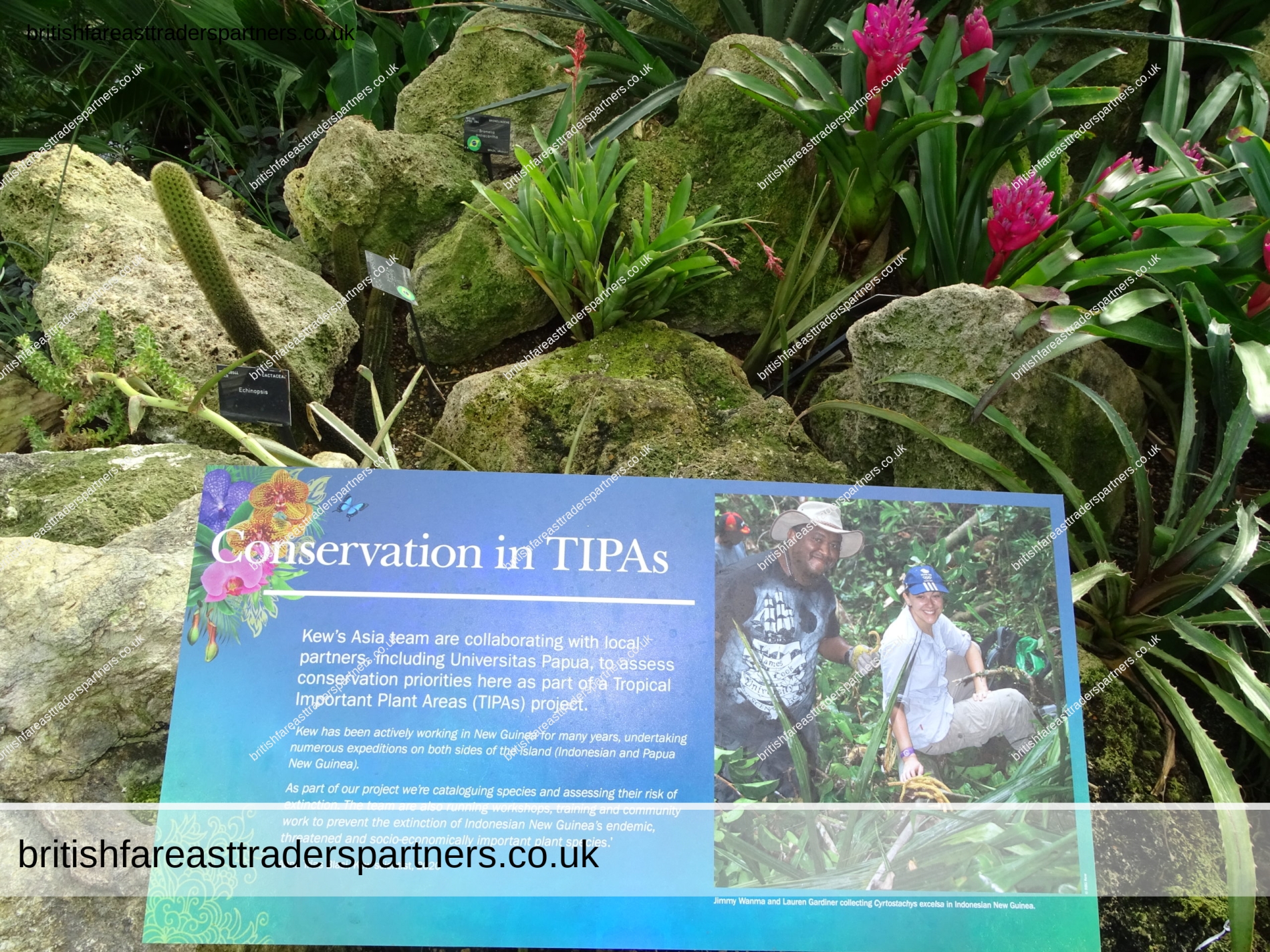
Conservation in TIPAS
Kew’s Asia team are collaborating with local partners including Universitas Papua,
to assess conservation priorities here as part
of a Tropical Important Plant Areas (TIPAs) project.
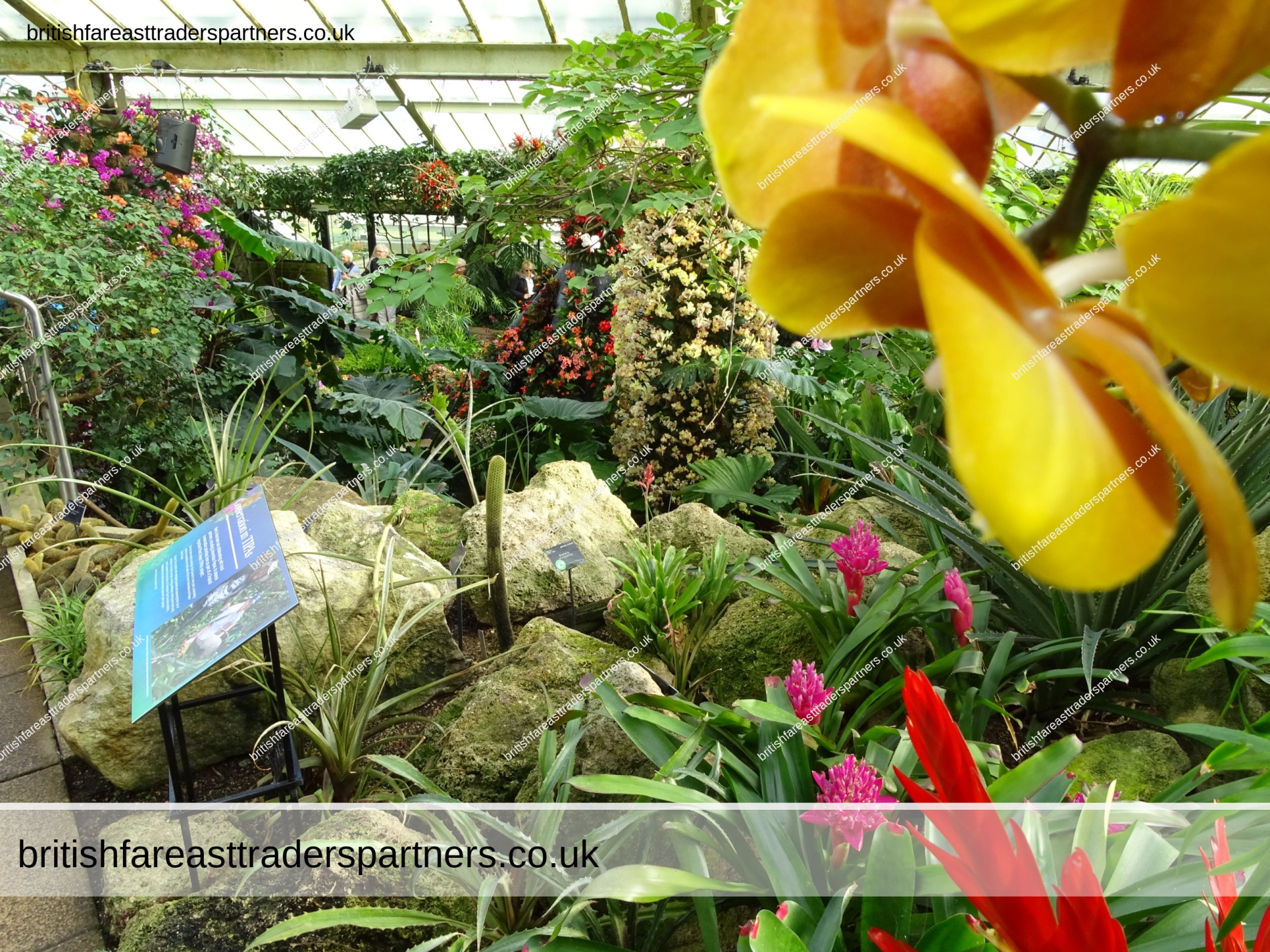
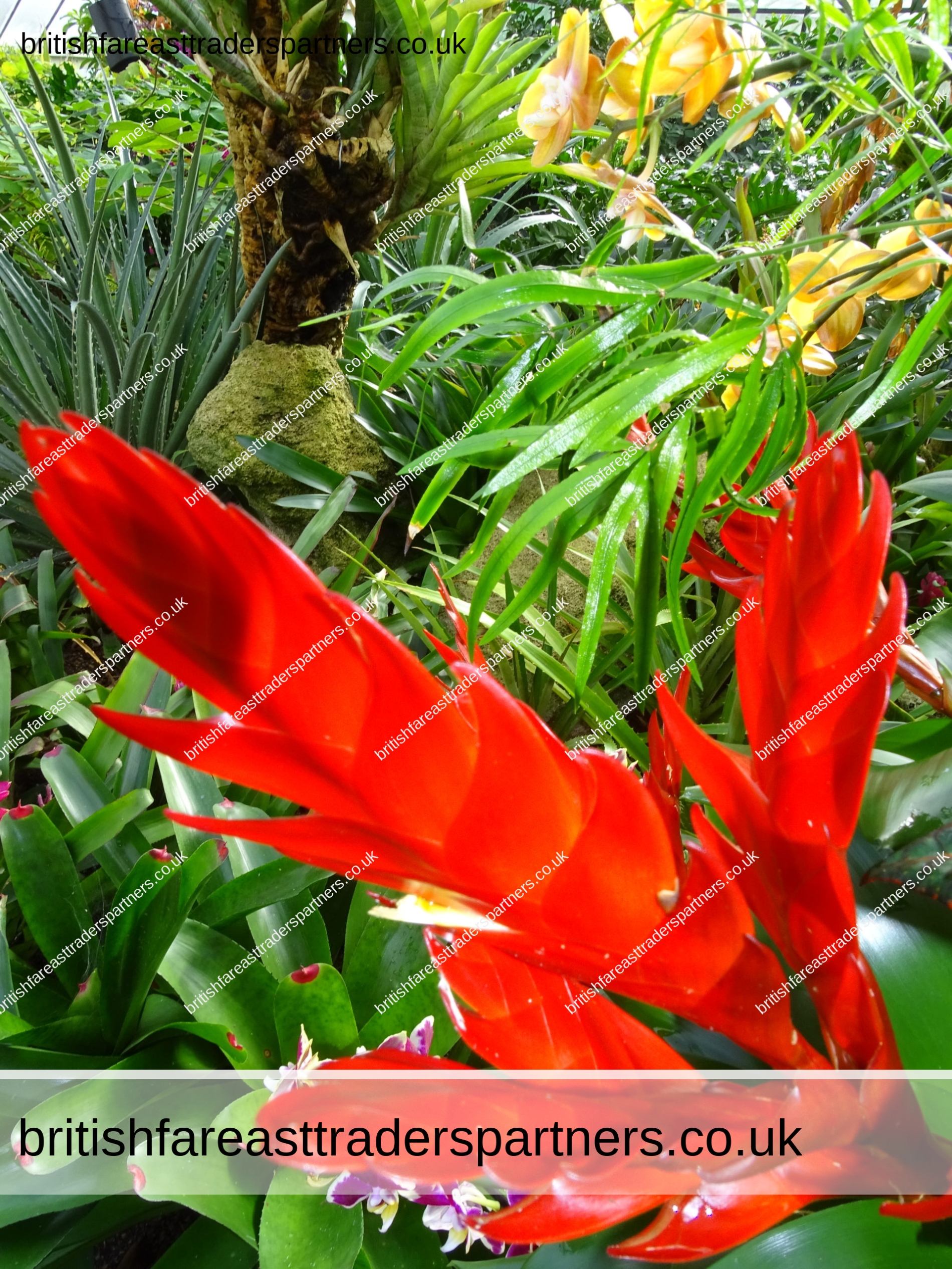
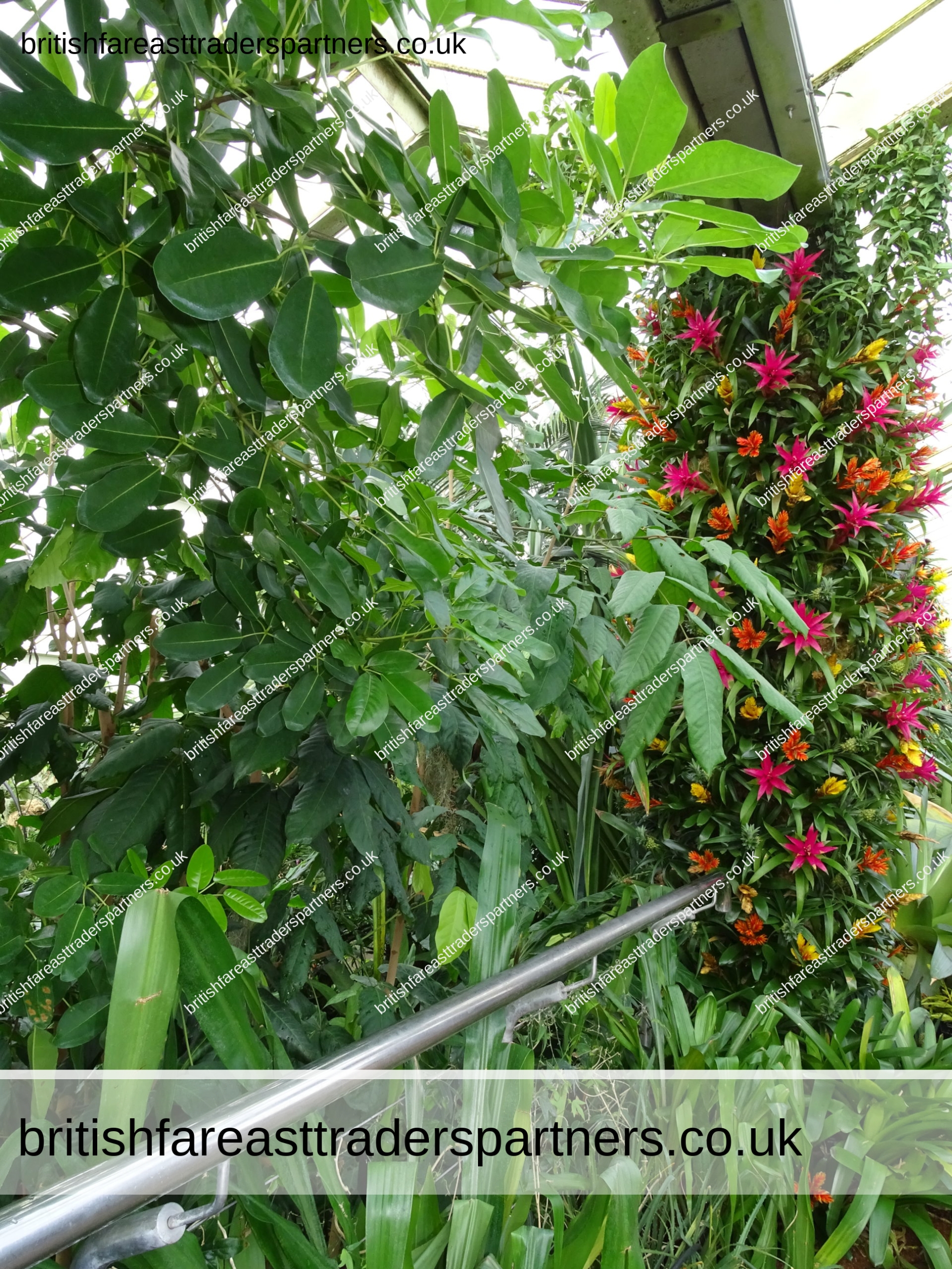
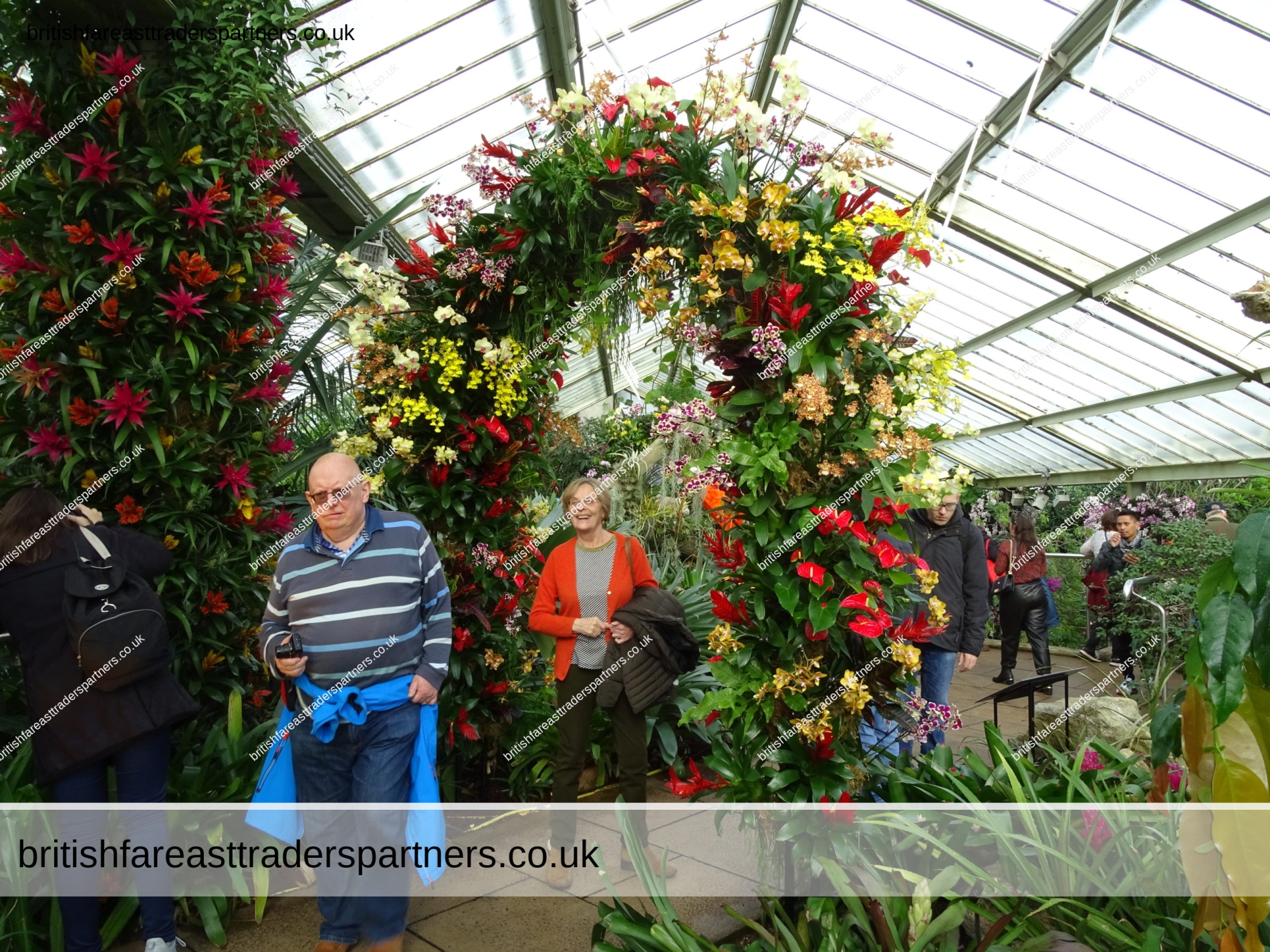
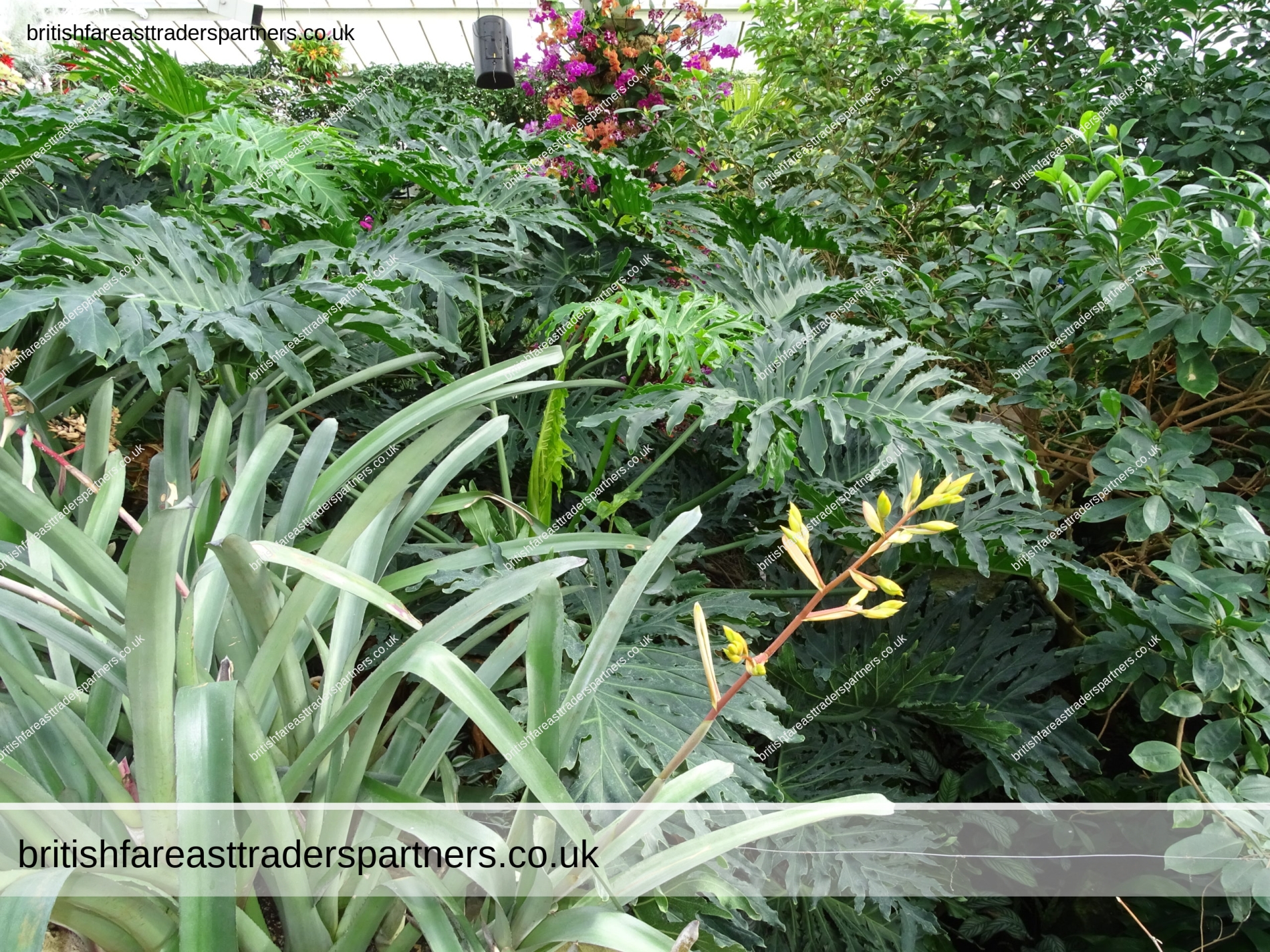
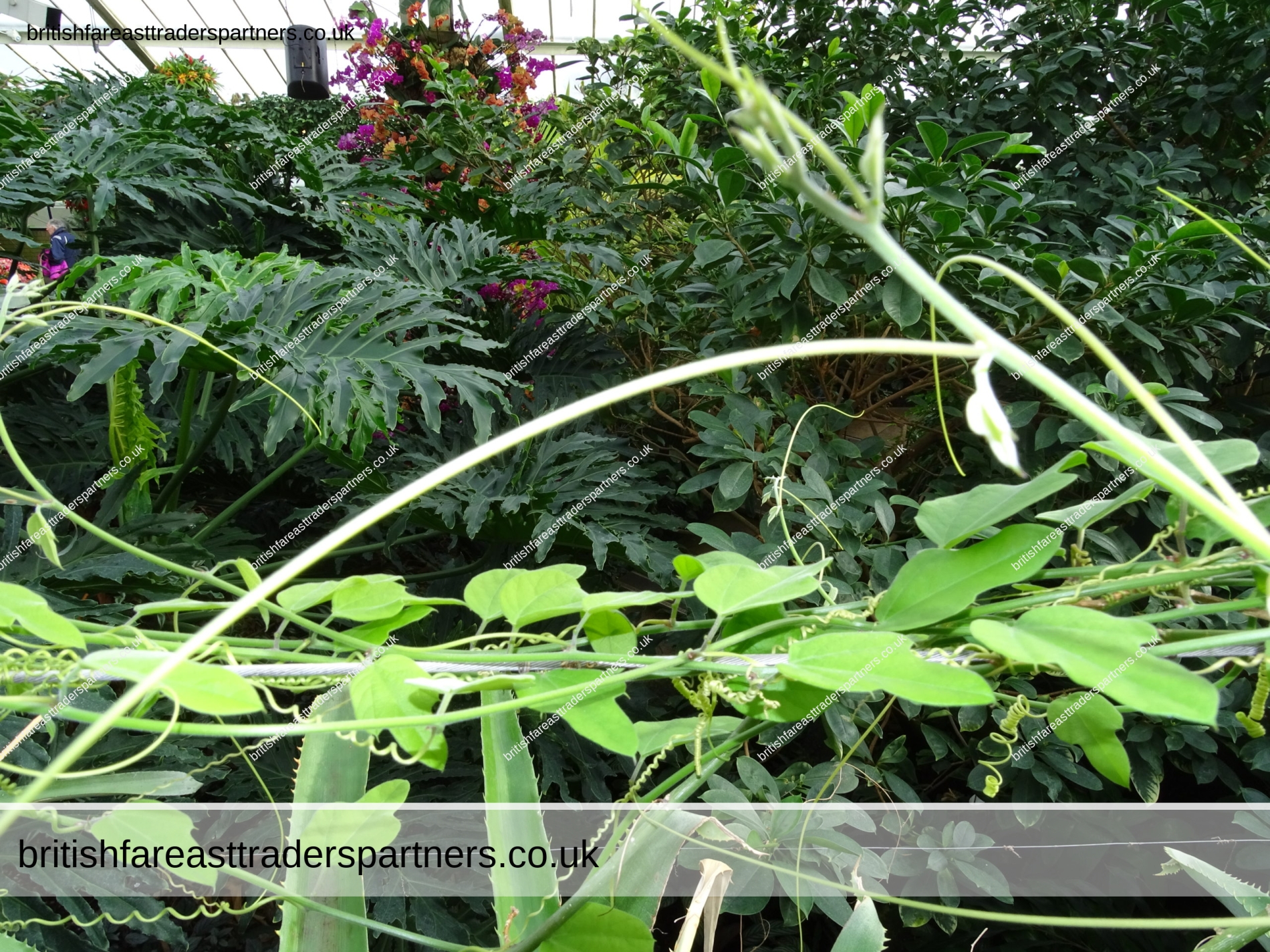
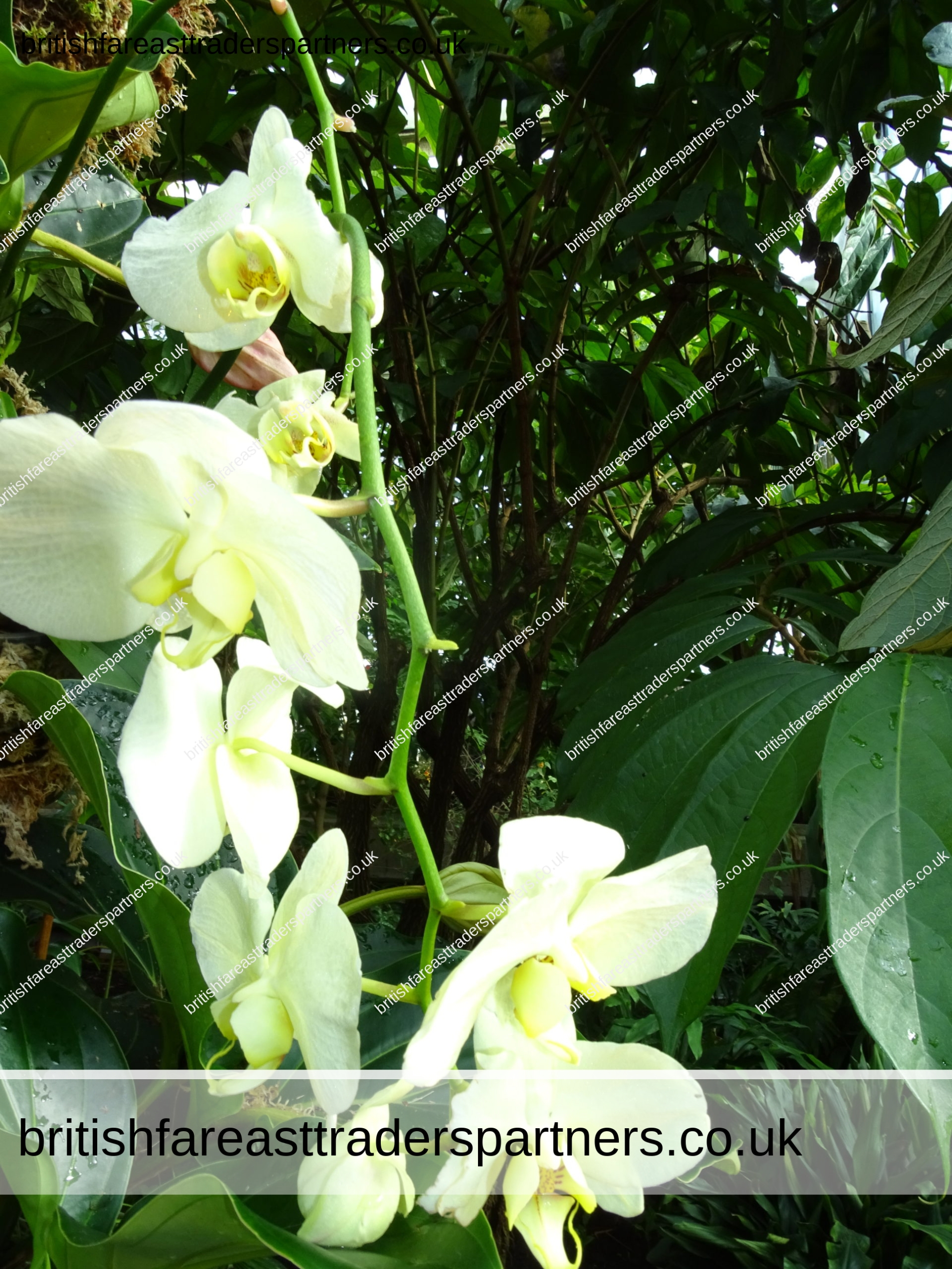
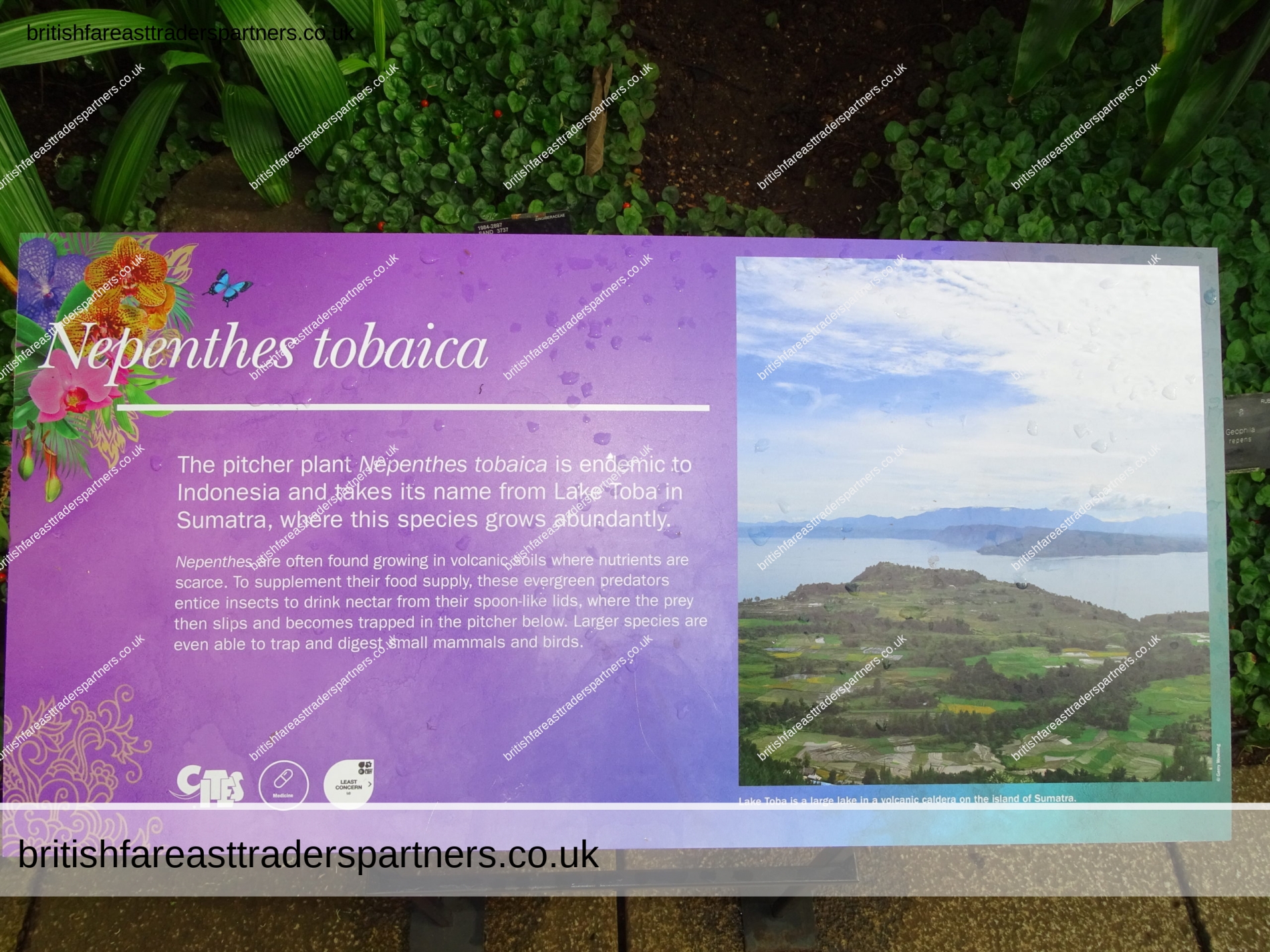
Nepenthes tobaica
The pitcher plant Nepenthes tobaica
is endemic to Indonesia and takes its name from Lake Toba in Sumatra,
where this species grows abundantly.
Nepenthes are often found growing in volcanic soils
where nutrients are scarce.
To supplement their food supply,
these evergreen predators entice insects
to drink nectar from their spoon-like lids,
where the prey then slips and becomes trapped in the pitcher below.
Larger species are even able to trap and digest small mammals and birds.
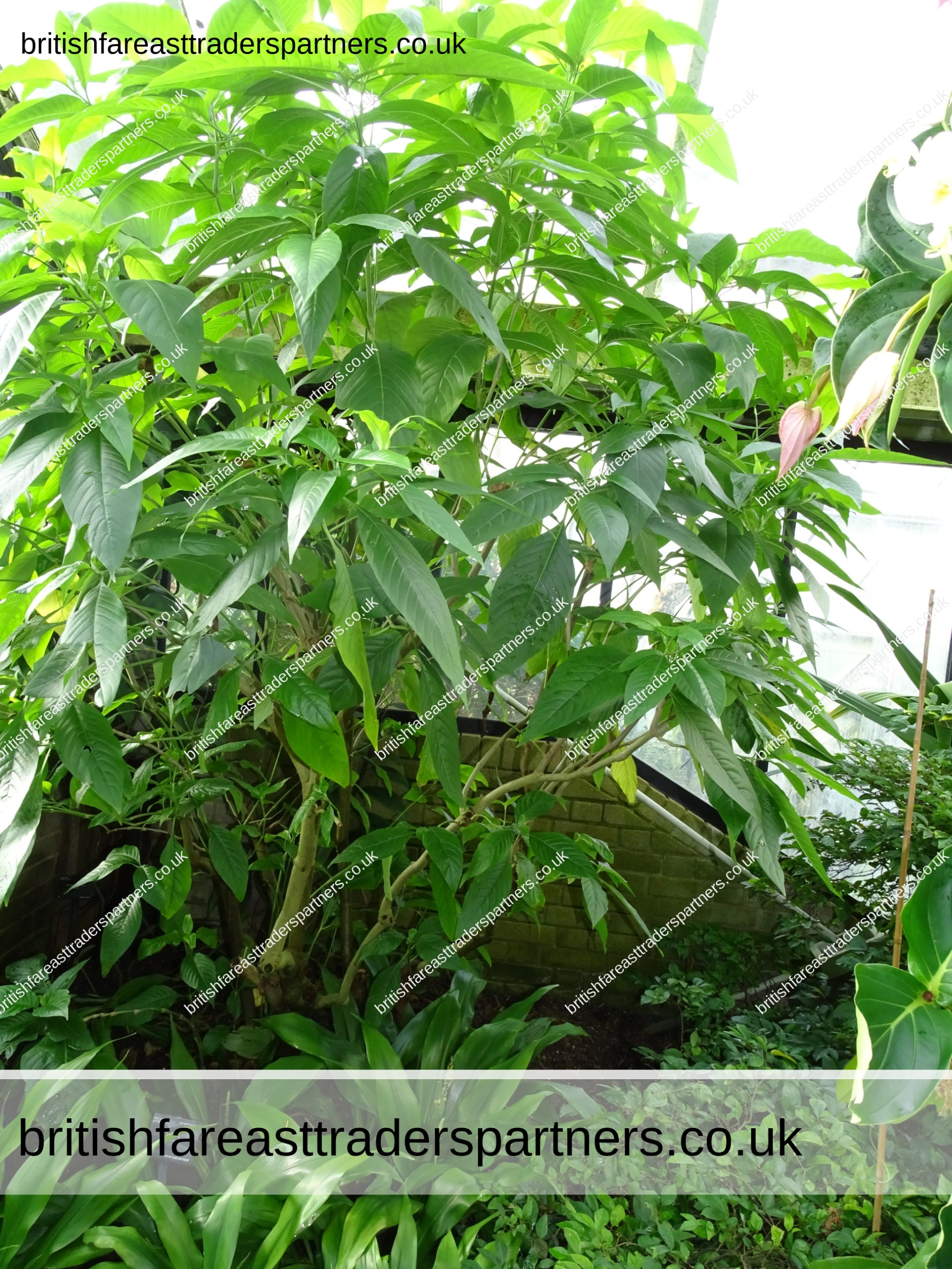
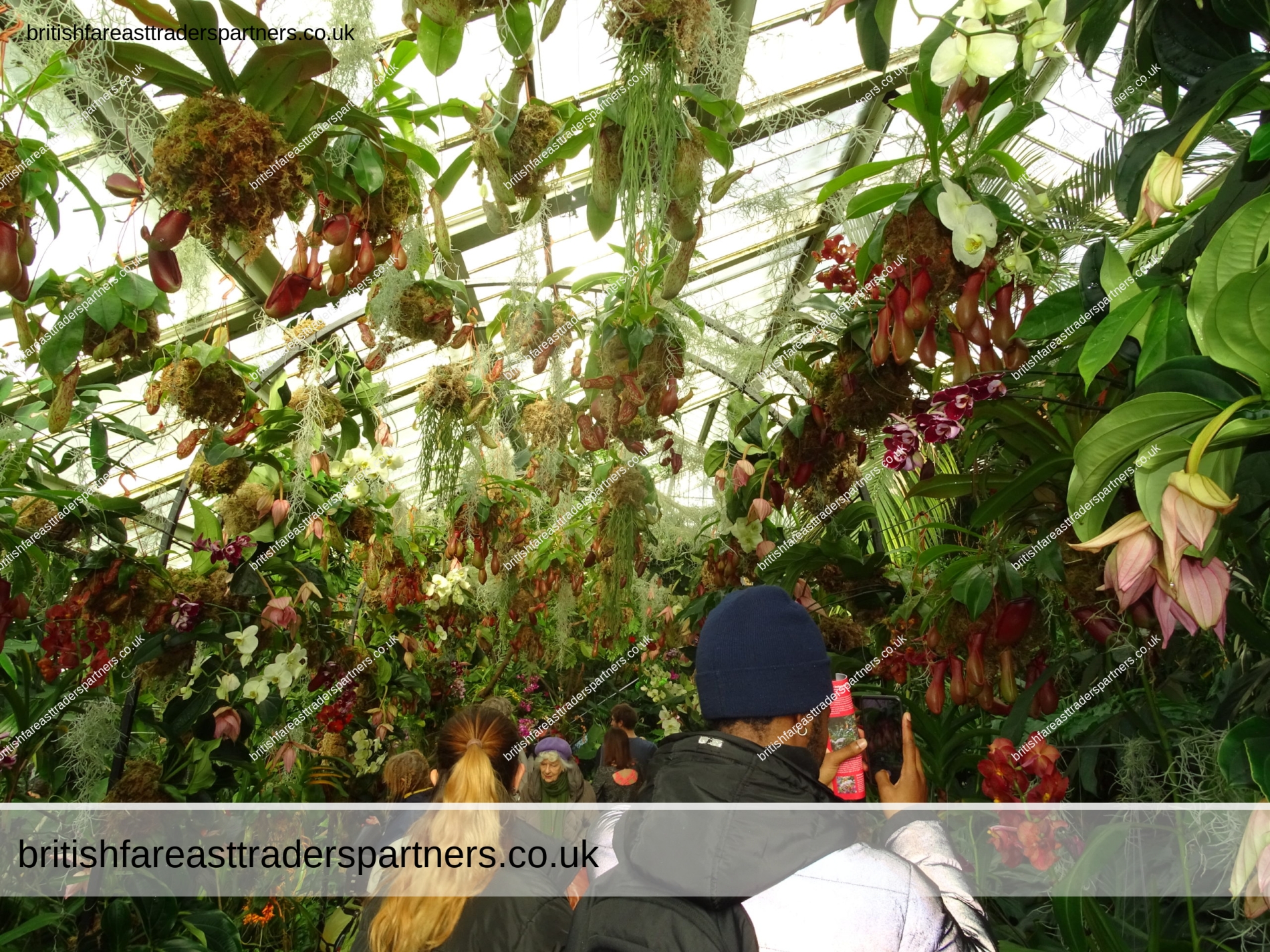
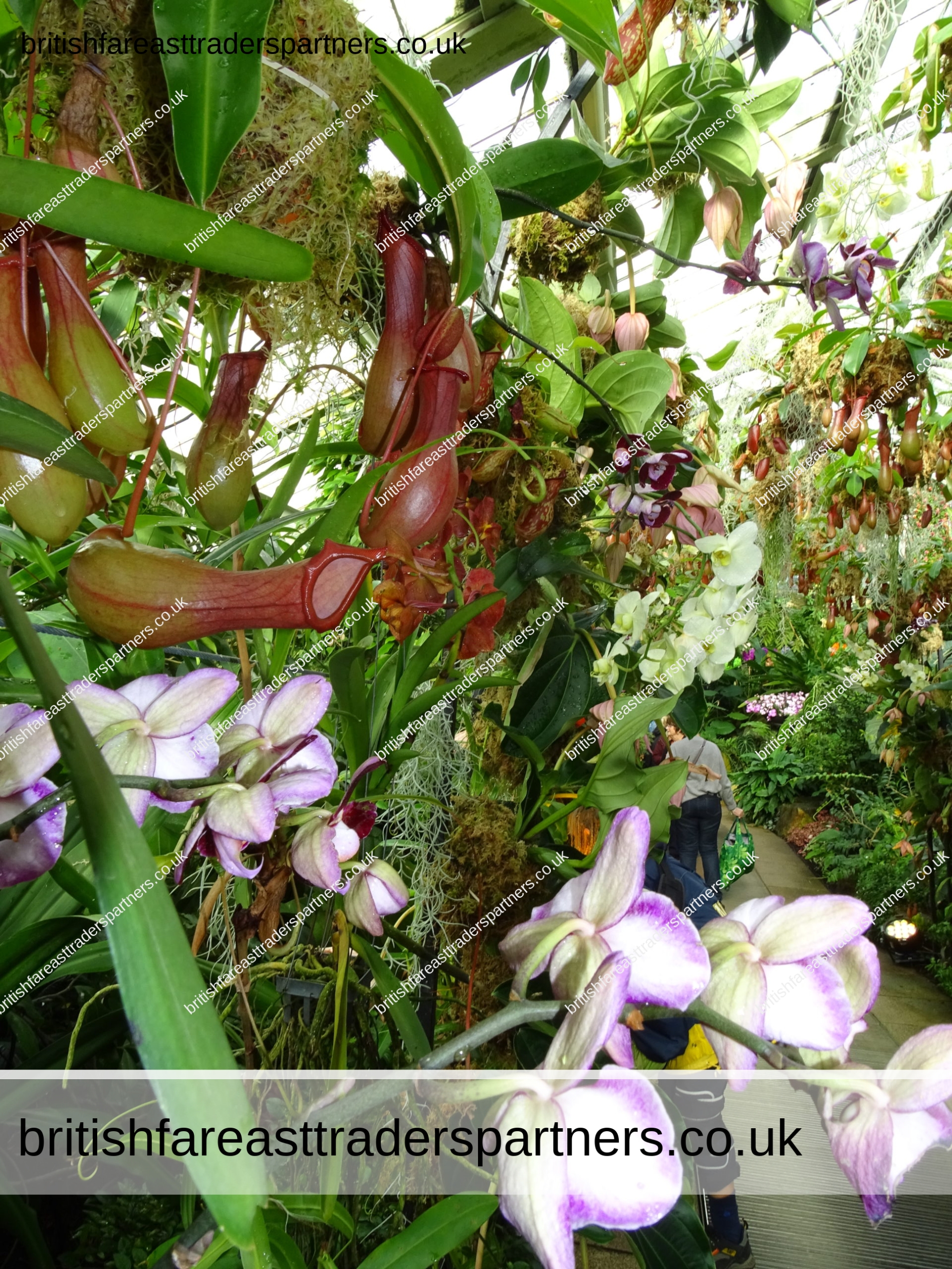
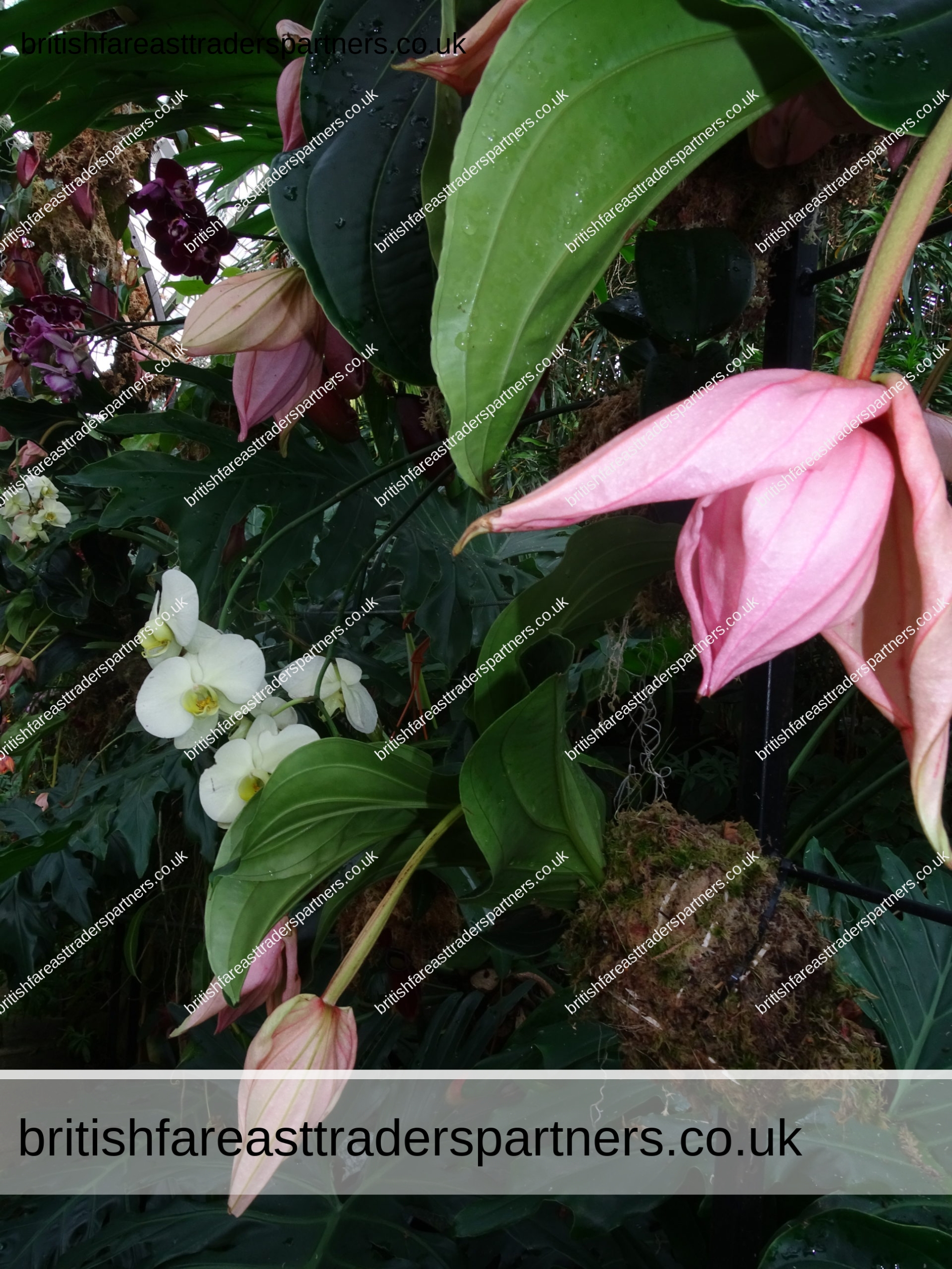
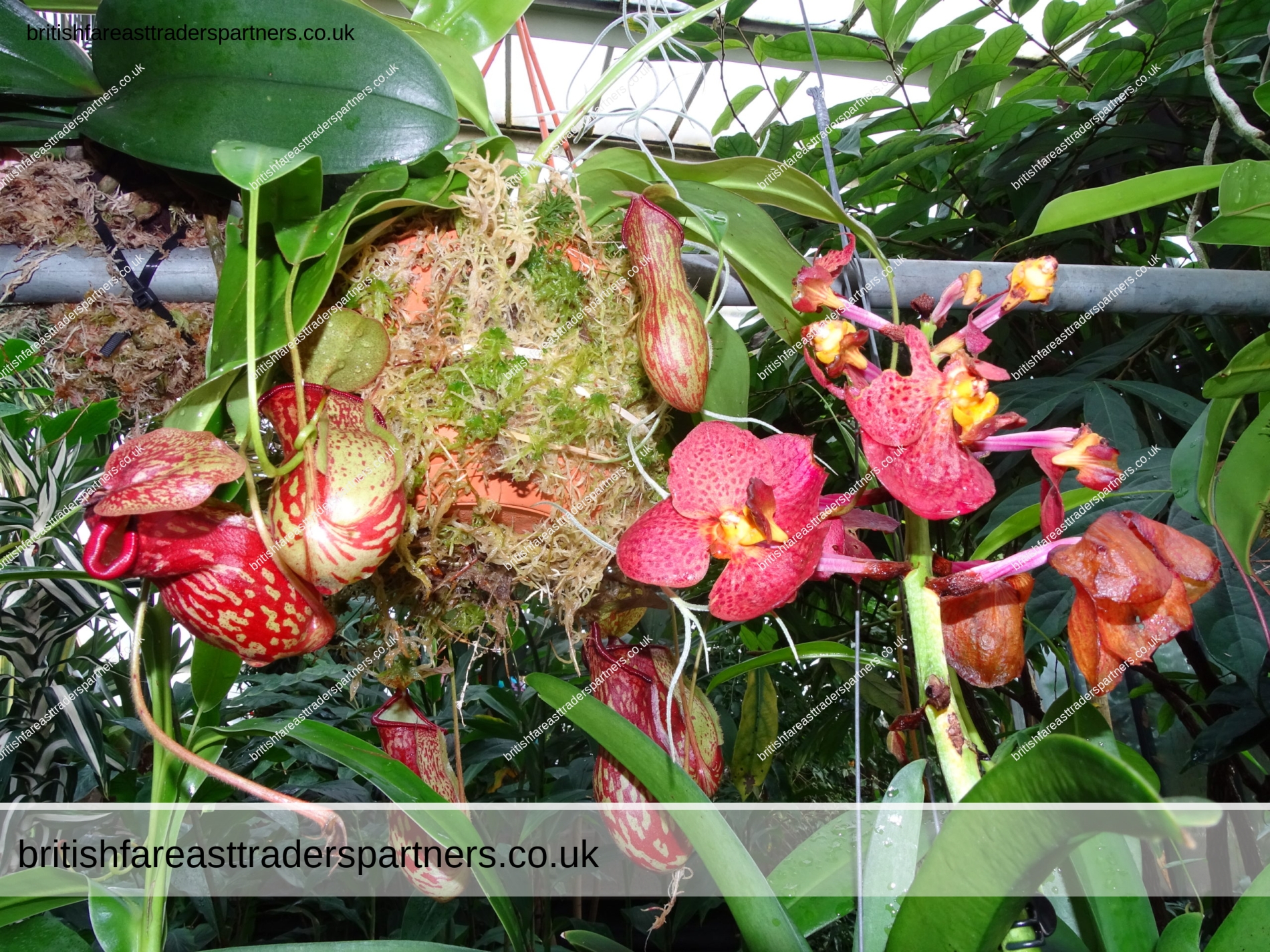
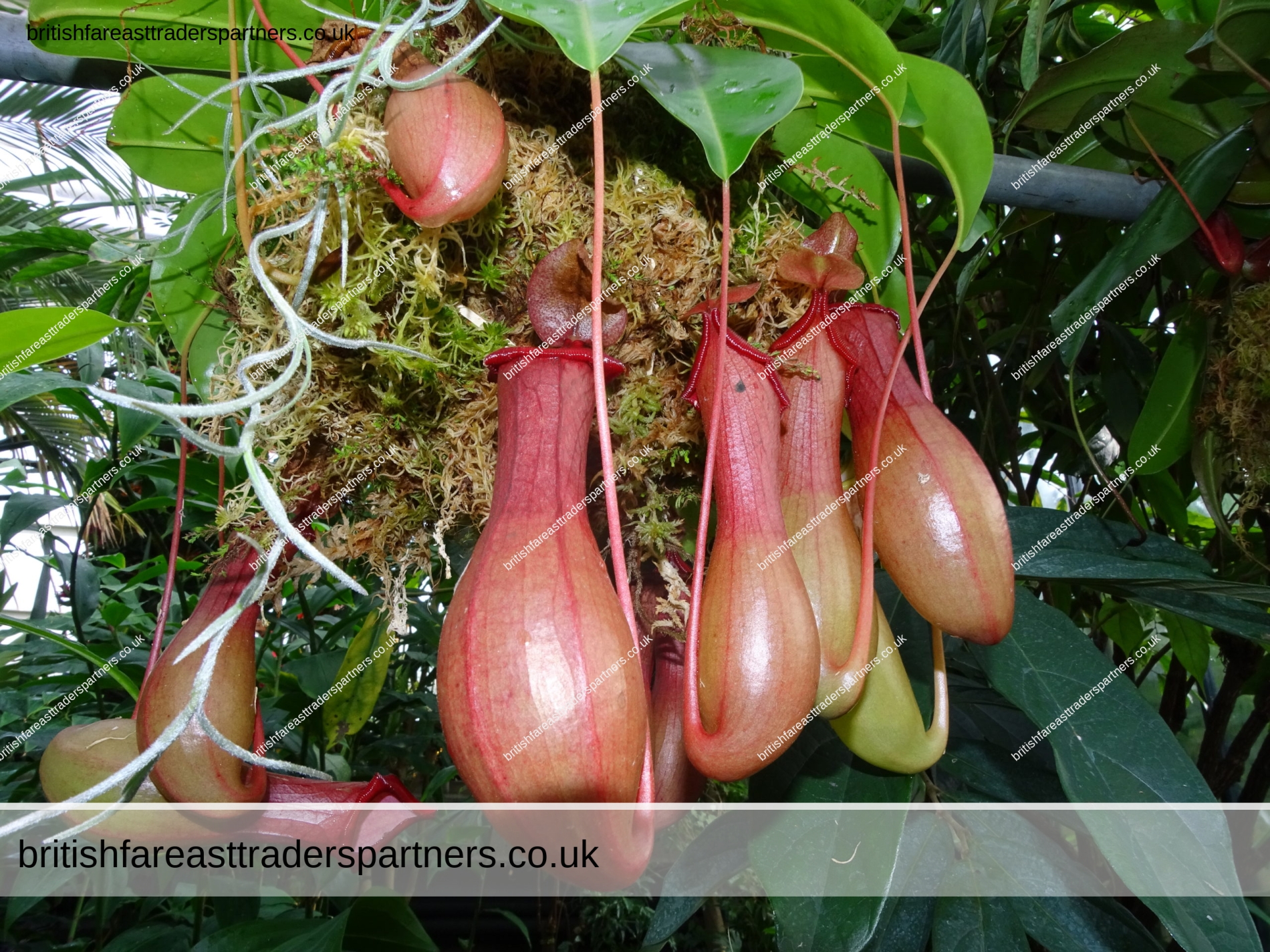
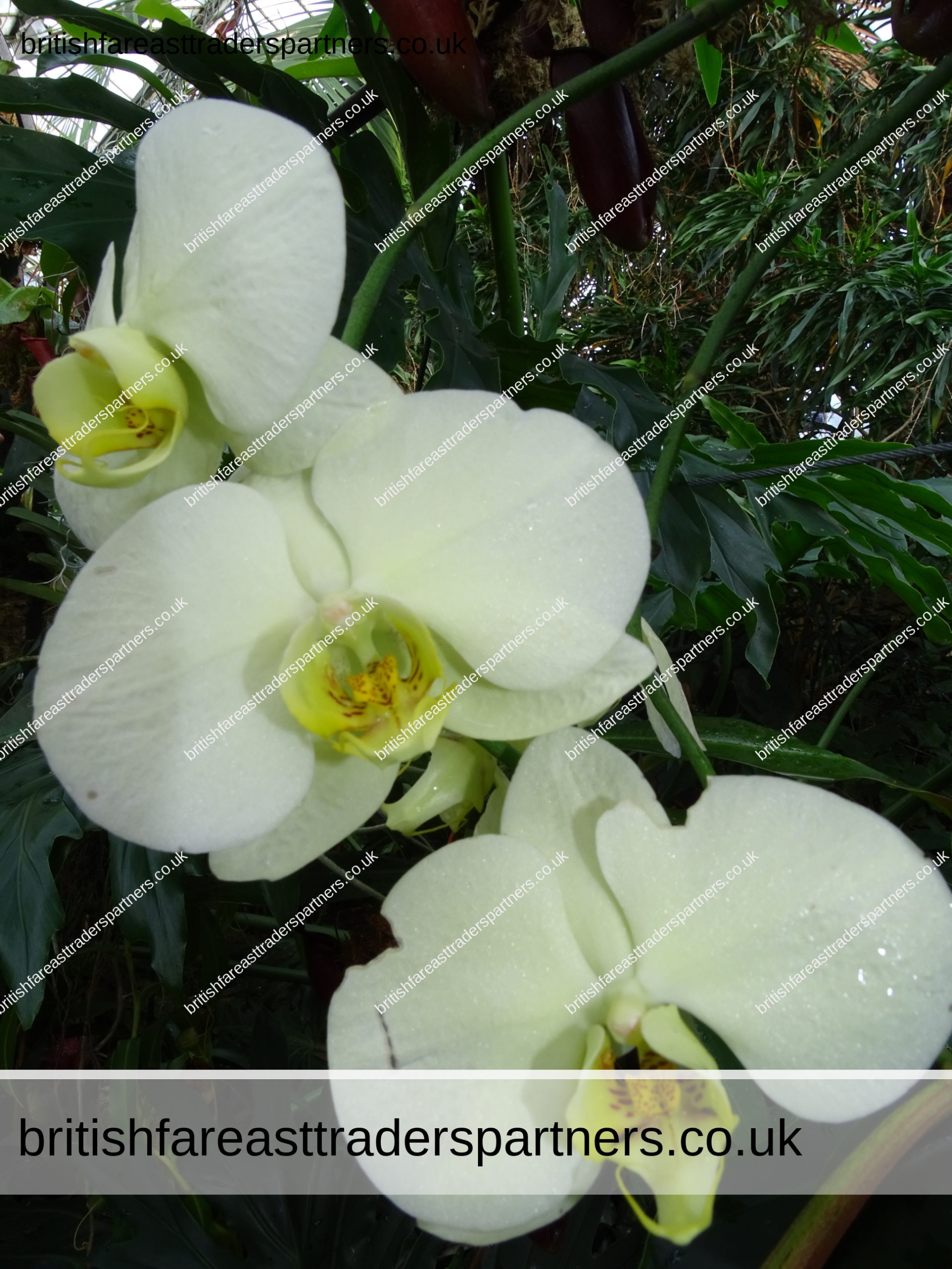
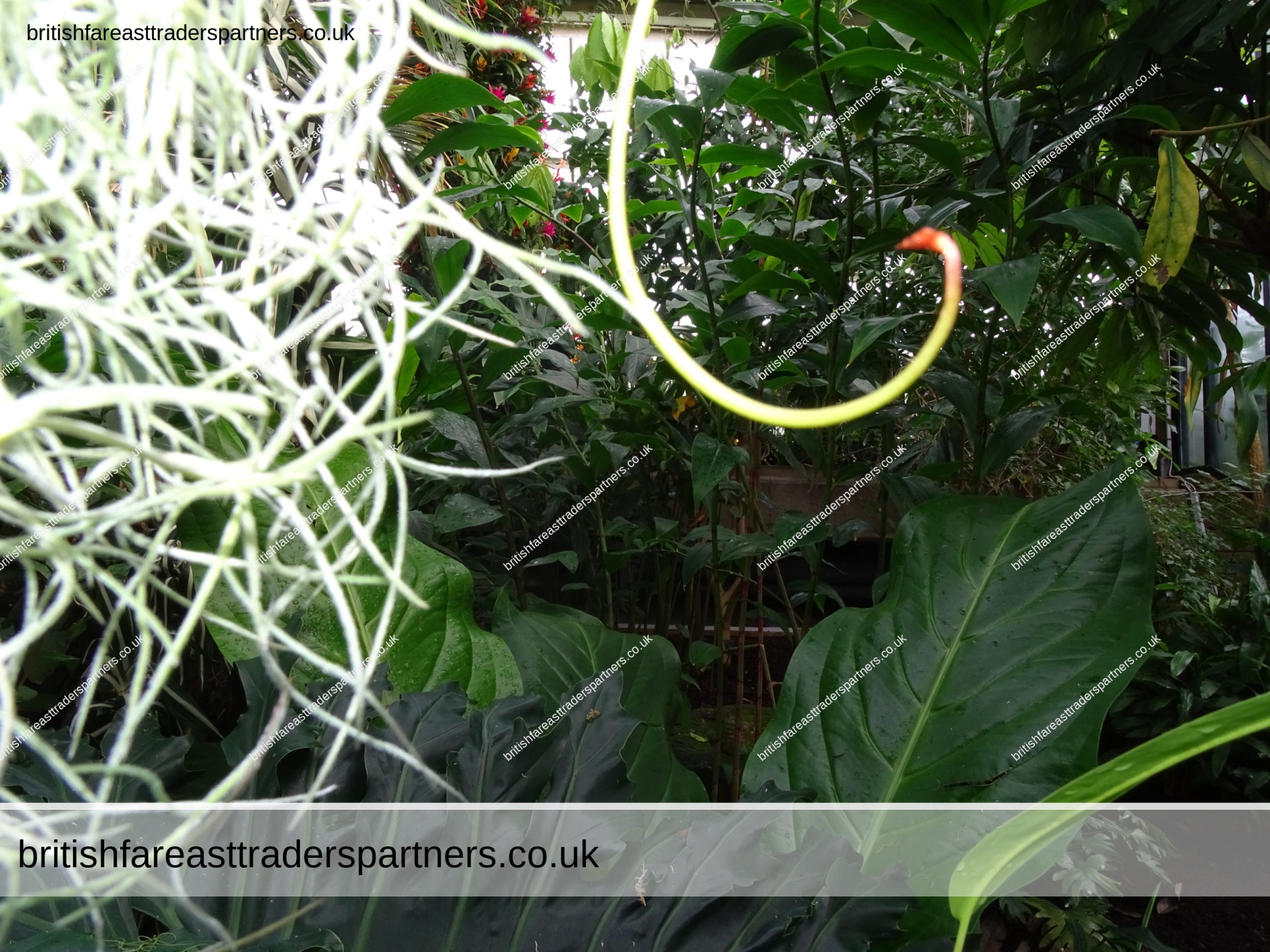
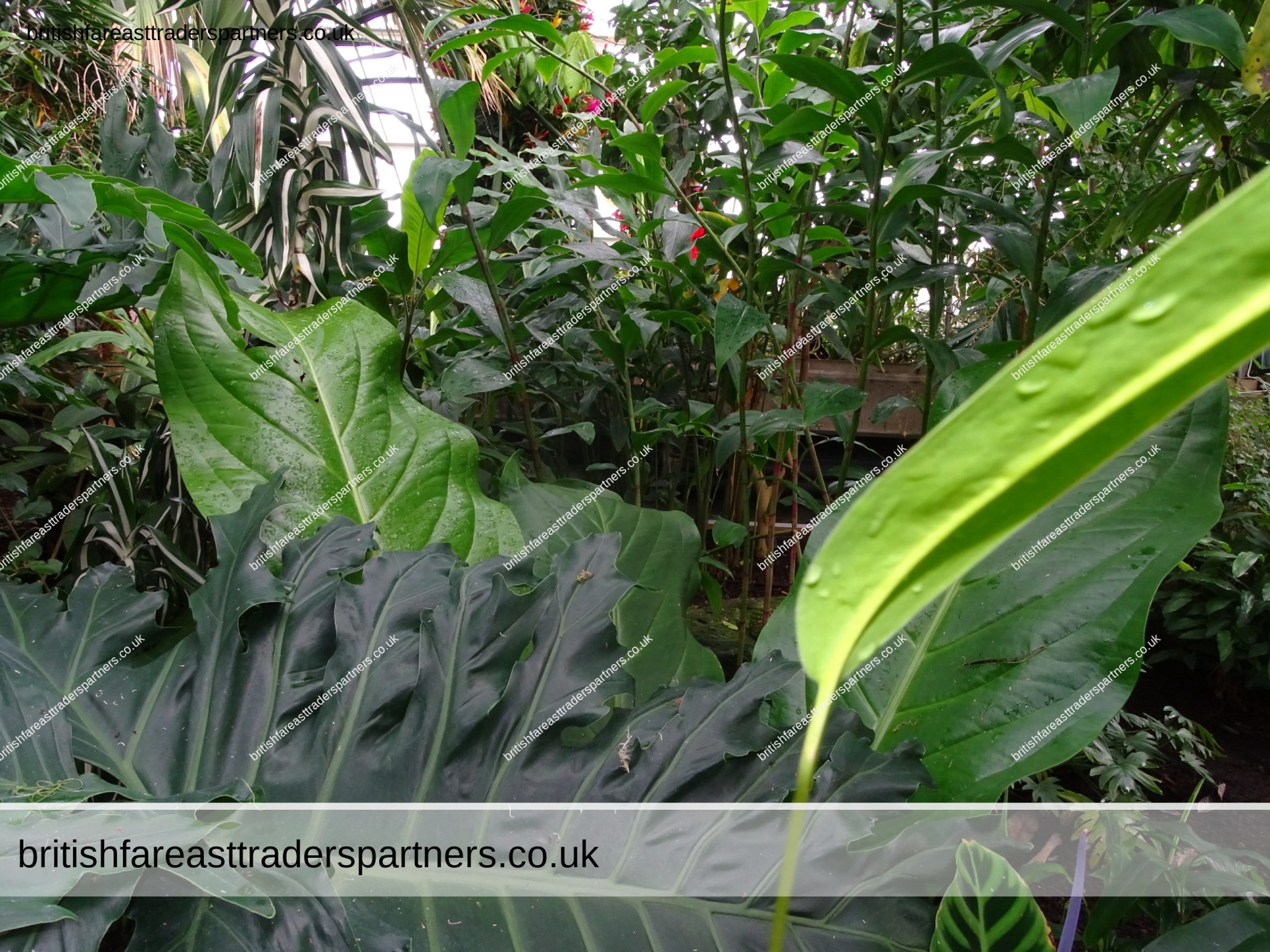
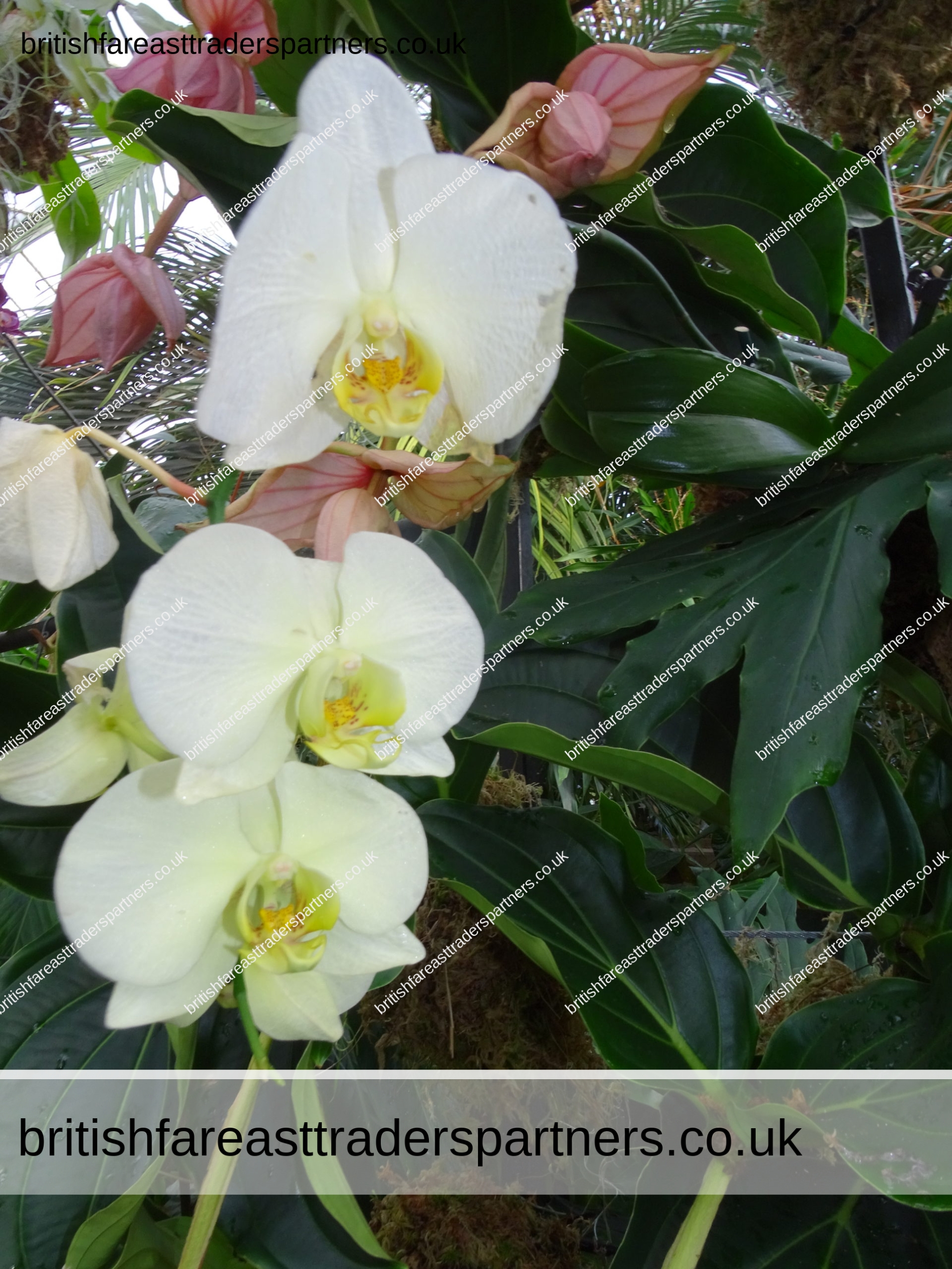
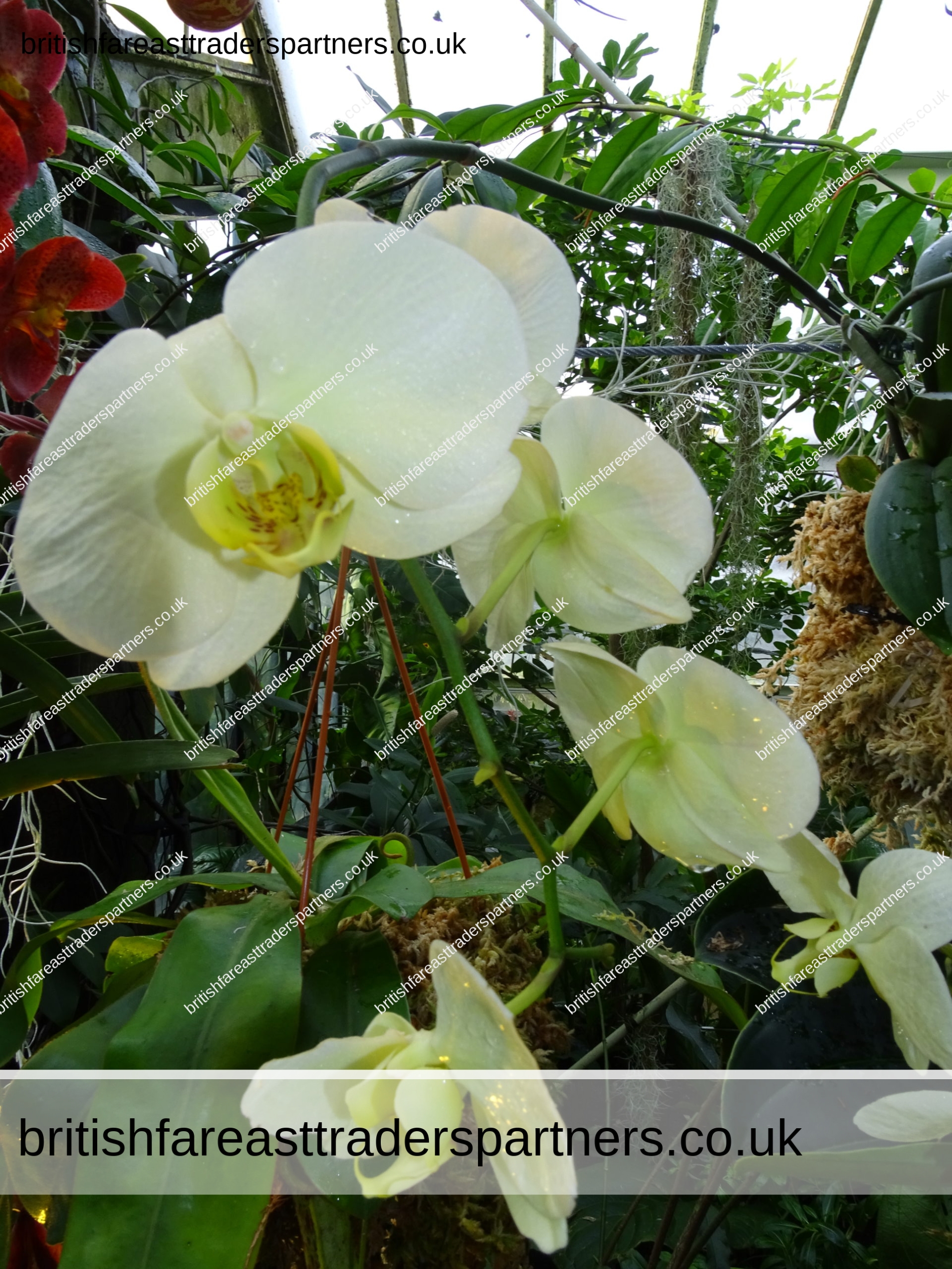
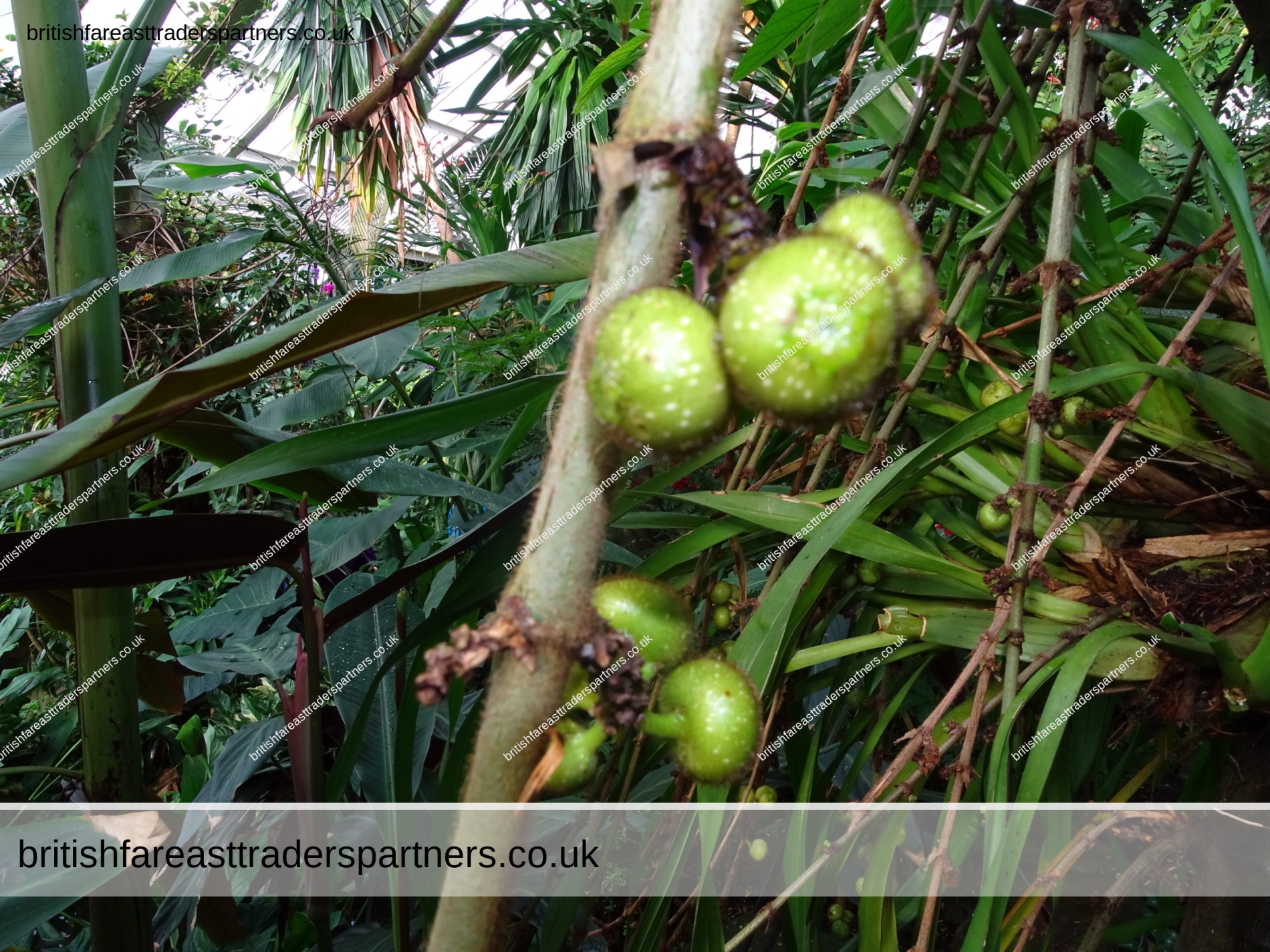
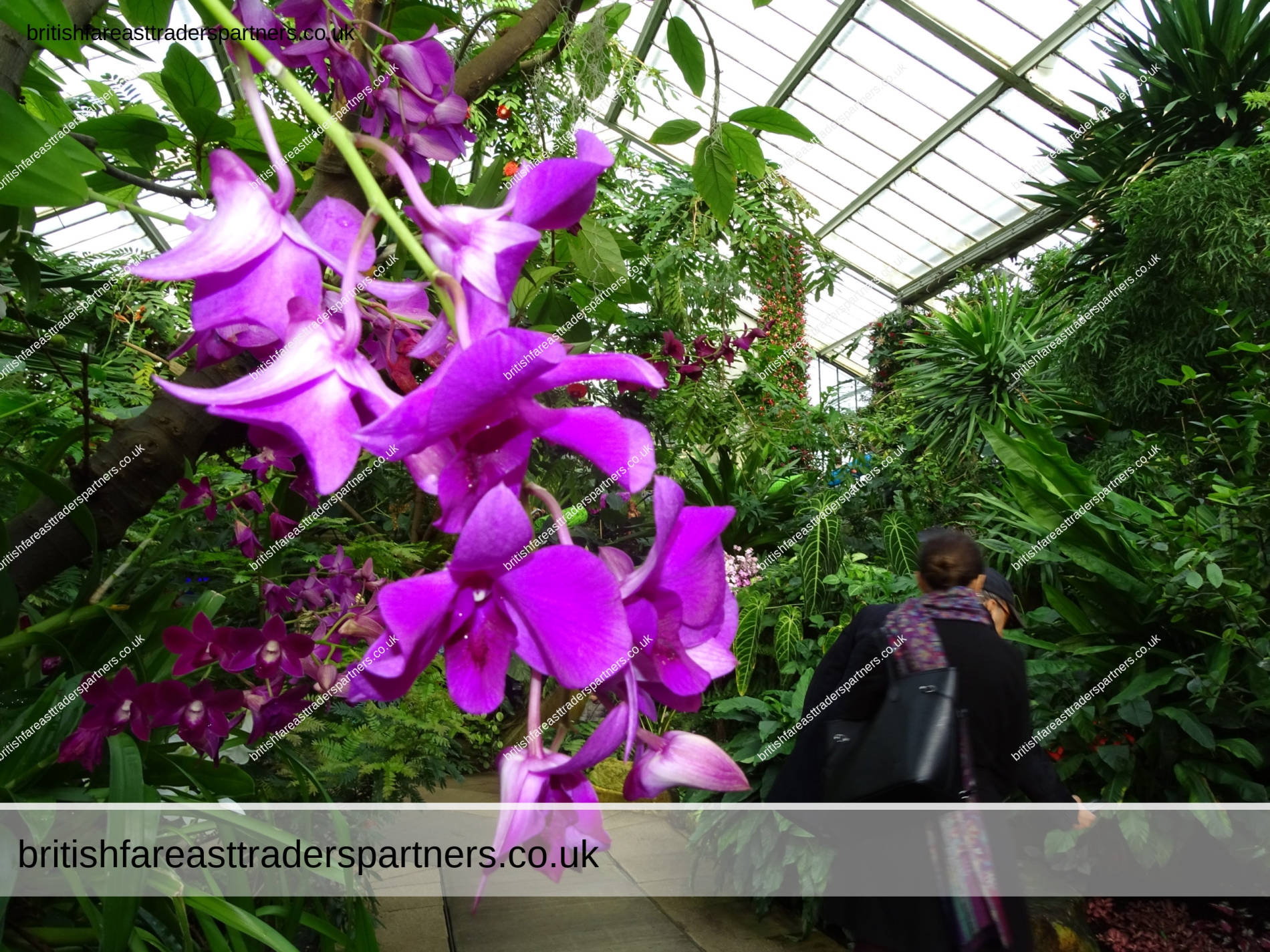
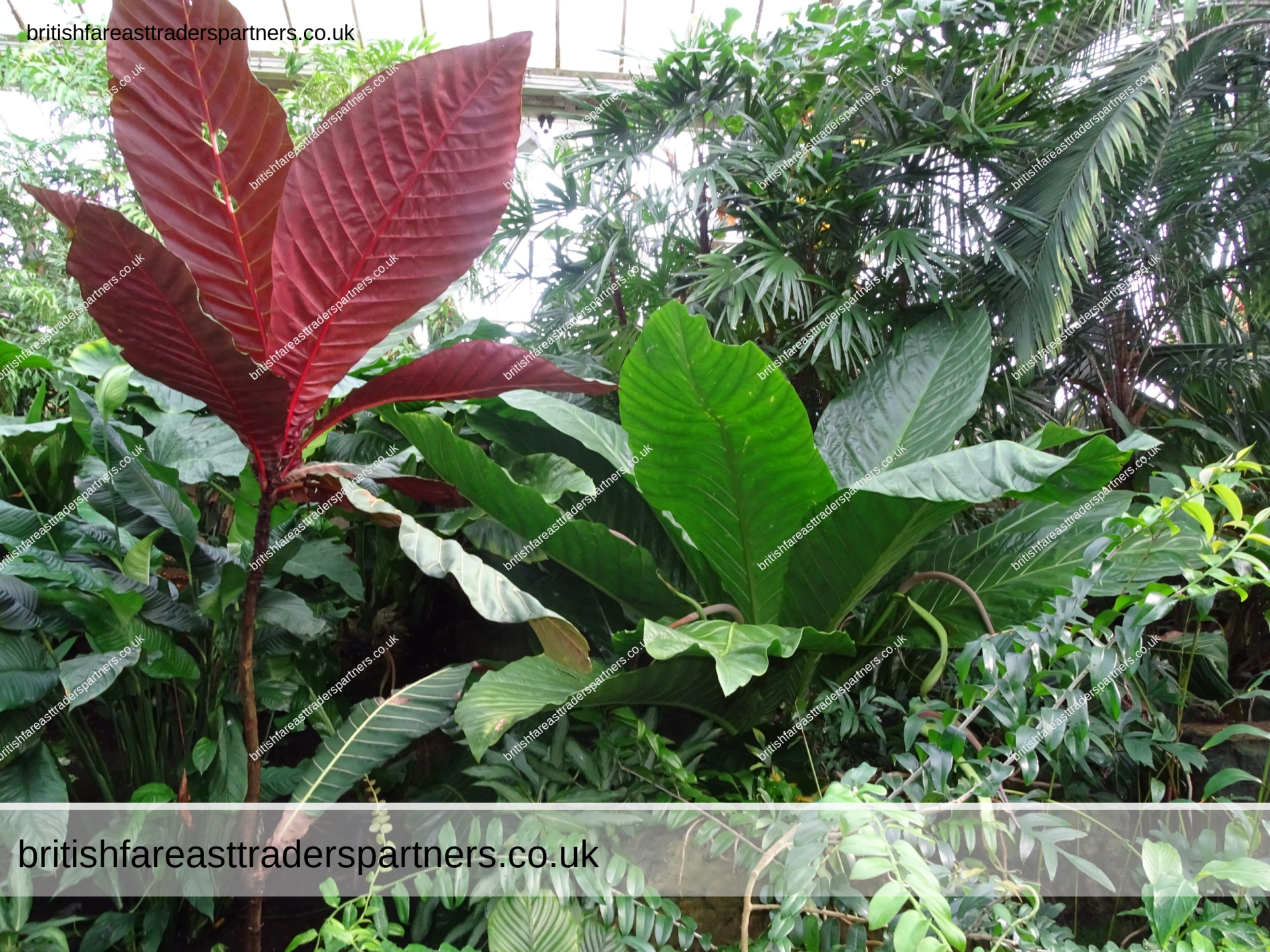
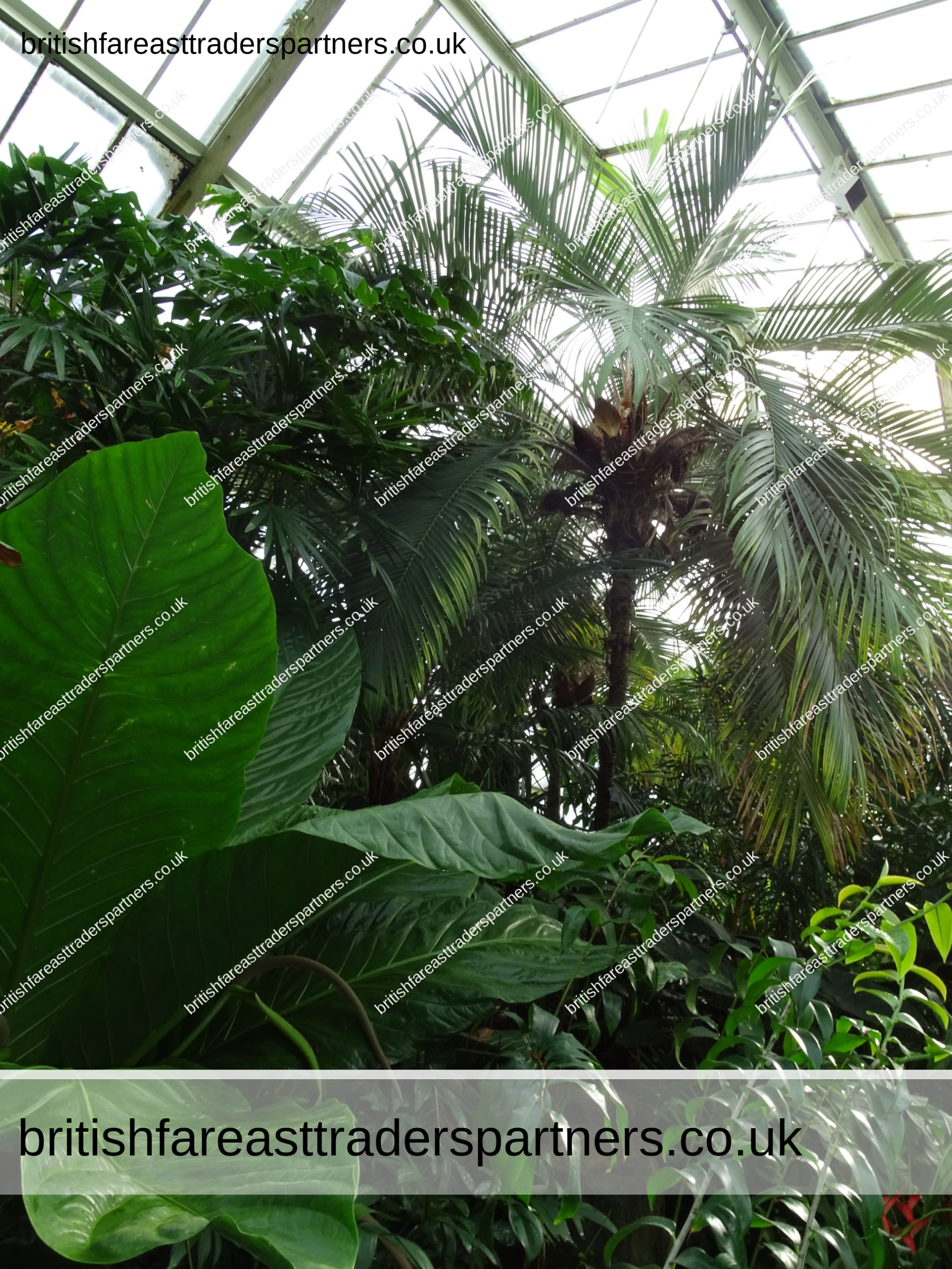
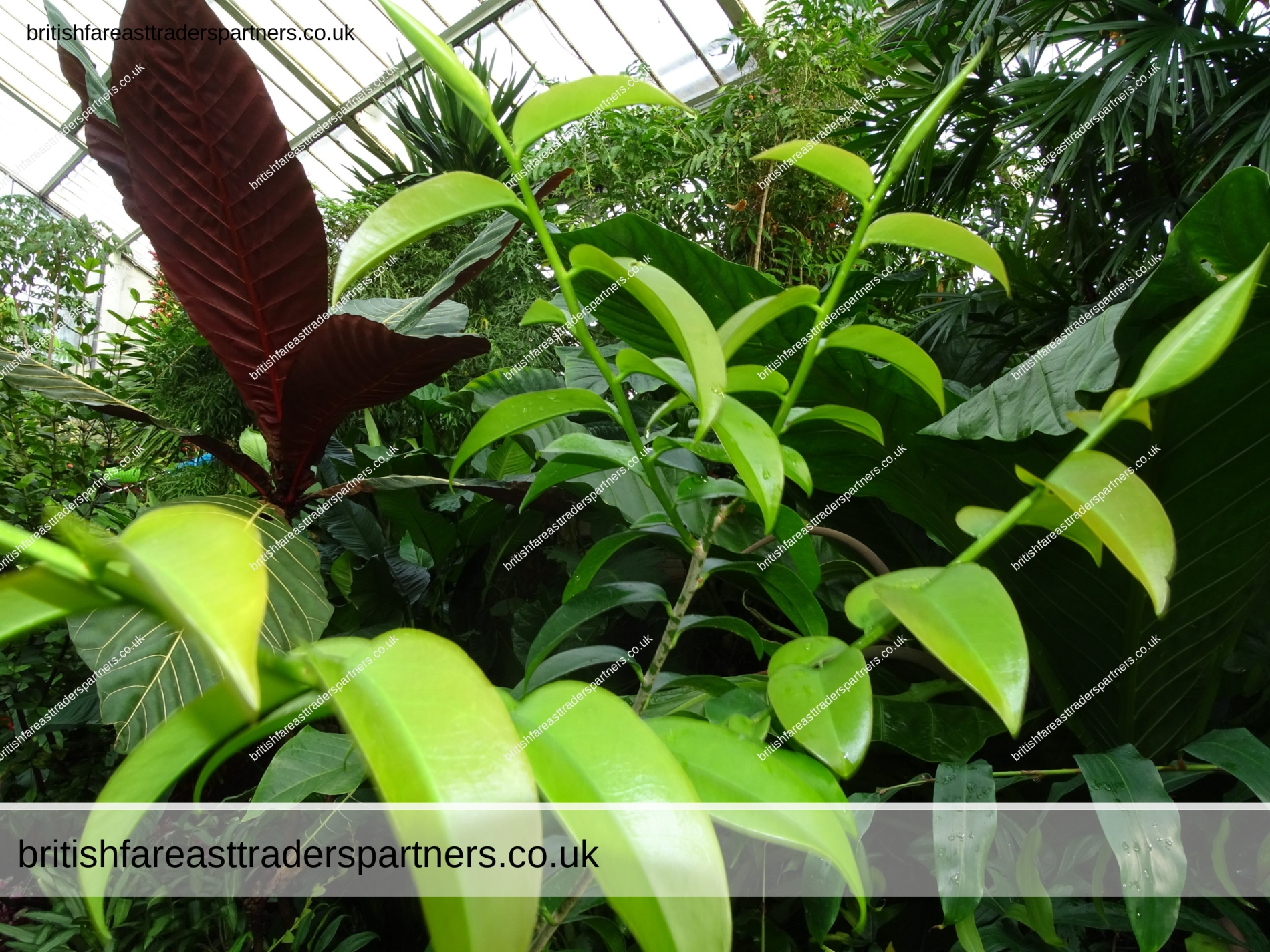
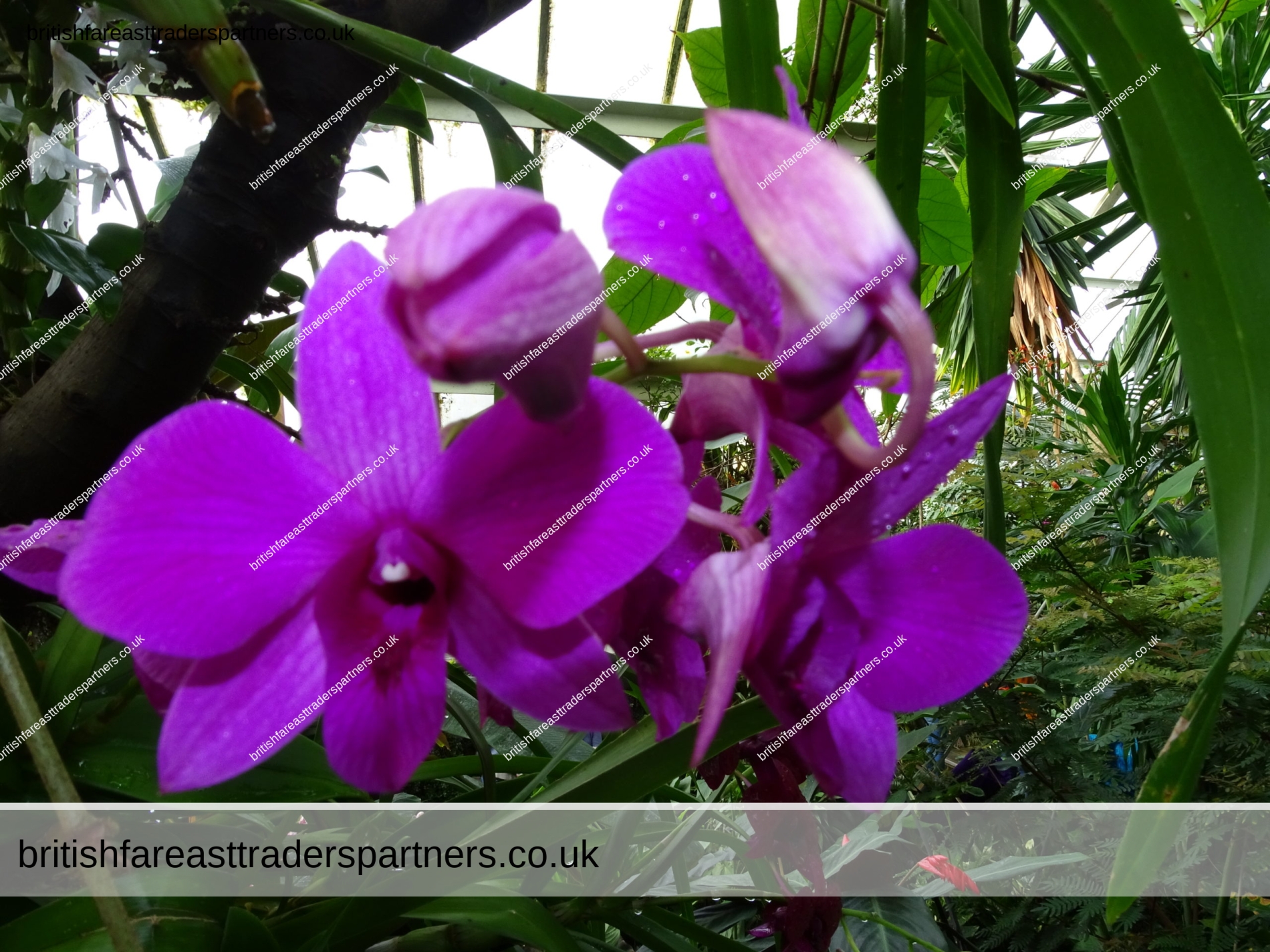
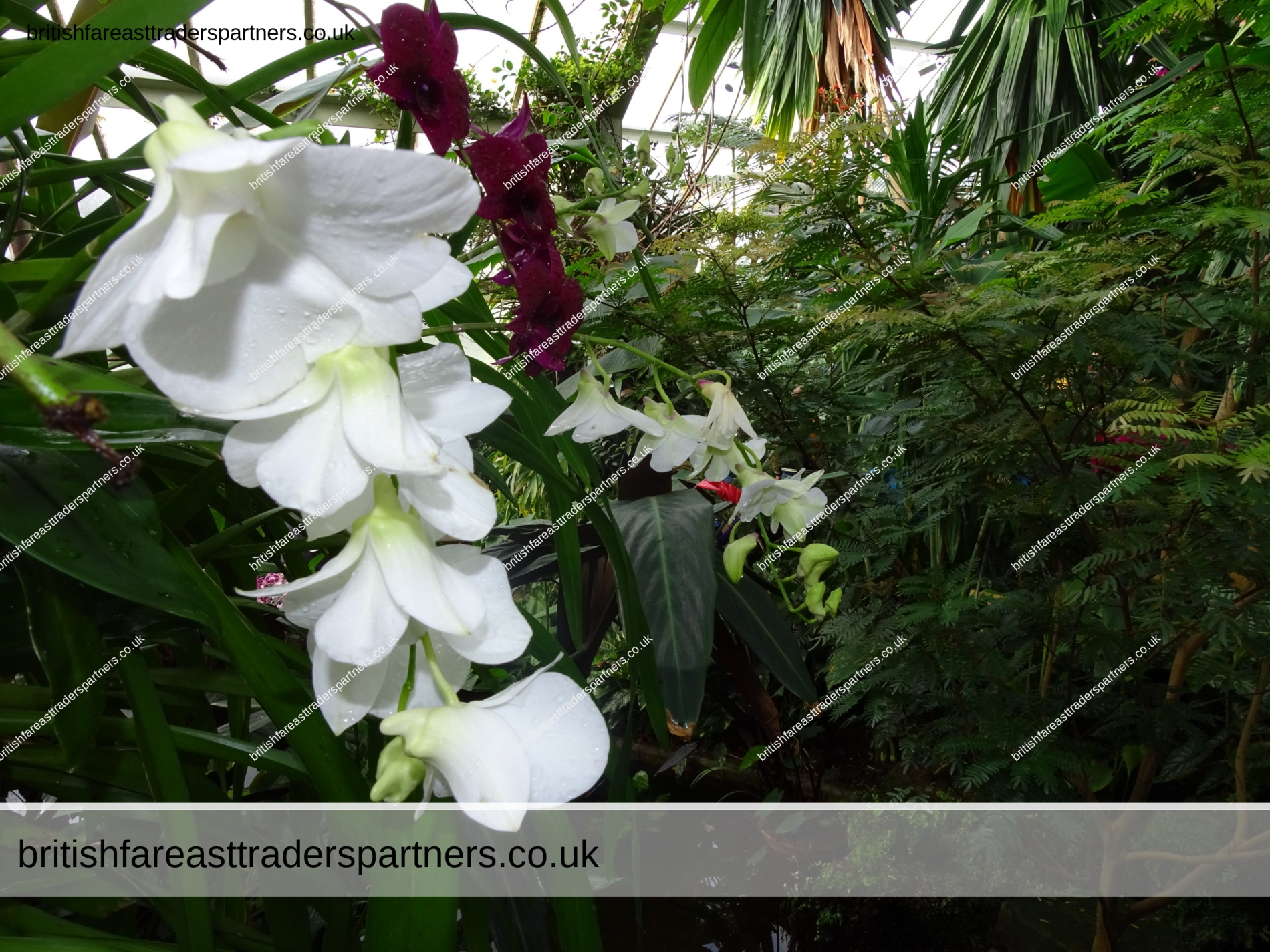
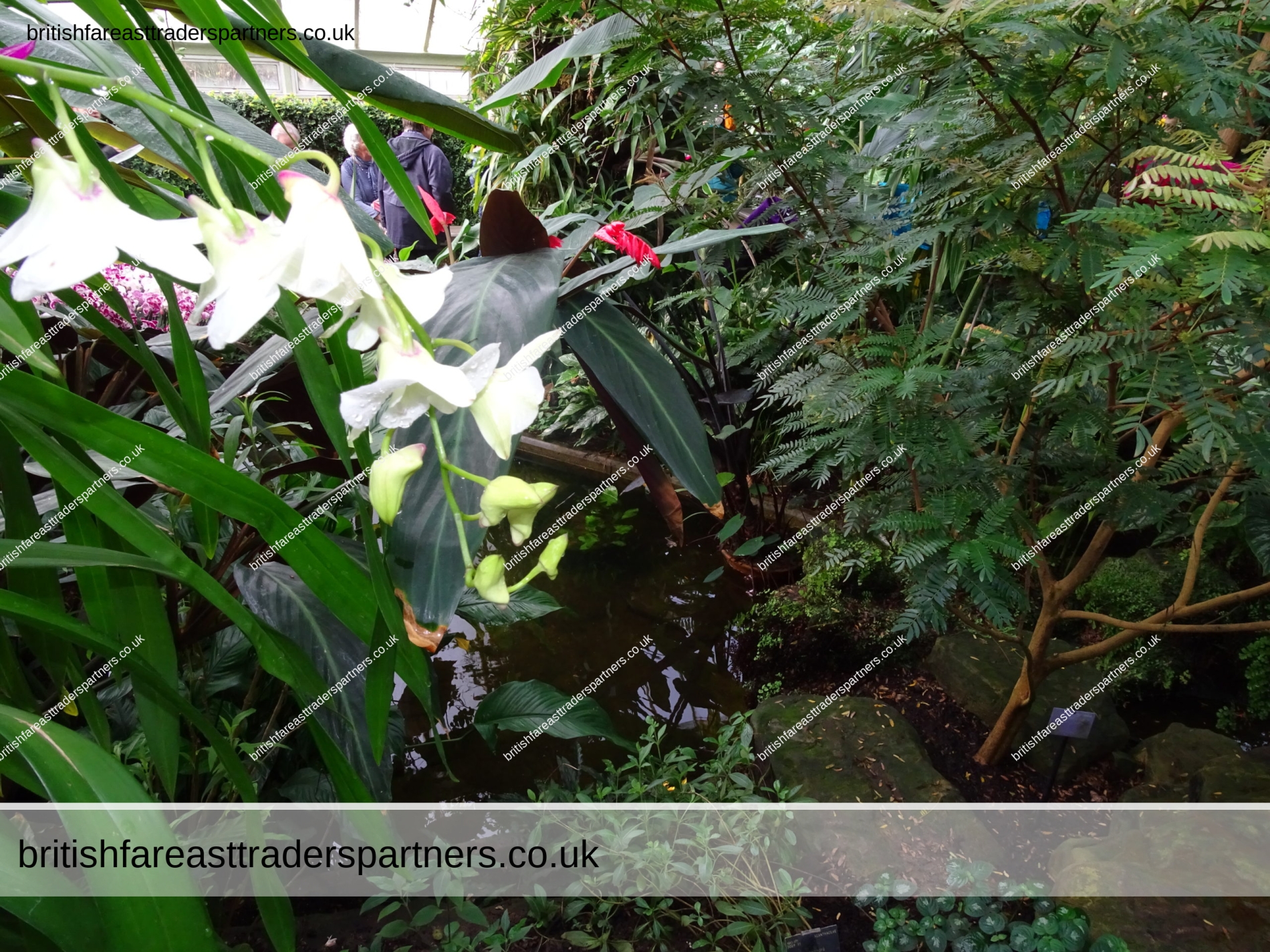
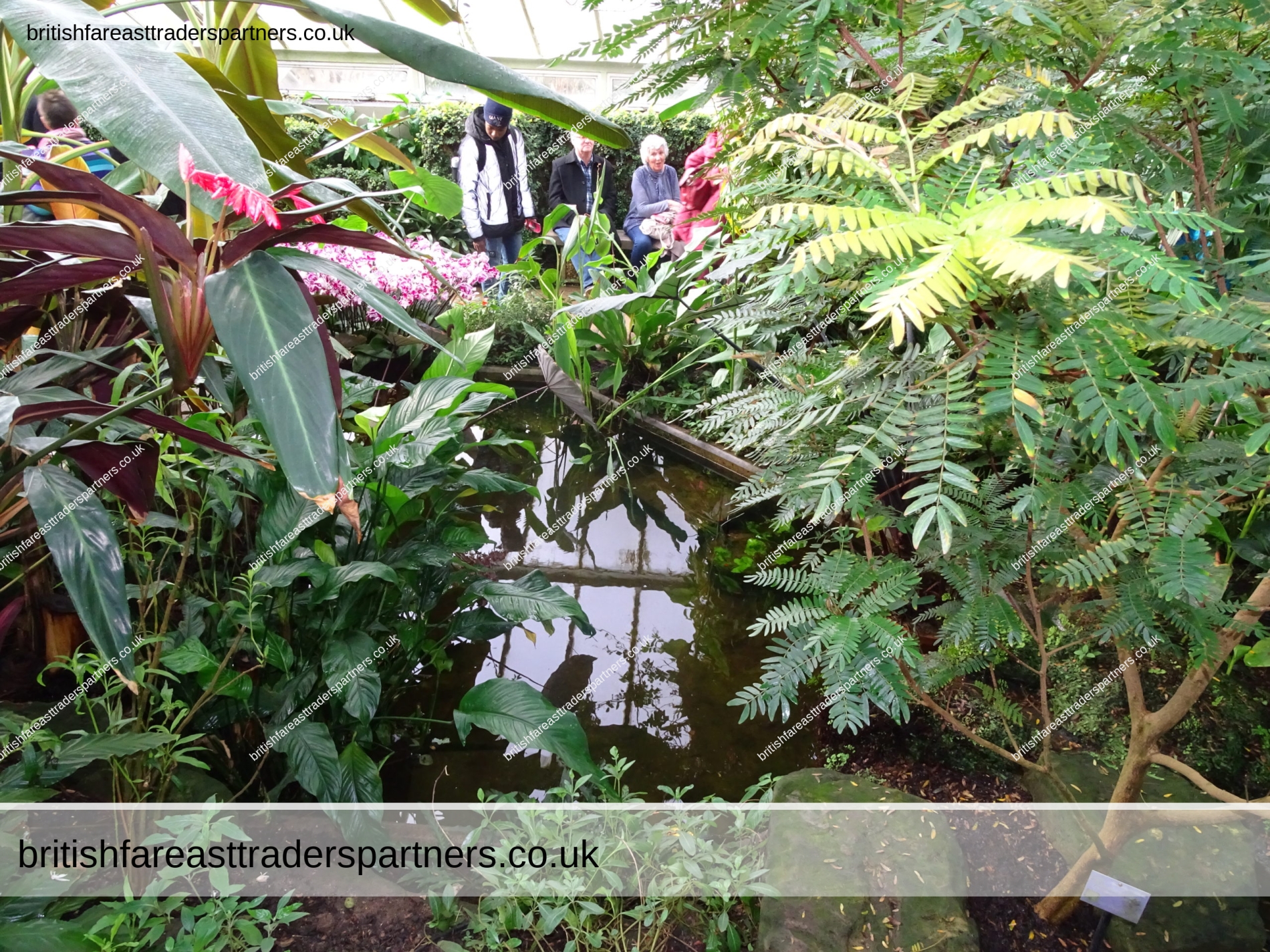
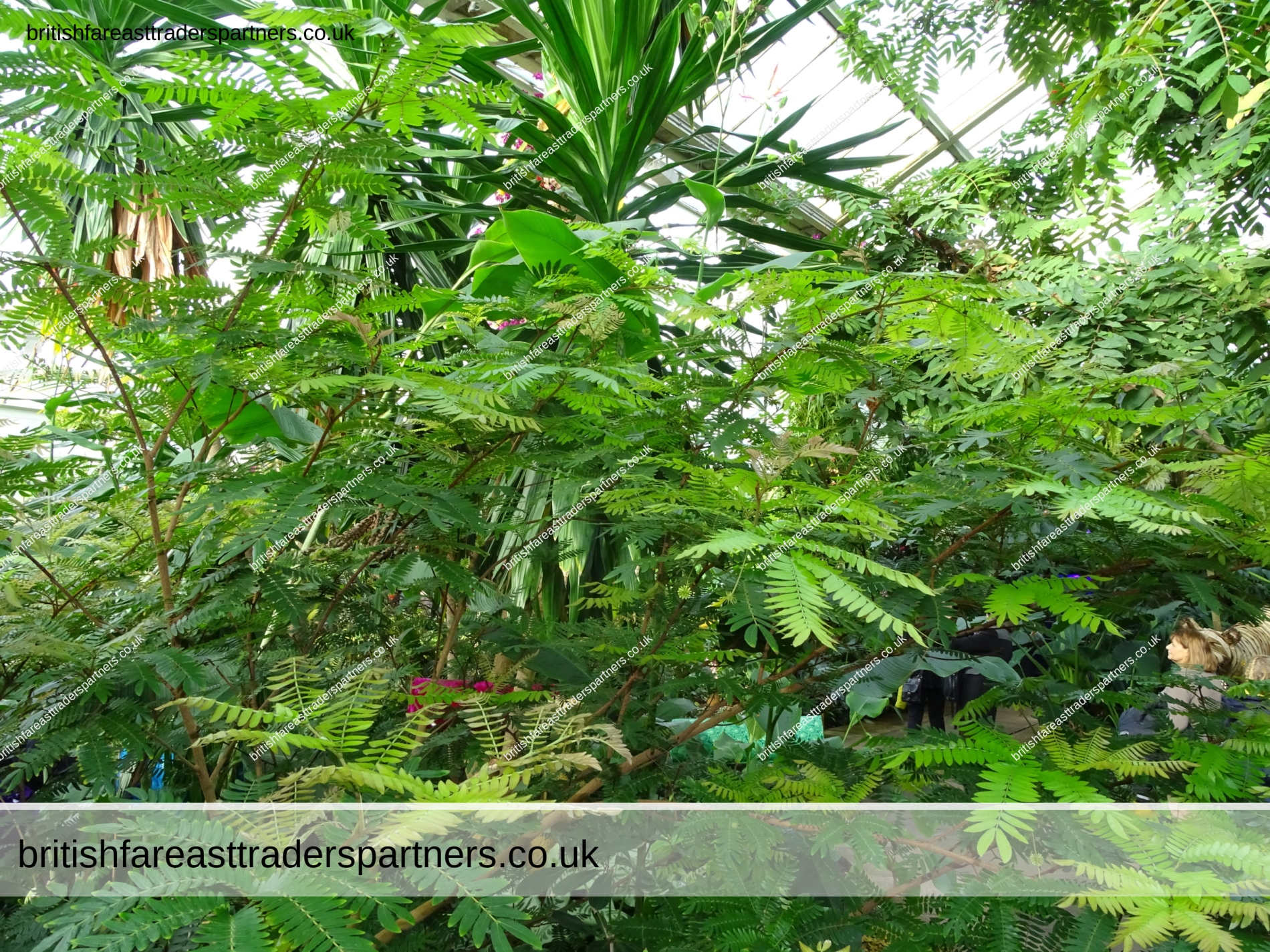
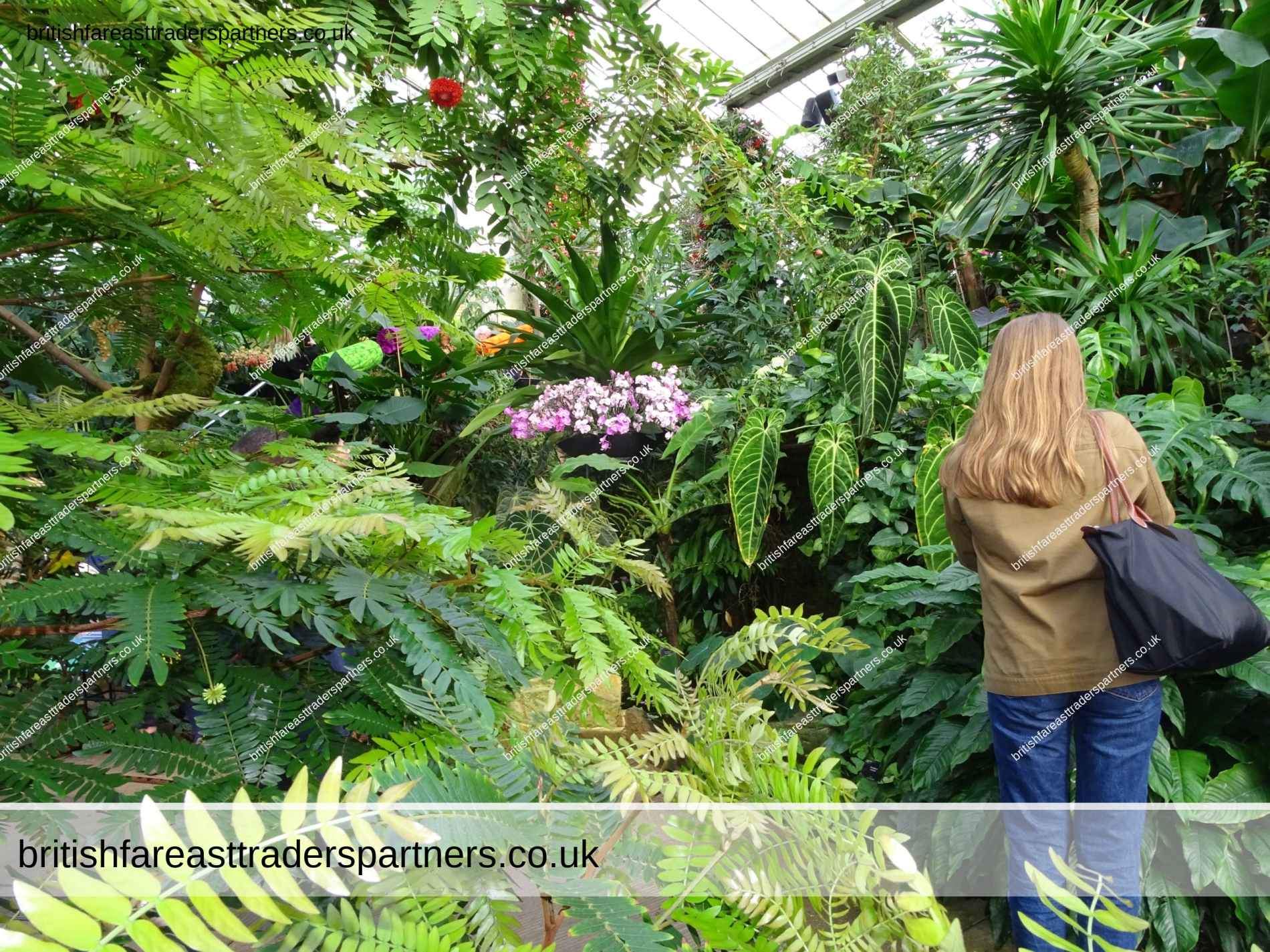
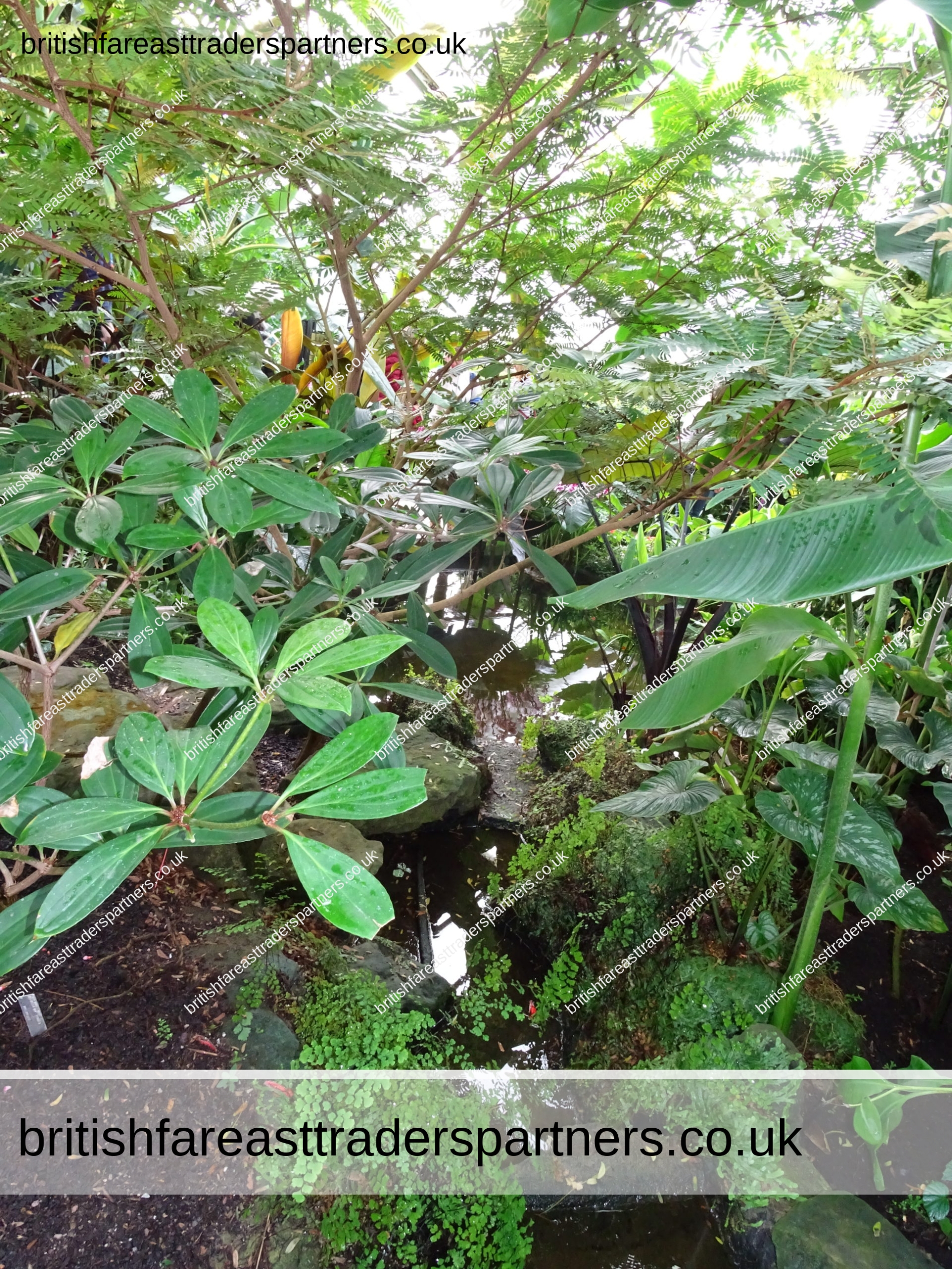
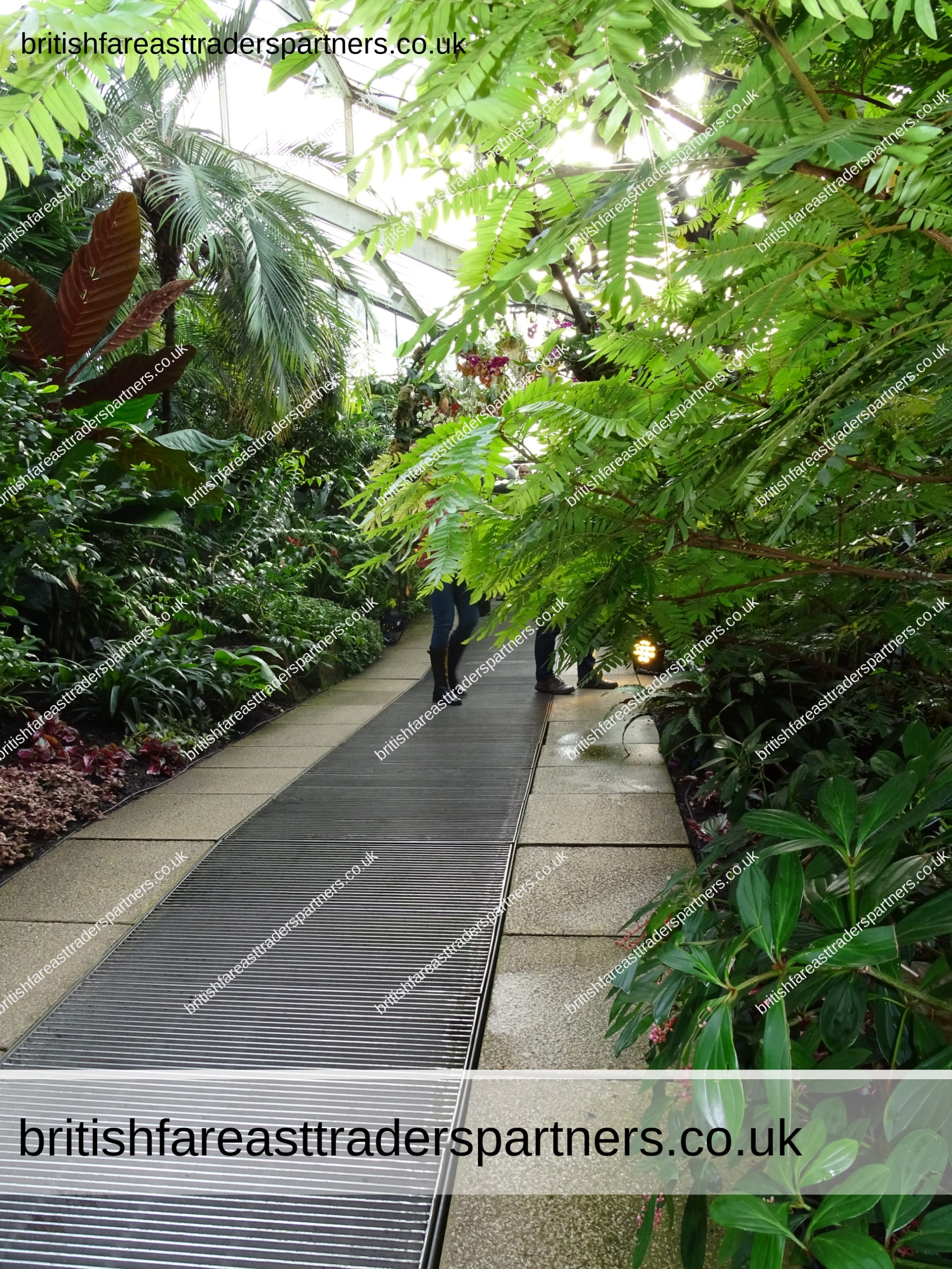
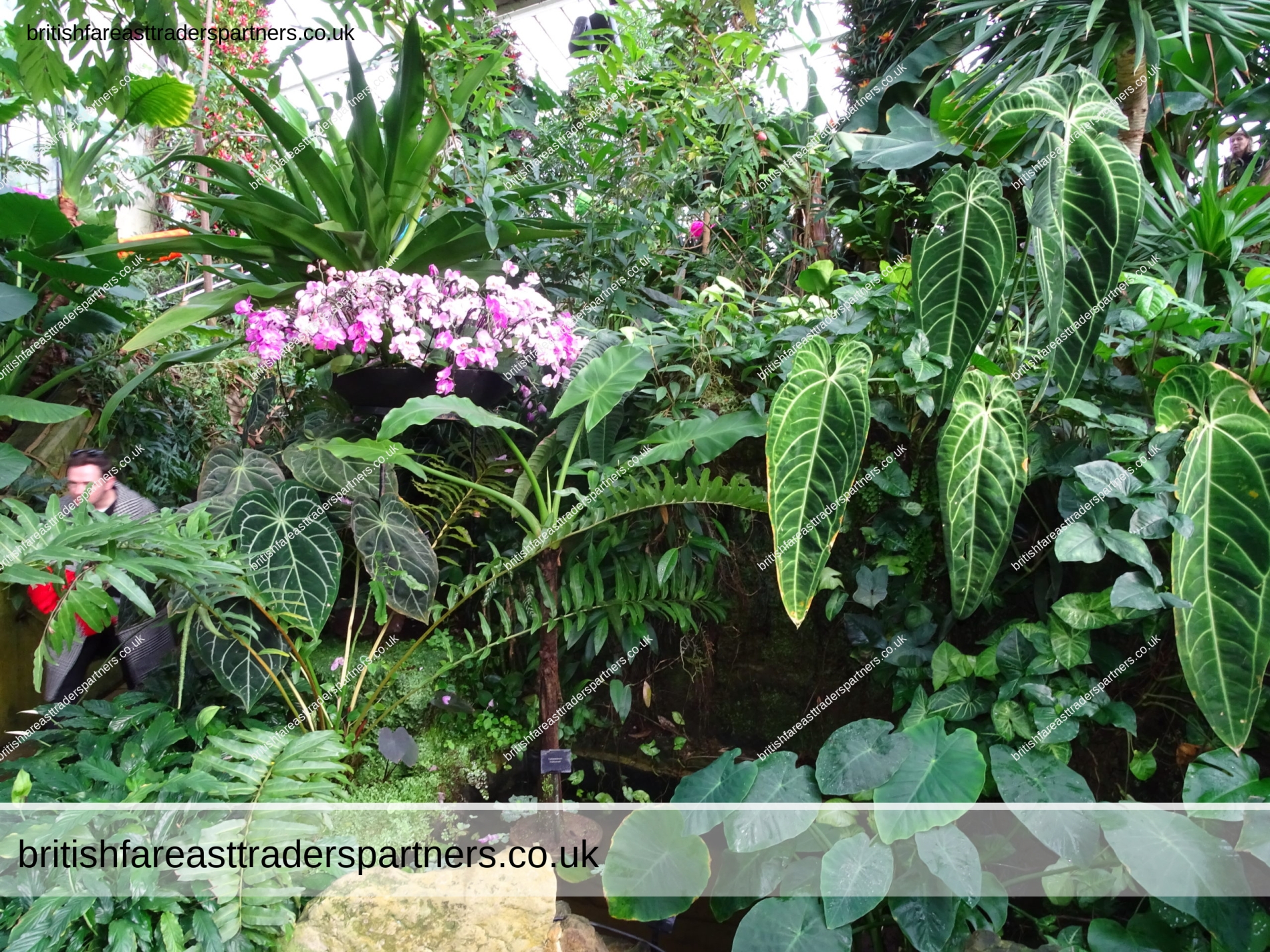
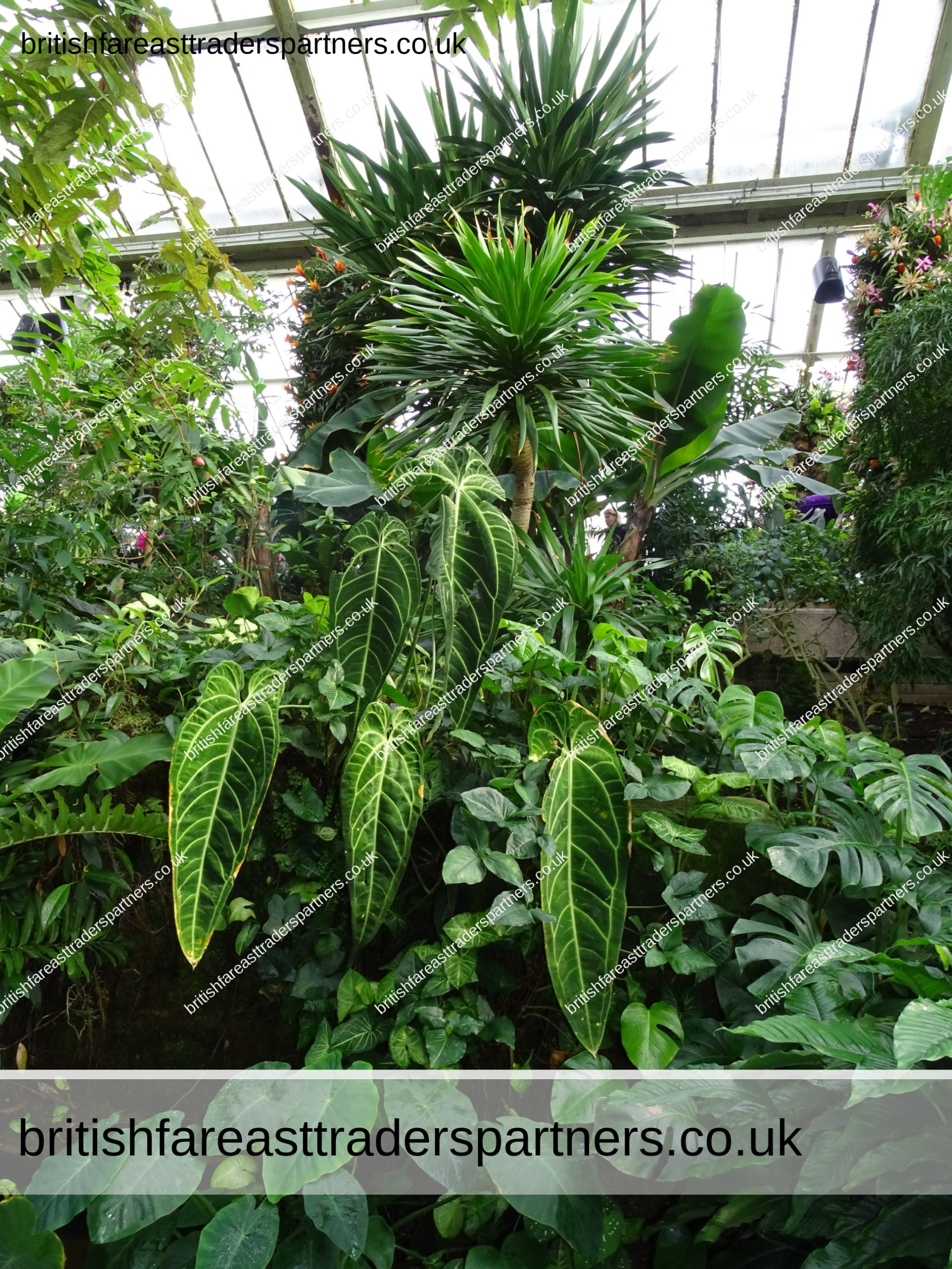
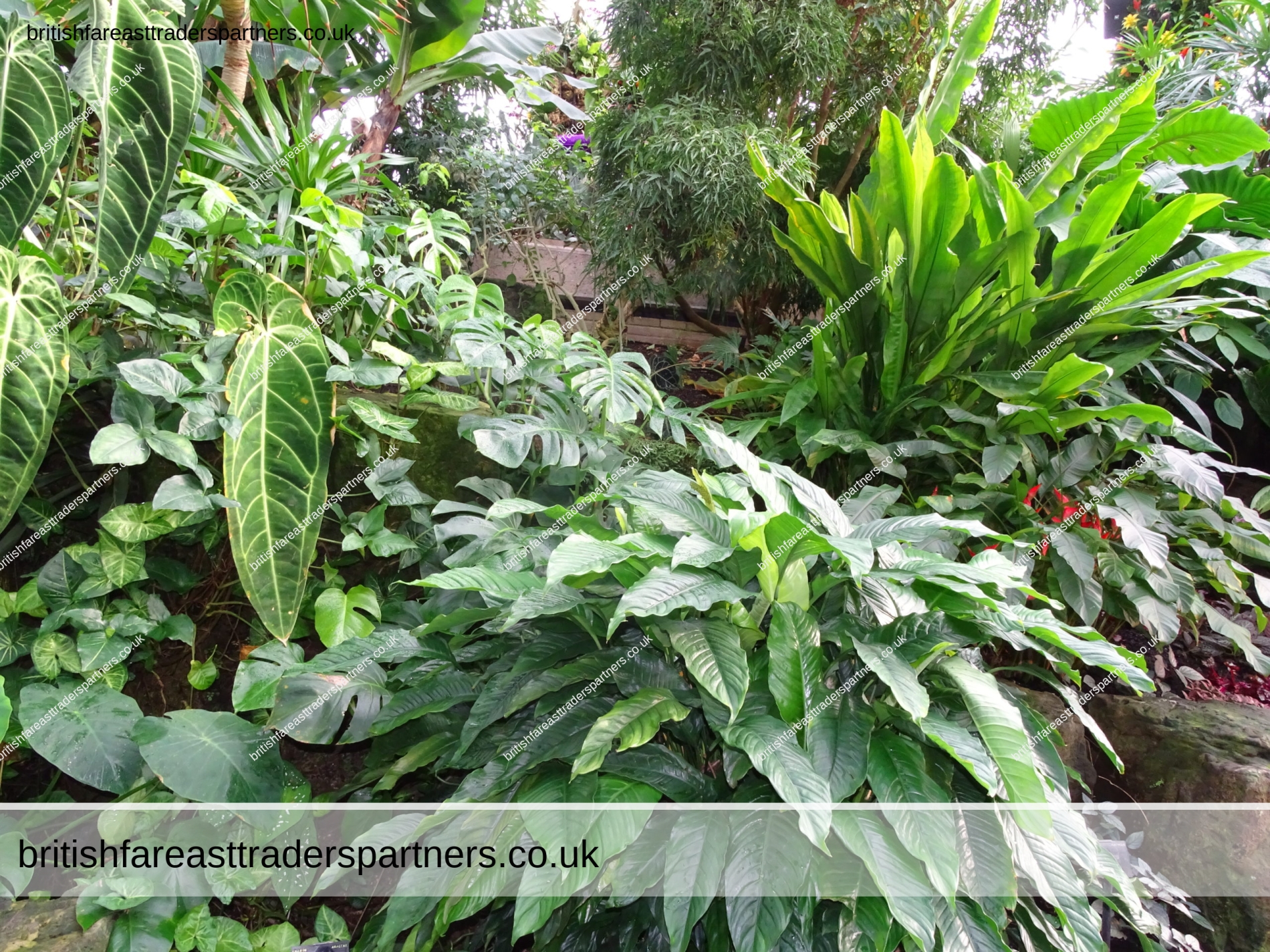
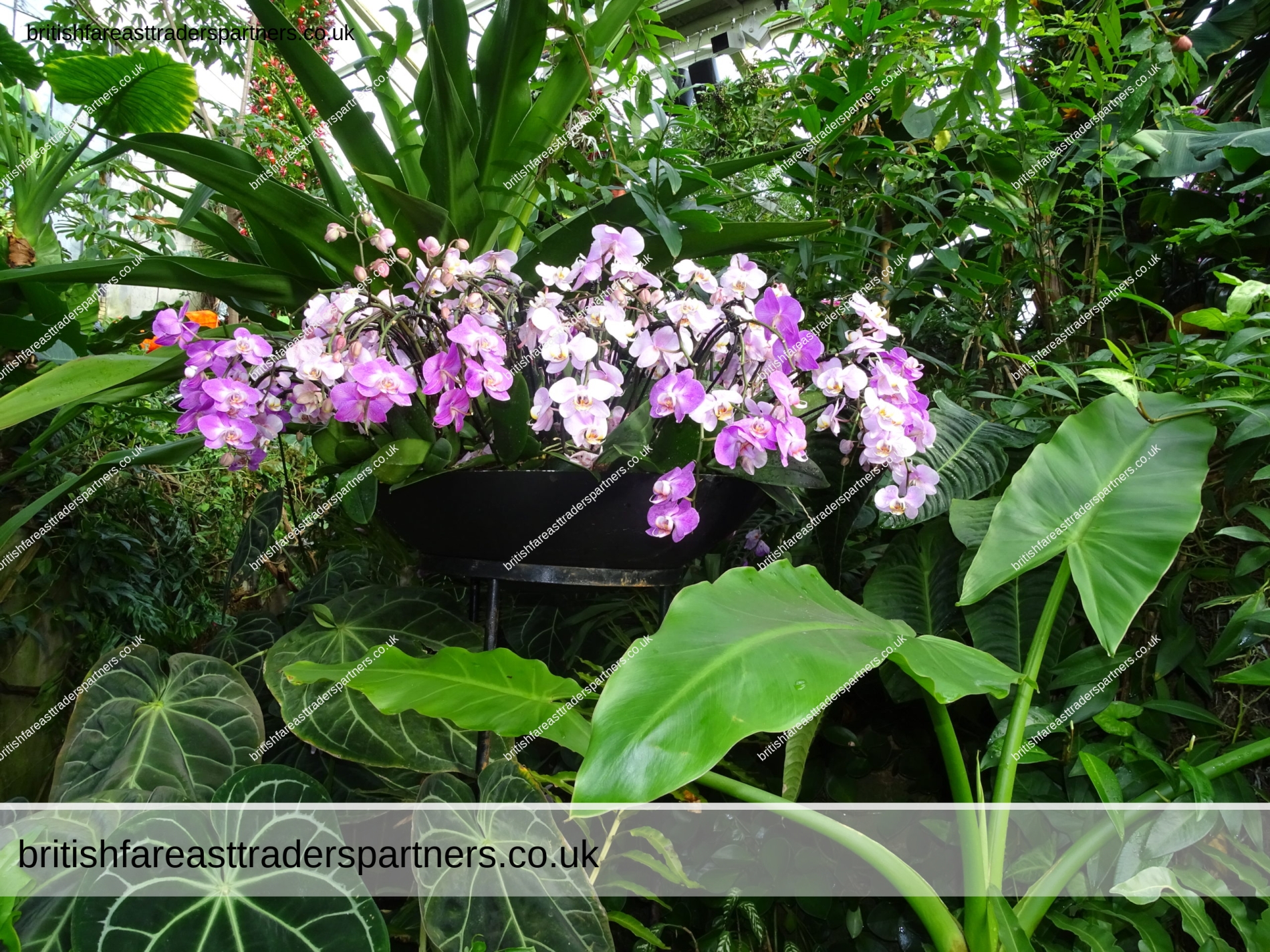
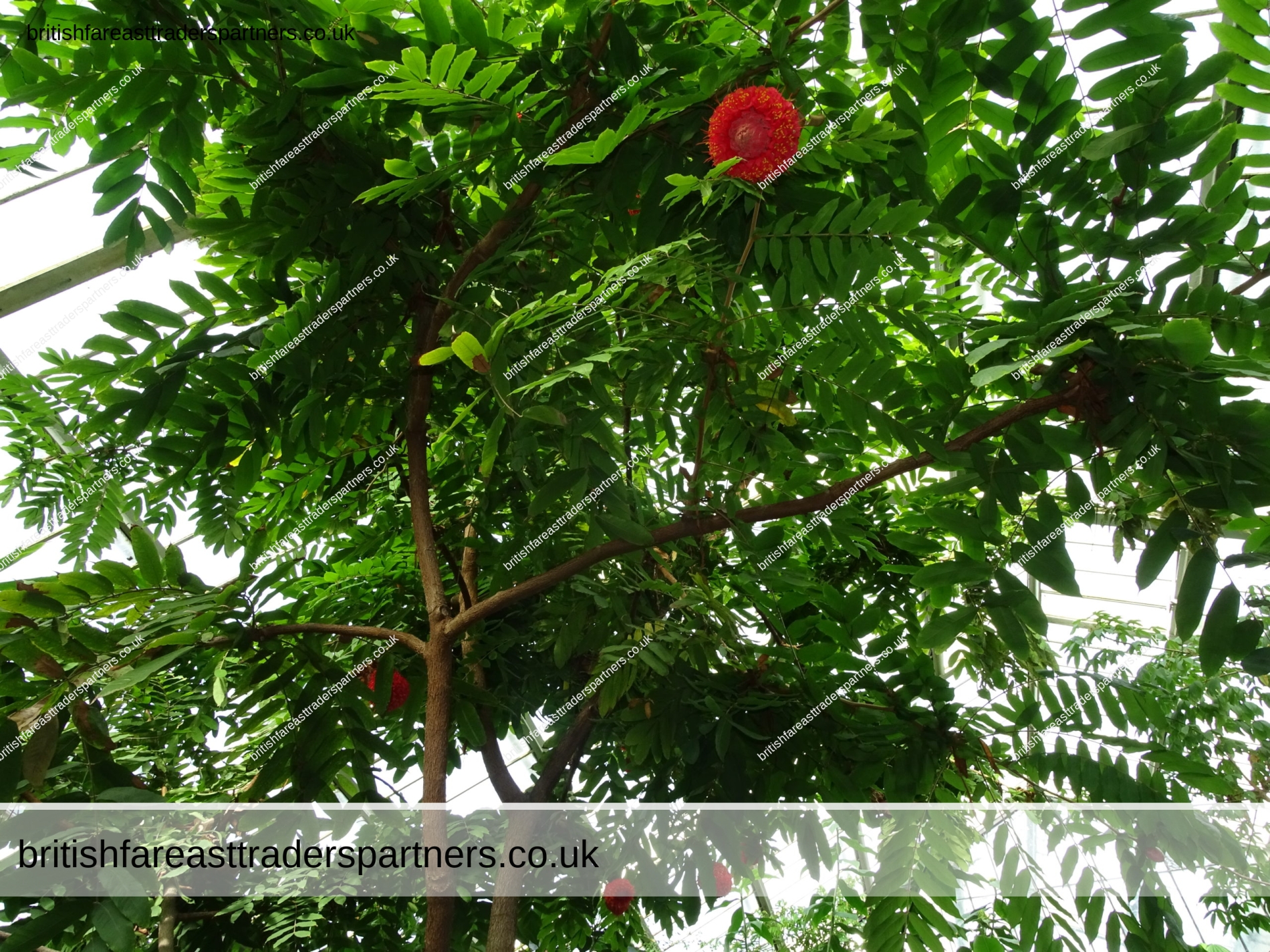
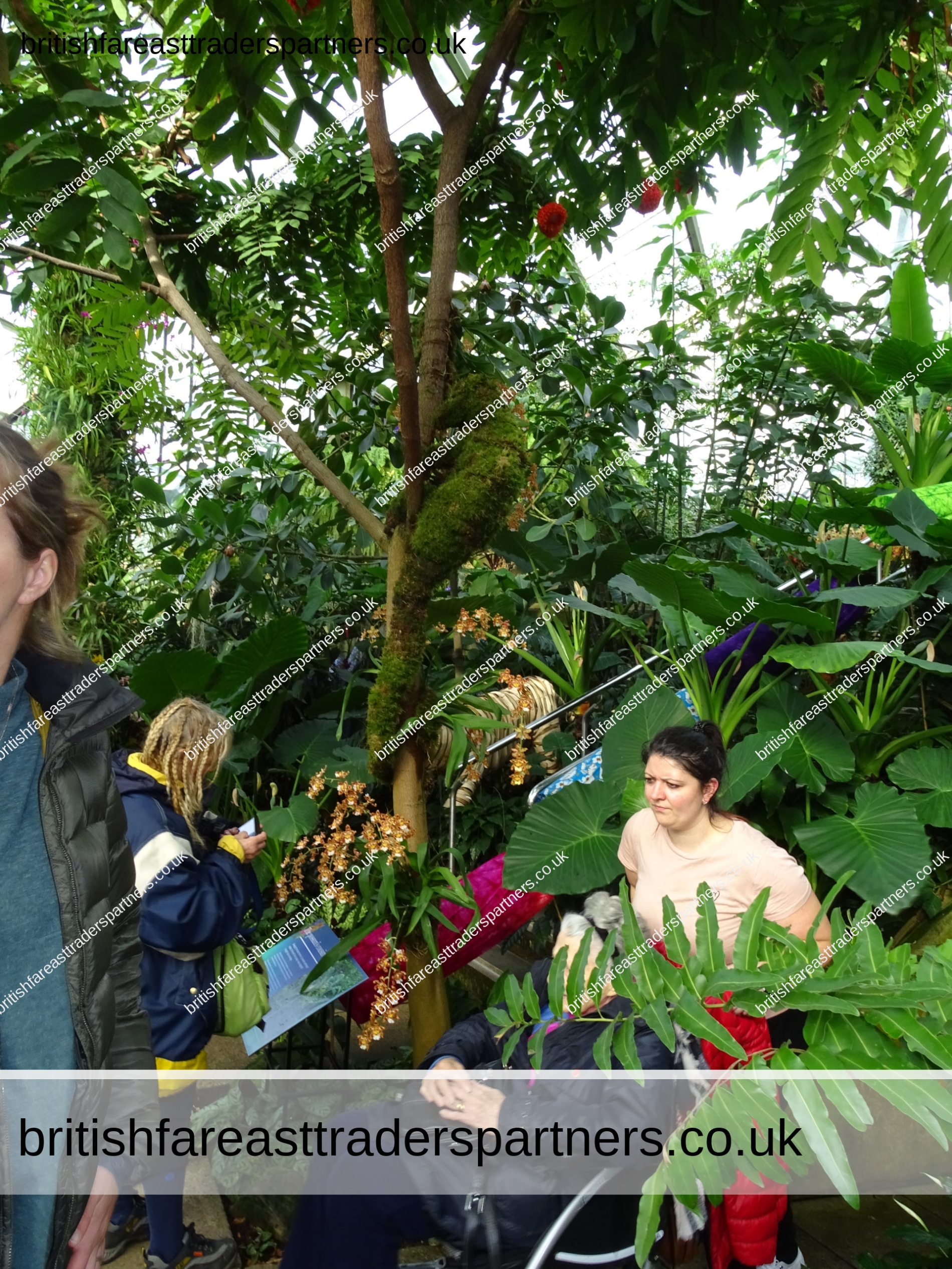
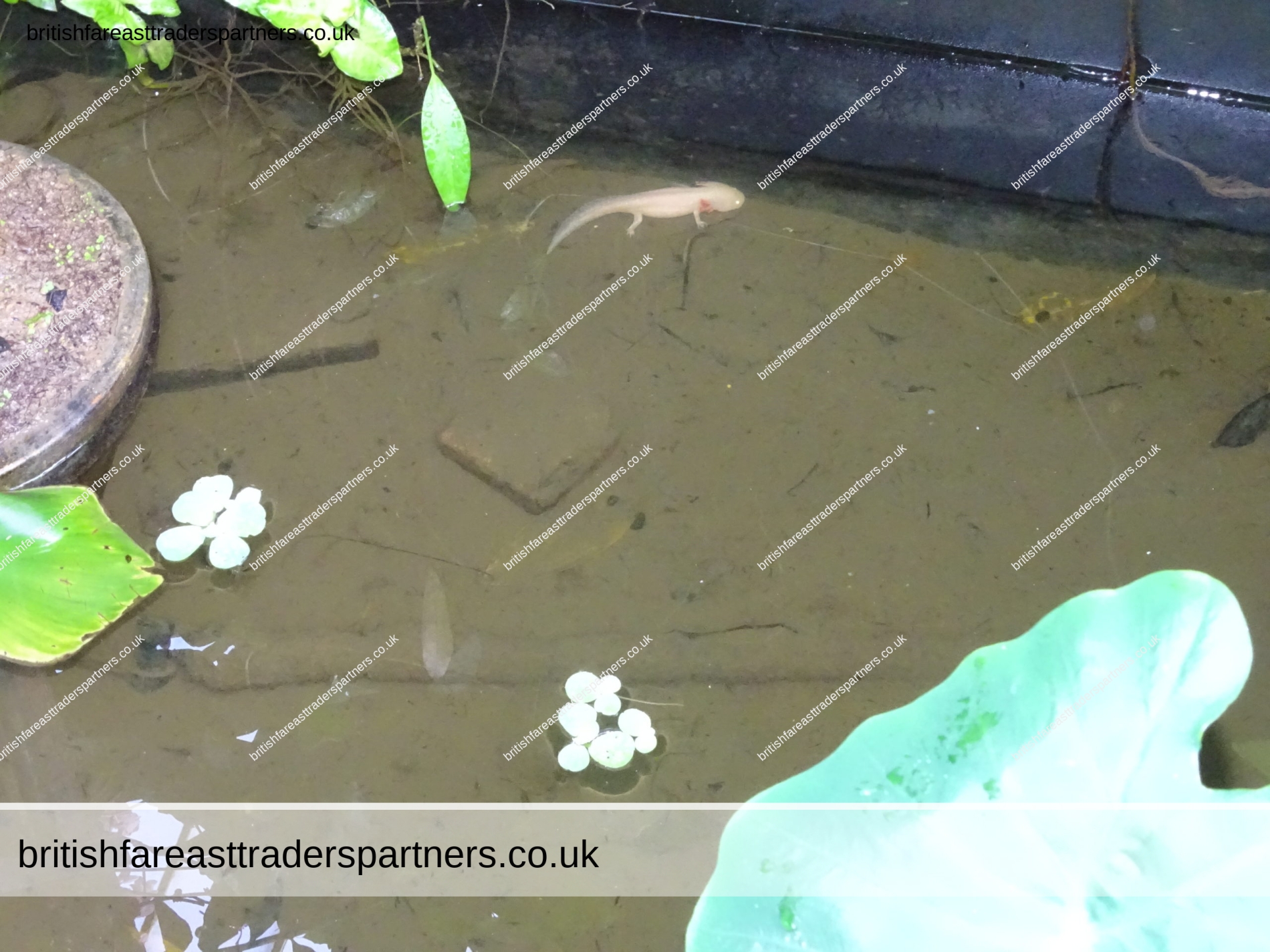
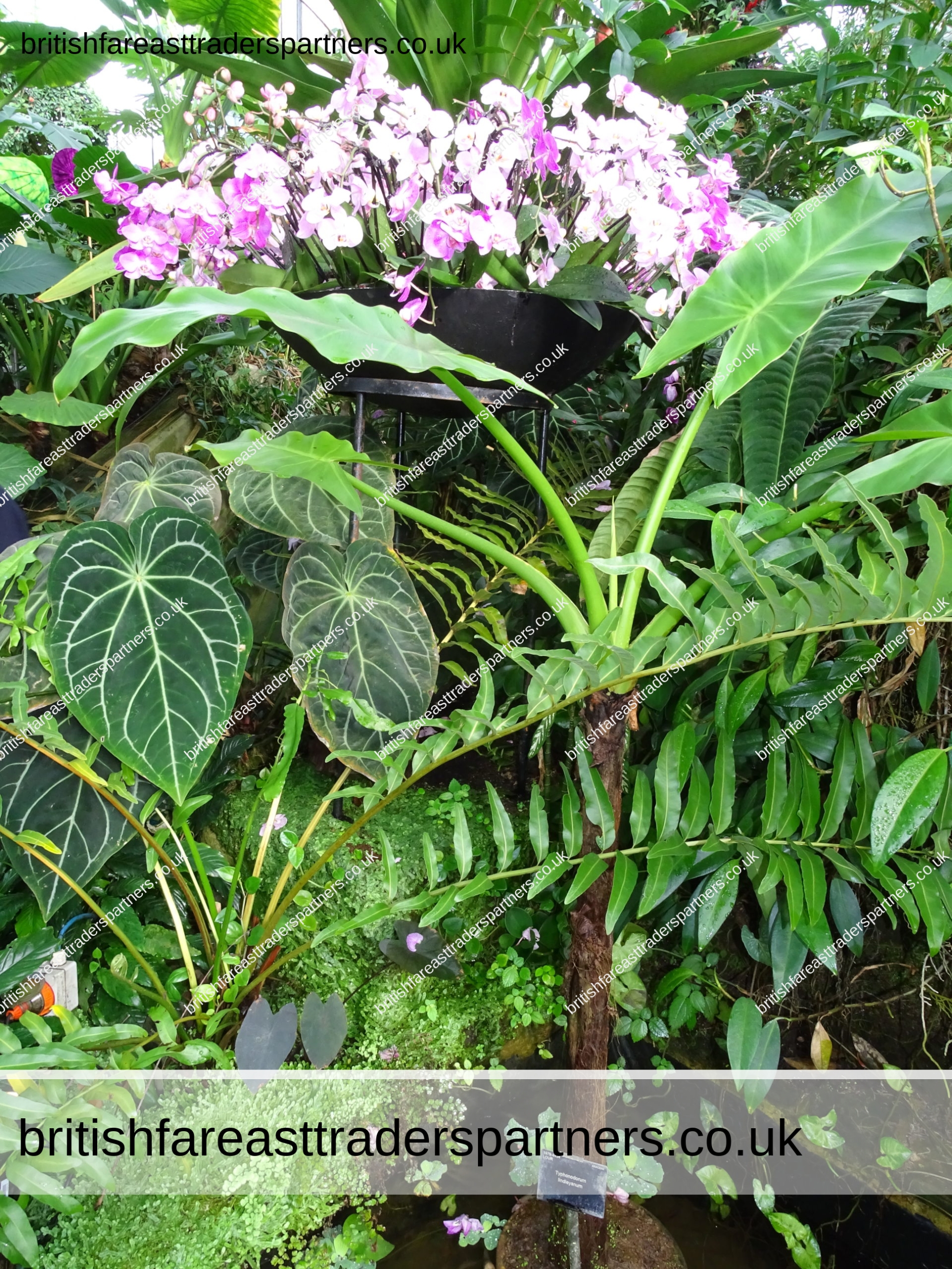
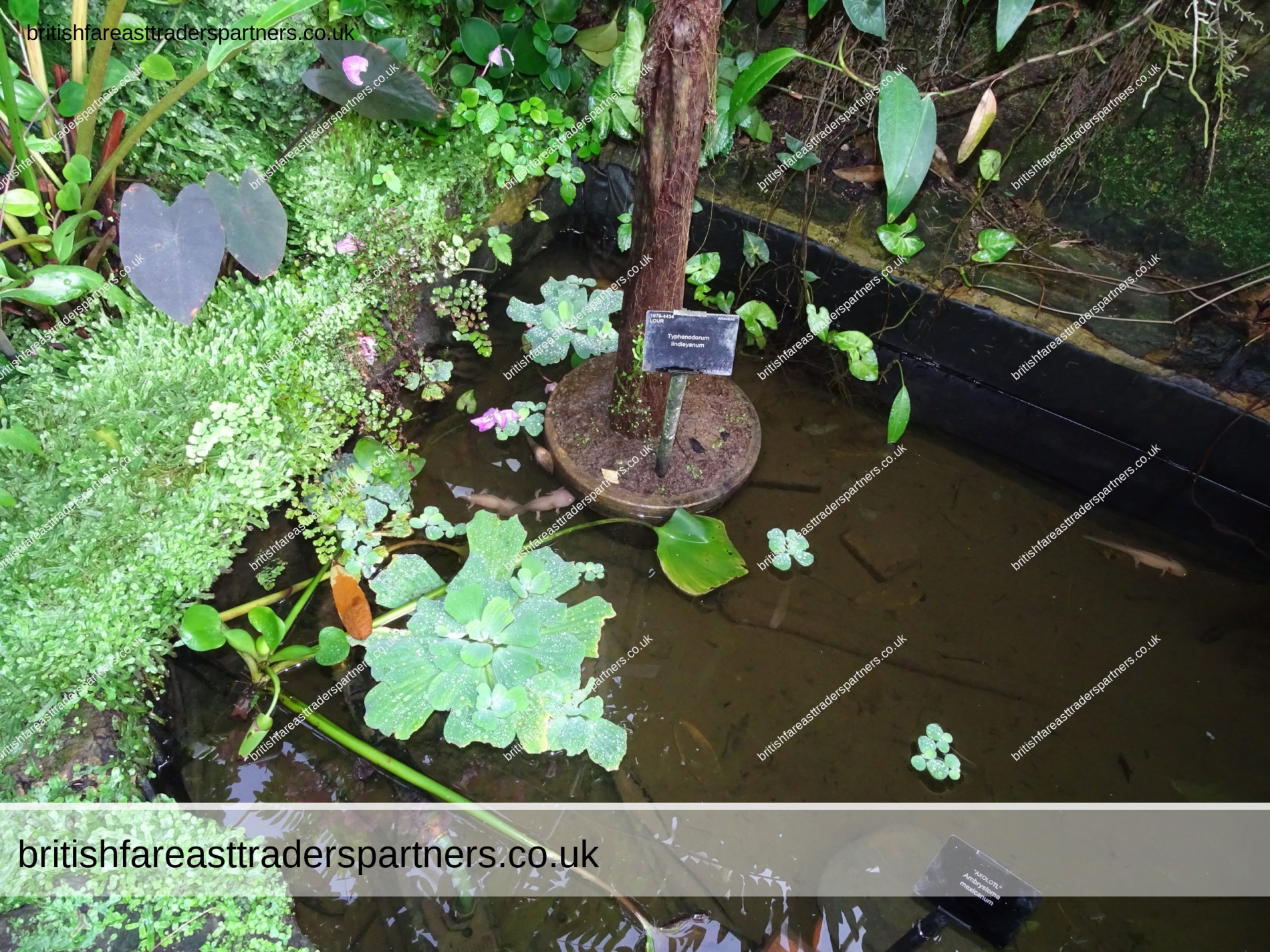
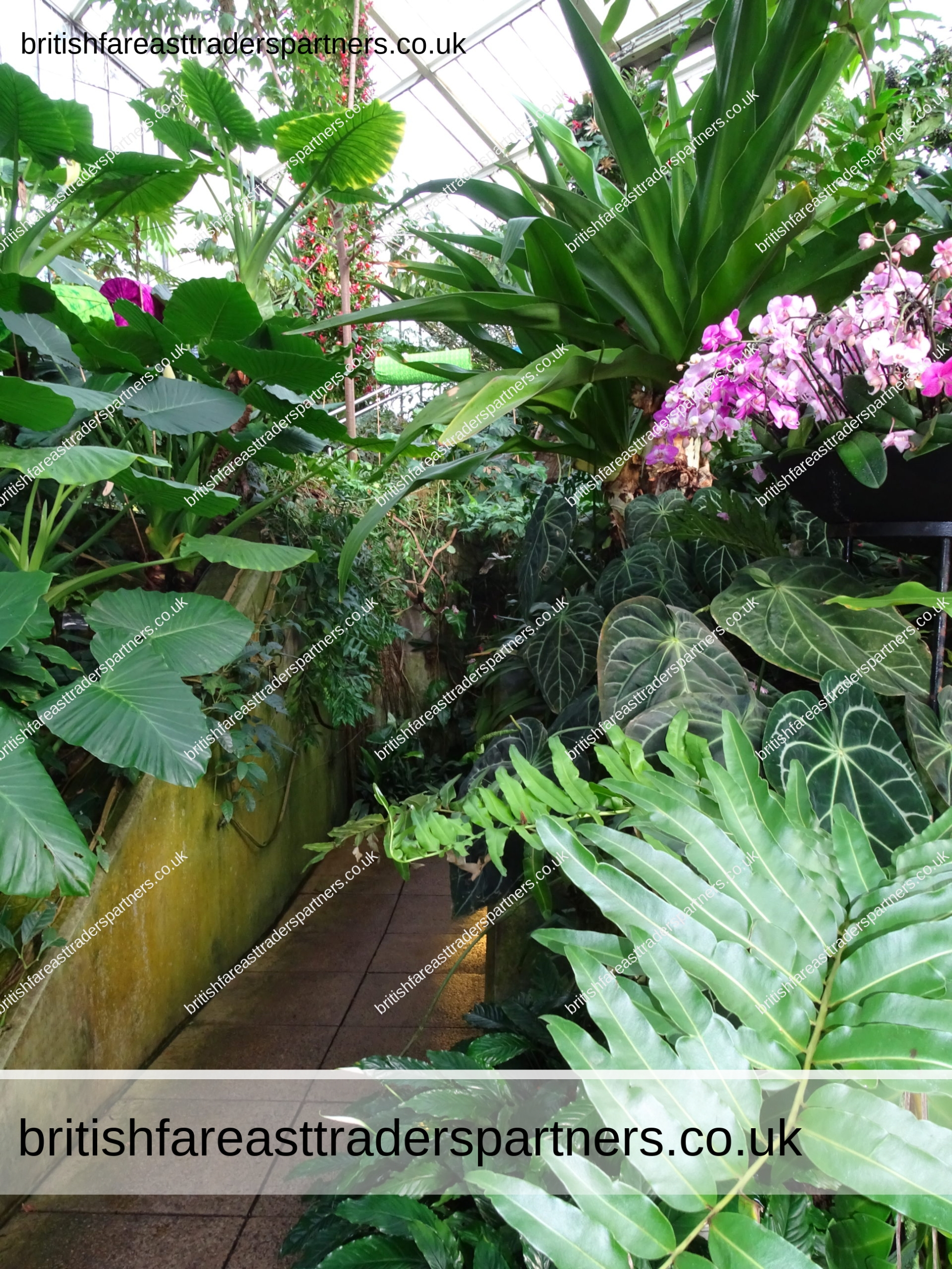
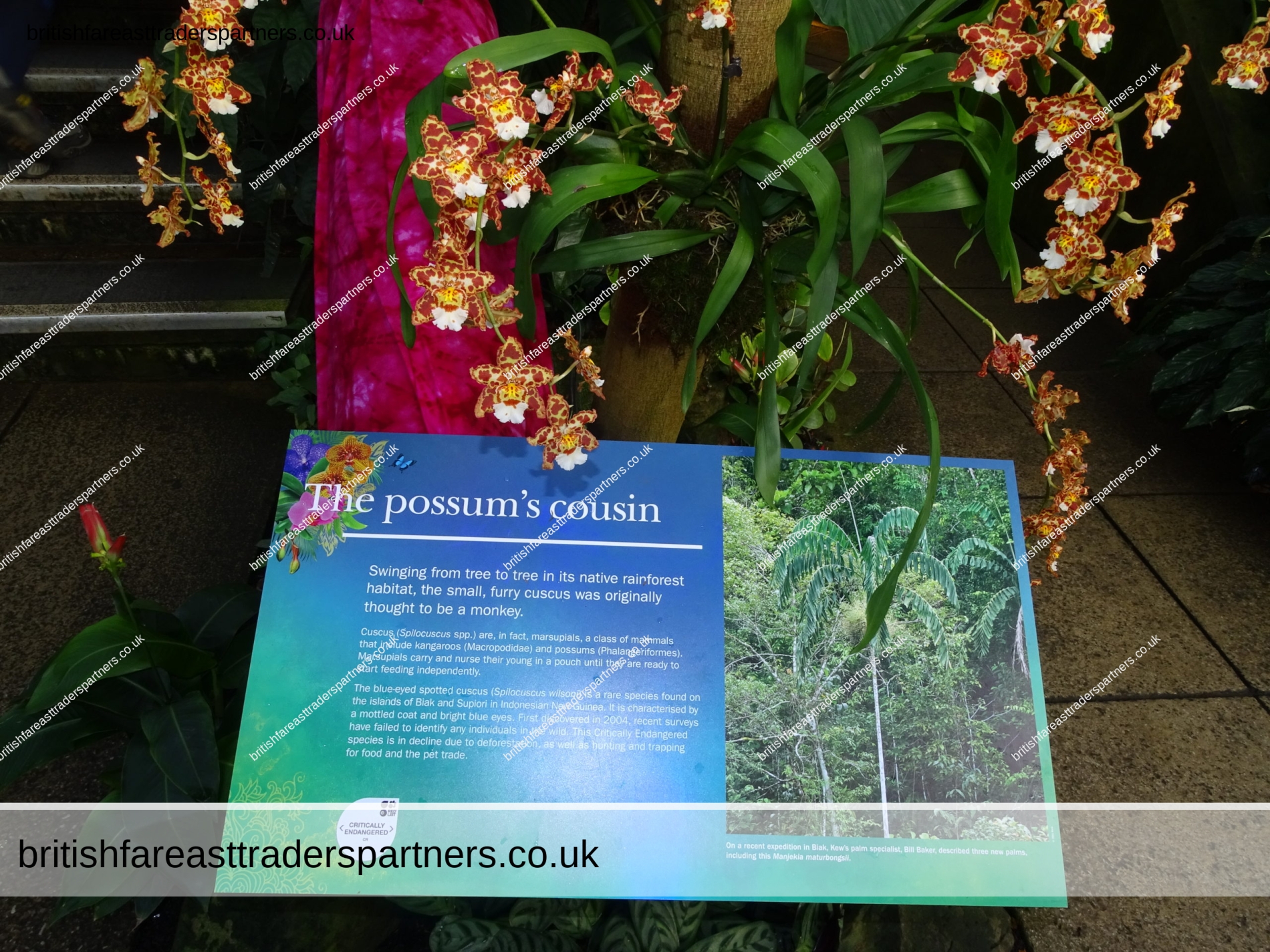
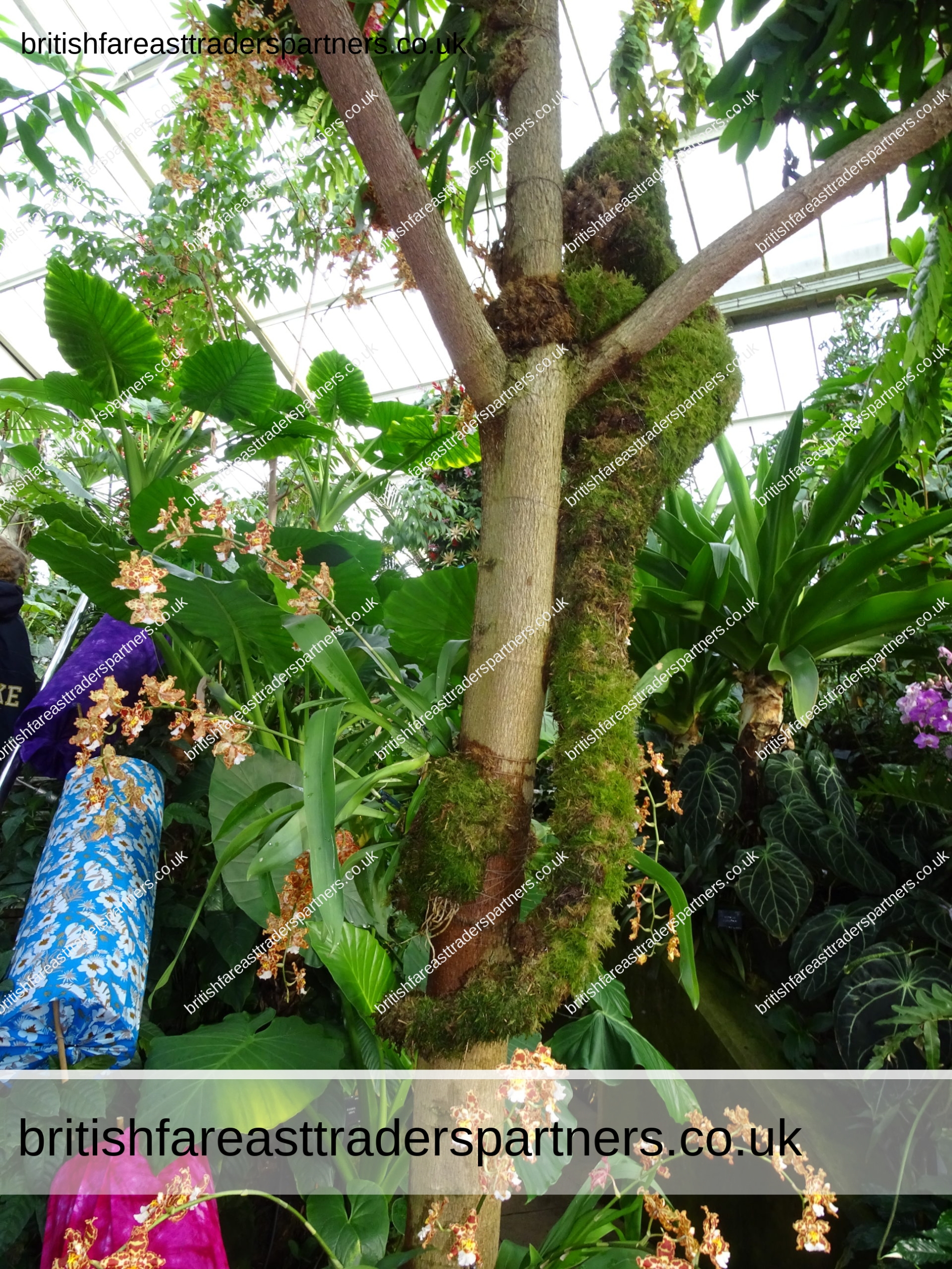
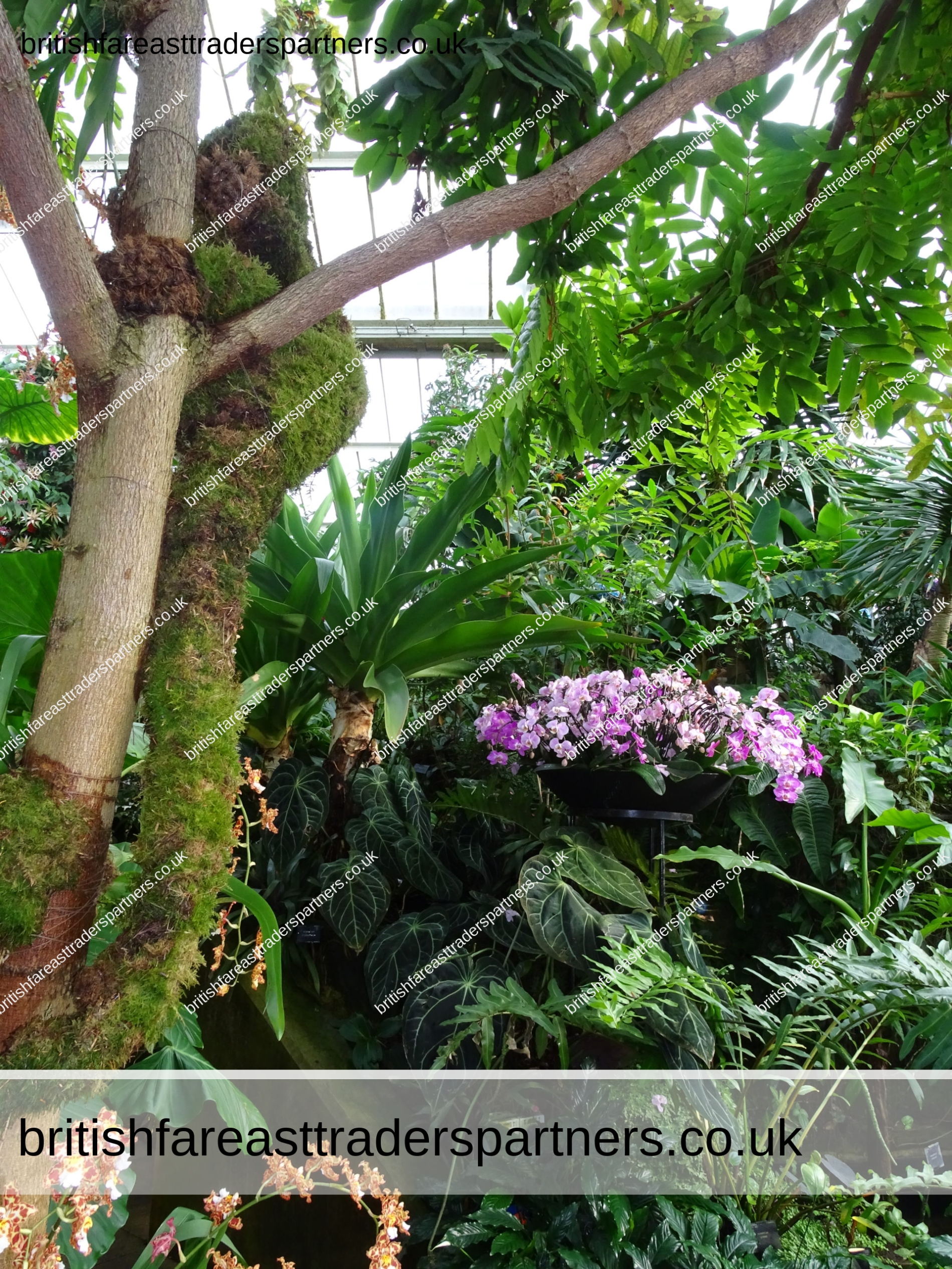
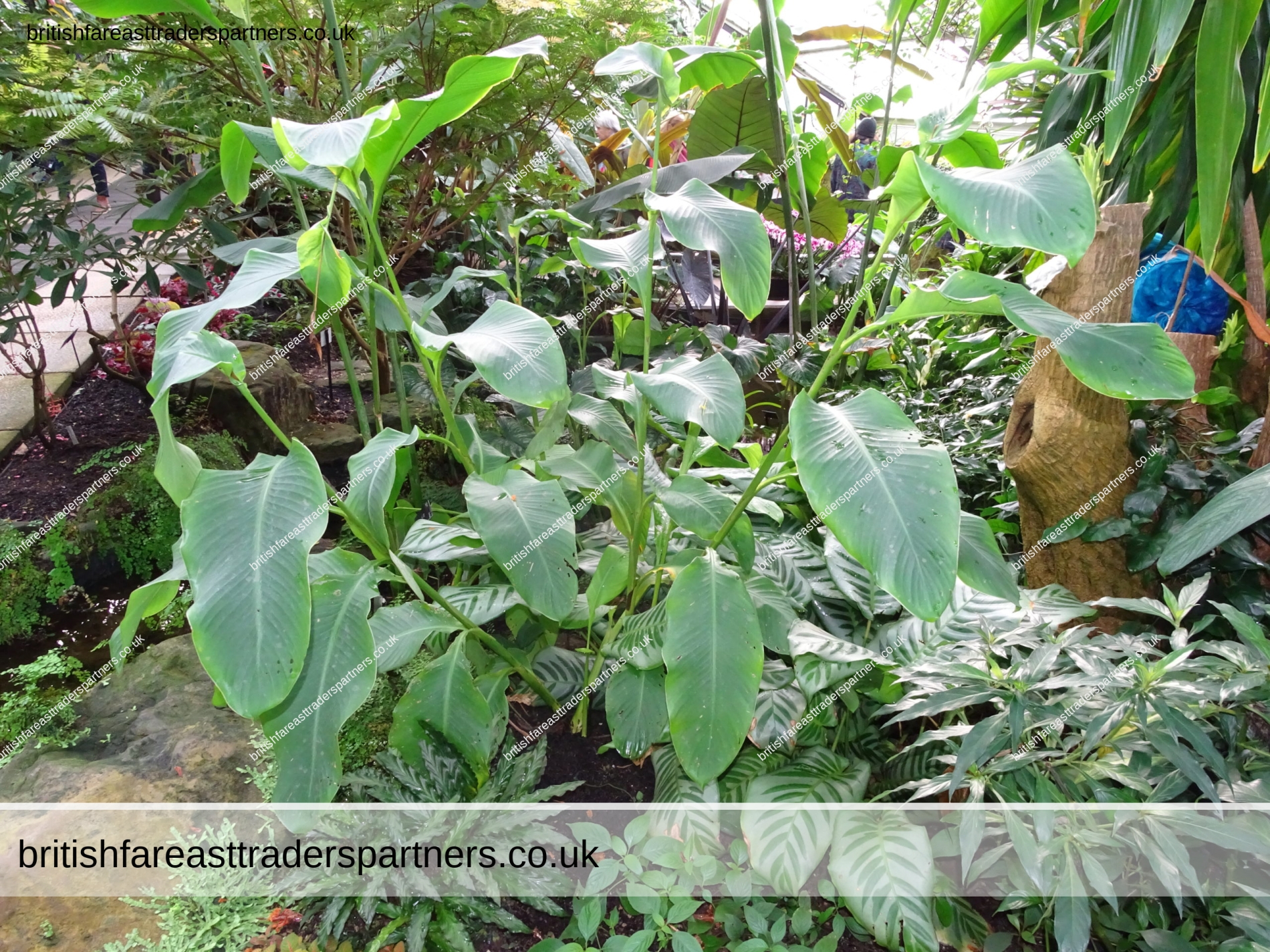
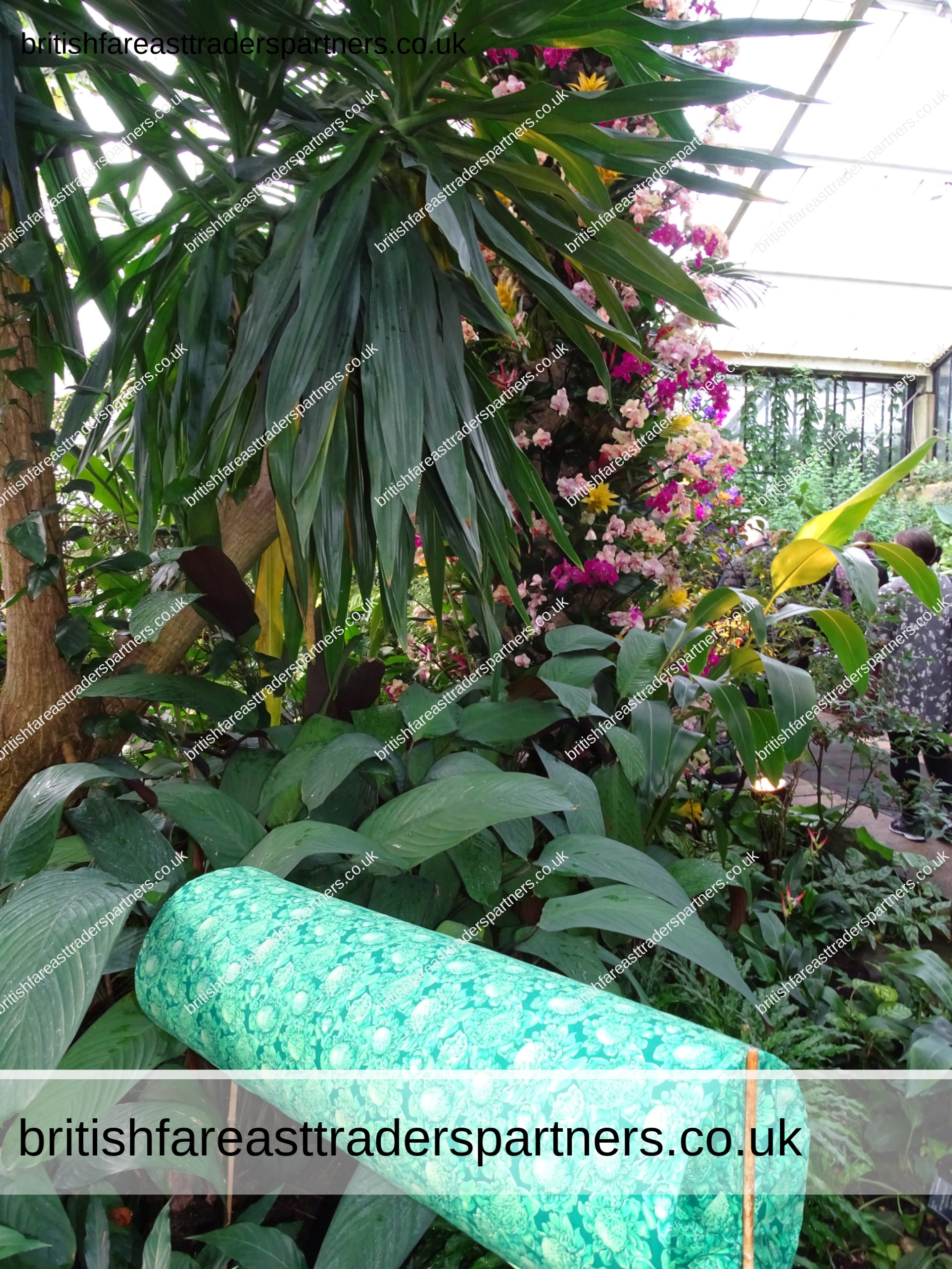
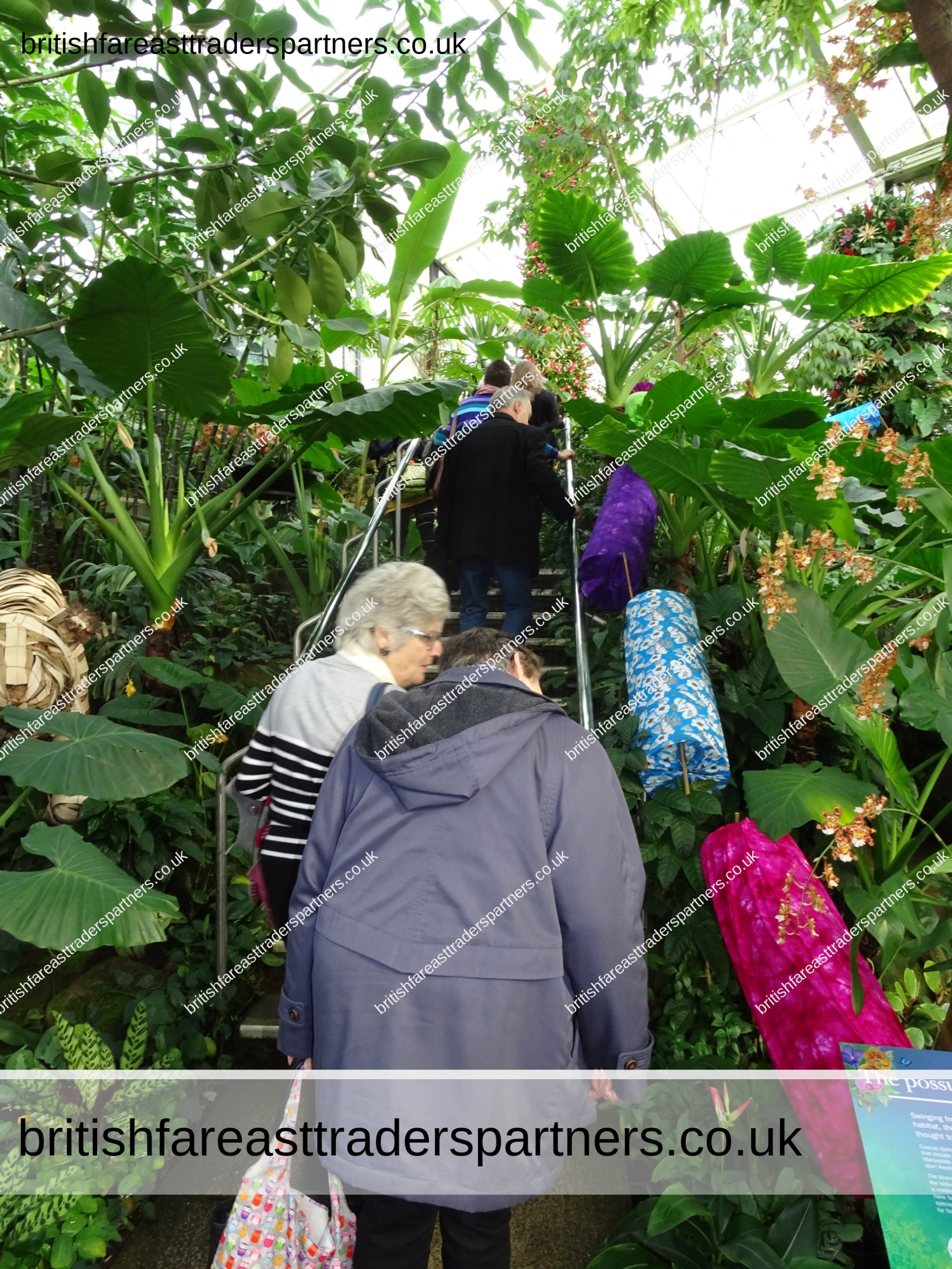
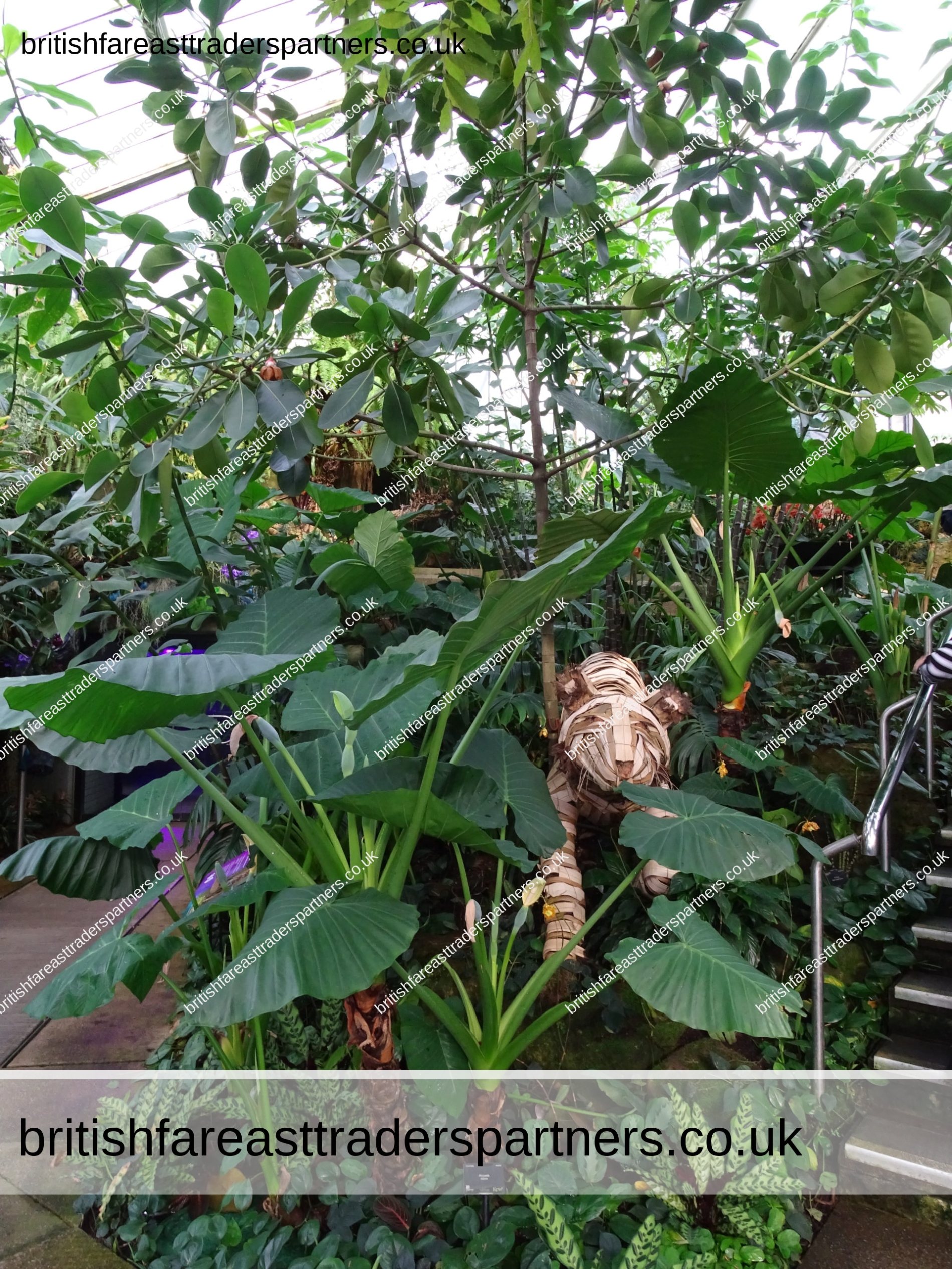
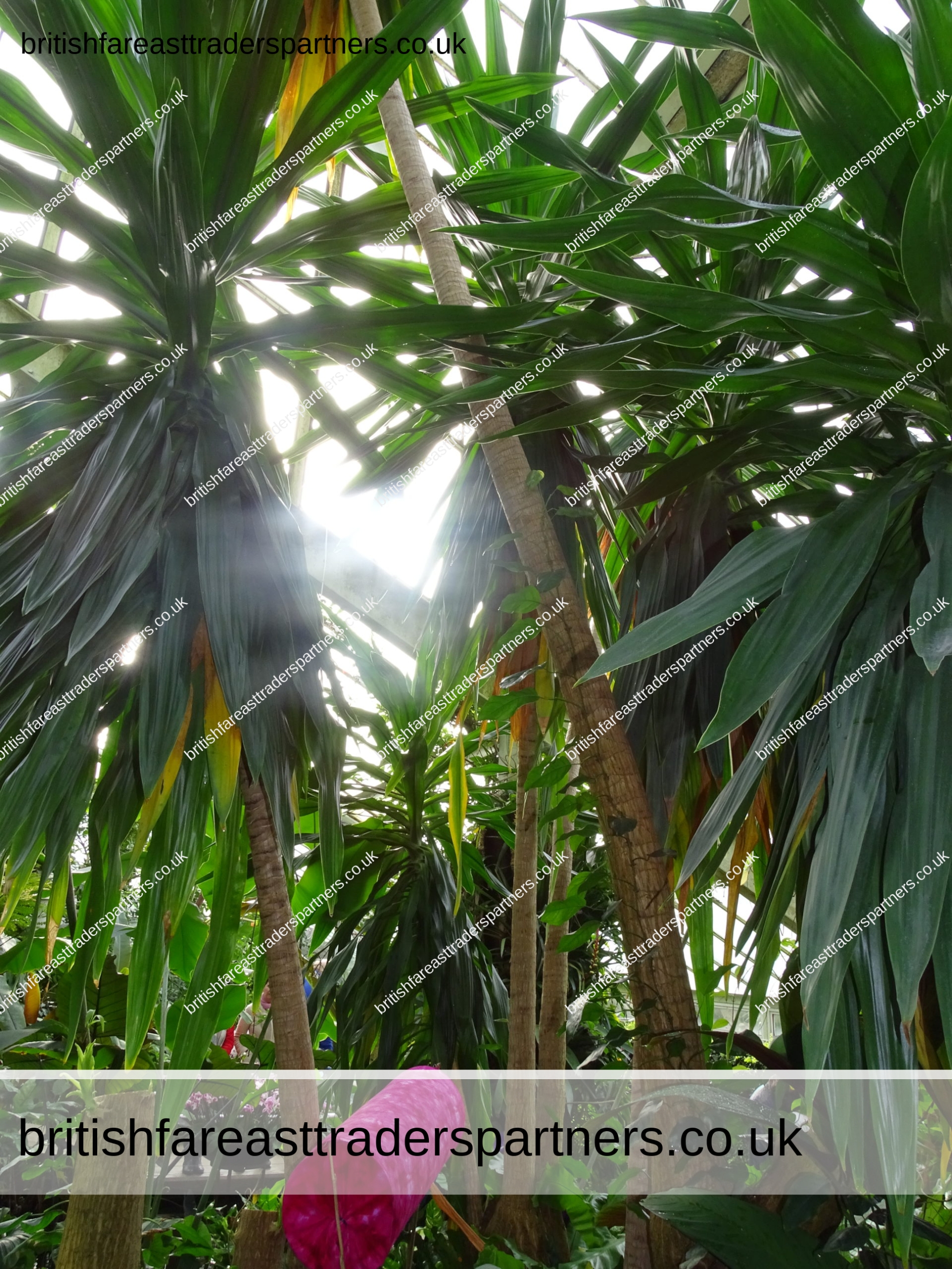
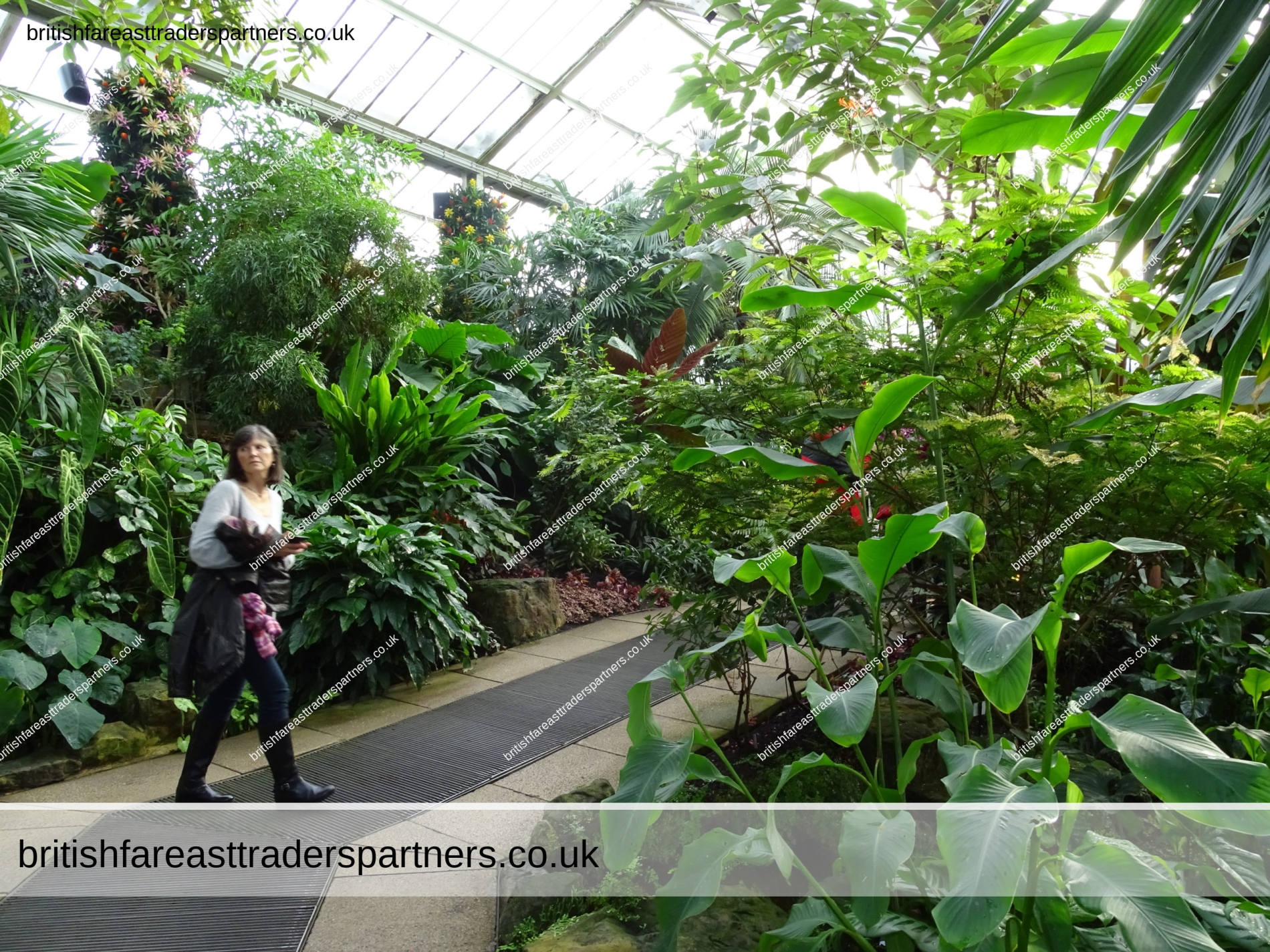
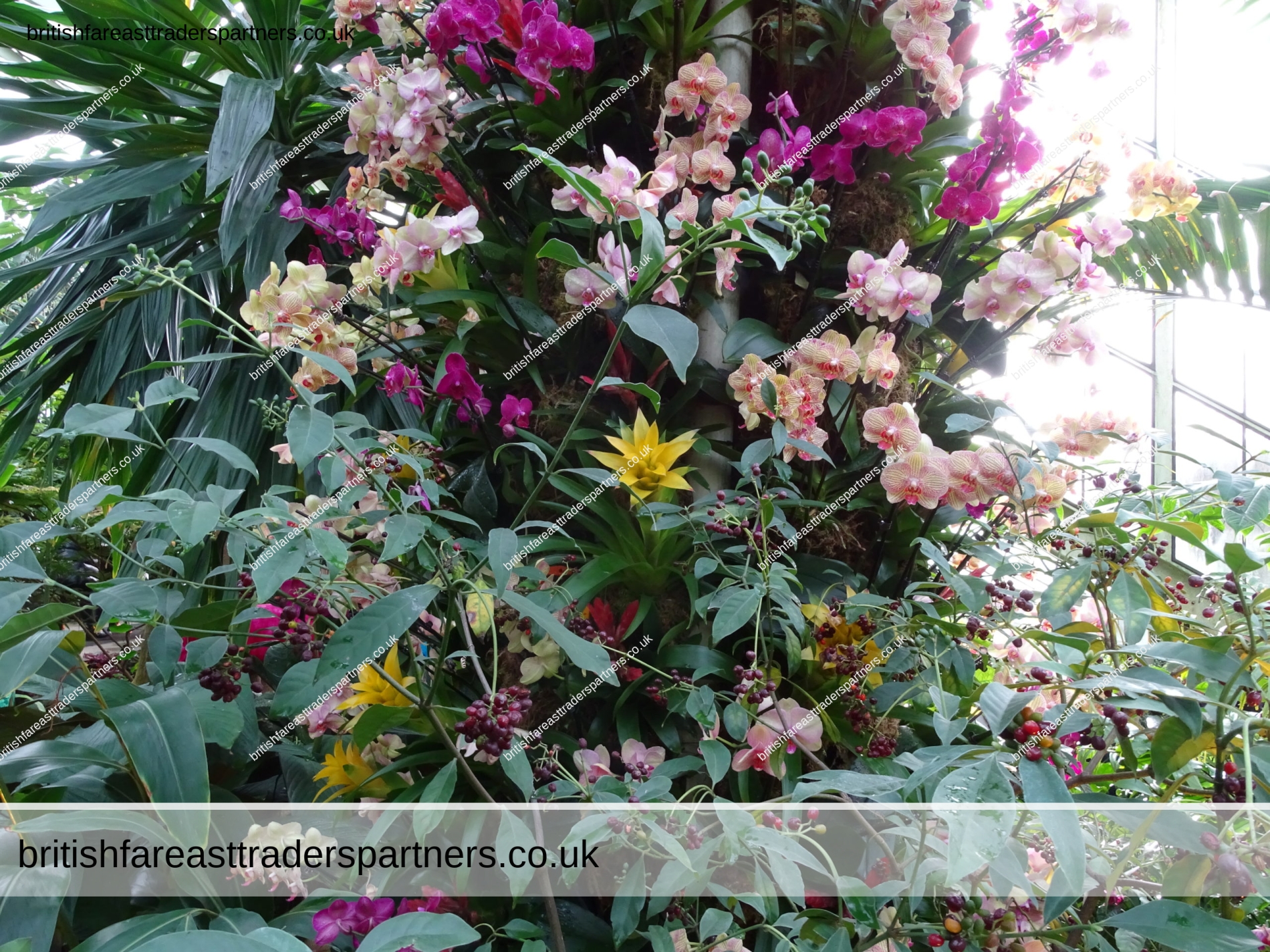
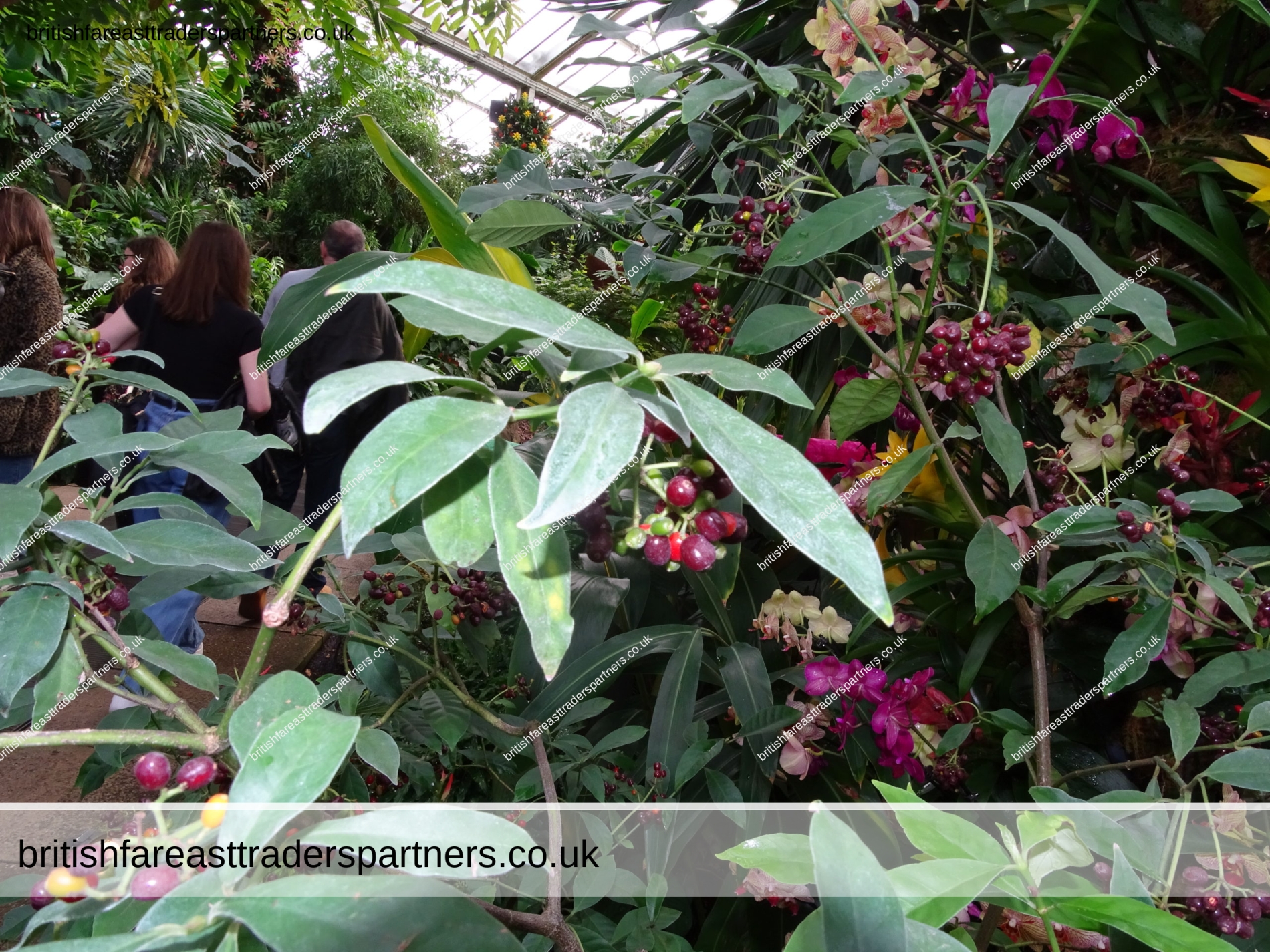
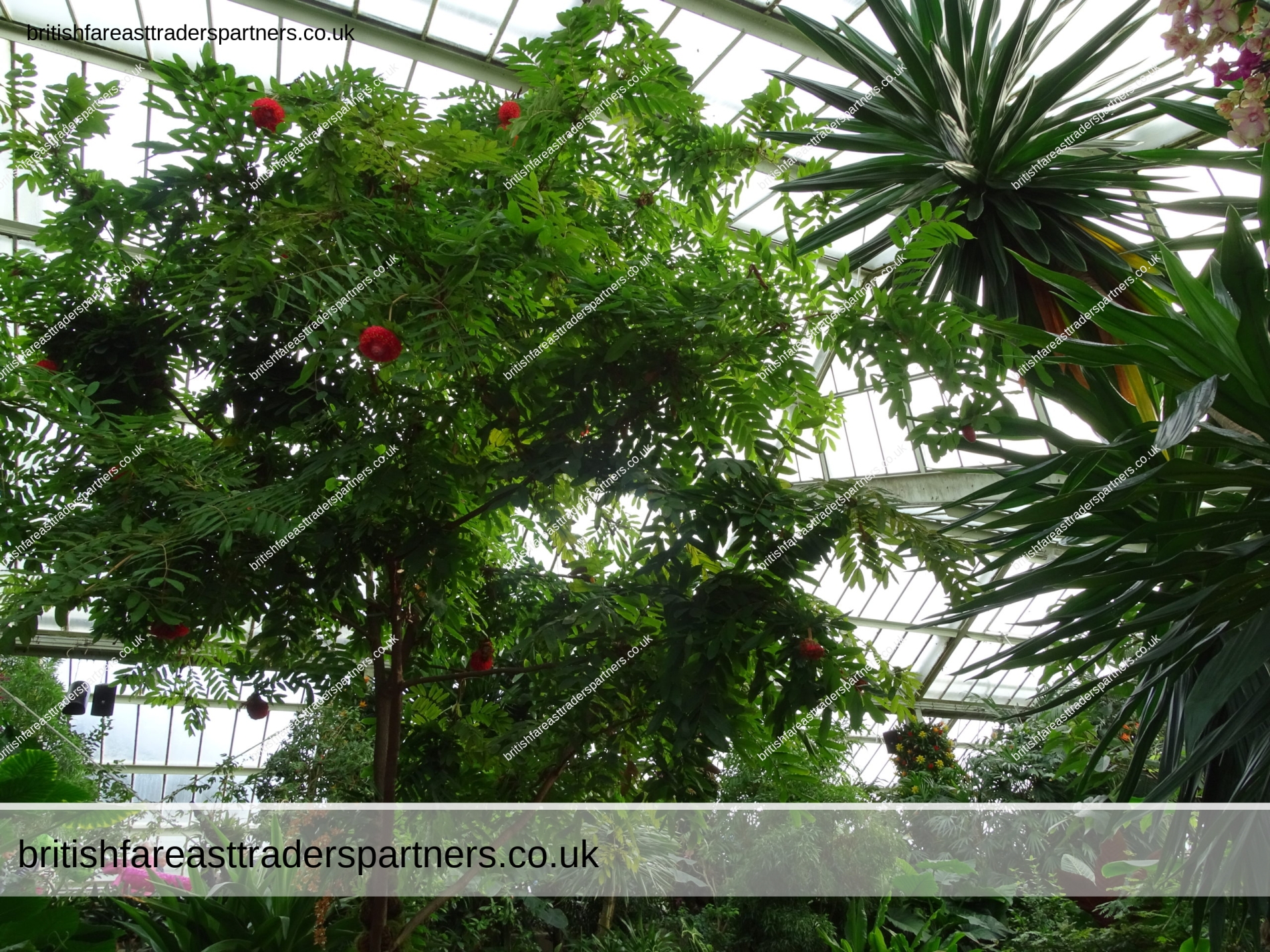
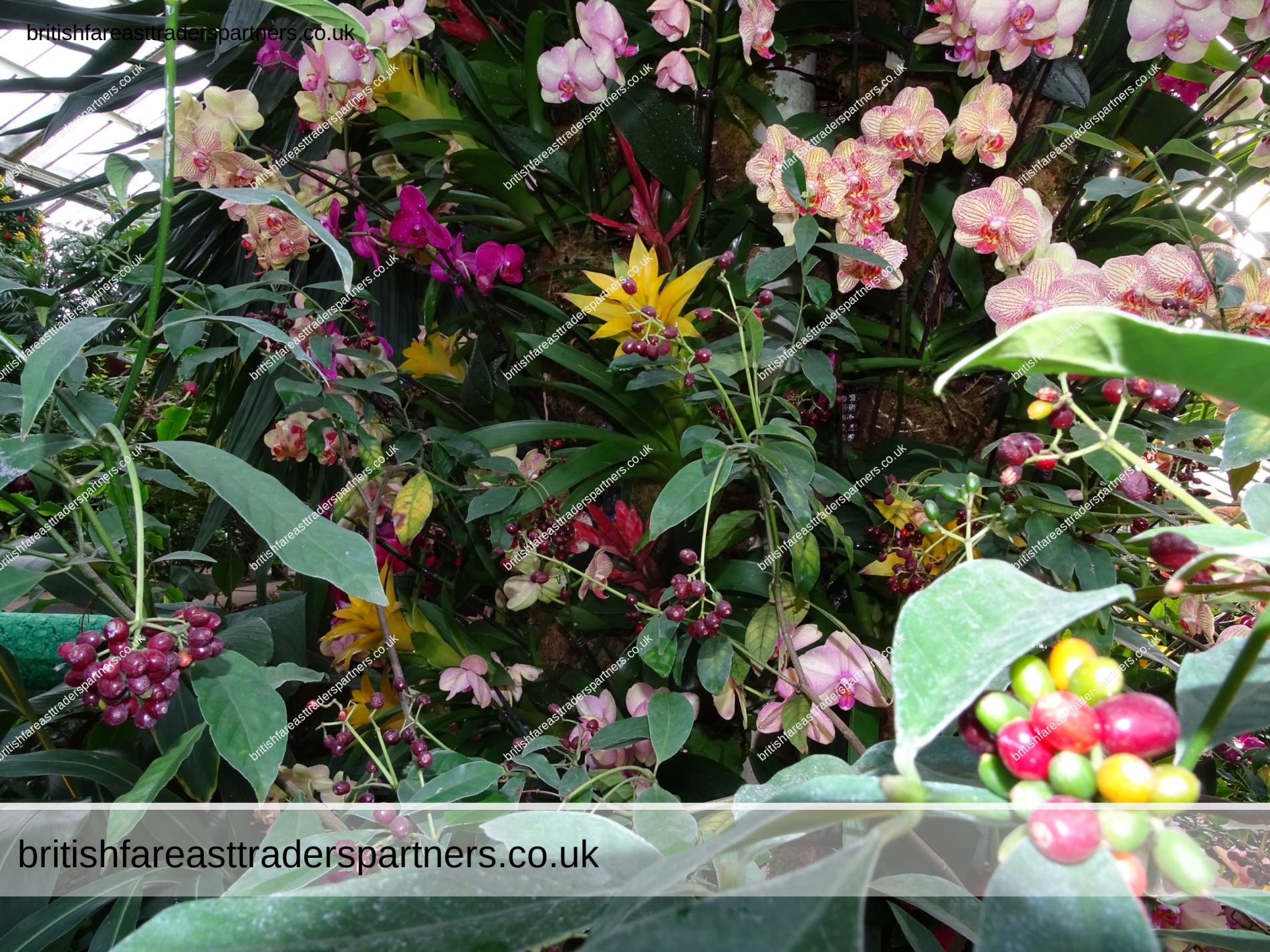
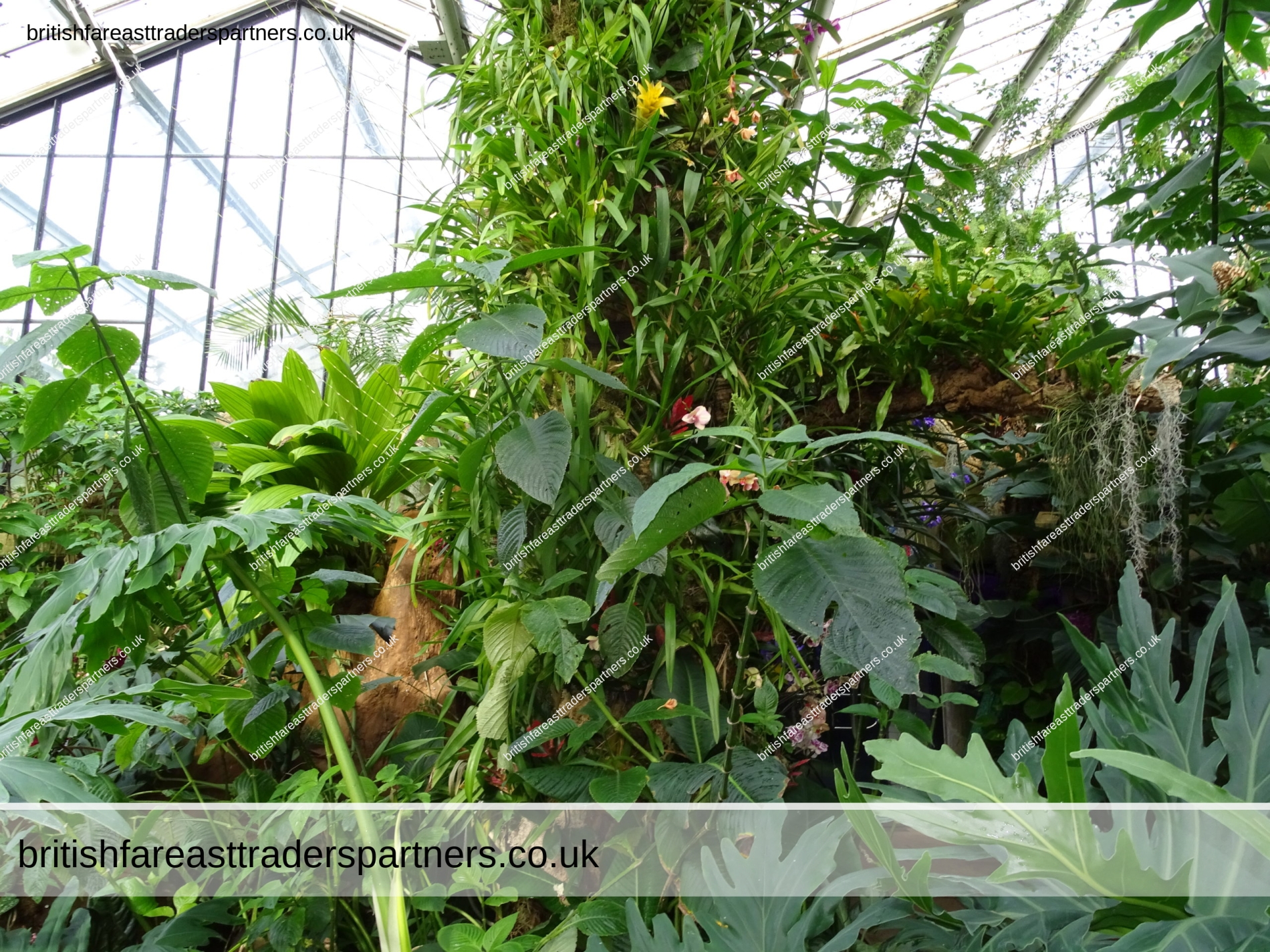
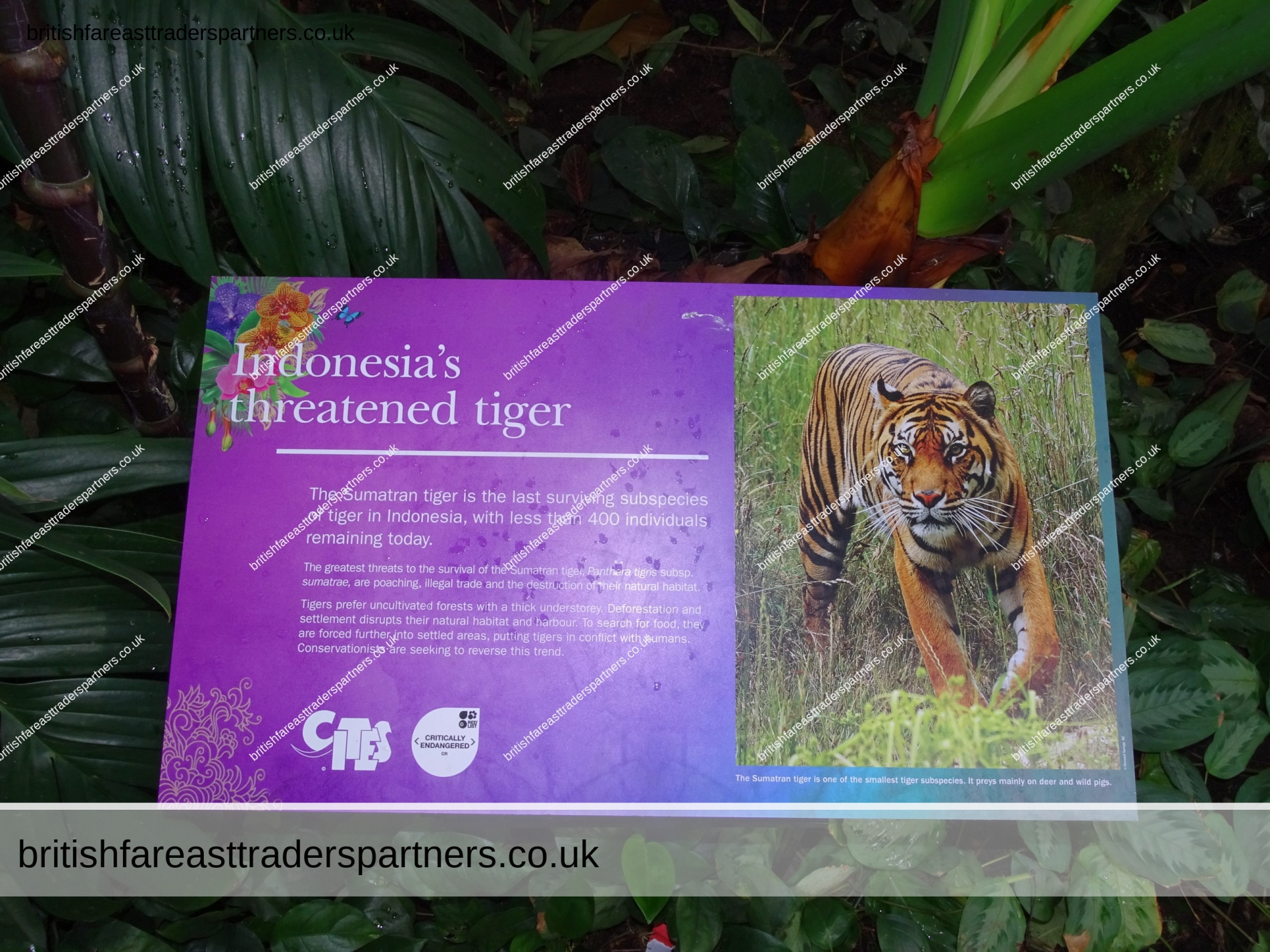
Indonesia’s threatened tiger
The Sumatran tiger is the last surviving tiger in Indonesia,
with less than 400 remaining today.
The greatest threats to the survival of the
Sumatran tiger, Panthera tigris subsp. sumatrae, are poaching,
illegal trade and the destruction of their natural habitat.
Tigers prefer uncultivated forests with a thick understorey.
Deforestation and settlement disrupts their natural habitat and harbour.
To search for food, they are forced further into settled areas,
putting tigers in conflict with humans.
Conservationists are seeking to reverse this trend.
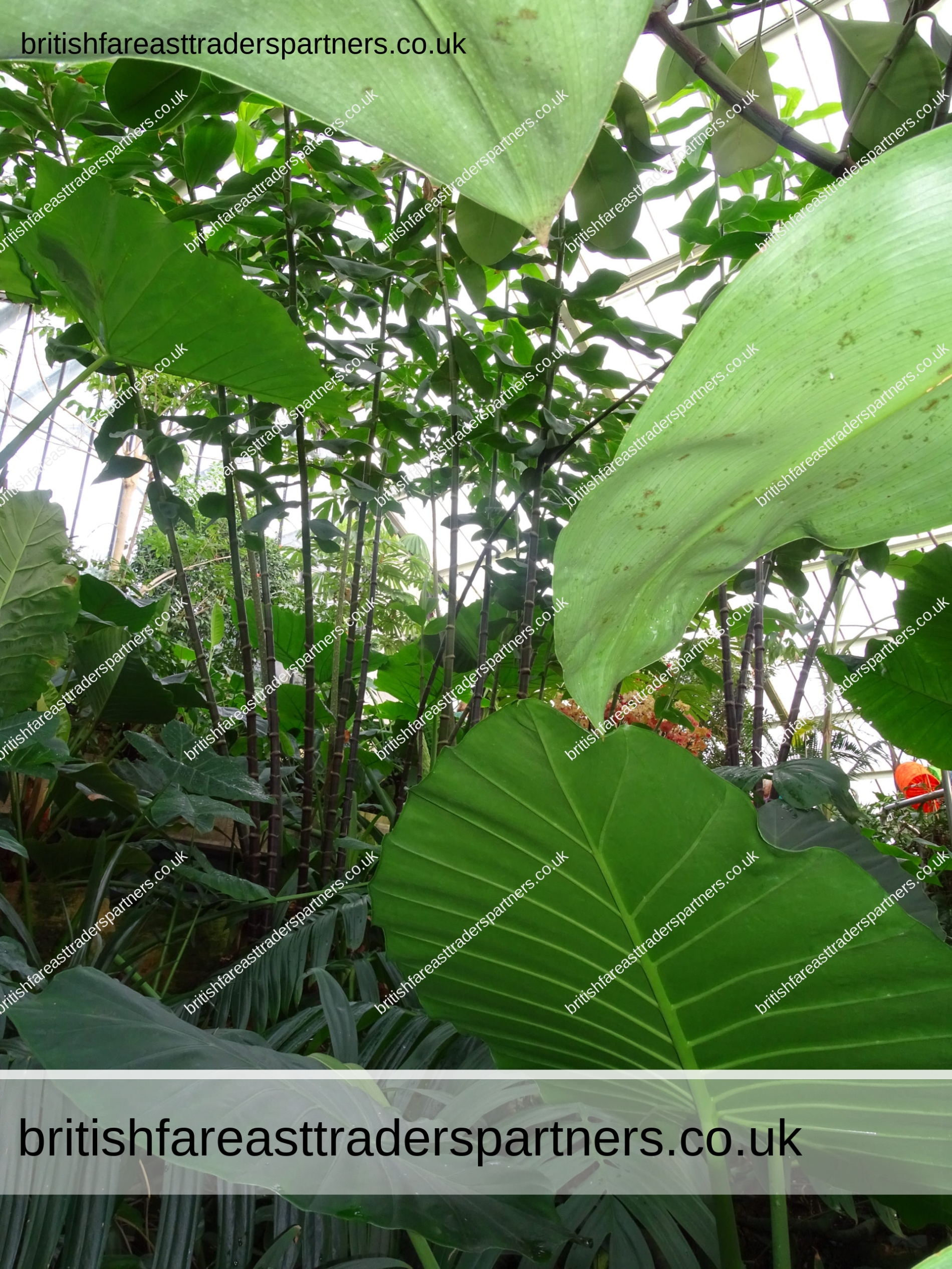
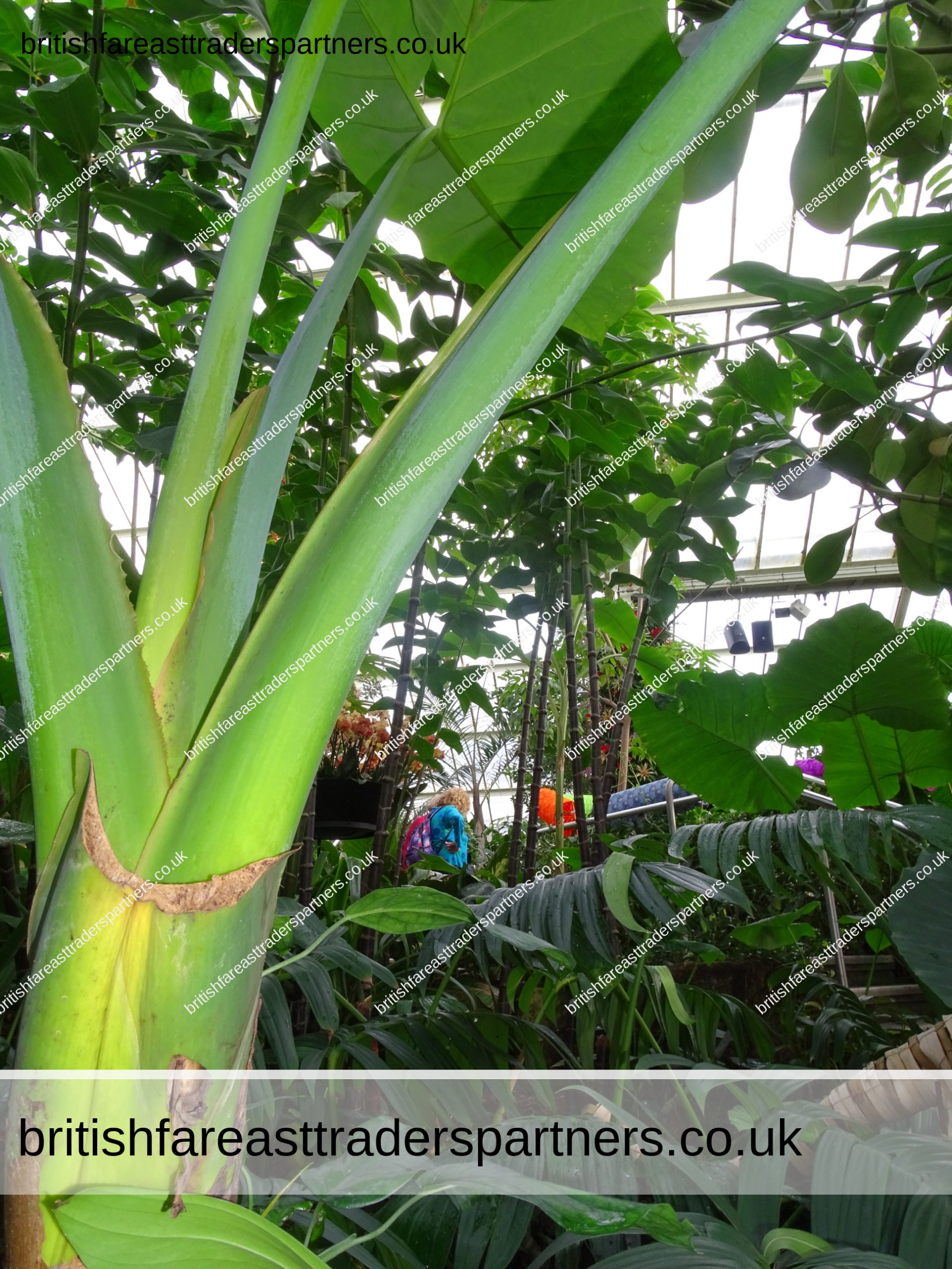
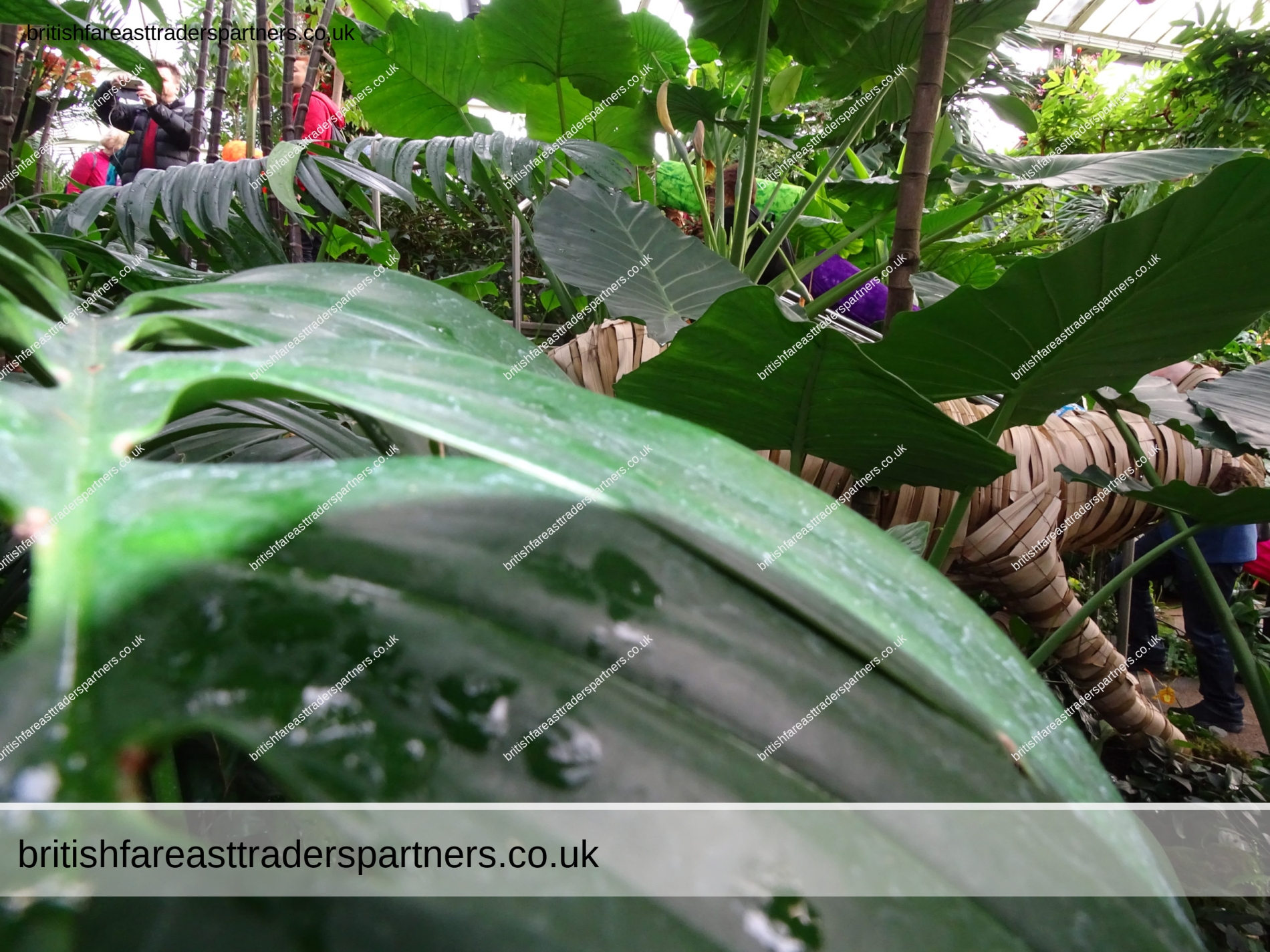
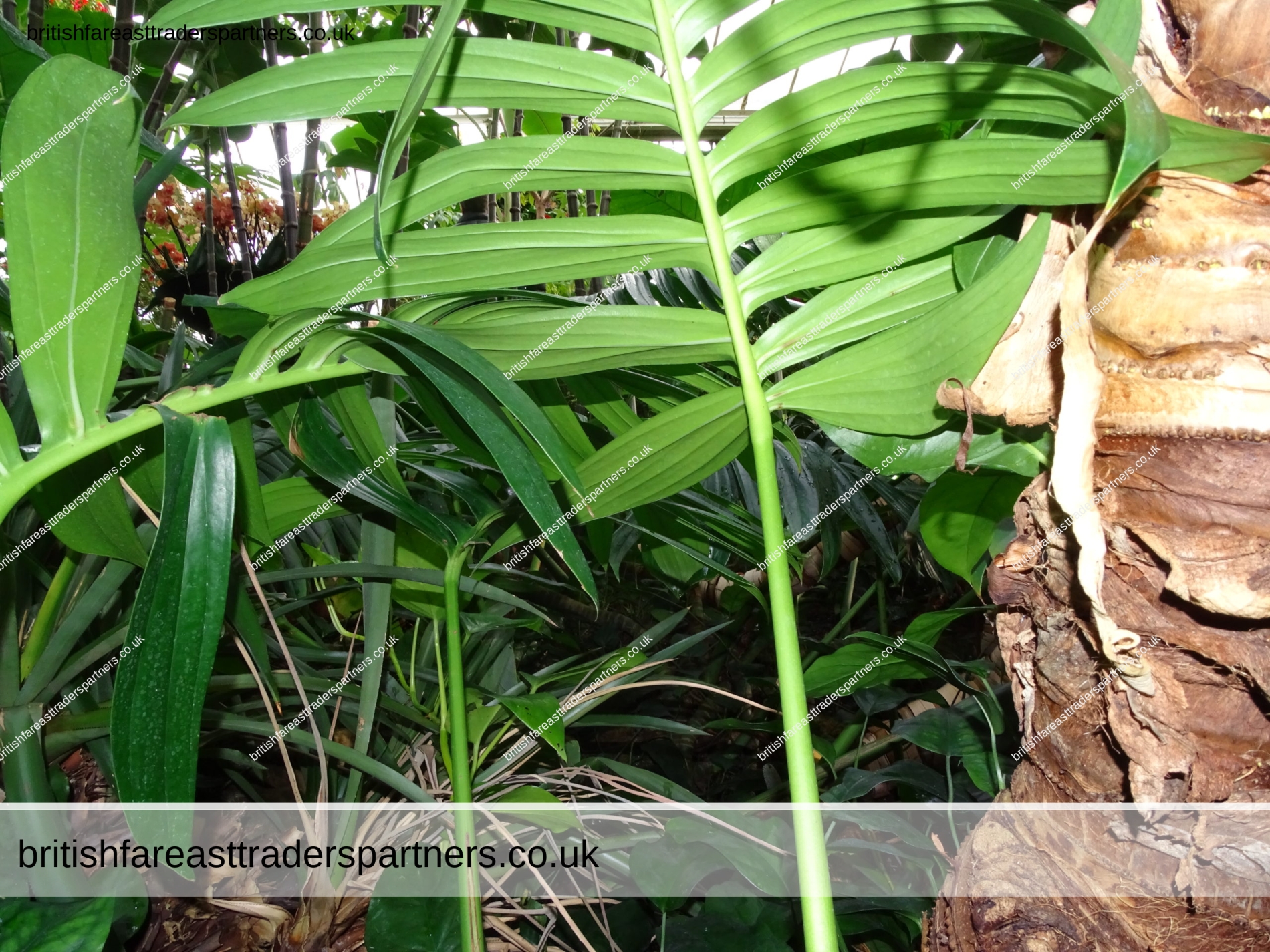
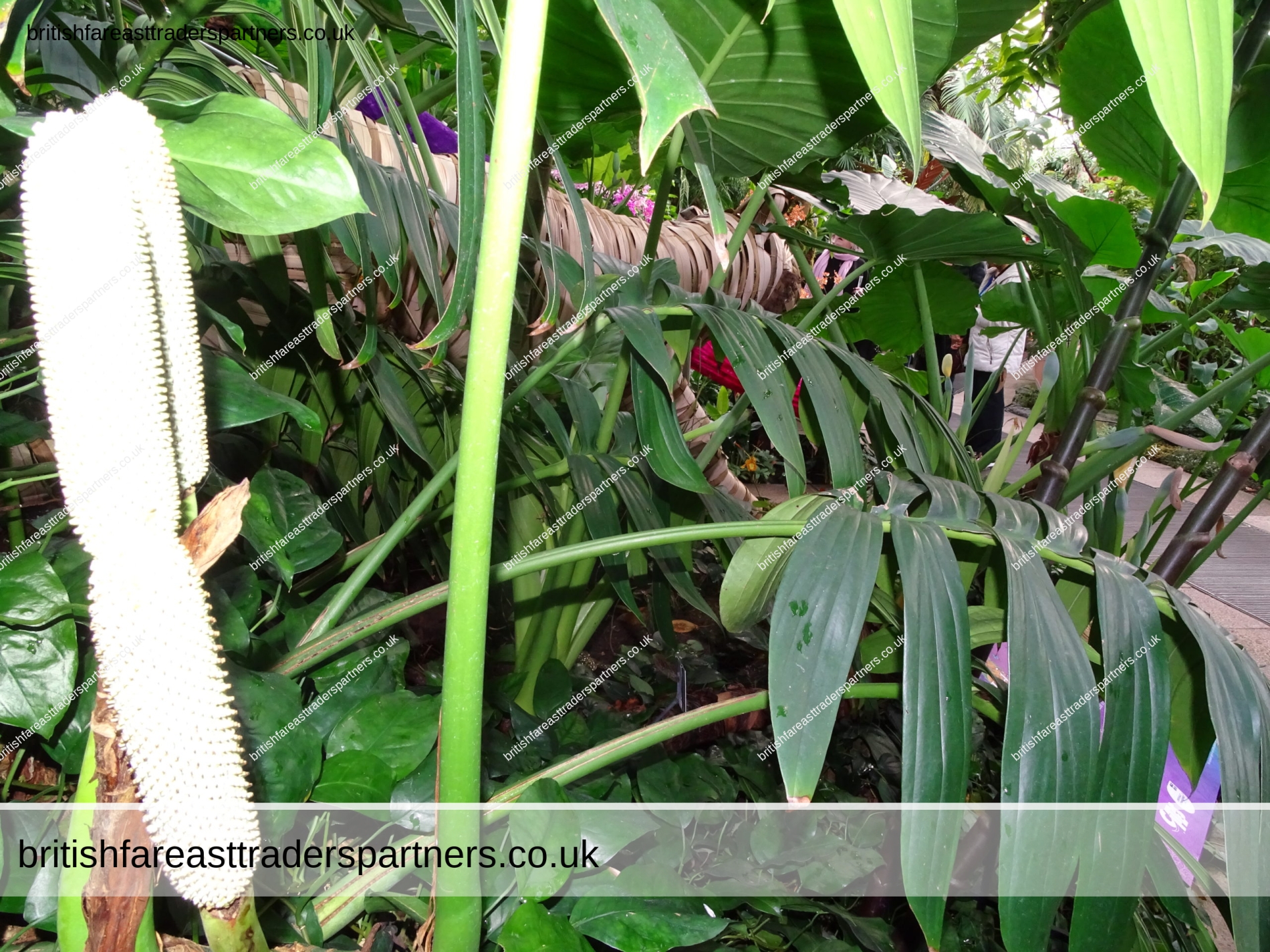
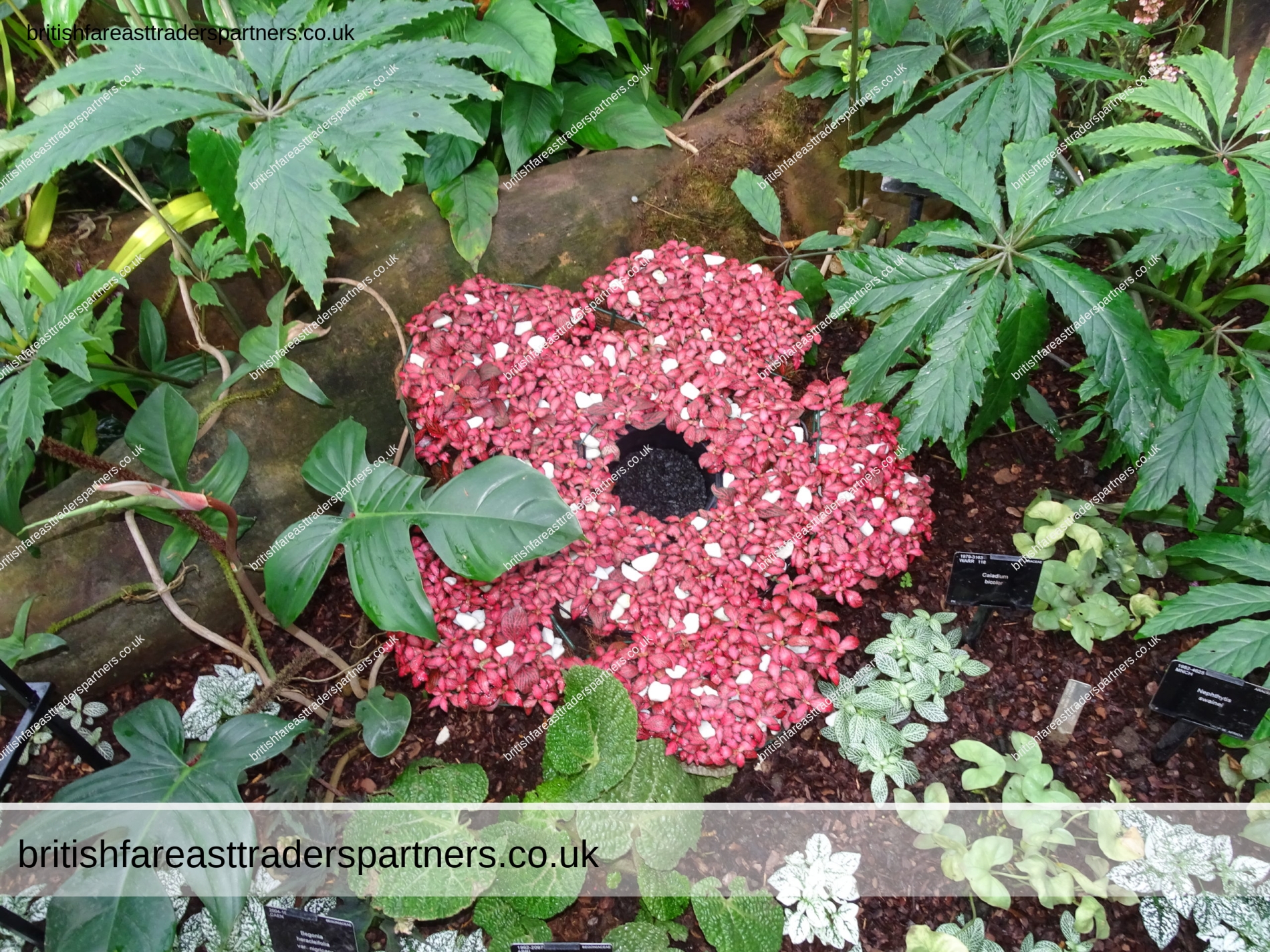
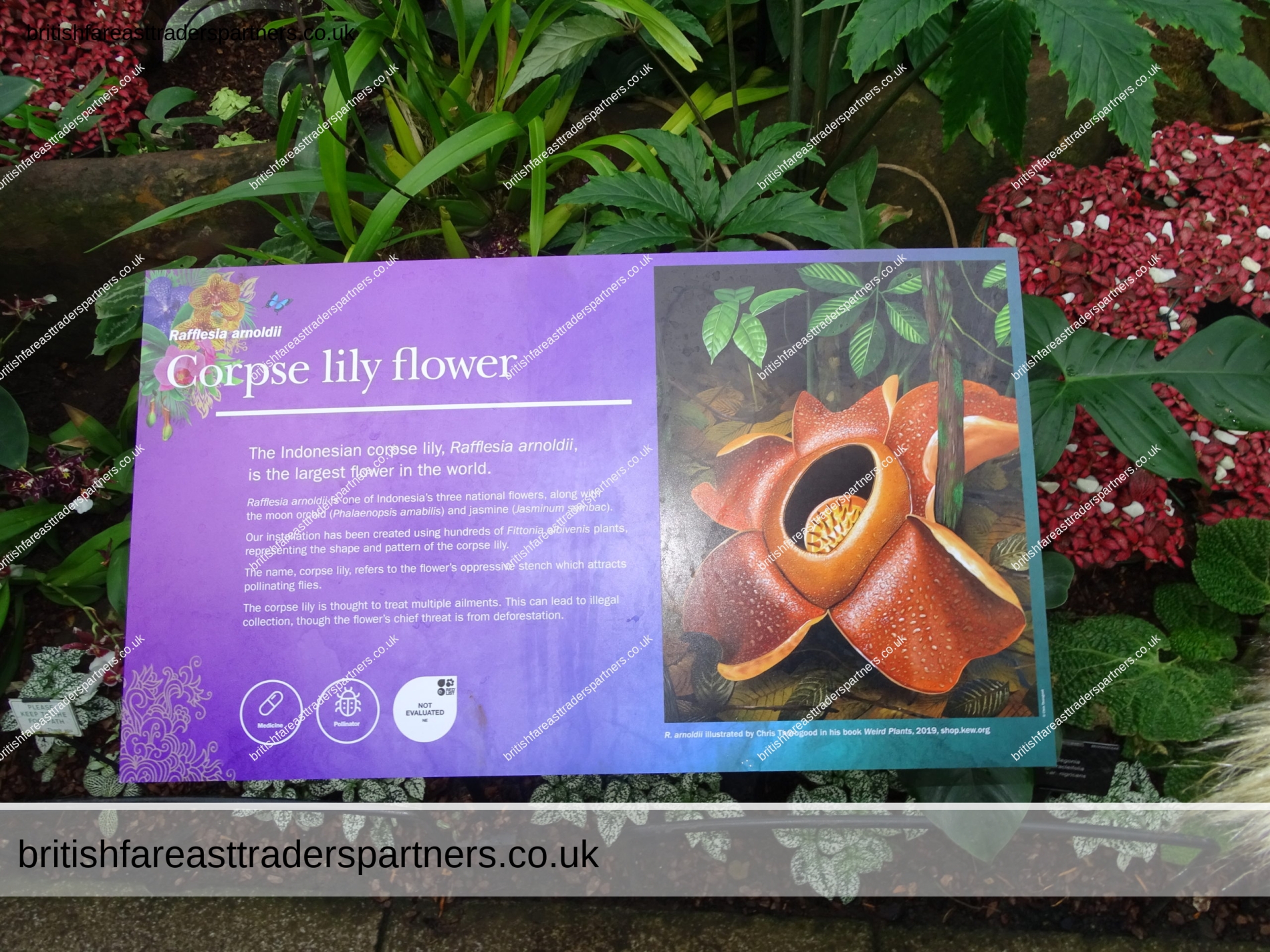
Corpse lily flower
The Indonesian corpse lily, Rafflesia arnoldii, is the largest in the world.
Rafflesia arnoldii is one of Indonesia’s three national flowers,
along with the moon orchid (Phalaenopsis amabilis) and jasmine.
Our installation has been created using hundreds of Fittonia sibivenis plants,
representing the shape and pattern of the corpse lily.
The name, corpse lily, refers to the flower’s oppressive stench which attracts
pollinating flies.
The corpse lily is thought to treat multiple ailments.
This can lead to illegal collection,
though the flower’s chief threat is from deforestation.
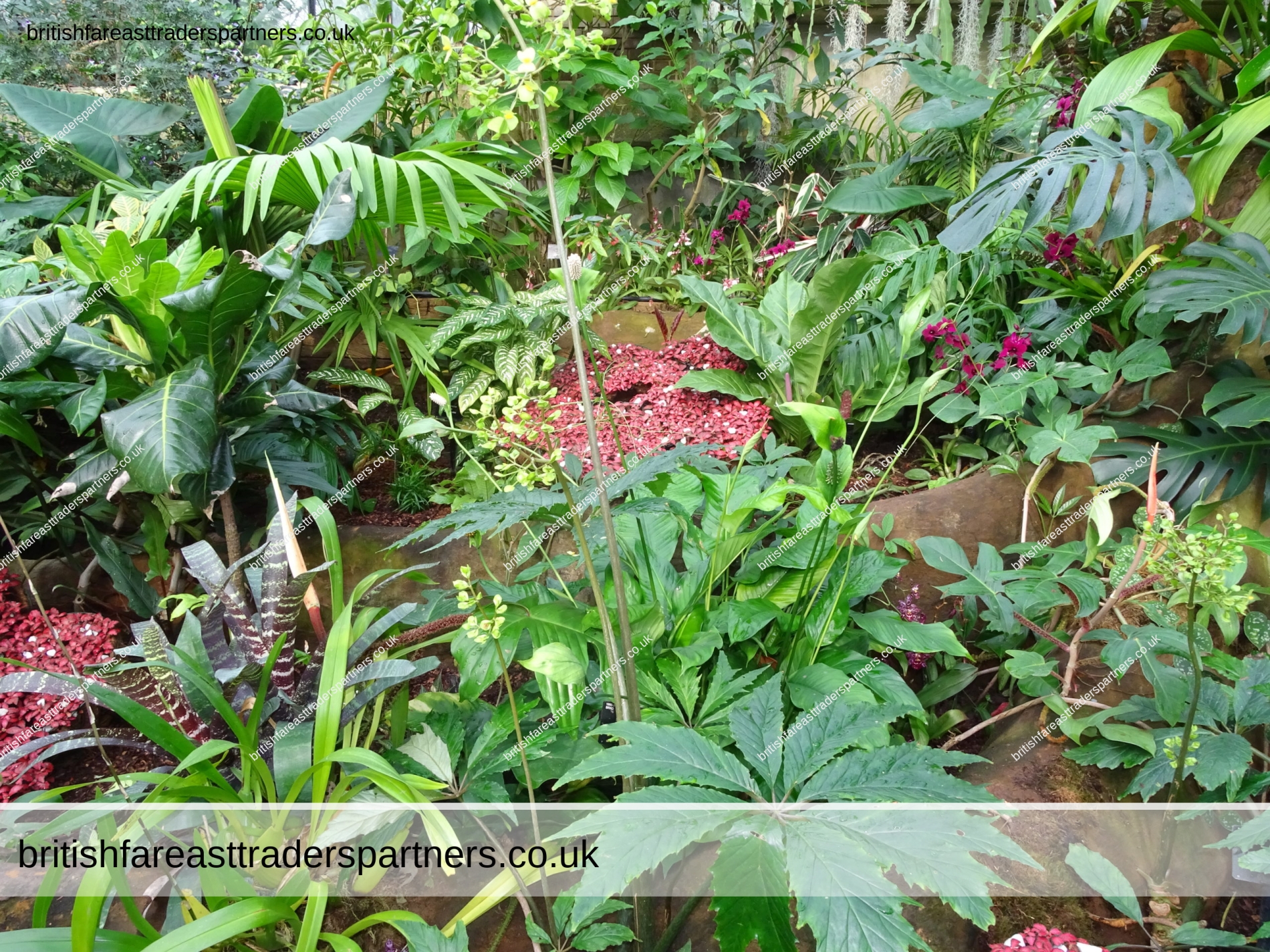
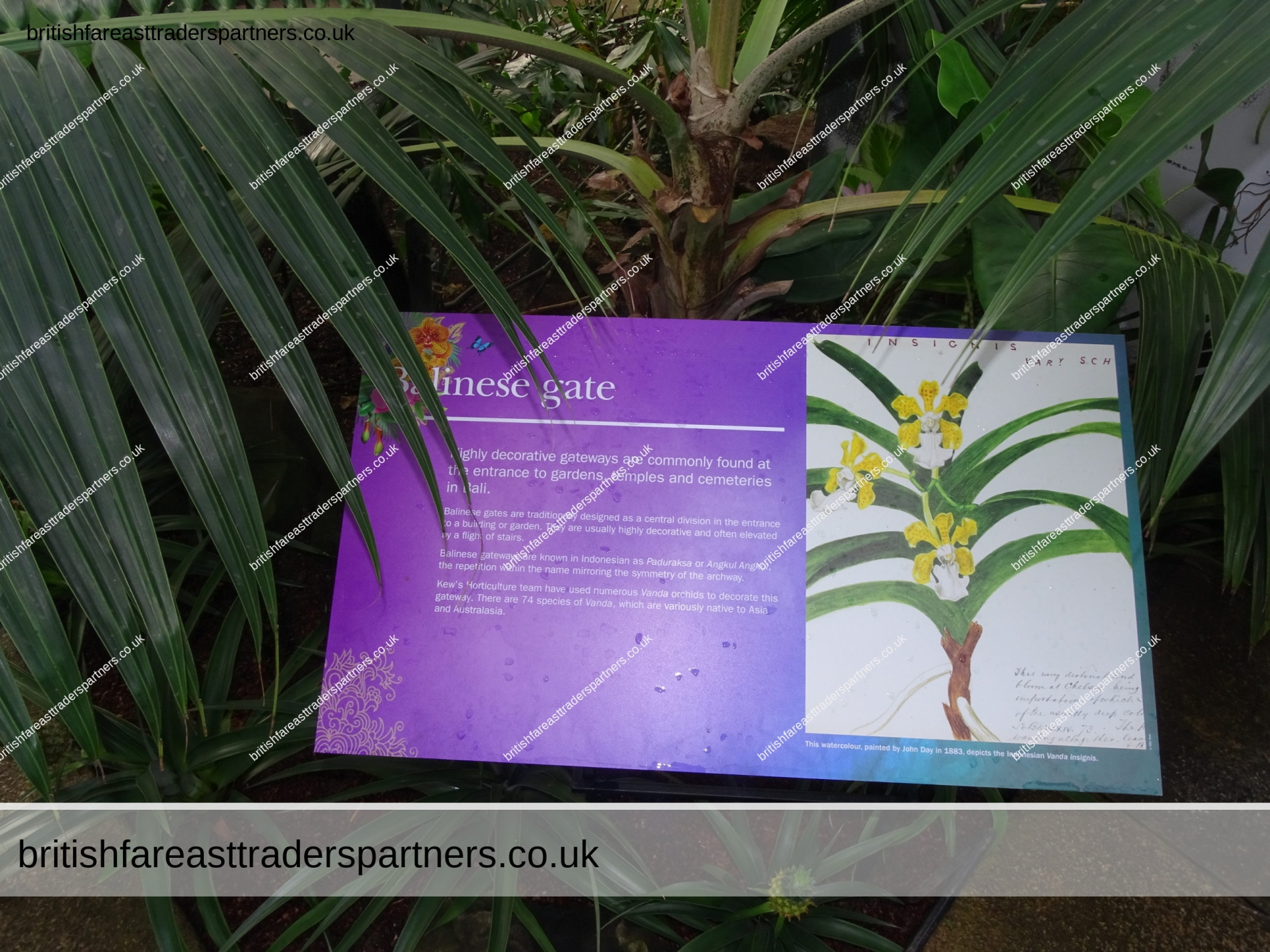
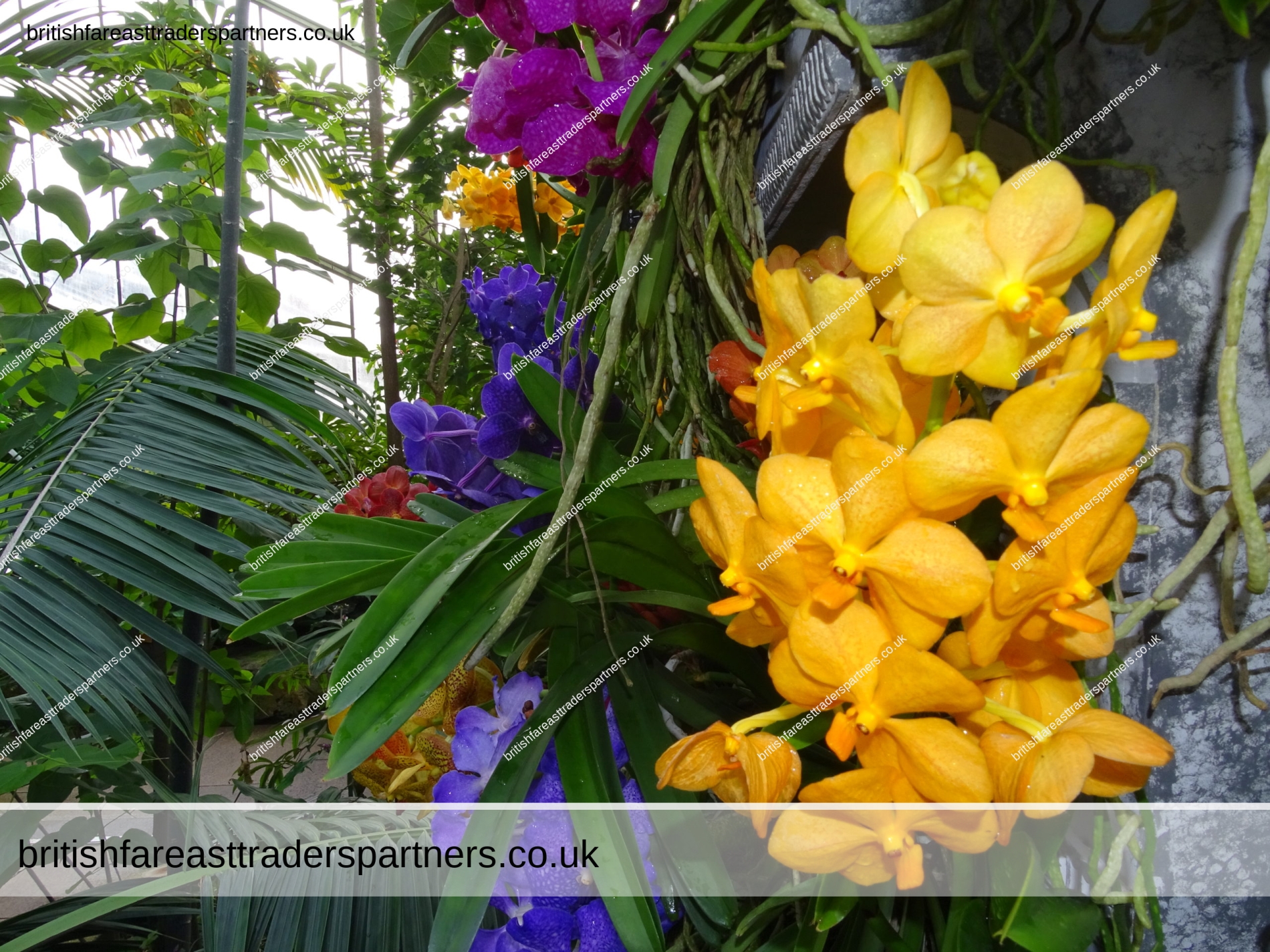
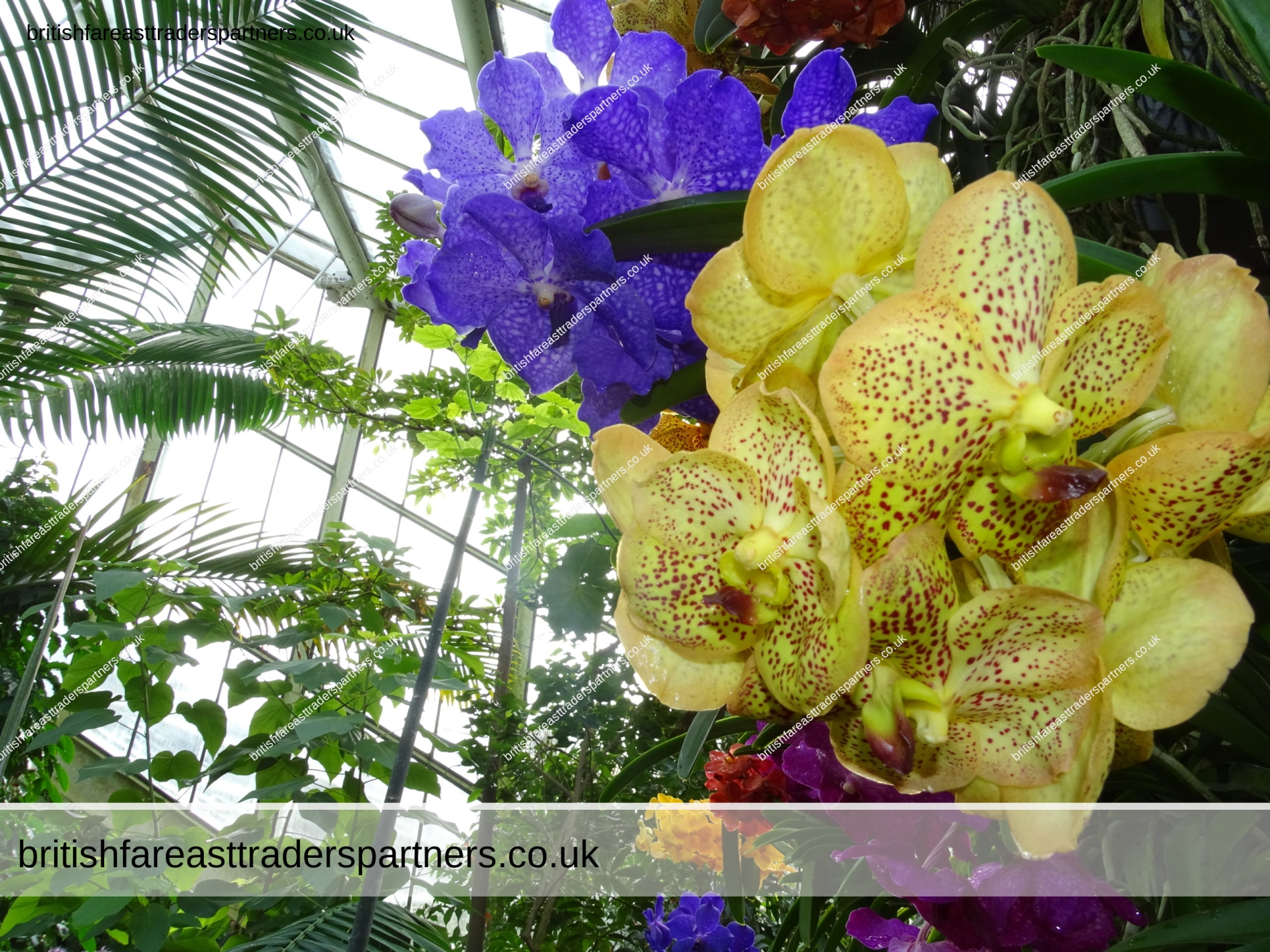
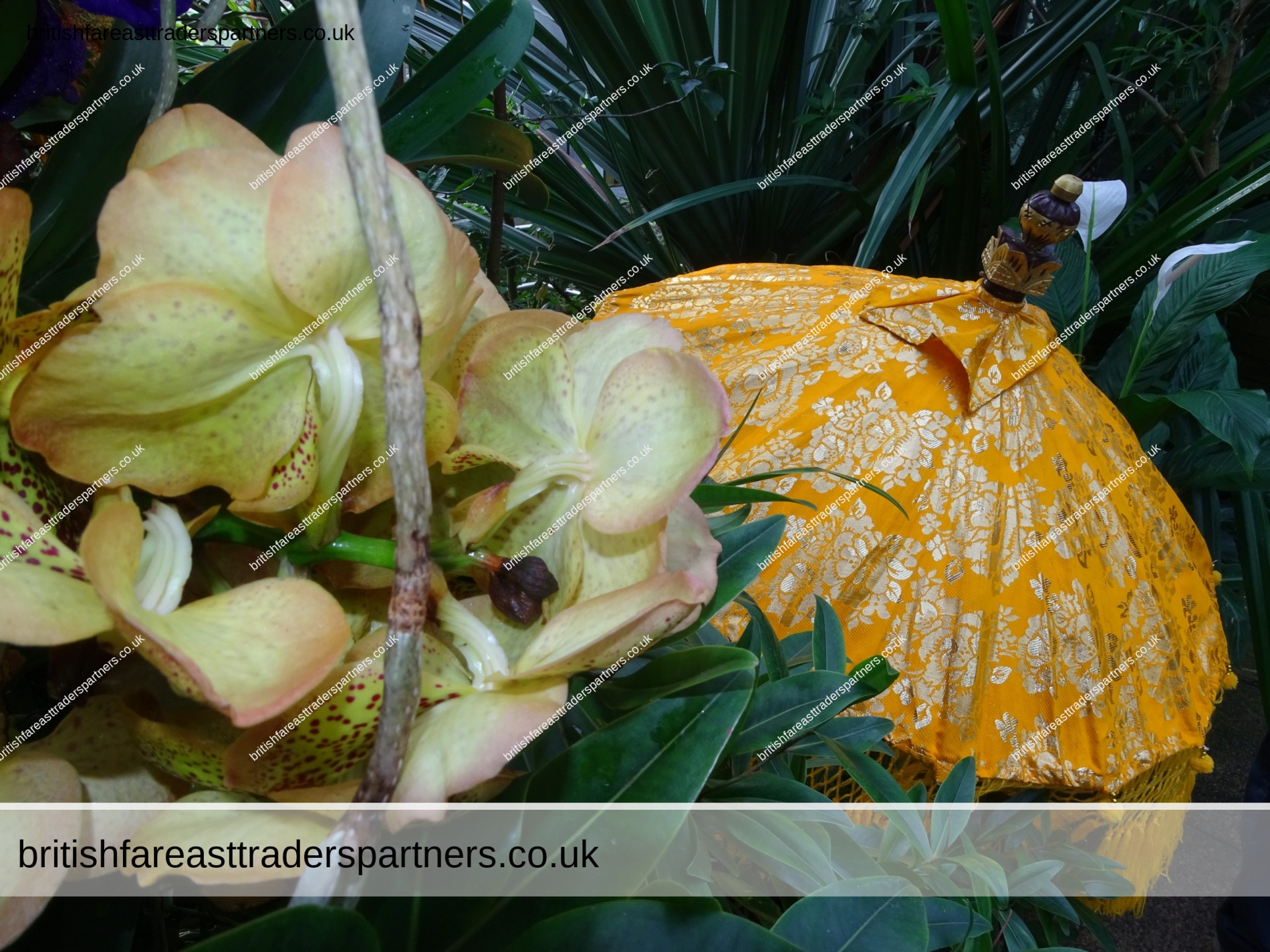
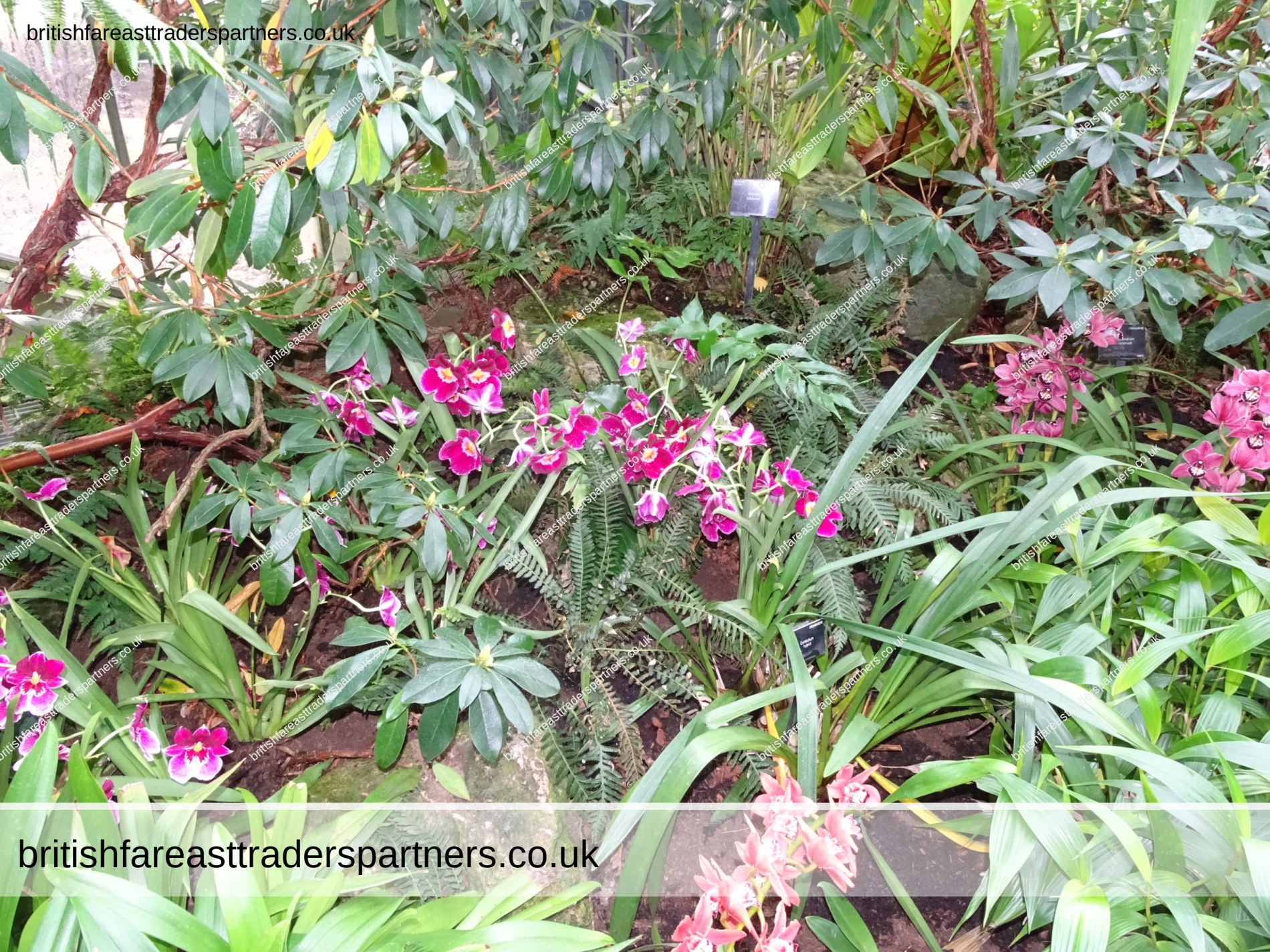
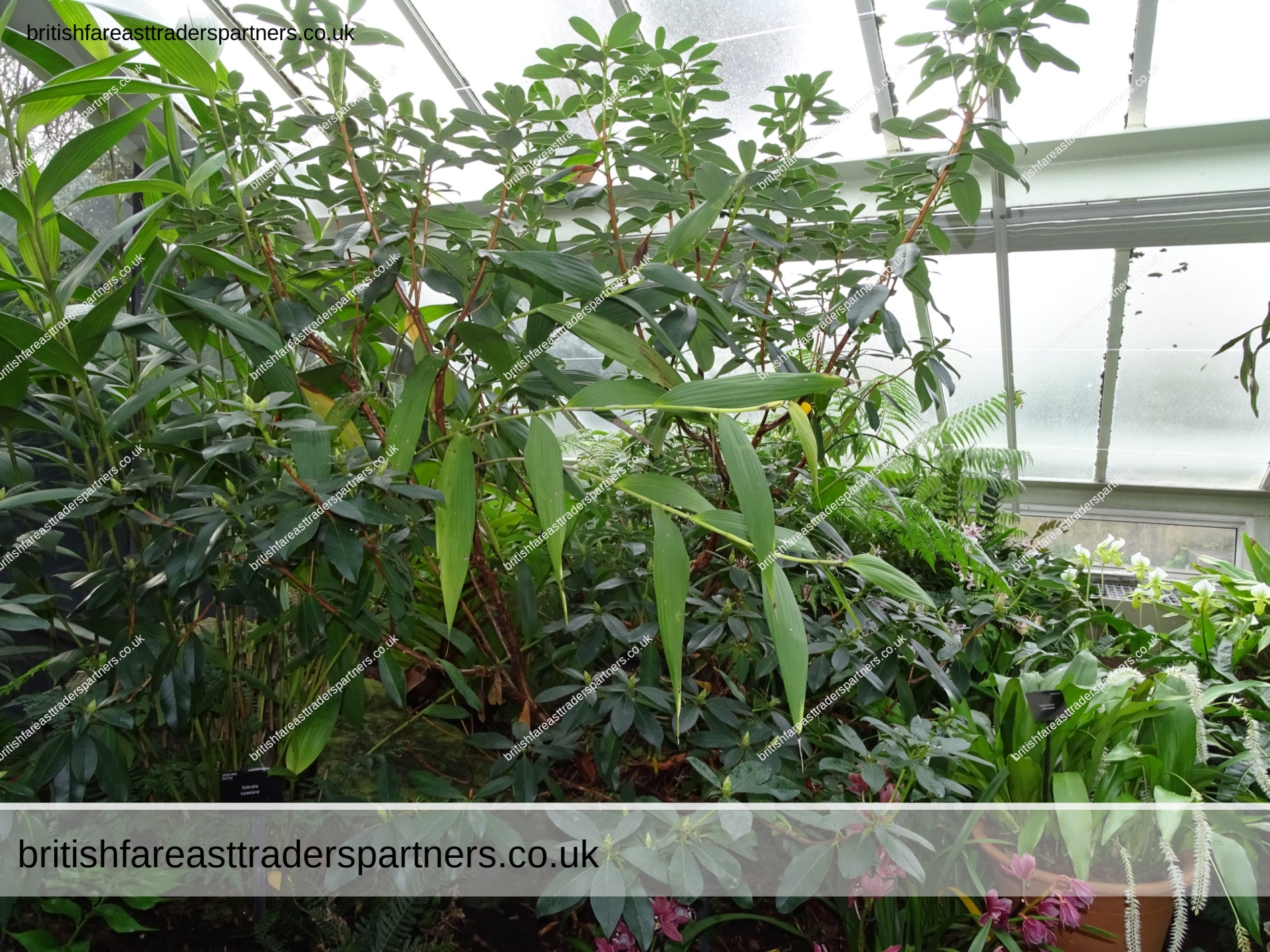
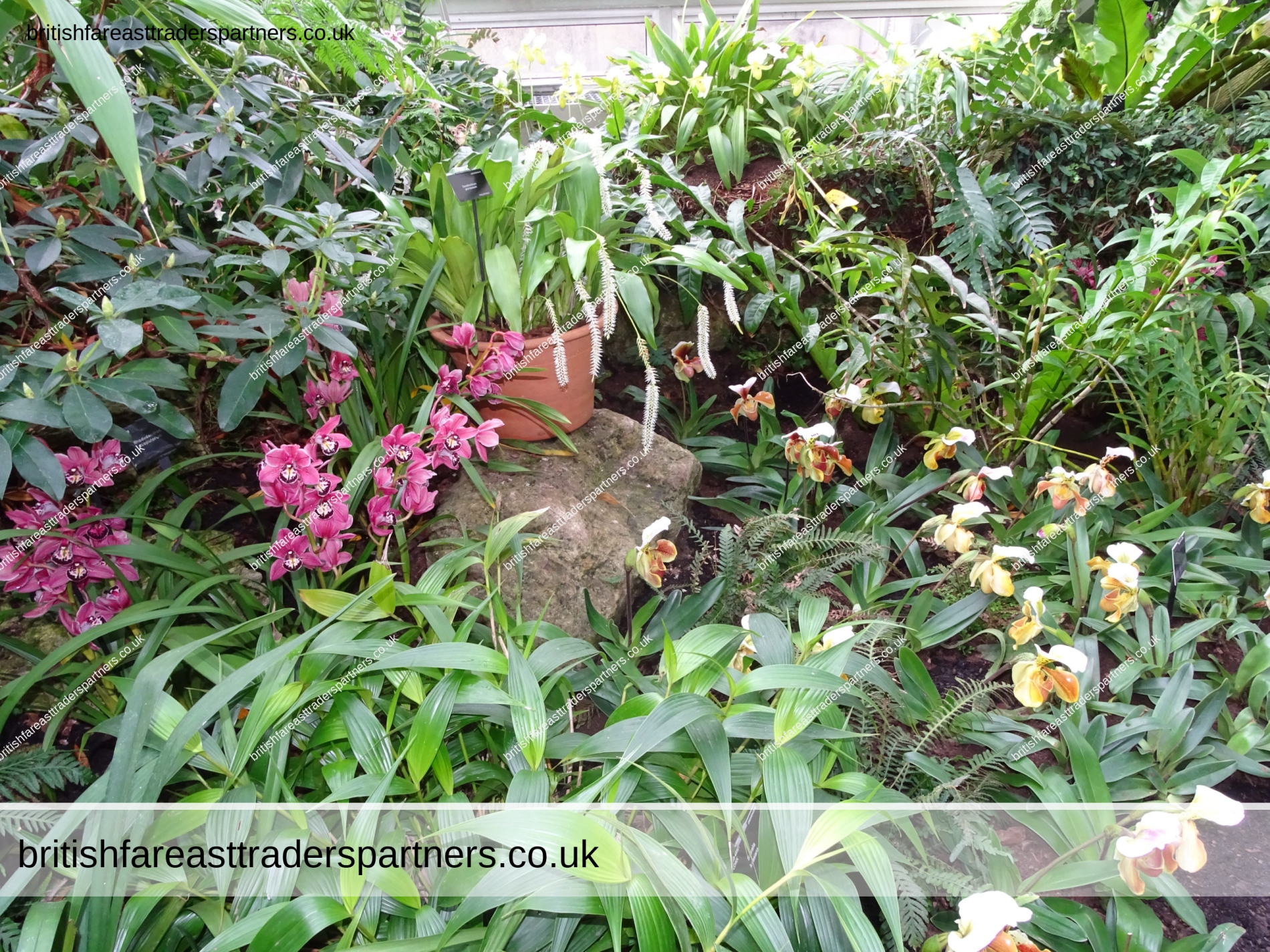
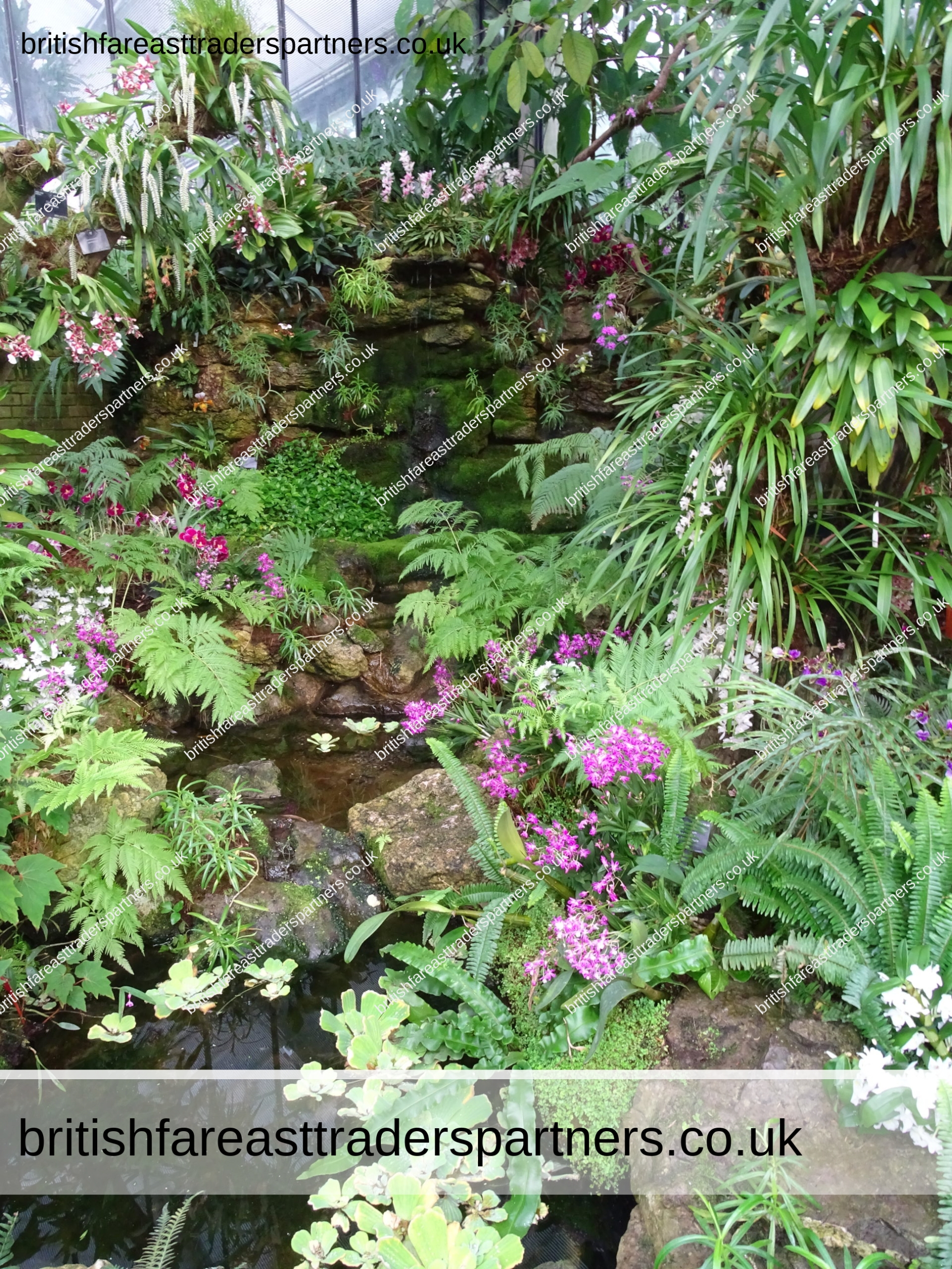
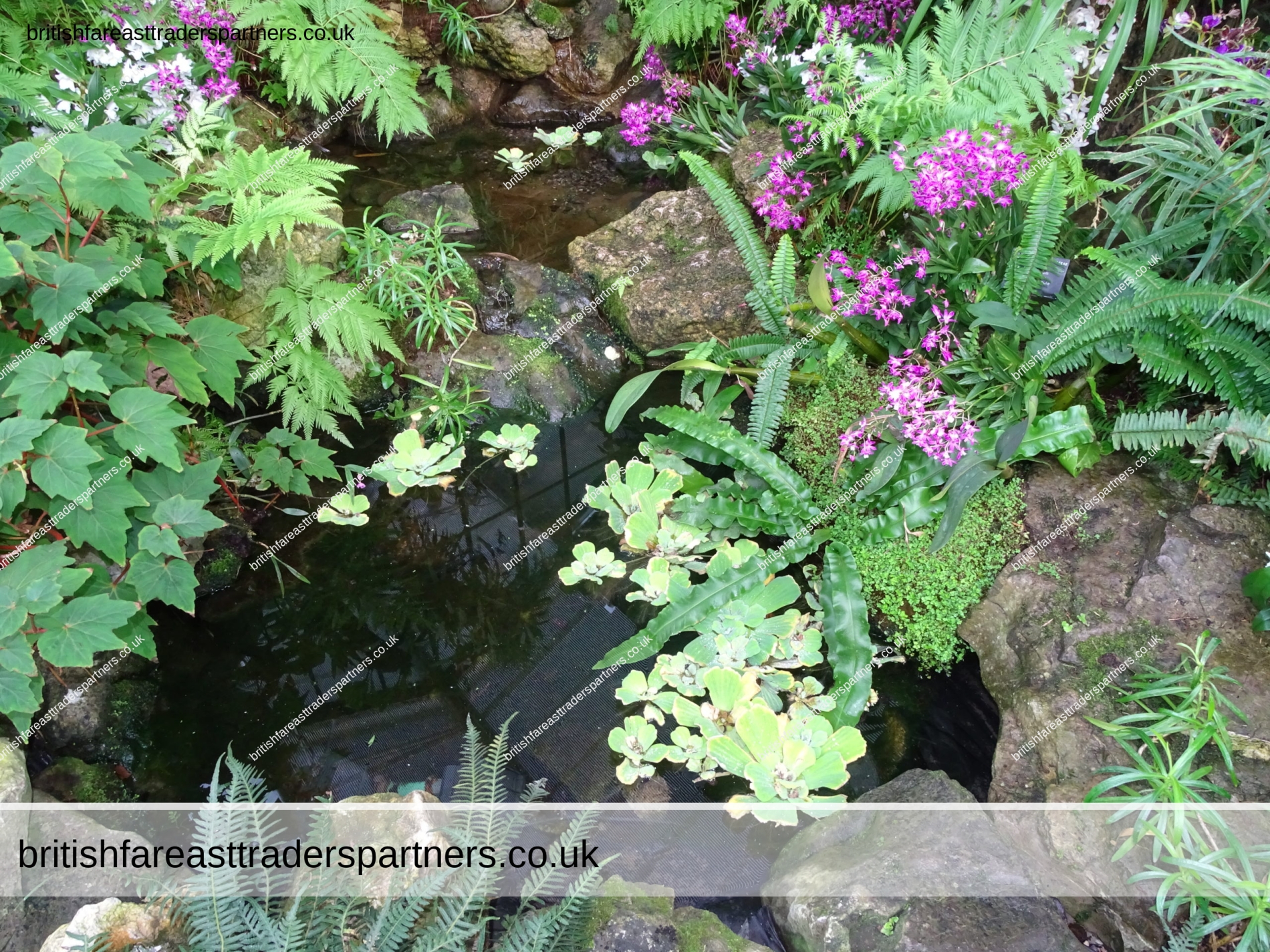
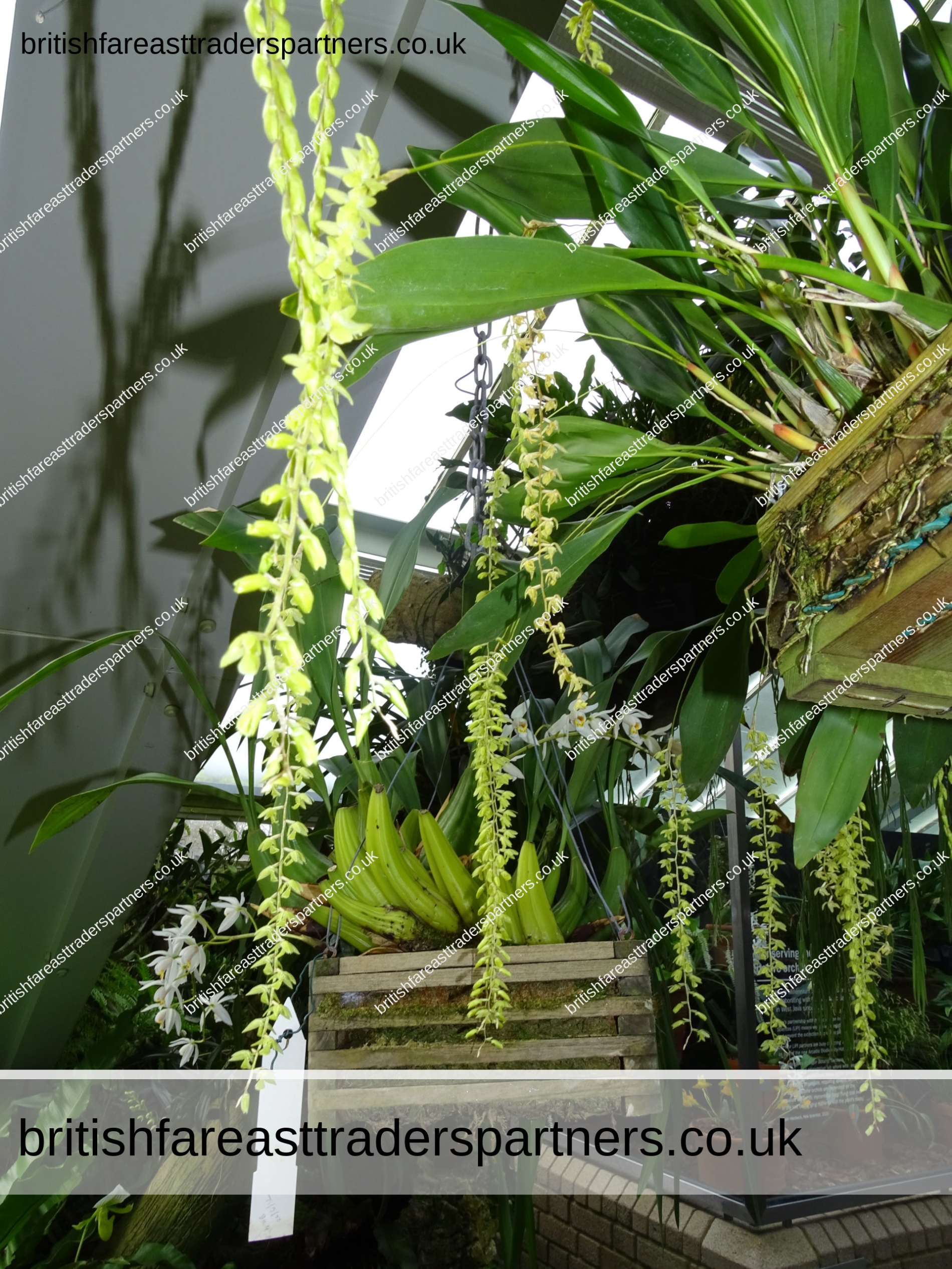
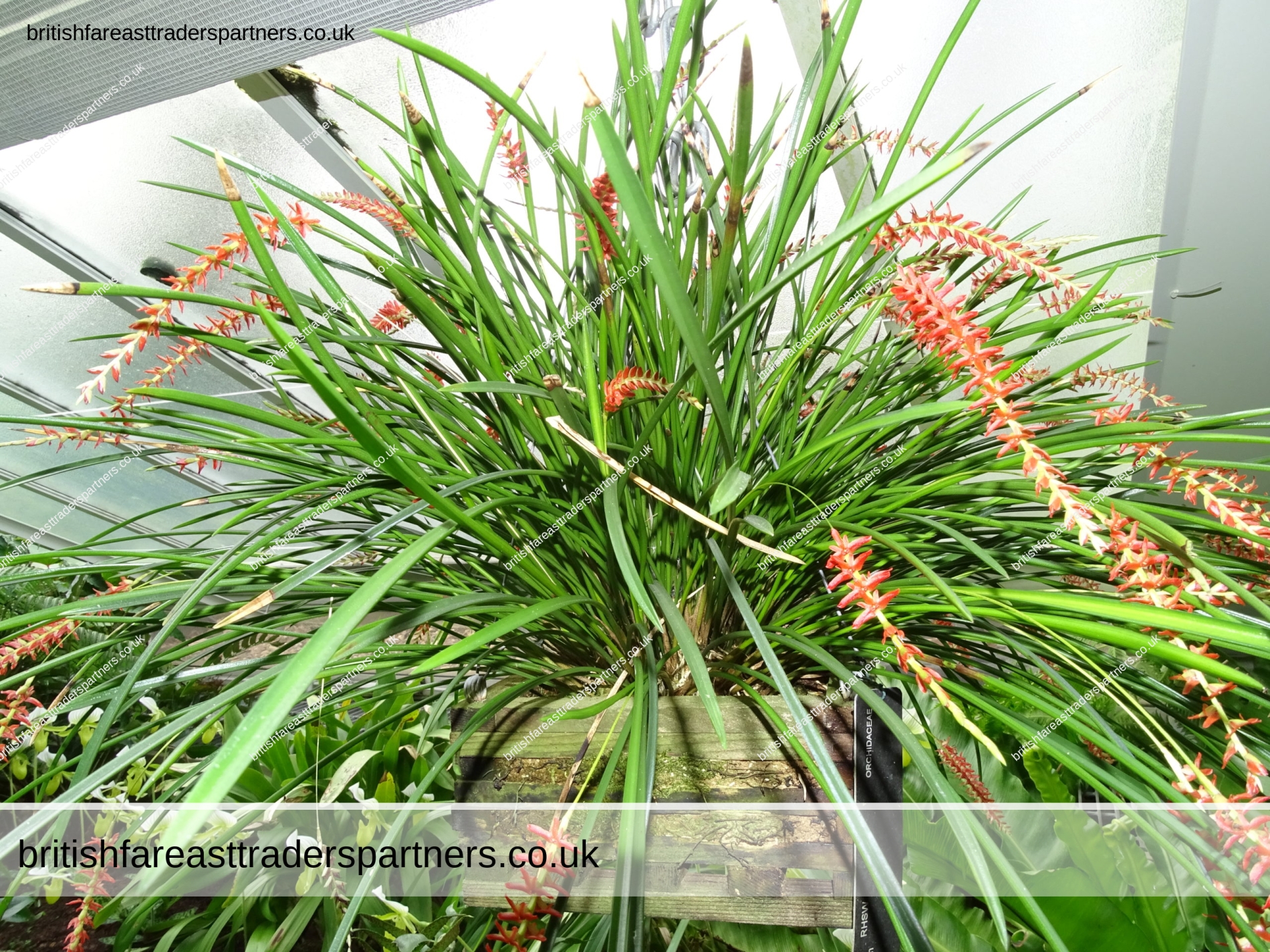
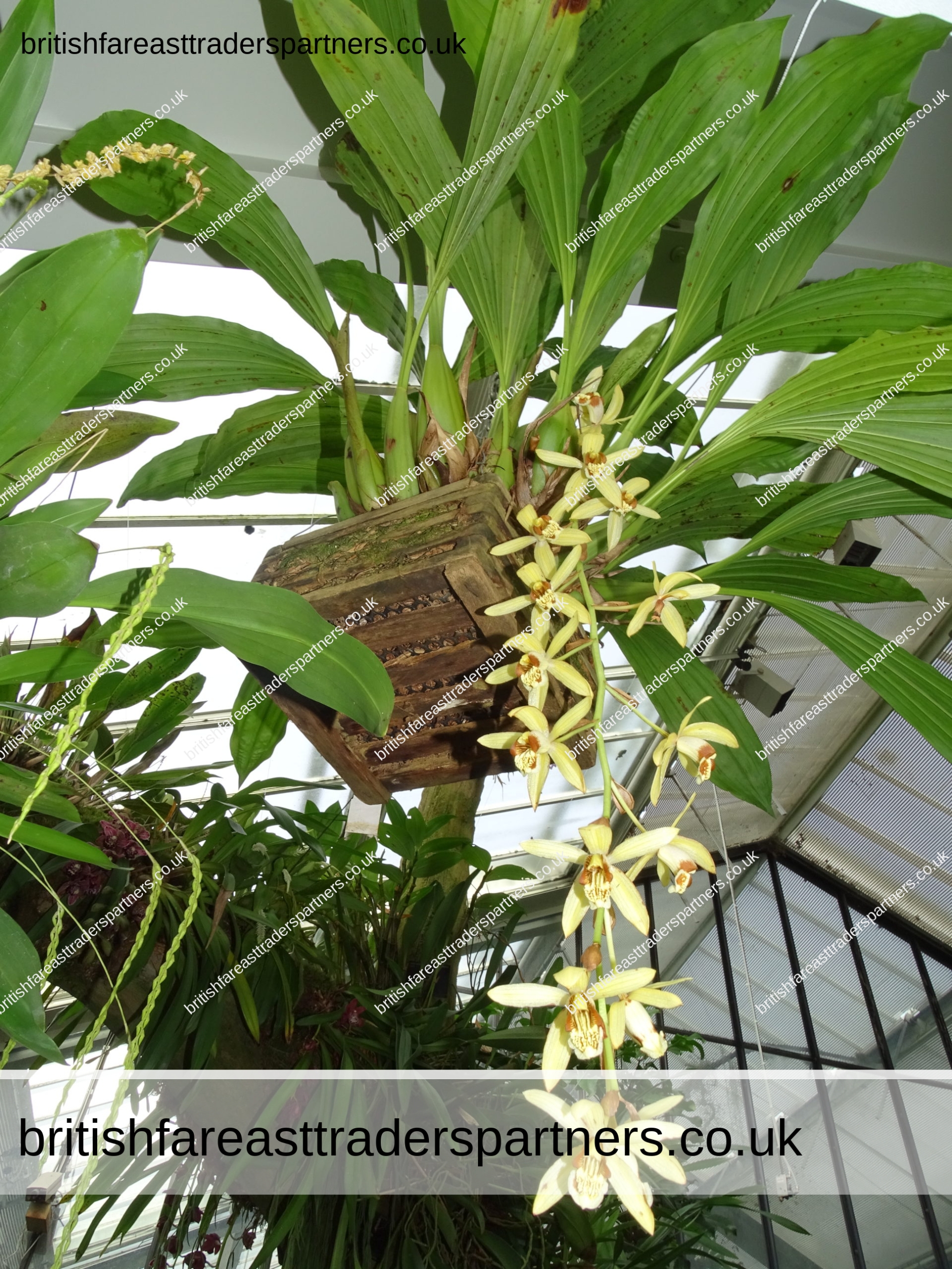
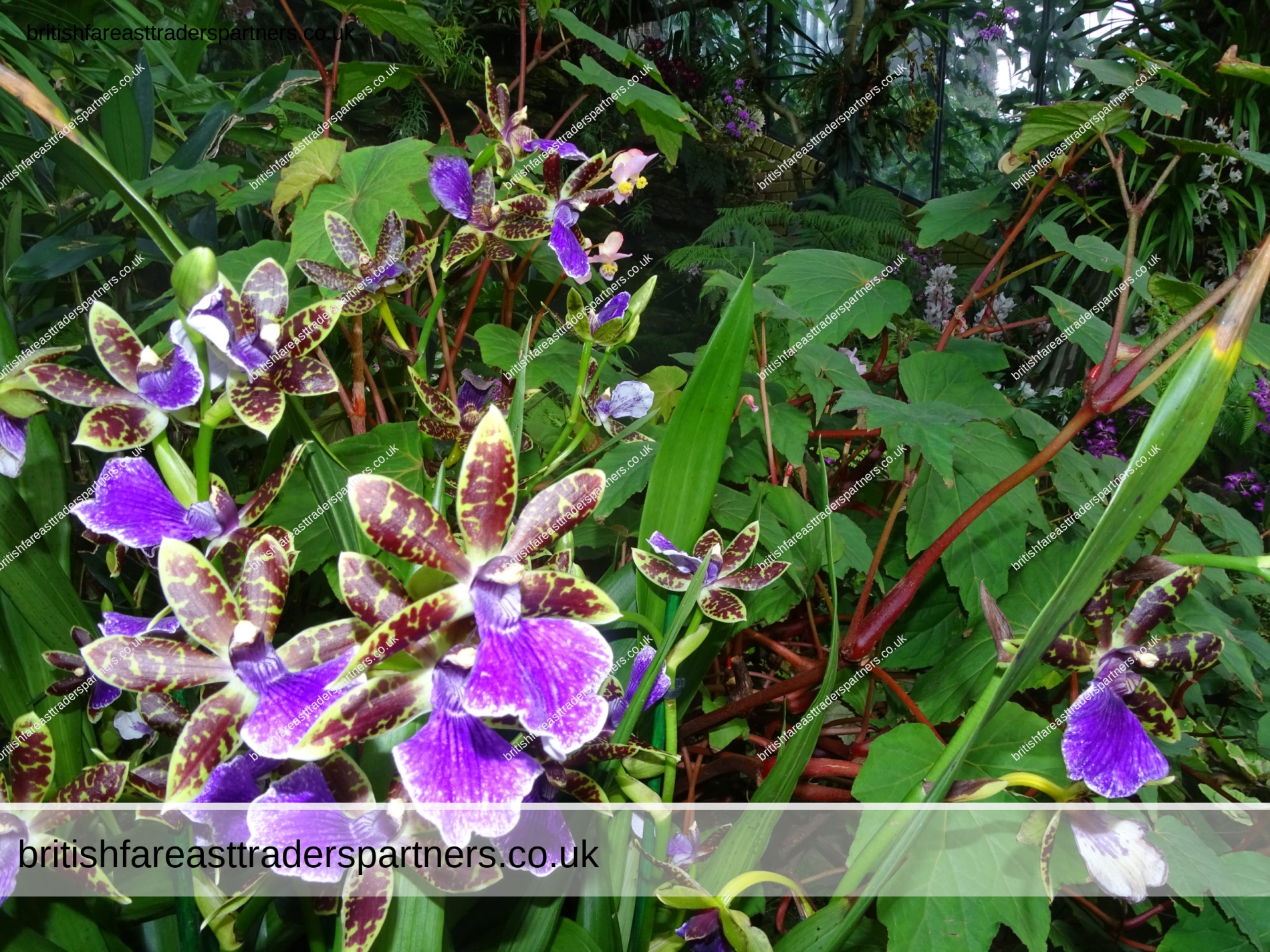
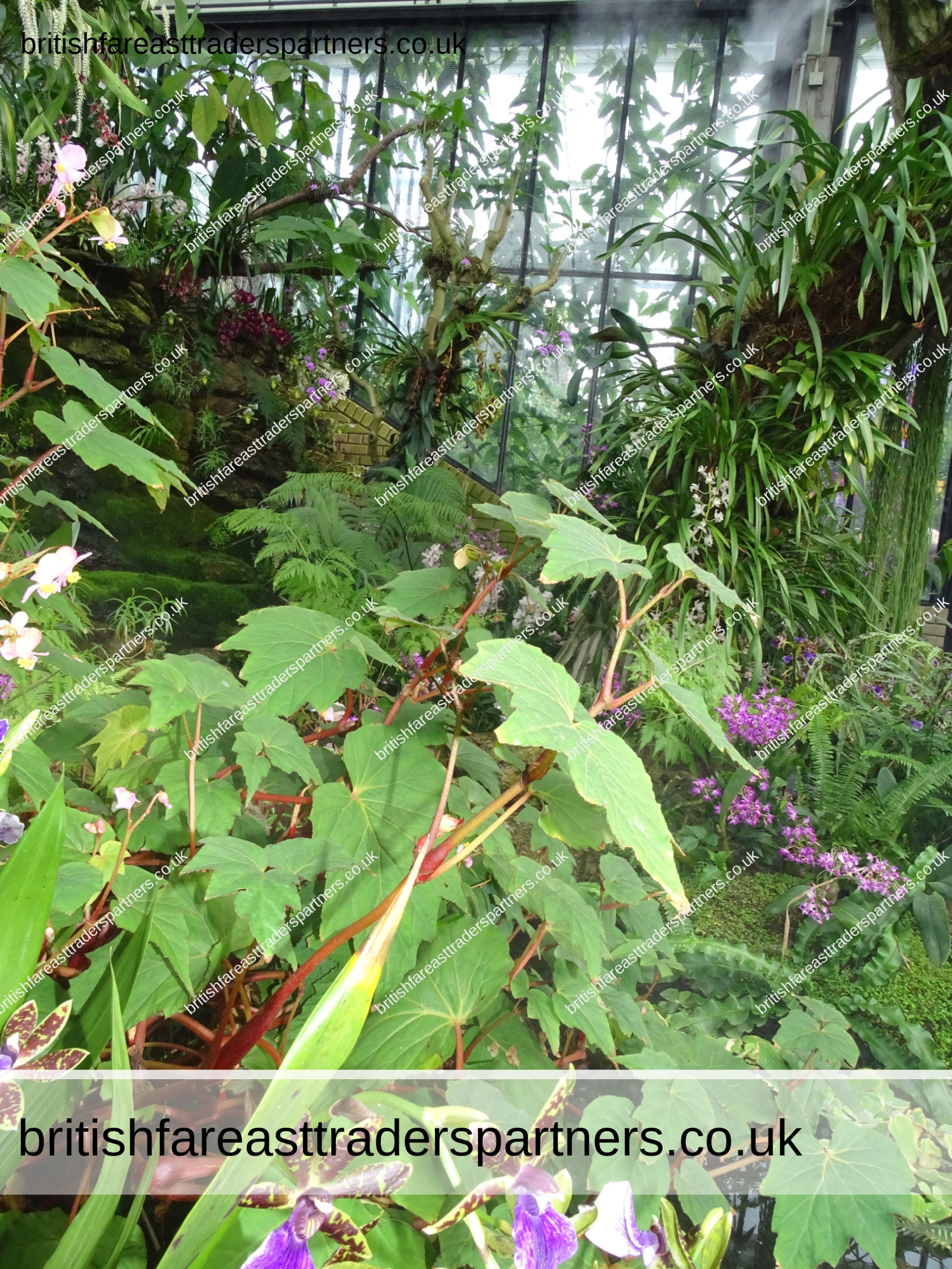
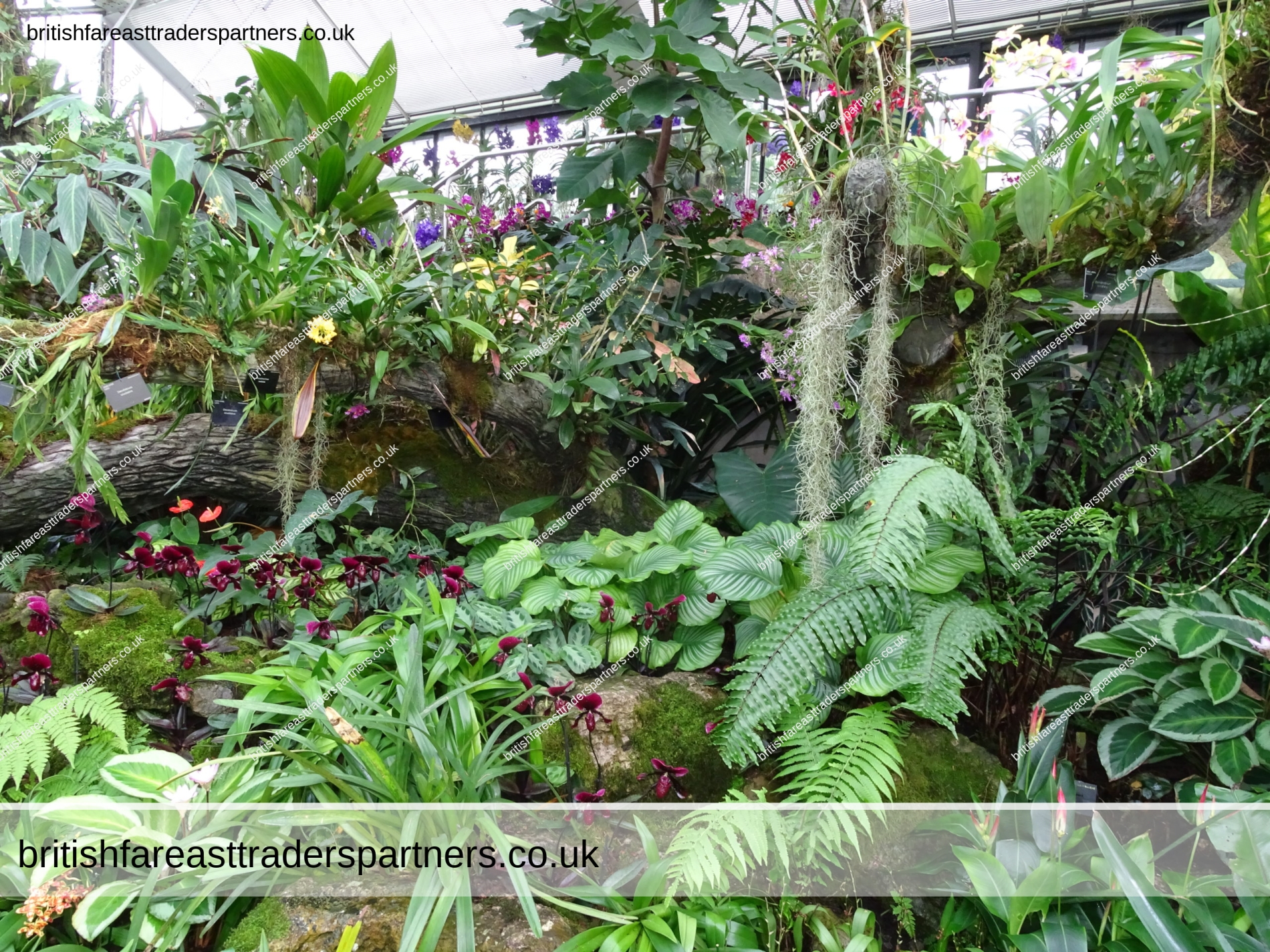
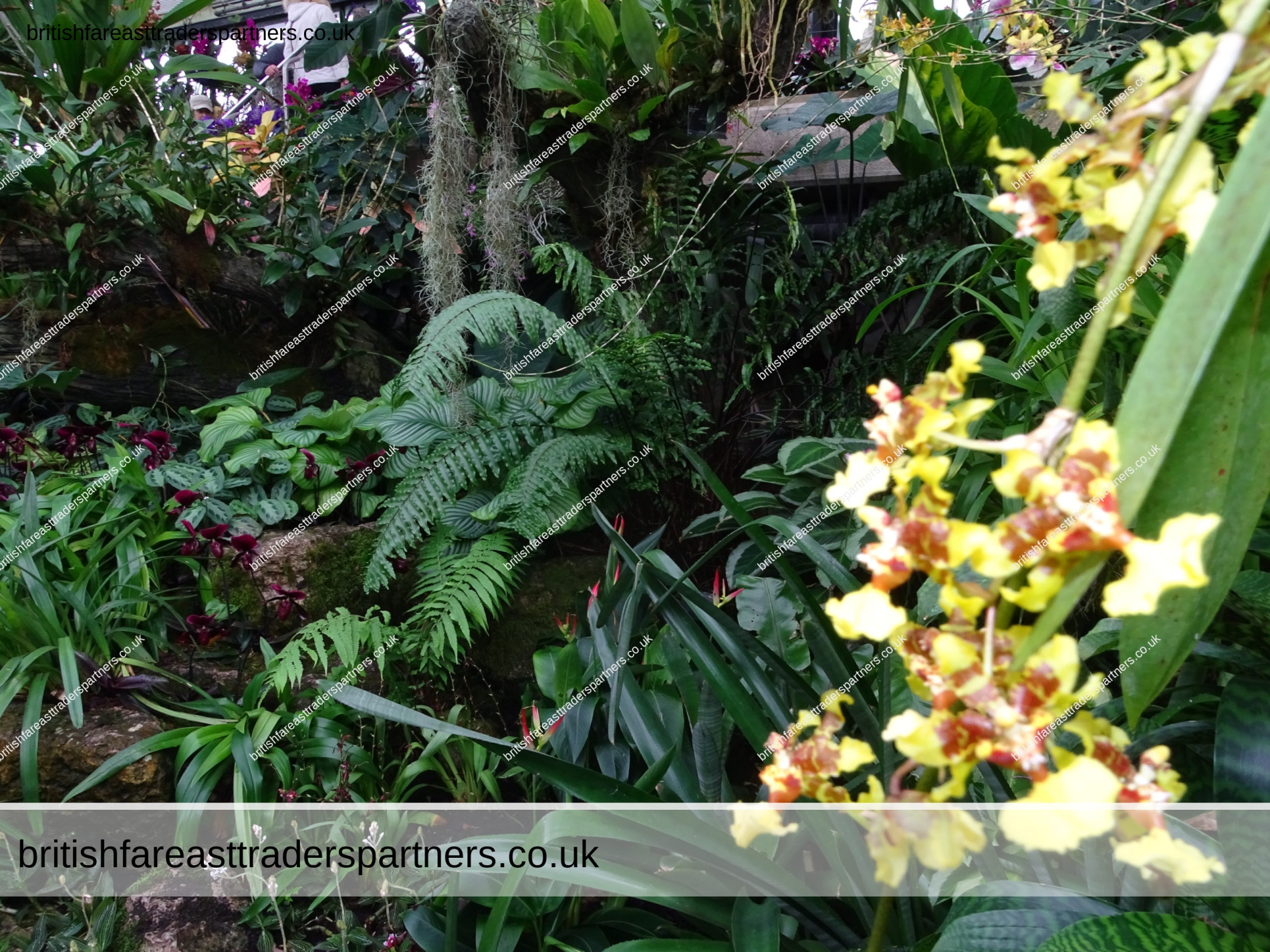
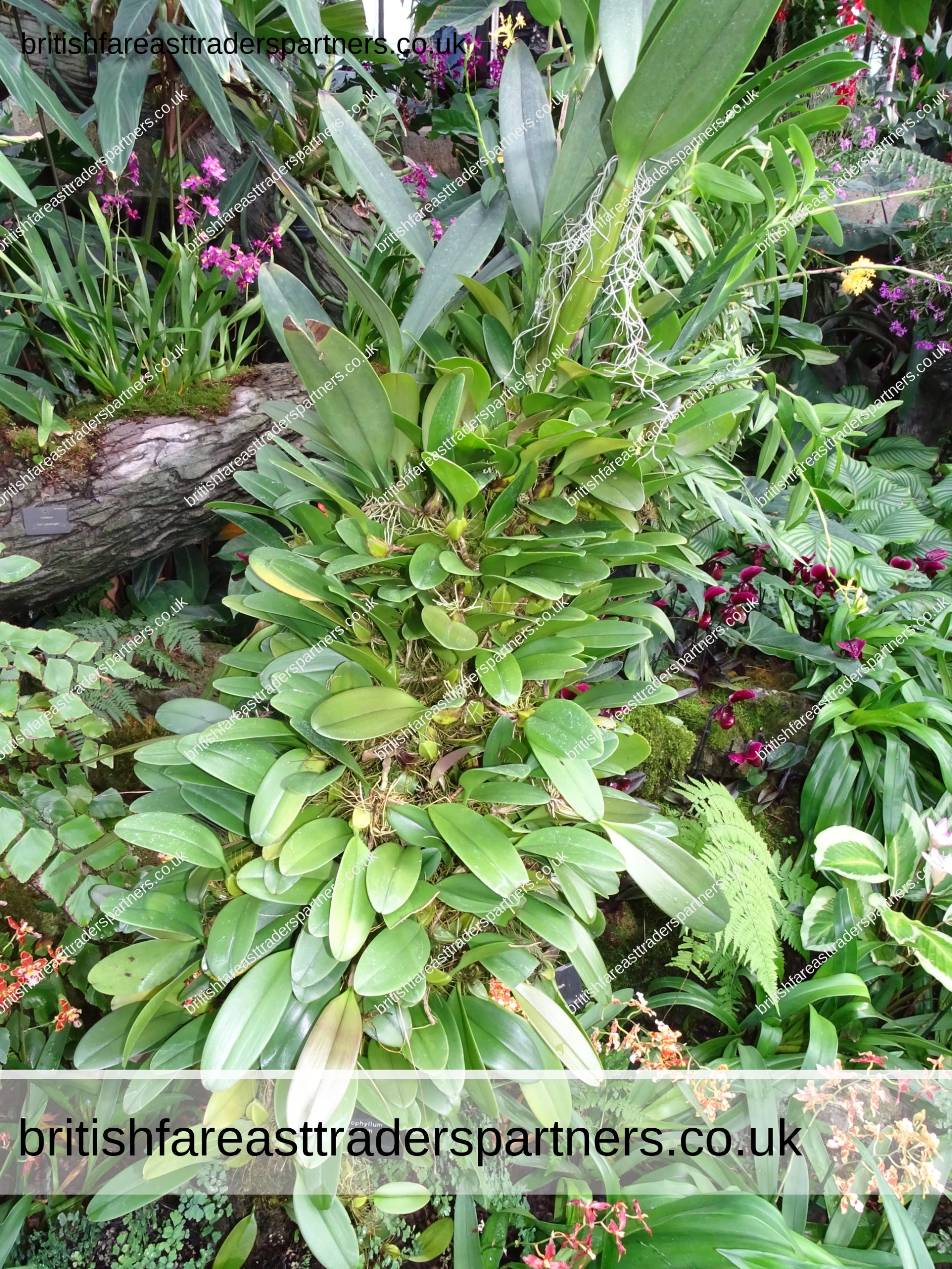
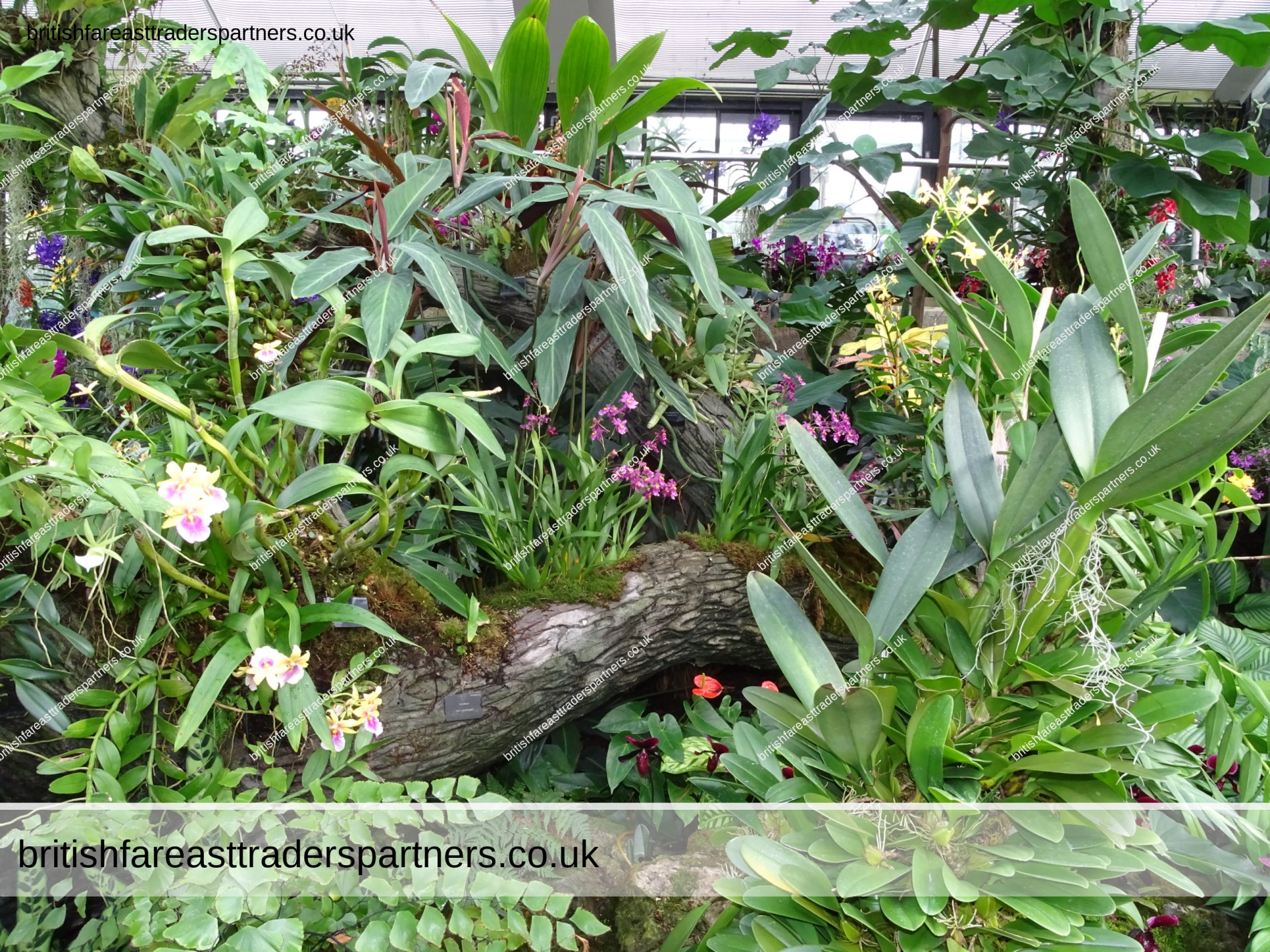
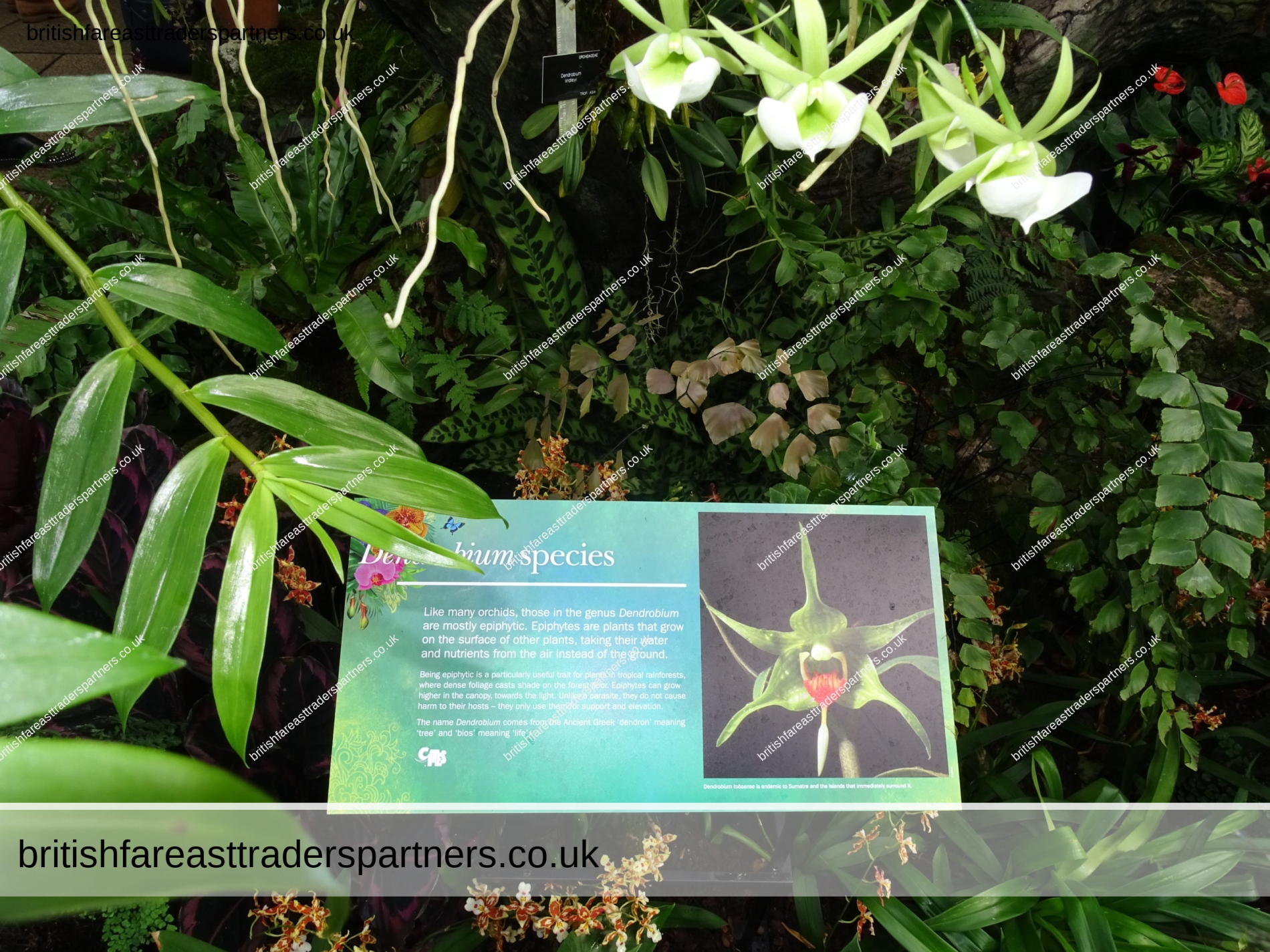
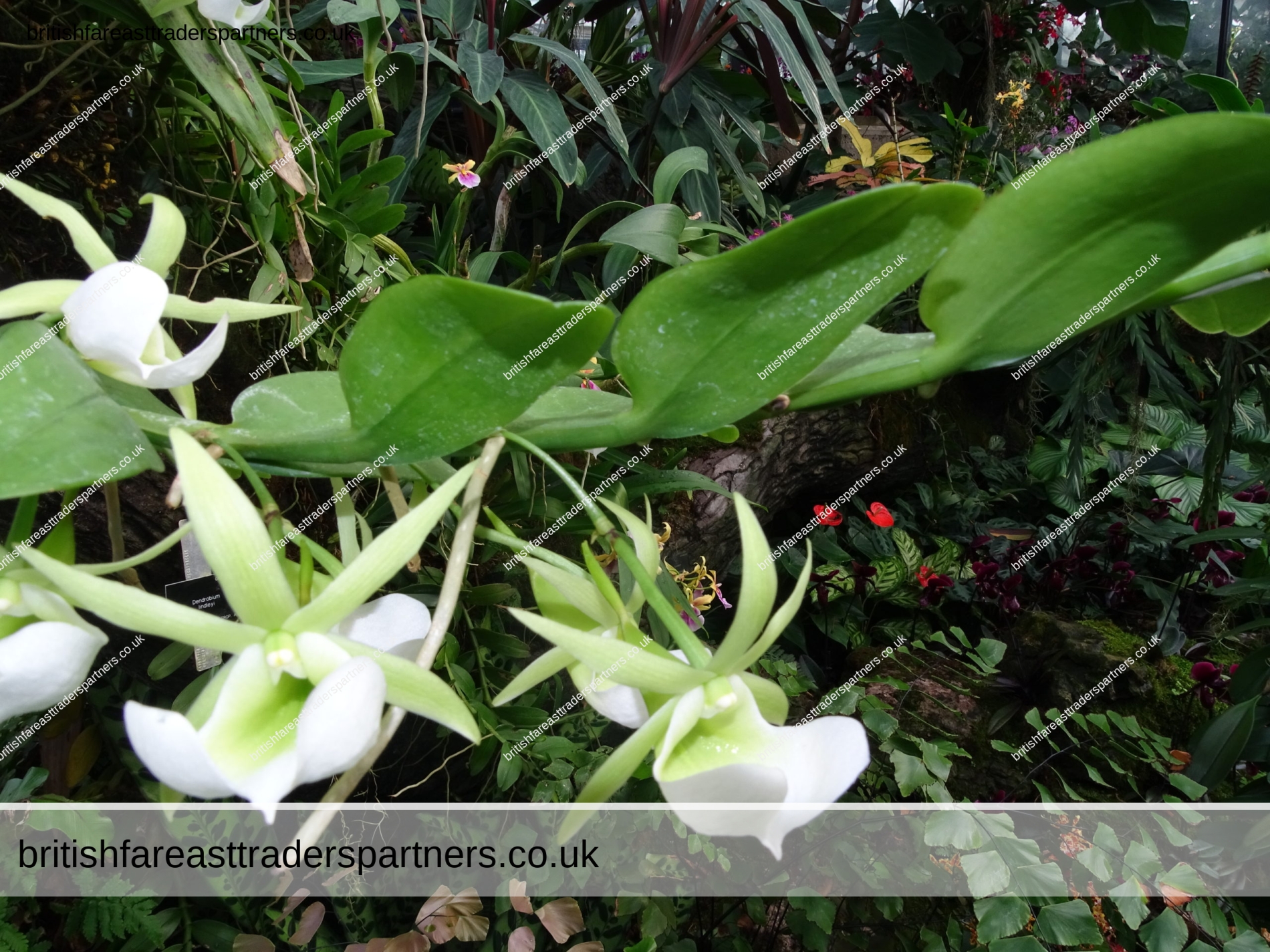
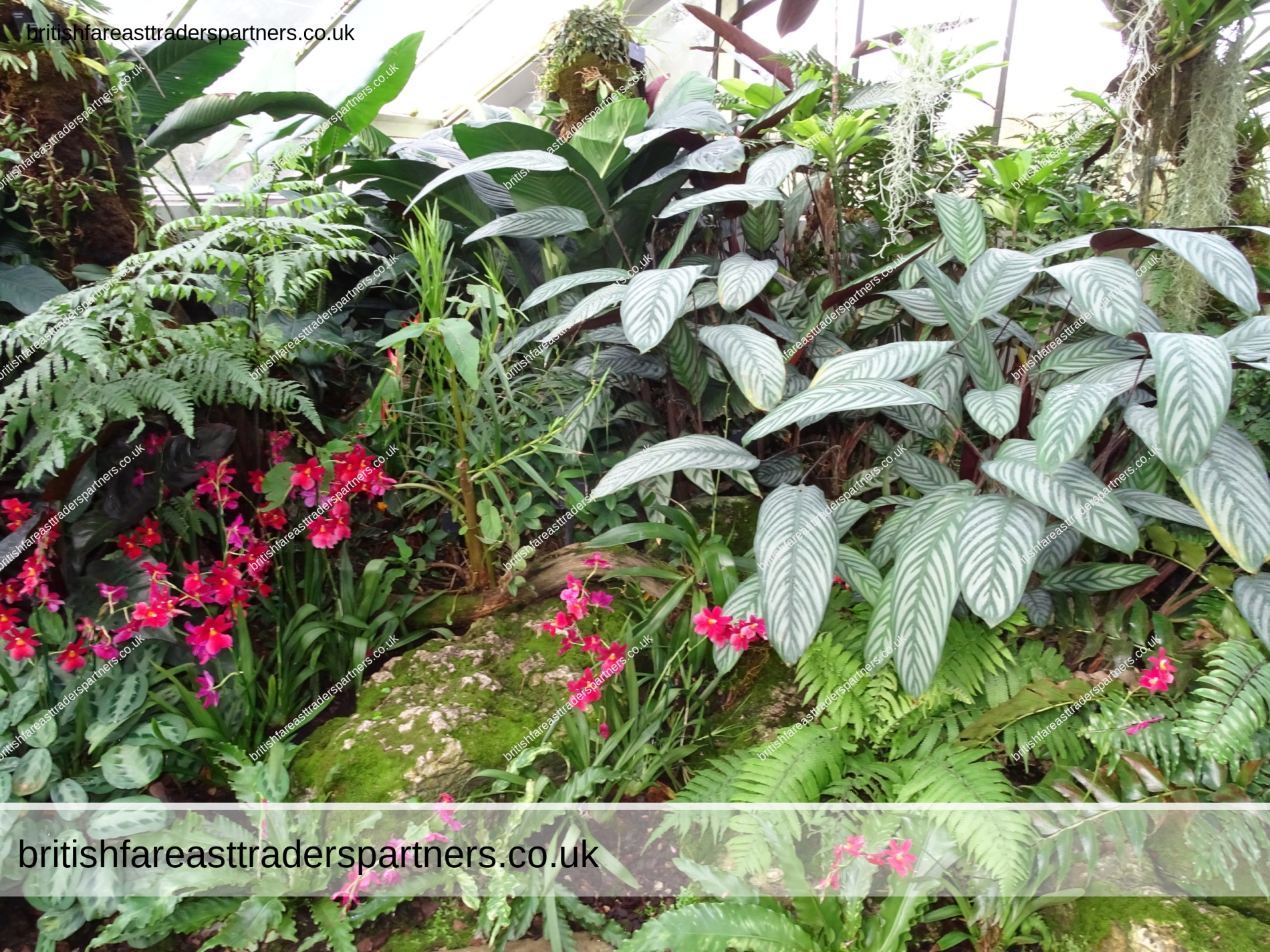
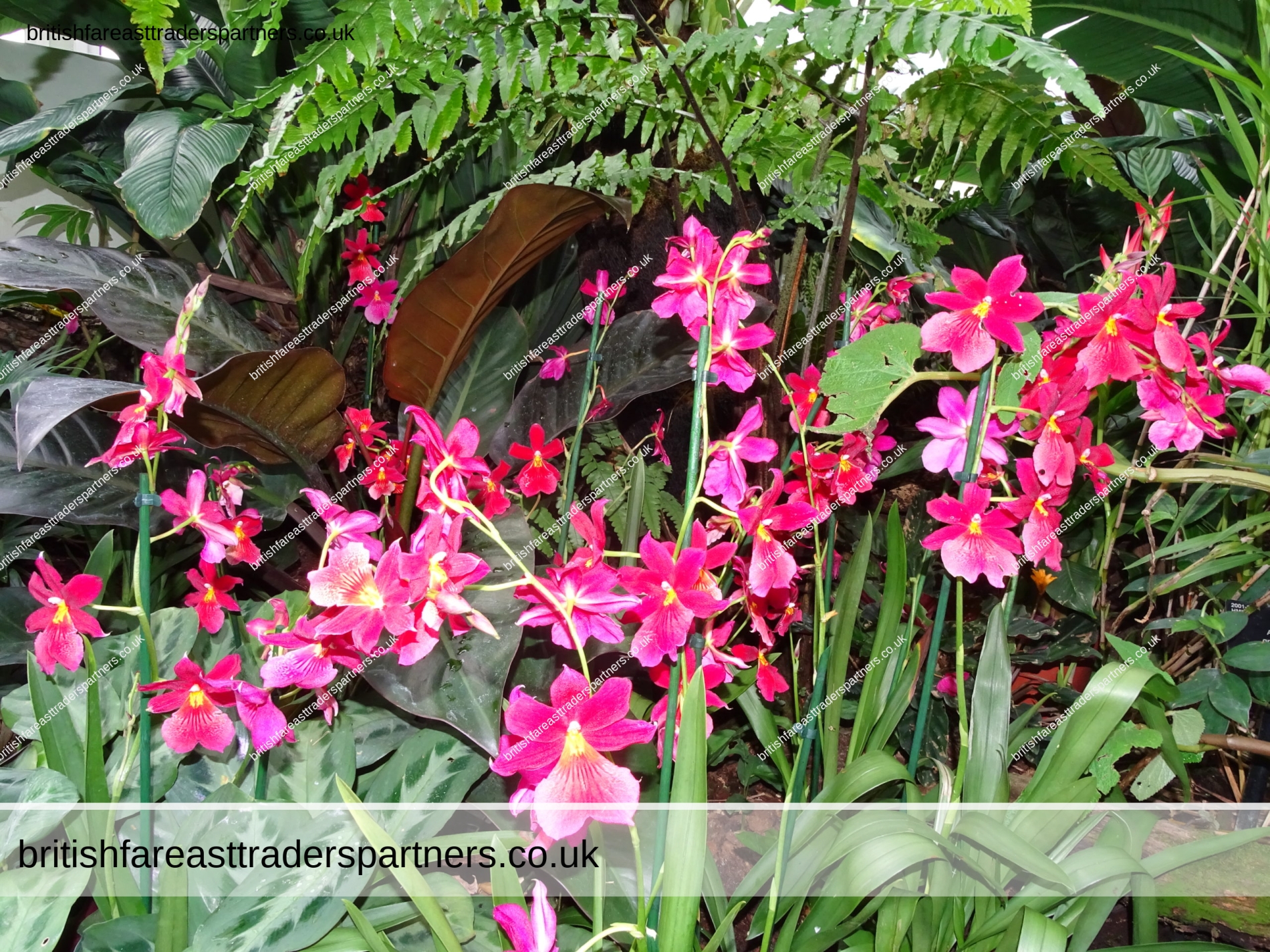
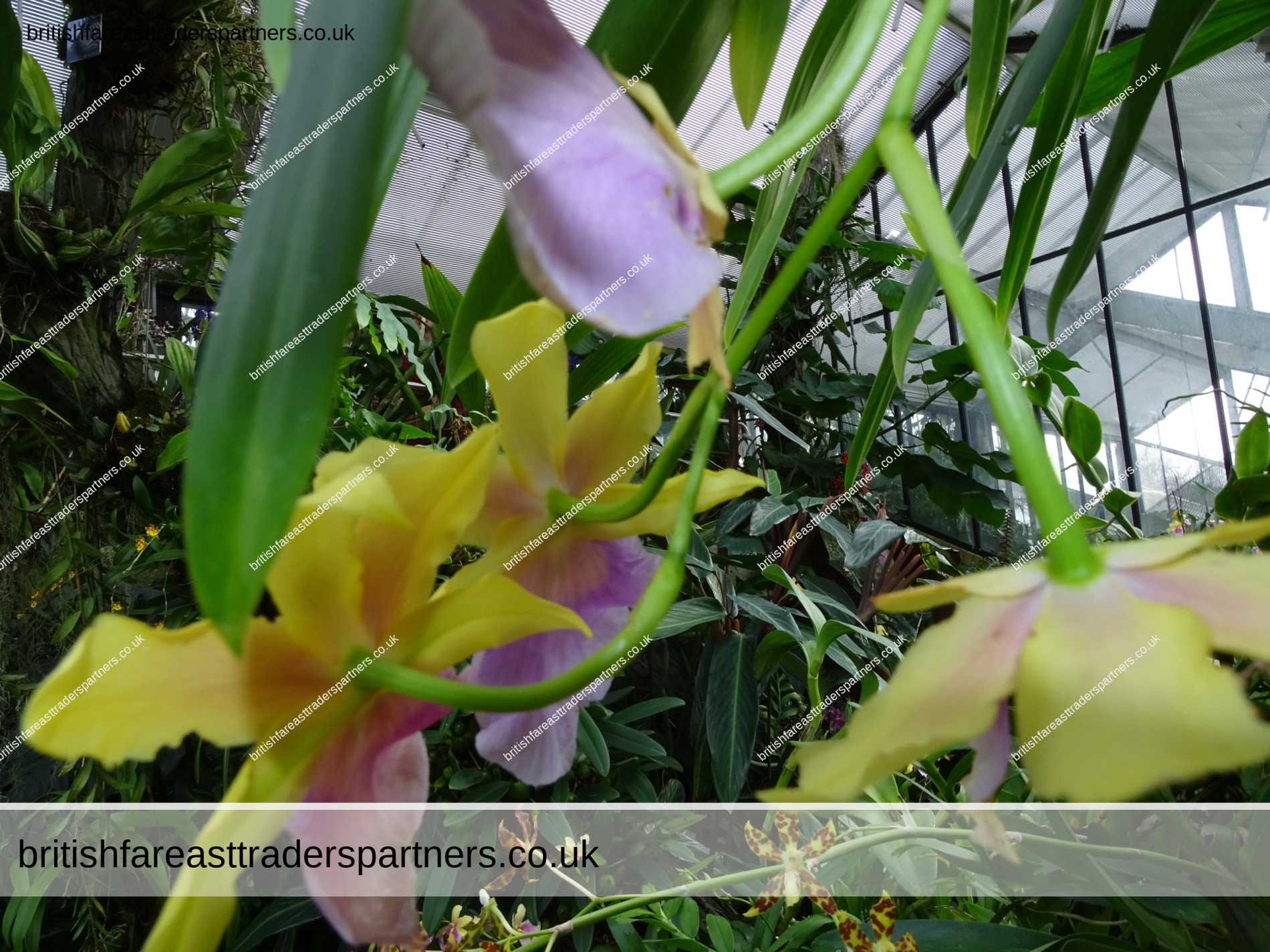
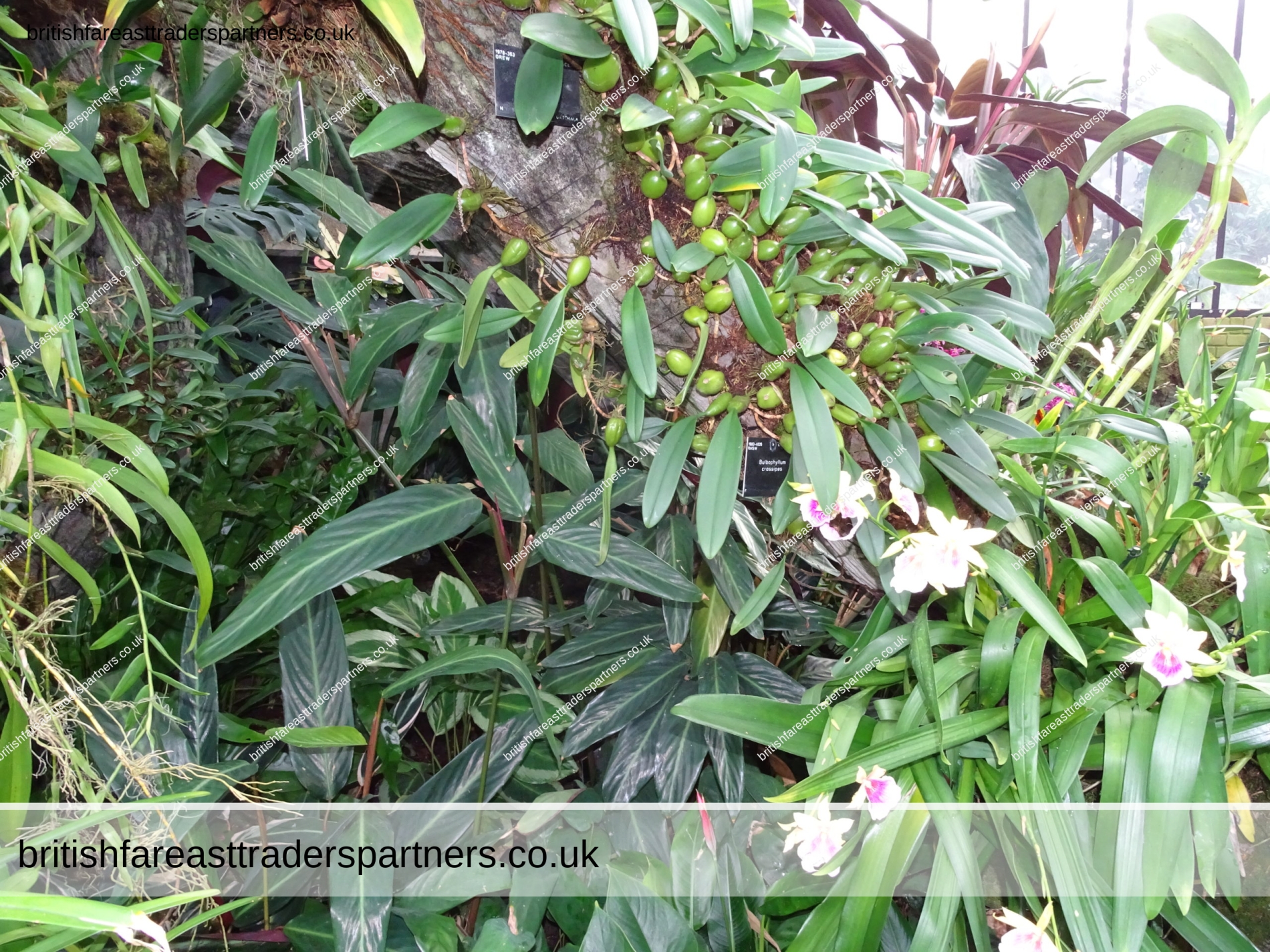
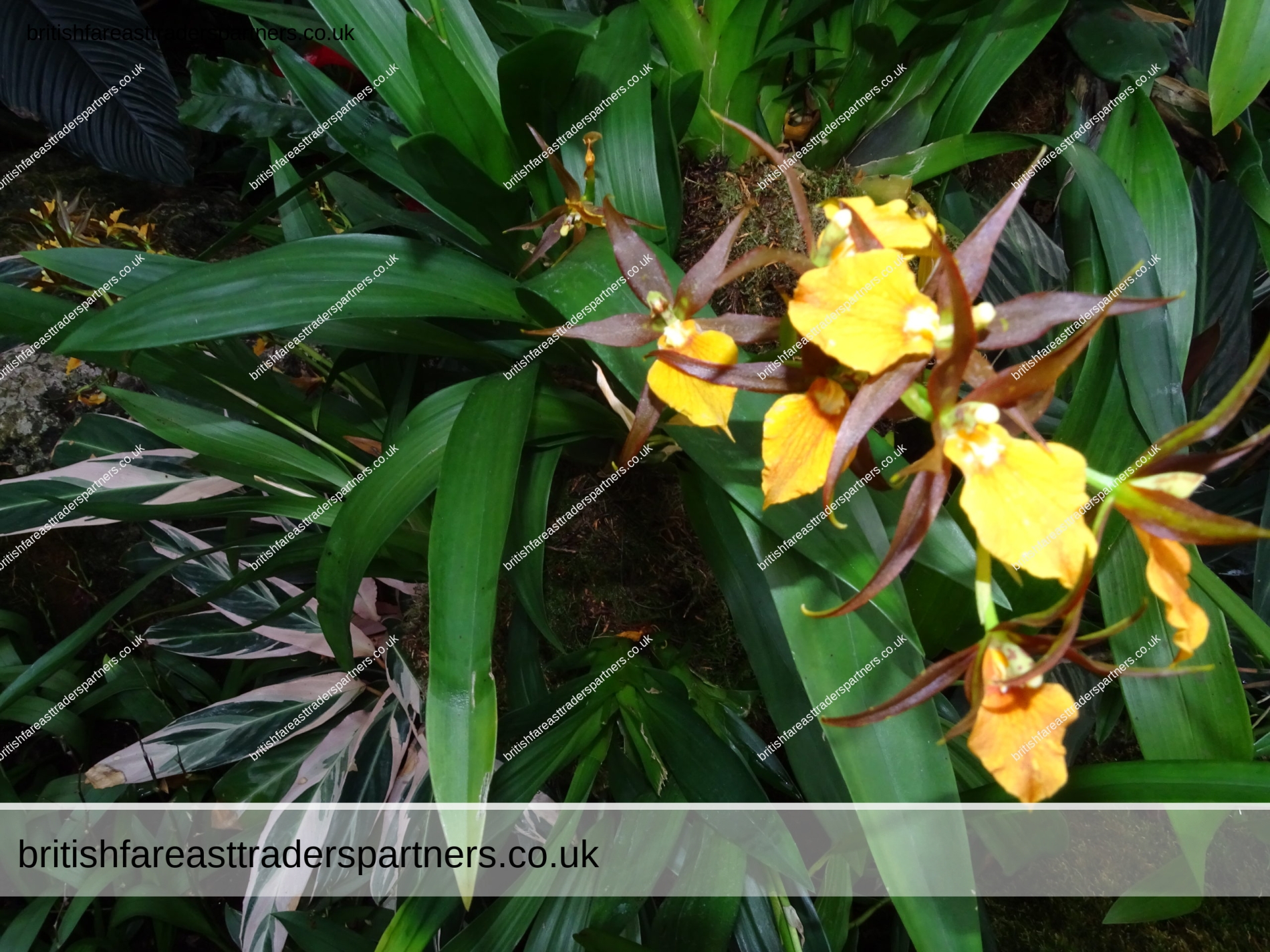
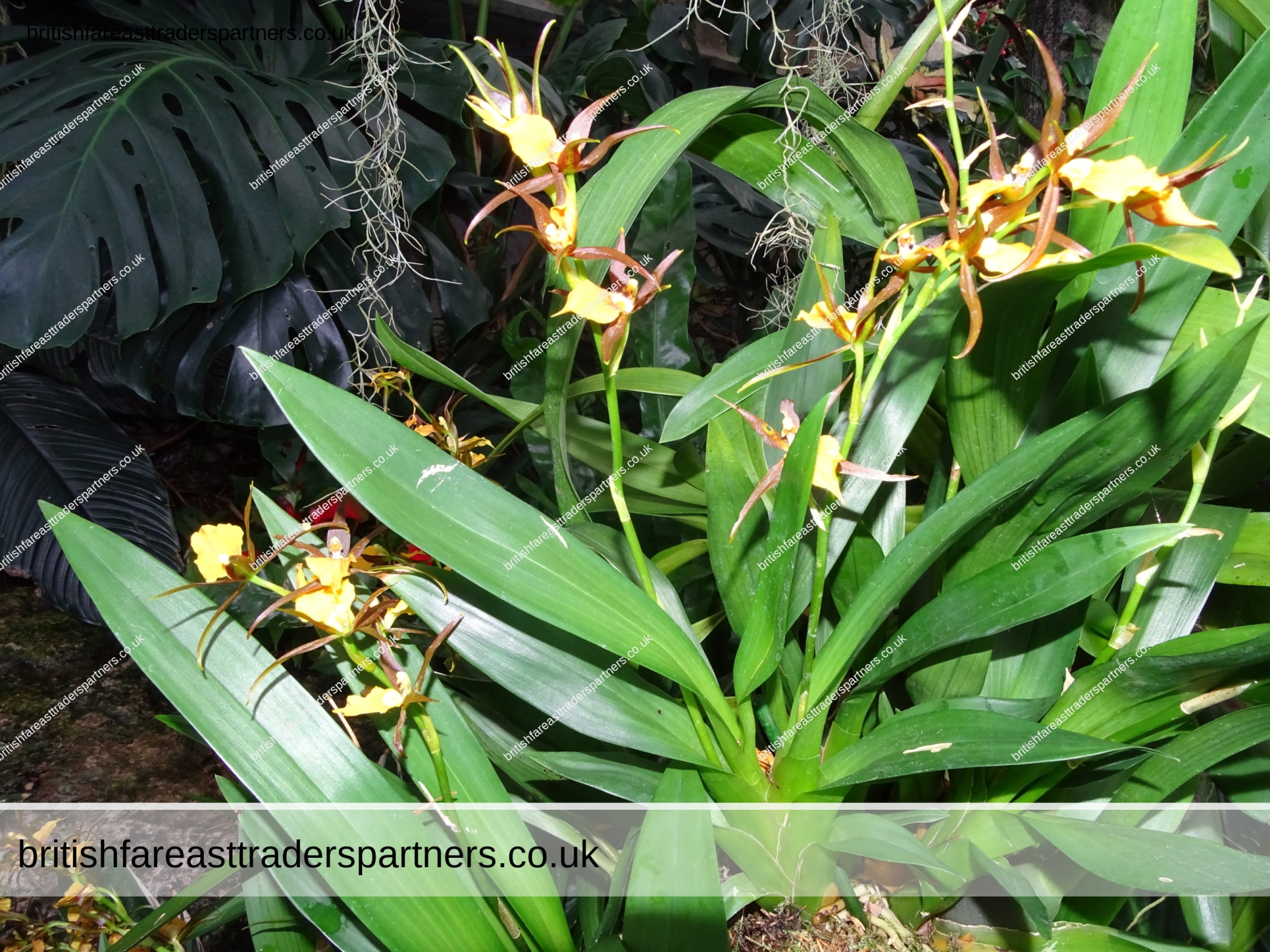
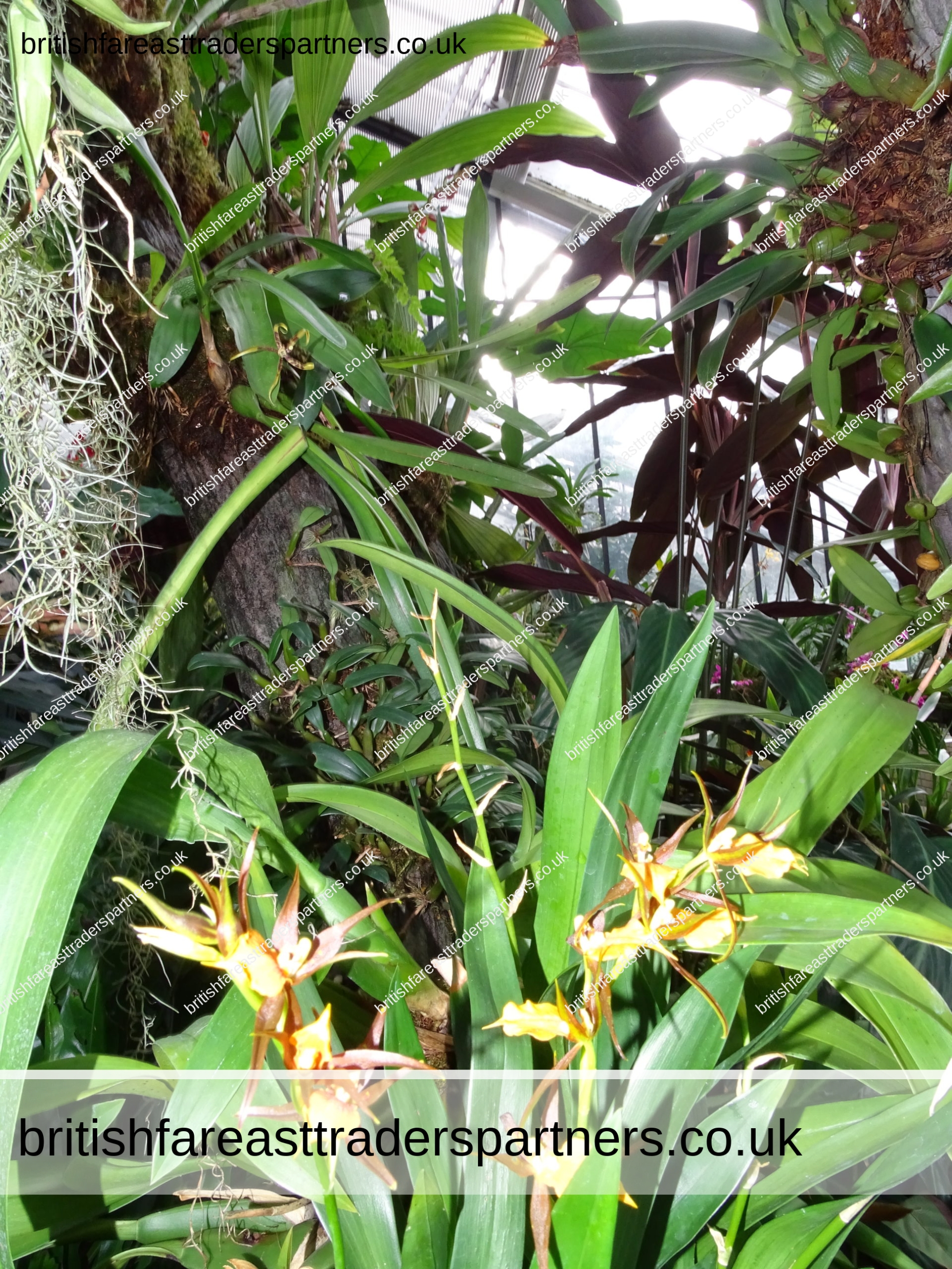
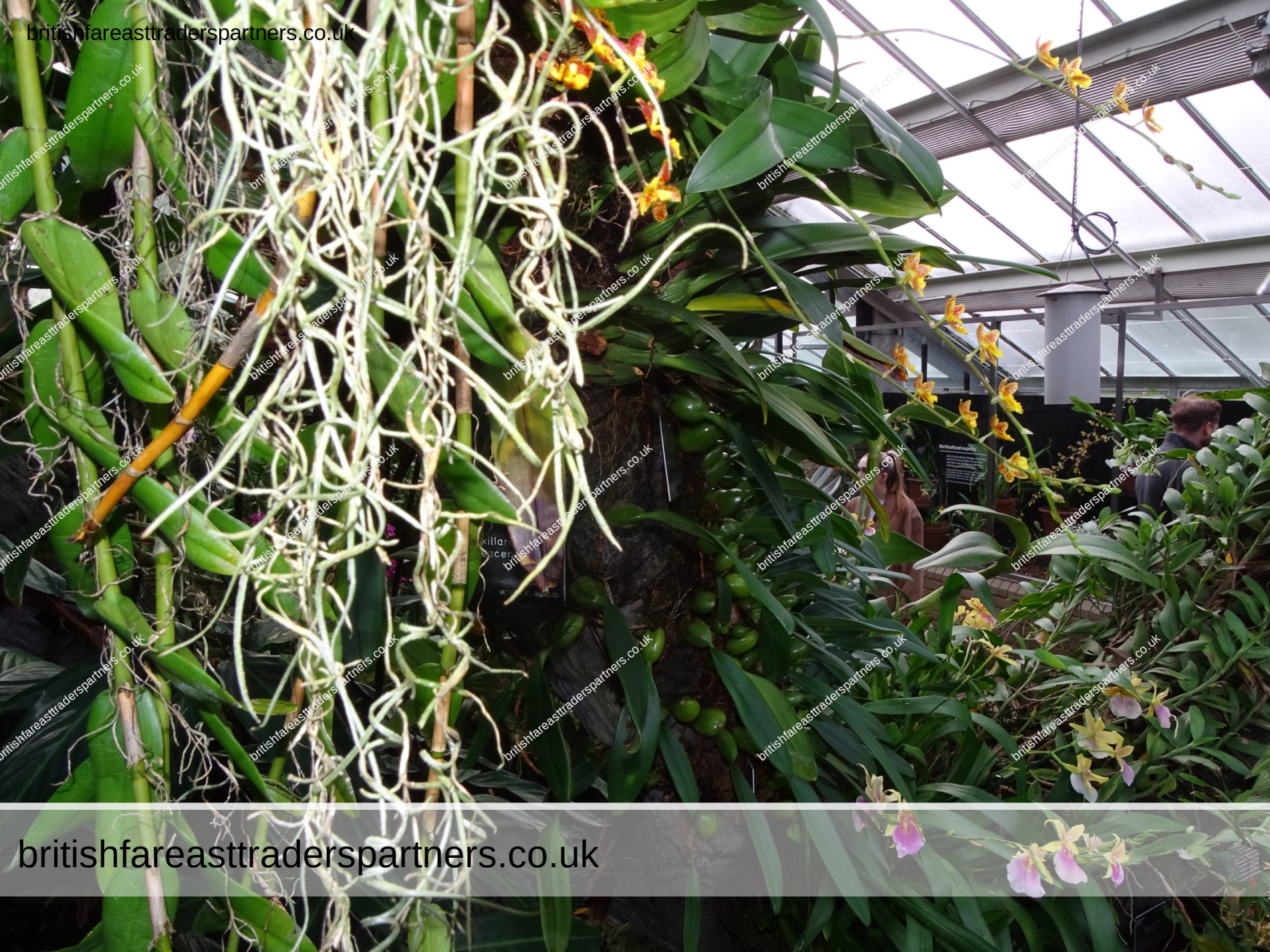
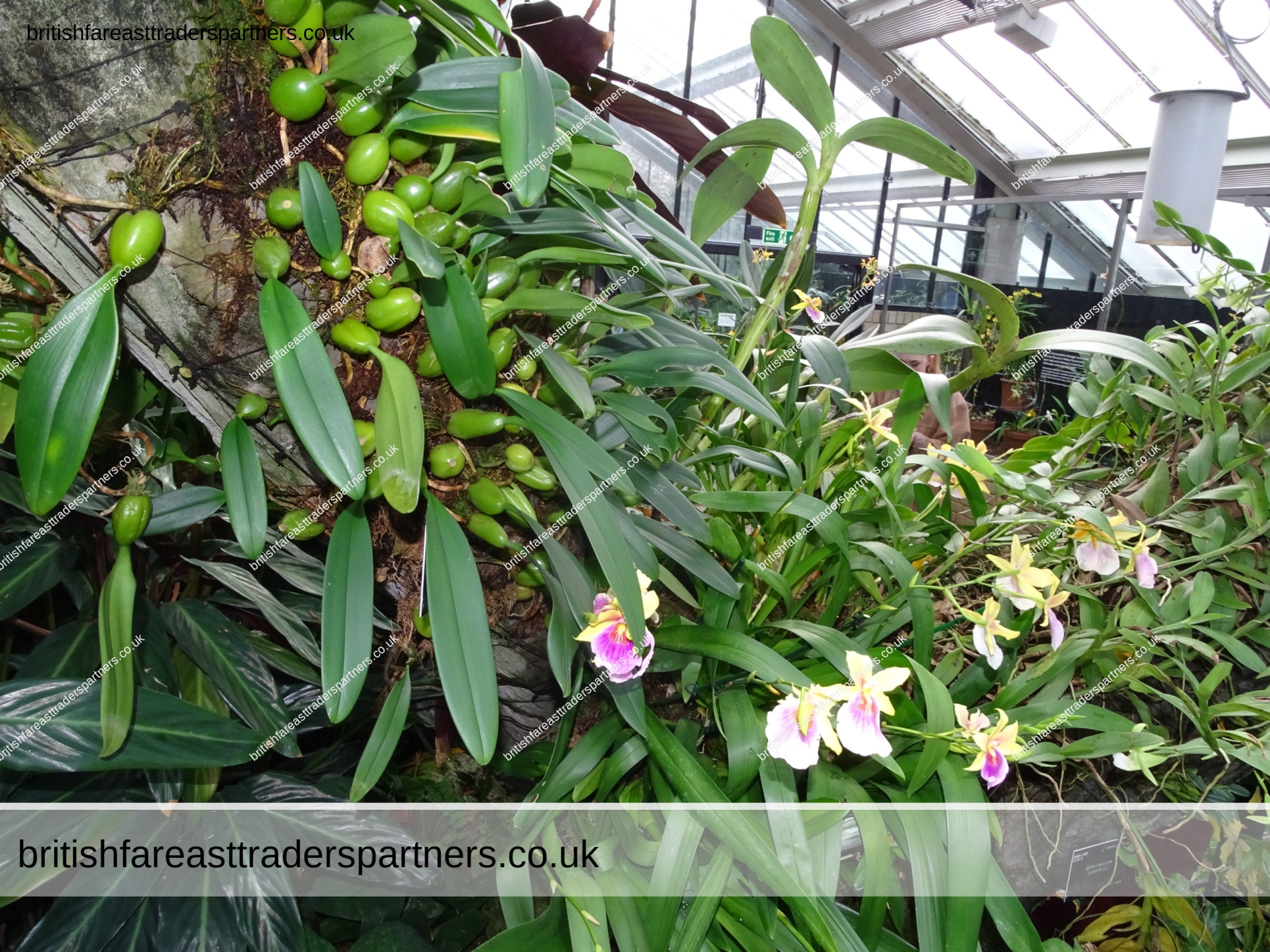
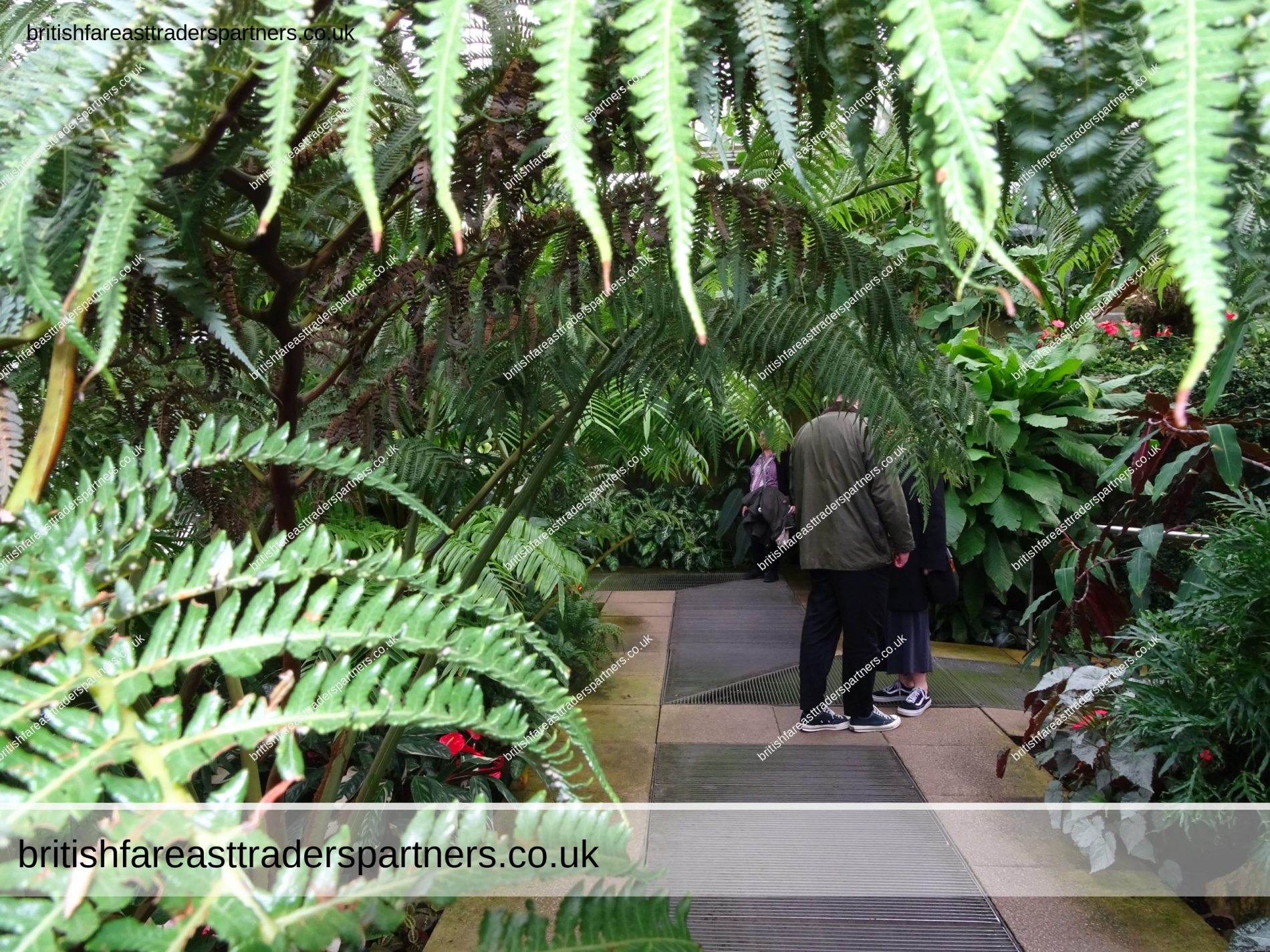
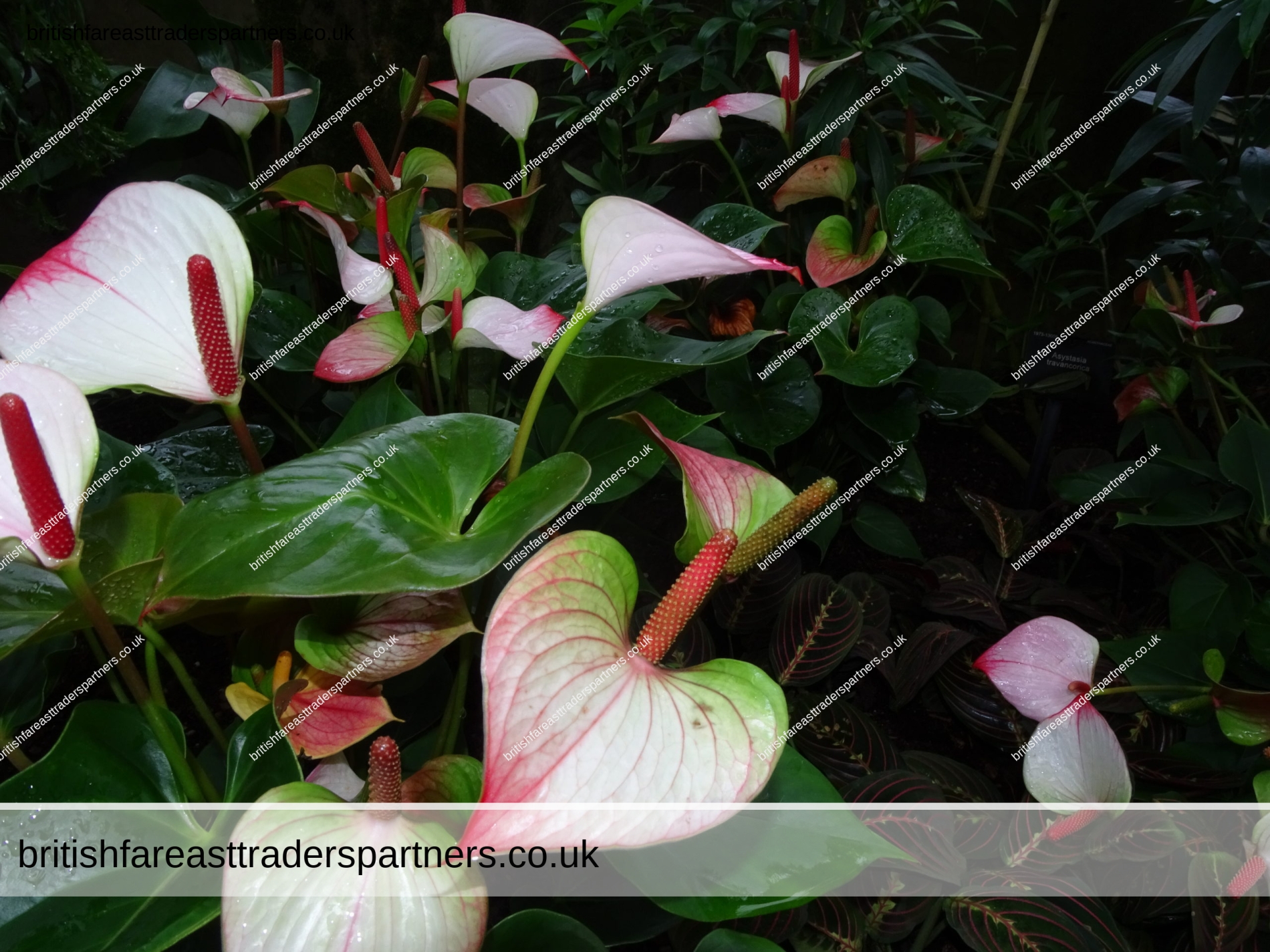
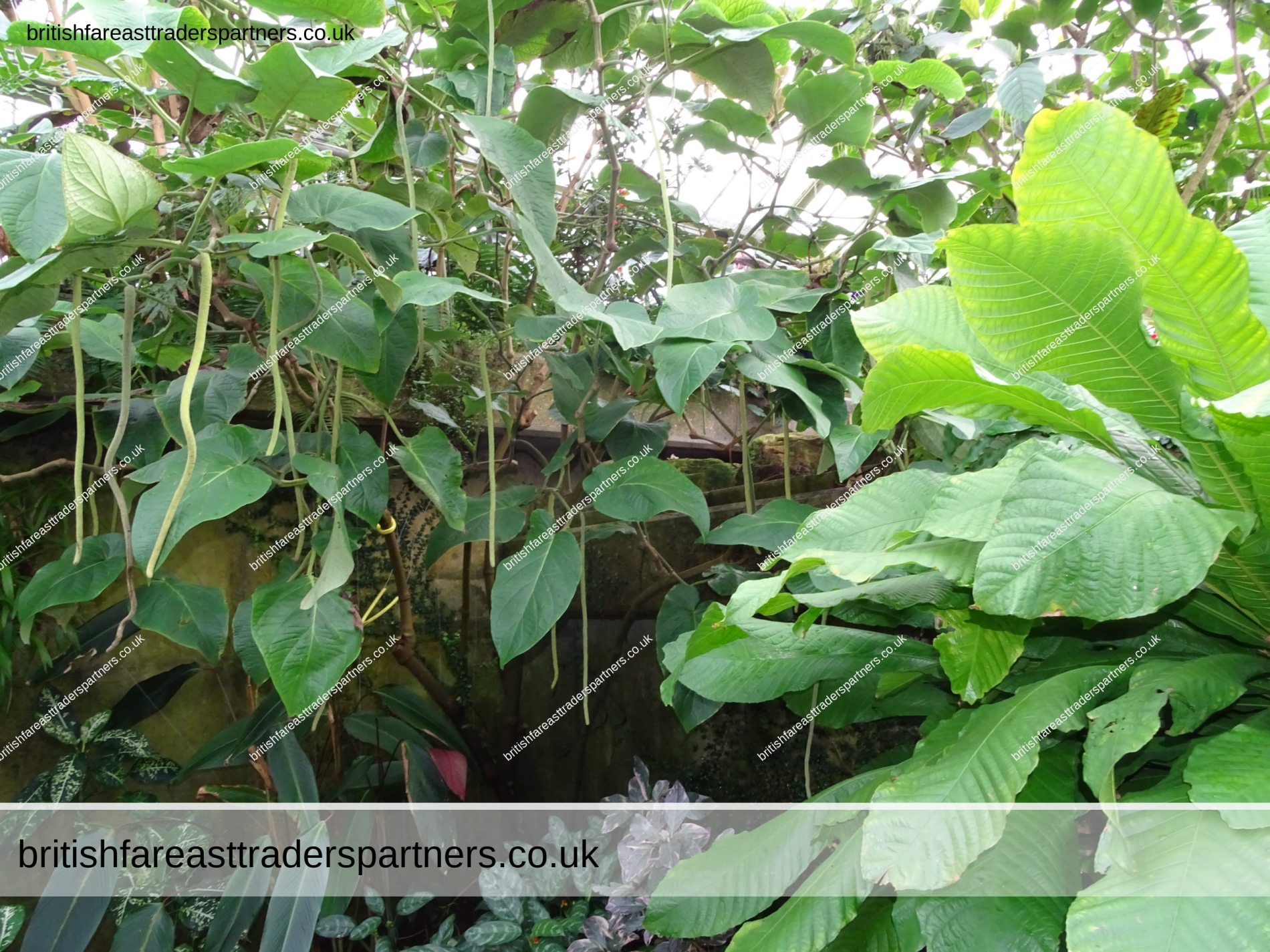
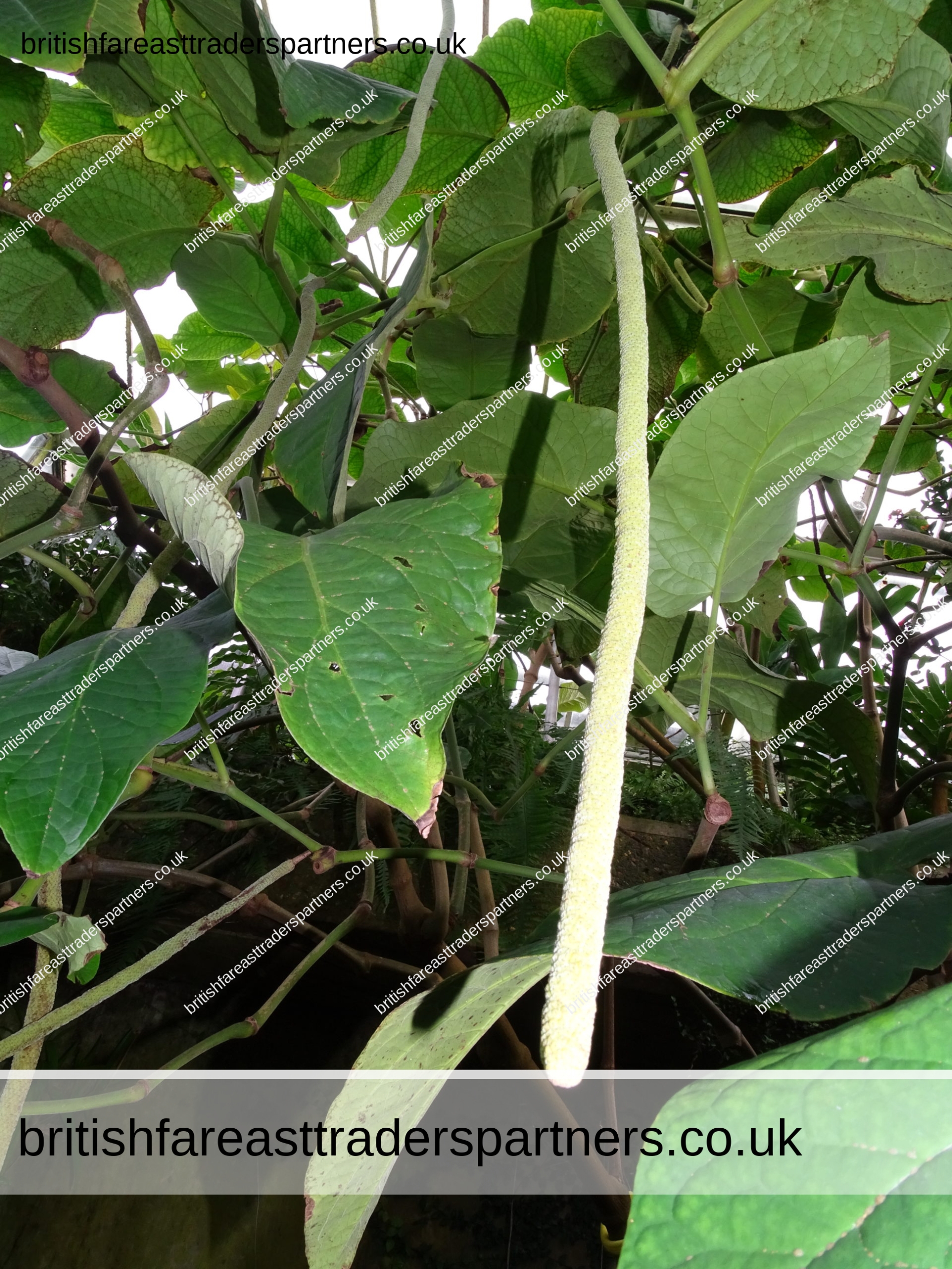
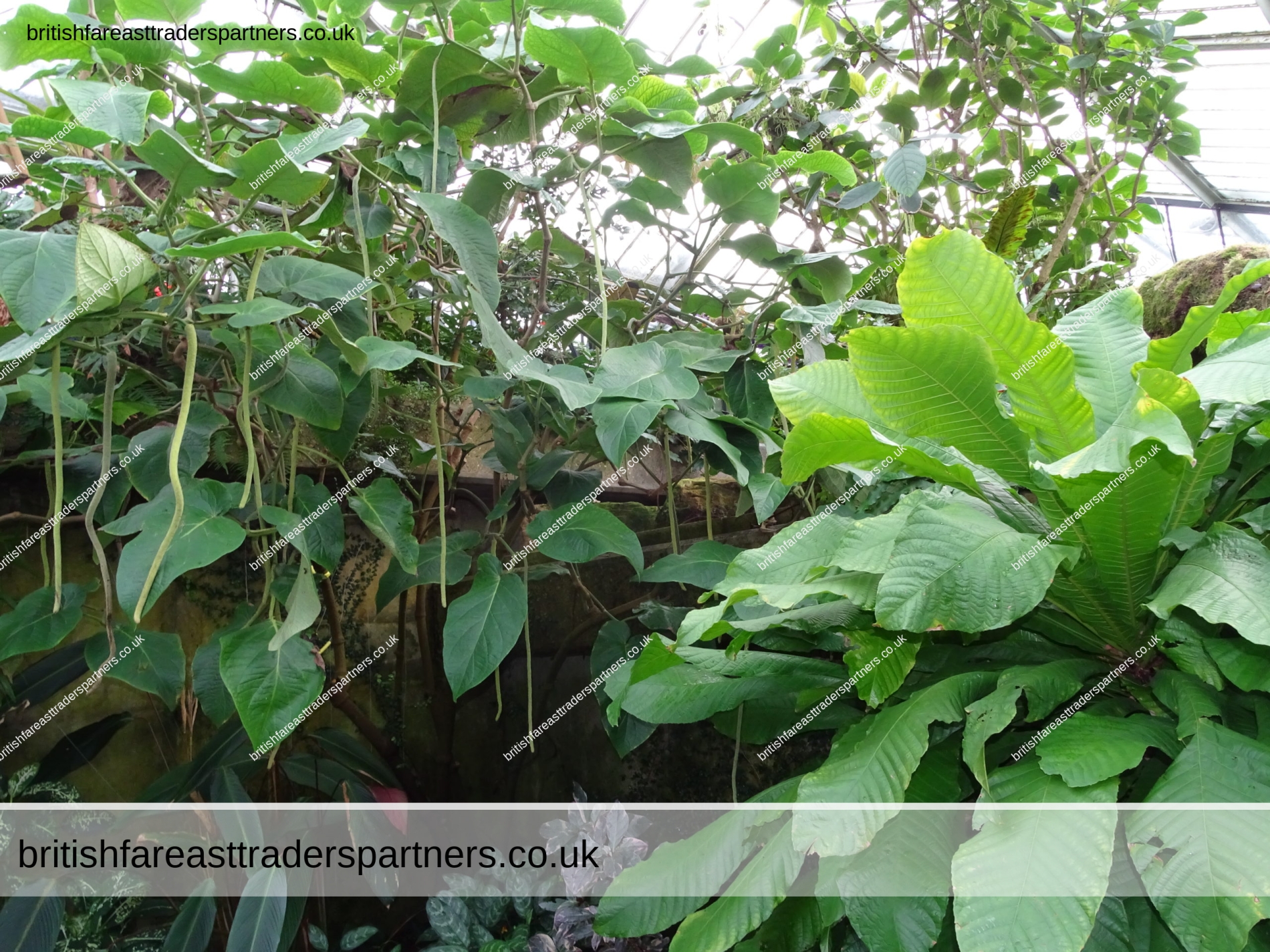
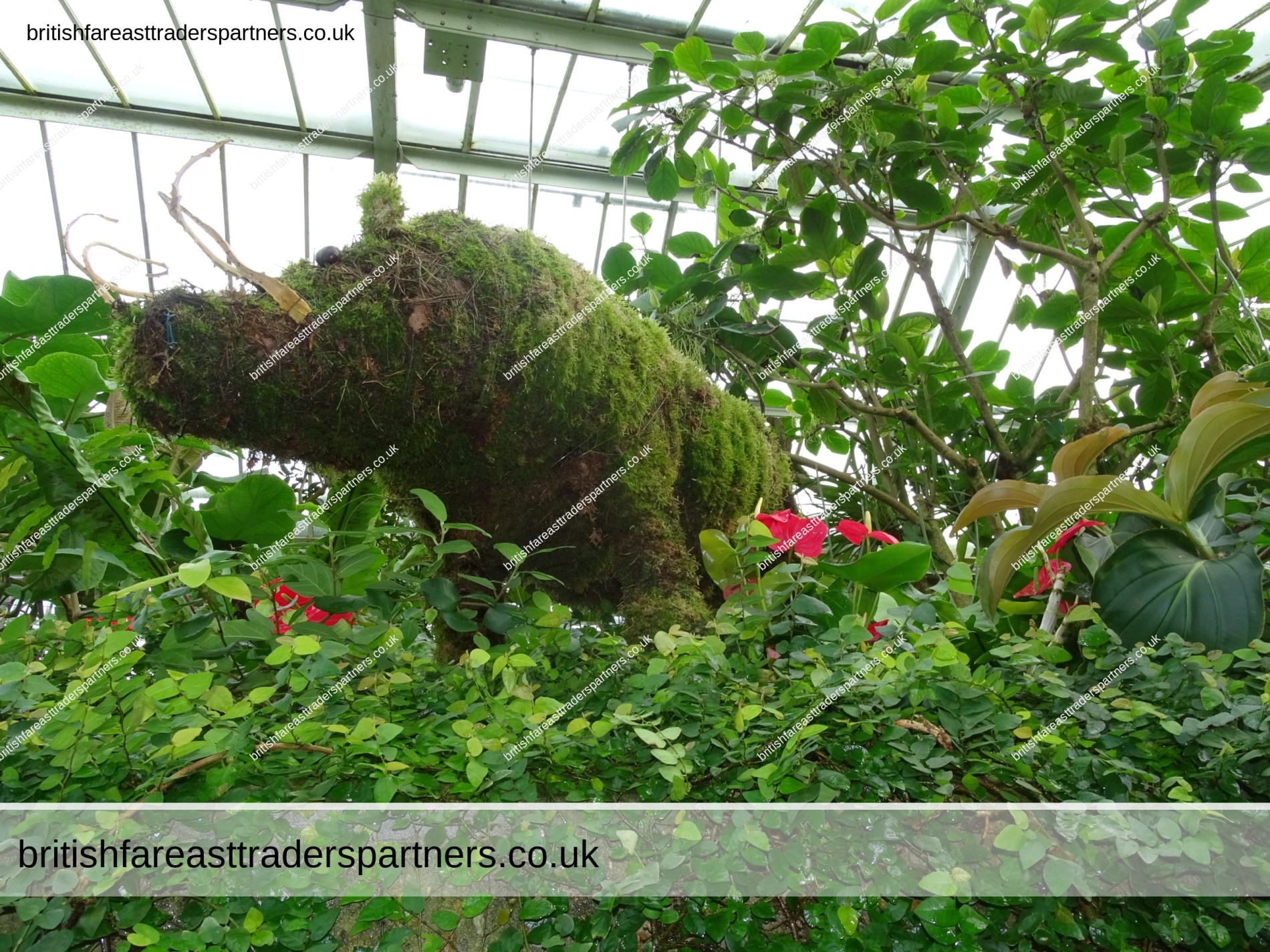
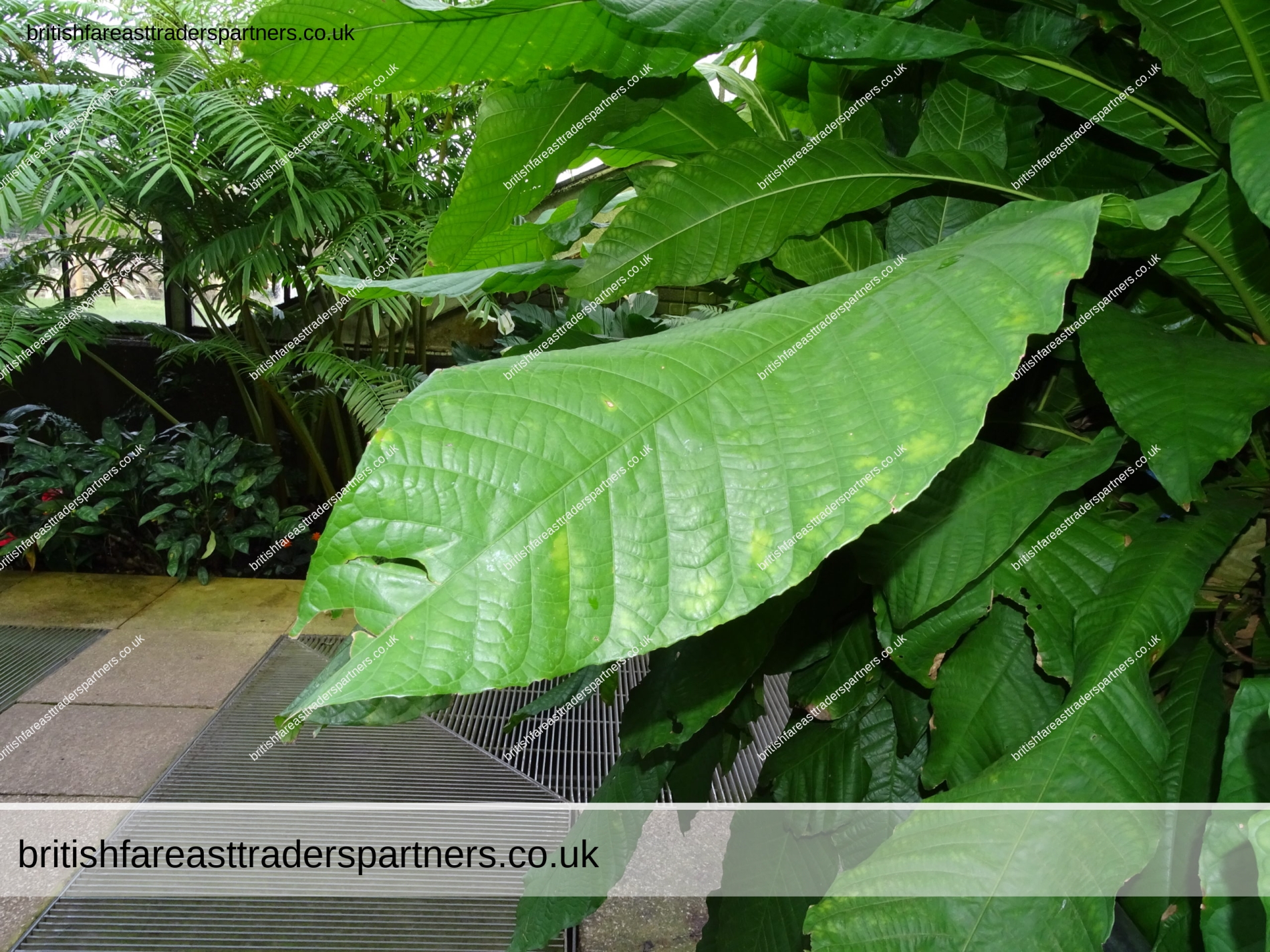

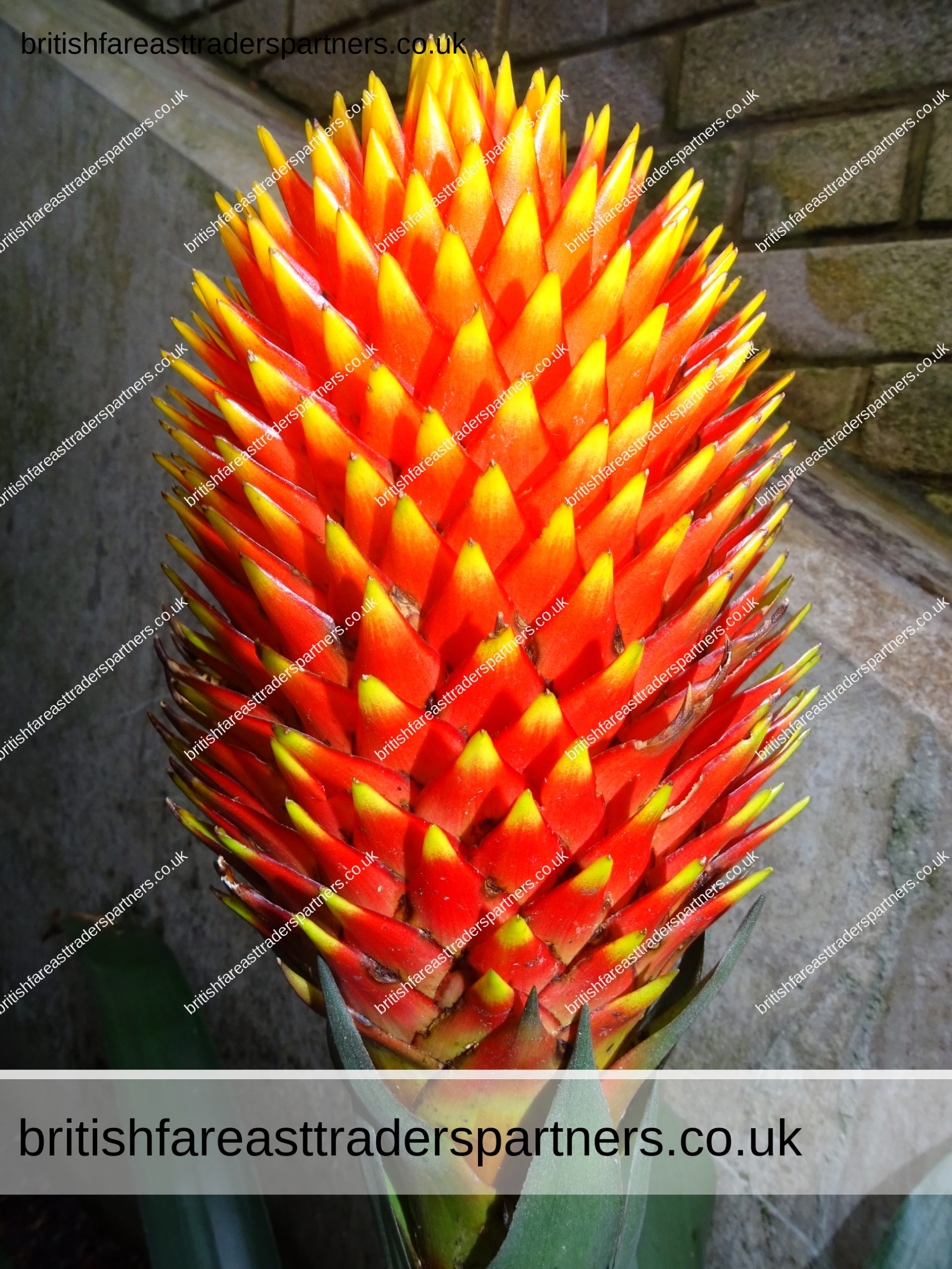
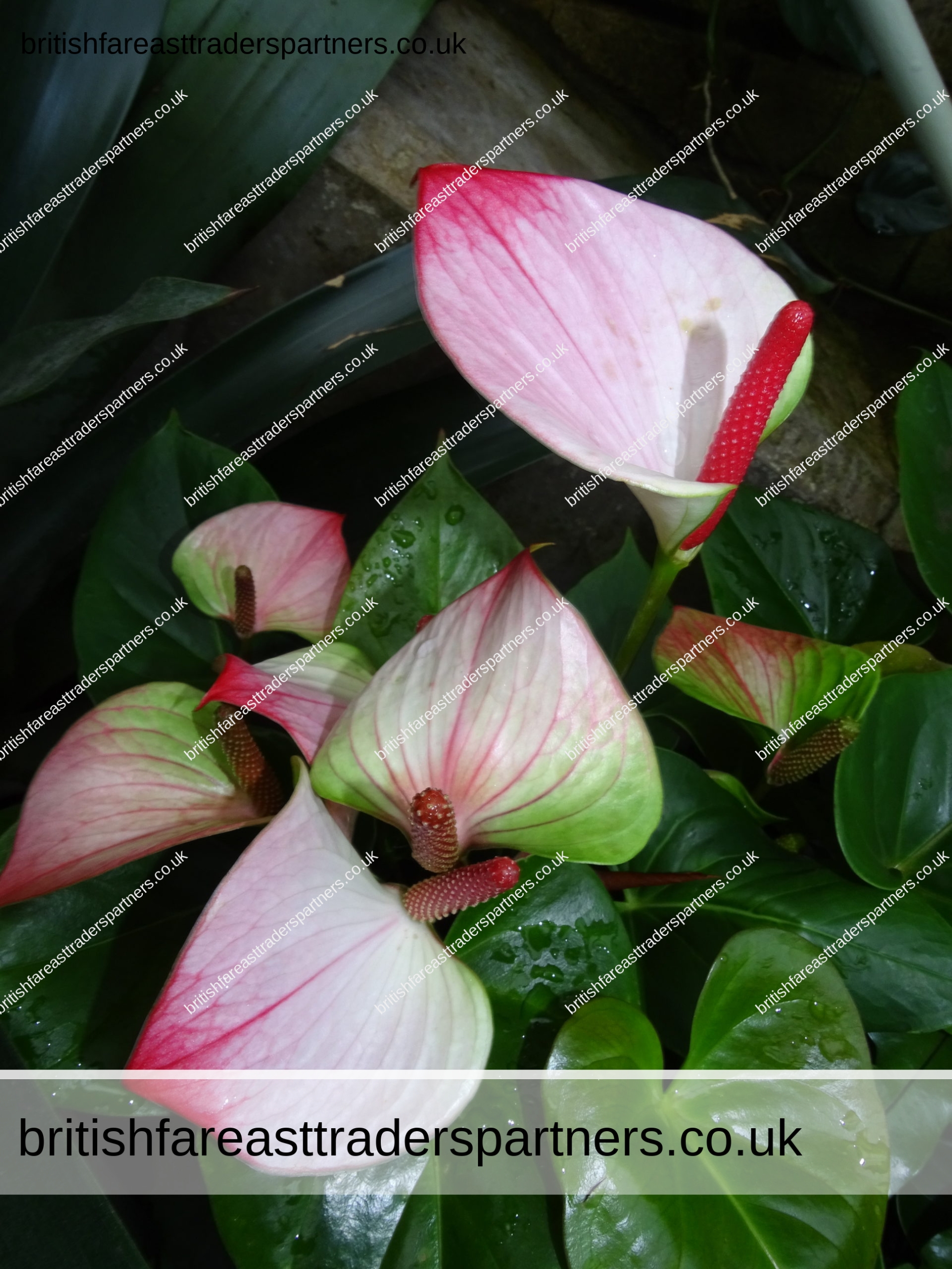
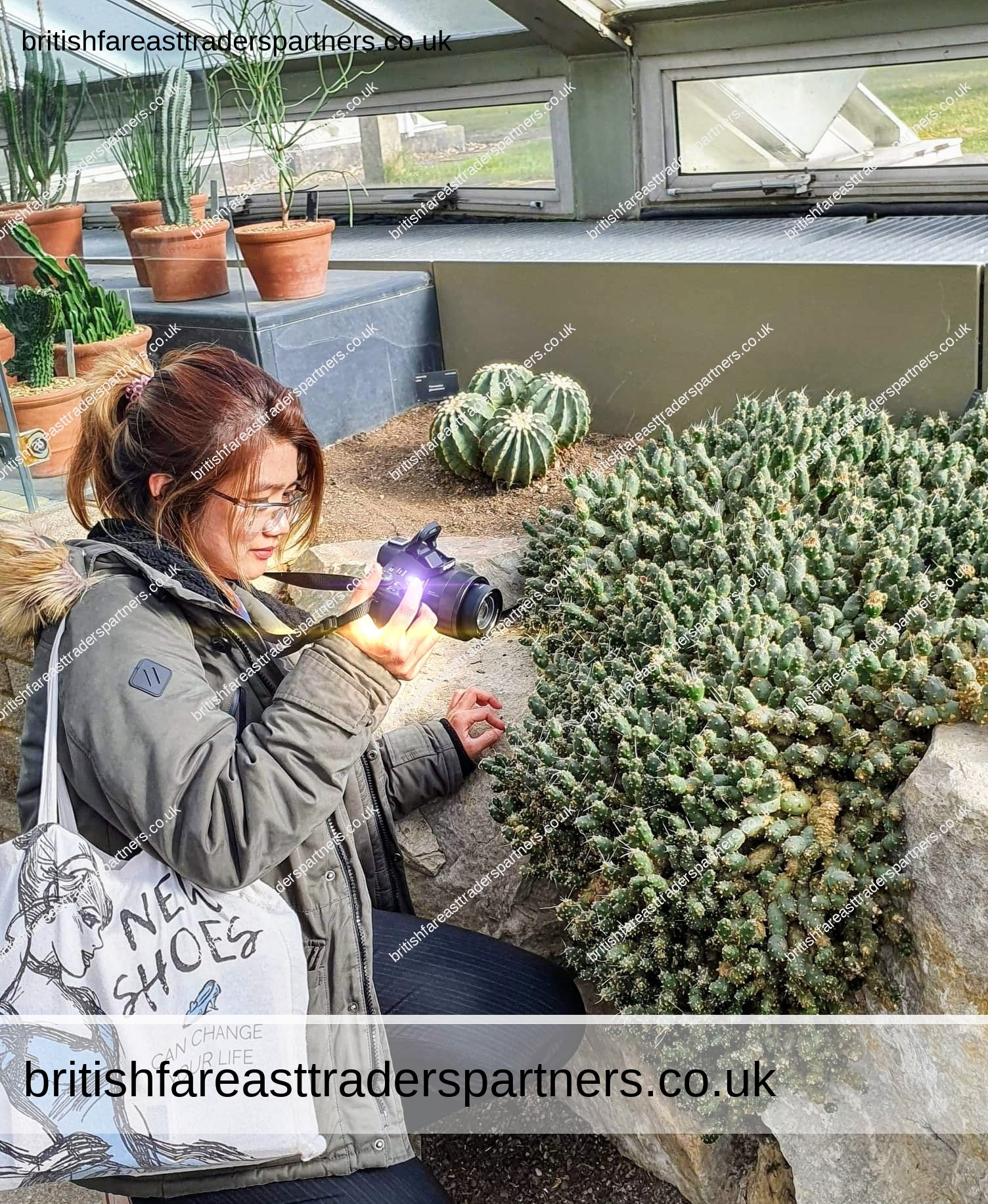
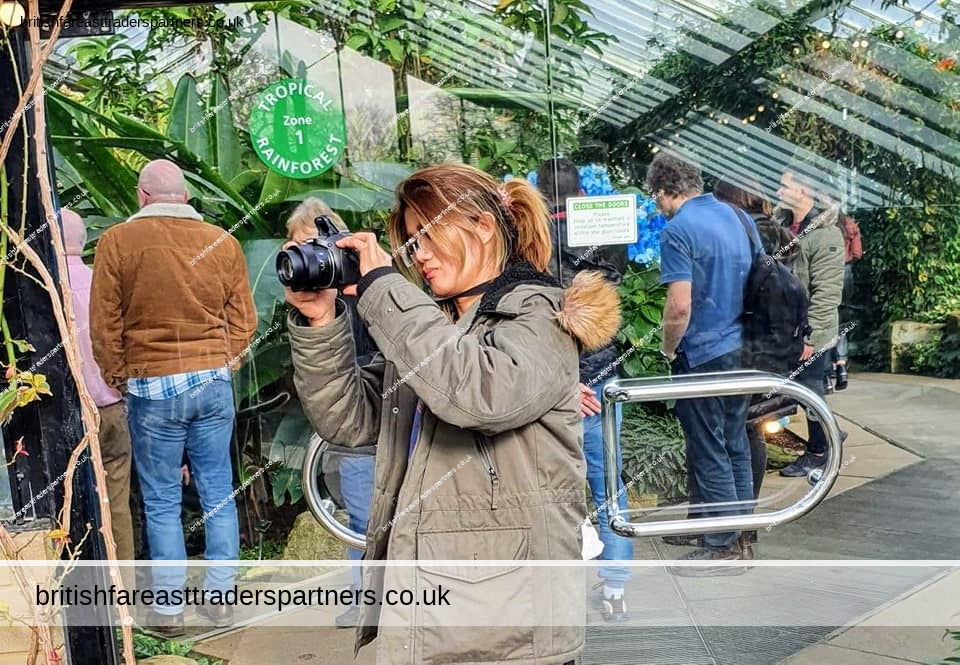
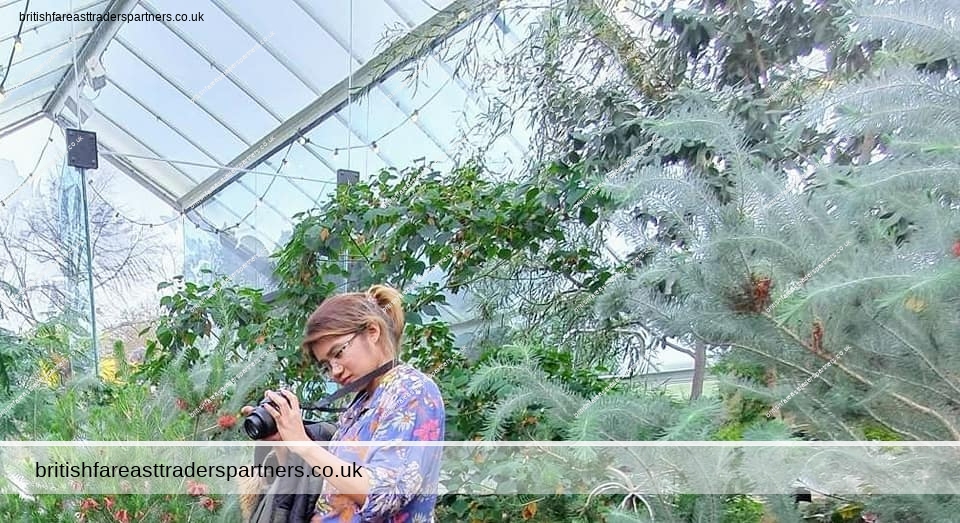
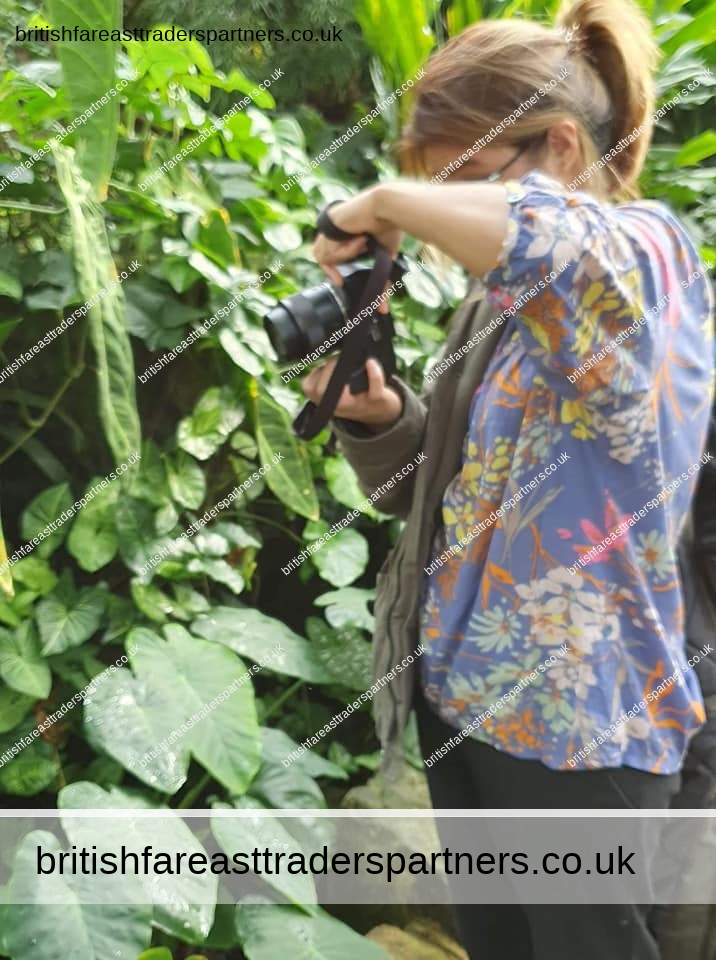
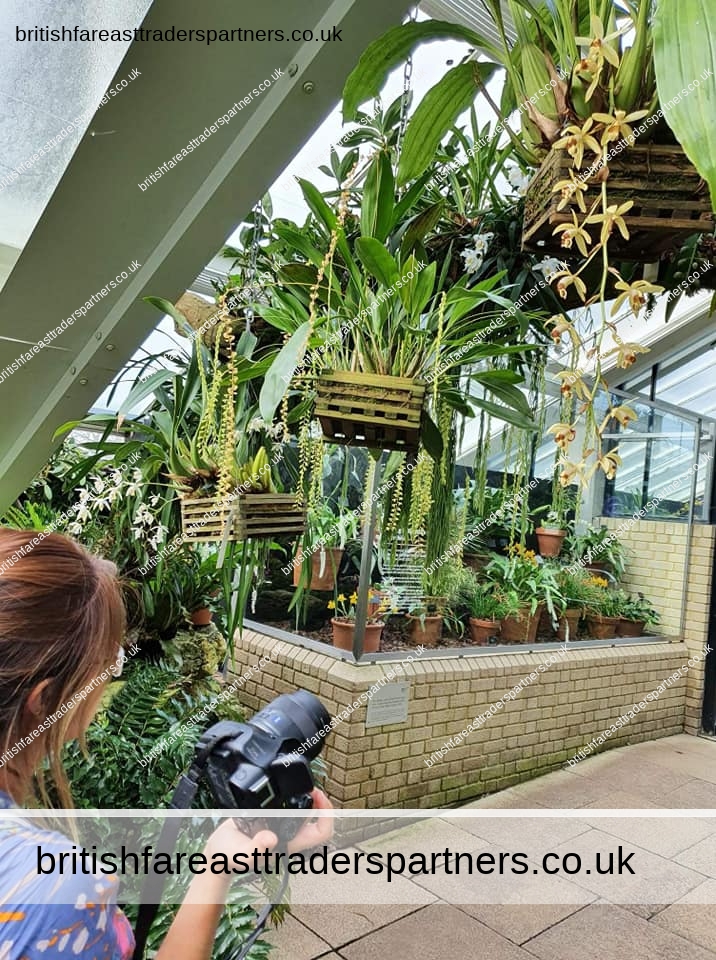
BRITISH & FAR EAST TRADERS LIFESTYLE & SHOPPING BLOG RELATED POSTS:
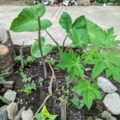 “Transform Your Backyard into a Tropical Oasis – Planting Ideas for Countryside Gardens”
“Transform Your Backyard into a Tropical Oasis – Planting Ideas for Countryside Gardens”
 JOIN US ON A BEAUTIFUL SUMMER DAY IN LONDON (ENGLAND, U.K) AS WE TAKE IN THE WONDERFUL SIGHTS ALONG THE THAMES RIVER ABOARD CITY CRUISES BY HORNBLOWER
JOIN US ON A BEAUTIFUL SUMMER DAY IN LONDON (ENGLAND, U.K) AS WE TAKE IN THE WONDERFUL SIGHTS ALONG THE THAMES RIVER ABOARD CITY CRUISES BY HORNBLOWER
 DAYS OUT IN UNITED KINGDOM: PLACES OF INTEREST in WEST SUSSEX, ENGLAND: A SERIES OF PHOTOGRAPHIC BLOG: ARUNDEL CASTLE GROUNDS & ARUNDEL CASTLE WATER GARDEN : A WORLD HERITAGE SITE : HERITAGE | ART | HISTORY | TOPOGRAPHY | TOURISM | TRAVEL | ARCHITECTURE | ARISTOCRACY | CULTURE
DAYS OUT IN UNITED KINGDOM: PLACES OF INTEREST in WEST SUSSEX, ENGLAND: A SERIES OF PHOTOGRAPHIC BLOG: ARUNDEL CASTLE GROUNDS & ARUNDEL CASTLE WATER GARDEN : A WORLD HERITAGE SITE : HERITAGE | ART | HISTORY | TOPOGRAPHY | TOURISM | TRAVEL | ARCHITECTURE | ARISTOCRACY | CULTURE
 RARE VINTAGE TATE GALLERY SHOP Red + Green LETTERING Envelope Paper Bag Collectable EPHEMERA
RARE VINTAGE TATE GALLERY SHOP Red + Green LETTERING Envelope Paper Bag Collectable EPHEMERA
 ANTIQUE RED & BLUE LABEL JOHANN ANTON FARINA ZUR STADT MAILAND No. 129 Eau De Cologne Invented 1695 PERFUME OLDEST & GENUINE Newspaper Advert
ANTIQUE RED & BLUE LABEL JOHANN ANTON FARINA ZUR STADT MAILAND No. 129 Eau De Cologne Invented 1695 PERFUME OLDEST & GENUINE Newspaper Advert
 A Lovely Selection of VINTAGE & ANTIQUES BIRTHDAY GREETINGS POSTCARD
A Lovely Selection of VINTAGE & ANTIQUES BIRTHDAY GREETINGS POSTCARD
 Discover Avon UK’s Spring 2023 Collection of Fun, Colorful, and Lovely Perfumes: Our Top Selection
Discover Avon UK’s Spring 2023 Collection of Fun, Colorful, and Lovely Perfumes: Our Top Selection
 AVON UK: CAMPAIGN 5 | MAY 2023 BROCHURE / CATALOGUE Flip- through
AVON UK: CAMPAIGN 5 | MAY 2023 BROCHURE / CATALOGUE Flip- through
 VINTAGE PRINCESS DIANA (THE LADY DIANA SPENCER) & PRINCE CHARLES in CUNARD CRUISES MAGAZINE HISTORY | MEMORABILIA | FASHION | ROYALTY | SOCIETY | PERSONALITIES COLLECTABLES
VINTAGE PRINCESS DIANA (THE LADY DIANA SPENCER) & PRINCE CHARLES in CUNARD CRUISES MAGAZINE HISTORY | MEMORABILIA | FASHION | ROYALTY | SOCIETY | PERSONALITIES COLLECTABLES
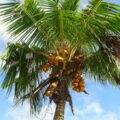 UNWIND WITH SOME TROPICAL INSPIRATIONS
UNWIND WITH SOME TROPICAL INSPIRATIONS
 BEAUTIFUL & RELAXING ENGLISH RIVER WALKS: HENLEY-ON-THAMES, OXFORDSHIRE, ENGLAND | RELAX | UNWIND | DAYS OUT IN ENGLAND | WALKS | WELLBEING | THAMES RIVER
BEAUTIFUL & RELAXING ENGLISH RIVER WALKS: HENLEY-ON-THAMES, OXFORDSHIRE, ENGLAND | RELAX | UNWIND | DAYS OUT IN ENGLAND | WALKS | WELLBEING | THAMES RIVER
 HOW TO HAVE A GREAT “CHRISTMAS BREAK” IN SOUTHAMPTON CITY, HAMPSHIRE, UNITED KINGDOM: SHOP & DINE IN WEST QUAY SHOPPING CENTRE, HARBOUR PARADE, SOUTHAMPTON | NIGHTLIFE | CHRISTMAS MARKET | HOLIDAYS | WINTER | FESTIVE | LIFESTYLE | SHOPPING | DINING
HOW TO HAVE A GREAT “CHRISTMAS BREAK” IN SOUTHAMPTON CITY, HAMPSHIRE, UNITED KINGDOM: SHOP & DINE IN WEST QUAY SHOPPING CENTRE, HARBOUR PARADE, SOUTHAMPTON | NIGHTLIFE | CHRISTMAS MARKET | HOLIDAYS | WINTER | FESTIVE | LIFESTYLE | SHOPPING | DINING
 Discover Sussex’s Idyllic Villages & Tranquil Churches in South Downs
Discover Sussex’s Idyllic Villages & Tranquil Churches in South Downs
 RELAX IN THE LAIDBACK ISLAND LIFESTYLE OF ISLE OF WIGHT UNITED KINGDOM
RELAX IN THE LAIDBACK ISLAND LIFESTYLE OF ISLE OF WIGHT UNITED KINGDOM
 A Twilight Journey Beside the Thames: Rediscovering London’s Ancient Pulse
A Twilight Journey Beside the Thames: Rediscovering London’s Ancient Pulse
 VINTAGE / ANTIQUE CHRISTMAS GREETINGS CARD “A MERRY CHRISTMAS GREETING” E.H DAVIES ARTWORK LADY & CHILDREN WAITING FOR A HORSE-DRAWN CARRIAGE SNOWY WINTER SCENE PRINTED IN GREAT BRITAIN BRITISH | COLLECTABLES | PAPER & EPHEMERA GREETINGS CARD | CHRISTMAS
VINTAGE / ANTIQUE CHRISTMAS GREETINGS CARD “A MERRY CHRISTMAS GREETING” E.H DAVIES ARTWORK LADY & CHILDREN WAITING FOR A HORSE-DRAWN CARRIAGE SNOWY WINTER SCENE PRINTED IN GREAT BRITAIN BRITISH | COLLECTABLES | PAPER & EPHEMERA GREETINGS CARD | CHRISTMAS
 VINTAGE 1932 EASTER GREETINGS Home Waterfront Pond Fowl Flowers RPPC Postcard
VINTAGE 1932 EASTER GREETINGS Home Waterfront Pond Fowl Flowers RPPC Postcard
 SOUTHEAST of ENGLAND among the TOP 5 MOST SUSTAINABLE REGIONS in the UK | SUSTAINABILITY | RENEWABLE ENERGY | GREEN ENERGY | ENGLAND | UNITED KINGDOM | ENVIRONMENT
SOUTHEAST of ENGLAND among the TOP 5 MOST SUSTAINABLE REGIONS in the UK | SUSTAINABILITY | RENEWABLE ENERGY | GREEN ENERGY | ENGLAND | UNITED KINGDOM | ENVIRONMENT
 VISITING THE 1066 BATTLE OF HASTINGS ABBEY & BATTLEFIELD, ENGLAND UK
VISITING THE 1066 BATTLE OF HASTINGS ABBEY & BATTLEFIELD, ENGLAND UK
 SEND POSITIVE VIBES with OUR new range of COLOURFUL, VIBRANT, and ARTISTIC GREETING CARDS designed in the UNITED KINGDOM by INSPIRING UK ARTISTS: FEATURING BRITISH ARTIST SUE GARDNER
SEND POSITIVE VIBES with OUR new range of COLOURFUL, VIBRANT, and ARTISTIC GREETING CARDS designed in the UNITED KINGDOM by INSPIRING UK ARTISTS: FEATURING BRITISH ARTIST SUE GARDNER
 COLLECTABLE CERAMIC NOVELTY MUG LONDON CERAMIC MUG WITH RED BUS HANDLE LONDON , ENGLAND , UNITED KINGDOM COLLECTABLES | KITCHEN & HOME | DINNERWARE & SERVEWARE | MUGS | GIFT SET CUTE | LONDON ICONS | SOUVENIR | NOVELTY ENGLAND | UNITED KINGDOM | HERITAGE | LIFESTYLE | TRAVEL
COLLECTABLE CERAMIC NOVELTY MUG LONDON CERAMIC MUG WITH RED BUS HANDLE LONDON , ENGLAND , UNITED KINGDOM COLLECTABLES | KITCHEN & HOME | DINNERWARE & SERVEWARE | MUGS | GIFT SET CUTE | LONDON ICONS | SOUVENIR | NOVELTY ENGLAND | UNITED KINGDOM | HERITAGE | LIFESTYLE | TRAVEL
 DISCOVER THE TIMELESS VILLAGE OF CLOVELLY IN BIDEFORD, NORTH DEVON, ENGLAND, UNITED KINGDOM
DISCOVER THE TIMELESS VILLAGE OF CLOVELLY IN BIDEFORD, NORTH DEVON, ENGLAND, UNITED KINGDOM
 LONDON BLOG: ROYAL BOTANIC KEW | DESERT ZONE | FESTIVAL OF THE VIBRANT ORCHIDS OF INDONESIA
LONDON BLOG: ROYAL BOTANIC KEW | DESERT ZONE | FESTIVAL OF THE VIBRANT ORCHIDS OF INDONESIA
 COLLECTABLE CERAMIC NOVELTY MUG LONDON CERAMIC MUG WITH GUARDSMAN HANDLE LONDON , ENGLAND , UNITED KINGDOM COLLECTABLES | KITCHEN & HOME | DINNERWARE & SERVEWARE | MUGS | GIFT SET CUTE | LONDON ICONS | SOUVENIR | NOVELTY ENGLAND | UNITED KINGDOM | HERITAGE | LIFESTYLE | TRAVEL
COLLECTABLE CERAMIC NOVELTY MUG LONDON CERAMIC MUG WITH GUARDSMAN HANDLE LONDON , ENGLAND , UNITED KINGDOM COLLECTABLES | KITCHEN & HOME | DINNERWARE & SERVEWARE | MUGS | GIFT SET CUTE | LONDON ICONS | SOUVENIR | NOVELTY ENGLAND | UNITED KINGDOM | HERITAGE | LIFESTYLE | TRAVEL
 COLLECTABLE CERAMIC NOVELTY MUG LONDON CERAMIC MUG WITH RED TELEPHONE BOX HANDLE LONDON , ENGLAND , UNITED KINGDOM COLLECTABLES | KITCHEN & HOME | DINNERWARE & SERVEWARE | MUGS | GIFT SET CUTE | LONDON ICONS | SOUVENIR | NOVELTY ENGLAND | UNITED KINGDOM | HERITAGE | LIFESTYLE | TRAVEL
COLLECTABLE CERAMIC NOVELTY MUG LONDON CERAMIC MUG WITH RED TELEPHONE BOX HANDLE LONDON , ENGLAND , UNITED KINGDOM COLLECTABLES | KITCHEN & HOME | DINNERWARE & SERVEWARE | MUGS | GIFT SET CUTE | LONDON ICONS | SOUVENIR | NOVELTY ENGLAND | UNITED KINGDOM | HERITAGE | LIFESTYLE | TRAVEL
 VINTAGE FAITHFUL FRIENDS CUTE Dog JACK RUSSELL TERRIER Print Mug & Saucer
VINTAGE FAITHFUL FRIENDS CUTE Dog JACK RUSSELL TERRIER Print Mug & Saucer
 DAYS OUT IN UNITED KINGDOM: PLACES OF INTEREST in WEST SUSSEX, ENGLAND: A SERIES OF PHOTOGRAPHIC BLOG: ARUNDEL CASTLE GARDENS : A WORLD HERITAGE SITE : HERITAGE | ART | HISTORY | TOPOGRAPHY | TOURISM | TRAVEL | ARCHITECTURE | ARISTOCRACY | CULTURE
DAYS OUT IN UNITED KINGDOM: PLACES OF INTEREST in WEST SUSSEX, ENGLAND: A SERIES OF PHOTOGRAPHIC BLOG: ARUNDEL CASTLE GARDENS : A WORLD HERITAGE SITE : HERITAGE | ART | HISTORY | TOPOGRAPHY | TOURISM | TRAVEL | ARCHITECTURE | ARISTOCRACY | CULTURE
 BRITISH & FAR EAST TRADERS & PARTNERS: COFFEE TIME
BRITISH & FAR EAST TRADERS & PARTNERS: COFFEE TIME
